Persicaria attenuata
Persicaria decipiens
Persicaria dichotoma
Persicaria elatior
Persicaria hydropiper
Persicaria orientalis
Persicaria praetermissa
Persicaria strigosa
Persicaria subsessilis
Persoonia katerae
Persoonia media
Persoonia oleoides
Persoonia sericea
Persoonia stradbrokensis
Persoonia tenuifolia
Persoonia virgata
Petalostigma pubescens
Petalostigma triloculare
Petermannia cirrosa
Petrophile canescens
Petrophile pulchella
Phaius australis
Phebalium nottii
Phebalium squamulosum
Phebalium woombye
Philotheca conduplicata
Philotheca difformis
Philotheca myoporoides
Philotheca papillata
Philotheca salsolifolia
Philotheca verrucosus
Philydrum lanuginosum
Phragmites australis
Phyllachne colensoi
Phyllanthus cuscutiflorus
Phyllanthus gunnii
Phyllanthus microcladus
Phyllanthus similis
Phyllanthus subcrenulatus
Phyllota phylicoides
Pilidiostigma glabrum
Pilidiostigma rhytispermum
Pimelea curvifolia
Pimelea glauca
Pimelea latifolia
Pimelea ligustrina
Pimelea linifolia
Pimelea neo anglica
Piper hederaceum

Clarence River Molle Rocks NSW
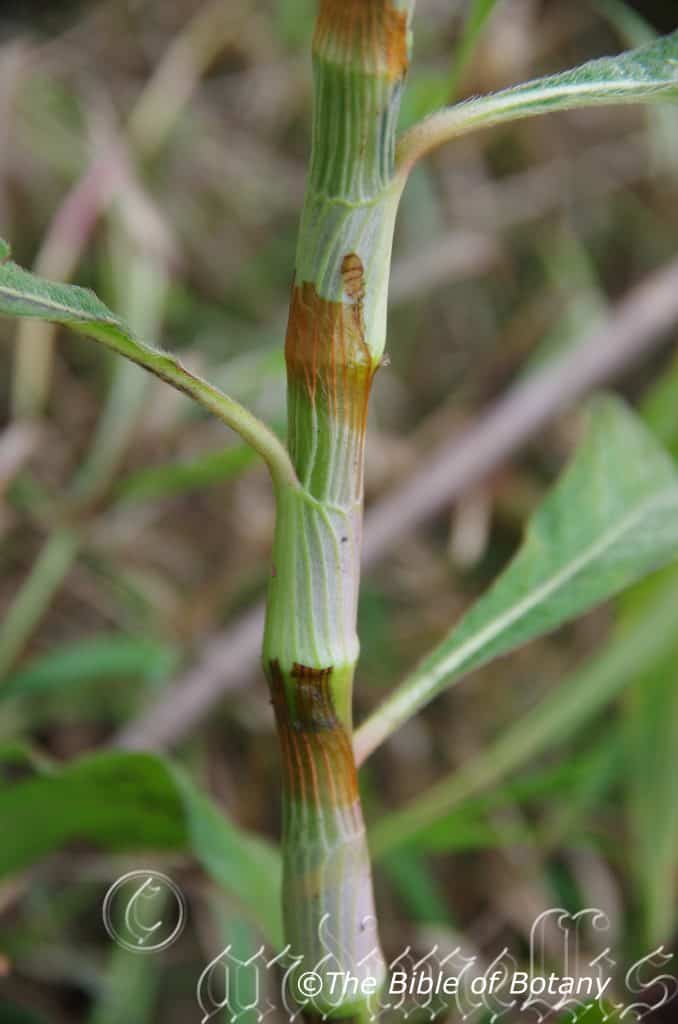
Clarence River Molle Rocks NSW
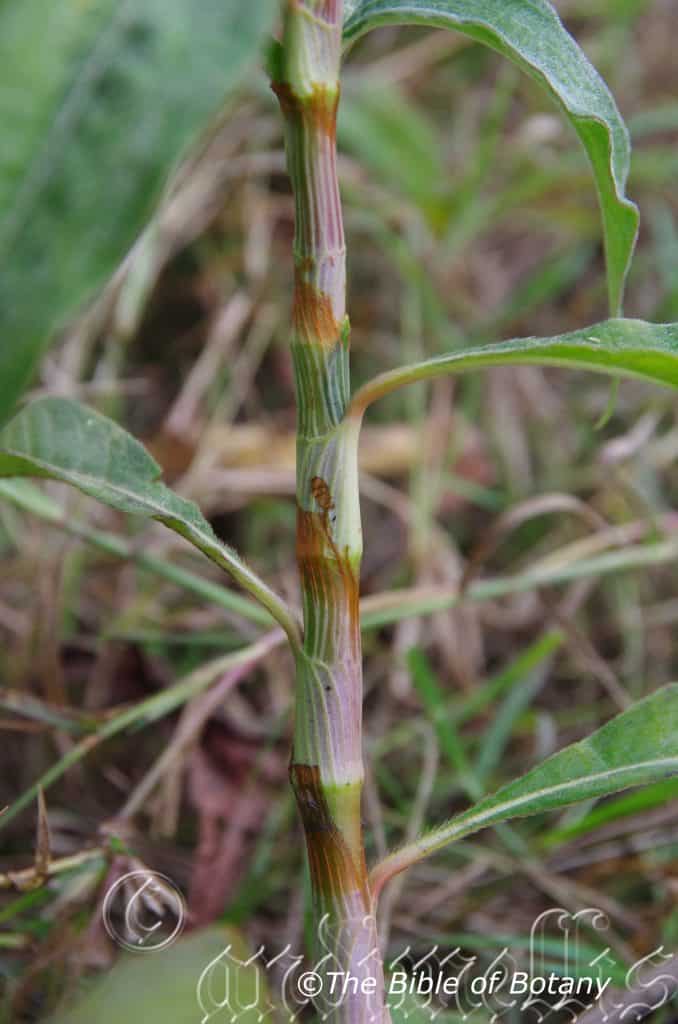
Clarence River Molle Rocks NSW
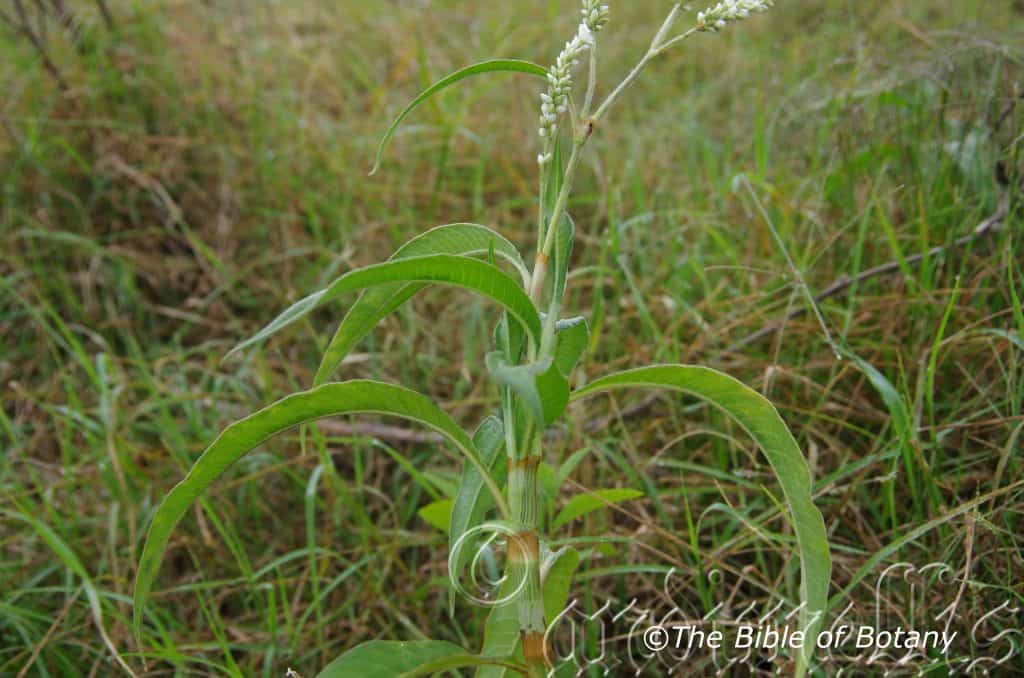
Clarence River Molle Rocks NSW
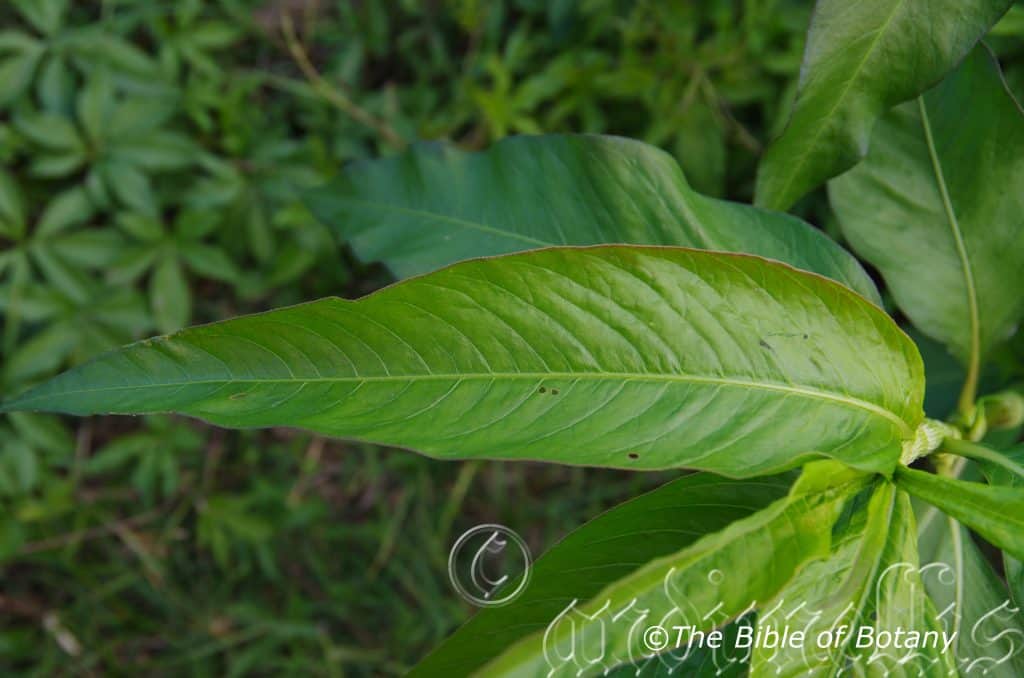
Clarence River Molle Rocks NSW

Clarence River Molle Rocks NSW
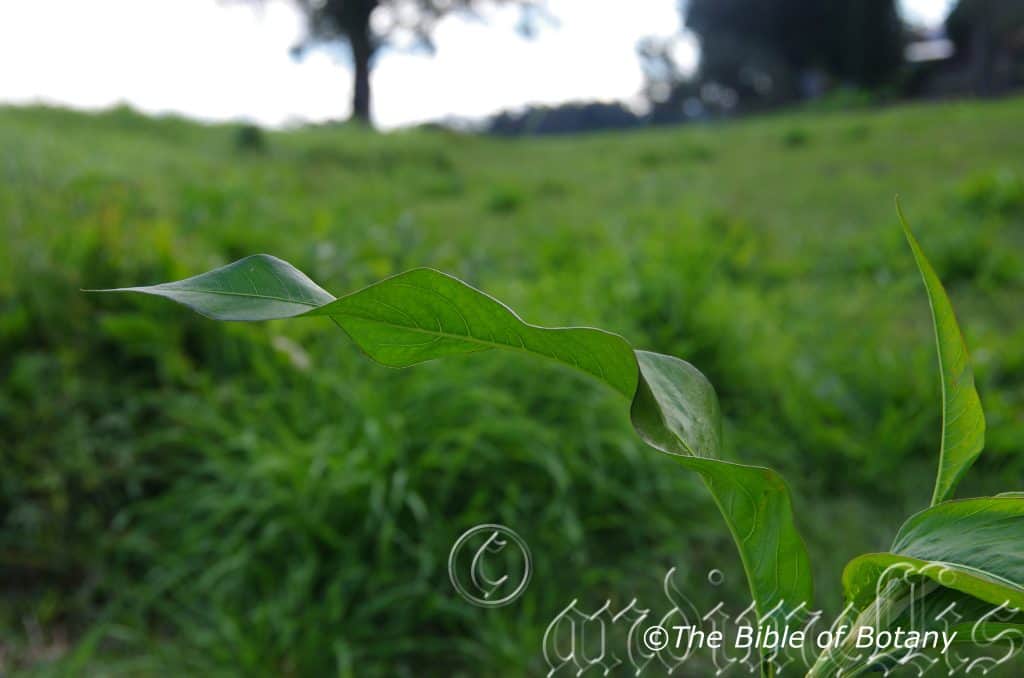
Clarence River Molle Rocks NSW
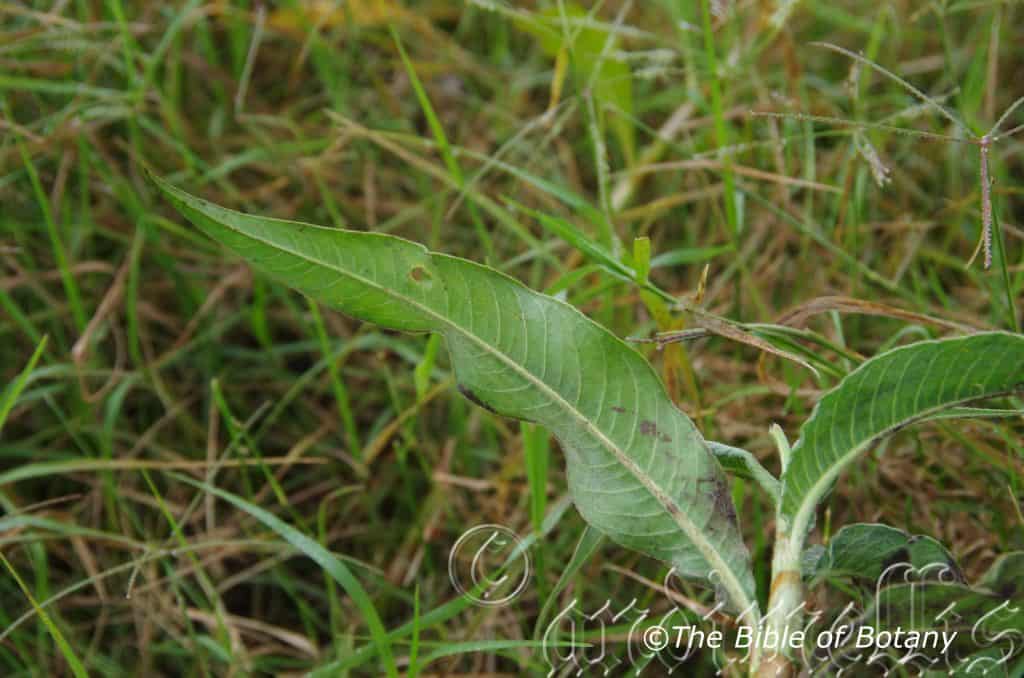
Clarence River Molle Rocks NSW
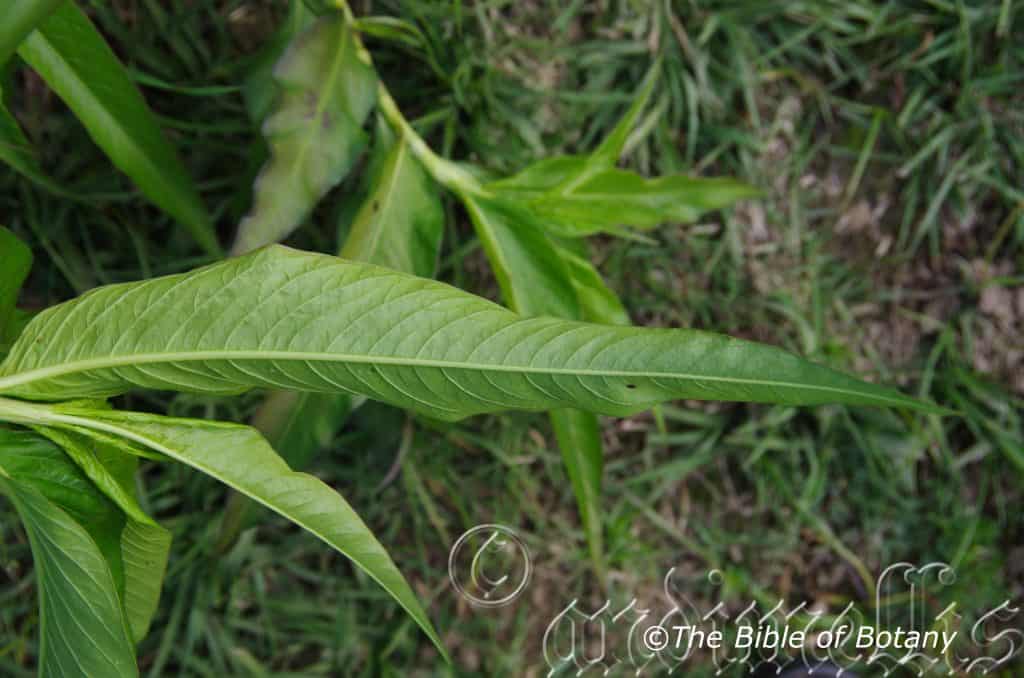
Clarence River Molle Rocks NSW

Clarence River Molle Rocks NSW
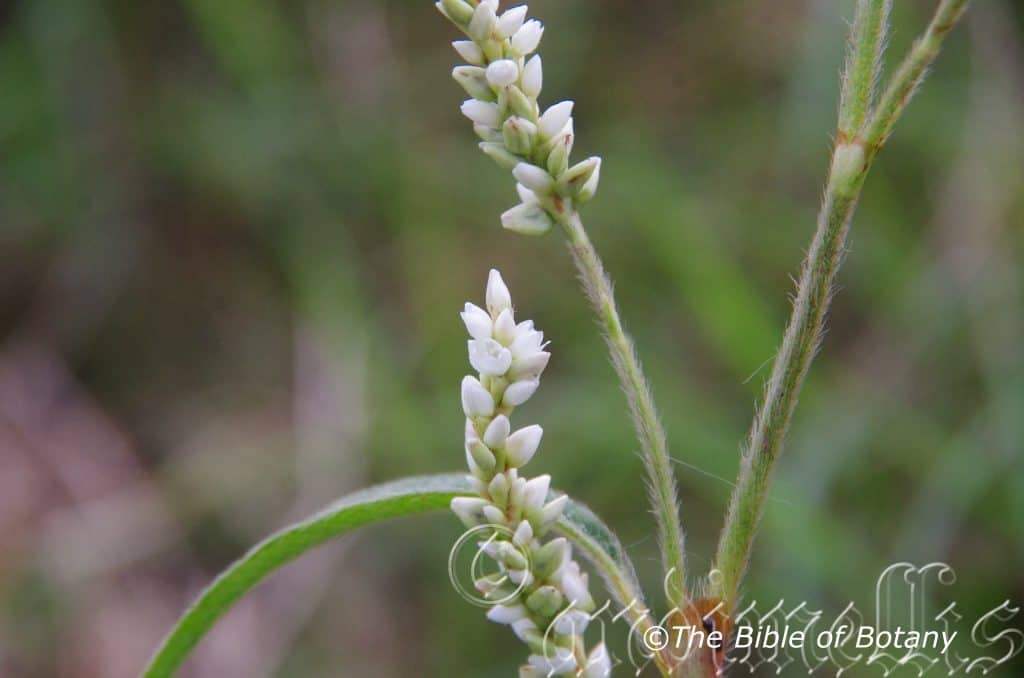
Clarence River Molle Rocks NSW

Clarence River Molle Rocks NSW
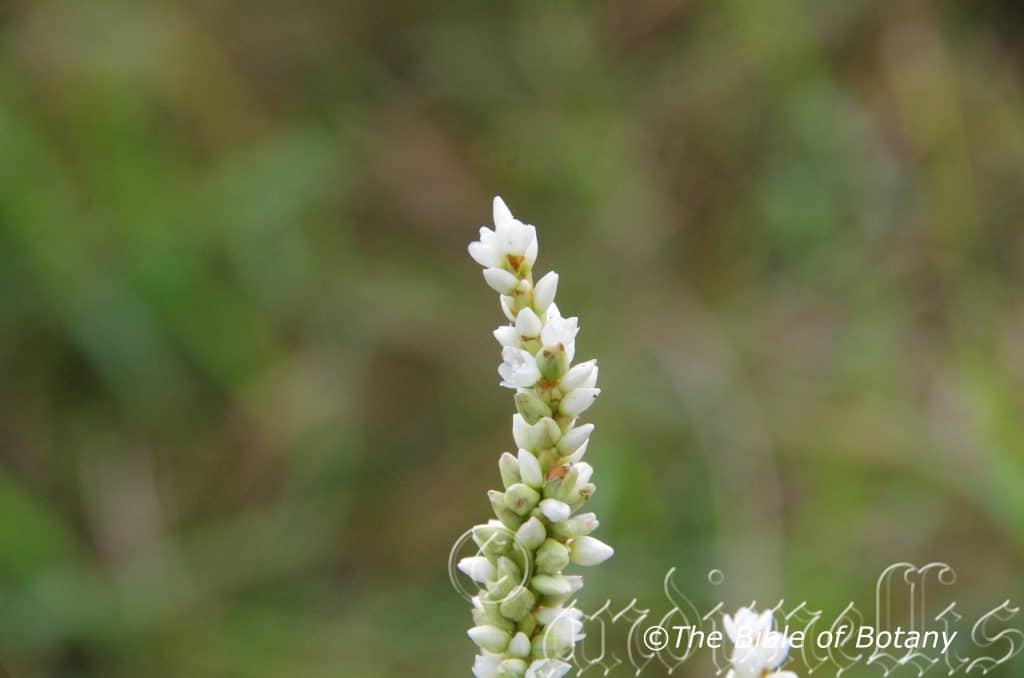
Clarence River Molle Rocks NSW
Persicaria attenuata
Classification:
Unranked: Eudicots
Order: Caryophyllales
Family: Polygonaceae
Subfamily: Polygonoideae
Genus: From Persicaria, which is Ancient Greek for the peach tree. It refers to leaves, which are similar to those of the wild peach trees of Asia Minor.
Specie: From Attenu?ta, which is Latin for thin, slender or weak looking. It refers to phyllodes, which are slender and fine.
Sub specie:
Common Name: White Knott Weed, Smart Weed or Water Pepper.
In the Gumbaynggirr Aboriginal language it is known as Bambil Bambil.
Distribution:
Persicaria attenuata is found from the Kimberley Coast in north Western Australian to Nhulunbuy in north eastern Northern Territory then along the coastal rivers in the Gulf of Carpentaria and along the Cape York Peninsular.
In the east it is found south from the Cape York Peninsular to the Hunter River in central New South Wales. It is mainly found on the inland rivers on the Western Plains and the Western Slopes with several populations on the eastern side of the Great Dividing Range.
https://avh.ala.org.au/occurrences/search?taxa=Persicaria+attenuata#tab_mapView
Habitat Aspect Climate:
Persicaria attenuata prefers dappled shade to full sun. It grows on the edges of permanent, slow, flowing water in creeks and streams, drainage channels, adjacent to and in coastal swamps, on alluvial flats or on the edge of billabongs and dams. The altitude ranges from 10 meters ASL to 700 meters ASL.
The temperatures range from minus 2 degrees in July to 36 degrees in January.
The rainfall ranges from lows of 250mm to 2500mm average per annum.
Soil requirements:
Persicaria attenuata prefers sandy loams to light fatty clays with a high proportion of leaf litter. The soils are usually derived from alluvial deposits. The soils pH ranges from 5.5pH to 7pH. It tolerates water logged soils and high water tables. Non saline soils to moderately saline soils are tolerated.
Height & Spread:
Wild Plants: 0.6m to 1m by very large areas.
Characteristics:
Persicaria attenuata grows as an erect to prostrate perennial herb with slender grass-green to purplish stems that are glabrous or sparsely covered in long white densely hirsute hairs.
The alternate narrow ovate straight to falcate leaves of Periscaria attenuata measure 80mm to 200mm in length by 15mm to 50mm in width. The base is cuneate oblique while the apex is tapering. The concolourous laminas are deep grass-green and sparsely to densely covered in course, white, antrorse, hirtellous hairs on the upper lamina while the lower lamina is also covered in glands hidden below the hairs. The leaf margins are finely toothed which curve towards the apex. The margins curve upwards from the mid vein. The mid vein is prominent on the lower lamina and is visible on the upper lamina. The petioles measure 10mm to 40mm in length and is clasping. The ochre is sparsely covered in white ciliate hairs which measure 0.5mm to 3mm in length.
The inflorescences of Persicaria attenuata are born on long spikes from the leaf axils. The elongated, cylindrical spikes measure 50mm to 110mm in length by 6mm to 10mm in diameter. The perianth is white or pale green progressively turning white as it approaches the lobes tubes measure 2.8mm to 3.8mm in length by 1.4mm to 1.9mm in diameter near the lobes. The 4 oblong lobes are white and measure 1.4mm to 2mm in length.
The 7 stamens are alternating with 7 glands at the base of the perianth. The white filaments and anthers measure 1.4mm to 1.8mm in length. Periscaria attenuata flowers from September to December.
Persicaria attenuata fruits are lenticular achenes. The black achenes measure 2mm to 2.5mm in length by 2mm to 2.4mm in diameter.
Wildlife:
Persicaria attenuata’s is eaten by kangaroos but is not a primary food to source.
Cultivation:
Persicaria attenuata is a useful herb for stock and can be used for an alternative food source in hard times. The leaves and stems are rather bland. It needs a lot more scientific work as some studies from Africa state that it can lead to heart arrest if consumed in large quantities. In cultivation they will grow from 0.5 meters to 1 meter in height by several meters in diameter very quickly which makes them ideal for restoration work along wet and damp creek banks and around dams.
They grow exceptionally well on lighter soils When deep leaf litter keeps the soil cool and moisture at an even level. If these requirements are met it can cope with temperatures as low as minus 2 degrees and up to 33 degrees. It is not drought resistant.
Add to the above, if it is given an adequate water supply and native fertilizers on a regular basis the plants will respond very quickly smothering noxious weeds.
Propagation:
Seeds: Seeds of Persicaria attenuate can be moved easily from the plants as they dry. Once Periscaria attenuata has finished flowering and the fruits have swollen cut the heads off and place them in a calico bag.
Sow freshly collected seeds directly into a seed raising mix, keeping them wet.
When the seedlings are 30mm to 40mm tall, prick them out and plant them into 50mm native tubes using a good organic mix.
Fertilize using Seaweed, fish emulsion or organic chicken pellets soaked in water and apply the liquid on an alternate basis. Fertilize every two months.
As the seedlings roots ach the bottom of the tubes plant them out into their permanent position. Do not delay as the plants have some set back once they start to lose their vigour.
Seeds can be broad cast directly onto the ground immediately after or during rain/wet periods.
Fertilize using seaweed, fish emulsion or organic chicken pellets soaked in water on an alternate basis. Fertilize every two months until the plants are established then twice annually in early September and March to maintain better health, vitality and flowering.
Be careful with fertilizing the plants if it is growing in water as fertilizers will pollute the water very quickly causing algae blooms.
Further Comments from Readers:
“Hi reader, it seems you use The Bible of Botany a lot. That’s great as we have great pleasure in bringing it to you! It’s a little awkward for us to ask, but our first aim is to purchase land approximately 1,600 hectares to link several parcels of N.P. into one at The Pinnacles NSW Australia, but we need your help. We’re not salespeople. We’re amateur botanists who have dedicated over 30 years to saving the environment in a practical way. We depend on donations to reach our goal. If you donate just $5, the price of your coffee this Sunday, We can help to keep the planet alive in a real way and continue to bring you regular updates and features on Australian plants all in one Botanical Bible. Any support is greatly appreciated. Thank you.”
In the spirit of reconciliation we acknowledge the Bundjalung, Gumbaynggirr and Yaegl and all aboriginal nations throughout Australia and their connections to land, sea and community. We pay our respect to their Elders past, present and future for the pleasures we have gained.
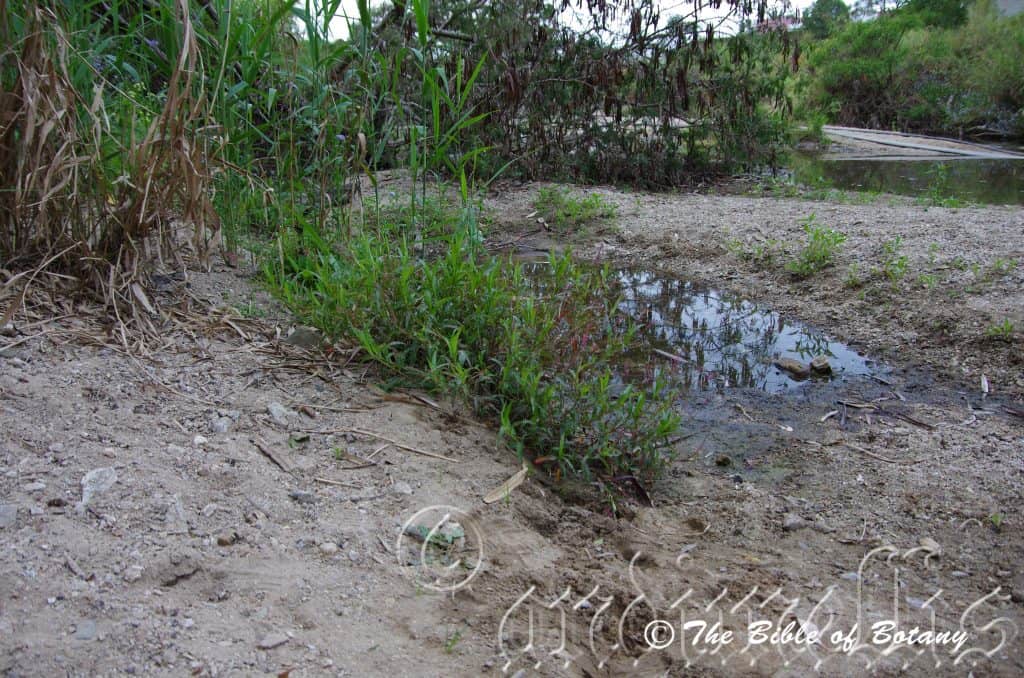
Kedron Brook Qld.

Kedron Brook Qld.
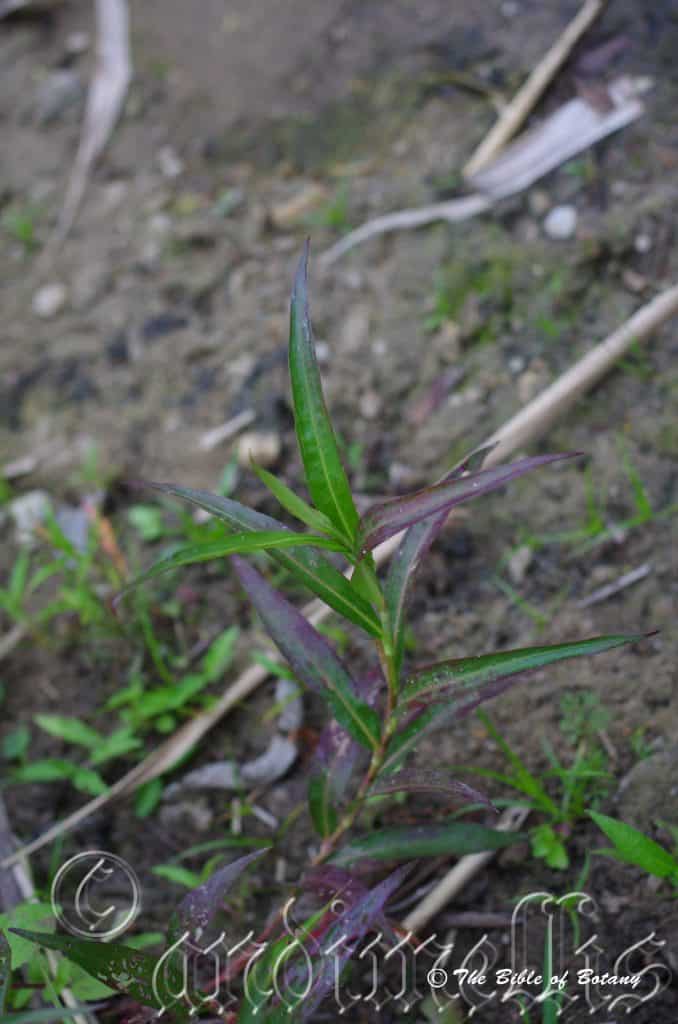
Kedron Brook Qld.
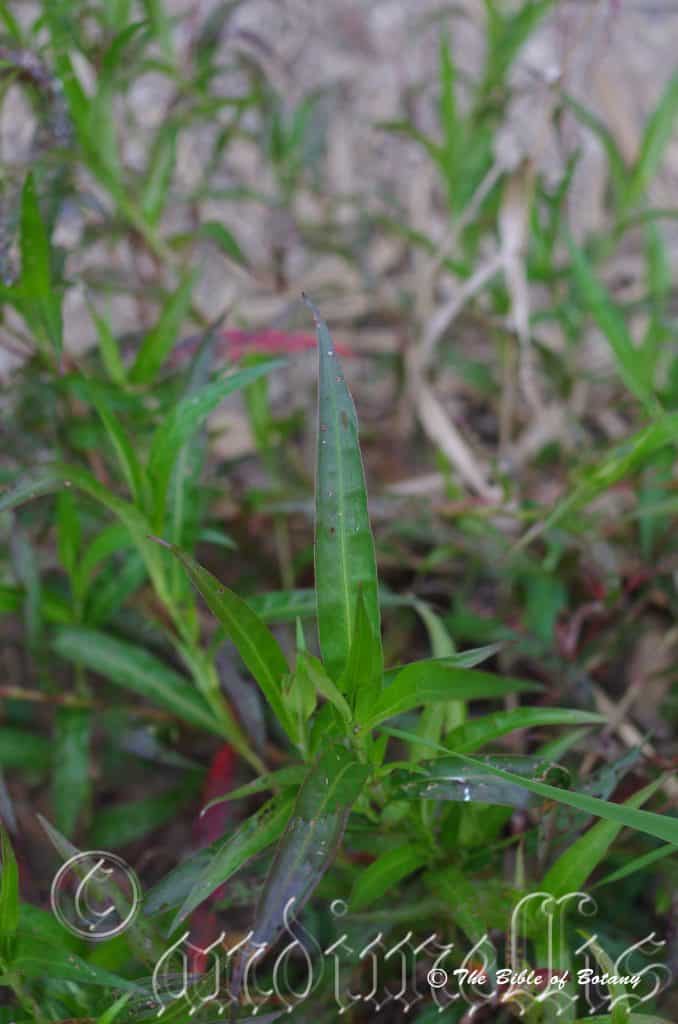
Kedron Brook Qld.

Clarence River Grafton NSW
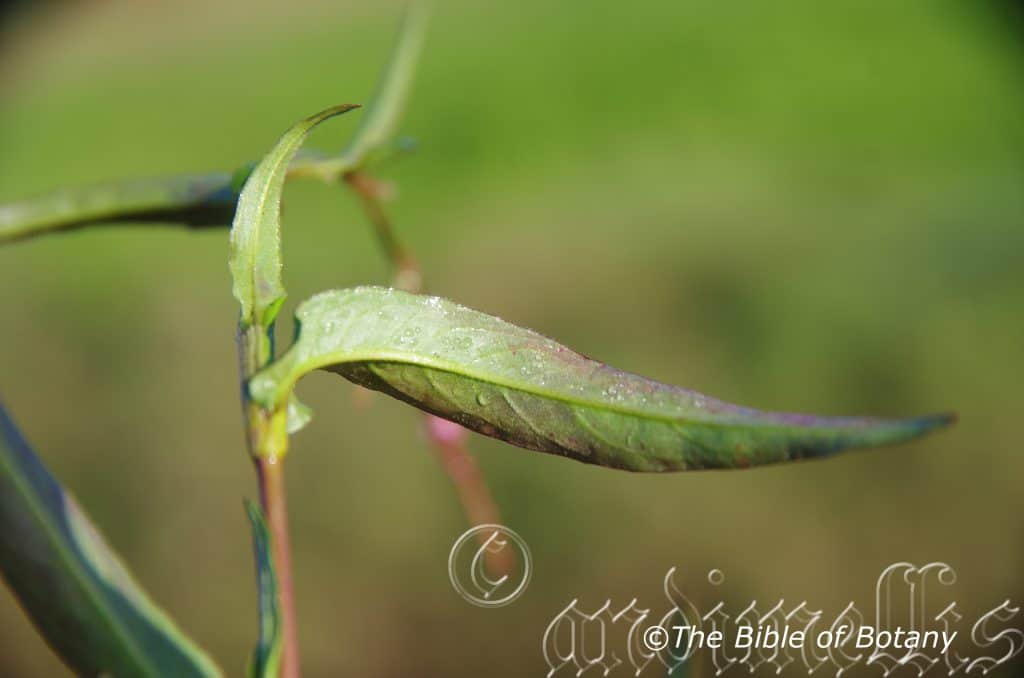
Clarence River Grafton NSW
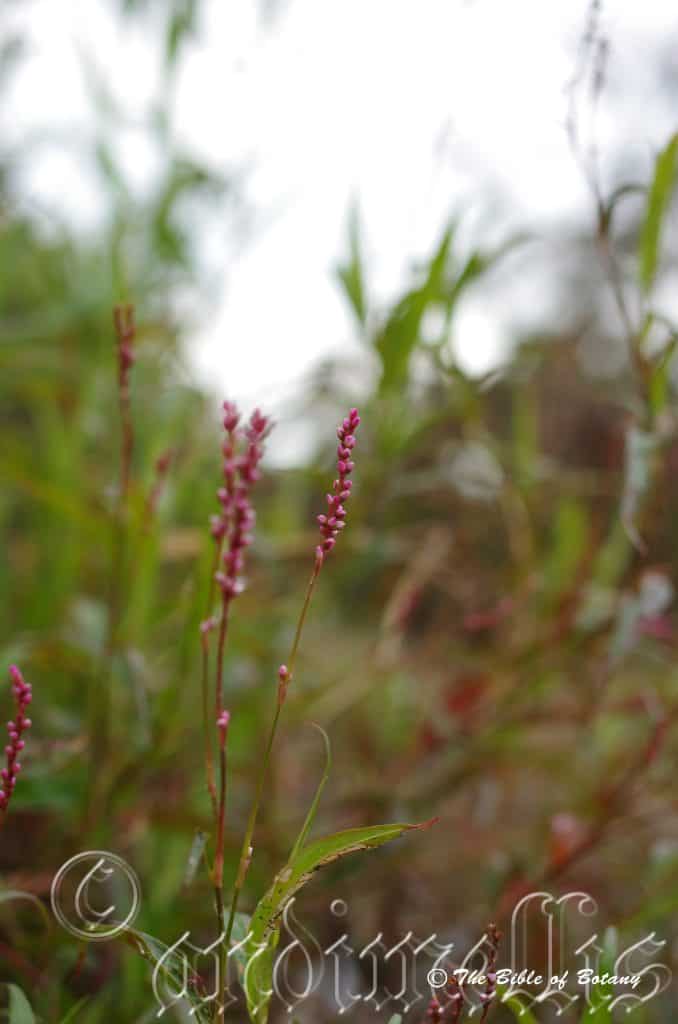
Kedron Brook Qld.
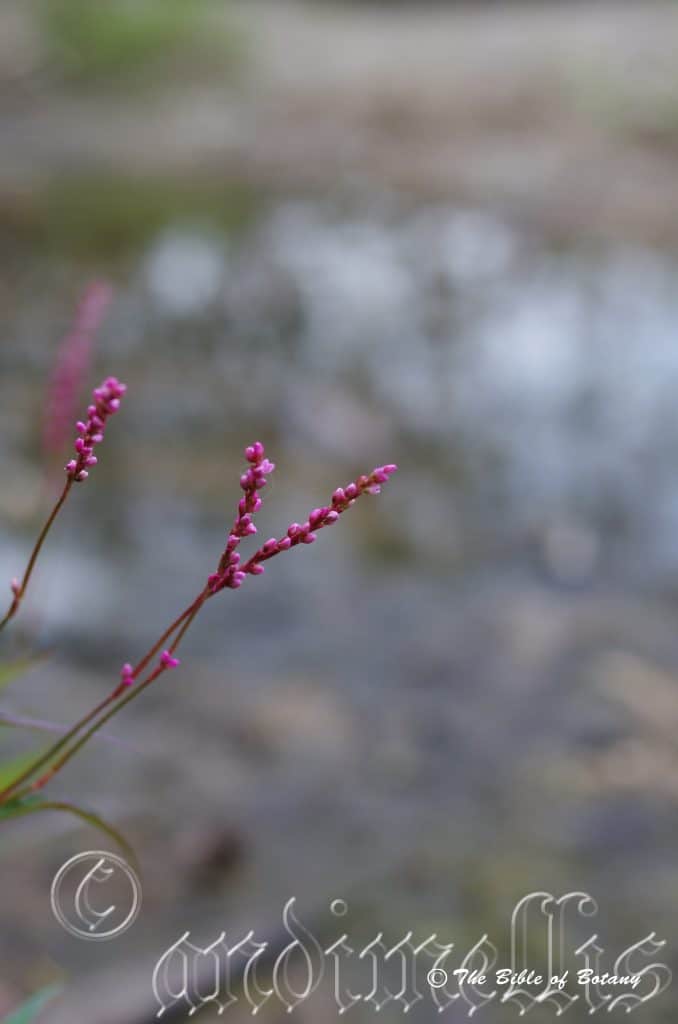
Kedron Brook Qld.
Persicaria decipiens
Classification:
Unranked: Eudicots
Order: Caryophyllales
Family: Polygonaceae
Subfamily: Polygonoideae
Genus: From Persicaria, which is Ancient Greek for the peach tree. It refers to leaves, which are similar to those of the wild peach trees of Asia Minor.
Specie: From Decipiens, which is Latin for to deceive, deceitful or false. It refers to plants, which appear to have a structure or organ of another plant so that at times it resembles or looks like another species causing a lot of confusion.
Sub specie:
Common Name: Slender Knot Weed or Smart Weed.
In the Gumbaynggirr Aboriginal language it is known as Bambil Bambil.
Distribution:
Persicaria decipiens is found south cairns in far north Queensland to the Narracoorte Coastal Plains in south eastern South Australia.
There is an outlying population along the Murray River from the Victorian border across to Adelaide and south to Cape Jervis.
It is found in north eastern Tasmania from Wynyard to Devonport heading in a south easterly direction to Saint Mary’s and south to Bicheno.
It is found south from the Geraldton Coast to Port Augusta then east to Albany along the western Australian south.
https://avh.ala.org.au/occurrences/search?taxa=Persicaria+decipiens#tab_mapView
Habitat Aspect Climate:
Persicaria decipiens prefers full sun to light dappled shade. It grows on the edges of permanent, slow, flowing water in creeks and streams, drainage channels, adjacent to and in coastal swamps, on alluvial flats, on the edge of billabongs or dams. It is found in open sclerophyll forests woodland mallee country and open woodlands. The altitude ranges from 10 meters ASL to 700 meters ASL.
The temperatures range from minus 2 degrees in July to 40 degrees in January.
The rainfall ranges from lows of 250mm to 3000mm average per annum.
Soil requirements:
Persicaria decipiens prefers coarse sands, sandy loams to medium clays with a high proportion of leaf litter. The soils are usuallyderived from alluvial deposits or accumulated beach sands. The soils pH ranges from 5pH to 7pH. It tolerates water logged soils. Non saline soils to moderately saline soils are tolerated.
Height & Spread:
Wild Plants: 0.2m to 1m by very large areas.
Characteristics:
Persicaria decipiens grows as an erect or procumbent perennial herb. The stems a thin grass-green to red and glabrous or sparsely covered in long white covered in white puberulent hairs.
The alternate, narrow elliptical to lanceolate leaves of Periscaria decipiens, measure 50mm to 120mm in length by 5mm to 13mm in width. The base is cuneate while the apex is tapering. The discolourous lamina is grass-green, glabrous, often with a pale purplish to purplish-green splotch in the middle of the upper lamina while the lower lamina is sparsely covered in sessile glands on the lower lamina. The leaf margins are shallowly sinuate and curve slightly upwards from the mid vein. The margins and main veins are covered in puberulent hairs. The mid vein is prominent on the lower lamina and is visible on the upper lamina. The petioles measure 0mm to 7mm in length and is clasping. The ochre is covered in white ciliate hairs which measure 2mm to 10mm in length.
The inflorescences of Persicaria decipiens are born on long spikes from the leaf axils. The elongated, cylindrical spikes are first erect the become lax towards the apexes and measure 20mm to 65mm in length by 3mm to 4.5mm in diameter. The perianth is pale pink to pink and measure 1.7mm to 2.6mm in length. The 5 pink oblong lobes measure 3mm to 4mm in length.
The 7 stamens are alternating with 7 glands at the base of the perianth. The pale pink, translucent filaments and anthers measure 2.8mm to 3.4mm in length. Periscaria decipiens flowers from February to June and November to December.
The fruits are lenticular or trigonous achenes. The green achenes turn deep brown to black when ripe. The achenes measure 1.5mm to 2mm in length by 1.4mm to 1.6mm in diameter.
Wildlife:
Persicaria decipiens’s is eaten by the Pretty Face Wallaby (Macropus parryi) and the Swamp Wallaby (Wallabia bicolor) in times of drought.
Cultivation:
Persicaria decipiens is a useful herb for stock and can be used for an alternative food source in hard times. The leaves and stems are rather bland. It needs a lot more scientific work as some studies from Africa state that it can lead to heart arrest if consumed in large quantities. In cultivation they will grow from 0.2 meters to 0.8 meter in height by several meters in diameter very quickly which makes them ideal for restoration work along wet and damp creek banks and around dams.
It grows exceptionally well on lighter soils When deep leaf litter keeps the soil cool and moisture at an even level. If these requirements are met it can cope with temperatures as low as minus 2 degrees and up to 33 degrees.
Add to the above, if it is given an adequate water supply and native fertilizers on a regular basis the plants will respond very quickly smothering low growing noxious weeds.
Propagation:
Seeds: Seeds of Persicaria decipiens can be moved easily from the plants as they dry. Once Perscaria decipiens has finished flowering and the fruits have swollen cut the heads off and place them in a calico bag.
Sow freshly collected seeds directly into a seed raising mix, keeping them wet. When the seedlings are 30mm to 40mm tall, prick them out and plant them into 50mm native tubes using a good organic mix.
Fertilize using Seaweed, fish emulsion or organic chicken pellets soaked in water and apply the liquid on an alternate basis. Fertilize every two months.
As the seedlings roots ach the bottom of the tubes plant them out into their permanent position. Do not delay as the plants have some set back once they start to lose their vigour.
Seeds can be broad cast directly onto the ground immediately after or during rain/wet periods.
Be careful with fertilizing the plants if it is growing in water as fertilizers will pollute the water very quickly causing algae blooms.
Fertilize using seaweed, fish emulsion or organic chicken pellets soaked in water on an alternate basis. Fertilize every two months until the plants are established then twice annually in early September and March to maintain better health, vitality and flowering.
Further Comments from Readers:
“Hi reader, it seems you use The Bible of Botany a lot. That’s great as we have great pleasure in bringing it to you! It’s a little awkward for us to ask, but our first aim is to purchase land approximately 1,600 hectares to link several parcels of N.P. into one at The Pinnacles NSW Australia, but we need your help. We’re not salespeople. We’re amateur botanists who have dedicated over 30 years to saving the environment in a practical way. We depend on donations to reach our goal. If you donate just $5, the price of your coffee this Sunday, We can help to keep the planet alive in a real way and continue to bring you regular updates and features on Australian plants all in one Botanical Bible. Any support is greatly appreciated. Thank you.”
In the spirit of reconciliation we acknowledge the Bundjalung, Gumbaynggirr and Yaegl and all aboriginal nations throughout Australia and their connections to land, sea and community. We pay our respect to their Elders past, present and future for the pleasures we have gained.
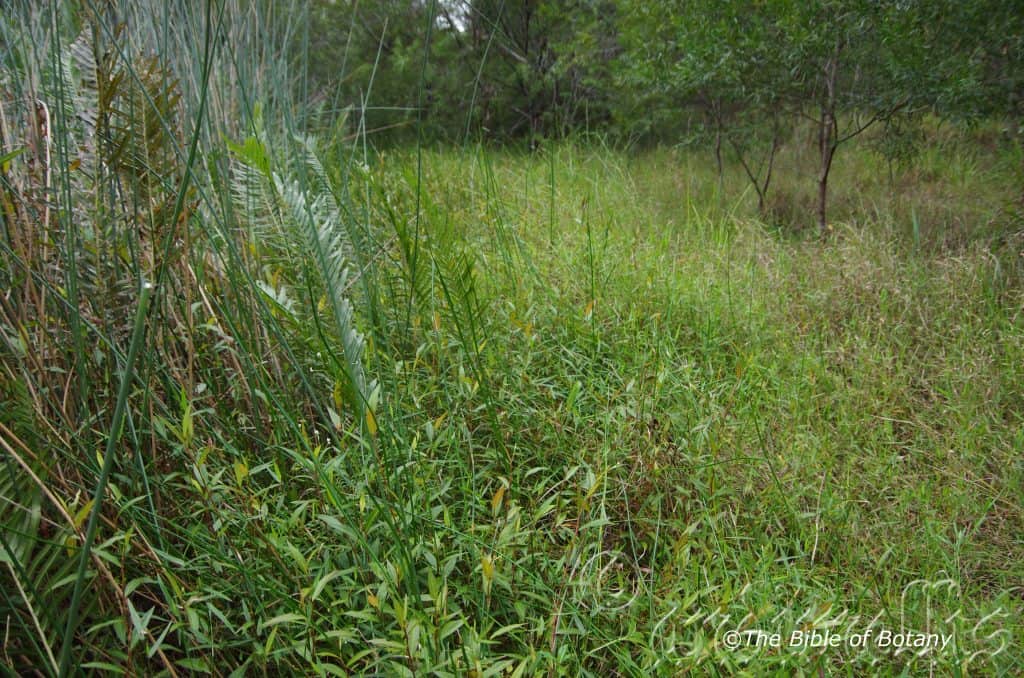
Coldstream River Tucabia NSW
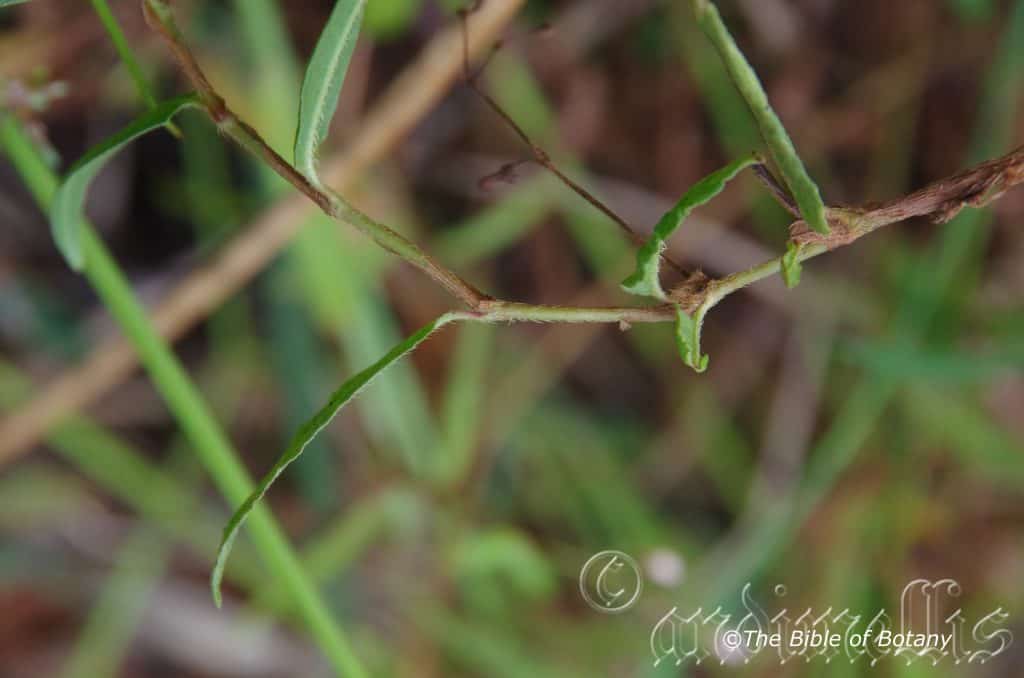
Coldstream River Tucabia NSW

Warragai Creek Corymbia State Conservation Area NSW
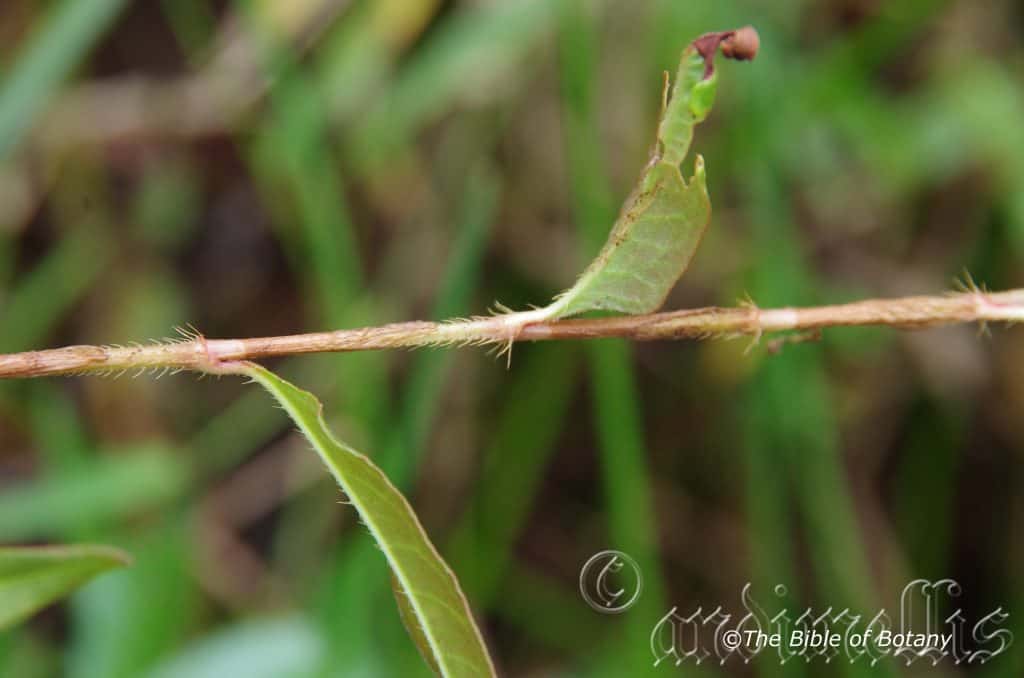
Coldstream River Tucabia NSW
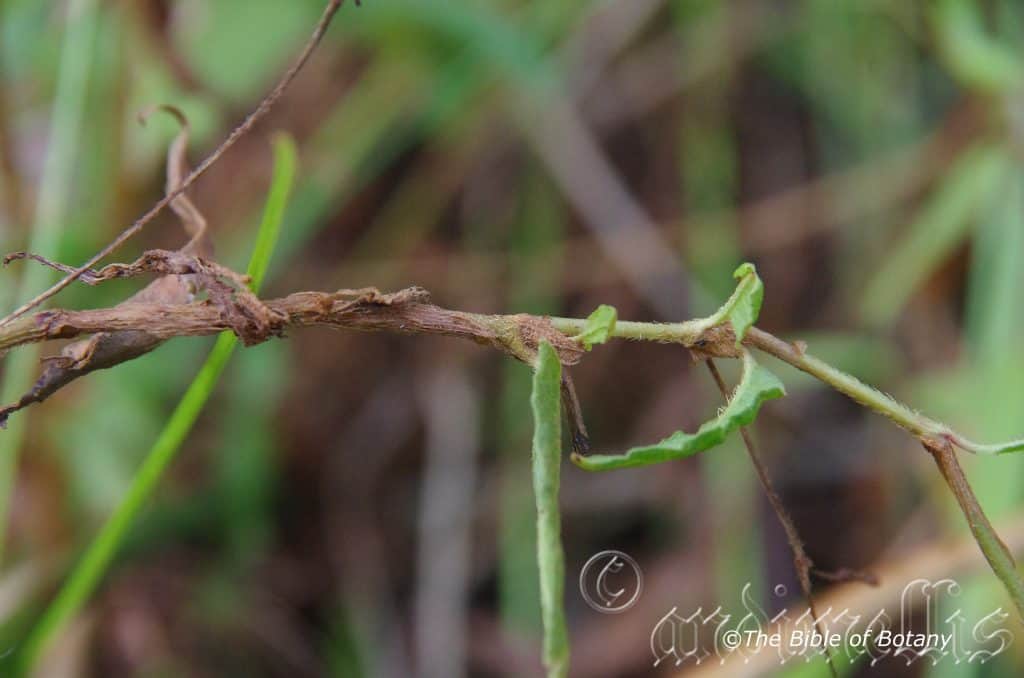
Coldstream River Tucabia NSW
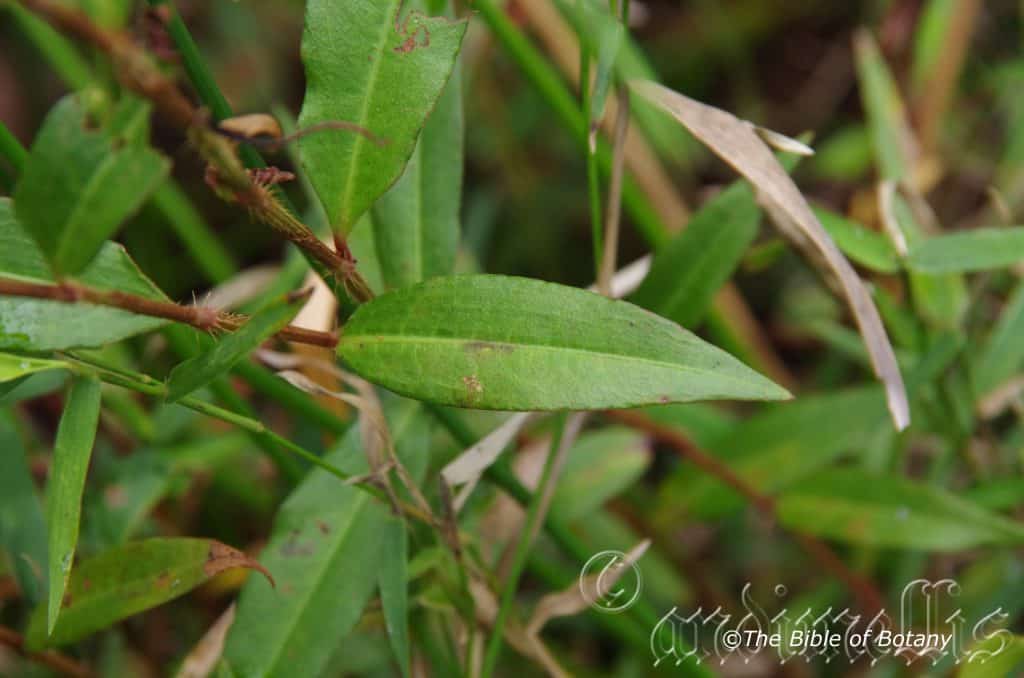
Coldstream River Tucabia NSW
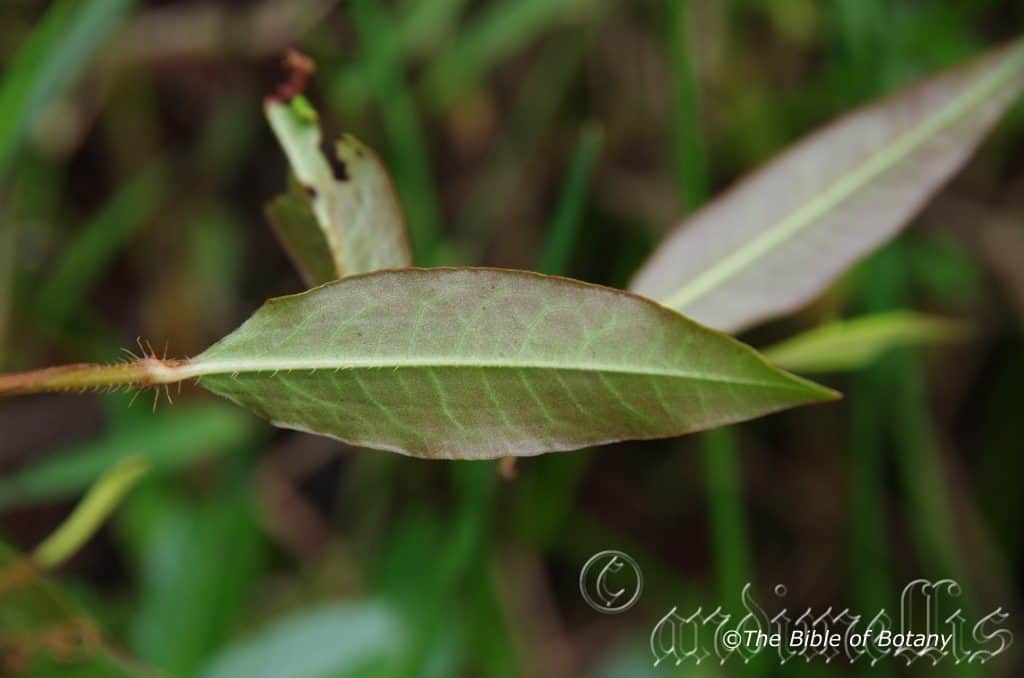
Coldstream River Tucabia NSW
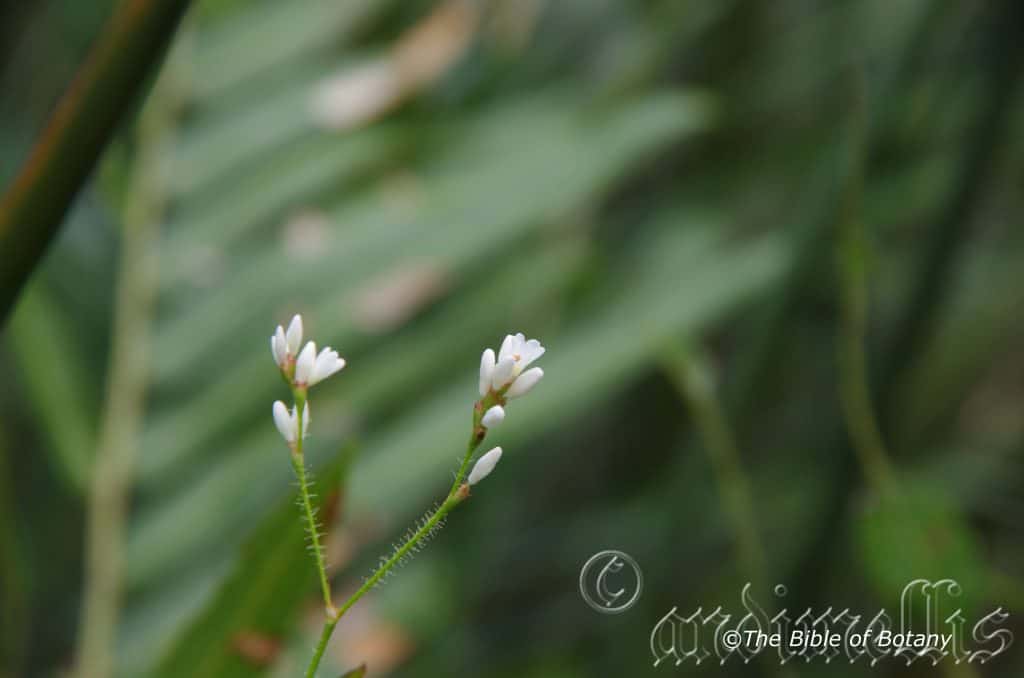
Coldstream River Tucabia NSW
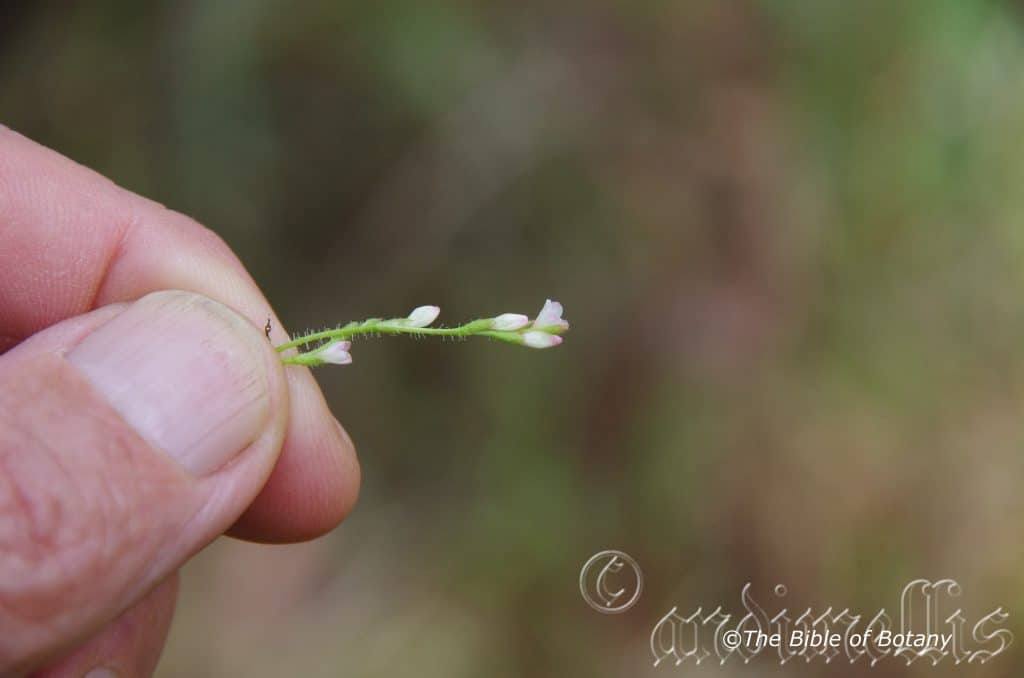
Coldstream River Tucabia NSW
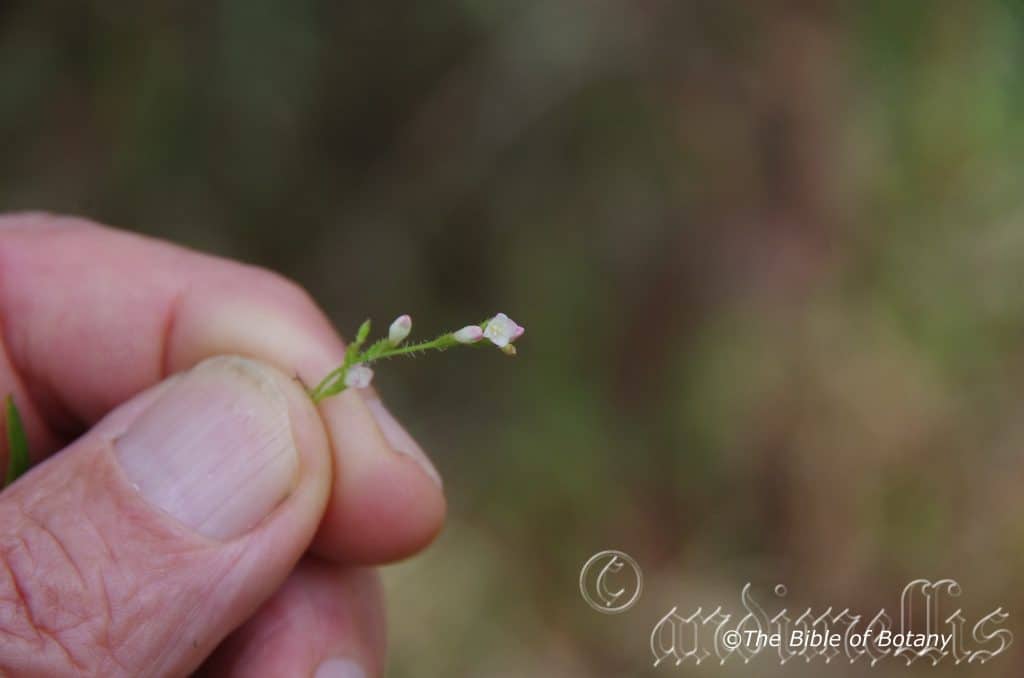
Coldstream River Tucabia NSW
Persicaria dichotoma
Classification:
Unranked: Eudicots
Order: Caryophyllales
Family: Polygonaceae
Subfamily: Polygonoideae
Genus: From
Persicaria, which is Ancient Greek for the peach tree. It refers to leaves, which are similar to those of the wild peach trees of Asia Minor.
Specie: From Dikos, which is Ancient Greek for double and Khotomos which is Ancient Greek or Chotomos which is Latin for to fork. It refers branches which divide like the prongs on a fork, equally two at a time.
Sub specie:
Common Name: In the Gumbaynggirr Aboriginal language it is known as Bambil Bambil.
Distribution:
Persicaria dichotoma is found in Bullkine Billabong to Wagait in the Northern Territory.
In the east it is found in several disjunct populations south from the mouth of the Daintree River to Hastie Swamp on the Atherton Tableland and then from Myrtle Creek near Proserpine in far north coastal Queensland to Fern Bank Creek near Port Macquarie in central coastal New South Wales.
Persicaria dichotoma prefers full sun to light dappled shade. It grows on the edges of permanent, slow, flowing water in creeks and streams, in coastal swamps, on alluvial flats, on the edge of billabongs or dams in open sclerophyll forests, open woodlands close to the coast. The altitude ranges from 5 meters ASL to 740 meters ASL.
The temperatures range from 2 degrees in July to 37 degrees in January.
The rainfall ranges from lows of 800mm to 3000mm average per annum.
https://avh.ala.org.au/occurrences/search?taxa=Persicaria+dichotoma#tab_mapView
Soil requirements:
Persicaria dichotoma prefers sandy loams to medium silts with a high proportion of leaf litter. The soils are usuallyderived from alluvial deposits. The soils pH ranges from 4.5pH to 7pH. It tolerates water logged soils. Non saline soils to moderately saline soils are tolerated.
Height & Spread:
Wild Plants: 0.2m to 0.6m by 1m to very large areas.
Characteristics:
Persicaria dichotoma grows as a prostrate or decumbent creeping herb. The slender stems are grass-green to grass-green with a reddish tinge and moderately covered in strong retrorse strigose hairs.
The alternate, broad lanceolate to ovate or angular ovate leaves of Persicaria dichotoma, measure 30mm to 70mm in length by 10mm to 23mm in width. The ocrea measures 9mm to 13mm in length and is covered in short white cilia. The petioles measure 1mm to 7mm in length. The base is cuneate and is slightly oblique while the apex is narrow acute. The concolourous laminas are grass-green to blue-green, dull and glabrous. The laminas curve gently upwards from the mid vein to the margins and decurve gently downwards on the apical half. The margins are entire often with white retrorse hairs along the edge. The mid vein is strongly prominent on the lower lamina and is visible on the upper lamina while the lateral veins are slightly prominent on the lower laminas. The main vein and lateral veins are covered in white retrorse hairs.
Inflorescences of Persicaria dichotoma are born on panicles of a few small 1 or 2 flowered clusters on long branches from the leaf axils. The clusters measure 5mm to 8mm in diameter. The panicles are sparsely covered in white retrorse strigose hairs on the lower branches with short white glandular hairs on the upper sections. The white perianth segments measure 3mm to 4mm in length. The flowers appear from February to June and November to December.
Persicaria dichotoma’s fruits are lenticular achenes. The green achenes turn deep reddish-brown to black when ripe. The achenes measure 2mm to 2.3mm in length by 1.9mm to 2.1mm in diameter.
Wildlife:
Persicaria dichotoma’s is eaten by the Pretty Face Wallaby (Macropus parryi) and the Swamp Wallaby (Wallabia bicolor) in times of drought.
Cultivation:
Persicaria dichotoma is a useful herb for stock and can be used for an alternative food source in hard times. The leaves and stems are rather bland. It needs a lot more scientific work as some studies from Africa state that Periscaria can lead to heart arrest if consumed in large quantities. In cultivation they will grow from 0.2 meters to 0.5 meters in height by several meters in diameter very quickly which makes them ideal for restoration work along wet and damp creek banks and around dams.
They grow exceptionally well on lighter soils When deep leaf litter keeps the soil cool and moisture at an even level. If these requirements are met they can cope with temperatures as low as minus 2 degrees and up to 33 degrees. It is not drought resistant at all.
Add to the above, if it is given an adequate water supply and native fertilizers on a regular basis the plants will respond very quickly smothering low growing noxious weeds.
Propagation:
Seeds: Seeds of Persicaria dichotoma can be moved easily from the plants as they dry. Once Persicaria dichotoma has finished flowering and the fruits have swollen cut the heads off and place them in a calico bag.
Sow freshly collected seeds directly into a seed raising mix, keeping them wet. Place the trays into a larger tray and fill the outer tray with water. Place the trays in full sun or a protected area beneath 30mm shade cloth. When the seedlings are 30mm to 40mm tall, prick them out and plant them into 50mm native tubes using a good organic mix.
As the seedling’s roots reach the bottom of the tubes plant them out into their permanent position. Do not delay as the plants have some set back once they start to lose their vigour.
Seeds can be broad cast directly onto the ground immediately after or during rain/wet periods.
Fertilize using seaweed, fish emulsion or organic chicken pellets soaked in water on an alternate basis. Fertilize every two months until the plants are established then twice annually in early September and March to maintain better health, vitality and flowering.
Be careful with fertilizing the plants if it is growing in water as fertilizers will pollute the water very quickly causing algae blooms.
Further Comments from Readers:
“Hi reader, it seems you use The Bible of Botany a lot. That’s great as we have great pleasure in bringing it to you! It’s a little awkward for us to ask, but our first aim is to purchase land approximately 1,600 hectares to link several parcels of N.P. into one at The Pinnacles NSW Australia, but we need your help. We’re not salespeople. We’re amateur botanists who have dedicated over 30 years to saving the environment in a practical way. We depend on donations to reach our goal. If you donate just $5, the price of your coffee this Sunday, We can help to keep the planet alive in a real way and continue to bring you regular updates and features on Australian plants all in one Botanical Bible. Any support is greatly appreciated. Thank you.”
In the spirit of reconciliation we acknowledge the Bundjalung, Gumbaynggirr and Yaegl and all aboriginal nations throughout Australia and their connections to land, sea and community. We pay our respect to their Elders past, present and future for the pleasures we have gained.
Persicaria elatior
Classification:
Unranked: Eudicots
Order: Caryophyllales
Family: Polygonaceae
Subfamily: Polygonoideae
Genus: From Persicaria, which is Ancient Greek for the peach tree. It refers to leaves, which are similar to those of the wild peach trees of Asia Minor.
Specie: From ?l?tius, which is Latin for taller. It refers to plants, which are taller than other species in the genus.
Sub specie:
Common Name: Slender Knot Weed.
In the Gumbaynggirr Aboriginal language it is known as Bambil Bambil.
Distribution:
Persicaria elatior is found in several disjunct populations along the coast from the Brisbane River and Stradbroke Island in southern coastal Queensland, south to the base of Mount Dromedary in central coastal New South Wales.
https://avh.ala.org.au/occurrences/search?taxa=Persicaria+elatior#tab_mapView
Habitat Aspect Climate:
Persicaria elatior prefers full sun to light dappled shade. It grows on the edges of permanent, slow, flowing water in creeks and streams and in coastal swamps, on alluvial flats or on the edge of billabongs, dams and shallow depressions. It is found in open sclerophyll forests, open woodlands close to the coast. The altitude ranges from 5 meters ASL to 80 meters ASL.
The temperatures range from minus 2 degrees in July to 40 degrees in January.
The rainfall ranges from lows of 1500mm to 2000mm average per annum.
Soil requirements:
Persicaria elatior prefers sandy loams to medium silts with a high proportion of leaf litter. The soils are usually derived from alluvial deposits. The soils pH ranges from 4.5pH to 7pH. It tolerates water logged soils. Non saline soils to moderately saline soils are tolerated.
Height & Spread:
Wild Plants: 0.6m to 1m by very large areas.
Characteristics:
Persicaria elatior grows as an erect to procumbent herb. The slender stems are grass-green to mid greenish-blue and sparsely to moderately covered in fawn to brownish-fawn stalked and sessile glandular hairs.
The alternate, narrow ovate leaves of Persicaria elatior measure 30mm to 110mm in length by 10mm to 30mm in width. The ocrea is covered in fawn to brownish-fawn glandular hairs that measure 0.5mm in length on the upper margins. The petioles measure 5mm to 15mm in length. The bases are cuneate to broad cuneate while the apexes are acute. The concolourous laminas are pale, dull grass-green and sparsely to moderately covered in fawn to brownish-fawn stalked and sessile glandular hairs. The laminas curve slightly from the mid vein to the margins and decurve slightly downwards from near the bases to the apexes. The margins are entire and are sparsely covered in fawn to brownish-fawn hirsute hairs. The mid vein is strongly prominent on the lower lamina and is visible on the upper lamina. The lateral veins are slightly prominent.
The inflorescences of Persicaria elatior are born on dense elongate cylindrical spikes from the leaf axils. The spikes are first erect the become lax towards the apexes and measure 18mm to 50mm in length by 5mm to 7mm in diameter. The pale pink to deep pink perianths measure 3mm to 4mm in diameter. The 5 pink oblong lobes measure 3.5mm to 4.5mm in length. The flowers appear throughout the warmer months.
Persicaria elatior’s fruits are lenticular achenes. The green achenes turn black when ripe. The achenes measure 2.1mm to 2.5mm in length by 2.4mm to 2.6mm in diameter.
Wildlife:
Persicaria elatior’s wildlife is unknown to the author.
Cultivation:
Persicaria elatior is a useful herb for stock and can be used for an alternative food source in hard times. The leaves and stems are rather bland. It needs a lot more scientific work as some studies from Africa state that it can lead to heart arrest if consumed in large quantities. In cultivation they will grow from 0.8 meters to 1 meter in height by several meters in diameter very quickly which makes them ideal for restoration work along wet and damp creek banks and around dams.
They grow exceptionally well on lighter soils When deep leaf litter keeps the soil cool and moisture at an even level. If these requirements are met they can cope with temperatures as low as minus 2 degrees and up to 33 degrees. It is not drought resistant at all.
Add to the above, if it is given an adequate water supply and native fertilizers on a regular basis the plants will respond very quickly smothering low growing noxious weeds.
Propagation:
Seeds: The seeds of Persicaria elatior can be moved easily from the plants as they dry. Once Persicaria elatior has finished flowering and the fruits have swollen cut the heads off and place them in a calico bag.
Sow freshly collected seeds directly into a seed raising mix, keeping them wet. Place the trays into a larger tray and fill the outer tray with water. Place the trays in full sun or a protected area beneath 30mm shade cloth. When the seedlings are 30mm to 40mm tall, prick them out and plant them into 50mm native tubes using a good organic mix.
As the seedling’s roots reach the bottom of the tubes plant them out into their permanent position. Do not delay as the plants have some set back once they start to lose their vigour.
Seeds can be broad cast directly onto the ground immediately after or during rain/wet periods.
Fertilize using seaweed, fish emulsion or organic chicken pellets soaked in water on an alternate basis. Fertilize every two months until the plants are established then twice annually in early September and March to maintain better health, vitality and flowering.
Be careful with fertilizing the plants if It is growing in water as fertilizers will pollute the water very quickly causing algae blooms.
Further Comments from Readers:
“Hi reader, it seems you use The Bible of Botany a lot. That’s great as we have great pleasure in bringing it to you! It’s a little awkward for us to ask, but our first aim is to purchase land approximately 1,600 hectares to link several parcels of N.P. into one at The Pinnacles NSW Australia, but we need your help. We’re not salespeople. We’re amateur botanists who have dedicated over 30 years to saving the environment in a practical way. We depend on donations to reach our goal. If you donate just $5, the price of your coffee this Sunday, We can help to keep the planet alive in a real way and continue to bring you regular updates and features on Australian plants all in one Botanical Bible. Any support is greatly appreciated. Thank you.”
In the spirit of reconciliation we acknowledge the Bundjalung, Gumbaynggirr and Yaegl and all aboriginal nations throughout Australia and their connections to land, sea and community. We pay our respect to their Elders past, present and future for the pleasures we have gained.

Clarence River Grafton NSW
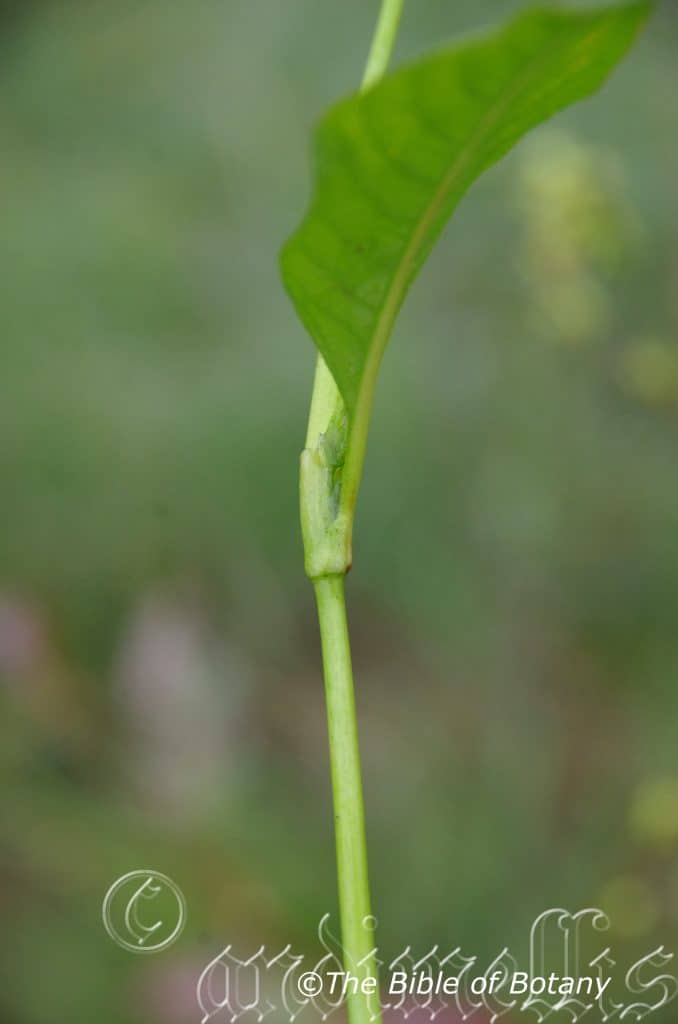
Clarence River Grafton NSW
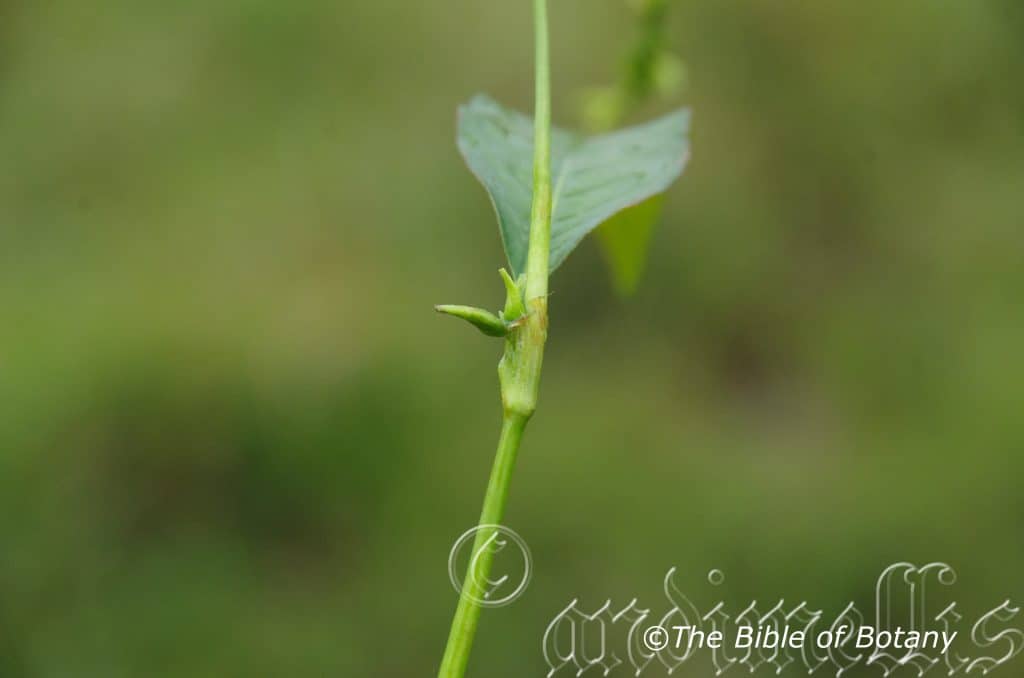
Clarence River Grafton NSW
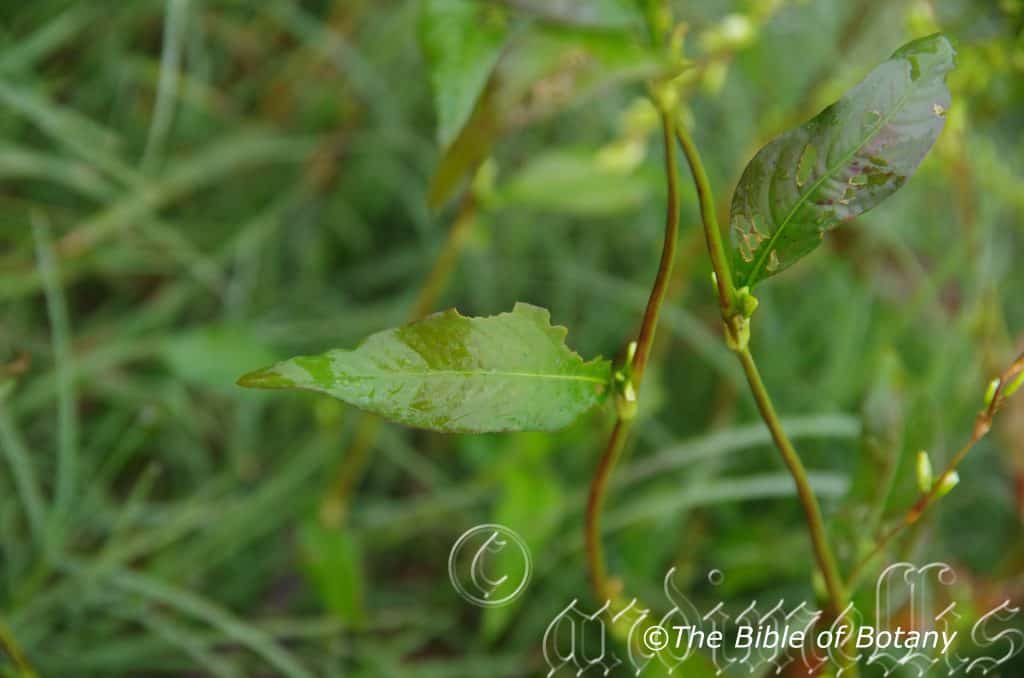
Clarence River Grafton NSW
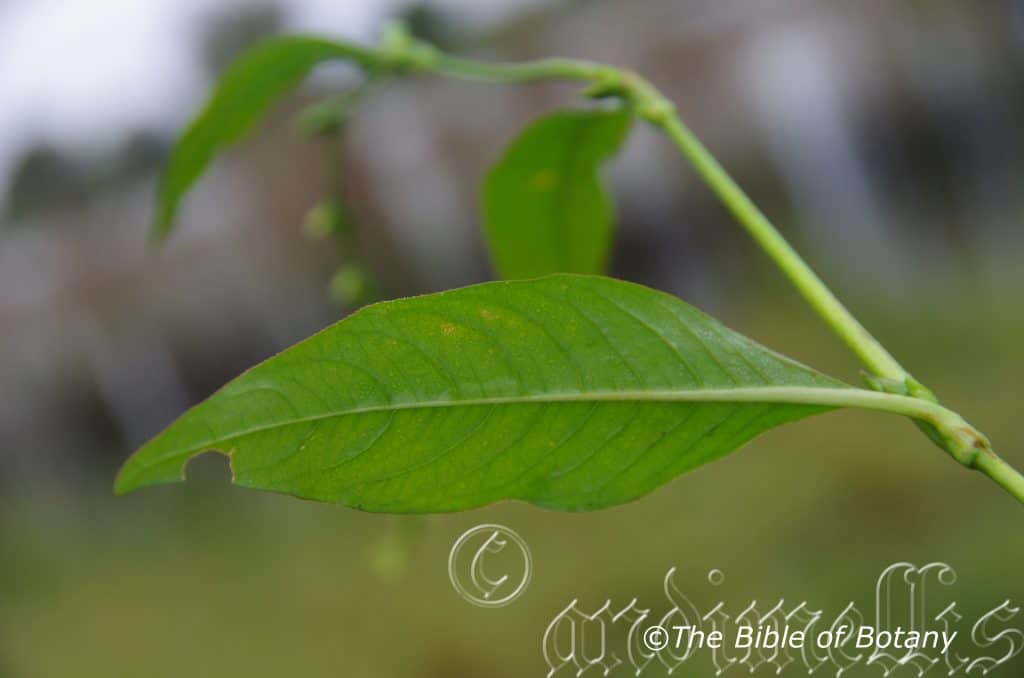
Clarence River Grafton NSW

Clarence River Grafton NSW

Clarence River Grafton NSW

Clarence River Grafton NSW
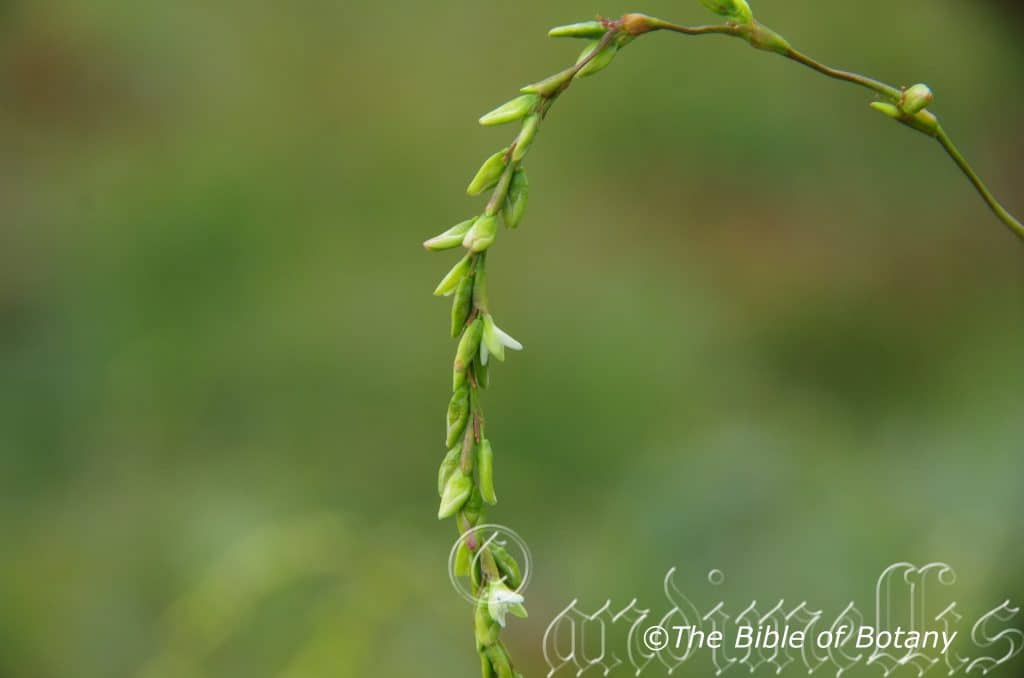
Clarence River Grafton NSW
Persicaria hydropiper
Classification:
Unranked: Eudicots
Unranked:
Order: Caryophyllales
Family: Polygonaceae
Subfamily: Polygonoideae
Genus: From Persicaria, which is Ancient Greek for the peach tree. It refers to leaves, which are similar to those of the wild peach trees of Asia Minor.
Specie: From Hydro, which is Ancient Greek for water and Piper, which is Ancient Greek for the old name of the Pepper vine. It refers to leaves, which have a peppery taste or resemble the pepper vines in appearance and grow in water.
Sub specie:
Common Name: Water Pepper Knot Weed or Smart Weed.
In the Gumbaynggirr Aboriginal language it is known as Bambil Bambil.
Distribution:
Persicaria hydropiper is found south from Gladstone in southern coastal Queensland to Cape Otway in Victoria. It is found on the Western Slopes, on and east of the Great Dividing Range to the coast. There are several outlying populations extending further north to as far as Cairns. It is also found along the north coast of Tasmania.
https://avh.ala.org.au/occurrences/search?taxa=Persicaria+hydropiper#tab_mapView
Habitat Aspect Climate:
Persicaria hydropiper prefers full sun to light dappled shade. It grows on the edges of permanent, slow, flowing water in creeks and streams, drainage channels, adjacent to and in coastal swamps, on alluvial flats or on the edge of billabongs or dams. It is found in open sclerophyll forests, mallee country and open woodlands. The altitude ranges from 10 meters ASL to 850 meters ASL.
The temperatures range from minus 2 degrees in July to 40 degrees in January.
The rainfall ranges from lows of 250mm to 3000mm average per annum.
Soil requirements:
Persicaria hydropiper prefers sandy loams to medium silts with a high proportion of organic matter. The soils are usually derived from alluvial deposits. The soils pH ranges from 5pH to 7pH. It tolerates water logged soils. Non saline soils to moderately saline soils are tolerated.
Height & Spread:
Wild Plants: 0.5m to 1.3m by very large areas.
Characteristics:
Persicaria hydropiper grows as an erect or ascending herb. The slender stems are grass-green to olive-green or pinkish-green and glabrous or sparsely covered in white puberulent hairs.
The alternate, narrow ovate, narrow elliptical to lanceolate leaves of Persicaria decipiens are straight to slightly falcate. They measure 50mm to 120mm in length by 10mm to 25mm in width. The petioles measure 1mm to 5mm in lengthier clasping and surrounded by a thin membrane. The ocrea is covered in white ciliate hairs which measure 3mm to 5mm in length. The bases are cuneate while the apexes are tapering. The concolourous laminas are grass-green, glabrous, or covered in minute glandular hairs. The leaf margins are entire flat or curve slightly upwards from the mid vein. The mid vein and main lateral veins are prominent on the lower lamina and are visible on the upper lamina. It is sparsely to moderately covered in white puberulent hairs.
The inflorescences of Persicaria hydropiper are born on long spikes from the leaf axils. The elongated, cylindrical spikes are lax and are often held pendant and measure 30mm to 90mm in length by 3mm to 5mm in diameter. The perianth is pale pink to pink and measure 2.3mm to 3.8mm in length. The 4 greenish-pink oblong lobes measure 2.2mm to 3.8mm in length. Only one flower matures at a time.
The 7 stamens are alternating with 7 glands at the base of the perianth. The pale pink, translucent filaments and anthers measure 2.8mm to 3.4mm in length. Periscaria decipiens flowers from February to June and November to December.
The fruits are lenticular or trigonous achenes. The green achenes turn deep brown to black when ripe. The achenes measure 2mm to 2.2mm in length by 1.5mm to 1.8mm in diameter.
Wildlife:
Persicaria hydropiper’s offer small fish fry and fingerlings are safe haven. I have not seen anything actually feed on the plants and no leaf damage has been corded despite the high activity within the plants stems and leaf coverage. The activities include Dragon fly nymphs, water beetles, water snails and other unidentified water insect larvae.
Cultivation:
Persicaria hydropiper is a useful herb for stock and can be used for an alternative food source in hard times. The leaves and stems are rather bland. It needs a lot more scientific work as some studies from Africa state that it can lead to heart arrest if consumed in large quantities. In cultivation it grows from 0.5 meters to 1.2 meter in height by several meters in diameter very quickly which makes them ideal for restoration work along wet and damp creek banks and around dams.
It grows exceptionally well on lighter soils When deep leaf litter keeps the soil cool and moisture at an even level. If these requirements are met they can cope with temperatures as low as minus 5 degrees and up to 33 degrees. It is not drought resistant at all.
Add to the above, if it is given an adequate water supply and native fertilizers on a regular basis the plants will respond very quickly smothering noxious weeds.
Propagation:
Seeds: Seeds of Persicaria hydropiper can be moved easily from the plants as they dry. Once Periscaria attenuata has finished flowering and the fruits have swollen cut the heads off and place them in a calico bag.
Sow freshly collected seeds directly into a seed raising mix, keeping them wet. When the seedlings are 30mm to 40mm tall, prick them out and plant them into 50mm native tubes using a good organic mix.
As the seedlings roots ach the bottom of the tubes plant them out into their permanent position. Do not delay as the plants have some set back once they start to lose their vigour.
Seeds can be broad cast directly onto the ground immediately after or during rain/wet periods.
Fertilize using seaweed, fish emulsion or organic chicken pellets soaked in water on an alternate basis. Fertilize every two months until the plants are established then twice annually in early September and March to maintain better health, vitality and flowering.
Be careful with fertilizing the plants if it is growing in water as fertilizers will pollute the water very quickly causing algae blooms.
Further Comments from Readers:
“Hi reader, it seems you use The Bible of Botany a lot. That’s great as we have great pleasure in bringing it to you! It’s a little awkward for us to ask, but our first aim is to purchase land approximately 1,600 hectares to link several parcels of N.P. into one at The Pinnacles NSW Australia, but we need your help. We’re not salespeople. We’re amateur botanists who have dedicated over 30 years to saving the environment in a practical way. We depend on donations to reach our goal. If you donate just $5, the price of your coffee this Sunday, We can help to keep the planet alive in a real way and continue to bring you regular updates and features on Australian plants all in one Botanical Bible. Any support is greatly appreciated. Thank you.”
In the spirit of reconciliation we acknowledge the Bundjalung, Gumbaynggirr and Yaegl and all aboriginal nations throughout Australia and their connections to land, sea and community. We pay our respect to their Elders past, present and future for the pleasures we have gained.
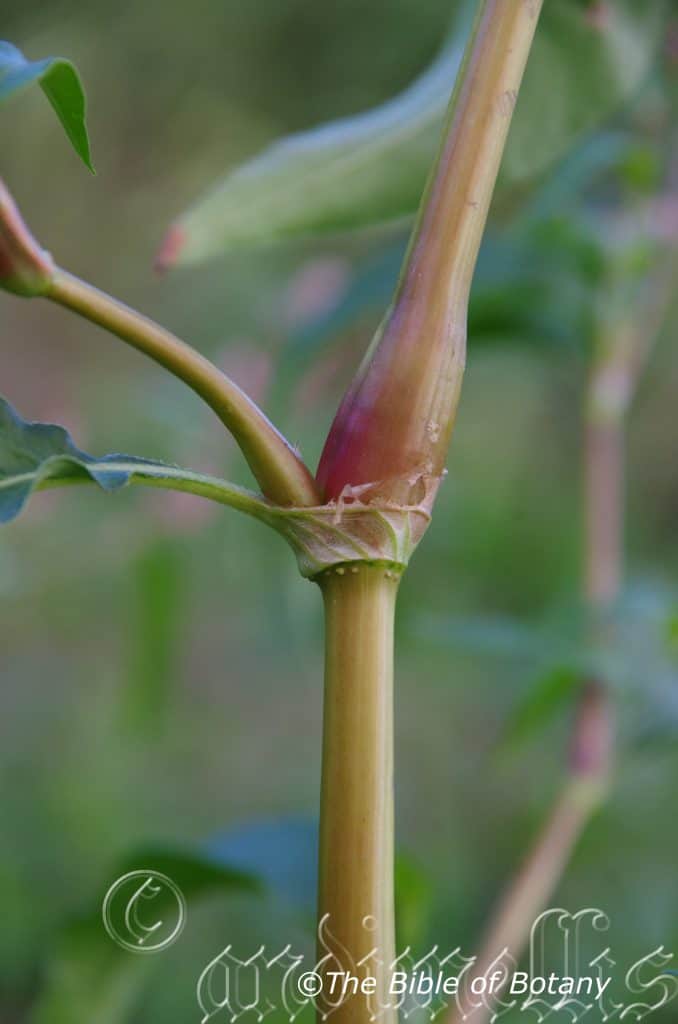
Clarence River Grafton NSW

Clarence River Grafton NSW

Clarence River Grafton NSW
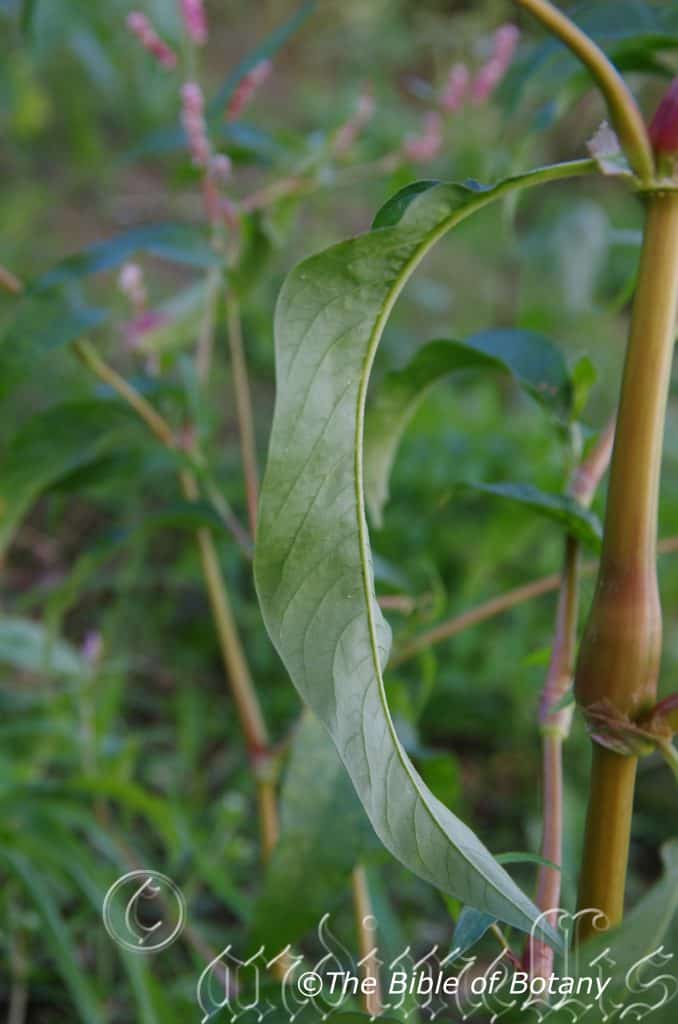
Clarence River Grafton NSW

Clarence River Grafton NSW
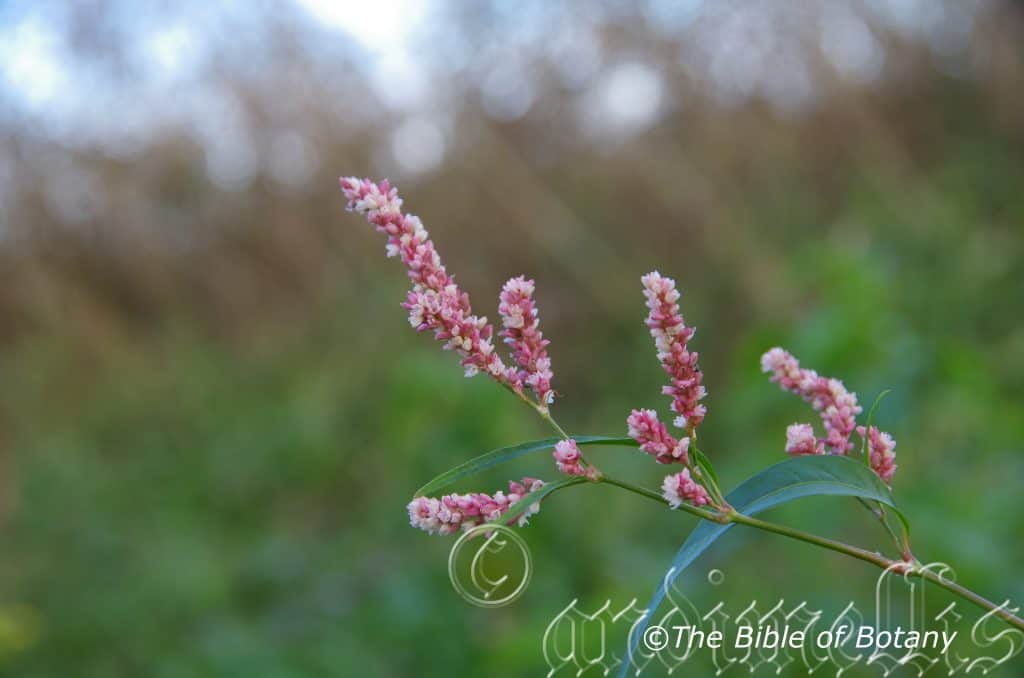
Clarence River Grafton NSW
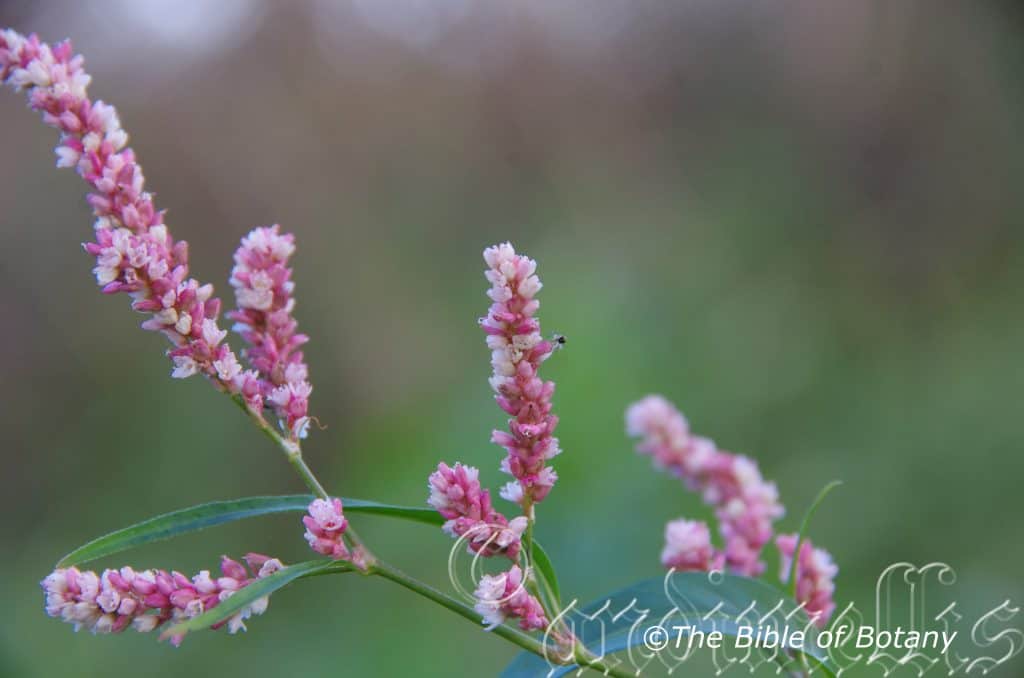
Clarence River Grafton NSW
Persicaria lapathifolia
Classification:
Unranked: Eudicots
Order: Caryophyllales
Family: Polygonaceae
Subfamily: Polygonoideae
Genus: FromPersicaria, which is Ancient Greek for the peach tree. It refers to leaves, which are similar to those of the wild peach trees of Asia Minor.
Specie: FromLapathi, which is Latin for an old name for dock or sorrel and Folium, which is Latin for foliage. It refers to leaves, which resemble those of the sorrels.
Sub specie:
Common Name: White Knott Weed or Smart Weed.
In the Gumbaynggirr Aboriginal language it is known as Bambil Bambil.
Distribution:
Persicaria lapathifolia is found from central Victoria from around Ballarat, Bendigo east to north east Gippsland. It is found along the inland river system on the Western Plains, on the Western Slopes on and east of the Great Dividing Range to the coast.
In the center of Australia it is found on the Hale and Todd Rivers in the Northern Territory.
In South Australia it is found along the Murray River to Lake Alexandrina and in the north on Cooper creek.
It is also found along the far north west coast of Tasmania and down to the centre.
https://avh.ala.org.au/occurrences/search?taxa=Persicaria+lapathifolia#tab_mapView
Habitat Aspect Climate:
Persicaria lapathifolia prefers full sun to light dappled shade. It grows on the edges of permanent, slow, flowing water in creeks and streams, drainage channels, adjacent to and in coastal swamps, especially on the edge of billabongs, dams in western areas. It is found in open sclerophyll forests, open woodlands or mallee country. The altitude ranges from 2 meters ASL to 850 meters ASL.
The temperatures range from minus 4 degrees in July to 40 degrees in January.
The rainfall ranges from lows of 250mm to 3000mm average per annum.
Soil requirements:
Persicaria lapathifolia prefers sandy loams to medium silts with a high proportion of leaf litter. The soils are usually derived from alluvial deposits. The soils pH ranges from 5pH to 6.5pH. It tolerates water logged soils. Non saline soils to the low end of very saline soils are tolerated.
Height & Spread:
Wild Plants: 0.5m to 1.8m by very large areas.
Characteristics:
Persicaria lapathifolia grows as an erect or ascending herb. The slender stems are grass-green to olive-green or pinkish-green and glabrous or sparsely covered in white puberulent hairs. It often roots at the nodes where the nodes touch the ground or are submerged in water.
The alternate, narrow ovate, narrow elliptical to lanceolate leaves of Persicaria lapathifolia are straight. They measure 60mm to 210mm in length by 10mm to 45mm in width. The base is cuneate, oblique while the apex is tapering. The concolourous laminas are grass-green, glabrous, or covered in minute glandular hairs. The glandular hairs are more prominent on the lower lamina. The leaf margins are entire flat or curve slightly upwards from the mid vein. The margins and main veins are sparsely covered in white puberulent or tomentose hairs. The mid vein and main lateral veins are prominent on the lower lamina and are visible on the upper lamina. The petioles measure 5mm to 22mm in length and are clasping and surrounded by a thin membrane. The ocrea is glabrous.
The inflorescences of Persicaria lapathifolia’s flowers are crowded along the spike often overlapping each other. It is born on long dense spikes from the leaf axils. The elongated, cylindrical spikes are held erect and measure 25mm to 60mm in length by 4mm to 7mm in diameter. The perianth is pale pink to pink and measure 1.5mm to 2.8mm in length. The 4 pink oblong lobes measure 1.5mm to 2.6mm in length.
The 6 stamens are pale pink, creamy yellow with translucent filaments and anthers which measure 2.8mm to 3.4mm in length. Periscaria lapathifolia flowers from December to early March.
Persicaria lapathifolia’s fruits are lenticular achenes. The green achenes turn brown to deep brown when ripe. The achenes measure 1.5mm to 2mm in length by 1.2mm to 1.8mm in diameter.
Wildlife:
Persicaria lapathifolia’s wildlife is unknown to the author.
Cultivation:
Persicaria lapathifolia is a useful herb for stock and can be used for an alternative food source in hard times. The leaves and stems are rather bland. It needs a lot more scientific work to evaluate its true culinary qualities. In cultivation it grows from 1.5 meters to 2 meters in height by several meters in diameter very quickly which makes them ideal for restoration work along wet and damp creek banks and around dams.
It grows exceptionally well on lighter soils when deep leaf litter keeps the soil cool and moisture at an even level. If these requirements are met it can cope with temperatures as low as minus 5 degrees and up to 33 degrees. It is drought resistant.
Add to the above, if it is given an adequate water supply and native fertilizers on a regular basis the plants will respond very quickly smothering noxious weeds.
Propagation:
Seeds: Seeds ofPersicaria lapathifolia can be moved easily from the plants as they dry. Once Persicaria lapathifolia has finished flowering and the fruits have swollen cut the heads off and place them in a calico bag.
Sow freshly collected seeds directly into a seed raising mix, keeping them wet. When the seedlings are 30mm to 40mm tall, prick them out and plant them into 50mm native tubes using a good organic mix.
As the seedlings roots ach the bottom of the tubes plant them out into their permanent position. Do not delay as the plants have some set back once they start to lose their vigour.
Seeds can be broad cast directly onto the ground immediately after or during rain/wet periods.
Fertilize using seaweed, fish emulsion or organic chicken pellets soaked in water on an alternate basis. Fertilize every two months until the plants are established then twice annually in early September and March to maintain better health, vitality and flowering.
Be careful with fertilizing the plants if it is growing in water as fertilizers will pollute the water very quickly causing algae blooms.
Further Comments from Readers:
“Hi reader, it seems you use The Bible of Botany a lot. That’s great as we have great pleasure in bringing it to you! It’s a little awkward for us to ask, but our first aim is to purchase land approximately 1,600 hectares to link several parcels of N.P. into one at The Pinnacles NSW Australia, but we need your help. We’re not salespeople. We’re amateur botanists who have dedicated over 30 years to saving the environment in a practical way. We depend on donations to reach our goal. If you donate just $5, the price of your coffee this Sunday, We can help to keep the planet alive in a real way and continue to bring you regular updates and features on Australian plants all in one Botanical Bible. Any support is greatly appreciated. Thank you.”
In the spirit of reconciliation we acknowledge the Bundjalung, Gumbaynggirr and Yaegl and all aboriginal nations throughout Australia and their connections to land, sea and community. We pay our respect to their Elders past, present and future for the pleasures we have gained.
Persicaria orientalis
Classification:
Unranked: Eudicots
Unranked:
Order: Caryophyllales
Family: Polygonaceae
Subfamily: Polygonoideae
Genus: From Persicaria, which is Ancient Greek for the peach tree. It refers to leaves, which are similar to those of the wild peach trees of Asia Minor.
Specie: From Orientalis, which is Latin for the oriental or eastern. It refers to plants, which were first discovered in the east or orient.
Sub specie:
Common Name: Princes Feathers or Chinese Knott Weed.
In the Gumbaynggirr Aboriginal language it is known as Bambil Bambil.
Distribution:
Persicaria orientalis is found from Bussleton and Mount Barker in south western coastal Western Australia.
In the Northern Territory it is found from Lookback Billabong to Oenpellii and the mouth of the Goromuru River.
In the east it is found east of a line from Honey Dam on Cape York Peninsular to Longreach, the Moonee River in Queensland to the Lachlan River and the Bega Valley on the coast of southern New South Wales. The is an isolated population on the south Shoreline of Lake Hutchinson in Lake Bindegolly National Park, about 160 kilometres west of Cunnamulla.
It is also found in smaller numbers in Victoria from Karkarrook Park to the La Trobe Valley and Fawthrop Lagoon near Portland. While in South Australia it is found around Queenstown.
It is also found in China, India, Japan, Korea, Malaysia, Philippines, Indonesia, Timor, Papua and New Guinee.
https://avh.ala.org.au/occurrences/search?taxa=Persicaria+orientalis#tab_mapView
Habitat Aspect Climate:
Persicaria orientalis prefers full sun to light dappled shade. It grows on the edges of permanent, slow, flowing water in creeks and streams, drainage channels, adjacent to and in swamps, billabongs, lakes, on alluvial flats or dams. It is found in open sclerophyll forests woodland mallee country and open woodlands. The altitude ranges from 10 meters ASL to 850 meters ASL.
The temperatures range from minus 4 degrees in July to 40 degrees in January.
The rainfall ranges from lows of 180mm to 3000mm average per annum. Ground surface water is more important than the actual rainfall to its survival.
Soil requirements:
Persicaria orientalis prefers sandy loams to medium clays with a high proportion of organic matter. The soils are usuallyderived from alluvial deposits. The soils pH ranges from 4.5pH to 7pH. It tolerates water logged soils. Non saline soils to moderately saline soils are tolerated.
Height & Spread:
Wild Plants: 1m to 2m by very large areas.
Characteristics:
Persicaria orientalis grows as an erect perennial or semi divaricate herb. The stems are grass-green to deep green and densely covered in 0.5mm to 1mm long, white spreading and antrorse hirsute hairs.
The alternate, ovate leaves of Persicaria orientalis measure 50mm to 220mm in length by 35mm to 120mm in width. The ocrea is entire and covered in off white to fawn pubescent hairs that measure 7mm in width. The petioles measure 15mm to 80mm in length. The bases are broad cuneate to rounded while the apexes taper to a point. The concolourous laminas are dull grass-green and sparsely to moderately covered in white stalked and sessile spreading to antrorse glandular hairs. The laminas curve slightly from the mid vein to the margins and decurve gently downwards from near the base to the apex. The margins are entire and are sparsely covered in white hirsute hairs. The mid vein is strongly prominent on the lower lamina and is visible on the upper lamina. The lateral veins are slightly prominent on the lower laminas.
The inflorescences of Persicaria orientalis are born on dense elongate cylindrical spikes from the leaf axils. The elongated, cylindrical spikes are first erect the become lax towards the apexes and measure 35mm to 80mm in length by 3.5mm to 10mm in diameter. The pale pink to deep pink perianths measure 2.6mm to 4mm in length. The 5 pink oblong lobes measure 3mm to 4mm in length. The flowers appear from February to June and November to December.
Persicaria orientalis’s fruits are unequal lenticular achenes. The green achenes turn deep brown to black when ripe. The achenes measure 2mm to 3mm in length by 2.1mm to 3mm in diameter.
Wildlife:
Persicaria orientalis’s wildlife is unknown to the author.
Cultivation:
Persicaria orientalis is a useful herb for stock and can be used for an alternative food source in hard times. The leaves and stems are rather bland. It needs a lot more scientific work as some studies from Africa state that Persicaria may lead to heart arrest if consumed in large quantities. In cultivation it will grow from 1.5 meters to 2 meter in height by 1.2 meters to 1.5 meters in diameter very quickly which makes them ideal for restoration work along wet and damp creek banks and around dams.
It is well suited to flat, heavy silty, soils that are water logged for extended periods throughout the year. He it can be planted sparsely with other smaller sub shrubs, annuals or herbs with a horizontal growth leaving bare patches of ground between each plant so none of them dominate the scene or mass planted below so that they blend in to give a mosaic of foliage, colour and patterns. He I immediately think of Actinotis helianthi for a great contrast in foliage colours and Chloanthes parviflora, Pelargonium australe and Pelargonium inodorum for texture and leaf patterns. Hardenbergia comptoniana or Hardenbergia violacea with Hibbertia scandens trimmed to a small round clump or Kunzea capitata all add great foliage and flower variation giving Persicaria orientalis are taller more dominant position in the garden.
Propagation:
Seeds: Seeds of Persicaria orientalis can be moved easily from the plants as they dry. Once Persicaria dichotoma has finished flowering and the fruits have swollen cut the heads off and place them in a calico bag.
Sow freshly collected seeds directly into a seed raising mix, keeping them wet. Place the trays into a larger tray and fill the outer tray with water. Place the trays in full sun or a protected area beneath 30mm shade cloth. When the seedlings are 30mm to 40mm tall, prick them out and plant them into 50mm native tubes using a good organic mix.
As the seedling’s roots reach the bottom of the tubes plant them out into their permanent position. Do not delay as the plants have some set back once they start to lose their vigour.
Seeds can be broad cast directly onto the ground immediately after or during rain/wet periods.
Fertilize using seaweed, fish emulsion or organic chicken pellets soaked in water on an alternate basis. Fertilize every two months until the plants are established then twice annually in early September and March to maintain better health, vitality and flowering.
Be careful with fertilizing the plants if it is growing in water as fertilizers will pollute the water very quickly causing algae blooms.
Further Comments from Readers:
“Hi reader, it seems you use The Bible of Botany a lot. That’s great as we have great pleasure in bringing it to you! It’s a little awkward for us to ask, but our first aim is to purchase land approximately 1,600 hectares to link several parcels of N.P. into one at The Pinnacles NSW Australia, but we need your help. We’re not salespeople. We’re amateur botanists who have dedicated over 30 years to saving the environment in a practical way. We depend on donations to reach our goal. If you donate just $5, the price of your coffee this Sunday, We can help to keep the planet alive in a real way and continue to bring you regular updates and features on Australian plants all in one Botanical Bible. Any support is greatly appreciated. Thank you.”
In the spirit of reconciliation we acknowledge the Bundjalung, Gumbaynggirr and Yaegl and all aboriginal nations throughout Australia and their connections to land, sea and community. We pay our respect to their Elders past, present and future for the pleasures we have gained.
Persicaria praetermissa
Classification:
Unranked: Eudicots
Unranked:
Order: Caryophyllales
Family: Polygonaceae
Subfamily: Polygonoideae
Genus: FromPersicaria, which is Ancient Greek for the peach tree. It refers to leaves, which are similar to those of the wild peach trees of Asia Minor.
Specie: FromPrae, which is Latin for before or in front of and Missa, which is Latin for to miss or miss out on. It refers to plants, which do not stand out in the crowd, often being overlooked or missed.
Sub specie:
Common Name:
Distribution:
Persicaria praetermissa is found south and east of a line from the Mary river near Maryborough in south east Queensland to County Creek Reserve in central Victoria then west to Fryans Creek and south to Portland Swamp at Portland in south western Victoria.
In South Australia it is found from Myponga to Eric Bonython Conservation Park.
In Tasmania it is found between the Boobyalla River, Deloraine, the Aspley Marshes and Spring Bay except for the highlands.
https://avh.ala.org.au/occurrences/search?taxa=Persicaria+praetermissa#tab_mapView
Habitat Aspect Climate:
Persicaria praetermissa prefers full sun to light dappled shade. It usually grows on the edges of coastal swamps, on alluvial flats or on the edge of lakes, billabongs and dams. It is found in open sclerophyll forests or open woodlands. The altitude ranges from 10 meters ASL to 900 meters ASL.
The temperatures range from minus 3 degrees in July to 38 degrees in January.
The rainfall ranges from lows of 500mm to 1800mm average per annum.
Soil requirements:
Perscaria praetermissa prefers sands, sandy loams to light gritty clays or sediments with a high proportion of leaf litter. The soils are usuallyderived from alluvial deposits or accumulated peaty beach sands. The soils pH ranges from 4.5pH to 7pH. It tolerates water logged soils. Non saline soils to moderately saline soils are tolerated.
Height & Spread:
Wild Plants: 0.2m to 0.5m by very large areas.
Characteristics:
Persicaria praetermissa grows as creeping, prostrate to decumbent perennial herb. The slender stems are olive-green reddish-green, purplish-green reddish or purplish and sparsely to moderately covered in long white retrorse strigose hairs.
The alternate, hastate leaves of Persicaria praetermissa, measure 25mm to 80mm in length by 6mm to 17mm in width. The ochre is sparsely covered in brownish retrorse and spreading hirsute hairs which measure 2mm to 10mm in length. The petioles are sparsely covered in white retrorse and spreading hairs and measure 3mm to 12mm in length and a weakly cauline. The bases are hastate while the apexes taper to an acute tip. The discolourous laminas are olive-green reddish-green, purplish-green reddish or purplish and glabrous on the upper laminas while the lower laminas are variable but usually slightly paler or more greenish. The laminas are flat while the margins are entire and slightly undulating. The mid vein is prominent on the lower lamina and is visible on the upper lamina. The lateral veins are slightly prominent on the lower laminas. The mid vein, lateral veins and margins are sparsely covered in long white retrorse hirsute hairs.
Inflorescences of Persicaria praetermissa are born on sparse panicles with long slender branches from the leaf axils. The erect panicles have 2 or 3 branches with clusters of 1 to 6 individual flowers born at 5mm to 15mm intervals. The panicles are sparsely covered in long white retrorse, spreading or divaricate hirsute hairs. There is only 1 flower per cluster maturing at any one time. The cupular calyx and 4 minute obtuse lobes are the same colour as the pedicels and stems. The white to mid pink perianths measure 3mm to 4mm in diameter. The 5 white to mid pink petals measure 3.5mm to 4.5mm in length. The flowers appear throughout the warmer months.
Persicaria praetermissa’s fruits are trigonous achenes. The green achenes turn mid brown When ripe. The achenes measure 1.5mm to 2mm in length by 1.5mm to 2mm in diameter.
Wildlife:
Persicaria praetermissa’s offer small fish fry and fingerlings a safe haven. I have not seen anything actually feed on the plants and no leaf damage has been corded despite the high activity within the plants stems and leaf coverage. The activities include Dragon fly nymphs, water beetles, water snails and other unidentified water insect larvae.
Cultivation:
Persicaria praetermissa is a useful herb for stock and can be used for an alternative food source in hard times. The leaves and stems are rather bland. The leaves and stems are rather bland. It needs a lot more scientific work as some studies from Africa state that Persicaria can lead to heart arrest if consumed in large quantities. In cultivation it grows from 0.2 meters to 0.4 meters in height by several meters in diameter very quickly which makes them ideal for restoration work along wet and damp creek banks and around dams.
This is an excellent aquarium plant for indoor aquariums or outdoor fish ponds. Indoors it needs medium to good light levels.
Propagation:
Seeds: Seeds ofPersicaria praetermissa can be moved easily from the plants as they dry. Once Persicaria dichotoma has finished flowering and the fruits have swollen cut the heads off and place them in a calico bag.
Sow freshly collected seeds directly into a seed raising mix, keeping them wet. Place the trays into a larger tray and fill the outer tray with water. Place the trays in full sun or a protected area beneath 30mm shade cloth. When the seedlings are 30mm to 40mm tall, prick them out and plant them into 50mm native tubes using a good organic mix.
As the seedling’s roots ach the bottom of the tubes, plant them out into their permanent position. Do not delay as the plants have some set back once they start to lose their vigour.
Seeds can be broad cast directly onto the ground immediately after or during rain/wet periods.
Fertilize using seaweed, fish emulsion or organic chicken pellets soaked in water on an alternate basis. Fertilize every two months until the plants are established then twice annually in early September and March to maintain better health, vitality and flowering.
Be careful with fertilizing the plants if it is growing in water as fertilizers will pollute the water very quickly causing algae blooms.
Further Comments from Readers:
“Hi reader, it seems you use The Bible of Botany a lot. That’s great as we have great pleasure in bringing it to you! It’s a little awkward for us to ask, but our first aim is to purchase land approximately 1,600 hectares to link several parcels of N.P. into one at The Pinnacles NSW Australia, but we need your help. We’re not salespeople. We’re amateur botanists who have dedicated over 30 years to saving the environment in a practical way. We depend on donations to reach our goal. If you donate just $5, the price of your coffee this Sunday, We can help to keep the planet alive in a real way and continue to bring you regular updates and features on Australian plants all in one Botanical Bible. Any support is greatly appreciated. Thank you.”
In the spirit of reconciliation we acknowledge the Bundjalung, Gumbaynggirr and Yaegl and all aboriginal nations throughout Australia and their connections to land, sea and community. We pay our respect to their Elders past, present and future for the pleasures we have gained.
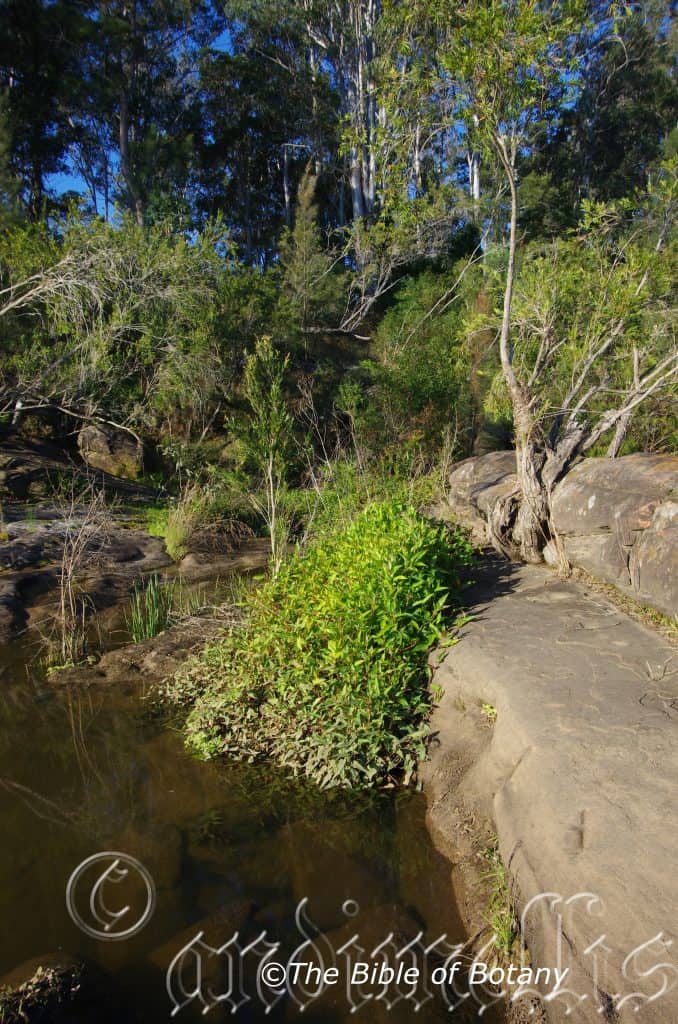
Clarence River Molle ville Rocks NSW
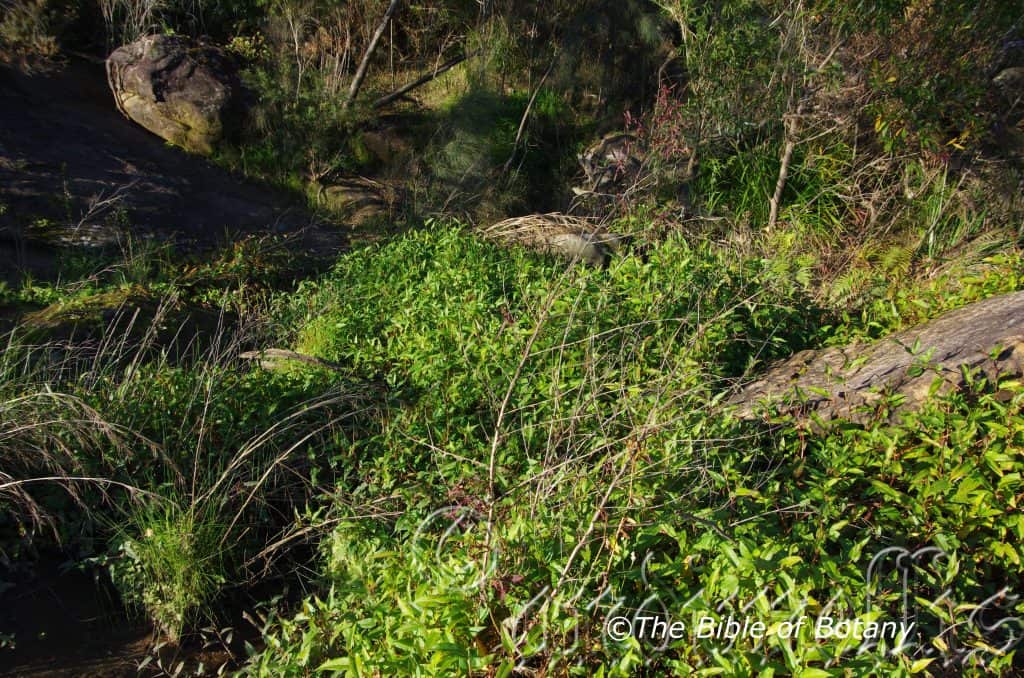
Clarence River Molle ville Rocks NSW
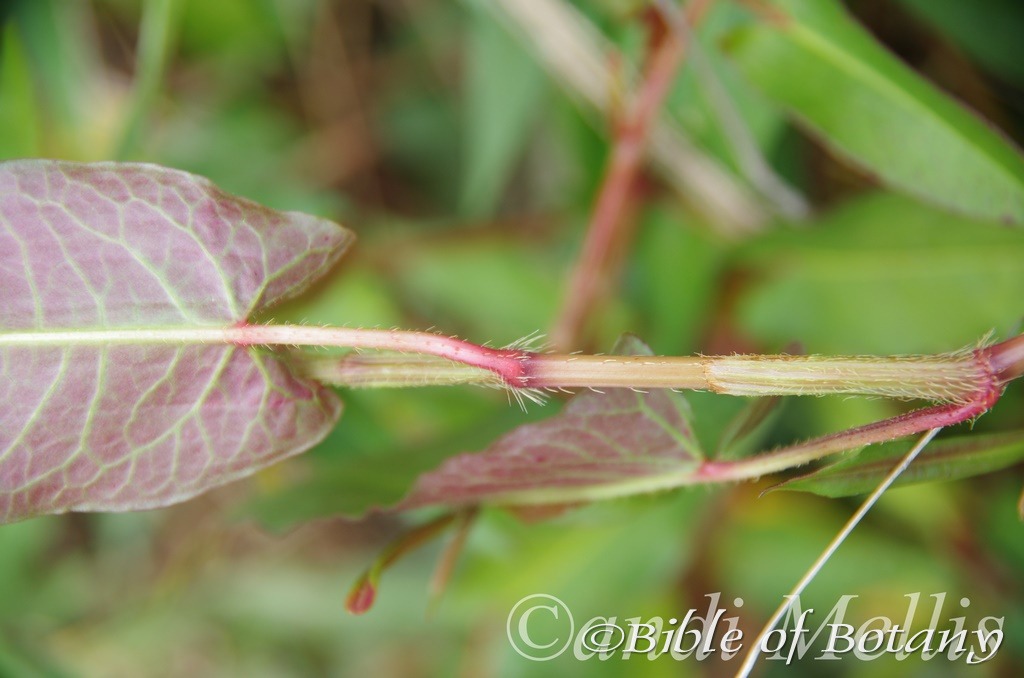
Yuraygir National Park NSW
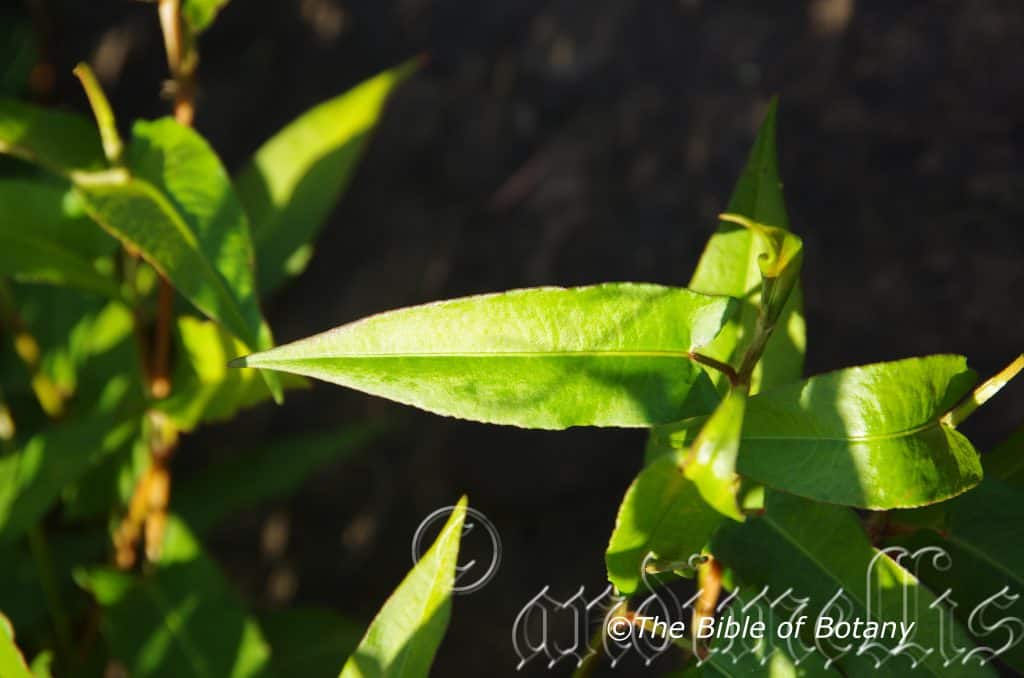
Clarence River Molle ville Rocks NSW
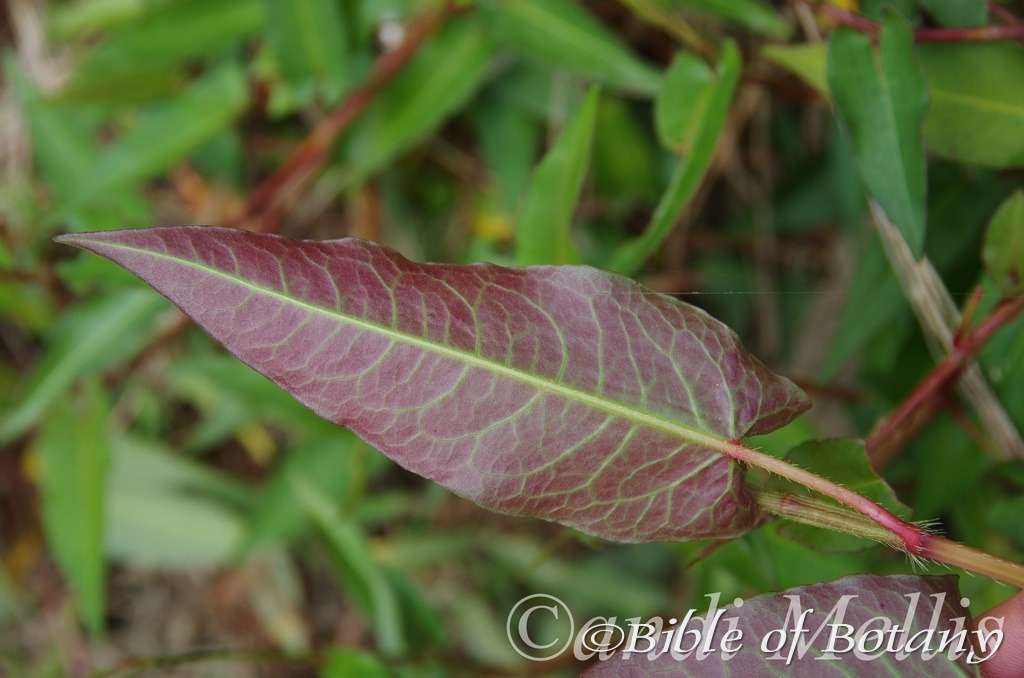
Clarence River Molle ville Rocks NSW
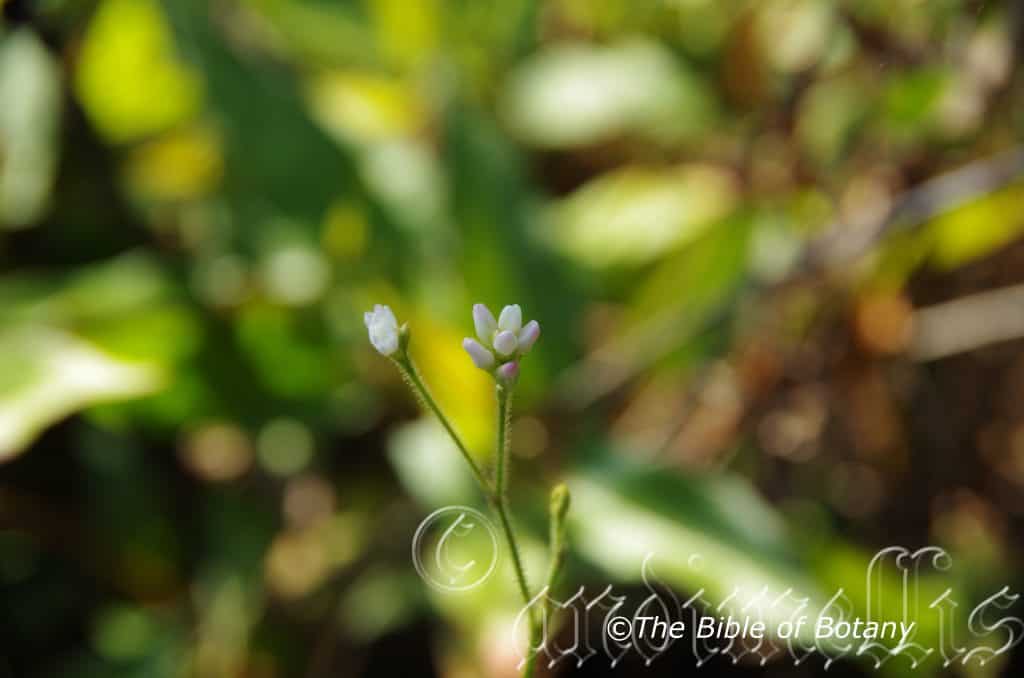
Clarence River Molle ville Rocks NSW
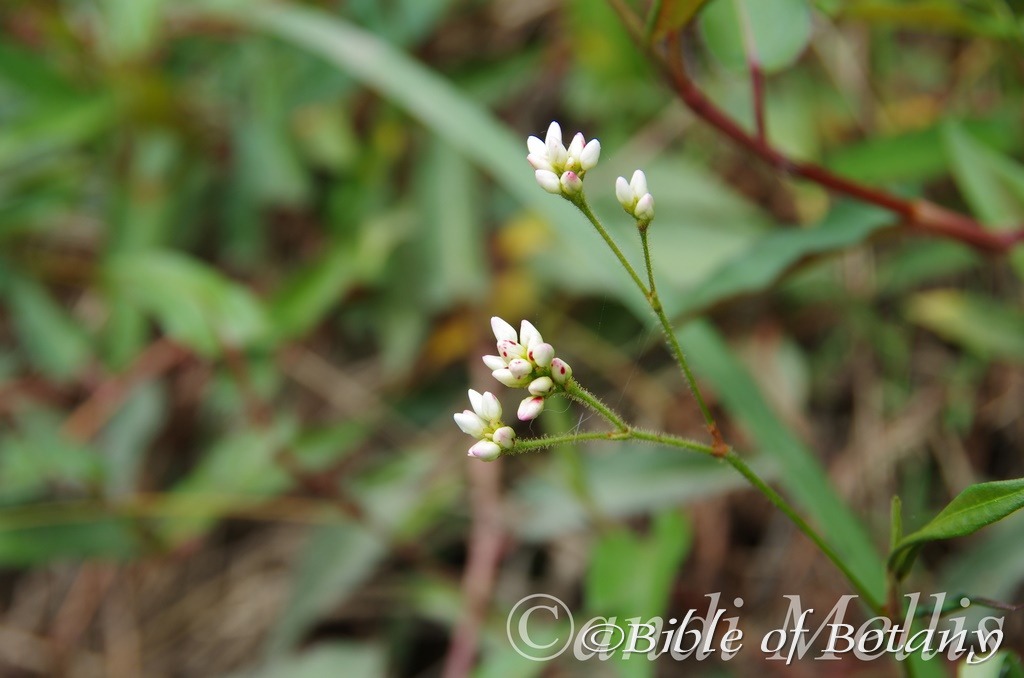
Yuraygir National Park NSW
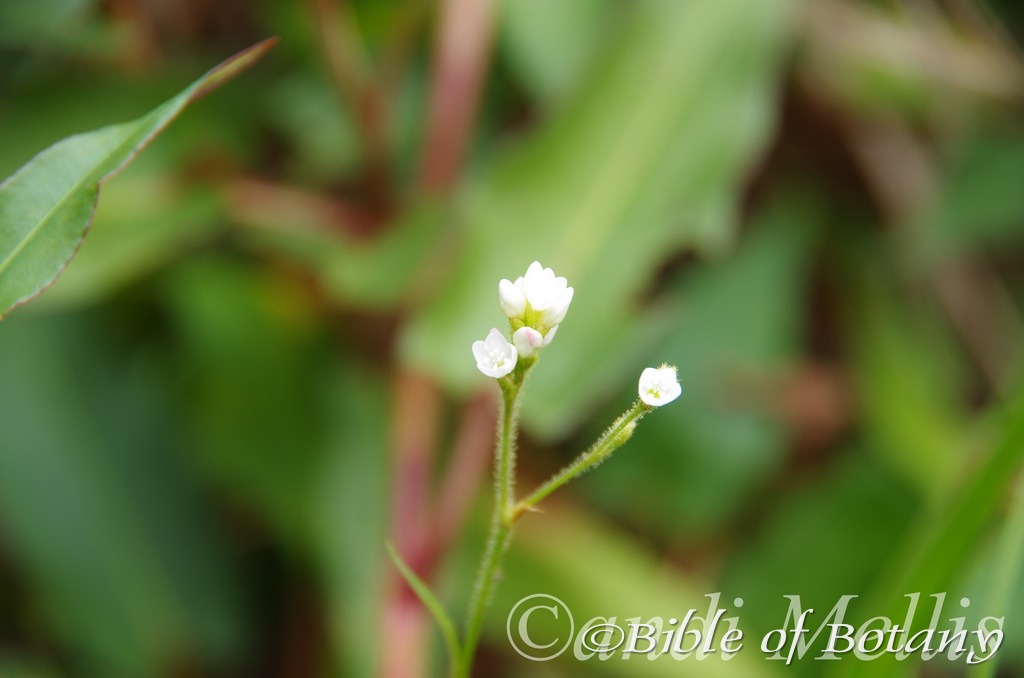
Yuraygir National Park NSW
Persicaria strigosa
Classification:
Unranked: Eudicots
Unranked:
Order: Caryophyllales
Family: Polygonaceae
Subfamily: Polygonoideae
Genus: From Persicaria, which is Ancient Greek for the peach tree. It refers to leaves, which are similar to those of the wild peach trees of Asia Minor.
Specie: From Strig?sum, which is Latin for lean, lank, thin or meager. It refers to structures, which have very few organs, and often refers to having stiff bristly hairs.
Sub specie:
Common Name: Spotted Knot Weed. It is known as Bambil Bambil in the Gumbaynggirr Aboriginal language.
Distribution:
Persicaria strigosa is found in a single population on the Goromuru River in the north east of the Northern Territory.
In the east it is found in several disjunct populations. It is found south from Abattoir Swamp near Mareeba to Trebonnie Creek near Ingham and the Clarke Range to East Funnel Creek near Sarina in north east Queensland. It is also found south from Baldwin Swamp in southern coastal Queensland to Shoalhaven Heads in central coastal New South Wales then further south at Tilba Tilba and Martins Creek near Orbost in north eastern Victoria and Victor Harbour and Bonython Conservation Park in South Australia. It is found on and east of the Great Dividing Range to the coast except for an isolated population near Taroom
https://avh.ala.org.au/occurrences/search?taxa=Persicaria+strigosa#tab_mapView
Habitat Aspect Climate:
Persicaria strigosa prefers full sun to light dappled shade. It grows on the edge of permanent, slow, flowing water in creeks and streams, drainage channels, adjacent to and in coastal swamps, on alluvial flats or on the edge of billabongs, dams or shallow depressions. It is found in open sclerophyll forests woodland mallee country and open woodlands. The altitude ranges from 10 meters ASL to 700 meters ASL.
The temperatures range from minus 2 degrees in July to 40 degrees in January.
The rainfall ranges from lows of 500mm to 3000mm average per annum.
Soil requirements:
Persicaria strigosa prefers sandy loams to heavy clays with a high proportion of leaf litter. The soils are usually derived from alluvial deposits. The soils pH ranges from 4.5pH to 7pH. It tolerates water logged soils often growing as an emergent plant. Non saline soils to moderately saline soils are tolerated.
Height & Spread:
Wild Plants: 0.2m to 1m by 0.3m to 0.5m.
Characteristics:
Persicaria strigosa grows as an erect, creeping, prostrate or decumbent perennial herb. The slender stems are pale grass-green, reddish-green to purplish-green and are moderately covered in long white to pale yellowish-fawn antrorse to divaricate strigose hairs.
The alternate, hastate or sagittate leaves of Persicaria strigosa, measure 40mm to 65mm in length by 15mm to 32mm in width. The ochre is sparsely covered in white to pale yellowish-fawn antrorse strigose hairs and long white ciliate hairs on the margins. The petioles are sparsely covered in white to pale yellowish-fawn antrorse and spreading strigose hairs and measure 8mm to 25mm in length. The bases are typical hastate or sagittate while the apexes typically taper to an acute tip. The discolourous laminas are olive-green to grass-green and glabrous on the upper laminas while the lower laminas are slightly paler. The laminas are flat or curve upwards from the mid vein to the margins or gently decurve slightly near the margins and a straight or decurve downwards near the apexes. The lobes curve upwards at the base. The margins are entire. The mid vein is prominent on the lower lamina and is visible on the upper lamina. The lateral veins are slightly prominent on the lower laminas. The mid vein and lateral veins are sparsely covered in long white to pale yellowish-fawn antrorse to divaricate or at times retrorse strigose hairs.
The inflorescences of Persicaria strigosa are born on sparse panicles with long slender branches from the leaf axils. The erect panicles have 2 to 4 branches with clusters of 6 to 12 small terminal sub globose flower clusters that measure 5–10 mm in length. The bracts are crowded at end of the branches. The branches are moderately covered in long white to pale yellowish-fawn antrorse, spreading or divaricate hirsute hairs. The cupular calyx and 4 obtuse lobes are the same colour as the pedicels and stems. The white to pastel pink perianths measure 3mm to 3.7mm in diameter. The 5 white to pale pink petals measure 3.2mm to 3.5mm in length. The flowers appear throughout the warmer months.
Perscaria strigosa’s fruits are lenticular or trigonous achenes. The green achenes turn deep reddish-brown when ripe. The achenes measure 2.3mm to 3mm in length by 1.8mm to 2.2mm in diameter.
Wildlife:
Perscaria strigosa’s is eaten by the Pretty Face Wallaby (Macropus parryi) and the Swamp Wallaby (Wallabia bicolor). The plants at Nana Glen were often eaten right down to the ground leaving just the older tougher parts of the stems in tack to reshoot.
Cultivation:
Persicaria strigosa is a useful herb for stock and can be used for an alternative food source in hard times. It needs a lot more scientific work as some studies from Africa state that Persicaria may lead to heart arrest if consumed in large quantities. The leaves and stems are rather bland. In cultivation it grows from 0.5 meters to 1.2 meters in height by several meters in diameter very quickly which makes them ideal for restoration work along wet and damp creek banks.
It grows exceptionally well on lighter soils When deep leaf litter keeps the soil cool and moisture at an even level. If these requirements are met they can cope with temperatures as low as minus 2 degrees and up to 33 degrees. It is not drought resistant.
Add to the above, if it is given an adequate water supply and native fertilizers on a regular basis the plants will respond very quickly.
It can be grown in a large aquarium or outdoor fish or frog pond to great effect. It is an emergent plant that handles being submerged in shallow water like in aquariums very well provided the is plenty of light.
Propagation:
Seeds: Seeds of Persicaria strigosa can be moved easily from the plants as they dry. Once Perscaria decipiens has finished flowering and the fruits have swollen cut the heads off and place them in a calico bag.
Sow freshly collected seeds directly into a seed raising mix, keeping them wet. When the seedlings are 30mm to 40mm tall, prick them out and plant them into 50mm native tubes using a good organic mix.
As the seedlings roots reach the bottom of the tubes plant them out into their permanent position. Do not delay as the plants have some set back once they start to lose their vigour.
Seeds can be broad cast directly onto the ground immediately after or during rain/wet periods.
Fertilize using seaweed, fish emulsion or organic chicken pellets soaked in water on an alternate basis. Fertilize every two months until the plants are established then twice annually in early September and March to maintain better health, vitality and flowering.
Be careful with fertilizing the plants if it is grown in water as fertilizers will pollute the water very quickly sending it green.
Cuttings: Fortunately Persicaria strigosa cuttings strike easy. Use 150mm to 300mm long tip cuttings or lateral shoots from the present season’s growth. Take them in warmer months of the year. Remove half the leaves from the bottom section being careful not to tear the bark.
If placing directly into a watery environment then take longer material to 500mm that already have some root development though root development is not necessary.
1 Prepare the cutting mix by adding two thirds sharp clean river sand, one third peat or one third perlite. These ingredients must be sterilized,
2 Select good material from non diseased plants,
3 Look for a stem with two or three nodes,
4 Place the cutting on a flat, hard surface, and make a clean cut down one side of the cutting at the base for 10mm with a sharp sterile knife or razor blade. – This scarification of the node will increase the chances of roots emerging from this spot. Now remove all but one or two the leaves, leaving the apex leaves in tact. If the leaves are very large in proportion to the stem, cut off the apical halves.
5 Hormone is not required,
6 Use a small dipple stick or old pencil to poke a hole into the soilless potting mix. Ensure the hole is slightly larger than the stem diameter,
7 I like to place the tubes in bucket with 50mm to 70mm of water in it. A plastic bag that fits over the bucket is ideal to help maintain temperature and moisture. Place in a semi shaded, warm position like under 50mm shade cloth.
8 When the cuttings have struck; which usually takes a couple of weeks in warm weather, open the bag to allow air circulation for a few days to a week,
9 Once hardened off remove the cuttings from the bag and allow to further hardening for a few more days to a week,
10 Transplant into a good potting mix to grow on.
Fertilize using seaweed, fish emulsion or organic chicken pellets soaked in water on an alternate basis. Fertilize every two months until the plants are established then twice annually in early September or March to maintain health, vitality and better flowering.
Further Comments from Readers:
“Hi reader, it seems you use The Bible of Botany a lot. That’s great as we have great pleasure in bringing it to you! It’s a little awkward for us to ask, but our first aim is to purchase land approximately 1,600 hectares to link several parcels of N.P. into one at The Pinnacles NSW Australia, but we need your help. We’re not salespeople. We’re amateur botanists who have dedicated over 30 years to saving the environment in a practical way. We depend on donations to reach our goal. If you donate just $5, the price of your coffee this Sunday, We can help to keep the planet alive in a real way and continue to bring you regular updates and features on Australian plants all in one Botanical Bible. Any support is greatly appreciated. Thank you.”
In the spirit of reconciliation we acknowledge the Bundjalung, Gumbaynggirr and Yaegl and all aboriginal nations throughout Australia and their connections to land, sea and community. We pay our respect to their Elders past, present and future for the pleasures we have gained.
Persicaria subsessilis
Classification:
Unranked: Eudicots
Unranked:
Order: Caryophyllales
Family: Polygonaceae
Subfamily: Polygonoideae
Genus: From Persicaria, which is Ancient Greek for the peach tree. It refers to leaves, which are similar to those of the wild peach trees of Asia Minor.
Specie: From Sub, which is Ancient Greek/Latin for below or lower and Sessilis, which is Latin for low enough to sit on. It refers to pedicels or petioles, which are very short.
Sub specie:
Common Name: In the Gumbaynggirr Aboriginal language it is known as Bambil Bambil.
Distribution:
Persicaria subsessile is found on the Isdell River and near Kununurra in northern Western Australia.
On the east coast it is found in several disjunct populations mainly on and east of the Great Dividing Range with a few sparsely disjunct populations on the western slopes. It is found south from Copper Lode Falls near Cairns to Mount Emu Creek near Panmure in southern Victoria.
In Tasmania it is found around Launceston and on the Ringarooma River near Gladstone.
https://avh.ala.org.au/occurrences/search?taxa=Persicaria+subsessilis#tab_mapView
Habitat Aspect Climate:
Persicaria subsessilis prefers full sun to light dappled shade. It grows on the edges of permanent, slow, flowing water in creeks and streams, drainage channels, adjacent to and in coastal swamps, on alluvial flats or on the edge of billabongs or dams. It is found in open sclerophyll forests and open woodlands. The altitude ranges from 10 meters ASL to 480 meters ASL.
The temperatures range from minus 2 degrees in July to 40 degrees in January.
The rainfall ranges from lows of 400mm to 2000mm average per annum.
Soil requirements:
Persicaria subsessilis prefer sandy loams to medium clays with a high proportion of leaf litter. The soils are usuallyderived from alluvial deposits. The soils pH ranges from 4.5pH to 7pH. It does not tolerate of water logged soils. Non saline soils to moderately saline soils are tolerated.
Height & Spread:
Wild Plants: 0.2m to 1m by very large areas.
Characteristics:
Persicaria subsessilis grows as a stout decumbent perennial herb with slender stems. The pale grass-green, reddish-green, grass-green stems are tinged reddish or yellowish. The stems are moderately covered in long, white, course, antrorse hirsute hairs. The hairs measure 0.3mm to 2.5mm in length.
The alternate, lanceolate to very narrow elliptic leaves of Persicaria subsessilis measure 60mm to 150mm in length by 8mm to 23mm in width. The ochre is sparsely covered in white to antrorse hirsute hairs and long white ciliate hairs on the margins. The ocrea measures 4mm to 10mm in length. The petioles are sparsely covered in coarse, white antrorse and spreading hirsute hairs and measure 1.5mm to 2.5mm in length. The bases are cuneate while the apexes are acute. The discolourous laminas are deep green, olive-green or grass-green and moderately covered in coarse, white antrorse hirsute hairs on the upper laminas while the lower laminas are much paler and covered in short, coarse, white antrorse hirsute hairs. The laminas are flat or curve slightly upwards from the mid vein to the margins and decurve gently downwards near the apexes. The mid vein is prominent on both laminas while the lateral veins are slightly prominent on the lower laminas. The mid vein and lateral veins are sparsely to moderately covered in long, white, coarse antrorse hirsute hairs.
The inflorescences of Persicaria subsessilis are born on dense elongate cylindrical spikes from the leaf axils. The erect spikes measure 20mm to 50mm in length by 5mm to 8mm in diameter. The white to pink perianth measures 2.2mm to 3mm in length. The 5 white to pink oblong lobes measure 2.5mm to 3mm in length and lengthen to 3.5mm When the fruits are ripe.
The 7 stamens are alternating with 7 glands at the base of the perianth. The pale pink, translucent filaments and anthers measure 2.8mm to 3.4mm in length. Periscaria decipiens flowers from January to April.
Persicaria subsessilis’s fruits are lenticular achenes. The green achenes turn black when ripe. The achenes measure 2mm to 2.5mm in length by 1.2mm to 2mm in diameter.
Wildlife:
Persicaria subsessilis’s wildlife is unknown to the author.
Cultivation:
Persicaria subsessilis is a useful herb for stock and can be used for an alternative food source in hard times. The leaves and stems are rather bland. It needs a lot more scientific work as some studies from Africa state that Persicaria may lead to heart arrest if consumed in large quantities. In cultivation it will grow from 0.4 meters to 0.7 meters in height by 1 meter to 1.5 meters in diameter very quickly which makes them ideal for restoration work along wet and damp creek banks.
It grows exceptionally well on lighter soils When deep leaf litter keeps the soil cool and moisture at an even level. If these requirements are met they can cope with temperatures as low as minus 2 degrees and up to 33 degrees. It is not drought resistant.
Add to the above, if it is given an adequate water supply and native fertilizers on a regular basis the plants will respond very quickly.
It can be grown in are large aquarium or outdoor fish or frog pond to great effect. It is an emergent plant that handles being submerged in shallow water like in aquariums very well provided the is plenty of light.
Propagation:
Seeds: The seeds of Persicaria subsessilis can be moved easily from the plants as they dry. Once Perscaria subsessilis has finished flowering and the fruits have swollen cut the heads off and place them in a calico bag.
Sow freshly collected seeds directly into a seed raising mix, keeping them wet. When the seedlings are 30mm to 40mm tall, prick them out and plant them into 50mm native tubes using a good organic mix.
As the seedlings roots reach the bottom of the tubes plant them out into their permanent position. Do not delay as the plants have some set back once they start to lose their vigour.
Seeds can be broad cast directly onto the ground immediately after or during rain/wet periods.
Fertilize using seaweed, fish emulsion or organic chicken pellets soaked in water on an alternate basis. Fertilize every two months until the plants are established then twice annually in early September and March to maintain better health, vitality and flowering.
Be careful with fertilizing the plants if it is grown in water as fertilizers will pollute the water very quickly sending it green.
Cuttings: Fortunately Persicaria subsessilis cuttings strike easy. Use 150mm to 300mm long tip cuttings or lateral shoots from the present season’s growth. Take them in warmer months of the year. Remove half the leaves from the bottom section being careful not to tear the bark.
If placing directly into a watery environment then take longer material to 500mm that already have some root development though root development is not necessary.
1 Prepare the cutting mix by adding two thirds sharp clean river sand, one third peat or one third perlite. These ingredients must be sterilized,
2 Select good material from non diseased plants,
3 Look for a stem with two or three nodes,
4 Place the cutting on a flat, hard surface, and make a clean cut down one side of the cutting at the base for 10mm with a sharp sterile knife or razor blade. – This scarification of the node will increase the chances of roots emerging from this spot. Now remove all but one or two the leaves, leaving the apex leaves in tact. If the leaves are very large in proportion to the stem, cut off the apical halves.
5 Hormone is not required,
6 Use a small dipple stick or old pencil to poke a hole into the soilless potting mix. Ensure the hole is slightly larger than the stem diameter,
7 I like to place the tubes in bucket with 50mm to 70mm of water in it. A plastic bag that fits over the bucket is ideal to help maintain temperature and moisture. Place in a semi shaded, warm position like under 50mm shade cloth.
8 When the cuttings have struck; which usually takes a couple of weeks in warm weather, open the bag to allow air circulation for a few days to a week,
9 Once hardened off remove the cuttings from the bag and allow to further hardening for a few more days to a week,
10 Transplant into a good potting mix to grow on.
Fertilize using seaweed, fish emulsion or organic chicken pellets soaked in water on an alternate basis. Fertilize every two months until the plants are established then twice annually in early September or March to maintain health, vitality and better flowering.
Further Comments from Readers:
“Hi reader, it seems you use The Bible of Botany a lot. That’s great as we have great pleasure in bringing it to you! It’s a little awkward for us to ask, but our first aim is to purchase land approximately 1,600 hectares to link several parcels of N.P. into one at The Pinnacles NSW Australia, but we need your help. We’re not salespeople. We’re amateur botanists who have dedicated over 30 years to saving the environment in a practical way. We depend on donations to reach our goal. If you donate just $5, the price of your coffee this Sunday, We can help to keep the planet alive in a real way and continue to bring you regular updates and features on Australian plants all in one Botanical Bible. Any support is greatly appreciated. Thank you.”
In the spirit of reconciliation we acknowledge the Bundjalung, Gumbaynggirr and Yaegl and all aboriginal nations throughout Australia and their connections to land, sea and community. We pay our respect to their Elders past, present and future for the pleasures we have gained.

Castle Hill Townsville Qld.
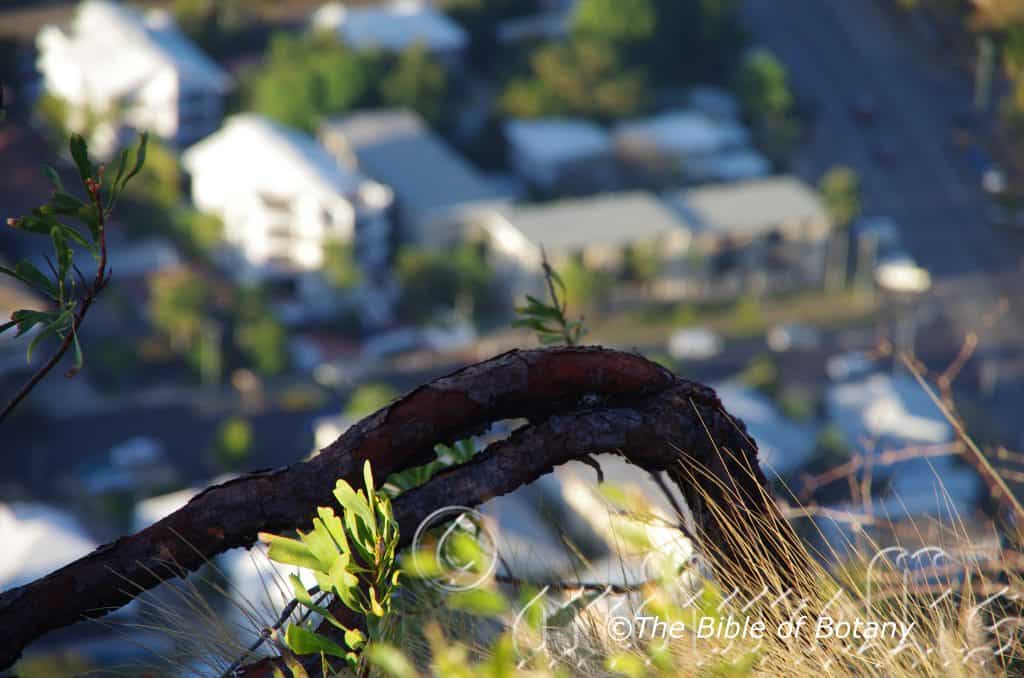
Castle Hill Townsville Qld.

Castle Hill Townsville Qld.
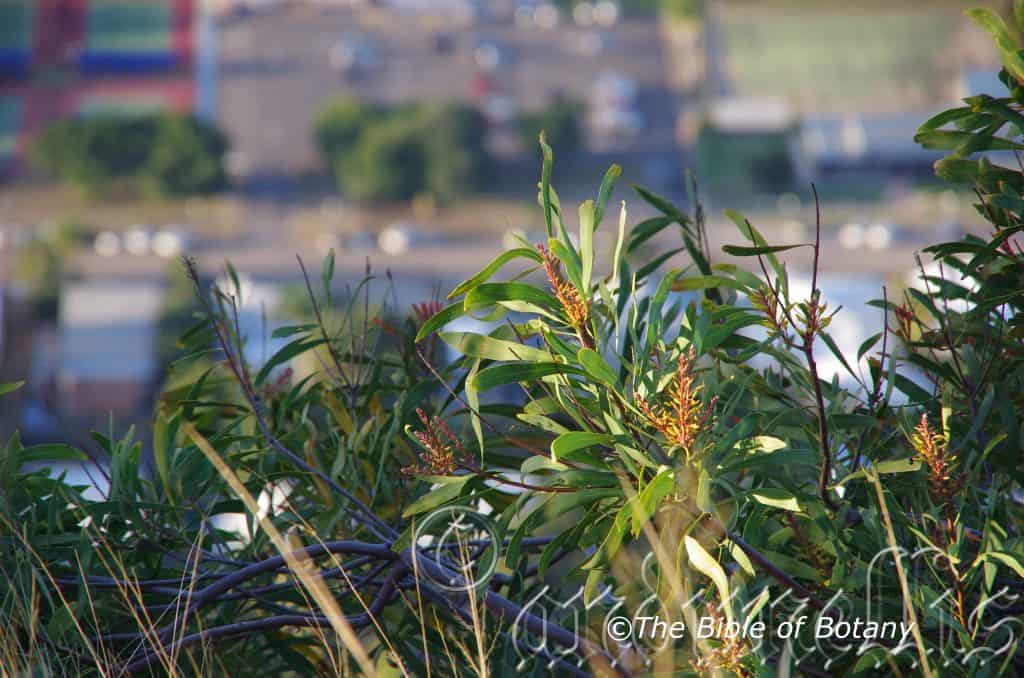
Castle Hill Townsville Qld.
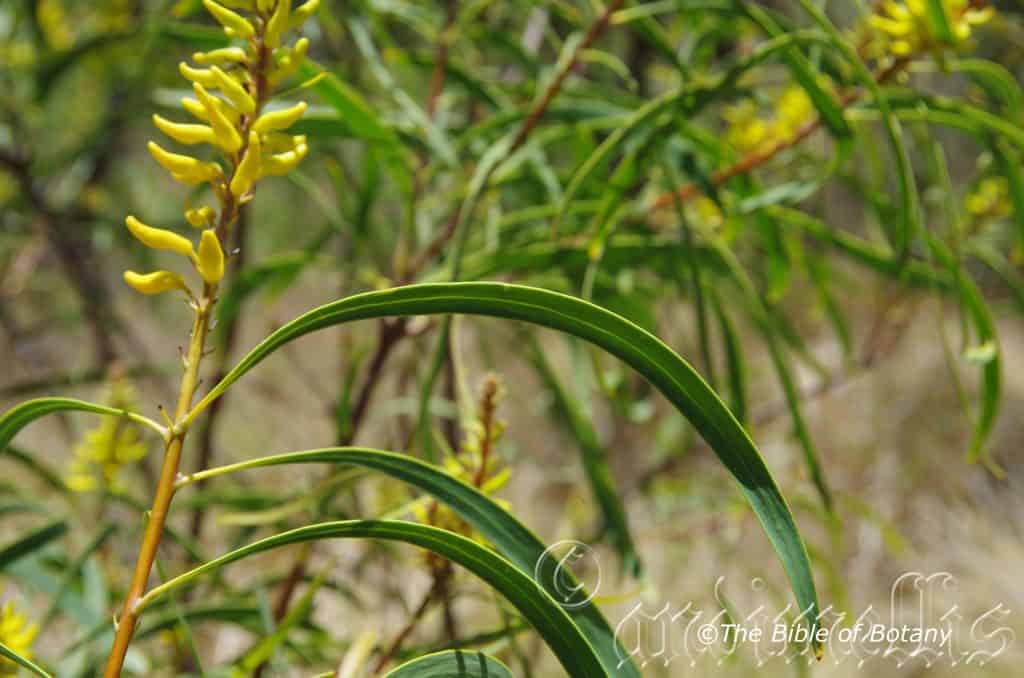
Castle Hill Townsville Qld.
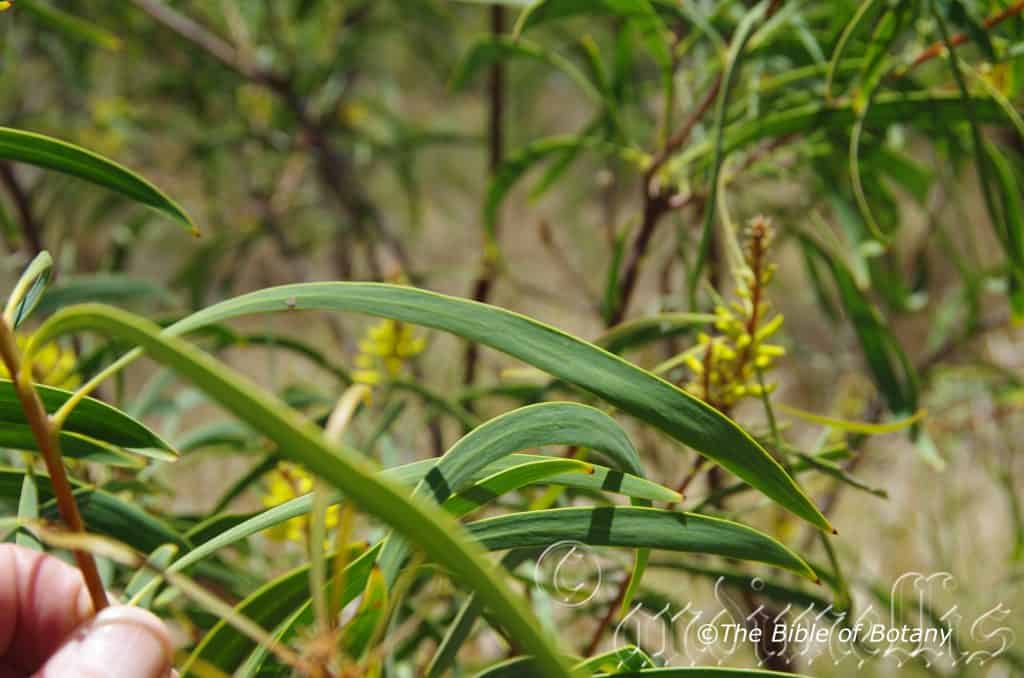
Castle Hill Townsville Qld.

Castle Hill Townsville Qld.
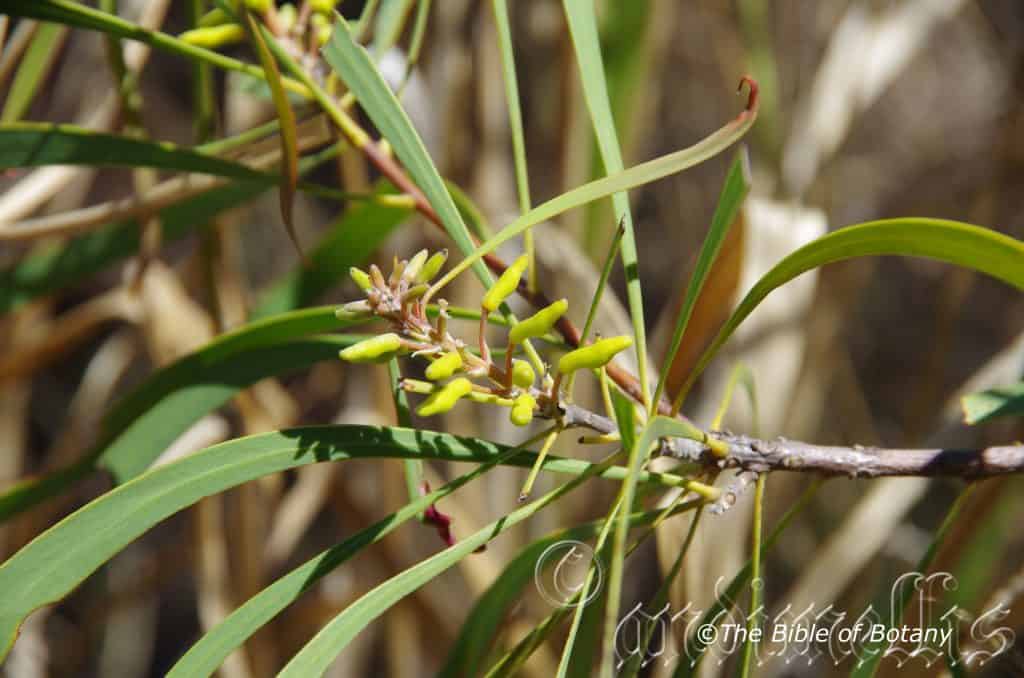
Castle Hill Townsville Qld.
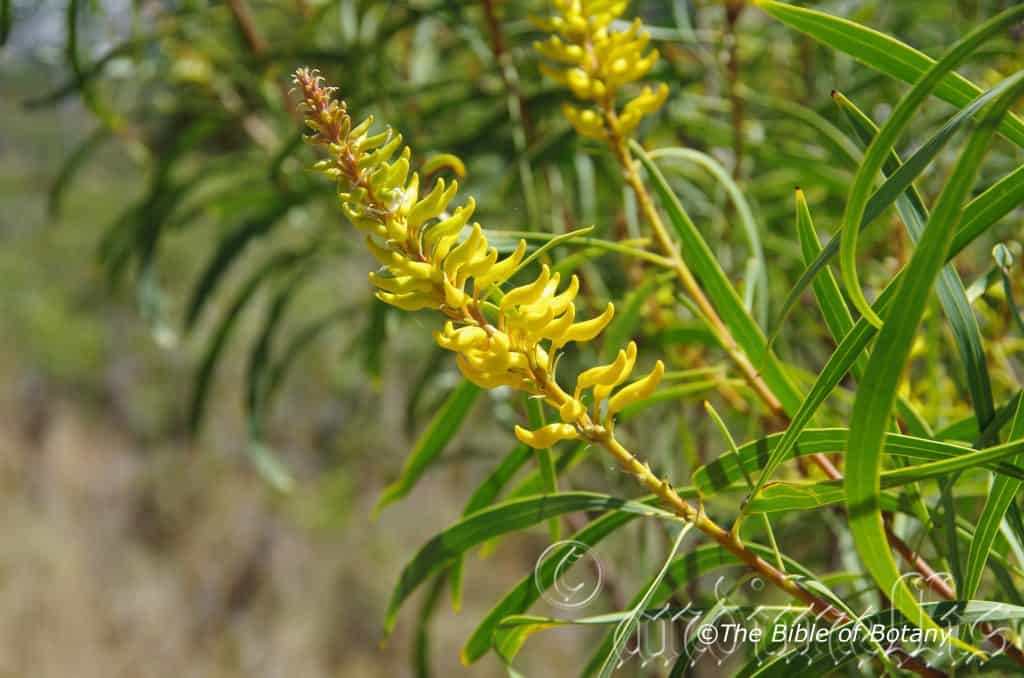
Castle Hill Townsville Qld.

Castle Hill Townsville Qld.
Persoonia falcata
Classification:
Unranked: Eudicots
Order: Proteales
Family: Protecaceae
Subfamily: Persoonioideae
Genus: Is named in honour of Christian Hendrik Persoon; 1761-1836, who was a French botanist who specialised in Fungi.
Specie: From Falcata, which is Latin for curved, hooked or shaped like a sickle. It refers to leaves, which have the form or shape of a scythe.
Sub specie:
Common Name: Geebung.
Distribution:
Persoonia falcata is found north from an arched line from the Pilbara Coast in northern Western Australia to Injune in central Queensland. It is also found on the off shore islands.
https://avh.ala.org.au/occurrences/search?taxa=Persoonia+falcata#tab_mapView
Habitat Aspect Climate:
Persoonia falcata prefers dappled shade to full sun. It usually grows in drier type coastal heaths to dry sclerophyll forest open woodlands and savannah grasslands along the coast and inland. It also grows along watercourses and gorges inland and on headlands, rocky outcrops and exposed situations closer to the coast. The altitude ranges from 5 meters ASL to 1100 meters ASL.
The temperatures range from 1 degree in July to 45 degrees in January.
The rainfall ranges from lows of 200mm to 3000mm average per annum.
Soil requirements:
Persoonia falcata prefer sands, sandy loams to light gritty clays with a high proportion of gravel and stone. The soils are usuallyderived from decomposed or partially decomposed sandstone, sandstone or granitic outcrops or alluvial soils. It is also found on granite-based and lateritic soils. The soils pH ranges from 5pH to 7.5pH. It does not tolerate of water logged soils. Non saline soils to moderately saline soils are tolerated as are salt laden winds.
Height & Spread:
Wild Plants: 1m to 9m by 3m to 5m.
Characteristics:
Persoonia falcata grows as a small erect bushy shrub or small tree. The trunk is grey and somewhat furrowed, while the major branches are reddish-brown and flaky. The new growth and juvenile shoots are yellowish-green to pale olive-yellow and sparsely to moderately covered in soft, white pubescent hairs.
The alternate or sub opposite, narrow falcate leaves are at times somewhat narrow ovate of Persoonia falcata are smooth, leathery and measure 100mm to 200mm in length by 6mm to 24mm in width. The terete yellow petioles are swollen at the base and measure 4mm to 12mm in length. The bases are strongly attenuate while the apex is broadly acute to broadly acuminate. The concolourous, coriaceous laminas are bright grass-green and sparsely to moderately covered in white, caduceous, pubescent hairs. The laminas are flat while the thickened margins are entire. The mid vein is prominent on both laminas, while the lateral veins are faintly visible on both laminas.
The inflorescences of Persoonia falcata are born in dense terminal racemes, which measure 50mm to 65mm in length and singly in the leaf axils beneath the racemes. The long deltoid stipules measure 4mm to 6mm in length. The pedicels, calyxes, perianths and lobes are all moderately covered in short, white, silky, appressed pubescent hairs. The pedicels measure 5mm to 10mm in length. The bright yellow corolla measures 10mm to 15mm in length while the 4 strongly flexed, acute to acuminate lobes measure 5mm to 8mm in length. The ovary is glabrous.
The 4 deep yellow filaments support the oblong white anthers that measure 0.3mm to 0.5mm in length.
The deep yellow style measures 4mm to 6mm in length. The flowers appear from June to September and at times through to November.
Persoonia falcata’s fruits are ovate drupes. The drupes measure 15mm to 20mm in length by 8mm to 11mm in width. The greenish-yellow drupes turn yellowish and are pulpy when ripe. The style is persistent on a small beak on the ripe fruits. The single creamy-fawn oblong seed is woody.
Distinguishing Features:
Persoonia falcata is very similar to Persoonia media, Persoonia conjuncta and Persoonia stradbrokensis. Persoonia katerae but has leaves, which turn black when dried. Leaves beneath the trees are a good sign as are the appressed to antrorsely spreading, short, greyish hairs that are moderately dense on the branchlets and petioles. It has 2 ovules per carpel. It hybridises sporadically with Persoonia lanceolata where the 2 species distributions overlap.
It superficially resembles Grevillea parallela and Grevillea striata, but the leaves do not have the prominent parallel veins of the 2 Grevillea species.
Wildlife:
Persoonia falcata’s interaction with wildlife is truly remarkable. The best example is that of Persoonia specie and their pollinators. There is a close relationship between the way that the pollinators have evolved and the evolution of the flowers themselves. The native bees especially those within the Leioproctus subgenus Cladocerapis which almost exclusively feed on the nectar provided by Persoonia. The behaviour of these bees on Persoonia flowers is markedly predictable.
Both the male bees and female bees land on the apical cross made by the flexed anthers, They then orient themselves to face one of the anthers apexes then slide, face down, between the anther and the style to reach the 2 nectar glands either side of the anther.
The bee then reverse crawls backwards to the top of the anther’s cross, makes a 180° turn, then repeats the process on the other side of the flower to drink the nectar from the 2 nectaries adjacent to the anthers on the other side.
The female bees of Leioproctus subgenus Cladocerapis gather pollen grains with their legs while drinking nectar or reversing up the anther column as the pollen is often situated on the outer reaches of the anthers.
Leioproctus, subgenus Filiglossa also specialize in feeding on Persoonia’s flowers. These smaller native bees are pirates of the bee world stealing whatever pollen they find lying about and drinking spilt nectar. It is not an efficient pollinator.
The fleshy fruits of Persoonia species are adapted for nocturnal animal dispersal by appearing as white glows against a black backdrop to many mammals. Mammals like the Common Brush Tail Possum (Trichosurus vulpecula), the Common Ringtail Possum (Pseudocheirus peregrinus), Little Red Flying Fox (Pteropus scapulatus) and Grey Headed Flying Fox (Pteropus poliocephalus). Scavengers like the Common Bandicoots (Isoodon macrourus) and (Isoodon obesulus) or native rats and mice like the Giant White Tailed Rat (Uromys caudimaculatus) and the little native mouse (Pseudomys delicatulus) will join to collect any fallen fruits.
Day time activists include the Grey Currawong (Strepera versicolor), Black Jay or Black Currawong (Strepera fuliginosa), Pied Currawong (Strepera graculina) are thought to be the most important dispersers of large numbers of seeds over a larger area.
Parrots, also feed on Persoonia falcata’s fruits, but the fruit (and seed) they eat a usually unripe and therefore making them ineffective dispersers of the seeds and more predatory rather than symbiotic.
The soft fruits are edible but have a lot to be desired in flavour. The flavour is very slightly reminiscent of apricots. (Some will probably tell me I have a good imagination.) The best thing about the fruits is the texture and size. Maybe in the future some entrepreneurial young farmer will cull the different qualities and introduce a fruit to the market that is a little sweeter and with better flavour.
Cultivation:
Persoonia falcata is a fresh green looking small tree that deserves a place in every temperate or sub-tropical native garden. It is ideal in almost every setting near ponds, at the edge of a rain forest in dry to moist Eucalyptus forests or larger rockeries where their size is balanced. In cultivation it grows from 8 meters to 10 meters in height by 4 meters to 5 meters in diameter or much smaller on rocky exposed positions.
It grows exceptionally well on yellow or red sands and lighter sandy soils When deep leaf litter keeps the soil cool and moisture at an even level. If these requirements are met it can cope with temperatures as low as minus 2 degrees and up to 45 degrees. It is very drought resistant even in the lowest rainfall zones.
Add to the above, if it is given a little additional water and a little native fertilizer on a regular basis the plants will respond with a long prolific flowering period and copious quantities of fruit.
It often reaches its full potential in just 5 years and flower from the third year from seed. Plants will live naturally for 8 to 12 years so should be replaced every 9 to 10 years to maintain continuity in fruit for the birds and mammals.
Be imaginative when planting in mass. Use the plants in different configurations and use curves.
It is best used adjacent to small areas of bush close to paths or the house so their bright green leaves can be viewed regularly. It is great in small to large rockeries where fill in plants beneath can be used with whatever shape leaves or colour flowers the owner prefers. He they can be planted in small groups of 2 or 3 scatted as you would find them in nature to give a great bush scene. It is best used in the mid ground surrounded by shorter plants with finer foliages with white or red flowers so it will dominate at the center of the bed.
Persoonia falcata can be hidden from view or planted in the background of a bush landscape. He it will still make an impact with its foliage contrasting with almost every other plant in the garden.
Propagation:
Seeds: The seeds of Persoonia falcata can be moved easily from the plants as they ripen. Once they have started setting the fruits and some fruit have commenced falling to the ground it is just a matter of looking for the drupes and picking the soft ones. The success rate in sowing fresh seed, old seed, heat treated seeds and scarified by placing them in the fridge have all met with various degrees of fulfilment and failure. Nature obviously has the secret. Seeds in the field are consistently at different stages of development which means the fruits are affected differently in the environment to start germination.
In fact very few fruits ever hit the ground and none or very few germinate beneath the parent trees. This is where my theory that the fruits are continually being eaten by birds and possums, the seedlings, germinate throughout the bush away from the parent plant; they must rely on the different animals passing them through their gut first.
This sounds unpleasant but we have had success with this specie. Persoonia stradbrokiensis and Persoonia tenuifolia by finding seeds, which have passed through possums. Germination is over 60mm thus nature has at long last revealed her hidden secret for germinating Persoonia specie.
Some specie may rely on being buried for long periods and maybe fungus or bacterial action within the soil acts the same way as gut bacteria of birds and mammals. The theories all break down as when there is a bushfire as hundreds of seeds germinate over the burnt land very quickly all at the same time yet ash water and heat failed in our trials.
Seeds need to be collected and washed under the hose to move all traces of any scat or allowed to decompose naturally before sowing.
Another hypothesis; not yet tested, is maybe animal saliva contains an enzyme which assists in the germination of the seeds. This could be tested by eating the flesh off the seeds and spitting them out then planting those seeds without further washing.
Sow treated seeds directly into a seed raising mix, keeping them moist not wet. When the seedlings are 20mm to 25mm tall, prick them out and plant them into 50mm native tubes using a good organic mix.
As the seedlings roots ach the bottom of the tubes plant them out into their permanent position. You should not delay as some set back will occur on transplanting.
Fertilize using seaweed, fish emulsion or organic chicken pellets soaked in water on an alternate basis. Fertilize every two months until the plants are established then twice annually in early September and March to maintain better health, vitality and flowering.
Further Comments from Readers:
“Hi reader, it seems you use The Bible of Botany a lot. That’s great as we have great pleasure in bringing it to you! It’s a little awkward for us to ask, but our first aim is to purchase land approximately 1,600 hectares to link several parcels of N.P. into one at The Pinnacles NSW Australia, but we need your help. We’re not salespeople. We’re amateur botanists who have dedicated over 30 years to saving the environment in a practical way. We depend on donations to reach our goal. If you donate just $5, the price of your coffee this Sunday, We can help to keep the planet alive in a real way and continue to bring you regular updates and features on Australian plants all in one Botanical Bible. Any support is greatly appreciated. Thank you.”
In the spirit of reconciliation we acknowledge the Bundjalung, Gumbaynggirr and Yaegl and all aboriginal nations throughout Australia and their connections to land, sea and community. We pay our respect to their Elders past, present and future for the pleasures we have gained.
Persoonia katerae
Classification:
Unranked: Eudicots
Order: Proteales
Family: Protecaceae
Tribe: Persoonioideae
Genus: Is named in honour of Christian Hendrik Persoon; 1761-1836, who was a French botanist who specialised in Fungi.
Specie: Is named in honour of Kater.
Sub specie:
Common Name: Geebung.
Distribution:
Persoonia katerae is found south from Innes Nature Reserve near Port Macquarie to Boomerang Beach in the Great Lakes Shi with a few disjunct populations further north at Brooklana and Ballina in coastal New South Wales.
https://avh.ala.org.au/occurrences/search?taxa=Persoonia+katerae#tab_mapView
Habitat Aspect Climate:
Persoonia katerae prefers dappled shade to full sun. It usually grows in drier type coastal heaths to dry sclerophyll forest along the coast except for the Brooklana population which is found in a moist sclerophyll forest. The altitude ranges from 3 meters ASL to 40 meters ASL except for the population found at Brooklana which is at 558 meters ASL.
The temperatures range from minus 3 degrees in July to 36 degrees in January.
The rainfall ranges from lows of 1200mm to 2050mm average per annum.
Soil requirements:
Persoonia katerae prefer sands, sandy loams to light gritty clays with a high proportion of gravel and stone. The soils are usuallyderived from accumulated peaty beach sands or at times decomposed sandstones or gritty shales. The soils pH ranges from 5pH to 6pH. It does not tolerate of water logged soils. Non saline soils to very saline soils are tolerated as are salt laden winds.
Height & Spread:
Wild Plants: 3m to 6m by 3m to 5m
Characteristics:
Persoonia katerae grows as a small erect bushy tree. The trunk and branches are reddish-brown and slightly flaky. The new growth and juvenile shoots are grass-green and are moderately covered in soft, white pubescent hairs.
The alternate, narrow elliptic to oblanceolate leaves of Persoonia katerae measure 60mm to 170mm in length by 8mm to 22mm in width. The petioles measure 3mm to 5mm in length. The bases are attenuate while the apex is broadly acute to broadly acuminate. The concolourous laminas are bright grass-green and sparsely to moderately covered in white, caduceous, pubescent hairs. The laminas are flat while the margins are entire. The mid vein and lateral veins are not prominent on either lamina.
The inflorescences of Persoonia katerae are born singularly from the leaf axils or a subtended on short leafy shoots. The pedicels, calyxes, perianths and lobes are all moderately covered in short, white, silky, caduceous pubescent hairs. The pedicels measure 3mm to 5mm in length. The bright yellow corolla measures 3mm to 3.5mm in length while the 4 strongly flexed, acute to acuminate lobes measure 9mm to 12mm in length. The ovary is bright yellow and glabrous.
The 4 deep yellow stamens are united and form a staminal tube around the style on the basal half. The filaments are flexed with crimson margins measure 5.5mm to 7.5mm in length.
The deep yellow style measures 5mm to 8mm in length. The flowers appear throughout the year under favourable conditions.
Persoonia katerae’s fruits are flattened globose drupes. The drupes measure 8mm to 17mm in length by 6mm to 17mm in width. The green drupes turn yellowish-green when ripe. The style is persistent on the ripe fruits. The single oblong seed is woody and creamy-fawn.
Distinguishing Features:
Persoonia katerae is very similar to Persoonia media, Persoonia conjuncta and Persoonia stradbrokensis. Persoonia katerae consistently has leaves that turn black when dried. Leaves beneath the trees are a good sign as are the appressed to antrorsely spreading, short, greyish hairs that are moderately dense on the branchlets and petioles. It has 2 ovules per carpel. It hybridises sporadically with Persoonia lanceolata When the 2 species distributions overlap.
Wildlife:
Persoonia katerae’s interaction with wildlife is truly remarkable. The best example is that of Persoonia specie and their pollinators. There is a close relationship between the way that the pollinators have evolved and the evolution of the flowers themselves. The native bees especially those within the Leioproctus subgenus Cladocerapis which almost exclusively feed on the nectar provided by Persoonia. The behaviour of these bees on Persoonia flowers is markedly predictable.
Both the male bees and female bees land on the apical cross made by the flexed anthers, They then orient themselves to face one of the anthers apexes then slide, face down, between the anther and the style to reach the 2 nectar glands either side of the anther.
The bee then reverse crawls backwards to the top of the anther’s cross, makes a 180° turn, then repeats the process on the other side of the flower to drink the nectar from the 2 nectaries adjacent to the anthers on the other side.
The female bees of Leioproctus subgenus Cladocerapis gather pollen grains with their legs while drinking nectar or reversing up the anther column as the pollen is often situated on the outer reaches of the anthers.
Leioproctus, subgenus filiglossa also specialize in feeding on Persoonia’s flowers. These smaller native bees are pirates of the bee world stealing whatever pollen they find lying about and drinking spilt nectar. It is not an efficient pollinator.
The fleshy fruits of Persoonia species are adapted for nocturnal animal dispersal by appearing as white glows against a black backdrop to many mammals. Mammals like the Common Brush Tail Possum (Trichosurus vulpecula), the Common Ringtail Possum (Pseudocheirus peregrinus), Little Red Flying Fox (Pteropus scapulatus) and Grey Headed Flying Fox (Pteropus poliocephalus). Scavengers like the Common Bandicoots (Isoodon macrourus) and (Isoodon obesulus) or native rats and mice like the Giant White Tailed Rat (Uromys caudimaculatus) and the little native mouse (Pseudomys delicatulus) will join to collect any fallen fruits.
Day time activists include the Grey Currawong (Strepera versicolor), Black Jay or Black Currawong (Strepera fuliginosa), Pied Currawong (Strepera graculina) are thought to be the most important dispersers of large numbers of seeds over a larger area.
Parrots, also feed on Persoonia falcata’s fruits, but the fruit (and seed) they eat a usually unripe and therefore making them ineffective dispersers of the seeds and more predatory rather than symbiotic.
The soft fruits are edible but have a lot to be desired in flavour. The flavour is very slightly reminiscent of apricots. (Some will probably tell me I have a good imagination.) The best thing about the fruits is the texture and size. Maybe in the future some entrepreneurial young farmer will cull the different qualities and introduce a fruit to the market that is a little sweeter and with better flavour.
Cultivation:
Persoonia katerae is a fresh green looking small tree that deserves a place in every temperate or sub-tropical native garden. It is ideal in almost every setting near ponds, at the edge of a rain forest in dry to moist Eucalyptus forests or larger rockeries when their size is balanced. In cultivation it grows from 4 meters to 6 meters in height by 4 meters to 5 meters in diameter.
It grows exceptionally well on yellow or red sands and lighter sandy soils When deep leaf litter keeps the soil cool and moisture at an even level. If these requirements are met they can cope with temperatures as low as minus 4 degrees and up to 33 degrees. It is moderately drought resistant in their rainfall zones.
Add to the above, if it is given an adequate supply of water and a little native fertilizer on a regular basis the plants will respond with a long flowering period and copious quantities of fruit.
It often reaches its full potential in just 5 years and flower from the third year from seed. Plants will live naturally for 12 to 16 years so should be replaced every 9 to 10 years to maintain continuity in fruit for the birds.
Be imaginative when planting in mass. Use the plants in different configurations and use curves.
It is best used adjacent to small areas of bush close to paths or the house so their bright green leaves can be viewed regularly. It is great in small to large rockeries when fill in plants beneath can be used with whatever shape leaves or colour flowers the owner prefers. He they can be planted in small groups of 2 or 3 scatted as you would find them in nature to give a great bush scene. It is best used in the mid ground surrounded by shorter plants with finer foliages with white or red flowers so it will dominate at the center of the bed.
Persoonia katerae can be hidden from view or planted in the background of a bush landscape. He it will still make an impact with its foliage contrasting with almost every other plant in the garden.
Propagation:
Seeds: The seeds of Persoonia falcata can be moved easily from the plants as they ripen. Once they have started setting the fruits and some fruit have commenced falling to the ground it is just a matter of looking for the drupes and picking the soft ones. The success rate in sowing fresh seed, old seed, heat treated seeds and scarified by placing them in the fridge have all met with various degrees of fulfilment and failure. Nature obviously has the secret. Seeds in the field are consistently at different stages of development which means the fruits are affected differently in the environment to start germination.
In fact very few fruits ever hit the ground and none or very few germinate beneath the parent trees. This is where my theory that the fruits are continually being eaten by birds and possums, the seedlings, germinate throughout the bush away from the parent plant; they must rely on the different animals passing them through their gut first.
This sounds unpleasant but we have had success with this specie. Persoonia stradbrokiensis and Persoonia tenuifolia by finding seeds, which have passed through possums. Germination is over 60mm thus nature has at long last revealed her hidden secret for germinating Persoonia specie.
Some species may rely on being buried for long periods and maybe fungus or bacterial action within the soil acts the same way as gut bacteria of birds and mammals. The theories all break down as when there is a bushfire as hundreds of seeds germinate over the burnt land very quickly all at the same time yet ash water and heat failed in our trials.
Seeds need to be collected and washed under the hose to move all traces of any scat or allowed to decompose naturally before sowing.
Another hypothesis; not yet tested, is maybe animal saliva contains an enzyme which assists in the germination of the seeds. This could be tested by eating the flesh off the seeds and spitting them out then planting those seeds without further washing.
Sow treated seeds directly into a seed raising mix, keeping them moist not wet. When the seedlings are 20mm to 25mm tall, prick them out and plant them into 50mm native tubes using a good organic mix.
As the seedlings roots ach the bottom of the tubes plant them out into their permanent position. You should not delay as some set back will occur on transplanting.
Fertilize using seaweed, fish emulsion or organic chicken pellets soaked in water on an alternate basis. Fertilize every two months until the plants are established then twice annually in early September and March to maintain better health, vitality and flowering.
Further Comments from Readers:
“Hi reader, it seems you use The Bible of Botany a lot. That’s great as we have great pleasure in bringing it to you! It’s a little awkward for us to ask, but our first aim is to purchase land approximately 1,600 hectares to link several parcels of N.P. into one at The Pinnacles NSW Australia, but we need your help. We’re not salespeople. We’re amateur botanists who have dedicated over 30 years to saving the environment in a practical way. We depend on donations to reach our goal. If you donate just $5, the price of your coffee this Sunday, We can help to keep the planet alive in a real way and continue to bring you regular updates and features on Australian plants all in one Botanical Bible. Any support is greatly appreciated. Thank you.”
In the spirit of reconciliation we acknowledge the Bundjalung, Gumbaynggirr and Yaegl and all aboriginal nations throughout Australia and their connections to land, sea and community. We pay our respect to their Elders past, present and future for the pleasures we have gained.
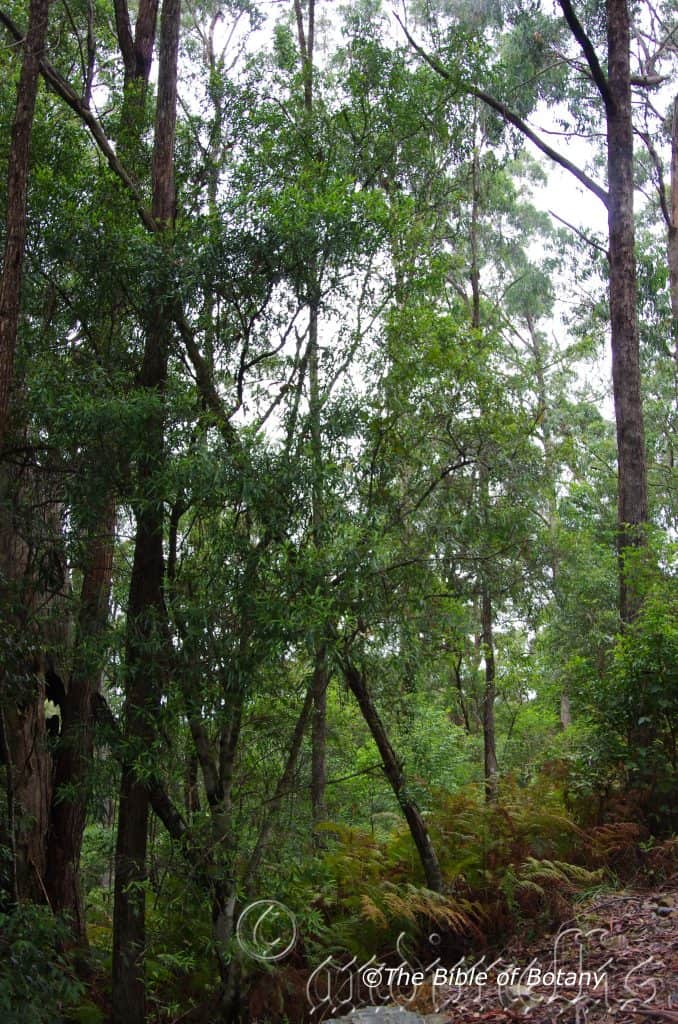
Ebor NSW

Ebor NSW
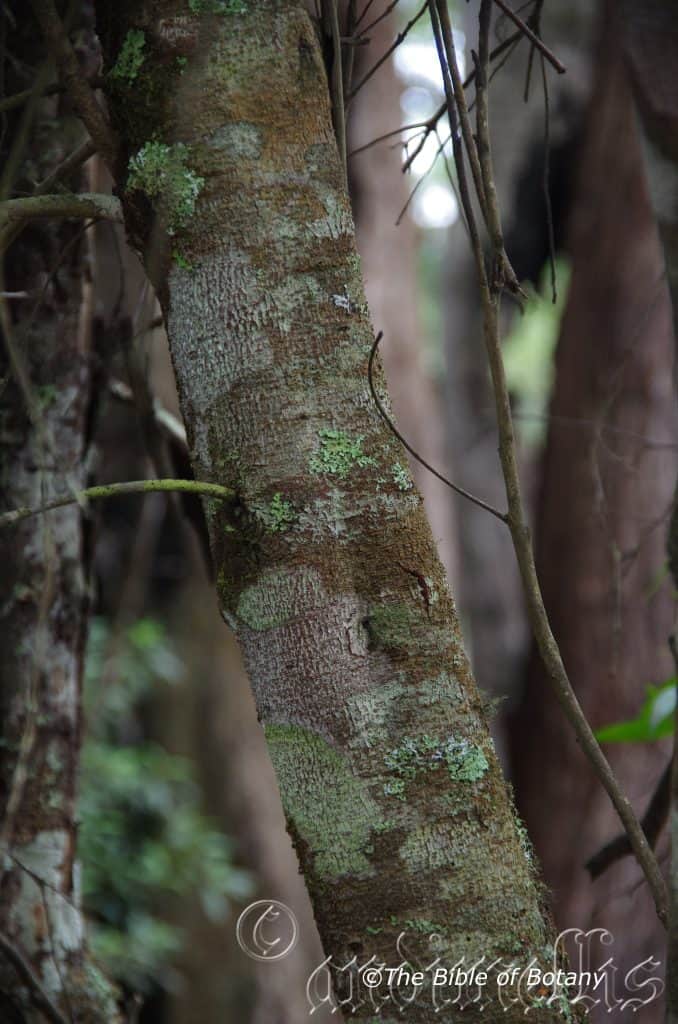
Ebor NSW

Ebor NSW
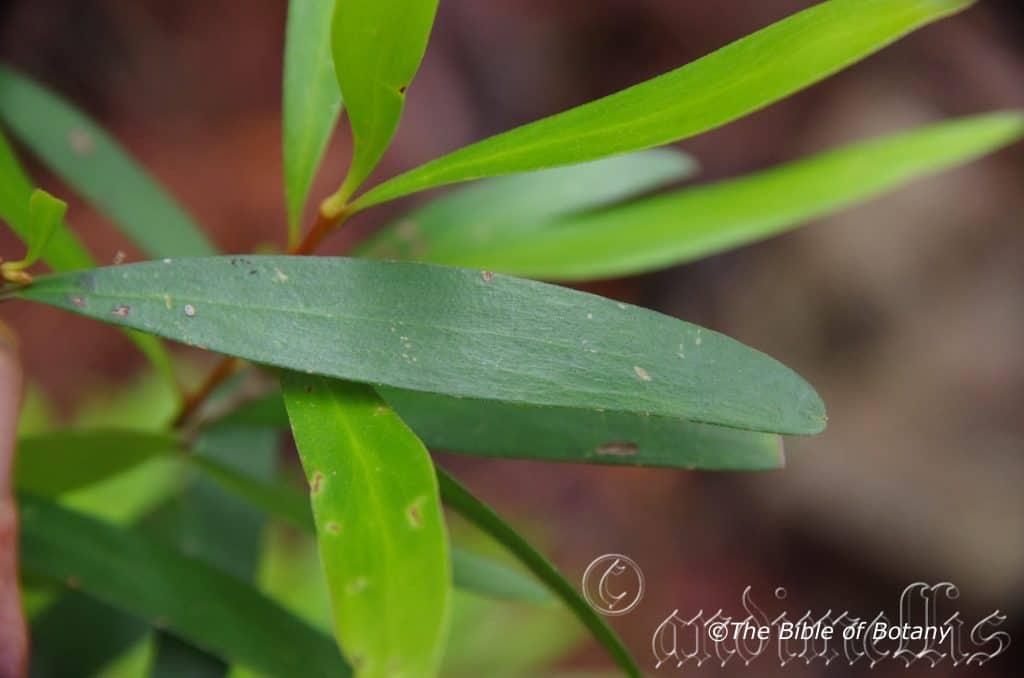
Ebor NSW
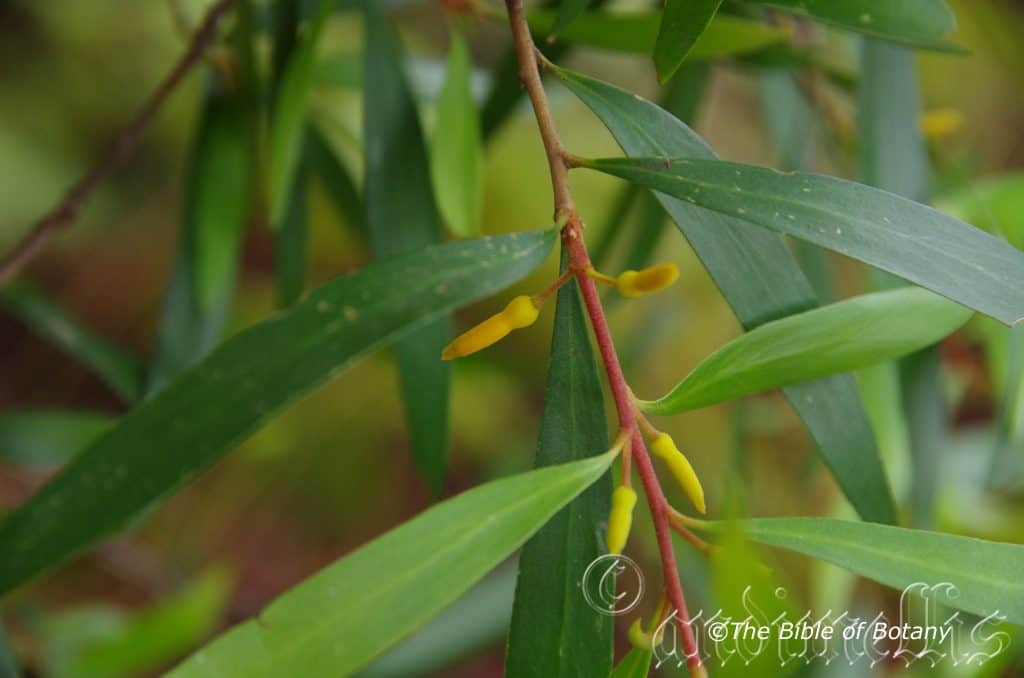
Ebor NSW
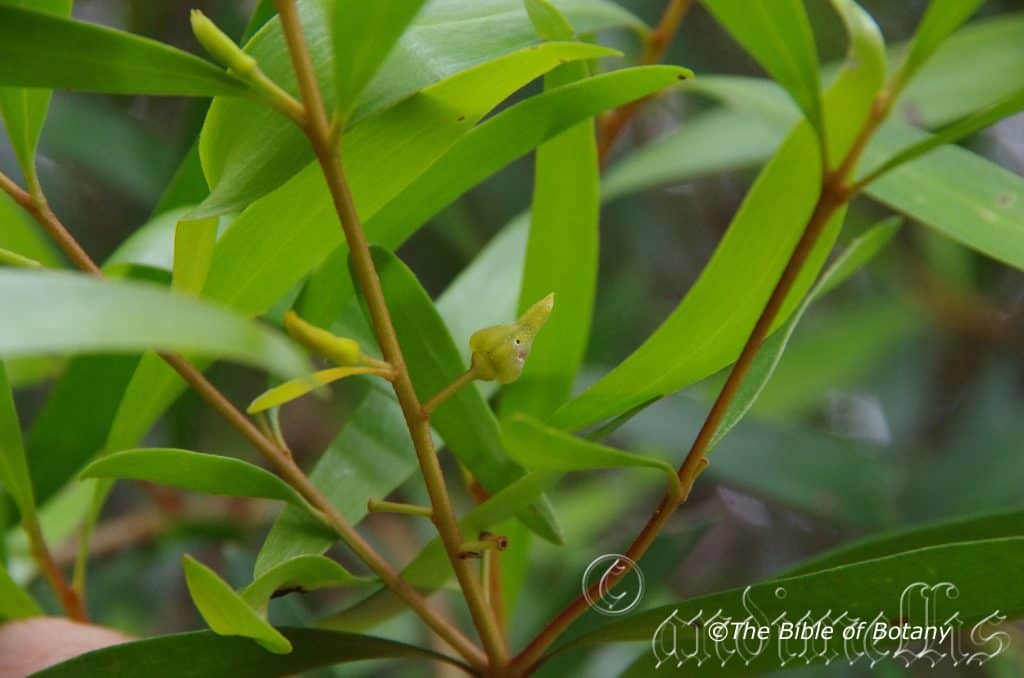
Ebor NSW
Persoonia media
Classification:
Unranked: Eudicots
Order: Proteales
Family: Protecaceae
Tribe: Persoonioideae
Genus: Is named in honour of Christian Hendrik Persoon; 1761-1836, who was a French botanist who specialised in Fungi.
Specie: From Mésos, which is Ancient Greek or Medium, which is Latin for in the middle, moderate, half, indifferent or belong to the average. It refers to plants, which are very typical of the genus in having characteristics, which resemble a number of other species.
Sub specie:
Common Name:
Distribution:
Persoonia media is found south from Redcliffe in south eastern coastal Queensland to the Manning River near Cobar in central eastern New South Wales with 2 isolated populations much further north on Corduroy Creek and near Ravenshoe and Gayndah. It is found on and east of the Great Dividing Range.
https://avh.ala.org.au/occurrences/search?taxa=Persoonia+media#tab_mapView
Habitat Aspect Climate:
Persoonia media prefer dappled shade to full sun. It grows in open sclerophyll forests, closed sclerophyll forests and coastal woodlands. The altitude ranges from 3 meters ASL to 1020 meters ASL.
The temperatures range from minus 4 degrees in July to 36 degrees in January.
The rainfall ranges from lows of 1000mm to 2100mm average per annum.
Soil requirements:
Persoonia media prefers sands, sandy loams to light fatty clays with a high proportion of gravel and stone. The soils are usuallyderived from decomposed sandstones or at times shale. The soils pH ranges from 5.5pH to 7pH. It does not tolerate of water logged soils. Non saline soils to moderately saline soils are tolerated.
Height & Spread:
Wild Plants: 3m to 6m by 3m to 5m
Characteristics:
Persoonia media grows as erect small open trees. The trunk stems are covered in small longitudinal fissures on the d to reddish-brown bark. Young shoots are yellow, red or deep crimson and are covered in pale brown to reddish-brown hirtellous hairs.
The linear, broad elliptic to ovate alternate leaves of Persoonia media measure 30mm to 140mm in length by 4mm to 35mm in width. The petioles measure 2mm to 5mm in length. The bases taper to the petiole or are attenuate while the apexes are broadly acute, broadly acuminate or obtuse. The concolourous laminas are grass-green to pale bluish-green and covered in short, soft, white, pubescent caduceous hairs. The laminas are flat while the margins are entire. The mid vein and lateral veins are not prominent on either lamina.
Inflorescences of Persoonia media are born singularly or in pairs from the leaf axils or are subtended on short leafy shoots. The pedicels, calyxes, perianths and lobes are all sparsely covered in short, white, silky, pubescent caduceous hairs. The pedicels measure 3mm to 10mm in length. The bright yellow corolla measures 3mm to 3.5mm in length while the 4 strongly flexed, lobes measure 10mm to 14mm in length while the apexes are apiculate to caudate. The ovary is bright yellow and usually glabrous to sparsely covered or at time moderately covered in white hirsute hairs.
The 4 deep yellow stamens are united and form a staminal tube around the style on the basal half. The filaments are flexed measure 7mm to 10mm in length.
The deep yellow style measures 17mm to 11mm in length. The flowers appear throughout the year under favourable conditions.
Persoonia media’s fruits rea globose drupes. The drupes measure 10mm to 12.5mm in length by 6mm to 10mm in width. The green drupes turn yellow when ripe. The style is persistent on the ripe fruits. The single, oblong, woody seed is cam.
Confusing Species:
Persoonia media’s leaves are longer and measure 30mm to 140mm in length by 4mm to 35mm in width.
Persoonia oleoides’s leaves a shorter and measure 20mm to 60mm by 4mm to 15mm in width.
The problem is further exasperated when the 2 plants habitat overlaps as they may hybridize with each other and Persoonia linearis.
Wildlife:
Persoonia media’s interaction with wildlife is truly remarkable. The best example is that of Persoonia specie and their pollinators. There is a close relationship between the way that the pollinators have evolved and the evolution of the flowers themselves. The native bees especially those within the Leioproctus subgenus Cladocerapis which almost exclusively feed on the nectar provided by Persoonia species. The behaviour of these bees on Persoonia flowers is markedly predictable.
Both the male bees and female bees land on the apical cross made by the flexed anthers, They then orient themselves to face one of the anthers apexes then slide, face down, between the anther and the style to reach the 2 nectar glands either side of the anther.
The bee then reverse crawls backwards to the top of the anther’s cross, makes a 180° turn, then peats the process on the other side of the flower to drink the nectar from the 2 nectaries adjacent to the anthers on the other side.
The female bees of Leioproctus subgenus Cladocerapis gather pollen grains with their legs while drinking nectar or reversing up the anther column as the pollen is often situated on the outer reaches of the anthers.
Leioproctus subgenus filiglossa also specialize in feeding on Persoonia’s flowers. These smaller native bees are pirates of the bee world stealing whatever pollen they find lying about and drinking spilt nectar. It is not efficient pollinators.
The fleshy fruits of Persooniaspecies are adapted for nocturnal animal dispersal by appearing as white glows against a black backdrop. Mammals like the Common Brush Tail Possum (Trichosurus vulpecula), the Common Ringtail Possum (Pseudocheirus peregrinus), Little Red Flying Fox (Pteropus scapulatus) and Grey Headed Flying Fox (Pteropus poliocephalus). Scavengers like the Common Bandicoots (Isoodon macrourus) and (Isoodon obesulus) or native rats and mice like the Giant White Tailed Rat (Uromys caudimaculatus) and the little native mouse (Pseudomys delicatulus) will join to collect any fallen fruits.
Day time activists include the Grey Currawong (Strepera versicolor), Black Jay or Black Currawong (Strepera fuliginosa), and the Pied Currawong (Strepera graculina) are thought to be the most important dispersers of large numbers of seeds over a larger area.
Parrots, also feed on Persoonia fruits, but the fruit (and seed) they eat are usually unripe and therefore making them ineffective dispersers of the seeds and more predatory rather than symbiotic.
The soft fruits are edible but have a lot to be desired in flavour. The flavour is very slightly reminiscent of apricots. (Some will probably tell me I have a good imagination.) The best thing about the fruits is the texture and size. Maybe in the future some entrepreneurial young farmer will cull the different qualities and introduce a fruit to the market that is a little sweeter and with better flavour.
Cultivation:
Persoonia media is a fresh green looking small tree that deserves a place in every temperate or sub-tropical native garden. It is ideal in almost every setting near ponds, at the edge of a rain forest in dry to moist Eucalyptus forests or larger rockeries when their size is balanced. In cultivation it grows from 4 meters to 6 meters in height by 4 meters to 5 meters in diameter.
It grows exceptionally well on red or yellow sands and lighter sandy soils When deep leaf litter keeps the soil cool and moisture at an even level. If these requirements are met it can cope with temperatures as low as minus 4 degrees and up to 33 degrees. It is moderately drought resistant in their rainfall zones.
Add to the above, if it is given an adequate supply of water and a little native fertilizer on a regular basis the plants will respond with a long flowering period and copious quantities of fruit.
It often reaches their full potential in just 5 years and flower from the third year from seed. Plants will live naturally for 12 to 16 years so should be placed every 9 to 10 years to maintain continuity in fruit for the birds.
Be imaginative when planting in mass. Use the plants in different configurations and use curves.
It is best used adjacent to small areas of bush close to paths or the house so their bright green leaves can be viewed regularly. It is great in small to large rockeries when fill in plants beneath can be used with whatever shape leaves or colour flowers the owner prefers. Here it can be planted in small groups of 2 or 3 scatted as you would find them in nature to give a great bush scene. It is best used in the mid ground surrounded by shorter plants with finer foliages with white or red flowers so they will dominate at the center of the bed.
Persoonia media cannot be hidden from view even when planted in the background or in the middle of a bush landscape. Here it still makes an impact with its foliage contrasting with almost every other plant in the garden.
Propagation:
Seeds: The seeds of Persoonia media can be moved easily from the plants as they ripen. Once they have started setting the fruits and some fruit have commenced falling to the ground it is just a matter of looking for the drupes and picking the soft ones. The success rate in sowing fresh seed, old seed, heat treated seeds and scarified by placing them in the fridge have all met with various degrees of fulfilment and failure. Nature obviously has the secret. Seeds in the field are consistently at different stages of development which means the fruits are affected differently in the environment to start germination.
In fact very few fruits ever hit the ground and none or very few germinate beneath the parent trees. This is where my theory that the fruits are continually being eaten by birds and possums, the seedlings, germinate throughout the bush away from the parent plant; they must rely on the different animals passing them through their gut first.
This sounds unpleasant but we have had success with this specie. Persoonia stradbrokiensis and Persoonia tenuifolia by finding seeds, which have passed through possums. Germination is over 60mm thus nature has at long last revealed her hidden secret for germinating Persoonia specie.
Some specie may rely on being buried for long periods and maybe fungus or bacterial action within the soil acts the same way as gut bacteria of birds and mammals. The theories all break down as when there is a bushfire as hundreds of seeds germinate over the burnt land very quickly all at the same time yet ash water and heat failed in our trials.
Seeds need to be collected and washed under the hose to move all traces of any scat or allowed to decompose naturally before sowing.
Another hypothesis; not yet tested, is maybe animal saliva contains an enzyme which assists in the germination of the seeds. This could be tested by eating the flesh off the seeds and spitting them out then planting those seeds without further washing.
Sow treated seeds directly into a seed raising mix, keeping them moist not wet. When the seedlings are 20mm to 25mm tall, prick them out and plant them into 50mm native tubes using a good organic mix.
As the seedlings roots ach the bottom of the tubes plant them out into their permanent position. You should not delay as some set back will occur on transplanting.
Fertilize using seaweed, fish emulsion or organic chicken pellets soaked in water on an alternate basis. Fertilize every two months until the plants are established then twice annually in early September and March to maintain better health, vitality and flowering.
Further Comments from Readers:
“Hi reader, it seems you use The Bible of Botany a lot. That’s great as we have great pleasure in bringing it to you! It’s a little awkward for us to ask, but our first aim is to purchase land approximately 1,600 hectares to link several parcels of N.P. into one at The Pinnacles NSW Australia, but we need your help. We’re not salespeople. We’re amateur botanists who have dedicated over 30 years to saving the environment in a practical way. We depend on donations to reach our goal. If you donate just $5, the price of your coffee this Sunday, We can help to keep the planet alive in a real way and continue to bring you regular updates and features on Australian plants all in one Botanical Bible. Any support is greatly appreciated. Thank you.”
In the spirit of reconciliation we acknowledge the Bundjalung, Gumbaynggirr and Yaegl and all aboriginal nations throughout Australia and their connections to land, sea and community. We pay our respect to their Elders past, present and future for the pleasures we have gained.
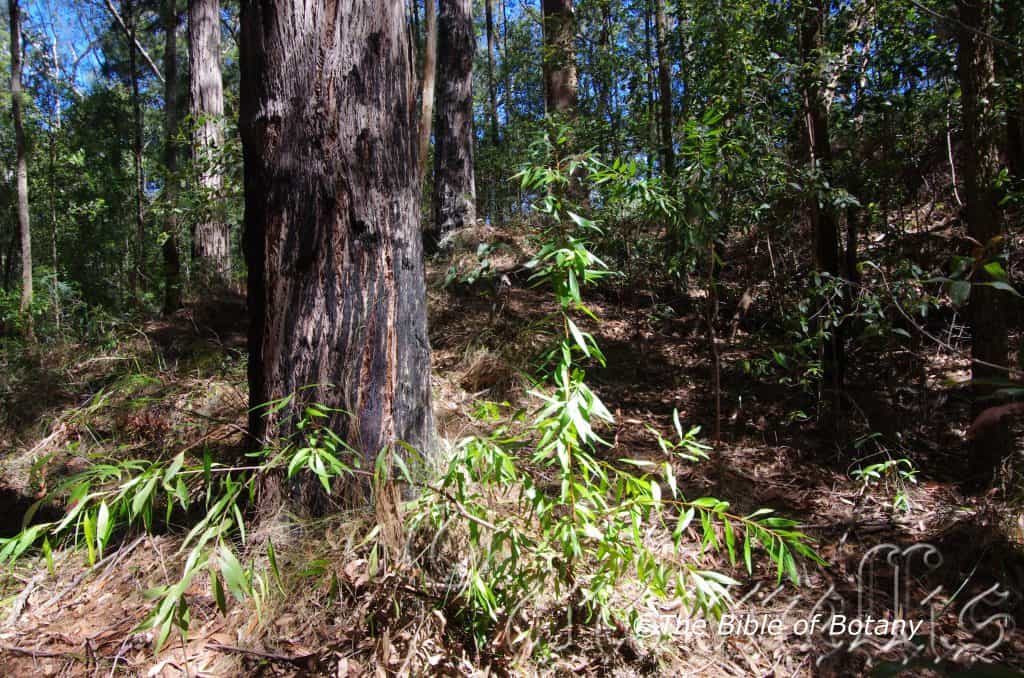
Washpool National Park NSW

Washpool National Park NSW
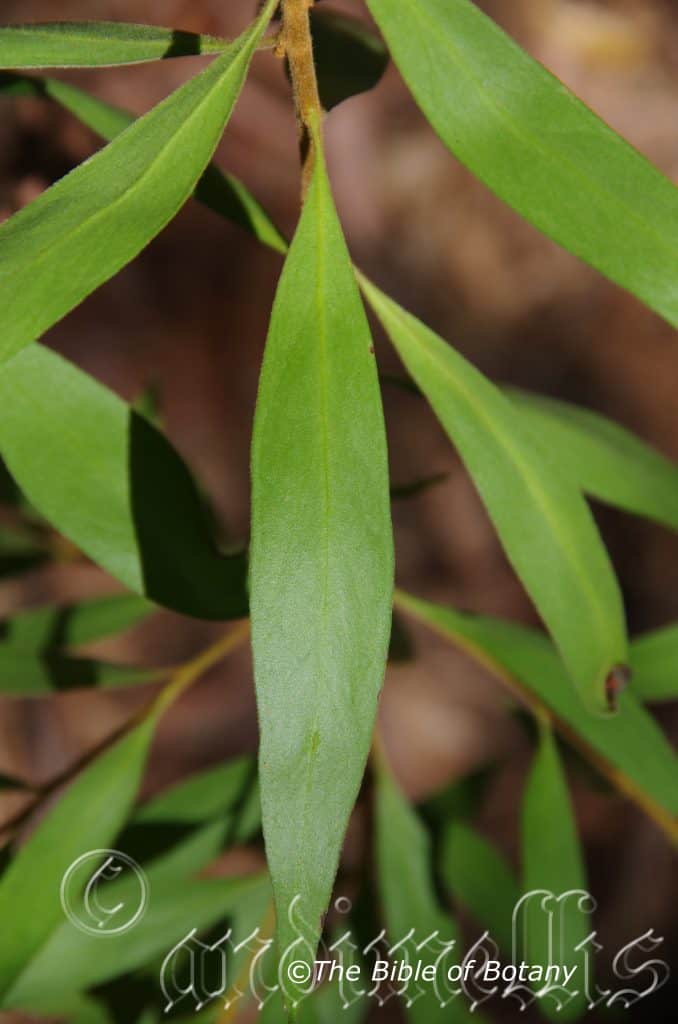
Washpool National Park NSW
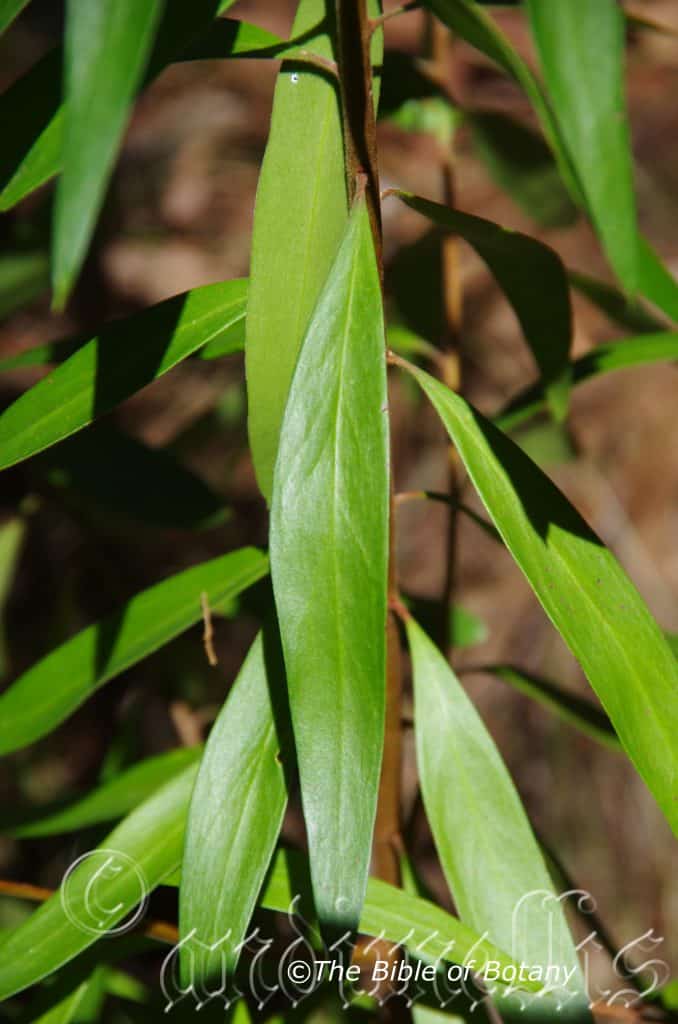
Washpool National Park NSW
Persoonia oleoides
Classification:
Unranked: Eudicots
Order: Proteales
Family: Protecaceae
Tribe: Persoonioideae
Genus: Is named in honour of Christian Hendrik Persoon; 1761-1836, who was a French botanist who specialised in Fungi.
Specie: From Olea, which is Latin for olive (oil) and Eîdos/Oides, which is Ancient Greek for alike or similar to. It refers to plants, which have an overall appearance that resemble the olive trees of Mediterranean Europe.
Sub specie:
Common Name:
Distribution:
Persoonia oleoides is found in a restricted area on the higher peaks on and along the western side of the Great Dividing Range from Boonoo Boonoo National Park to the Barrington Tops in northern and central New South Wales on the eastern side of the Great Dividing Range.
https://avh.ala.org.au/occurrences/search?taxa=Persoonia+oleoides#tab_mapView
Habitat Aspect Climate:
Persoonia oleoides prefers dappled shade to full sun. It usually grows in open dry sclerophyll forests, moist open sclerophyll forests or at times verging on woodland heaths. The altitude ranges from 640 meters ASL to 1310 meters ASL.
The temperatures range from minus 3 degrees in July to 36 degrees in January.
The rainfall ranges from lows of 850mm to 1500mm average per annum.
Soil requirements:
Persoonia oleoides prefers sandy loams to light fatty clays with a high proportion of gravel and stone. The soils are usuallyderived from decomposed black basalts, metamorphic rocks or at times metashales. The soils pH ranges from 5pH to 6pH. It does not tolerate of water logged soils. Non saline soils to moderately saline soils are tolerated.
Height & Spread:
Wild Plants: 3m to 4m by 3m to 4m
Characteristics:
Persoonia oleoides grows as an erect to decumbent open shrub. The stems are covered in small longitudinal fissures on the red to reddish-brown bark. Young shoots are yellowish-green and are moderately to densely covered in fawn pubescent caduceous hairs.
The oblong to elliptic to ovate or obovate to spathulate or broad elliptic to broad ovate, alternate leaves of Persoonia oleoides measure 20mm to 60mm in length by 4mm to 15mm in width. The petioles measure 1mm to 3mm in length. The bases taper to the petiole while the apexes taper to the tip. The concolourous laminas are grass-green to pale bluish-green, glabrous to slightly scabrous and covered in short, soft, white, pulverulent caduceous hairs when young. The laminas are flat while the margins are entire. The mid vein and lateral veins are not prominent on either lamina.
The inflorescences of Persoonia oleoides are born singularly or in pairs from the leaf axils or are subtended on short leafy shoots. The pedicels, calyxes, perianths and lobes are all sparsely covered in short, white, silky, pulverulent caduceous hairs. The pedicels measure 1mm to 3mm in length. The bright yellow corolla measures 3mm to 4mm in length while the 4 strongly flexed, lobes measure 10mm to 15mm in length while the apexes are acuminate to shortly caudate. The ovary is bright yellow and is usually glabrous to sparsely covered in white hirsute hairs.
The 4 deep yellow stamens are united and form a staminal tube around the style on the basal half. The filaments are flexed and measure 6mm to 8mm in length.
The deep yellow style measures 6mm to 7mm in length. The flowers appear throughout the year under favourable conditions.
Persoonia oleoides’s fruits are globose drupes. The drupes measure 10mm to 12.5mm in length by 6mm to 10mm in width. The green drupes turn yellow when ripe. The style is persistent on the ripe fruits. The single, oblong, woody seed is creamy-fawn.
Confusing Species:
Persoonia oleoides’s leaves are shorter and measure 20mm to 60mm by 4mm to 15mm in width.
Persoonia media’s are longer and measure 30mm to 140mm in length by 4mm to 35mm in width.
The problem is further exasperated When the 2 plants habitat overlaps as they may hybridize with each other and appear similar to Persoonia linearis.
Wildlife:
Persoonia oleoides’s interaction with wildlife is truly remarkable. The best example is that of Persoonia specie and their pollinators. There is a close relationship between the way that the pollinators have evolved and the evolution of the flowers themselves. The native bees especially those within the Leioproctus subgenus Cladocerapis which almost exclusively feed on the nectar provided by Persoonia. The behaviour of these bees on Persoonia flowers is markedly predictable.
Both the male bees and female bees land on the apical cross made by the flexed anthers, They then orient themselves to face one of the anthers apexes then slide, face down, between the anther and the style to reach the 2 nectar glands either side of the anther.
The bee then reverse crawls backwards to the top of the anther’s cross, makes a 180° turn, then repeats the process on the other side of the flower to drink the nectar from the 2 nectaries adjacent to the anthers on the other side.
The female bees of Leioproctus subgenus Cladocerapis gather pollen grains with their legs while drinking nectar or reversing up the anther column as the pollen is often situated on the outer reaches of the anthers.
Leioproctus, subgenus Filiglossa also specialize in feeding on Persoonia’s flowers. These smaller native bees are pirates of the bee world stealing whatever pollen they find lying about and drinking spilt nectar. It is not an efficient pollinator.
The fleshy fruits of Persoonia species are adapted for nocturnal animal dispersal by appearing as white glows against a black backdrop to many mammals. Mammals like the Common Brush Tail Possum (Trichosurus vulpecula), the Common Ringtail Possum (Pseudocheirus peregrinus), Little Red Flying Fox (Pteropus scapulatus) and Grey Headed Flying Fox (Pteropus poliocephalus). Scavengers like the Common Bandicoots (Isoodon macrourus) and (Isoodon obesulus) or native rats and mice like the Giant White Tailed Rat (Uromys caudimaculatus) and the little native mouse (Pseudomys delicatulus) will join to collect any fallen fruits.
Day time activists include the Grey Currawong (Strepera versicolor), Black Jay or Black Currawong (Strepera fuliginosa), Pied Currawong (Strepera graculina) are thought to be the most important dispersers of large numbers of seeds over a larger area.
Parrots, also feed on Persoonia falcata’s fruits, but the fruit (and seed) they eat a usually unripe and therefore making them ineffective dispersers of the seeds and more predatory rather than symbiotic.
The soft fruits are edible but have a lot to be desired in flavour. The flavour is very slightly reminiscent of apricots. (Some will probably tell me I have a good imagination.) The best thing about the fruits is the texture and size. Maybe in the future some entrepreneurial young farmer will cull the different qualities and introduce are fruit to the market that is a little sweeter and with better flavour.
Cultivation:
Persoonia oleoides is a fresh green looking small tree that deserves a place in every temperate or sub-tropical native garden. It is ideal in almost every setting near ponds, at the edge of a rain forest in dry to moist Eucalyptus forests or larger rockeries where their size is balanced. In cultivation it grows from 4 meters to 6 meters in height by 4 meters to 5 meters in diameter.
It grows exceptionally well on red or yellow sands and lighter sandy soils When deep leaf litter keeps the soil cool and moisture at an even level. If these requirements are met it can cope with temperatures as low as minus 4 degrees and up to 33 degrees. It is moderately drought resistant in their rainfall zones.
Add to the above, if it is given an adequate supply of water and a little native fertilizer on a regular basis the plants will respond with a long flowering period and copious quantities of fruit.
It often reaches their full potential in just 5 years and flower from the third year from seed. Plants will live naturally for 12 to 16 years so should be placed every 9 to 10 years to maintain continuity in fruit for the birds.
Be imaginative when planting in mass. Use the plants in different configurations and use curves.
It is best used adjacent to small areas of bush close to paths or the house so their bright green leaves can be viewed regularly. It is great in small to large rockeries where fill in plants beneath can be used with whatever shape leaves or colour flowers the owner prefers. Here it can be planted in small groups of 2 or 3 scatted as you would find them in nature to give a great bush scene. It is best used in the mid ground surrounded by shorter plants with finer foliages with white or red flowers so they will dominate at the center of the bed.
Persoonia oleoides cannot be hidden from view even when planted in the background or in the middle of a bush landscape. Here it still makes an impact with its foliage contrasting with almost every other plant in the garden.
Propagation:
Seeds: The seeds of Persoonia media can be moved easily from the plants as they ripen. Once they have started setting the fruits and some fruit have commenced falling to the ground it is just a matter of looking for the drupes and picking the soft ones. The success rate in sowing fresh seed, old seed, heat treated seeds and scarified by placing them in the fridge have all met with various degrees of fulfilment and failure. Nature obviously has the secret. Seeds in the field are consistently at different stages of development which means the fruits are affected differently in the environment to start germination.
In fact very few fruits ever hit the ground and none or very few germinate beneath the parent trees. This is where my theory that the fruits are continually being eaten by birds and possums, the seedlings, germinate throughout the bush away from the parent plant; they must rely on the different animals passing them through their gut first.
This sounds unpleasant but we have had success with this specie. Persoonia stradbrokiensis and Persoonia tenuifolia by finding seeds, which have passed through possums. Germination is over 60mm thus nature has at long last revealed her hidden secret for germinating Persoonia specie.
Some specie may rely on being buried for long periods and maybe fungus or bacterial action within the soil acts the same way as gut bacteria of birds and mammals. The theories all break down as when there is a bushfire as hundreds of seeds germinate over the burnt land very quickly all at the same time yet ash water and heat failed in our trials.
Seeds need to be collected and washed under the hose to move all traces of any scat or allowed to decompose naturally before sowing.
Another hypothesis; not yet tested, is maybe animal saliva contains an enzyme which assists in the germination of the seeds. This could be tested by eating the flesh off the seeds and spitting them out then planting those seeds without further washing.
Sow treated seeds directly into a seed raising mix, keeping them moist not wet. When the seedlings are 20mm to 25mm tall, prick them out and plant them into 50mm native tubes using a good organic mix.
As the seedlings roots ach the bottom of the tubes plant them out into their permanent position. You should not delay as some set back will occur on transplanting.
Fertilize using seaweed, fish emulsion or organic chicken pellets soaked in water on an alternate basis. Fertilize every two months until the plants are established then twice annually in early September and March to maintain better health, vitality and flowering.
Further Comments from Readers:
“Hi reader, it seems you use The Bible of Botany a lot. That’s great as we have great pleasure in bringing it to you! It’s a little awkward for us to ask, but our first aim is to purchase land approximately 1,600 hectares to link several parcels of N.P. into one at The Pinnacles NSW Australia, but we need your help. We’re not salespeople. We’re amateur botanists who have dedicated over 30 years to saving the environment in a practical way. We depend on donations to reach our goal. If you donate just $5, the price of your coffee this Sunday, We can help to keep the planet alive in a real way and continue to bring you regular updates and features on Australian plants all in one Botanical Bible. Any support is greatly appreciated. Thank you.”
In the spirit of reconciliation we acknowledge the Bundjalung, Gumbaynggirr and Yaegl and all aboriginal nations throughout Australia and their connections to land, sea and community. We pay our respect to their Elders past, present and future for the pleasures we have gained.
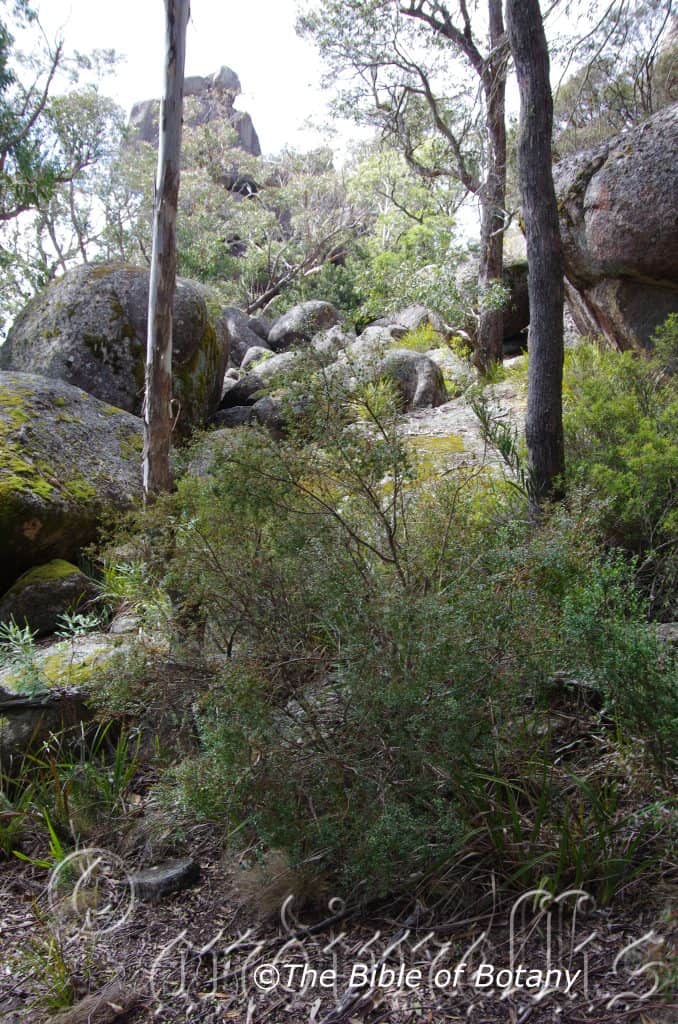
Cathedral Rocks National Park Ebor NSW
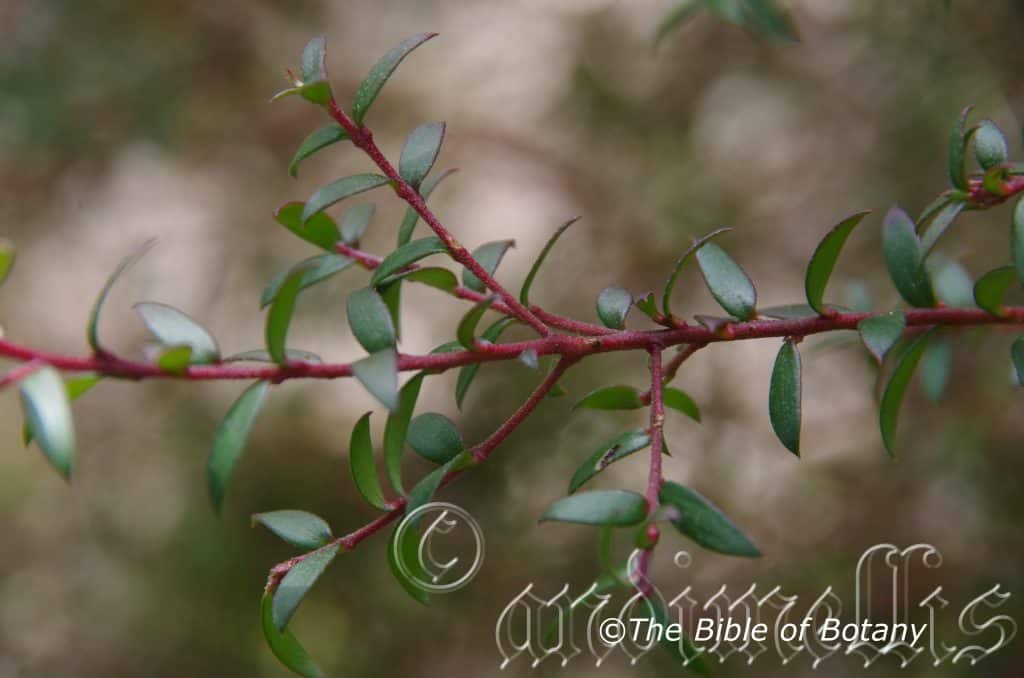
Cathedral Rocks National Park Ebor NSW
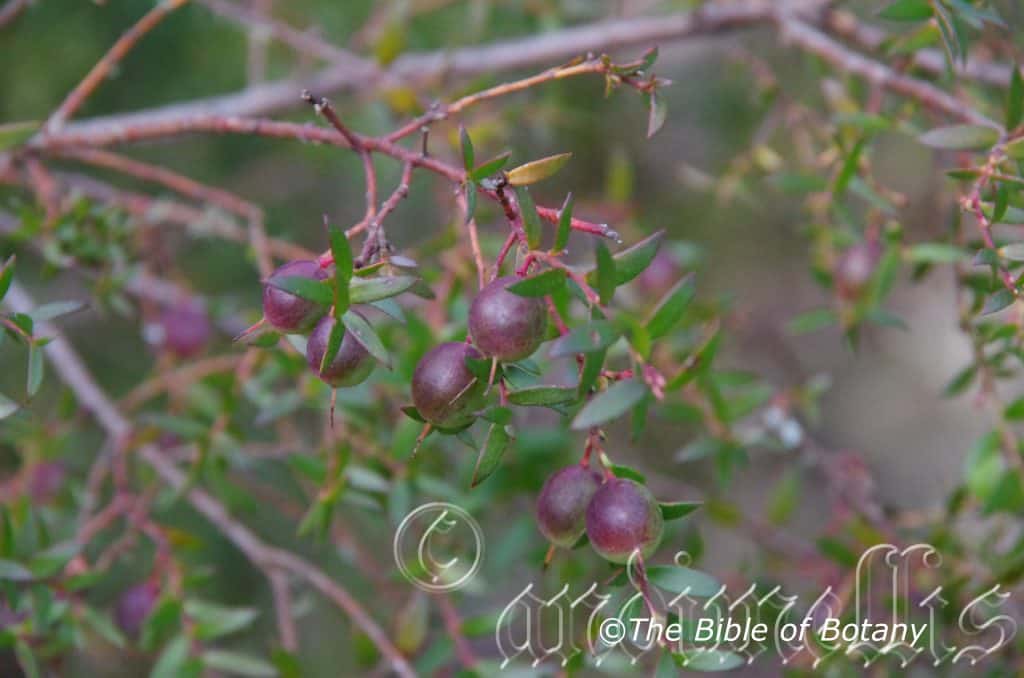
Cathedral Rocks National Park Ebor NSW

Cathedral Rocks National Park Ebor NSW
Persoonia rufa
Classification:
Unranked: Eudicots
Order: Proteales
Family: Protecaceae
Tribe: Persoonioideae
Genus: Is named in honour of Christian Hendrik Persoon; 1761-1836, who was a French botanist who specialised in Fungi.
Specie: From R?fa, which is Latin for reddish or ruddy in colour. It refers to organs or structures, which have a reddish colouration. Here it refers to the branchlets, which are bright red and the ripening drupes, which are reddish-purple.
Sub specie:
Common Name:
Distribution:
Persoonia rufa is restricted to the Washpool National Park as per AVH records, however my photos were taken a little further south near the Cathedral Rocks National Park. It is found on the Great Dividing Range at higher altitudes.
https://avh.ala.org.au/occurrences/search?taxa=Persoonia+rufa#tab_mapView
Habitat Aspect Climate:
Persoonia rufa prefers dappled shade to full sun. It grows in open dry woodlands to open sclerophyll forests. The altitude ranges from 800 meters ASL to 850 meters ASL for the washpool plants, while the Cathedral Rock plants are at around 1380 meters.
The temperatures range from minus 5 degrees in July to 35 degrees in January.
The rainfall ranges from lows of 950mm to 1270mm average per annum. Orographic precipitation would also contribute substantially to soil moisture retention.
Soil requirements:
Persoonia rufa prefer sands, sandy loams to light gritty clays with a high proportion of gravel and stone. The soils are usuallyderived from decomposed granites. The soils pH ranges from 5.5pH to 6pH. It does not tolerate of water logged soils. Non saline soils to slightly saline soils are tolerated.
Height & Spread:
Wild Plants: 1m to 3m by 1m to 2.5m.
Characteristics:
Persoonia rufa grows as an erect to spreading shrub. The larger stems are reddish-brown. The young shoots are pale yellowish or deep, bright red and usually moderately but can be densely covered in white appressed, pubescent hairs.
The Fibonacci phyllotaxis, elliptic to broad-elliptic leaves of Persoonia rufa are 3:5 andmeasure 30mm to 80mm in length by 8mm to 25mm in width. The terete deep red petioles, are usually moderately but can be densely covered in white appressed, pubescent hairs and measure 1mm to 2.5mm in length. The bases taper to the petioles, while the apexes are acute with a mucronate tip. The discolourous laminas are glabrous, deep green on the upper lamina, while the lower lamina is paler. The immature leaves are sparsely to moderately covered in white pubescent hairs, while the mature leaves are glabrescent to moderately scabrous. The laminas are flat near the base and decurve towards the apex, while the recurved margins are entire, curved or at times incurved. The mid vein is slightly prominent on the lower lamina and is not visible from the upper lamina.
Inflorescences of Persoonia rufa are born terminally and is terminated by a dormant bud or at times growing on into a leafy shoot prior to anthesis. The pedicels and calyxes are moderately to densely covered in tan or white pubescent hairs. The erect, terete pedicels measure 1mm to 3mm in length. The bright yellow corolla measures 3mm to 4mm in length while the 4 strongly flexed, lobes measure 10mm to 14mm in length while the apexes are apiculate to caudate. The ovary is densely covered in tan or white pubescent hairs.
The 4 yellow stamens are free but form a staminal tube around the style on the basal half. The filaments are divaricate and measure 5mm to 6mm in length.
The yellow style measures 9mm to 12mm in length. The flowers appear throughout the year when conditions are favourable.
Persoonia rufa’s fruits are globose drupes. The drupes measure 10mm to 13mm in diameter. The green drupes turn yellow when ripe. The style is persistent on the ripe fruits. The single, oblong, woody seed is creamy-fawn.
Wildlife:
Persoonia rufa’s interaction with wildlife is truly remarkable. The best example is that of Persoonia specie and their pollinators. There is a close relationship between the way that the pollinators have evolved and the evolution of the flowers themselves. The native bees especially those within the Leioproctus subgenus Cladocerapis which almost exclusively feed on the nectar provided by Persoonia. The behaviour of these bees on Persoonia flowers is markedly predictable.
Both the male bees and female bees land on the apical cross made by the flexed anthers, They then orient themselves to face one of the anthers apexes then slide, face down, between the anther and the style to reach the 2 nectar glands either side of the anther.
The bee then reverse crawls backwards to the top of the anther’s cross, makes a 180° turn, then repeats the process on the other side of the flower to drink the nectar from the 2 nectaries adjacent to the anthers on the other side.
The female bees of Leioproctus subgenus Cladocerapis gather pollen grains with their legs while drinking nectar or reversing up the anther column as the pollen is often situated on the outer reaches of the anthers.
Leioproctus, subgenus Filiglossa also specialize in feeding on Persoonia’s flowers. These smaller native bees are pirates of the bee world stealing whatever pollen they find lying about and drinking spilt nectar. It is not an efficient pollinator.
The fleshy fruits of are adapted for nocturnal animal dispersal by appearing as white glows against a black backdrop to many mammals. Mammals like the Common Brush Tail Possum (Trichosurus vulpecula), the Common Ringtail Possum (Pseudocheirus peregrinus), Little Red Flying Fox (Pteropus scapulatus) and Grey Headed Flying Fox (Pteropus poliocephalus). Scavengers like the Common Bandicoots (Isoodon macrourus) and (Isoodon obesulus) or native rats and mice like the Giant White Tailed Rat (Uromys caudimaculatus) and the little native mouse (Pseudomys delicatulus) will join to collect any fallen fruits.
Day time activists include the Grey Currawong (Strepera versicolor), Black Jay or Black Currawong (Strepera fuliginosa), Pied Currawong (Strepera graculina) are thought to be the most important dispersers of large numbers of seeds over a larger area.
Parrots, also feed on Persoonia rufa’s fruits, but the fruit (and seed) they eat a usually unripe and therefore making them ineffective dispersers of the seeds and more predatory rather than symbiotic.
The soft fruits are edible but have a lot to be desired in flavour. The flavour is very slightly reminiscent of apricots. (Some will probably tell me I have a good imagination.) The best thing about the fruits is the texture and size. Maybe in the future some entrepreneurial young farmer will cull the different qualities and introduce a fruit to the market that is a little sweeter and with better flavour.
Cultivation:
Persoonia rufa is a fresh green looking small tree that deserves a place in every temperate or sub-tropical native garden. It is ideal in almost every setting near ponds, at the edge of a rain forest in dry to moist Eucalyptus forests or larger rockeries When their size is balanced. In cultivation it grows from 4 meters to 6 meters in height by 4 meters to 5 meters in diameter.
It grows exceptionally well on red or yellow sands and lighter sandy soils When deep leaf litter keeps the soil cool and moisture at an even level. If these requirements are met it can cope with temperatures as low as minus 4 degrees and up to 33 degrees. It is moderately drought resistant in their rainfall zones.
Add to the above, if it is given an adequate supply of water and a little native fertilizer on a regular basis the plants will respond with a long flowering period and copious quantities of fruit.
It often reaches their full potential in just 5 years and flower from the third year from seed. Plants will live naturally for 12 to 16 years so should be placed every 9 to 10 years to maintain continuity in fruit for the birds.
Be imaginative when planting in mass. Use the plants in different configurations and use curves.
It is best used adjacent to small areas of bush close to paths or the house so their bright green leaves can be viewed regularly. It is great in small to large rockeries where fill in plants beneath can be used with whatever shape leaves or colour flowers the owner prefers. Here it can be planted in small groups of 2 or 3 scatted as you would find them in nature to give a great bush scene. It is best used in the mid ground surrounded by shorter plants with finer foliages with white or red flowers so they will dominate at the center of the bed.
Persoonia sericea cannot be hidden from view even when planted in the background or in the middle of a bush landscape. Here it still makes an impact with its foliage contrasting with almost every other plant in the garden.
Propagation:
Seeds: The seeds of Persoonia rufa can be moved easily from the plants as they ripen. Once they have started setting the fruits and some fruit have commenced falling to the ground it is just a matter of looking for the drupes and picking the soft ones. The success rate in sowing fresh seed, old seed, heat treated seeds and scarified by placing them in the fridge have all met with various degrees of fulfilment and failure. Nature obviously has the secret. Seeds in the field are consistently at different stages of development which means the fruits are affected differently in the environment to start germination.
In fact very few fruits ever hit the ground and none or very few germinate beneath the parent trees. This is where my theory that the fruits are continually being eaten by birds and possums, the seedlings, germinate throughout the bush away from the parent plant; they must rely on the different animals passing them through their gut first.
This sounds unpleasant but we have had success with this specie. Persoonia stradbrokiensis and Persoonia tenuifolia by finding seeds, which have passed through possums. Germination is over 60mm thus nature has at long last revealed her hidden secret for germinating Persoonia specie.
Some specie may rely on being buried for long periods and maybe fungus or bacterial action within the soil acts the same way as gut bacteria of birds and mammals. The theories all break down as when there is a bushfire as hundreds of seeds germinate over the burnt land very quickly all at the same time yet ash water and heat failed in our trials.
Seeds need to be collected and washed under the hose to move all traces of any scat or allowed to decompose naturally before sowing.
Another hypothesis; not yet tested, is maybe animal saliva contains an enzyme which assists in the germination of the seeds. This could be tested by eating the flesh off the seeds and spitting them out then planting those seeds without further washing.
Sow treated seeds directly into a seed raising mix, keeping them moist not wet. When the seedlings are 20mm to 25mm tall, prick them out and plant them into 50mm native tubes using a good organic mix.
As the seedlings roots ach the bottom of the tubes plant them out into their permanent position. You should not delay as some set back will occur on transplanting.
Fertilize using seaweed, fish emulsion or organic chicken pellets soaked in water on an alternate basis. Fertilize every two months until the plants are established then twice annually in early September and March to maintain better health, vitality and flowering.
Further Comments from Readers:
“Hi reader, it seems you use The Bible of Botany a lot. That’s great as we have great pleasure in bringing it to you! It’s a little awkward for us to ask, but our first aim is to purchase land approximately 1,600 hectares to link several parcels of N.P. into one at The Pinnacles NSW Australia, but we need your help. We’re not salespeople. We’re amateur botanists who have dedicated over 30 years to saving the environment in a practical way. We depend on donations to reach our goal. If you donate just $5, the price of your coffee this Sunday, We can help to keep the planet alive in a real way and continue to bring you regular updates and features on Australian plants all in one Botanical Bible. Any support is greatly appreciated. Thank you.”
In the spirit of reconciliation we acknowledge the Bundjalung, Gumbaynggirr and Yaegl and all aboriginal nations throughout Australia and their connections to land, sea and community. We pay our respect to their Elders past, present and future for the pleasures we have gained.
Persoonia sericea
Classification:
Unranked: Eudicots
Order: Proteales
Family: Protecaceae
Tribe: Persoonioideae
Genus: Is named in honour of Christian Hendrik Persoon; 1761-1836, who was a French botanist who specialised in Fungi.
Specie: From Sêres, which is Ancient Greek or S?ricum, which is Old Latin for silky and derived from the Ancient Chinese word Si/Ser ? or the modern script for Si/Ser ? for silk. Sêres also has the meaning from the Ancient Greek for the land of the Chinese referring to China as the land of silk. It refers to structures or organs, which are covered in soft, fine, silky hairs.
Sub specie:
Common Name:
Distribution:
Persoonia sericea is found east of a line between Port Curtiss, Blackall, Cracow in southern Queensland to Narrabri, Gwabegar, the Warrumbungles National Park and the Hastings River New South Wales. There are 2 disjunct populations further south at Kurri Kurri and Castlreagh while west of the Range it is found south from Gilgandra to Grenfell.
https://avh.ala.org.au/occurrences/search?taxa=Persoonia+sericea#tab_mapView
Habitat Aspect Climate:
Persoonia sericea prefers dappled shade to full sun. It grows in open dry woodlands to open dry sclerophyll forests, closed sclerophyll forests and coastal woodlands. The altitude ranges from 10 meters ASL to 750 meters ASL.
The temperatures range from minus 3 degrees in July to 40 degrees in January.
The rainfall ranges from lows of 300mm to 2000mm average per annum.
Soil requirements:
Persoonia sericea prefer red sands, sandy loams to light gritty clays with a high proportion of gravel and stone. The soils are usuallyderived from decomposed sandstones, granites, shale or metamorphic rocks. The soils pH ranges from 5.5pH to 7pH. It does not tolerate of water logged soils. Non saline soils to very saline soils are tolerated as are salt laden winds.
Height & Spread:
Wild Plants: 2m to 3m by 2m to 3.5m.
Characteristics:
Persoonia sericea grows as an erect to spreading shrub. The larger stems are reddish-brown. The young shoots are pale grey and glabrous while the new growth is yellowish-green and moderately to densely covered in white sericeous caduceous hairs.
The alternate, obovate to oblanceolate, narrow oblong, narrow elliptic or narrow spathulate to spathulate leaves of Persoonia sericea measure 15mm to 60mm in length by 2mm to 21mm in width. The bases are attenuate while the apexes are acuminate, apiculate or at times acute. The concolourous laminas are pale grass-green to pale bluish-green, very slightly scabrous and moderately to densely covered in white sericeous caduceous hairs When young and glabrous to sparsely covered in white sericeous hairs When mature. The laminas are flat while the margins are entire, curved or at times incurved. The mid vein and lateral veins are not prominent on either lamina.
Inflorescences of Persoonia sericea are born singularly or in pairs from the leaf axils or are subtended on short leafy shoots. The pedicels and calyxes are moderately to densely covered in white caduceous sericeous hairs. The pedicels measure 2mm to 12mm in length. The bright yellow corolla measures 2mm to 3mm in length while the 4 strongly flexed, lobes measure 9mm to 11mm in length while the apexes are apiculate to caudate. The ovary is bright yellow and densely covered in white sericeous hairs.
The 4 yellow stamens are free but form a staminal tube around the style on the basal half. The filaments are divaricate and measure 5mm to 6mm in length.
The yellow style measures 5mm to 6mm in length. The flowers appear throughout the year When conditions are favourable.
Persoonia sericea’s fruits are globose drupes. The drupes measure 10mm to 13mm in length by 6mm to 9mm in width. The green drupes turn yellow when ripe. The style is persistent on the ripe fruits. The single, oblong, woody seed is creamy-fawn.
Wildlife:
Persoonia sericea’s interaction with wildlife is truly remarkable. The best example is that of Persoonia specie and their pollinators. There is a close relationship between the way that the pollinators have evolved and the evolution of the flowers themselves. The native bees especially those within the Leioproctus subgenus Cladocerapis which almost exclusively feed on the nectar provided by Persoonia. The behaviour of these bees on Persoonia flowers is markedly predictable.
Both the male bees and female bees land on the apical cross made by the flexed anthers, They then orient themselves to face one of the anthers apexes then slide, face down, between the anther and the style to reach the 2 nectar glands either side of the anther.
The bee then reverse crawls backwards to the top of the anther’s cross, makes a 180° turn, then repeats the process on the other side of the flower to drink the nectar from the 2 nectaries adjacent to the anthers on the other side.
The female bees of Leioproctus subgenus Cladocerapis gather pollen grains with their legs while drinking nectar or reversing up the anther column as the pollen is often situated on the outer reaches of the anthers.
Leioproctus, subgenus Filiglossa also specialize in feeding on Persoonia’s flowers. These smaller native bees are pirates of the bee world stealing whatever pollen they find lying about and drinking spilt nectar. It is not an efficient pollinator.
The fleshy fruits of Persoonia species are adapted for nocturnal animal dispersal by appearing as white glows against a black backdrop to many mammals. Mammals like the Common Brush Tail Possum (Trichosurus vulpecula), the Common Ringtail Possum (Pseudocheirus peregrinus), Little Red Flying Fox (Pteropus scapulatus) and Grey Headed Flying Fox (Pteropus poliocephalus). Scavengers like the Common Bandicoots (Isoodon macrourus) and (Isoodon obesulus) or native rats and mice like the Giant White Tailed Rat (Uromys caudimaculatus) and the little native mouse (Pseudomys delicatulus) will join to collect any fallen fruits.
Day time activists include the Grey Currawong (Strepera versicolor), Black Jay or Black Currawong (Strepera fuliginosa), Pied Currawong (Strepera graculina) are thought to be the most important dispersers of large numbers of seeds over a larger area.
Parrots, also feed on Persoonia fruits, but the fruit (and seed) they eat a usually unripe and therefore making them ineffective dispersers of the seeds and more predatory rather than symbiotic.
The soft fruits are edible but have a lot to be desired in flavour. The flavour is very slightly reminiscent of apricots. (Some will probably tell me I have a good imagination.) The best thing about the fruits is the texture and size. Maybe in the future some entrepreneurial young farmer will cull the different qualities and introduce a fruit to the market that is a little sweeter and with better flavour.
Cultivation:
Persoonia sericea is a fresh green looking small tree that deserves a place in every temperate or sub-tropical native garden. It is ideal in almost every setting near ponds, at the edge of a rain forest in dry to moist Eucalyptus forests or larger rockeries when their size is balanced. In cultivation it grows from 4 meters to 6 meters in height by 4 meters to 5 meters in diameter.
It grows exceptionally well on red or yellow sands and lighter sandy soils When deep leaf litter keeps the soil cool and moisture at an even level. If these requirements are met it can cope with temperatures as low as minus 4 degrees and up to 33 degrees. It is moderately drought resistant in their rainfall zones.
Add to the above, if it is given an adequate supply of water and a little native fertilizer on a regular basis the plants will respond with a long flowering period and copious quantities of fruit.
It often reaches their full potential in just 5 years and flower from the third year from seed. Plants will live naturally for 12 to 16 years so should be placed every 9 to 10 years to maintain continuity in fruit for the birds.
Be imaginative when planting in mass. Use the plants in different configurations and use curves.
It is best used adjacent to small areas of bush close to paths or the house so their bright green leaves can be viewed regularly. It is great in small to large rockeries when fill in plants beneath can be used with whatever shape leaves or colour flowers the owner prefers. Here it can be planted in small groups of 2 or 3 scatted as you would find them in nature to give a great bush scene. It is best used in the mid ground surrounded by shorter plants with finer foliages with white or red flowers so they will dominate at the center of the bed.
Persoonia sericea cannot be hidden from view evenwhen planted in the background or in the middle of a bush landscape. Here it still makes an impact with its foliage contrasting with almost every other plant in the garden.
Propagation:
Seeds: The seeds of Persoonia sericea can be moved easily from the plants as they ripen. Once they have started setting the fruits and some fruit have commenced falling to the ground it is just a matter of looking for the drupes and picking the soft ones. The success rate in sowing fresh seed, old seed, heat treated seeds and scarified by placing them in the fridge have all met with various degrees of fulfilment and failure. Nature obviously has the secret. Seeds in the field are consistently at different stages of development which means the fruits are affected differently in the environment to start germination.
In fact very few fruits ever hit the ground and none or very few germinate beneath the parent trees. This is where my theory that the fruits are continually being eaten by birds and possums, the seedlings, germinate throughout the bush away from the parent plant; they must rely on the different animals passing them through their gut first.
This sounds unpleasant but we have had success with this specie. Persoonia stradbrokiensis and Persoonia tenuifolia by finding seeds, which have passed through possums. Germination is over 60mm thus nature has at long last revealed her hidden secret for germinating Persoonia specie.
Some specie may rely on being buried for long periods and maybe fungus or bacterial action within the soil acts the same way as gut bacteria of birds and mammals. The theories all break down as when there is a bushfire as hundreds of seeds germinate over the burnt land very quickly all at the same time yet ash water and heat failed in our trials.
Seeds need to be collected and washed under the hose to move all traces of any scat or allowed to decompose naturally before sowing.
Another hypothesis; not yet tested, is maybe animal saliva contains an enzyme which assists in the germination of the seeds. This could be tested by eating the flesh off the seeds and spitting them out then planting those seeds without further washing.
Sow treated seeds directly into a seed raising mix, keeping them moist not wet. When the seedlings are 20mm to 25mm tall, prick them out and plant them into 50mm native tubes using a good organic mix.
As the seedlings roots ach the bottom of the tubes plant them out into their permanent position. You should not delay as some set back will occur on transplanting.
Fertilize using seaweed, fish emulsion or organic chicken pellets soaked in water on an alternate basis. Fertilize every two months until the plants are established then twice annually in early September and March to maintain better health, vitality and flowering.
Further Comments from Readers:
“Hi reader, it seems you use The Bible of Botany a lot. That’s great as we have great pleasure in bringing it to you! It’s a little awkward for us to ask, but our first aim is to purchase land approximately 1,600 hectares to link several parcels of N.P. into one at The Pinnacles NSW Australia, but we need your help. We’re not salespeople. We’re amateur botanists who have dedicated over 30 years to saving the environment in a practical way. We depend on donations to reach our goal. If you donate just $5, the price of your coffee this Sunday, We can help to keep the planet alive in a real way and continue to bring you regular updates and features on Australian plants all in one Botanical Bible. Any support is greatly appreciated. Thank you.”
In the spirit of reconciliation we acknowledge the Bundjalung, Gumbaynggirr and Yaegl and all aboriginal nations throughout Australia and their connections to land, sea and community. We pay our respect to their Elders past, present and future for the pleasures we have gained.

Author’s Garden The Pinnacles NSW
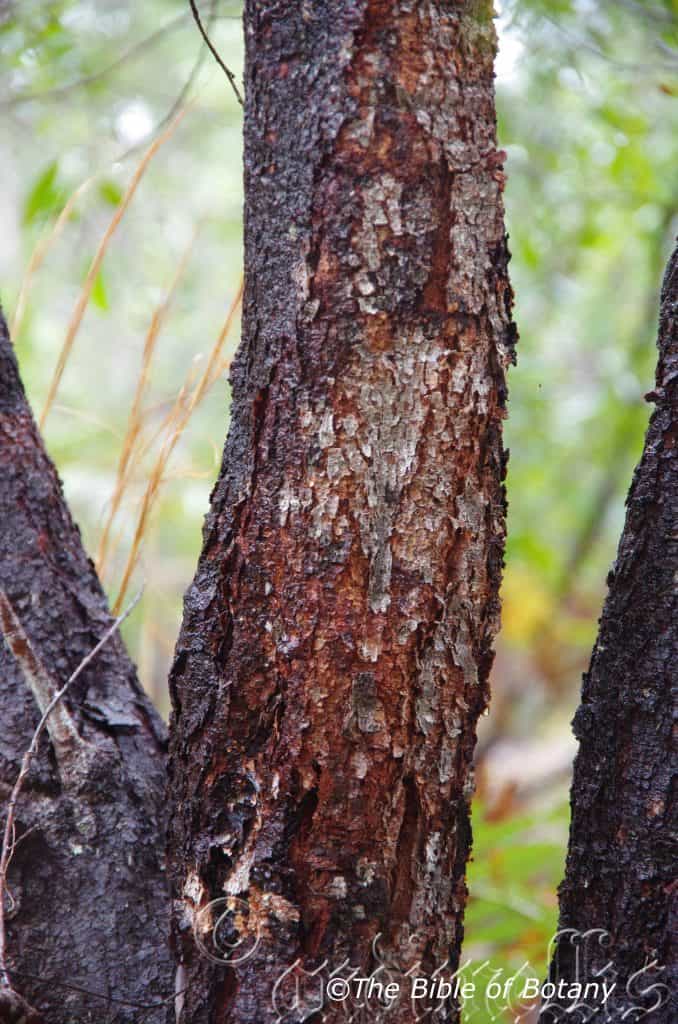
Author’s Garden The Pinnacles NSW
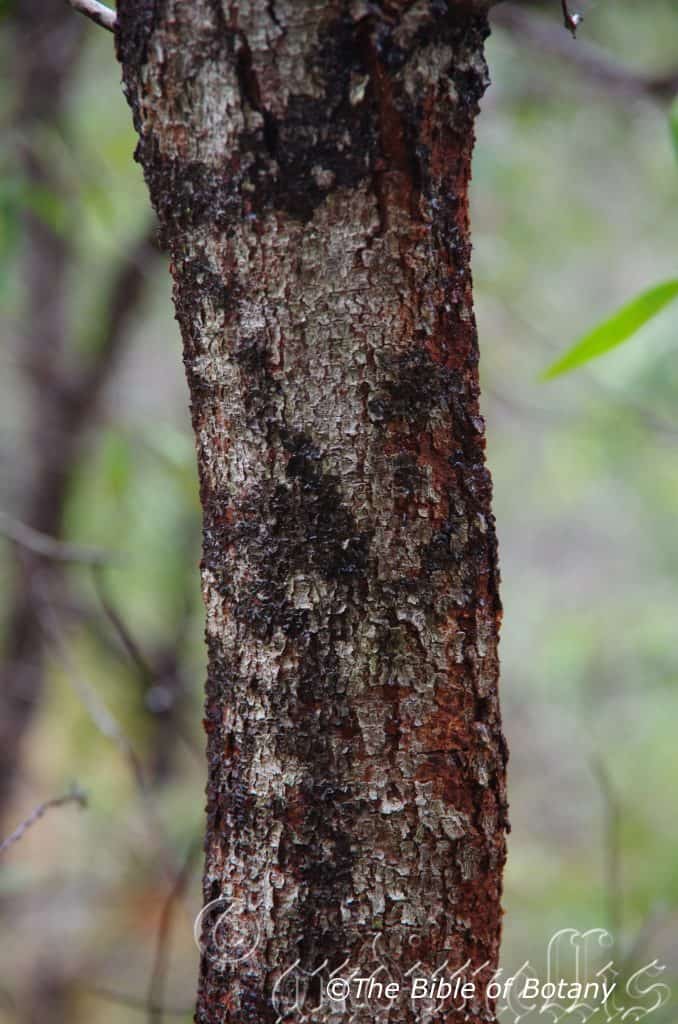
Author’s Garden The Pinnacles NSW
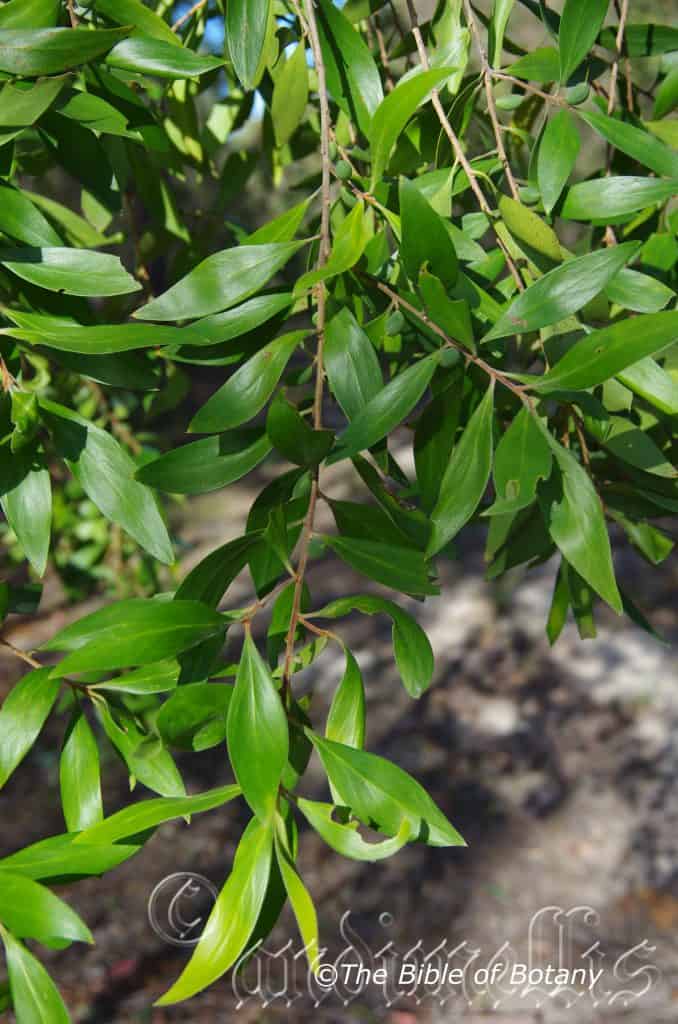
Author’s Garden The Pinnacles NSW
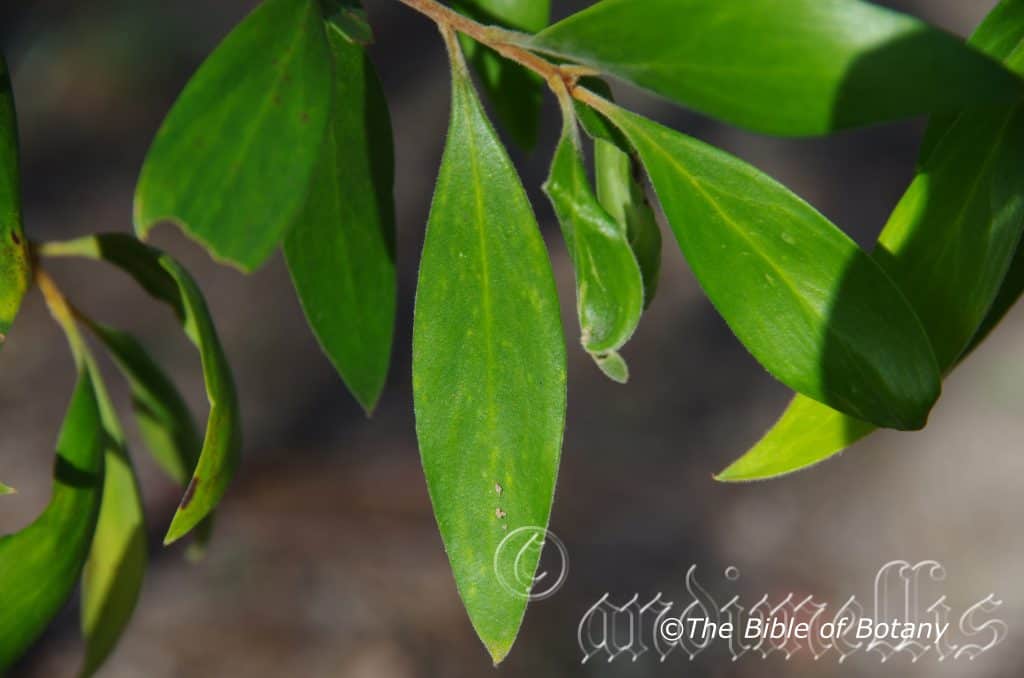
Author’s Garden The Pinnacles NSW
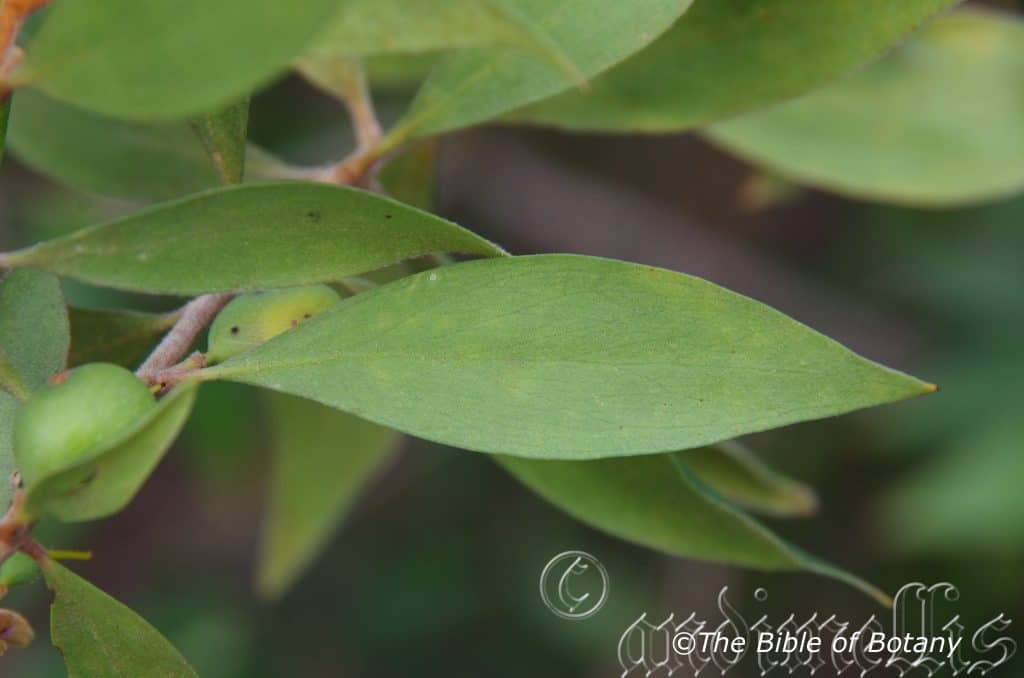
Author’s Garden The Pinnacles NSW
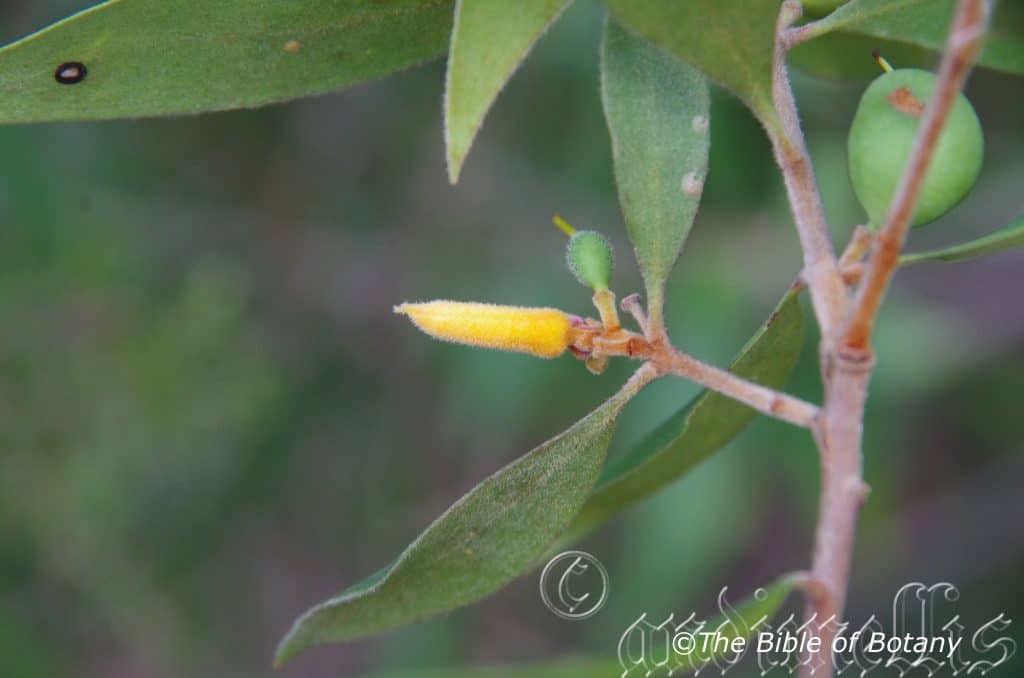
Author’s Garden The Pinnacles NSW
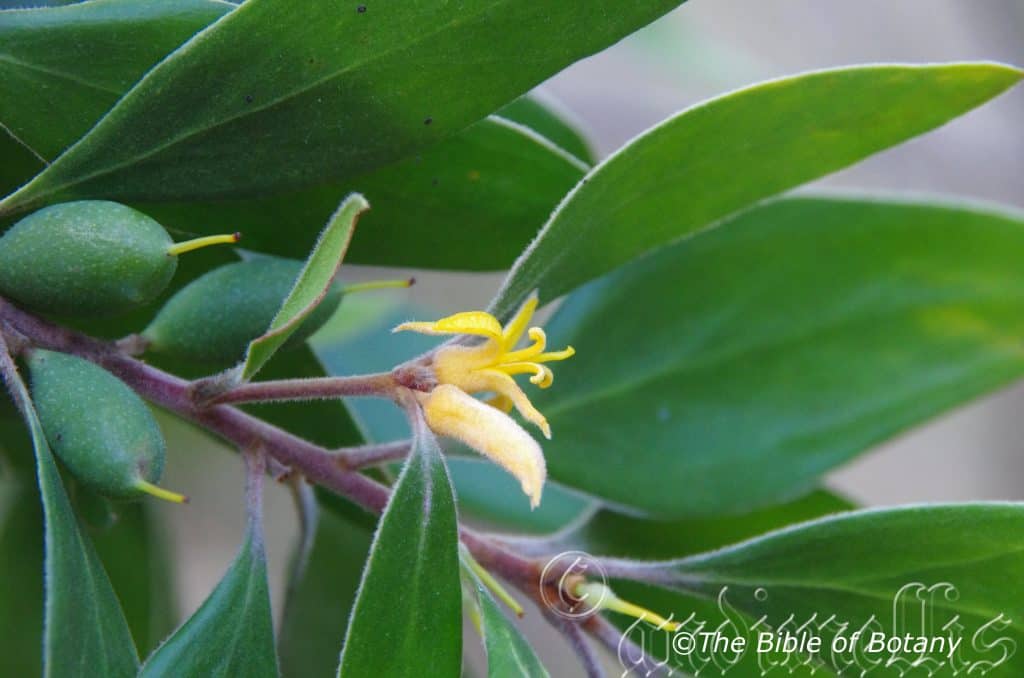
Author’s Garden The Pinnacles NSW

Author’s Garden The Pinnacles NSW
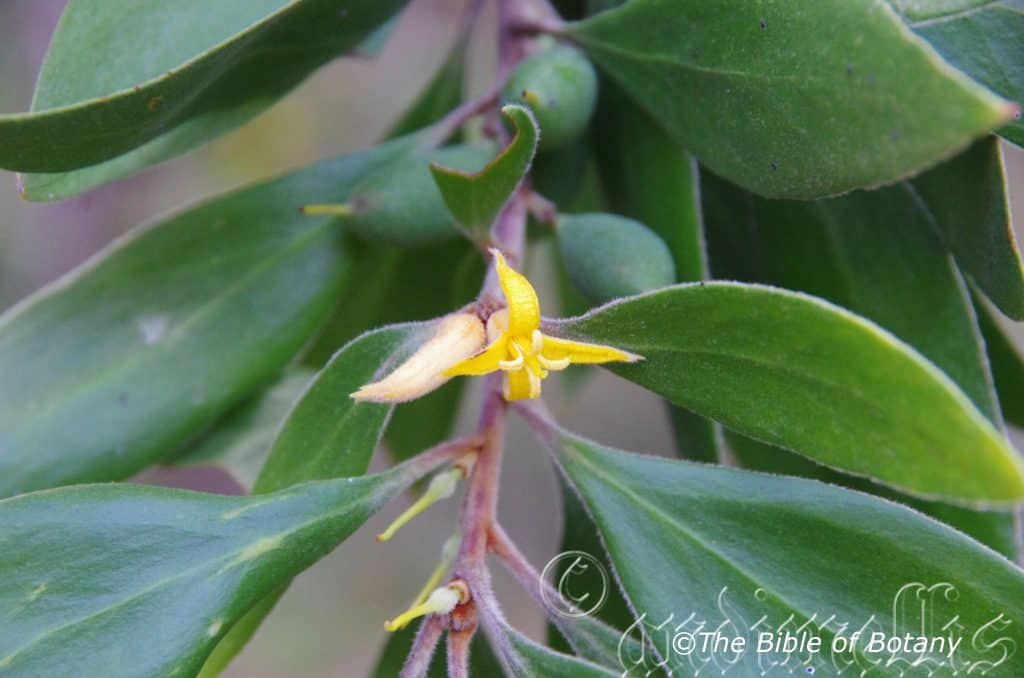
Author’s Garden The Pinnacles NSW

Author’s Garden The Pinnacles NSW
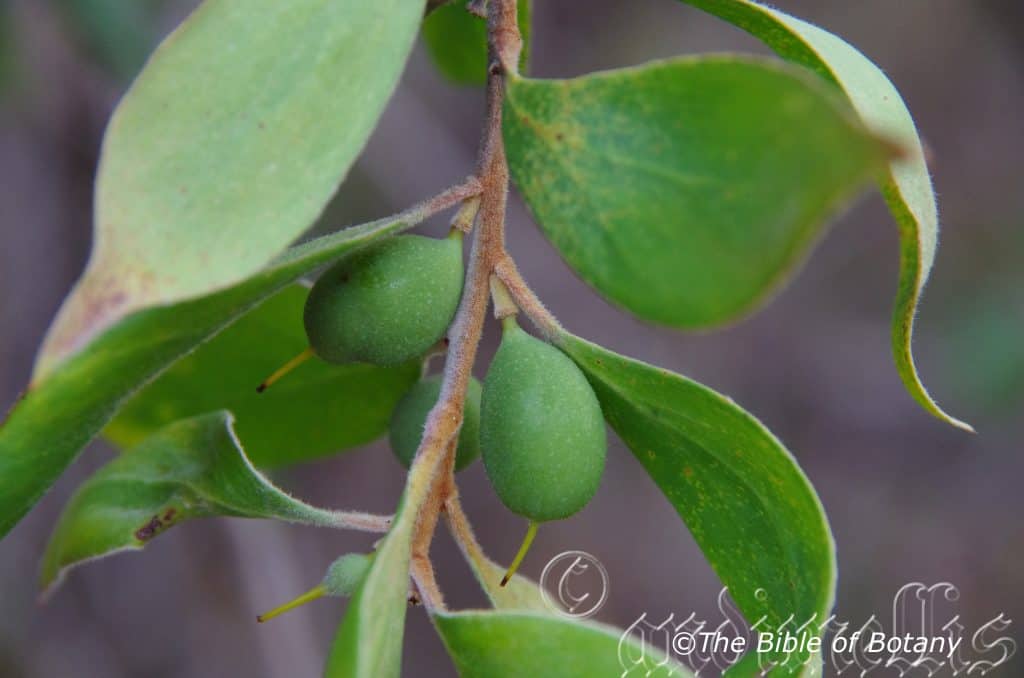
Author’s Garden The Pinnacles NSW
Persoonia stradbrokensis
Classification:
Unranked: Eudicots
Order: Proteales
Family: Protecaceae
Tribe: Persoonioideae
Genus: Is named in honour of Christian Hendrik Persoon; 1761-1836, who was a French botanist who specialised in Fungi.
Specie: From Stradbroke Island, which is Latinized for the Island on the eastern side of Morton Bay and Anum/Ensis, which is Latin for to originate from. It refers to specimens, which were first discovered on Stradbroke Island.
Sub specie:
Common Name: Geebung.
In the Aboriginal language it is known as Dharuk, Geebung, Bolwi, while the edible fruits were known as Ganai.
Distribution:
Persoonia stradbrokensis is found south from Fraser Island in southern Queensland to Port Macquarie in central coastal New South Wales. It is found on and east of the Great Dividing Range.
https://avh.ala.org.au/occurrences/search?taxa=Persoonia+stradbrokensis#tab_mapView
Habitat Aspect Climate:
Persoonia stradbrokensis prefer dappled shade to full sun. It grows in open sclerophyll forests, closed sclerophyll forests and coastal woodlands. The altitude ranges from 3 meters ASL to 400 meters ASL.
The temperatures range from minus 3 degrees in July to 36 degrees in January.
The rainfall ranges from lows of 850mm to 1500mm average per annum.
Soil requirements:
Persoonia stradbrokensis prefer sands, sandy loams to medium clays with a high proportion of gravel and stone. The soils are usuallyderived from decomposed sandstones or at times shale. The soils pH ranges from 5.5pH to 7pH. It does not tolerate of water logged soils. Non saline soils to very saline soils are tolerated as are salt laden winds.
Height & Spread:
Wild Plants: 3m to 6m by 3m to 5m
Characteristics:
Persoonia stradbrokensis grows as erect small open trees. The trunk stems are covered in small longitudinal fissure on the d to reddish-brown bark. Young shoots are yellow, red or deep crimson and are covered in pale brown to reddish brown hirtellous hairs.
The alternate elliptical, ovate to obovate leaves of Persoonia stradbrokensis measure 30mm to 115mm in length by 10mm to 40mm in width. The base is attenuate while the apex is broadly acute to broadly acuminate. The concolourous laminas are grass-green and glabrous on mature trees while juvenile trees are covered in short, soft, white pannate to pubescent hairs. The leaf margins are entire and curve downwards from the mid vein. The mid vein is not prominent on either lamina.
Inflorescences of Persoonia stradbrokensis are born singularly or up to 7 individual flowers from the leaf axils or are subtended on short leafy shoots. The pedicels, calyxes, perianths and lobes are all densely covered in short, white, silky, pulverulent hairs. The pedicels measure 1.5mm to 4mm in length.
There are 4 short, pale green, obtuse lobes on the calyx are only noticeable following anthesis when the pedicel behind the ovary expands. They measure 0.3 to 0.4mm in length. The deep yellow to deep yellow-orange perianths measure 3mm to 5mm in length while the oblong to linear lobes measure 7mm to 9mm in length by 2mm to 2.5mm in width. The apex is narrowly acute and strongly decurve at the tips.
The 4 yellow stamens are united and form a staminal tube around the style on the basal half. The filaments a divaricate and measure 8mm to 10mm in length.
The yellow style measures 6mm to 7mm in length. The flowers appear throughout the year when conditions are favourable.
Persoonia stradbokensis’s fruits are globose drupes. The drupes measure 12mm to 16mm in length by 10mm to 13mm in width. The green drupes turn yellow when ripe. The style is persistent on the ripe fruits. The single, oblong, woody seed is creamy-fawn.
Wildlife:
Persoonia stradbrokensis’s interaction with wildlife is truly remarkable. The best example is that of Persoonia specie and their pollinators. There is a close relationship between the way that the pollinators have evolved and the evolution of the flowers themselves. The native bees especially those within the Leioproctus subgenus Cladocerapis which almost exclusively feed on the nectar provided by Persoonia. The behaviour of these bees on Persoonia flowers is markedly predictable.
Both the male bees and female bees land on the apical cross made by the flexed anthers, They then orient themselves to face one of the anthers apexes then slide, face down, between the anther and the style to reach the 2 nectar glands either side of the anther.
The bee then reverse crawls backwards to the top of the anther’s cross, makes a 180° turn, then repeats the process on the other side of the flower to drink the nectar from the 2 nectaries adjacent to the anthers on the other side.
The female bees of Leioproctus subgenus Cladocerapis gather pollen grains with their legs while drinking nectar or reversing up the anther column as the pollen is often situated on the outer reaches of the anthers.
Leioproctus, subgenus Filiglossa also specialize in feeding on Persoonia’s flowers. These smaller native bees are pirates of the bee world stealing whatever pollen they find lying about and drinking spilt nectar. It is not an efficient pollinator.
The fleshy fruits of Persoonia species are adapted for nocturnal animal dispersal by appearing as white glows against a black backdrop to many mammals. Mammals like the Common Brush Tail Possum (Trichosurus vulpecula), the Common Ringtail Possum (Pseudocheirus peregrinus), Little Red Flying Fox (Pteropus scapulatus) and Grey Headed Flying Fox (Pteropus poliocephalus). Scavengers like the Common Bandicoots (Isoodon macrourus) and (Isoodon obesulus) or native rats and mice like the Giant White Tailed Rat (Uromys caudimaculatus) and the little native mouse (Pseudomys delicatulus) will join to collect any fallen fruits.
Day time activists include the Grey Currawong (Strepera versicolor), Black Jay or Black Currawong (Strepera fuliginosa), Pied Currawong (Strepera graculina) are thought to be the most important dispersers of large numbers of seeds over a larger area.
Parrots, also feed on Persoonia stradbrokiensis fruits, but the fruit (and seed) they eat a usually unripe and therefore making them ineffective dispersers of the seeds and more predatory rather than symbiotic.
I have noticed the faeces of Macropus rufogriseus at times contain eight to twelve seeds indicating that the animals must swallow the whole fruits without chewing and when in fruit are a staple part of their diet.
The soft fruits are edible but have a lot to be desired in flavour. The flavour is very slightly reminiscent of apricots. (Some will probably tell me I have a good imagination.) The best thing about the fruits is the texture and size. Maybe in the future some entrepreneurial young farmer will cull the different qualities and introduce a fruit to the market that is a little sweeter and with better flavour.
Cultivation:
Persoonia stradbrokensis is a fresh green looking small tree that deserves a place in every temperate or sub-tropical native garden. It is ideal in almost every setting near ponds, at the edge of a rain forest in dry to moist Eucalyptus forests or larger rockeries when their size is balanced. In cultivation it grows from 4 meters to 6 meters in height by 4 meters to 5 meters in diameter.
It grows exceptionally well on red or yellow sands and lighter sandy soils When deep leaf litter keeps the soil cool and moisture at an even level. If these requirements are met it can cope with temperatures as low as minus 4 degrees and up to 33 degrees. It is moderately drought resistant in their rainfall zones.
Add to the above, if it is given an adequate supply of water and a little native fertilizer on a regular basis the plants will respond with a long flowering period and copious quantities of fruit.
It often reaches their full potential in just 5 years and flower from the third year from seed. Plants will live naturally for 12 to 16 years so should be placed every 9 to 10 years to maintain continuity in fruit for the birds.
Be imaginative When planting in mass. Use the plants in different configurations and use curves.
It is best used adjacent to small areas of bush close to paths or the house so their bright green leaves can be viewed regularly. It is great in small to large rockeries when fill in plants beneath can be used with whatever shape leaves or colour flowers the owner prefers. Here it can be planted in small groups of 2 or 3 scatted as you would find them in nature to give a great bush scene. It is best used in the mid ground surrounded by shorter plants with finer foliages with white or red flowers so they will dominate at the center of the bed.
Persoonia stradbrokensis cannot be hidden from view even when planted in the background or in the middle of a bush landscape. Here it still makes an impact with its foliage contrasting with almost every other plant in the garden.
Propagation:
Seeds: The seeds of Persoonia stradbrokensis can be moved easily from the plants as they ripen. Once they have started setting the fruits and some fruit have commenced falling to the ground it is just a matter of looking for the drupes and picking the soft ones. The success rate in sowing fresh seed, old seed, heat treated seeds and scarified by placing them in the fridge have all met with various degrees of failure. Nature obviously has the secret. Seeds in the field are consistently at different stages of development which means the fruits ripen at different times throughout the year.
In fact very few fruits ever hit the ground and none or very few germinate beneath the parent trees. This is when my theory that because the fruits are continually being eaten by birds and possums, the seedlings germinates throughout the bush away from the parent plant; they must rely on the different animals passing them through their gut first.
This sounds unpleasant but we have had success with this specie and Persoonia tenuifolia, which have passed through a possum the night before. Germination is over 60mm thus nature has at long last revealed her hidden secret for germinating Persoonia specie.
Some species may rely on being buried for long periods and maybe fungus or bacterial action within the soil acts the same way as gut bacteria of birds and mammals. The theories all break down as when there is a bushfire as hundreds of seeds germinate over the burnt land very quickly all at the same time yet ash water and heat failed in our trials.
Seeds need to be collected and washed under the hose to move all traces of any scat or allowed to decompose naturally.
Another hypothesis; not yet tested, is maybe animal saliva contains an enzyme which assists in the germination of the seeds. This could be tested by eating the flesh off the seeds and spitting them out then planting those seeds without further washing.
Sow treated seeds directly into a seed raising mix, keeping them moist not wet. When the seedlings are 20mm to 25mm tall, prick them out and plant them into 50mm native tubes using a good organic mix.
As the seedlings roots ach the bottom of the tubes plant them out into their permanent position. You should not delay as some set back will occur on transplanting.
Fertilize using seaweed, fish emulsion or organic chicken pellets soaked in water on an alternate basis. Fertilize every two months until the plants are established then twice annually in early September and March to maintain better health, vitality and flowering.
Further Comments from Readers:
“Hi reader, it seems you use The Bible of Botany a lot. That’s great as we have great pleasure in bringing it to you! It’s a little awkward for us to ask, but our first aim is to purchase land approximately 1,600 hectares to link several parcels of N.P. into one at The Pinnacles NSW Australia, but we need your help. We’re not salespeople. We’re amateur botanists who have dedicated over 30 years to saving the environment in a practical way. We depend on donations to reach our goal. If you donate just $5, the price of your coffee this Sunday, We can help to keep the planet alive in a real way and continue to bring you regular updates and features on Australian plants all in one Botanical Bible. Any support is greatly appreciated. Thank you.”
In the spirit of reconciliation we acknowledge the Bundjalung, Gumbaynggirr and Yaegl and all aboriginal nations throughout Australia and their connections to land, sea and community. We pay our respect to their Elders past, present and future for the pleasures we have gained.

Author’s Garden The Pinnacles NSW

The Pinnacles NSW

Author’s Garden The Pinnacles NSW
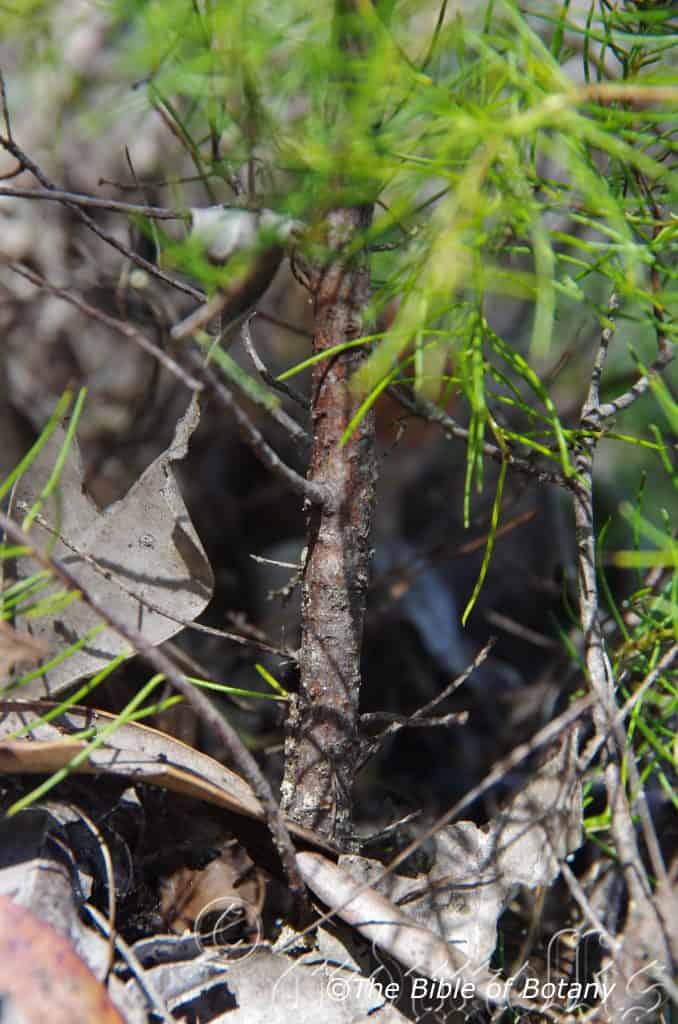
Author’s Garden The Pinnacles NSW
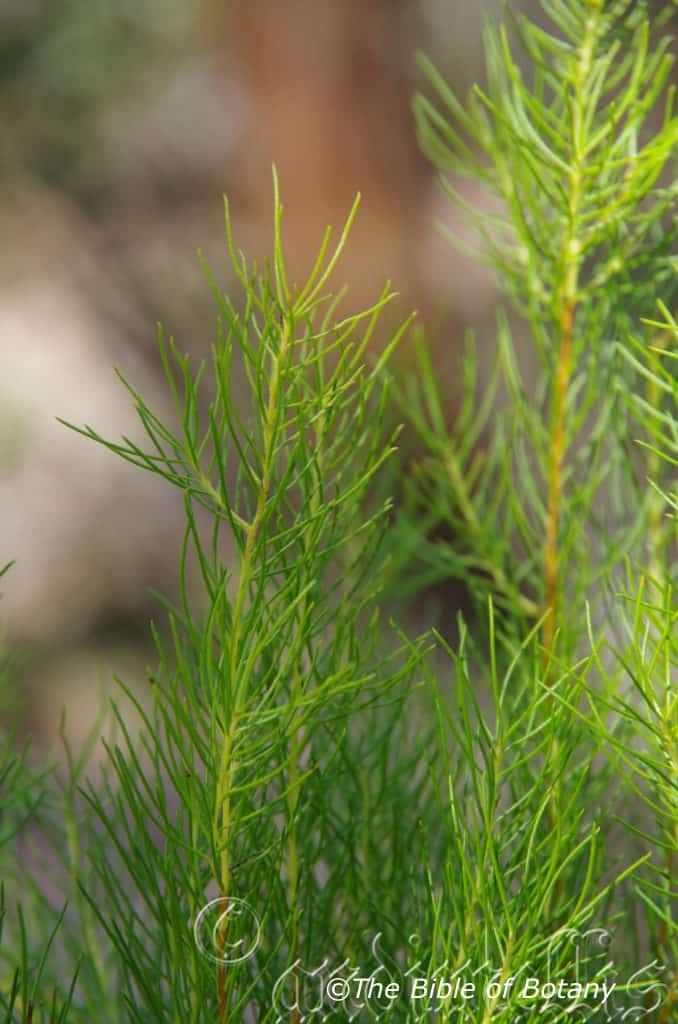
Author’s Garden The Pinnacles NSW
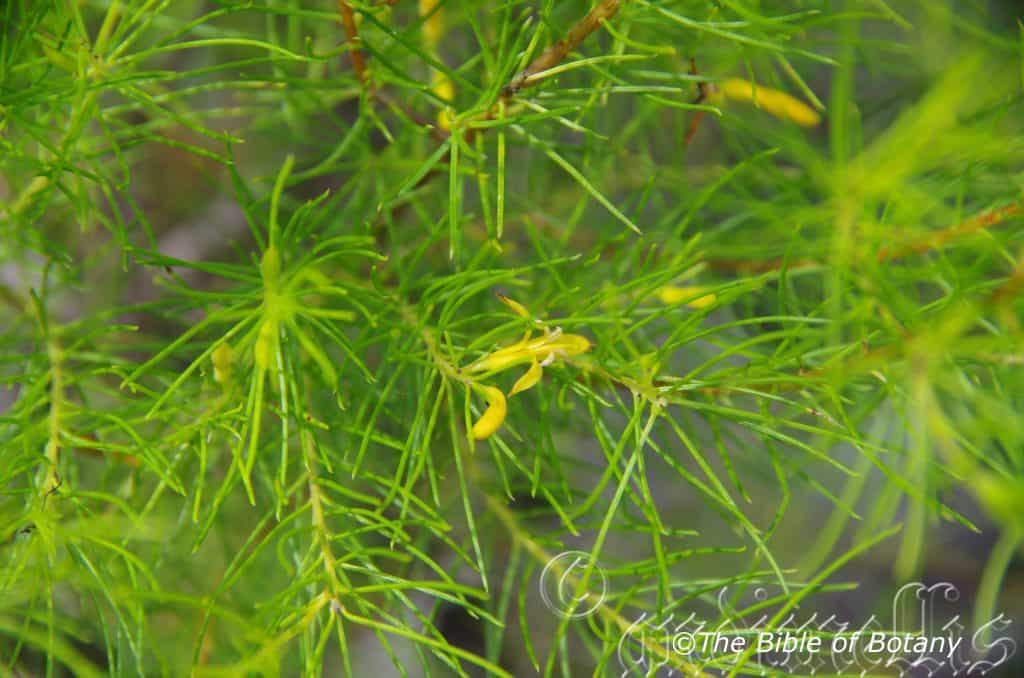
Sherwood Nature Reserve NSW

Sherwood Nature Reserve NSW
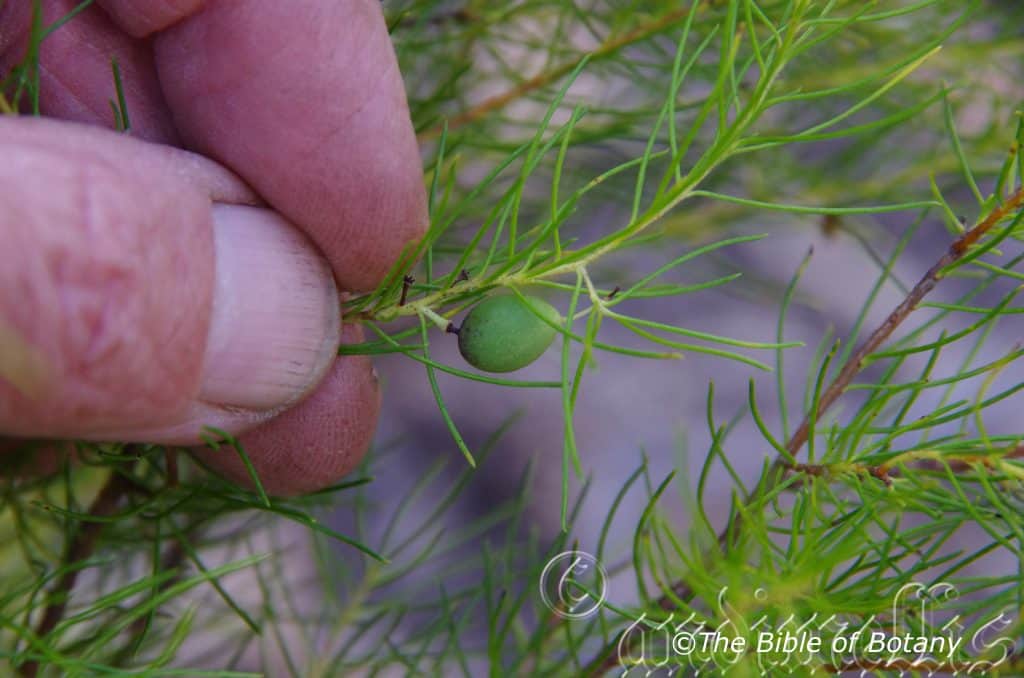
Author’s Garden The Pinnacles NSW
Persoonia tenuifolia
Classification:
Unranked: Eudicots
Order: Proteales
Family: Protecaceae
Tribe: Persoonioideae
Genus: Is named in honour of Christian Hendrik Persoon; 1761-1836, who was a French botanist who specialised in Fungi.
Specie: From Tanu, which is Ancient Greek or later Tenue, which is Latin for slender or fine and Folium, which is Latin for foliage. It refers to leaves, which are more slender than other species in the genus.
Sub specie:
Common Name: Fine Leaf Geebung.
Distribution:
Persoonia tenuifolia is found south from Gladstone in coastal central Queensland to Ramornie near Grafton and west to Yetman near Moe in northern New South Wales. It is also found on Fraser Island, Stradbroke Island, Moreton Island and the Islands of Moreton Bay.
https://avh.ala.org.au/occurrences/search?taxa=Persoonia+tenuifolia#tab_mapView
Habitat Aspect Climate:
Persoonia tenuifolia prefers dappled shade to full sun. It grows in open sclerophyll forests, closed sclerophyll forests or coastal woodlands. The altitude ranges from 30 meters ASL to 900 meters ASL.
The temperatures range from minus 3 degrees in July to 36 degrees in January.
The rainfall ranges from lows of 700mm to 1500mm average per annum.
Soil requirements:
Persoonia tenuifolia prefers yellow, grey or white sands, sandy loams to light fatty clays with or without a high proportion of gravel. The soils are usually derived from decomposed sandstones, granites or accumulated beach sands. The soils pH ranges from 5pH to 7pH. It does not tolerate of water logged soils. Non saline soils to moderately saline soils are tolerated.
Height & Spread:
Wild Plants: 0.1m to 0.75m by 1.5m to 2m.
Characteristics:
Persoonia tenuifolia grows as a small ascending shrub lying on other vegetation for support or a decumbent ground cover. The main stems are covered in small farinaceous or resinous lumps and scales, on the red to reddish-brown or grey bark. Young shoots are olive green turning yellow-green as they approach the apex. It is sparsely to moderately covered in white pilose hairs.
The linear leaves of Persoonia tenuifolia are in loose whirls or spiral along the stems and are subterete and channelled above. They measure 10mm to 25mm in length by 0.3mm to 0.5mm in width. The apex tapers to a point. The concolourous laminas are grass-green and glabrous or sparsely to moderately covered in white, caduceus, pilose hairs on mature shrubs while the leaves on juvenile shrubs are covered in white, pilose hairs. The leaf margins are entire and strongly incurved to form a channel along the upper lamina. The mid vein is not prominent on either lamina.
The inflorescences of Persoonia tenuifolia are born singularly from the leaf axils or a subtended on short leafy shoots. The pedicels, calyxes, perianths and lobes are all glabrous. The pedicels measure 1mm to 3mm in length.
The calyxes are cylindrical urns and measure 0.3 to 0.4mm in length and are difficult to distinguish from the pedicel. The deep yellow to yellow-orange perianths measure 1.2mm to 1.5mm in length while the oblong to linear lobes measure 8mm to 10mm in length by 3mm to 3.2mm in diameter. The apex is obtuse and shortly apiculate. It is strongly decurve at the tips.
The 4 yellow stamens are united and form a staminal tube around the style on the basal half. The filaments are divaricate and measure 5mm to 6mm in length.
The yellow style measures 5mm to 7mm in length. The flowers appear throughout the year When conditions are favourable.
Persoonia tenuifolia fruits are globose drupes. The drupes measure 10mm to 13mm in length by 78mm to 11mm in width. The green drupes turn yellow when ripe. The style is persistent on the ripe fruits. The single, oblong, woody seed is creamy-fawn.
Wildlife:
Persoonia tenuifolia’s interaction with wildlife is truly remarkable. The best example is that of Persoonia specie and their pollinators. There is a close relationship between the way that the pollinators have evolved and the evolution of the flowers themselves. The native bees especially those within the Leioproctus subgenus Cladocerapis which almost exclusively feed on the nectar provided by Persoonia. The behaviour of these bees on Persoonia flowers is markedly predictable.
Both the male bees and female bees land on the apical cross made by the flexed anthers, They then orient themselves to face one of the anthers apexes then slide, face down, between the anther and the style to reach the 2 nectar glands either side of the anther.
The bee then reverse crawls backwards to the top of the anther’s cross, makes a 180° turn, then repeats the process on the other side of the flower to drink the nectar from the 2 nectaries adjacent to the anthers on the other side.
The female bees of Leioproctus subgenus Cladocerapis gather pollen grains with their legs while drinking nectar or reversing up the anther column as the pollen is often situated on the outer reaches of the anthers.
Leioproctus, subgenus Filiglossa also specialize in feeding on Persoonia’s flowers. These smaller native bees are pirates of the bee world stealing whatever pollen they find lying about and drinking spilt nectar. It is not an efficient pollinator.
The soft fruits are edible but have a lot to be desired in flavour. The flavour is very slightly reminiscent of apricots. (Some will probably tell me I have a good imagination.) The best thing about the fruits is the texture and size.
Cultivation:
Persoonia tenuifolia is a fresh green looking small tree that deserves a place in every temperate or sub-tropical native garden. It is ideal in almost every setting near ponds, at the edge of a rain forest in dry to moist Eucalyptus forests or larger rockeries When their size is balanced. In cultivation it grows from 4 meters to 6 meters in height by 4 meters to 5 meters in diameter.
It grows exceptionally well on red or yellow sands and lighter sandy soils When deep leaf litter keeps the soil cool and moisture at an even level. If these requirements are met it can cope with temperatures as low as minus 4 degrees and up to 33 degrees. It is moderately drought resistant in their rainfall zones.
Add to the above, if it is given an adequate supply of water and a little native fertilizer on a regular basis the plants will respond with a long flowering period and copious quantities of fruit.
It often reaches their full potential in just 3 years and flower from the third year from seed. Plants will live naturally for 12 to 16 years so should be placed every 9 to 10 years to maintain continuity in fruit for the birds.
Be imaginative When planting in mass. Use the plants in different configurations and use curves.
It is best used adjacent to small areas of bush close to paths or the house so their bright green leaves can be viewed regularly. It is great in small to large rockeries When fill in plants beneath can be used with whatever shape leaves or colour flowers the owner prefers. Here it can be planted in small groups of 2 or 3 scatted as you would find them in nature to give a great bush scene. It is best used in the mid ground surrounded by shorter plants with finer foliages with white or red flowers so they will dominate at the center of the bed.
Persoonia tenuifolia cannot be hidden from view even When planted in the background or in the middle of a bush landscape. Here it will still make an impact with its foliage contrasting with almost every other plant in the garden.
Propagation:
Seeds: The seeds of Persoonia tenuifolia can be removed easily from the plants as they ripen. Once they have started setting the fruits and some fruit have commenced falling to the ground it is just a matter of looking for the drupes and picking the soft ones. The success rate in sowing fresh seed, old seed, heat treated seeds and scarified by placing them in the fridge have all met with various degrees of failure. Nature obviously has the secret. Seeds in the field are consistently at different stages of development which means the fruits ripen at different times throughout the year.
In fact very few fruits ever hit the ground and none or very few germinate beneath the parent trees. This is When my theory that because the fruits are continually being eaten by birds and possums, the seedlings germinates throughout the bush away from the parent plant; they must rely on the different animals passing them through their gut first.
This sounds unpleasant but we have had success with this specie. Persoonia stradbrokiensis and Persoonia tenuifolia by eating the fruit ensuring the skin is broken and collecting the seeds the next day. Germination is over 60mm thus nature has at long last revealed her hidden secret for germinating Persoonia specie.
Some specie may rely on being buried for long periods and maybe fungus or bacterial action within the soil acts the same way as gut bacteria of birds and mammals. The theories all break down as When there is a bushfire as hundreds of seeds germinate over the burnt land very quickly all at the same time yet ash water and heat failed in our trials.
Seeds need to be collected and washed under the hose to move all traces of any scat or allowed to decompose naturally.
Another hypothesis; not yet tested, is maybe animal saliva contains an enzyme which assists in the germination of the seeds. This could be tested by eating the flesh off the seeds and spitting them out then planting those seeds without further washing.
Sow treated seeds directly into a seed raising mix, keeping them moist not wet. When the seedlings are 20mm to 25mm tall, prick them out and plant them into 50mm native tubes using a good organic mix.
As the seedlings roots ach the bottom of the tubes plant them out into their permanent position. You should not delay as some set back will occur on transplanting.
Fertilize using seaweed, fish emulsion or organic chicken pellets soaked in water on an alternate basis. Fertilize every two months until the plants are established then twice annually in early September and March to maintain better health, vitality and flowering.
Further Comments from Readers:
“Hi reader, it seems you use The Bible of Botany a lot. That’s great as we have great pleasure in bringing it to you! It’s a little awkward for us to ask, but our first aim is to purchase land approximately 1,600 hectares to link several parcels of N.P. into one at The Pinnacles NSW Australia, but we need your help. We’re not salespeople. We’re amateur botanists who have dedicated over 30 years to saving the environment in a practical way. We depend on donations to reach our goal. If you donate just $5, the price of your coffee this Sunday, We can help to keep the planet alive in a real way and continue to bring you regular updates and features on Australian plants all in one Botanical Bible. Any support is greatly appreciated. Thank you.”
In the spirit of reconciliation we acknowledge the Bundjalung, Gumbaynggirr and Yaegl and all aboriginal nations throughout Australia and their connections to land, sea and community. We pay our respect to their Elders past, present and future for the pleasures we have gained.
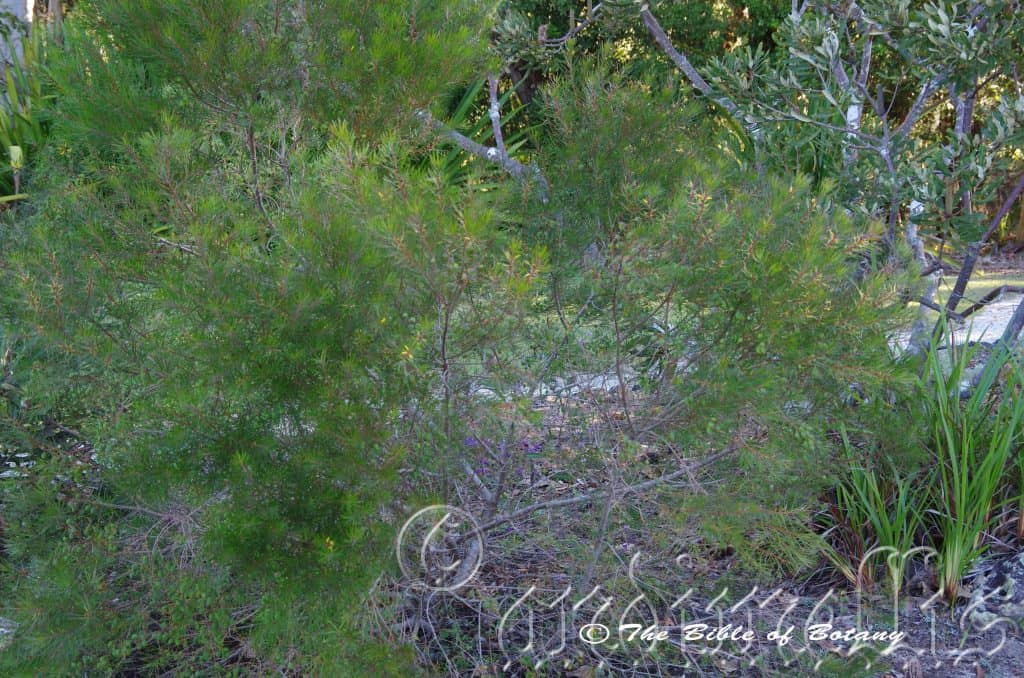
NCBG Coffs Harbour NSW
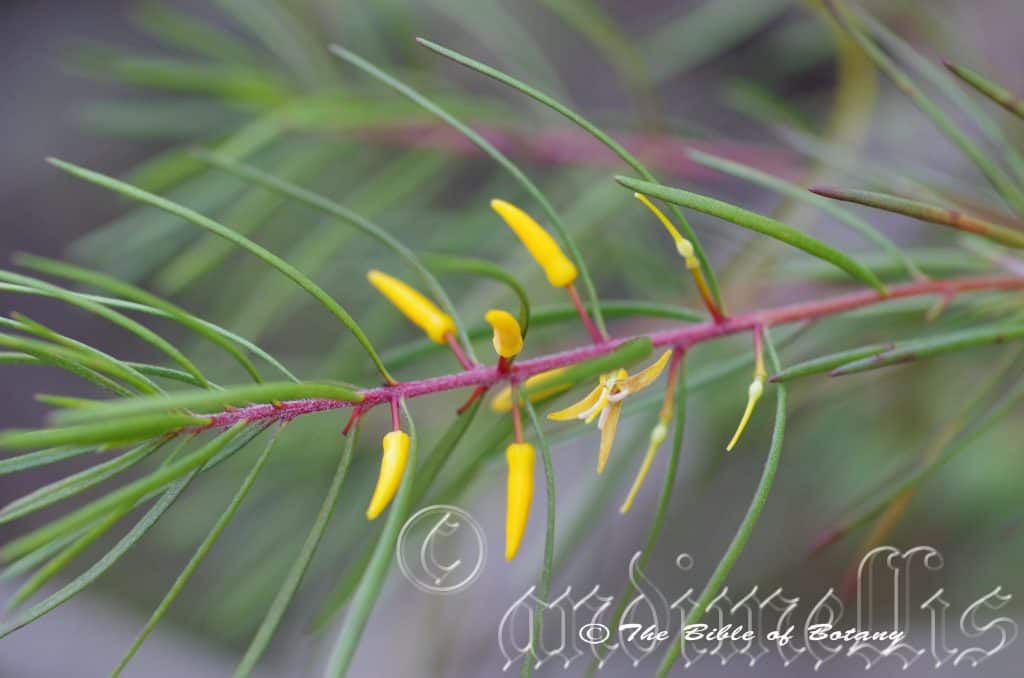
The Pinnacles NSW
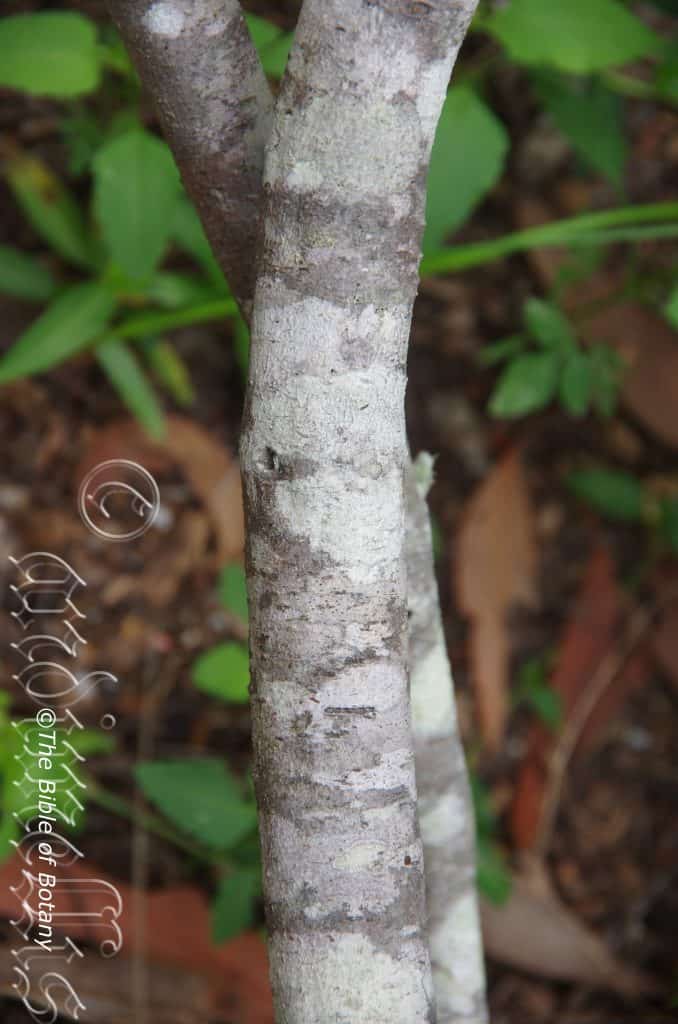
The Pinnacles NSW
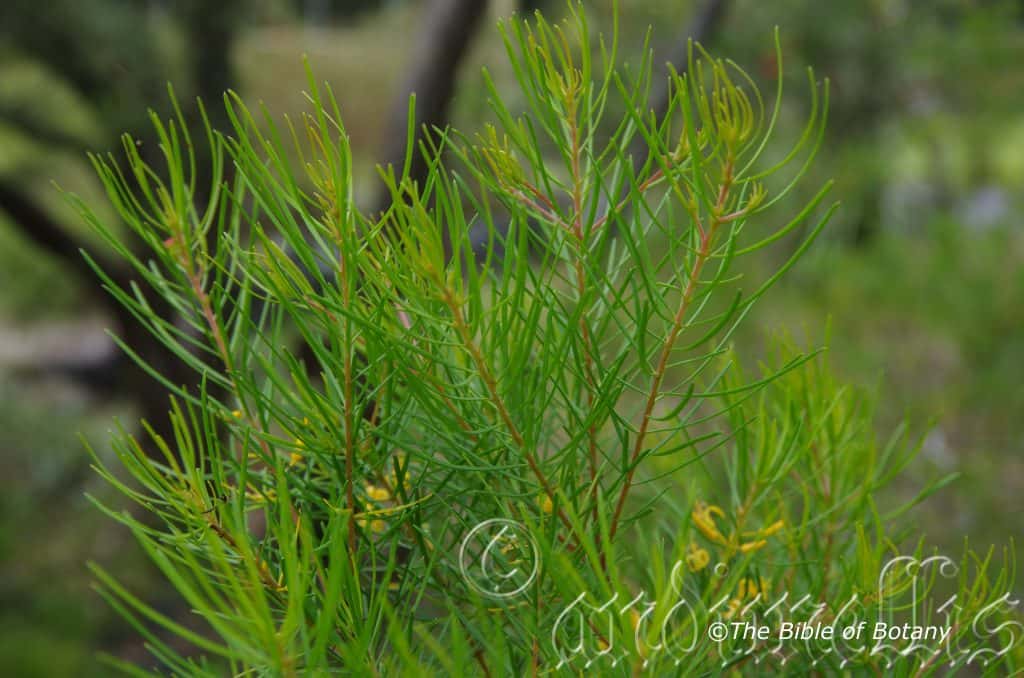
NCBG Coffs Harbour NSW
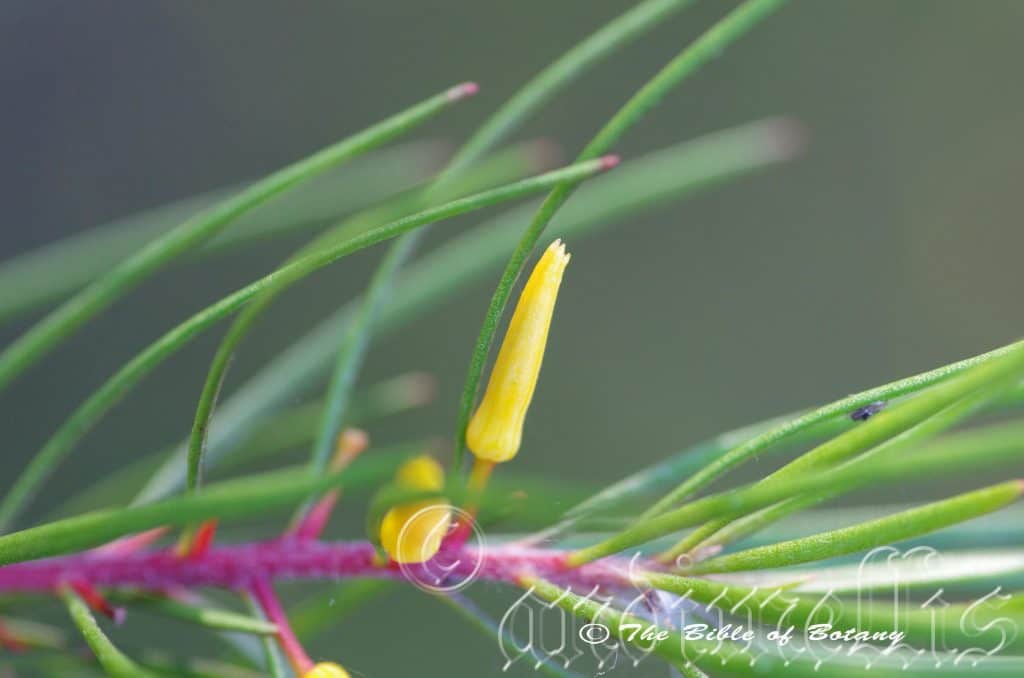
The Pinnacles NSW
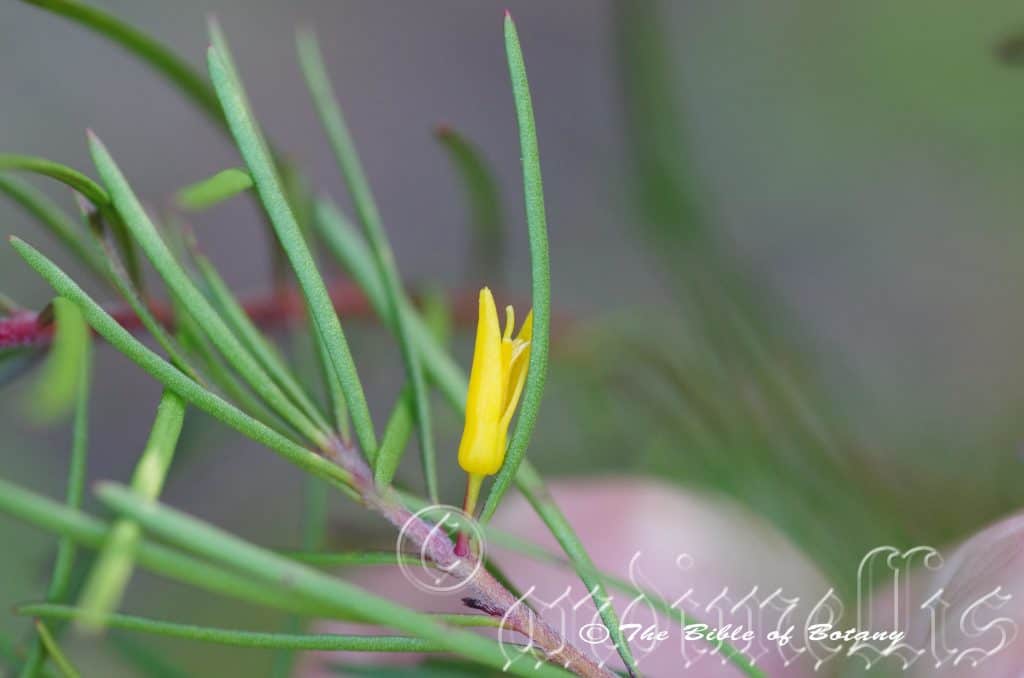
The Pinnacles NSW

The Pinnacles NSW
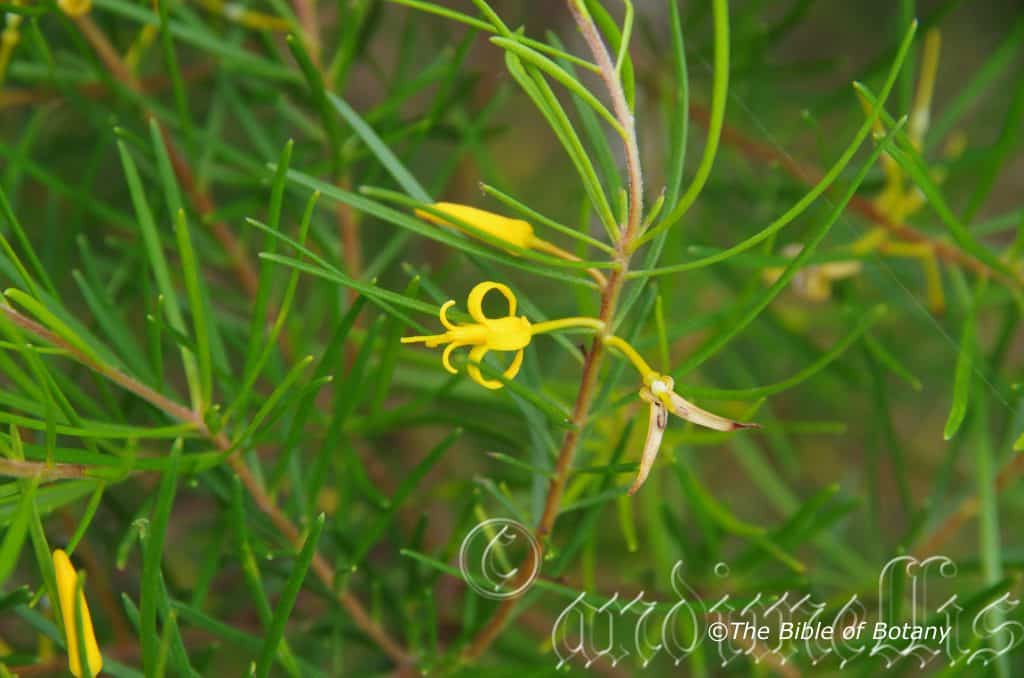
NCBG Coffs Harbour NSW
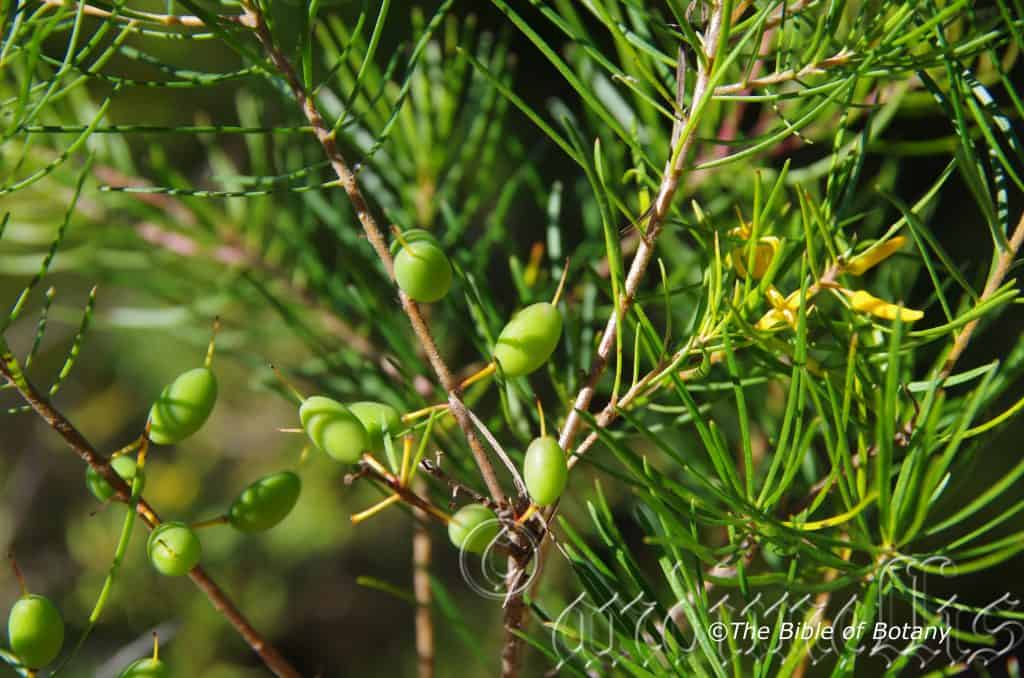
NCBG Coffs Harbour NSW
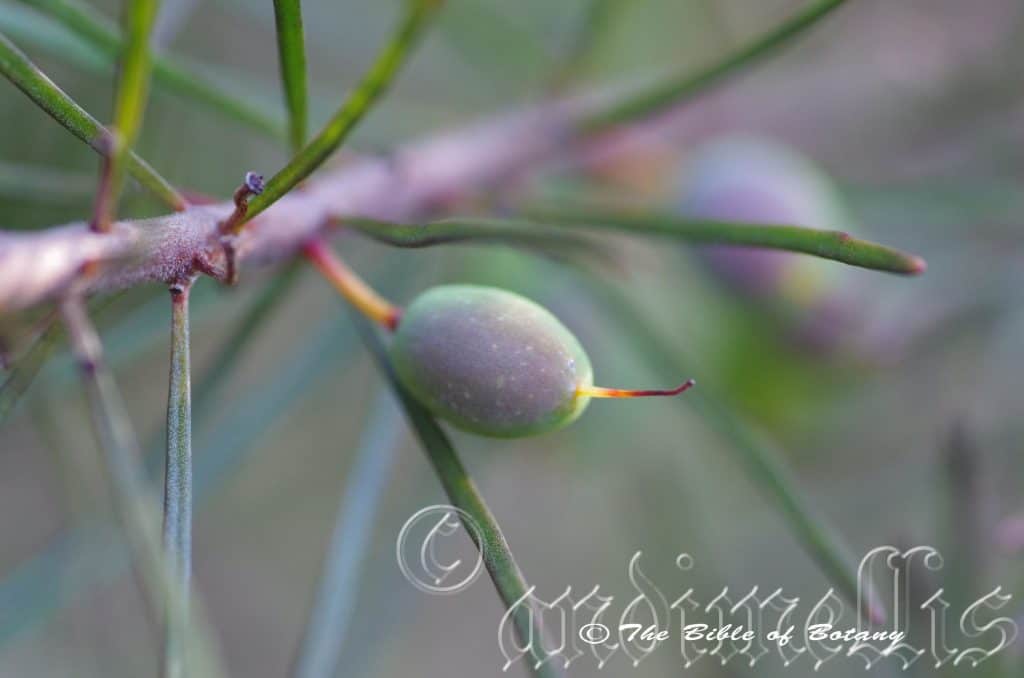
The Pinnacles NSW

NCBG Coffs Harbour NSW
Persoonia virgata
Classification:
Unranked: Eudicots
Order: Proteales
Family: Protecaceae
Tribe: Persoonioideae
Genus: Is named in honour of Christian Hendrik Persoon; 1761-1836, who was a French botanist who specialised in Fungi.
Specie: From Virg?tum, which is Latin for a wand or stick. It refers to stems, which are straight and narrow like a wand.
Sub specie:
Common Name:
Distribution:
Persoonia virgata is found south from Clinton Lowland in Shoal Haven Bay in coastal central Queensland to the Great Lakes in central coastal New South Wales. It is found along the coastal strip except for 2 isolated populations west of the Great Dividing Range in the Robinson Gorge National Park and in the Boonoo Boonoo National Park.
https://avh.ala.org.au/occurrences/search?taxa=Persoonia+virgata#tab_mapView
Habitat Aspect Climate:
Persoonia virgata prefer dappled shade to full sun. It grows in dry, open sclerophyll forests and dry open coastal woodlands. The altitude ranges from 3 meters ASL to 60 meters ASL except for the 2 isolated populations which a found at 450 meters ASL and 890 meters ASL. (Average heights ASL for the parks)
The temperatures range from minus 4 degrees in July to 40 degrees in January.
The rainfall ranges from lows of 500mm to 2100mm average per annum.
Soil requirements:
Persoonia virgata prefer sands, sandy loams to light fatty clays with or without a high proportion of gravel and stone. The soils are usuallyderived from accumulated peaty beach sands or at times decomposed sandstones. The soils pH ranges from 5pH to 6.5pH. It does not tolerate of water logged soils. Non saline soils to very saline soils are tolerated as are salt laden winds.
Height & Spread:
Wild Plants: 2m to 5m by 1m to 3m
Characteristics:
Persoonia virgata grows as erect open shrub or small tree. The larger stems re deep reddish–brown almost black with small flaky patches. The smaller stems are reddish-brown and are moderately covered in white pubescent caduceous hairs.
The alternate linear leaves of Persoonia virgata measure 20mm to 50mm in length by 1mm to 2mm in width. The greenish-yellow petioles moderately covered in white pubescent hairs and measure 1.5mm to 2mm in length. The base tapers to the petiole while the apex is narrow acute. The concolourous laminas are grass-green and glabrous on mature leaves while the juvenile leaves are sparsely to moderately covered in white pubescent caduceous hairs. The lamina is areolate on the upper surface and is straight or greently curves upwards from the petioles to the apexes. The margins are entire. The mid vein and lateral veins are not prominent on either lamina.
Inflorescences of Persoonia virgata are born singularly or in pairs from the leaf axils or are subtended on short leafy shoots. The pedicels, calyxes, perianths and lobes are all sparsely to moderately covered in short, white, silky, pulverulent hairs. The sub erect to divaricate pedicels measure 4mm to 9mm in length.
The deep golden-yellow to deep yellow perianths measure 2.2mm to 2.5mm in length while the linear lobes measure 9mm to 11mm in length by 2mm to 2.5mm in width. The lobes apexes are narrowly acute strongly flexed at the tips.
The 4 deep yellow to deep yellow-orange stamens are free but form a staminal tube around the style on the basal section. The filaments are flexed and measure 6mm to 8mm in length.
The bright yellow style measures 7mm to 11mm in length. The flowers appear throughout the year When conditions are favourable.
Persoonia virgata’s fruits are oblique, globose drupes. The drupes measure 11mm to 14mm in length by 6mm to 9mm in width. The green drupes turn yellowish-green When ripe. The style is persistent on the ripe fruits. The single, oblong, woody seed is cam.
Wildlife:
Persoonia virgata’s interaction with wildlife is truly remarkable. The best example is that of Persoonia specie and their pollinators. There is a close relationship between the way that the pollinators have evolved and the evolution of the flowers themselves. The native bees especially those within the Leioproctus subgenus Cladocerapis which almost exclusively feed on the nectar provided by Persoonia. The behaviour of these bees on Persoonia flowers is markedly predictable.
Both the male bees and female bees land on the apical cross made by the flexed anthers, They then orient themselves to face one of the anthers apexes then slide, face down, between the anther and the style to reach the 2 nectar glands either side of the anther.
The bee then reverse crawls backwards to the top of the anther’s cross, makes a 180° turn, then repeats the process on the other side of the flower to drink the nectar from the 2 nectaries adjacent to the anthers on the other side.
The female bees of Leioproctus subgenus Cladocerapis gather pollen grains with their legs while drinking nectar or reversing up the anther column as the pollen is often situated on the outer reaches of the anthers.
Leioproctus, subgenus Filiglossa also specialize in feeding on Persoonia’s flowers. These smaller native bees are pirates of the bee world stealing whatever pollen they find lying about and drinking spilt nectar. It is not an efficient pollinator.
The fleshy fruits of Persoonia species are adapted for nocturnal animal dispersal by appearing as white glows against a black backdrop to many mammals. Mammals like the Common Brush Tail Possum (Trichosurus vulpecula), the Common Ringtail Possum (Pseudocheirus peregrinus), Little Red Flying Fox (Pteropus scapulatus) and Grey Headed Flying Fox (Pteropus poliocephalus). Scavengers like the Common Bandicoots (Isoodon macrourus) and (Isoodon obesulus) or native rats and mice like the Giant White Tailed Rat (Uromys caudimaculatus) and the little native mouse (Pseudomys delicatulus) will join to collect any fallen fruits.
Day time activists include the Grey Currawong (Strepera versicolor), Black Jay or Black Currawong (Strepera fuliginosa), Pied Currawong (Strepera graculina) are thought to be the most important dispersers of large numbers of seeds over a larger area.
Parrots, also feed on Persoonia falcata’s fruits, but the fruit (and seed) they eat a usually unripe and therefore making them ineffective dispersers of the seeds and more predatory rather than symbiotic.
The soft fruits are edible but have a lot to be desired in flavour. The flavour is very slightly reminiscent of apricots. (Some will probably tell me I have a good imagination.) The best thing about the fruits is the texture and size.
Cultivation:
Persoonia virgata is a fresh green looking small tree that deserves a place in every temperate or sub-tropical native garden. It is ideal in almost every setting near ponds, at the edge of a rain forest in dry to moist Eucalyptus forests or larger rockeries When their size is balanced. In cultivation they will grow from 4 meters to 6 meters in height by 4 meters to 5 meters in diameter.
It grows exceptionally well on red or yellow sands and lighter sandy soils When deep leaf litter keeps the soil cool and moisture at an even level. If these requirements are met it can cope with temperatures as low as minus 4 degrees and up to 33 degrees. It is moderately drought resistant in its rainfall zones.
Add to the above, if it is given an adequate supply of water and a little native fertilizer on a regular basis the plants will respond with a long flowering period and copious quantities of fruit.
It often reaches their full potential in just 5 years and flower from the third year from seed. Plants will live naturally for 12 to 16 years so should be placed every 9 to 10 years to maintain continuity in fruit for the birds.
Be imaginative When planting in mass. Use the plants in different configurations and use curves.
It is best used adjacent to small areas of bush close to paths or the house so their bright green leaves can be viewed regularly. It is great in small to large rockeries When fill in plants beneath can be used with whatever shape leaves or colour flowers the owner prefers. Here it can be planted in small groups of 2 or 3 scatted as you would find them in nature to give a great bush scene. It is best used in the mid ground surrounded by shorter plants with finer foliages with white or red flowers so they will dominate at the center of the bed.
Persoonia virgata cannot be hidden from view even When planted in the background or in the middle of a bush landscape. Here it still makes an impact with its foliage contrasting with almost every other plant in the garden.
Propagation:
Seeds: The seeds of Persoonia virgata can be moved easily from the plants as they ripen. Once they have started setting the fruits and some fruit have commenced falling to the ground it is just a matter of looking for the drupes and picking the soft ones. The success rate in sowing fresh seed, old seed, heat treated seeds and scarified by placing them in the fridge have all met with various degrees of failure. Nature obviously has the secret. Seeds in the field are consistently at different stages of development which means the fruits ripen at different times throughout the year.
In fact very few fruits ever hit the ground and none or very few germinate beneath the parent trees. This is When my theory that because the fruits are continually being eaten by birds and possums, the seedlings germinates throughout the bush away from the parent plant; they must rely on the different animals passing them through their gut first.
This sounds unpleasant but we have had success with this specie. Persoonia stradbrokiensis and Persoonia tenuifolia by finding seeds, which have passed through possums. Germination is over 60mm thus nature has at long last revealed her hidden secret for germinating Persoonia specie.
Some specie may rely on being buried for long periods and maybe fungus or bacterial action within the soil acts the same way as gut bacteria of birds and mammals. The theories all break down as when there is a bushfire as hundreds of seeds germinate over the burnt land very quickly all at the same time yet ash water and heat failed in our trials.
Seeds need to be collected and washed under the hose to move all traces of any scat or allowed to decompose naturally.
Another hypothesis; not yet tested, is maybe animal saliva contains an enzyme which assists in the germination of the seeds. This could be tested by eating the flesh off the seeds and spitting them out then planting those seeds without further washing.
Sow treated seeds directly into a seed raising mix, keeping them moist not wet. When the seedlings are 20mm to 25mm tall, prick them out and plant them into 50mm native tubes using a good organic mix.
As the seedlings roots reach the bottom of the tubes plant them out into their permanent position. You should not delay as some set back will occur on transplanting.
Fertilize using seaweed, fish emulsion or organic chicken pellets soaked in water on an alternate basis. Fertilize every two months until the plants are established then twice annually in early September and March to maintain better health, vitality and flowering.
Further Comments from Readers:
“Hi reader, it seems you use The Bible of Botany a lot. That’s great as we have great pleasure in bringing it to you! It’s a little awkward for us to ask, but our first aim is to purchase land approximately 1,600 hectares to link several parcels of N.P. into one at The Pinnacles NSW Australia, but we need your help. We’re not salespeople. We’re amateur botanists who have dedicated over 30 years to saving the environment in a practical way. We depend on donations to reach our goal. If you donate just $5, the price of your coffee this Sunday, We can help to keep the planet alive in a real way and continue to bring you regular updates and features on Australian plants all in one Botanical Bible. Any support is greatly appreciated. Thank you.”
In the spirit of reconciliation we acknowledge the Bundjalung, Gumbaynggirr and Yaegl and all aboriginal nations throughout Australia and their connections to land, sea and community. We pay our respect to their Elders past, present and future for the pleasures we have gained.

Magnetic Island Qld.

Magnetic Island Qld.
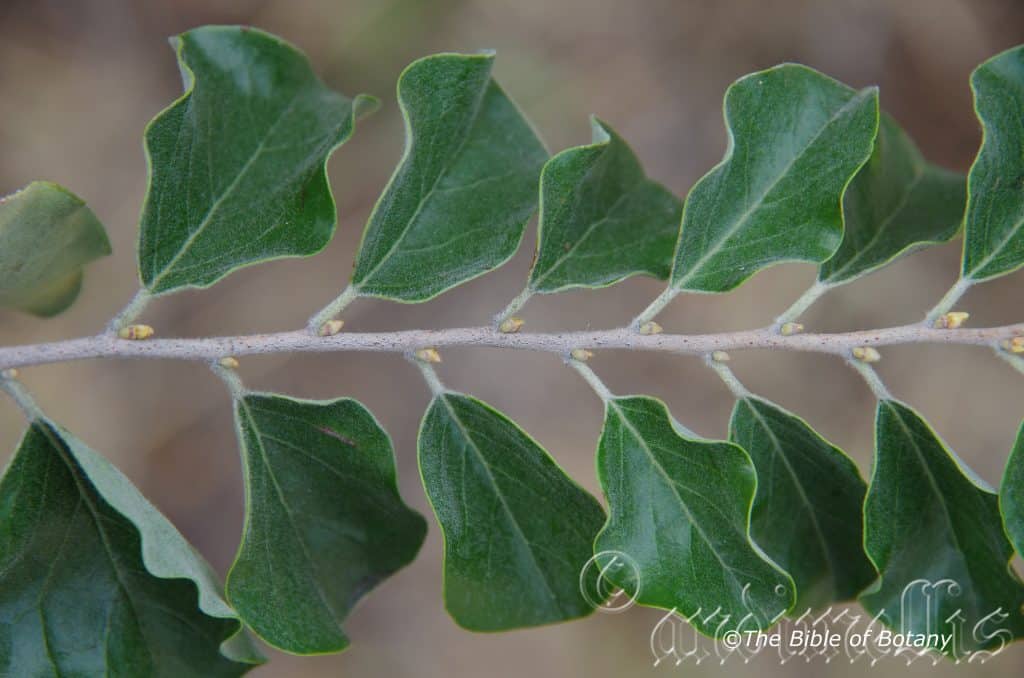
Magnetic Island Qld.
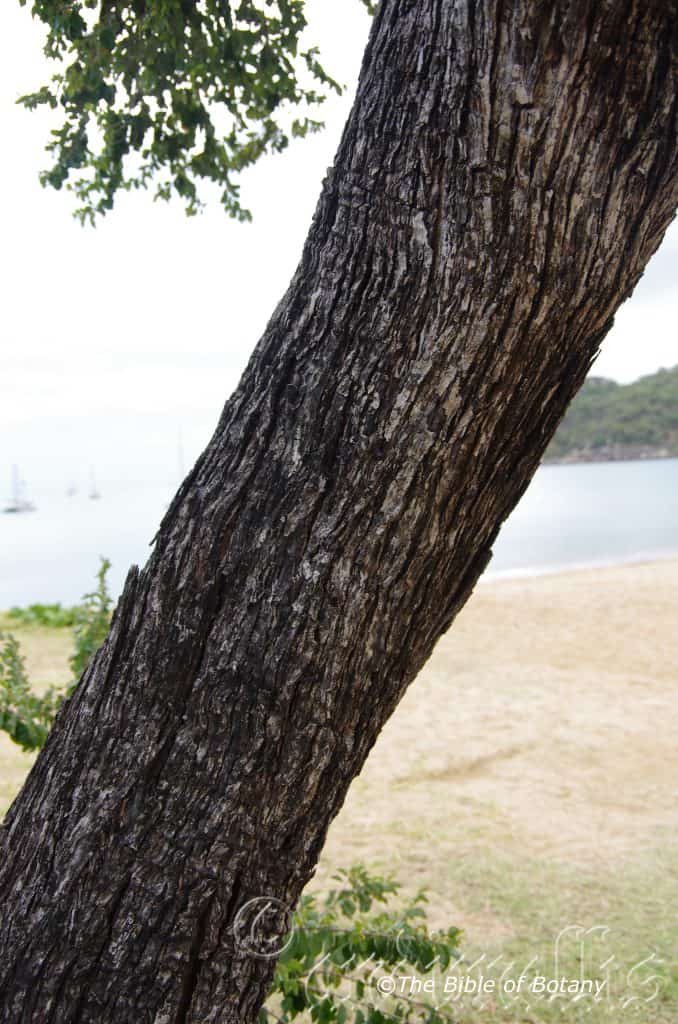
Magnetic Island Qld.

Magnetic Island Qld.
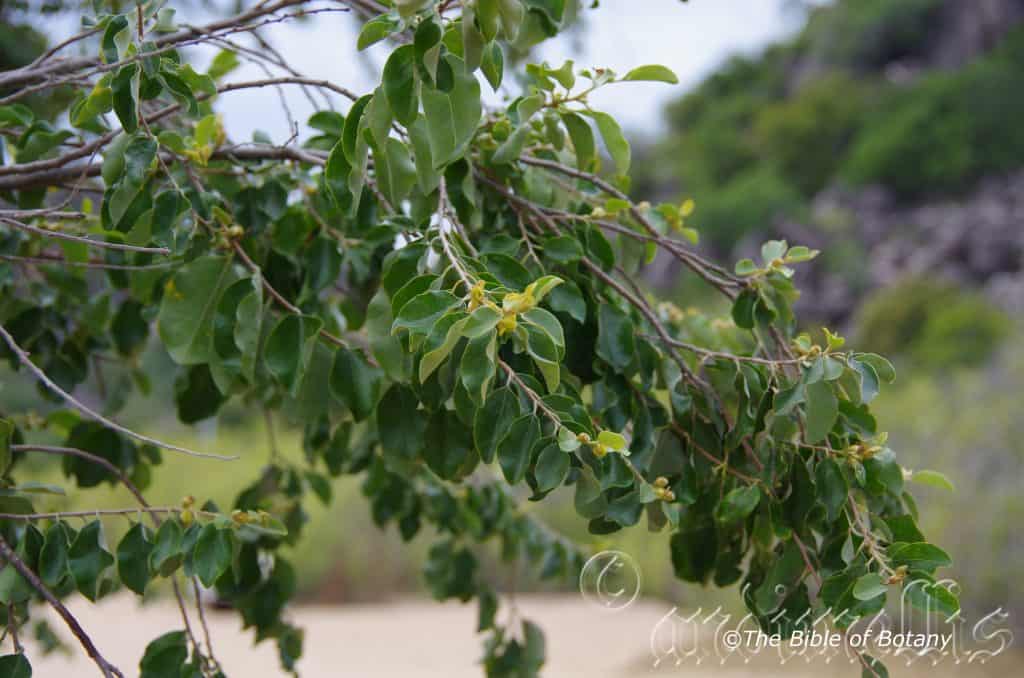
Magnetic Island Qld.
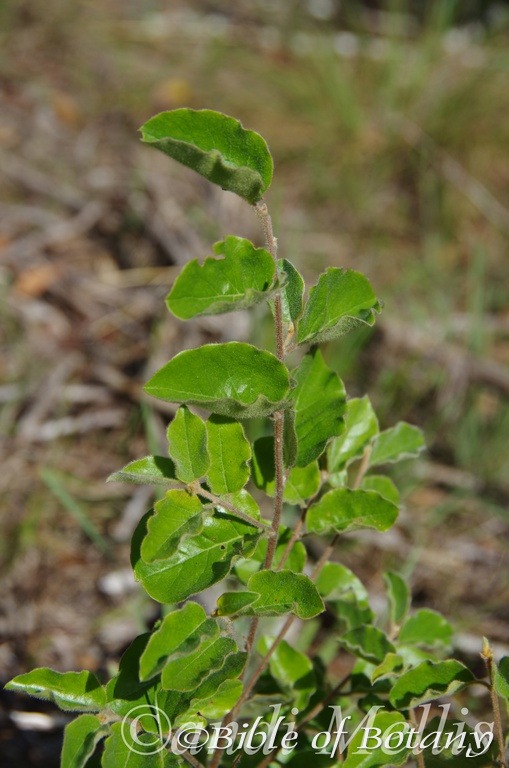
Fortis Creek National Park NSW

Magnetic Island Qld.
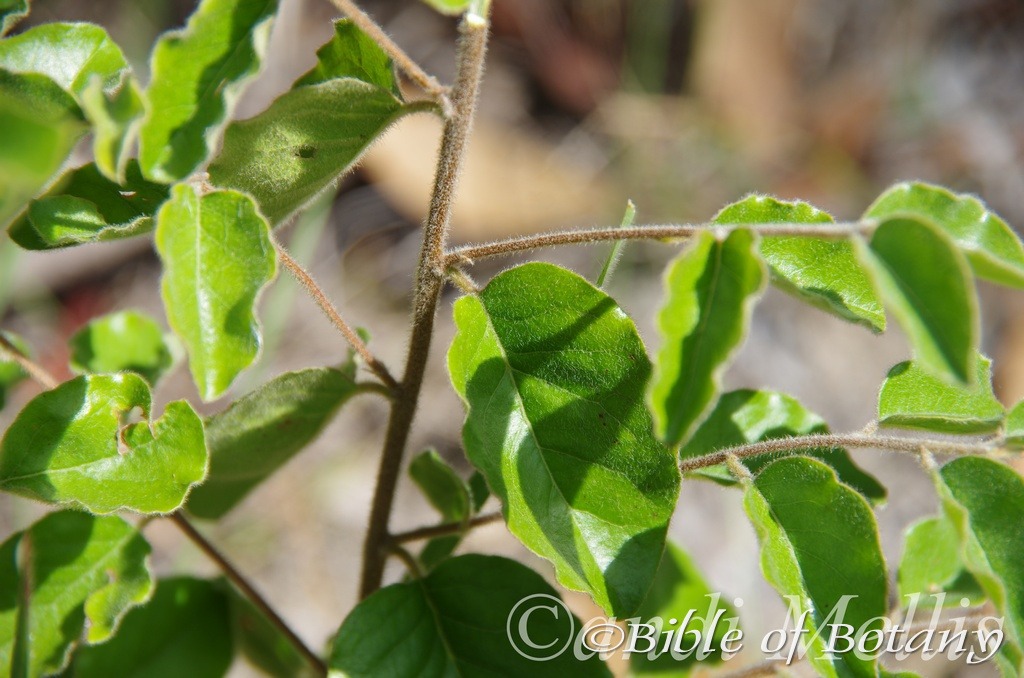
Fortis Creek National Park NSW
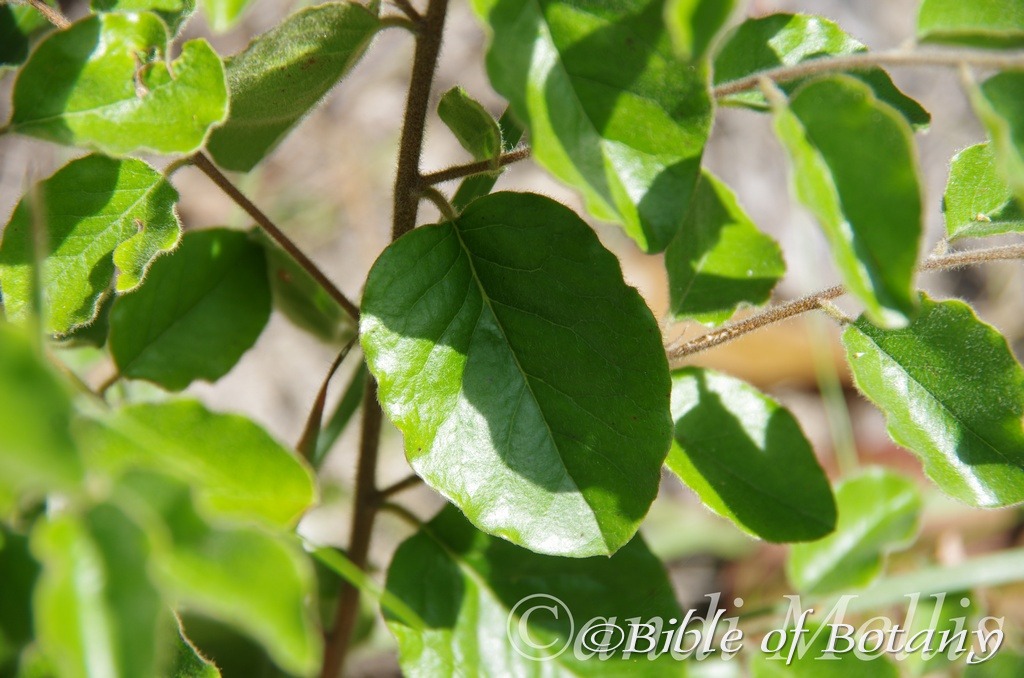
Fortis Creek National Park NSW

Magnetic Island Qld.
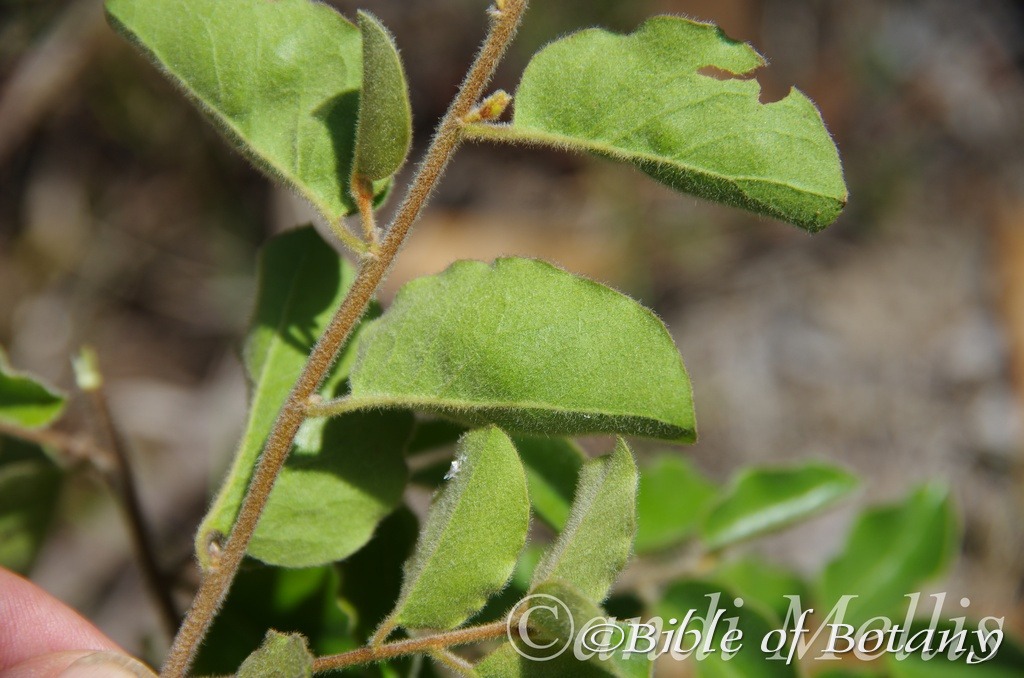
Fortis Creek National Park NSW
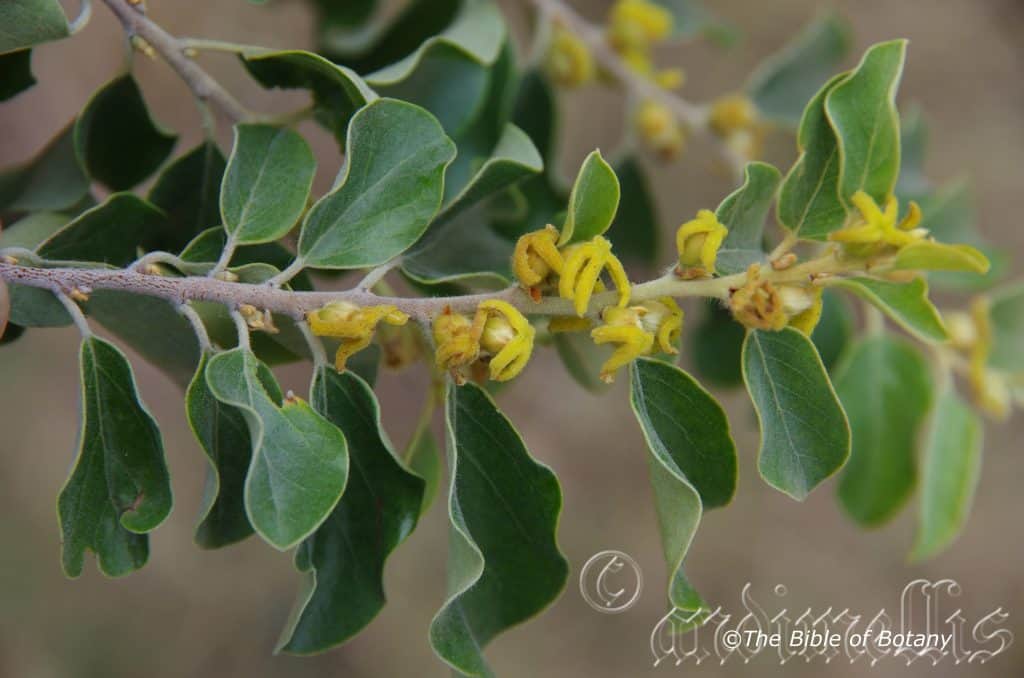
Magnetic Island Qld.
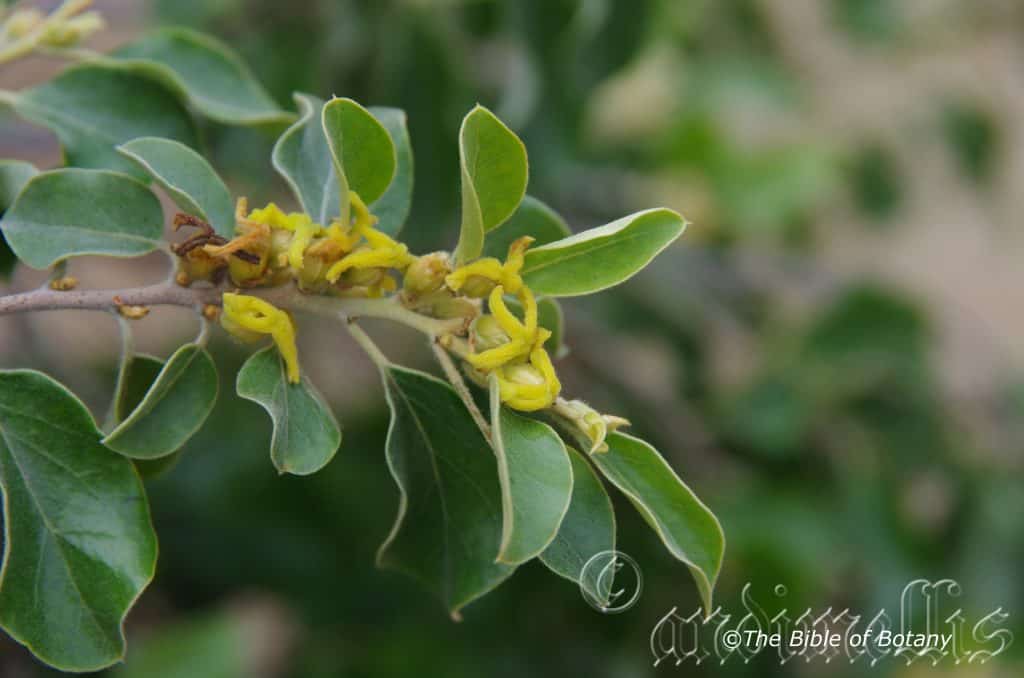
Magnetic Island Qld.

Castle Hill Townsville Qld.
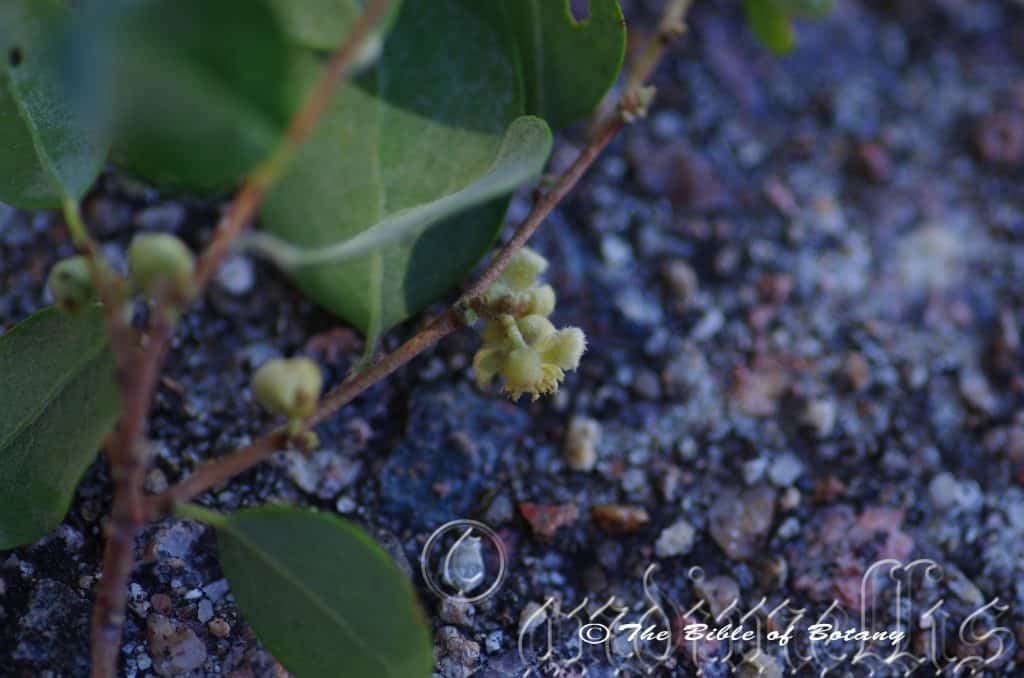
Castle Hill Townsville Qld.
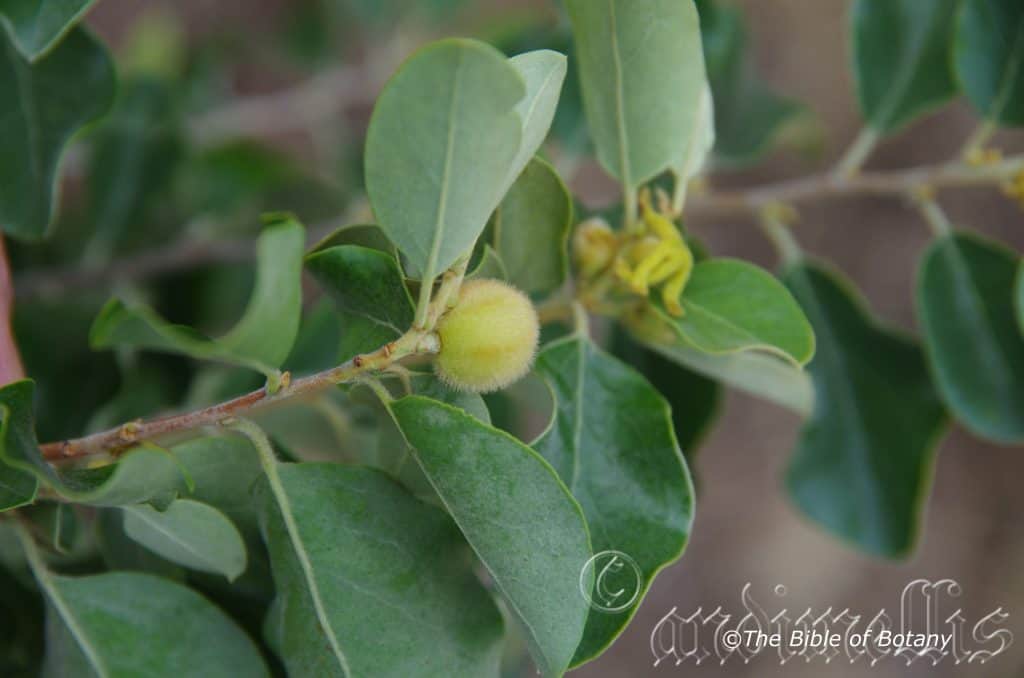
Magnetic Island Qld.

Magnetic Island Qld.
Petalostigma pubescens
Classification:
Unranked: Eudicots
Unranked: Rosids
Order: Malphighiales
Family: Picrodendraceae
Tribe: Galetieae
Subtribe: Petalostigmatinae
Genus: From Petánnumi, which is Ancient Greek for to spread out or later Pétalon/Pétalos, which is Greek for thin metal leaf and Stigma, which is Ancient Greek for the female receptive reproductive organ on a flower. It refers to stigmas, which are more or less petaloid or petal like.
Specie: From P?b?sc?ns, which is Latin for short, very soft hairs. It refers to structures or organs, which are covered in soft, white or pale grey hairs.
Sub specie:
Common Name: Strychnine Tree or Quinine Tree or Bitter Bark.
Distribution:
Petalostigma pubescens is found in a line north and east from the Fitzroy River and the Kimberley Ranges in north-west Western Australia to Saint George in southern central Queensland then to Glenreagh in north eastern New South Wales.
https://avh.ala.org.au/occurrences/search?taxa=Petalostigma+pubescens#tab_mapView
Habitat Aspect Climate:
Petalostigma pubescens prefers dappled shade to full sun. It grows in open sclerophyll forests, closed sclerophyll forests, coastal woodlands, monsoonal forests or notophyll forests. The altitude ranges from 3 meters ASL to 950 meters ASL.
The temperatures rangefrom minus 4 degrees in July to 36 degrees in January.
The rainfall ranges from lows of 350mm to 3000mm average per annum.
Soil requirements:
Petalostigma pubescens prefer soils sandy loams to medium clays with a high proportion of leaf litter. The soils are usuallyderived from decomposed sandstones, brown basalts, black basalts, metamorphic rocks or at times shale. The soils pH ranges from 5pH to 6.5pH. It does not tolerate of water logged soils. Non saline soils to moderately saline soils are tolerated.
Height & Spread:
Wild Plants:5m to 10m by 4m to 7m
Characteristics:
Petalostigma pubescens grows as an erect small densely foliaged tree. The grey to pale grey-brown trunk is rough and flaky, flaking off in tessellated patches. Stems are flexible, brown and finely resinous. Young shoots a deep sea-green very quickly turning brown and a densely covered in short and long white pubescent hairs.
The alternate almost opposite ovate leaves are often laid on a single plane with the upper lamina facing towards the sky. They measure 20mm to 60mm in length by 10mm to 25mm in width. The petioles measure 3mm to 8mm in length and a densely covered in short and long pubescent hairs. The bases are cuneate while the apexes are broadly acute to obtuse with a short mucronate tip. The discolourous laminas a deep grass-green to sea-green, glabrous and semi glossy on the upper lamina while the lower lamina is densely covered in short and long white pubescent hairs. The leaf margins are entire or very shallowly sinuate and flat or curve slightly upwards from the mid vein. The mid vein is slightly prominent on the lower lamina and is clearly visible on the upper lamina when it is slightly sunken.
The Inflorescences of Petalostigma pubescens are usually dioecious but can be monoecious and are born from the leaf axils. The female flowers are born singularly on short cymes from the leaf axils. The ovate petals measure 1.5mm to 2mm in length by 1.5mm to 2mm in width. The tepals are densely covered in white pubescent hairs externally and are glabrous or sparsely covered in white puberulent hairs internally.
The male flowers are in clusters of 3 or 4 sometimes 5.The numerous stamens; of at least 20 have united filaments in a short column which radiate out near the apex. It is creamy yellow turning creamy ochre towards the anthers. The anthers are creamy ochre in colour.
The style has a 4 locular ovary which is densely covered in white pulverulent hairs. Petalostigma pubescens flowers from late April through to early November. Flowering appears to be more prolific following a cooler dry winter followed by good autumn rains period.
The fruits are ovoidal berries. The berries measure 12mm to 16mm in length by 13mm to 17mm in diameter. The green fruits turn bright yellow to bright deep yellow orange or on rare occasions deep orange red when ripe. The 4 brown seeds are produced in separate valves and measure 8mm to 9mm in length by 4mm to 5mm in diameter.
Wildlife:
Petalostigma pubescens does not appear to have any predators though the flowers are occasionally visited by many small butterflies, native bees and beetles. The stink bug (Cuerna pallida) life cycle is totally reliant on this tree.
One of the funniest anecdotes I can member in the bush was with Petalostigma pubescens. We were out on Bush Fire Duty When I noticed a small tree loaded in fruit. I raced towards it and yelled out look Yum Yum berries. Picked a few and carefully placed them in my mouth between my cheeks and teeth not biting on them. The others know I have good bush survival techniques. They all raced over and grabbed some and started chewing. At this stage I said “Sorry wrong tree”. Took the fruits out of my mouth and casually walked back to the truck. The others including my best mate were frothing at the mouth and salivating as though they had just eaten some very sour, dry lemons and had them stuck someWhen in their mouths. The salivation with the bitterness lasted for up to half an hour. (I got washed down for that incident later on.) Sorry Tony.
Cultivation:
Petalostigma pubescens is a magnificent small tree that deserves a place in every temperate, sub-tropical, tropical, monsoonal and semi-arid native garden in Australia. It is ideal in almost every setting near ponds, at the edge of a rain forest in court yards, around swimming pools or larger rockeries when their size is balanced. In cultivation it grows from 4 meters to 8 meters in height by 4 meters to 7 meters in diameter when grown in the open.
They grow exceptionally well on lighter soils When deep leaf litter keeps the soil cool and moisture at an even level. If these requirements are met it can cope with temperatures as low as minus 5 degrees and up to 42 degrees. It is drought resistant once established and offer the garden a beautiful contrast with the deep grass-green leaves and deep orange fruits which hang on the trees for an extended period.
Add to the above, if it is given an adequate water supply and a little native fertilizer on a regular basis the plants will respond with spectacular flowering and fruiting.
The down side is that it is slow growing and flowering may take 6 to 9 years before the first flowers appear.
Be imaginative when planting in mass. Use the plants in different configurations and use curves. Light pruning after flowering or tip pruning in the early years will enhance the shrubs bushiness and provide longer stronger flower stems in the following season.
It is best used adjacent to small areas of bush close to paths or the house so their bright yellow-orange fruits can be viewed regularly. It is great on car round bouts When they can be heavily planted out below to give an expansive look of colour.
Planted in small groups of 2 or 3 scatted as you would find them in nature they give a great bush scene. It is best used in the mid ground surrounded by shorter plants with fine foliages with red flowers if it has the yellow fruit or surrounded by purple and white flowers if the deep yellow-orange fruit varieties is used it will dominate at the center of the bed especially when in fruit. This is one plant that benefits highly from being mass planted or planted in scatted clumps. The small size enables this to be achieved and their dense bright grass-green foliage adds to the lush scene. This tree has definitely been underused in the past.
Petalostigma pubescens makes and excellent small shade tree in semi-arid areas when it can be used around the house or against sheds to help reduce the temperatures of the buildings. I can visualize old Queenslanders completely surrounded and under planted on various sides with small Grevillea specie, Hakea specie, Hibbertia specie, Lepidozamia specie or Macrozamia specie.
Propagation:
Seeds: The seeds of Petalostigma pubescens can be moved easily from the plants as they dry. Once Petalostigma pubescens has finished flowering and the fruits have swollen, turned yellow and begin to split place an old sheet below the plants and keep a close eye on it or they can be harvested by hand. Peg the sheet down so it doesn’t blow around. When the seeds start to disperse, it can be all over in a week or two; especially if the weather turns hot, with the seeds being scatted on the ground sheet. Clean the rubbish off and sieve the material for the seeds.
Sow freshly treated seeds directly into a seed raising mix, keeping them moist not wet. When the seedlings are 20mm to 25mm tall, prick them out and plant them into 50mm native tubes using a good organic mix.
As the seedlings roots ach the bottom of the tubes plant them out into their permanent position. Do not delay.
Fertilize using seaweed, fish emulsion or organic chicken pellets soaked in water on an alternate basis. Fertilize every two months until the plants are established then twice annually in early September and March to maintain better health, vitality and flowering.
Further Comments from Readers:
“Hi reader, it seems you use The Bible of Botany a lot. That’s great as we have great pleasure in bringing it to you! It’s a little awkward for us to ask, but our first aim is to purchase land approximately 1,600 hectares to link several parcels of N.P. into one at The Pinnacles NSW Australia, but we need your help. We’re not salespeople. We’re amateur botanists who have dedicated over 30 years to saving the environment in a practical way. We depend on donations to reach our goal. If you donate just $5, the price of your coffee this Sunday, We can help to keep the planet alive in a real way and continue to bring you regular updates and features on Australian plants all in one Botanical Bible. Any support is greatly appreciated. Thank you.”
In the spirit of reconciliation we acknowledge the Bundjalung, Gumbaynggirr and Yaegl and all aboriginal nations throughout Australia and their connections to land, sea and community. We pay our respect to their Elders past, present and future for the pleasures we have gained.

Kedron Brook Qld.
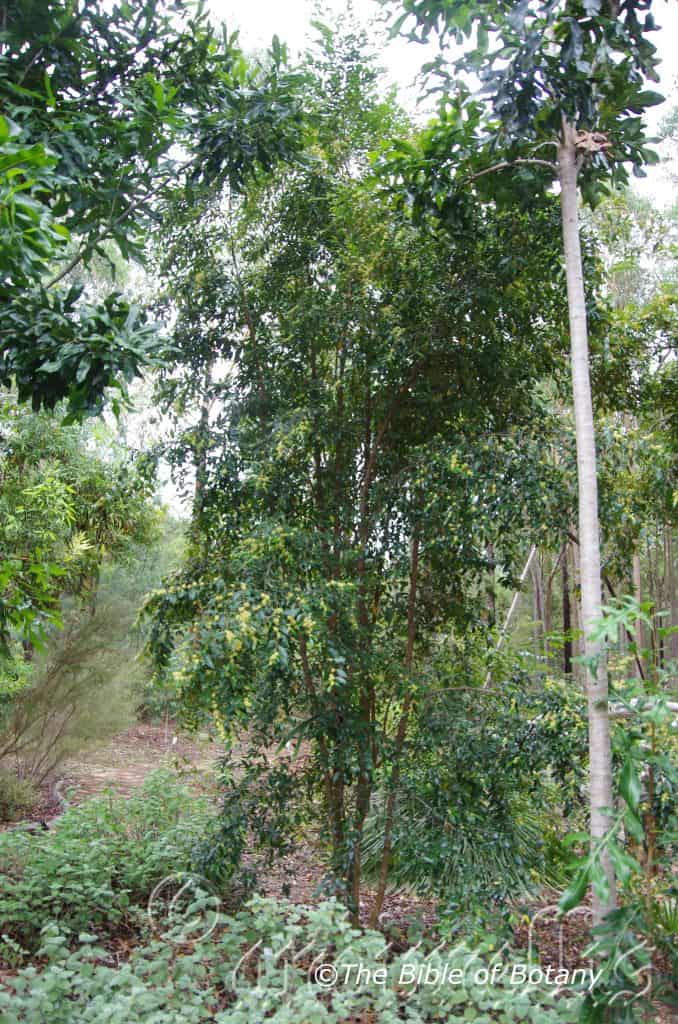
Author’s Garden The Pinnacles NSW
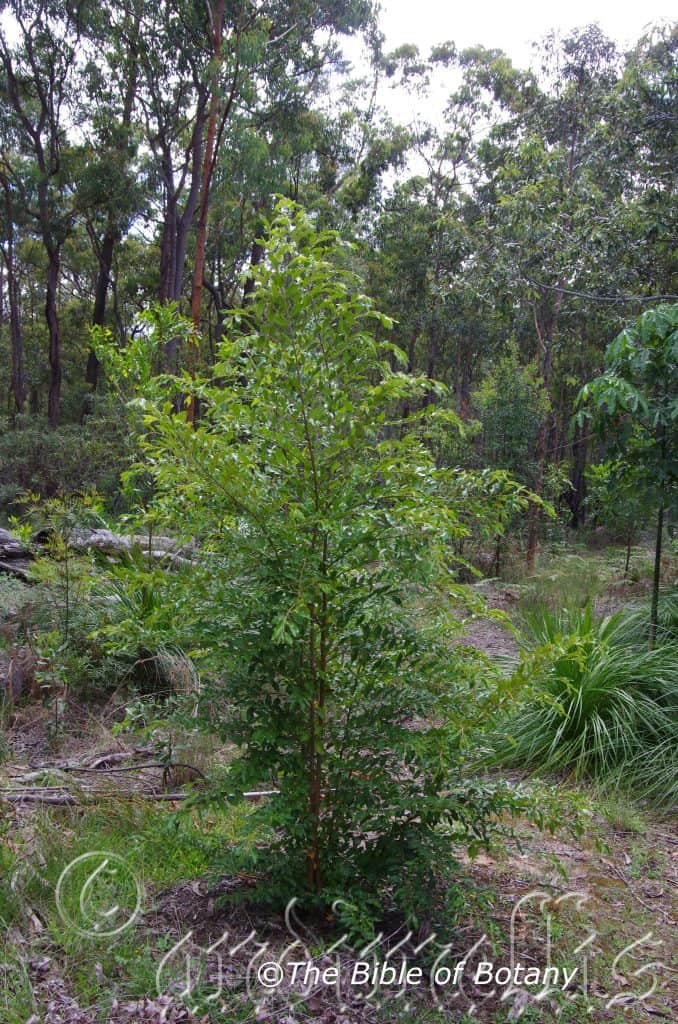
Author’s Garden The Pinnacles NSW
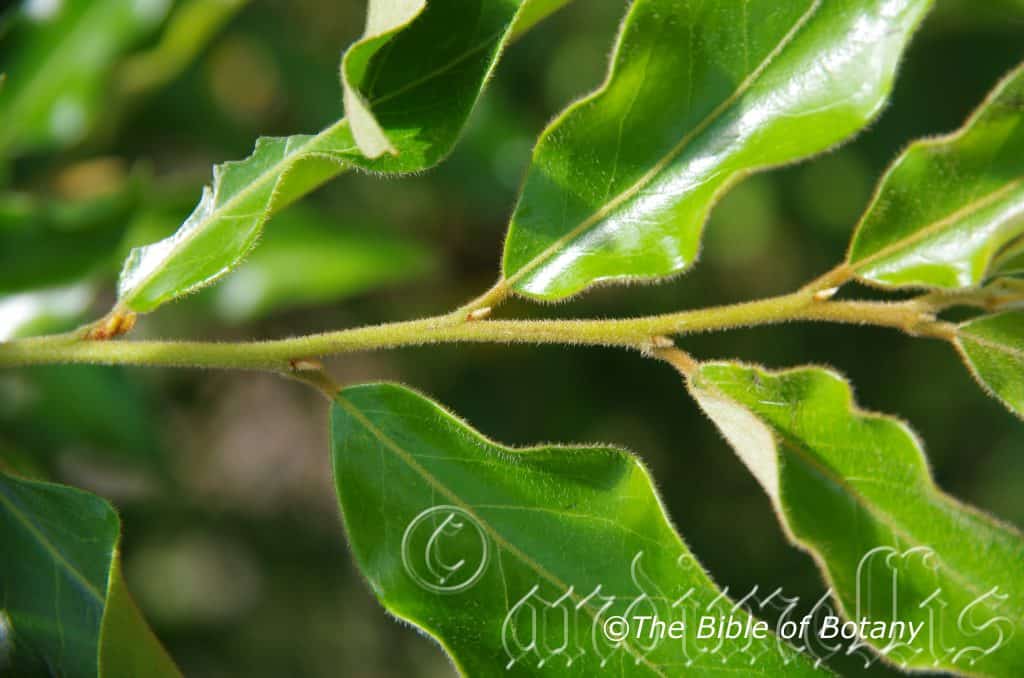
Author’s Garden The Pinnacles NSW

Author’s Garden The Pinnacles NSW

Kedron Brook Qld.
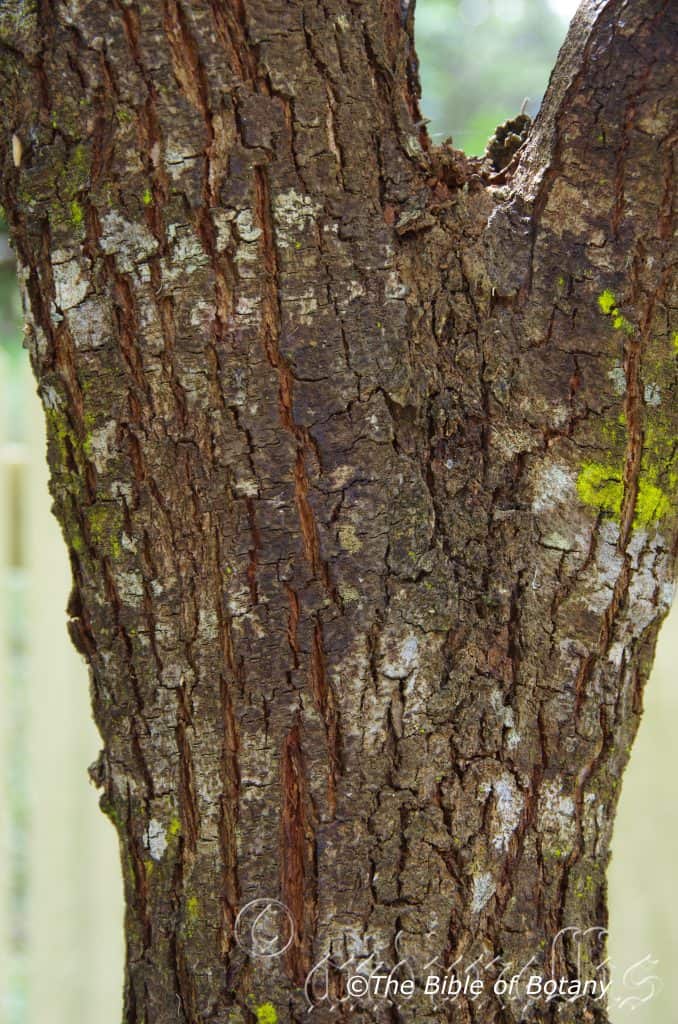
Indiginous Gardens Capalaba Qld.
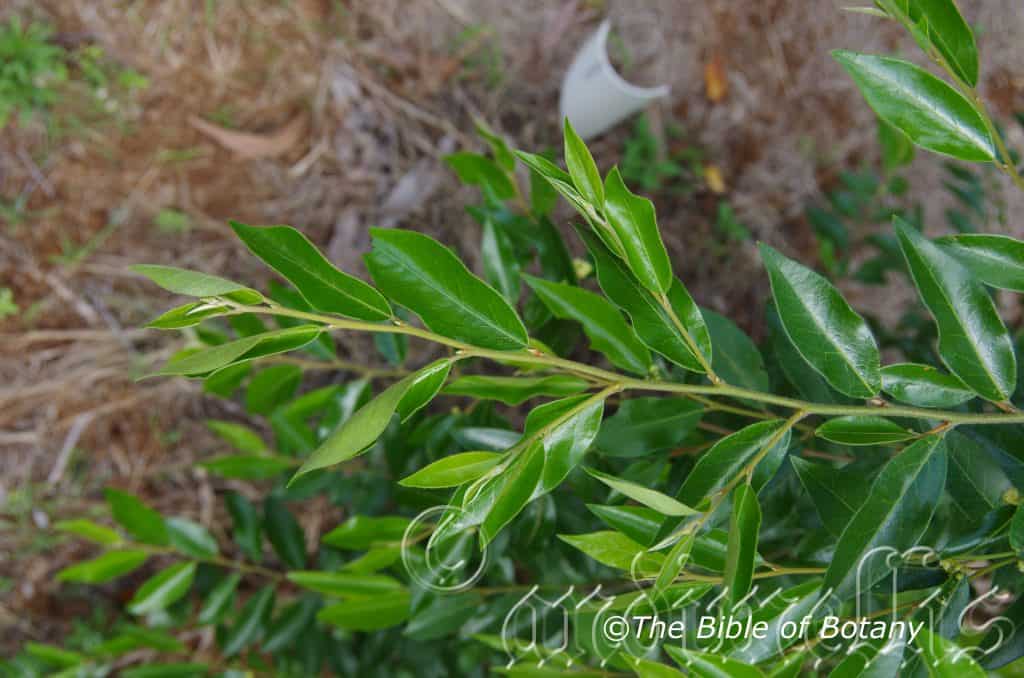
Author’s Garden The Pinnacles NSW

Author’s Garden The Pinnacles NSW
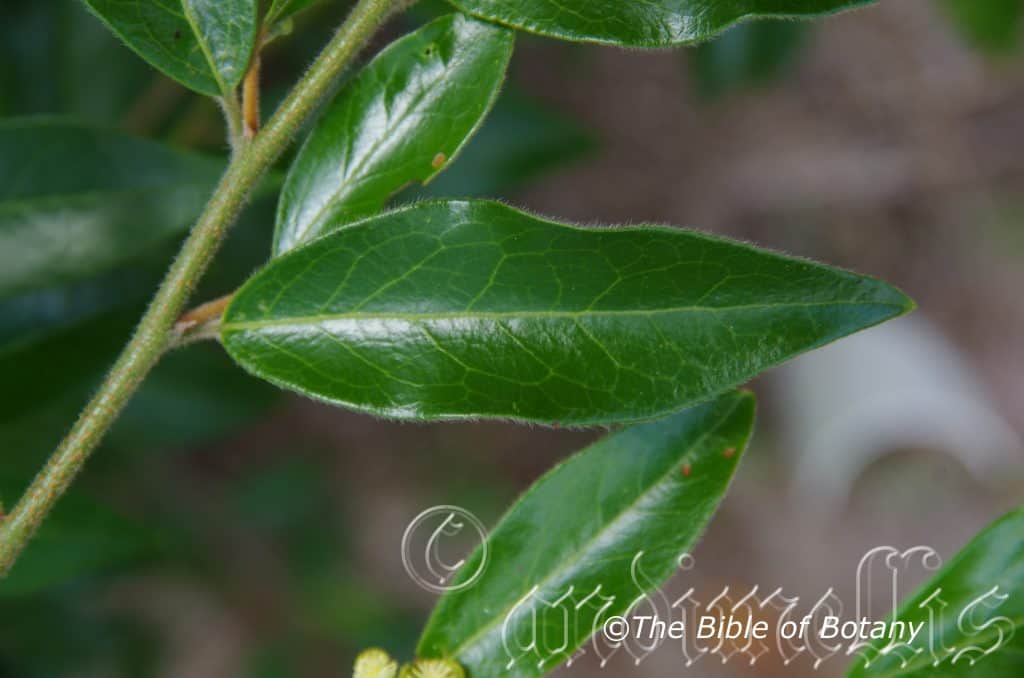
Author’s Garden The Pinnacles NSW

Author’s Garden The Pinnacles NSW
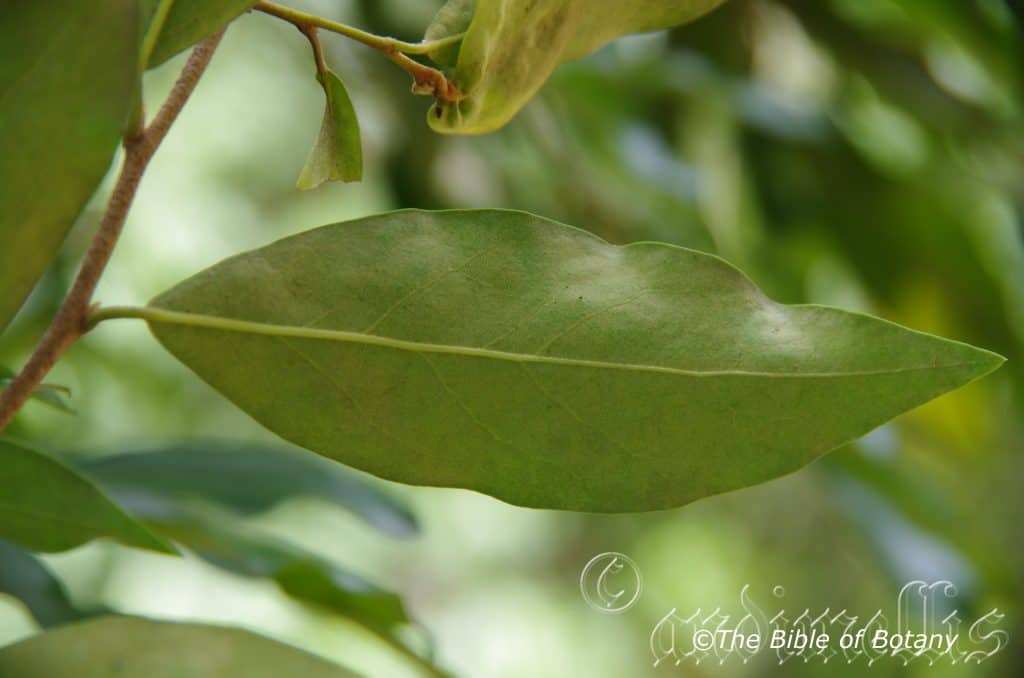
Indiginous Gardens Capalaba Qld.
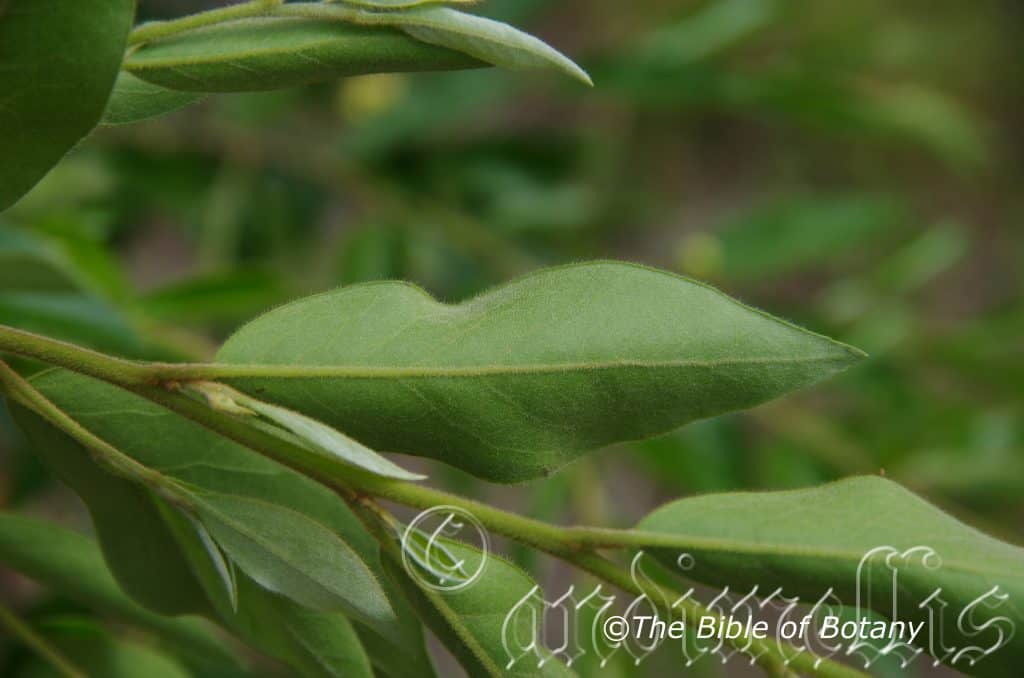
Author’s Garden The Pinnacles NSW

Sherwood Forest Reserve North NSW
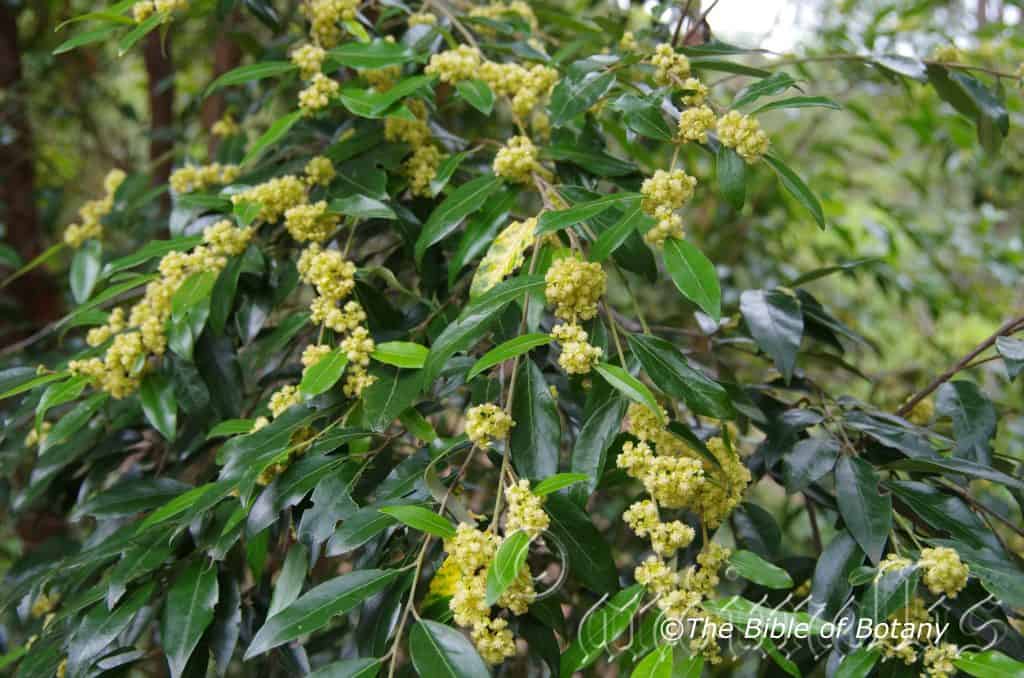
Author’s Garden The Pinnacles NSW
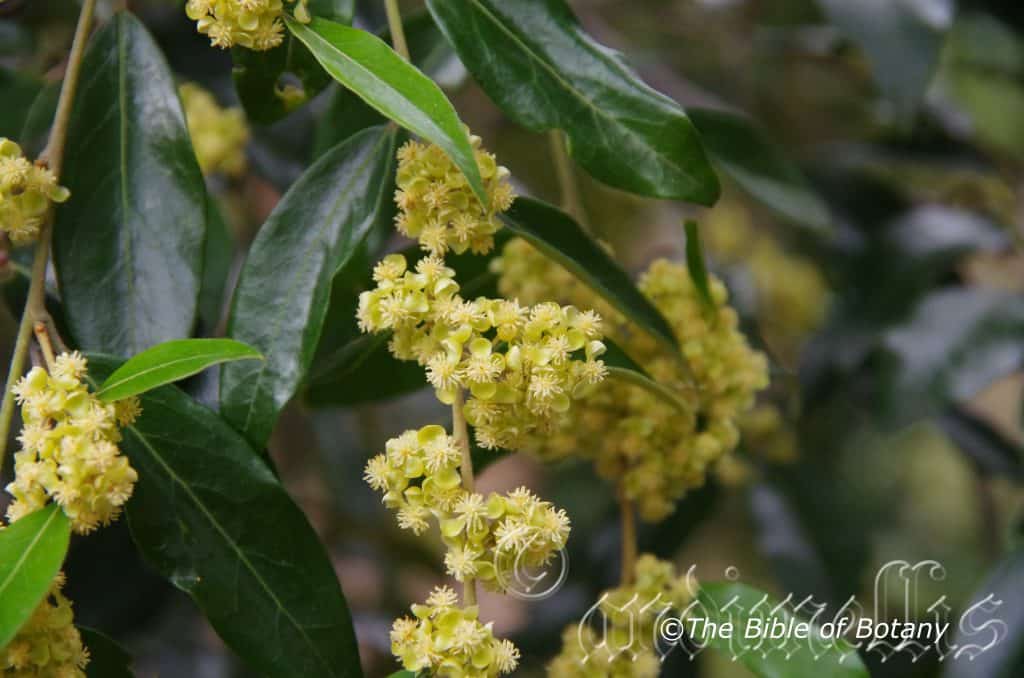
Author’s Garden The Pinnacles NSW
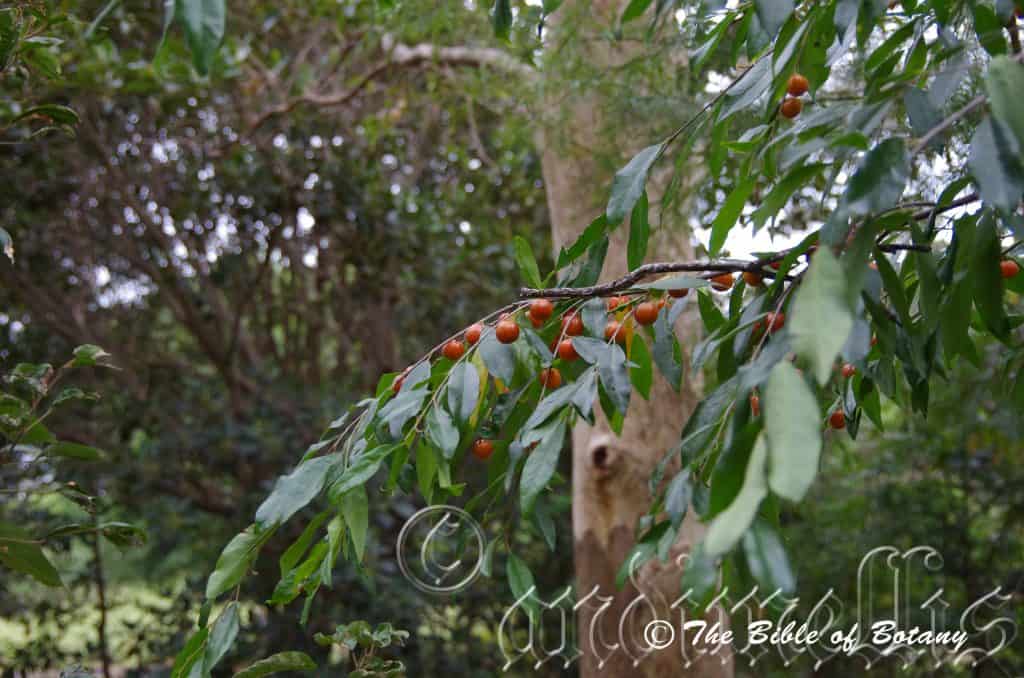
Kedron Brook Qld.

Indiginous Gardens Capalaba Qld.
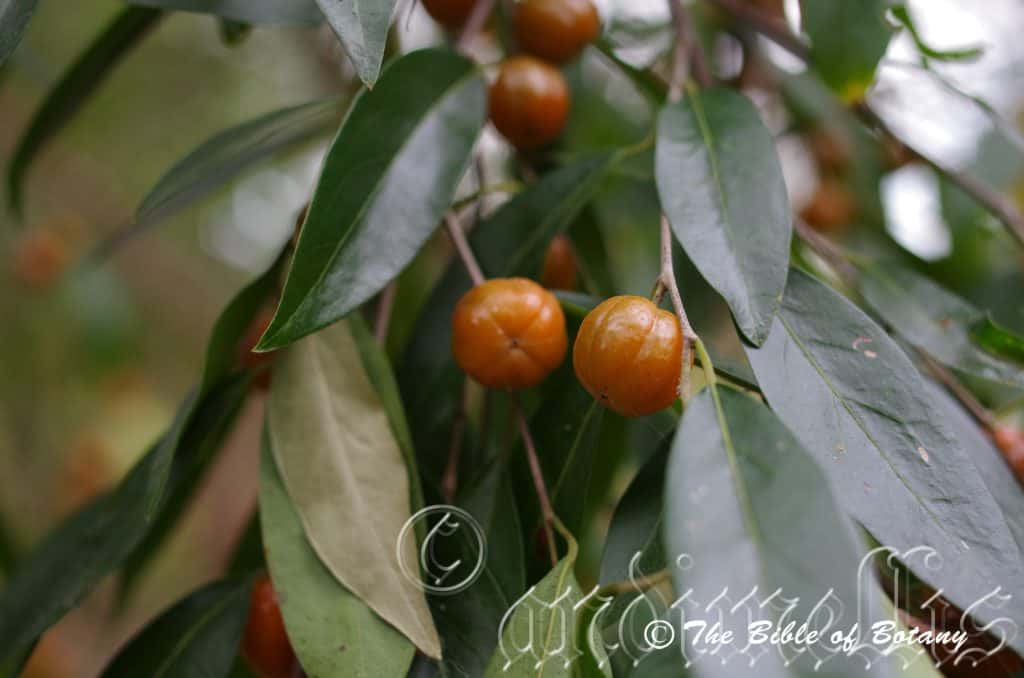
Kedron Brook Qld.
Petalostigma triloculare
Classification:
Unranked: Eudicots
Unranked: Rosids
Order: Malphighiales
Family: Picrodendraceae
Tribe: Galetieae
Subtribe: Petalostigmatinae
Genus: From Petánnumi, which is Ancient Greek for to spread out or later Pétalon/Pétalos, which is Greek for thin metal leaf and Stigma, which is Ancient Greek for the female receptive reproductive organ on a flower. It refers to stigmas, which are more or less petaloid or petal like.
Specie: From Treîs/Tría, which are Ancient Greek or later Tri, which is Latin for three and Locules, which is Latin for a locule in the ovary. It refers ovaries, which have three locules.
Sub specie:
Common Name: Strychnine Tree or Quinine Tree or Bitter Bark.
Distribution:
Petalostigma triloculare is found south from Mackay in central coastal Queensland to the Nymboida River catchment north of Kempsey in coastal northern New South Wales.
https://avh.ala.org.au/occurrences/search?taxa=Petalostigma+triloculare#tab_mapView
Habitat Aspect Climate:
Petalostigma triloculare prefers dappled shade to full sun. It grows in open dry sclerophyll forests, closed moist sclerophyll forests or coastal woodlands. The altitude ranges from 30 meters ASL to 450 meters ASL.
The temperatures range from minus 4 degrees in July to 36 degrees in January.
The rainfall ranges from lows of 800mm to 1600mm average per annum.
Soil requirements:
Petalostigma triloculare prefers soils sandy loams to medium clays with a high proportion of leaf litter. The soils are usually derived from decomposed sandstones, brown basalts, black basalts, metamorphic rocks or at times shale. The soils pH ranges from 5pH to 6pH. It does not tolerate of water logged soils. Non saline soils to moderately saline soils are tolerated.
Height & Spread:
Wild Plants:10m to 15m by 7m to 9m
Characteristics:
Petalostigma triloculare grows as an erect small densely foliaged multi stemmed tree. The brown trunk is rough with longitudinal fissures with the valleys being more red-brown than the outer surface. The stems are flexible, grey-brown becoming greyer towards the branchlets which are pale grey and covered in lichens. The young shoots are olive green and covered in white to pale grey pulverulent hairs.
The alternate leaves are narrow elliptical and measure 30mm to 90mm in length by 10mm to 35mm in width. The base is rounded while the apex is acute. The discolourous laminas are deep grass-green to sea-green, glabrous and semi glossy on the upper lamina while the lower lamina is densely covered in white pubescent hairs. The leaf margins are entire slightly undulating and curve slightly upwards from the mid vein. The mid vein is slightly prominent on the lower lamina and is clearly visible on the upper lamina being a paler green. The petioles measure 5mm to 7mm in length and are densely covered in pubescent hairs.
The inflorescences of Petalostigma triloculare are usually dioecious but can be monoecious and are born from the leaf axils. The female flowers are born singularly on short cymes from the leaf axils. The pale creamy green to pale creamy fawn ovate petals, measure 1.5mm to 2mm in length by 1.5mm to 2mm in width. The tepals are densely covered in white pubescent hairs externally and are glabrous or sparsely covered in white pubescent hairs internally.
The male flowers are in clusters of 3 to 5.The numerous stamens, 20 or more have united filaments in a short column which radiate out near the apex. It is creamy yellow turning creamy ochre towards the anthers. The anthers are creamy ochre in colour.
The style has a 3 locular ovary which is densely covered in white pulverulent hairs. Petalostigma pubescens flowers from late April through to early November. Flowering appears to be more prolific following a cooler dry winter followed by good autumn rains period.
Petalostigma triloculare’s fruits are spherical berries. The berries measure 12mm to 18mm in length by 12mm to 18mm in diameter. The green fruits turn bright deep yellow-orange or on rare occasions deep orange-red when ripe. There are 6 distinct but faint longitudinal furrows on the smooth glossy berries. The 3 glossy, brown seeds are produced in 3 separate valves and measure 10mm to 11mm in length by 4mm to 4.5mm in diameter. The fruits ripen from March to October.
Wildlife:
Petalostigma triloculare’s do not appear to have any predators though the flowers are occasionally visited by many small butterflies, native bees and beetles. The Curena pallida stink bug life cycle is on this tree.
Cultivation:
Petalostigma triloculare is a magnificent small tree that deserves a place in every temperate, sub-tropical, tropical, monsoonal and semi-arid native garden in Australia. It is ideal in almost every setting near ponds, at the edge of a rain forest in court yards, around swimming pools or larger rockeries when their size is balanced. In cultivation it grows from 9 meters to 12 meters in height by 6 meters to 9 meters in diameter When grown in the open.
It grows exceptionally well on lighter soils When deep leaf litter keeps the soil cool and moisture at an even level. If these requirements are met it can cope with temperatures as low as minus 5 degrees and up to 42 degrees. It is drought resistant once established and offer the garden a beautiful contrast with the deep grass-green leaves and deep orange fruits which hang on the trees for an extended period.
Add to the above, if it is given an adequate water supply and a little native fertilizer on a regular basis the plants will respond with spectacular flowering and fruiting.
The down side is that it is slow growing and flowering may take 6 to 9 years before the first flowers appear.
Be imaginative when planting in mass. Use the plants in different configurations and use curves. Light pruning after flowering or tip pruning in the early years will enhance the shrubs bushiness and provide longer stronger flower stems in the following season.
It is best used adjacent to small areas of bush close to paths or the house so its bright yellow-orange fruits can be viewed regularly. It is great round about when they can be heavily planted out below to give an expansive look of colour.
Planted in small groups of 2 or 3 scatted as you would find them in nature they give a great bush scene. It is best used in the mid ground surrounded by shorter plants with fine foliages. Red, purple or white flowers if the deep yellow-orange fruit varieties is used it will dominate at the center of the bed especially when it is in fruit. This is one plant that benefits highly from being planted in scatted clumps. The small size enables this to be achieved and their dense bright grass-green foliage adds to the lush scene. This tree has definitely been underused in the past.
Petalostigma triloculare makes and excellent small shade tree in semi-arid areas when it can be used around the house or against sheds to help reduce the temperatures of the buildings. I can visualize old Queenslanders completely surrounded and under planted on various sides with small Grevillea specie, Hakea specie, Hibbertia specie, Lepidozamia specie or Macrozamia specie.
Propagation:
Seeds: The seeds of Petalostigma triloculare can be moved easily from the plants as they dry. Once Petalostigma pubescens has finished flowering and the fruits have swollen, turned yellow and begin to split place an old sheet below the plants and keep a close eye on it or they can be harvested by hand. Peg the sheet down so it doesn’t blow around. When the seeds start to disperse, it can be all over in a week or two; especially if the weather turns hot, with the seeds being scatted on the ground sheet. Clean the rubbish off and sieve the material for the seeds.
Sow the freshly treated seeds directly into a seed raising mix, keeping them moist not wet. When the seedlings are 20mm to 25mm tall, prick them out and plant them into 50mm native tubes using a good organic mix.
As the seedlings roots ach the bottom of the tubes plant them out into their permanent position. Do not delay.
Fertilize using seaweed, fish emulsion or organic chicken pellets soaked in water on an alternate basis. Fertilize every two months until the plants are established then twice annually in early September and March to maintain better health, vitality and flowering.
Further Comments from Readers:
“Hi reader, it seems you use The Bible of Botany a lot. That’s great as we have great pleasure in bringing it to you! It’s a little awkward for us to ask, but our first aim is to purchase land approximately 1,600 hectares to link several parcels of N.P. into one at The Pinnacles NSW Australia, but we need your help. We’re not salespeople. We’re amateur botanists who have dedicated over 30 years to saving the environment in a practical way. We depend on donations to reach our goal. If you donate just $5, the price of your coffee this Sunday, We can help to keep the planet alive in a real way and continue to bring you regular updates and features on Australian plants all in one Botanical Bible. Any support is greatly appreciated. Thank you.”
In the spirit of reconciliation we acknowledge the Bundjalung, Gumbaynggirr and Yaegl and all aboriginal nations throughout Australia and their connections to land, sea and community. We pay our respect to their Elders past, present and future for the pleasures we have gained.
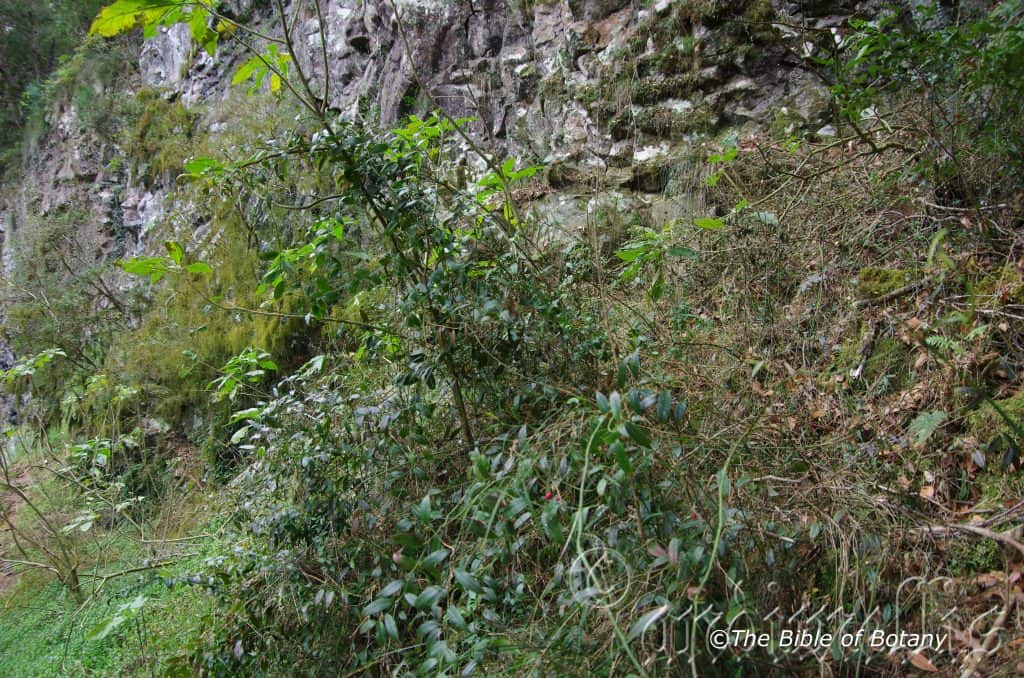
The Pinnacles NSW

Dangar Falls National Park Dorrigo NSW
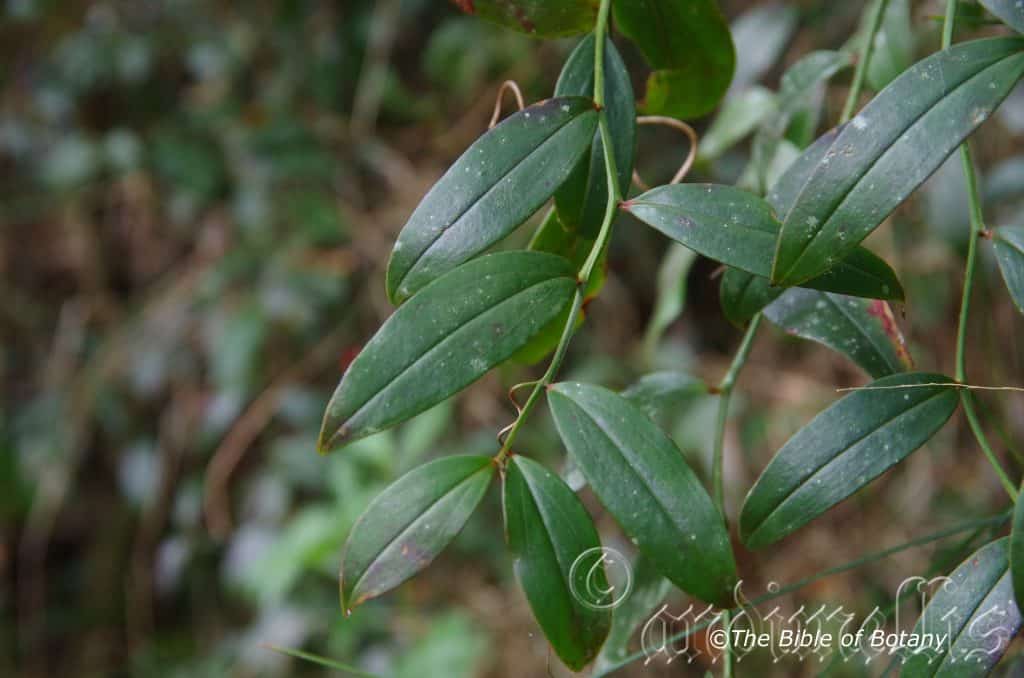
Dangar Falls National Park Dorrigo NSW
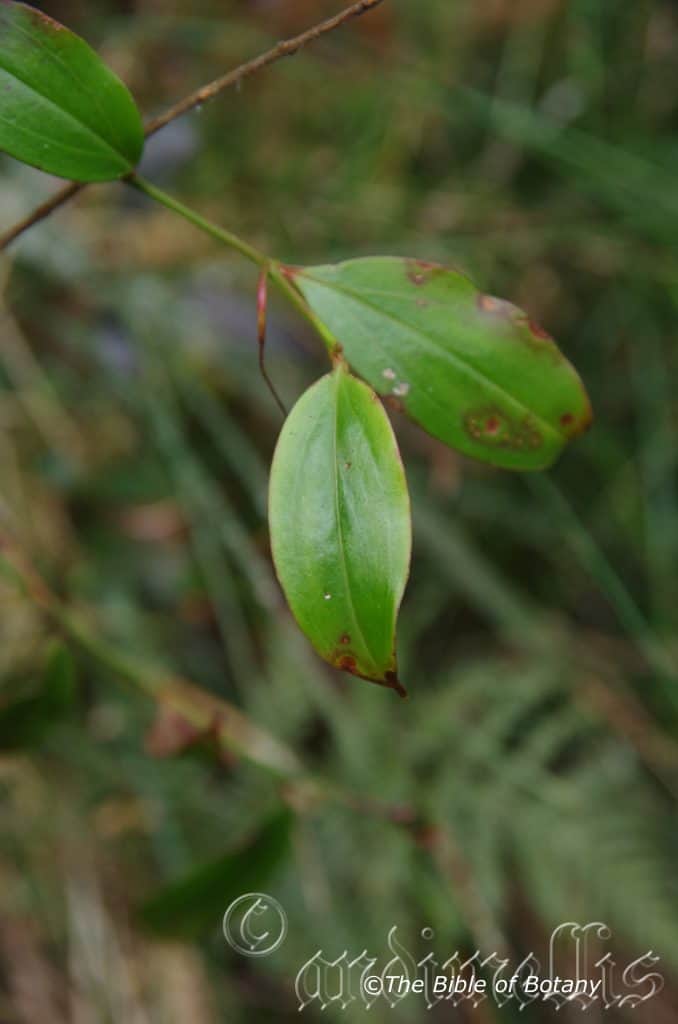
Dangar Falls National Park Dorrigo NSW

Dangar Falls National Park Dorrigo NSW

Dangar Falls National Park Dorrigo NSW
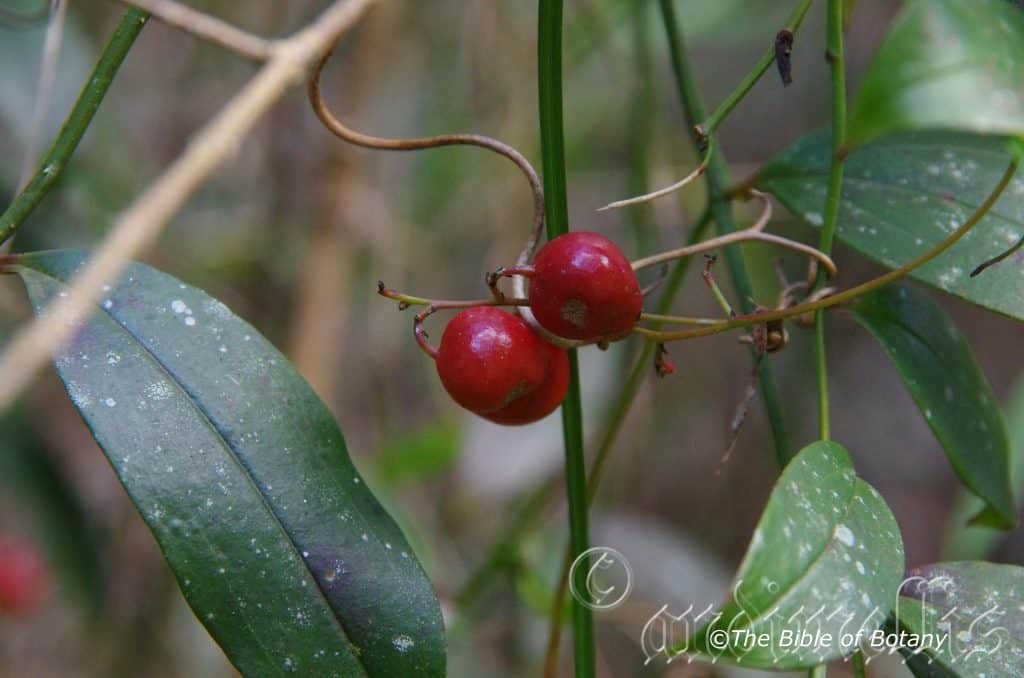
Dangar Falls National Park Dorrigo NSW
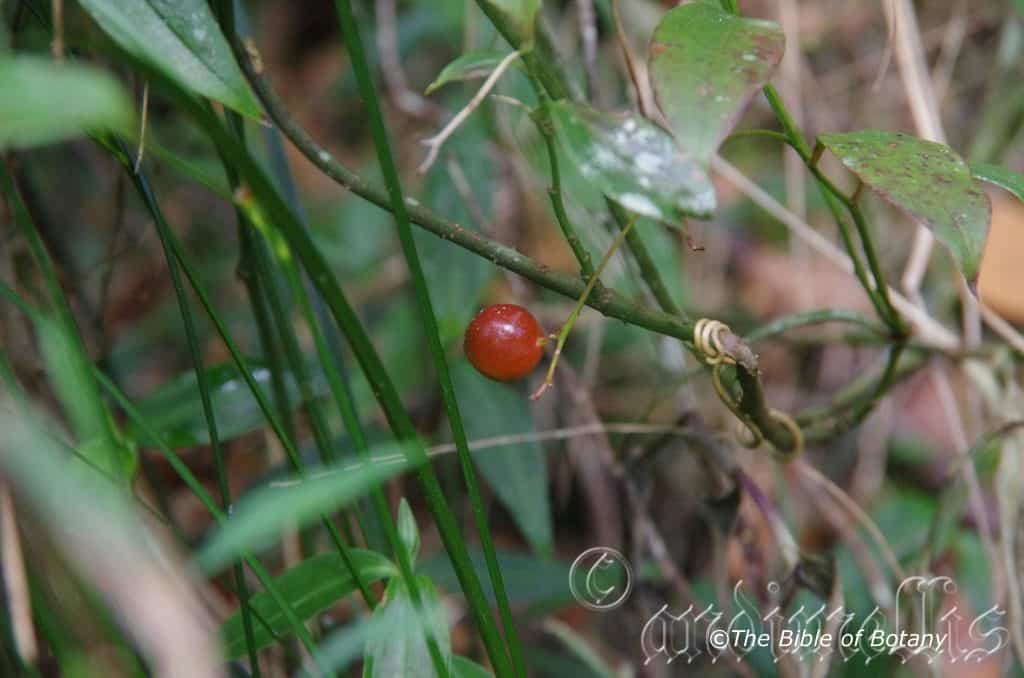
Dangar Falls National Park Dorrigo NSW
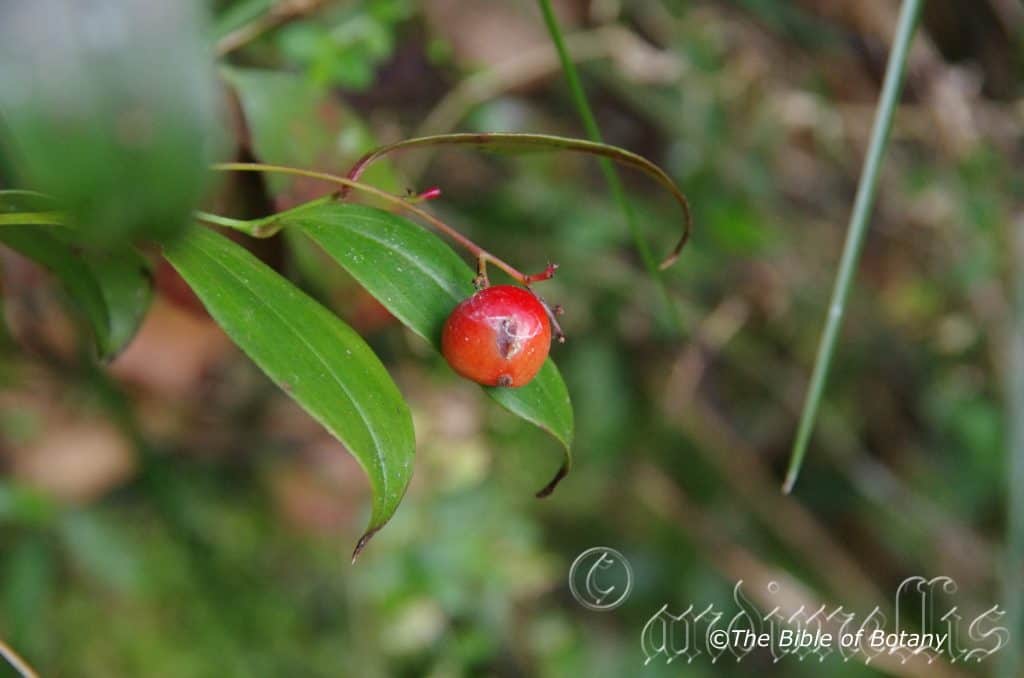
Dangar Falls National Park Dorrigo NSW
Petermannia cirrosa
Classification:
Class: Equisetopsida
Subclass: Magnoliidae
Superorder: Lilianae
Order: Liliales
Family: Petermanniaceae
Genus: Is named in honour of August Peterman; 1822-1878, who was a German geographer and cartographer.
Specie: From Cirrhosa, which is Latin for a curly hair or curly tendrils. It refers to the wiry tendrils, which curl naturally around objects they come into contact with.
Sub specie:
Common Name:
Distribution:
Petermannia cirrosa is a monotypic species which is restricted to a small area from the Lamington National Park and Mount Warning in northern New South Wales from to Tare on the eastern side of the Great Dividing Range except for 2 isolated populations on the Petroi Plateau and Sandy Creek on the Tenterfield Plateau.
https://avh.ala.org.au/occurrences/search?taxa=Petermannia+cirrosa#tab_mapView
Habitat Aspect Climate:
Petermannia cirrosa prefer dappled shade to full sun. It grows in cool well developed rainforests. The altitude ranges from 100 meters ASL to 650 meters ASL.
The temperatures range from minus 4 degrees in July to 36 degrees in January.
The rainfall ranges from lows of 800mm to 2035mm average per annum.
Soil requirements:
Petermannia cirrosa prefer soils sandy loams to medium clays with a high proportion of leaf litter. The soils are usually derived from decomposed brown basalts, black basalts and metamorphic rocks or at times shale. The soils pH ranges from 5pH to 6pH. It does not tolerate water logged soils. Non saline soils to moderately saline soils are tolerated.
Height & Spread:
Wild Plants:4m to 6m by 3m to 4m.
Characteristics:
Petermannia cirrosa grows as a wiry stemmed vine tendril climber with long leaf opposed tendrils that are twice or thrice divided. The tendrils measure 50mm to 170mm in length. The deep green stems are mostly smooth and glabrous but are sparsely covered in very small, fine sharp and blunt prickles.
Petermannia cirrosa’s alternate lanceolate to ovate or elliptic leaves measure 35mm to 100mm in length by 10mm to 40mm in width. The short, thick petioles are smooth, glabrous mid green with a pinkish tinge and measure 3mm to 5mm in length. The bases taper to the petioles while the apexes are acute. The concolourous to discolourous laminas are deep green to sea-green, glabrous and glossy on the upper lamina while the lower lamina are similar to slightly paler and semi glossy. The laminas are basically flat and decurve gently from the petioles to the apexes. The margins are entire. The mid vein is prominent on the lower lamina and is clearly visible on the upper lamina while the 2 to 6 longitudinal veins are very slightly prominent on the lower laminas and are not visible from the upper laminas.
The inflorescences of Petermannia cirrosa are branched cymes born from the leaf axils. The cymes measure 50mm to 100mm in length. The peduncle, peduncules and pedicels are deep green, smooth and glabrous. The peduncle measures 60mm to 100mm in length while the peduncules measure 10mm to 20mm in length and the pedicels measure 5mm to 7mm in length. The pale creamy green to pale creamy fawn ovate petals, measure 1.5mm to 2mm in length by 1.5mm to 2mm in width.
The 6 broad linear to oblong, flexed tepals are glossy red, glabrous and cupuliform with obtuse apexes on the lobes. The tepals measure 5mm to 7mm in length by 2mm to 4mm in width.
The divaricate stamens are petaloid. The filiform filaments are opposite the tepals and are pastel green. The filaments measure 1.6mm to 2.2mm in length. The anthers are slightly concave on the upper surface and strongly convex on the lower surface. The white elliptical anthers measure 4mm to 4.4mm in length by 1.8mm to 2.2mm in width.
The glabrous ovary is white and measures 5mm in length by 2.5mm in diameter prior to anthesis. The style is trilobed and measures 4mm to 4.4mm in length. The flowers appear from October to February with a peak in January.
Petermannia cirrosa’s fruits are globose berries. The smooth, glabrous berries measure 10mm to 15mm in length by 9mm to 14mm in diameter. The green berries turn when ripe. The style remnant is persistent on the ripe fruit. The seeds are angular.
Wildlife:
Petermannia cirrosa’s wildlife is unknown to the author.
Cultivation:
Petermannia cirrosa is a magnificent small vine that deserves a place in every temperate, sub-tropical, tropical, monsoonal and semi-arid native garden in Australia. It is ideal in almost every setting near ponds, within a rain forest in shady court yards, around swimming pools or larger rockeries when their size is balanced. In cultivation it grows from 3 meters to 4 meters in height by 3 meters to 4 meters in width when grown in the open along a fence or pergola. Be aware that the stems do have fine prickles and catch the clothing of passer byes.
It grows exceptionally well on lighter soils When deep leaf litter keeps the soil cool and moisture at an even level. If these requirements are met they can cope with temperatures as low as minus 2 degrees and up to 38 degrees. It is drought resistant once established and offers the gardener a beautiful contrast with the deep grass-green leaves and very unusual flowers.
Add to the above, if it is given an adequate water supply and a little native fertilizer on a regular basis the plants will respond with good flowering and fruiting.
The down side is that It is slower growing and flowering and may take 6 to 9 years before the first flowers appear from seed.
Be imaginative when planting in mass. Use the plants in different configurations and use curves especially When It is planted as ground covers. Light pruning after flowering or tip pruning in the early years will enhance the shrubs bushiness and provide longer stronger flower stems in the following season.
Propagation:
Seeds: Seeds of Petermannia cirrosa can be moved easily from the plants as they dry. Once Petermannia cirrosa has finished flowering and the fruits have swollen, turned red and begin to decompose the berries are ready for harvest. Clean the rubbish off and wash the seeds.
Sow freshly washed seeds directly into a seed raising mix, keeping them moist not wet. Place the trays beneath 50mm shade cloth or under a bench until the first seedlings appear before moving them into 50mm shade. Keep the trays moist not wet. When the seedlings are 20mm to 25mm tall, prick them out and plant them into 50mm native tubes using a good organic mix.
As the seedlings roots reach the bottom of the tubes, nip the growing tips out and plant them out into their permanent position. Do not delay as some set back may ocurr.
Fertilize using seaweed, fish emulsion or organic chicken pellets soaked in water on an alternate basis. Fertilize every two months until the plants are established then twice annually in early September and March to maintain better health, vitality and flowering.
Further Comments from Readers:
“Hi reader, it seems you use The Bible of Botany a lot. That’s great as we have great pleasure in bringing it to you! It’s a little awkward for us to ask, but our first aim is to purchase land approximately 1,600 hectares to link several parcels of N.P. into one at The Pinnacles NSW Australia, but we need your help. We’re not salespeople. We’re amateur botanists who have dedicated over 30 years to saving the environment in a practical way. We depend on donations to reach our goal. If you donate just $5, the price of your coffee this Sunday, We can help to keep the planet alive in a real way and continue to bring you regular updates and features on Australian plants all in one Botanical Bible. Any support is greatly appreciated. Thank you.”
In the spirit of reconciliation we acknowledge the Bundjalung, Gumbaynggirr and Yaegl and all aboriginal nations throughout Australia and their connections to land, sea and community. We pay our respect to their Elders past, present and future for the pleasures we have gained.
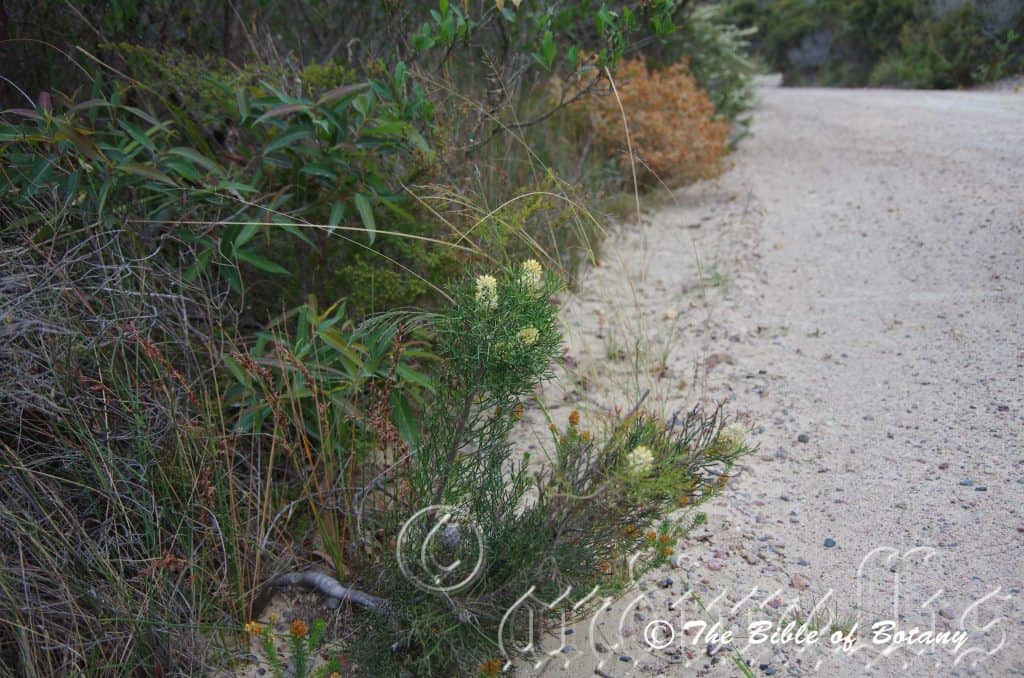
Innes Lake National Park NSW
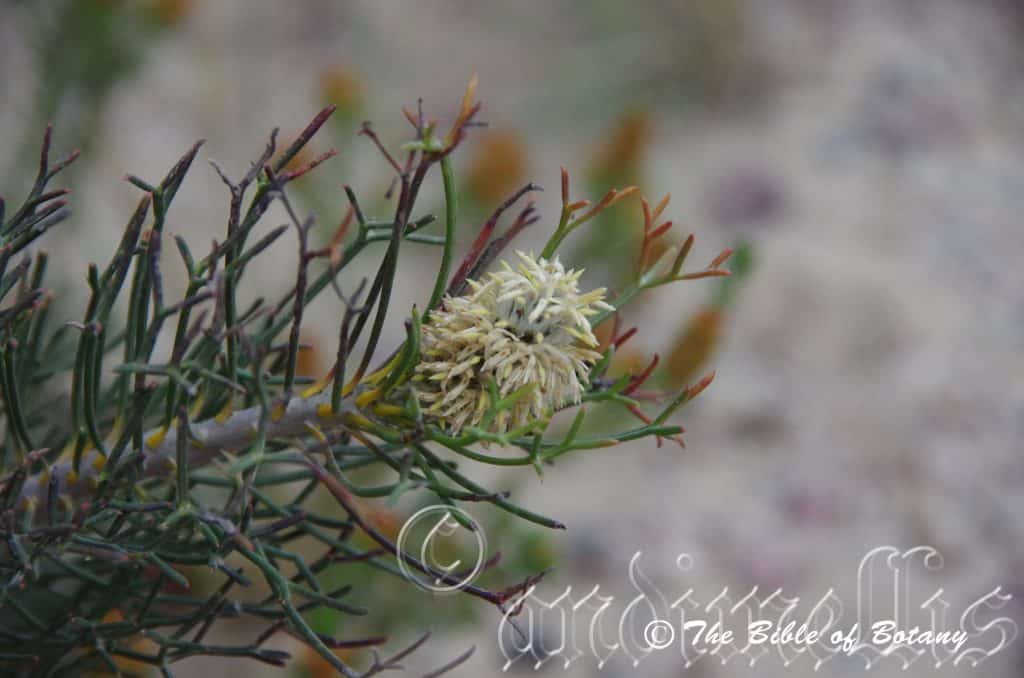
Innes Lake National Park NSW

Innes Lake National Park NSW
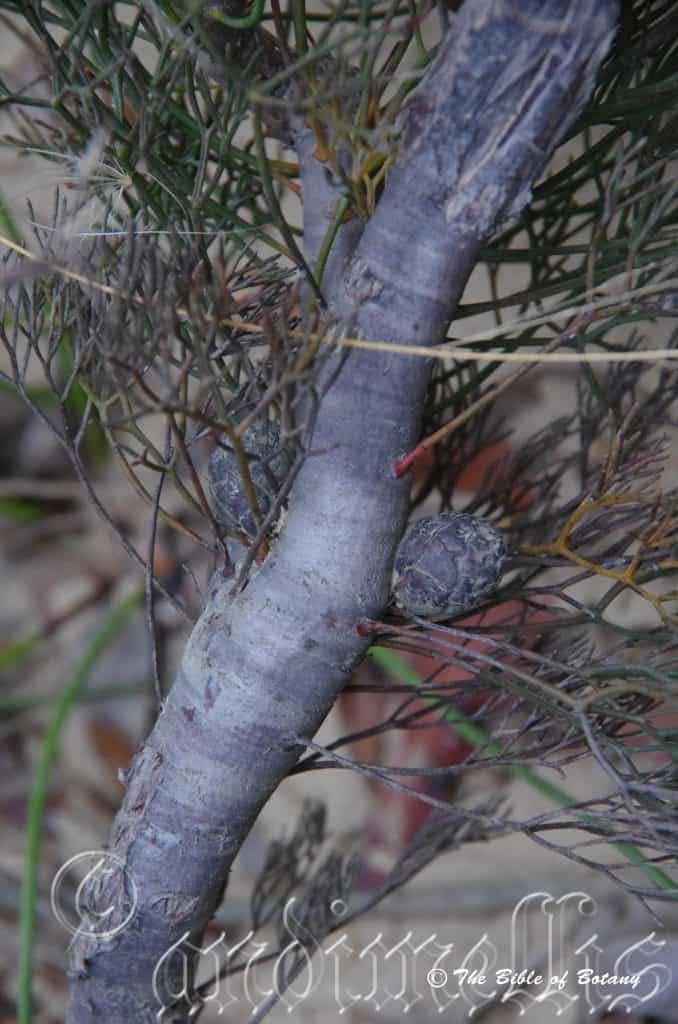
Innes Lake National Park NSW

Kremnos NSW
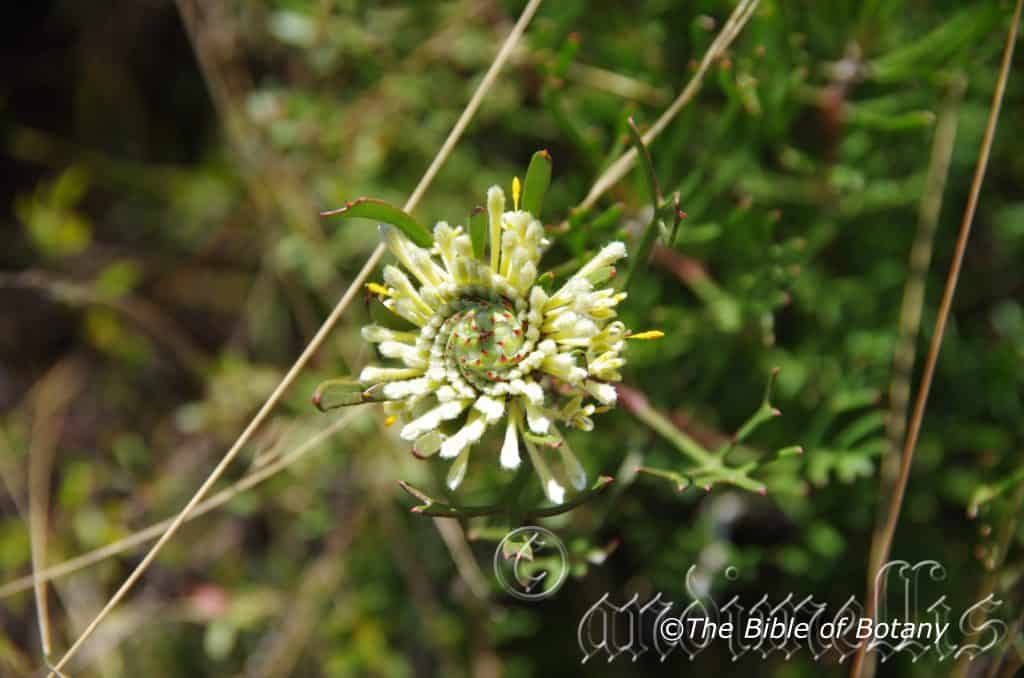
Kremnos NSW
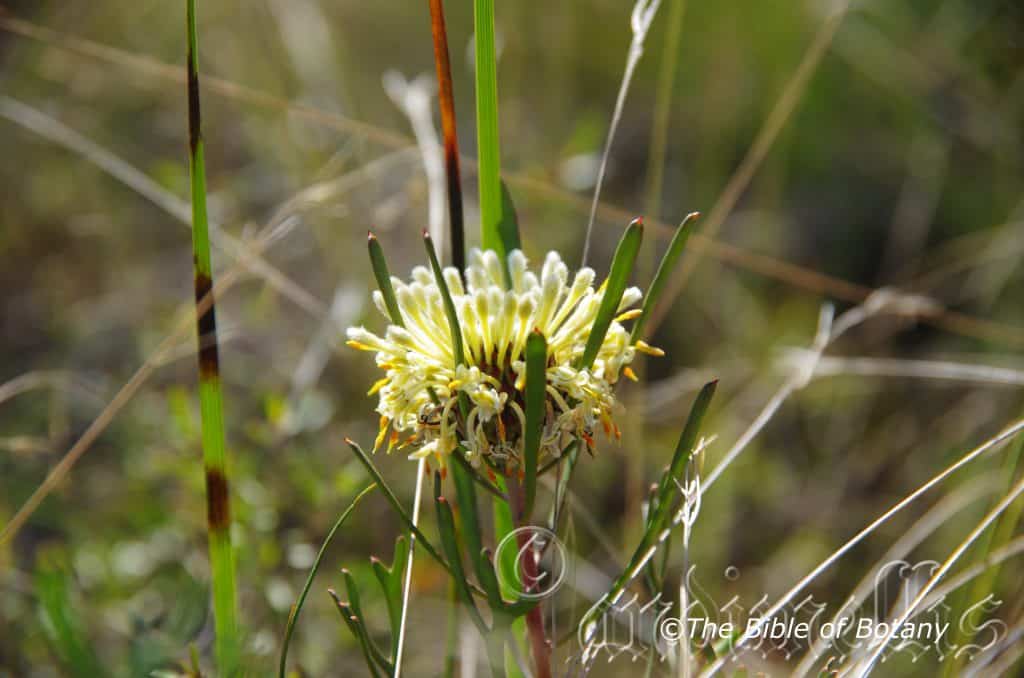
Kremnos NSW

Kremnos NSW
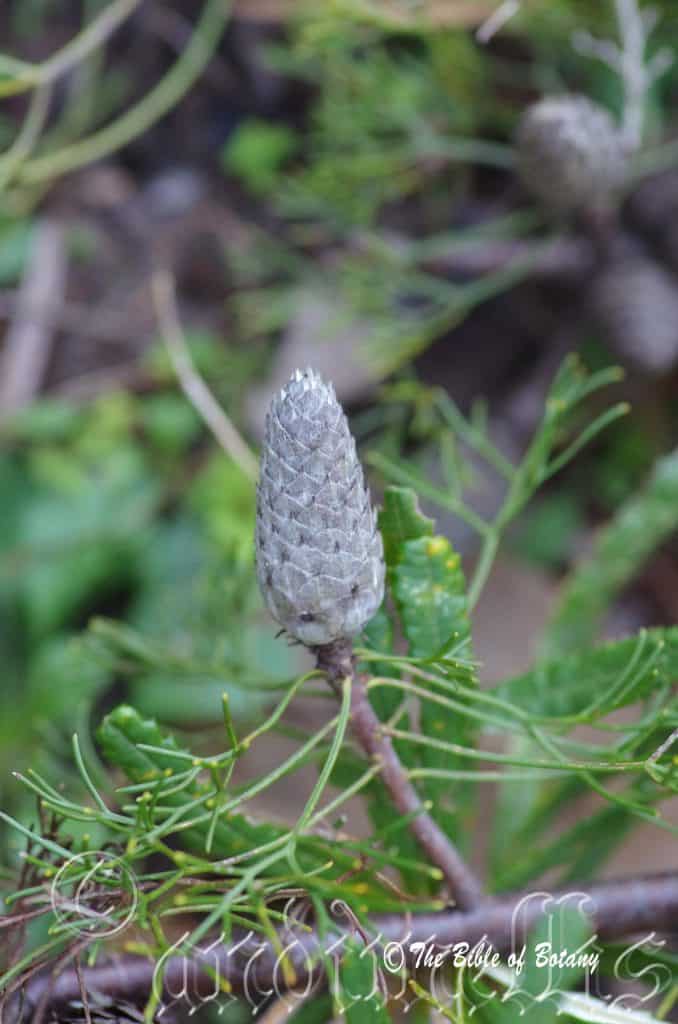
NCBG Coffs Harbour NSW

NCBG Coffs Harbour NSW
Petrophile canescens
Classification:
Unranked: Eudicots
Order: Proteales
Family: Proteaceae
Genus: From Petra, which is Ancient Greek for a rock and Phílos, which is Ancient Greek for loving or to be loved. It refers to plants, which love to grow in very rocky habitats or on rock shelves.
Specie: From Cascus, which old Latin or C?num, which is modern Latin for grey and hoary, to become old and grey. It refers to structures or organs, which are covered in straggly, unkempt, soft grey hairs.
Sub specie:
Common Name: Yellow Cone Flower.
Distribution:
Petrophile canescens is found in several disjunct populations south from near Bowen in central eastern Queensland to Nerriga east of Canberra in south eastern New South Wales.
https://avh.ala.org.au/occurrences/search?taxa=Petrophile+canescens#tab_mapView
Habitat Aspect Climate:
Petrophile canescens prefers dappled shade to full sun. It grows in open dry sclerophyll forests, closed moist sclerophyll forests or coastal woodlands. The altitude ranges from 30 meters ASL to 1050 meters ASL.
The temperatures range from minus 4 degrees in July to 38 degrees in January.
Rainfall ranges from lows of 500mm to 2000mm average per annum.
Soil requirements:
Petrophile canescens prefers, red yellow, grey or white sandy loams to light fatty clays. The soils are usuallyderived from decomposed sandstones, brown basalts or black basalts. The soils pH ranges from 5pH to 6.5pH. It does not tolerate water logged soils. Non saline soils to moderately saline soils are tolerated.
Height & Spread:
Wild Plants:0.8m to 1.2m by 1m to 1m.
Characteristics:
Petrophile canescens grows as an erect small open shrub. The thin stems a grey and glabrous while the juvenile and young shoots are grey-green and covered in pale grey pulverulent hairs.
The alternate triangular leaves are deeply divided and measure 25mm to 45mm in length by 20mm to 45mm in width in the south while the species north from Port Macquarie has leaves that measure 15mm to 35mm in length. The long linear lobes are further divided once or twice and a divaricate. The individual lobes measuring 5mm to 20mm in length by 1.5mm to 2mm in width. The apex tapers to a blunt point and is not pungent. The concolourous, terete laminas are grey-green and glabrous. The leaf margins are entire. The petioles measure 30mm to 50mm in the southern plants while the northern plants petioles measure 18mm to 40mm in length.
The inflorescences of Petrophile canescens cones are born singularly or in small heads of up to 5.It is dense short spikes from the terminals or from the leaf axils. The pedicels are sessile near the base or measure 6mm to 10mm in length when terminal. The pale yellow perianths measure 10mm to 14mm in length and are covered in pale yellow or white pilose hairs. The 4 oblong to linear, pale yellow lobes measure 5 to 7mm in length. The apex is acute. The perianth and lobes are covered in pale yellow to white pilose hairs externally and on the margins. It is curved to strongly recurved. The a long white hirsute hairs rising from the ovary which measure 2.5mm to 3.5mm in length.
The 4 stamen filaments are attached to the lobes and are only free as they approach the anthers. The oblong anthers measure 1.2mm to 1.6mm in length. The anthers are yellow.
The yellow style measures 7mm to 8mm in length. The long, conical, deep yellow stigma is covered in puberulent hairs and measures 2mm to 2.2mm in length by 0.6mm to 0.8mm in diameter about a third the way from its base. Petrophile pulchella flowers from late September through to early March.
Petrophile canescens’s fruits are swollen woody cone. The cones are oblong and measure 40mm to 60mm in length by 18mm to 25mm wide at the base. The pale grey-brown nuts measure 3mm to 5mm in length by 3mm to 4mm in diameter. It is covered in long fawn pilose hairs which measure 4mm to 6mm in length.
Wildlife:
Petrophile canescens’s do not appear to have any predators though the flowers are visited by many small butterflies, native bees and beetles.
Cultivation:
Petrophile canescens is a beautiful small shrub that is easy to grow in warm temperate to cool tropical native or exotic garden. It is ideal in almost every setting near ponds, at the edge of a rain forest in court yards, around swimming pools or larger rockeries when their size is balanced. In cultivation it grows from 1 meter to 1.5 meters in height by 1 meter to 1.5 meters in diameter when grown in the open.
It is at its best in the Carnarvon Gorge National Park in Queensland and in the Fortis Creek Floral serve in northern New South Wales When they thrive on poor d partially decomposed sandstones.
It is particularly well adapted to acid sandy soils through to medium acid clays. If these requirements are met with a little additional water and plenty of leaf litter it can cope with temperatures as low as minus 5 degrees and up to 40 degrees. It is drought resistant and disease resistant. If a native fertilizer program is implemented it will respond with a long heavy flowering season.
They often reach their full potential in just 3 years and flower from the second year from seed. Plants will live naturally for 10 to 15 years so should be placed every 8 to 9 years to maintain continuity in blossom.
Be imaginative when planting in mass. Use the plants in different configurations and use curves. Light pruning after flowering or tip pruning will enhance the shrubs bushiness and provide longer stronger flower stems in the following season.
It is best used adjacent to small areas of bush close to paths or the house so their pink flowers can be viewed regularly. It is great in small to large rockeries as a fill in plant. Here it can be planted in small groups of 2 or 3 scatted as you would find them in nature to give a great bush scene. It is best used in the mid ground surrounded by shorter plants with broad deep green leaves with white or red flowers so they will dominate at the center of the bed especially when it is in flower. This is one plant that benefits highly from being planted in scatted clumps. The medium size enables this to be achieved and their open habit allows for planting closer together so the branches intertwine. This type of planting should have centers of 0.8 meters to 1.2 meters.
Six or more planted back from a bend will become a very strong focal point when planted in this manner especially when it is in bloom. That is when it will gain a lot of attention whether you are coming or going because of the fresh clean look of the foliage even in the driest of times. It can be regularly tip pruned if a smaller shrub is wanted. It responds well to pruning covering quickly and often increasing the number of flowers in the following season.
Ensure that the whole plant or at least most of it is on display from most sections of the garden as the flowers are a real bonus.
When it is in flower these plants will catch your attention and the viewer will be transfixed on the display rather than watching the path. Plant them at 0.8 meter to 1 meter centers.
Propagation:
Seeds: Sow freshly collected seeds of Petrophile canescens directly into a seed raising mix, keeping them moist not wet. When the seedlings are 20mm to 25mm tall, prick them out and plant them into 50mm native tubes using a good organic mix.
As the seedlings roots ach the bottom of the tubes plant them out into their permanent position.
Fertilize using seaweed, fish emulsion or organic chicken pellets soaked in water on an alternate basis. Fertilize every two months until the plants are established then twice annually in early September and March to maintain better health, vitality and flowering.
Further Comments from Readers:
“Hi reader, it seems you use The Bible of Botany a lot. That’s great as we have great pleasure in bringing it to you! It’s a little awkward for us to ask, but our first aim is to purchase land approximately 1,600 hectares to link several parcels of N.P. into one at The Pinnacles NSW Australia, but we need your help. We’re not salespeople. We’re amateur botanists who have dedicated over 30 years to saving the environment in a practical way. We depend on donations to reach our goal. If you donate just $5, the price of your coffee this Sunday, We can help to keep the planet alive in a real way and continue to bring you regular updates and features on Australian plants all in one Botanical Bible. Any support is greatly appreciated. Thank you.”
In the spirit of reconciliation we acknowledge the Bundjalung, Gumbaynggirr and Yaegl and all aboriginal nations throughout Australia and their connections to land, sea and community. We pay our respect to their Elders past, present and future for the pleasures we have gained.

The Pinnacles NSW
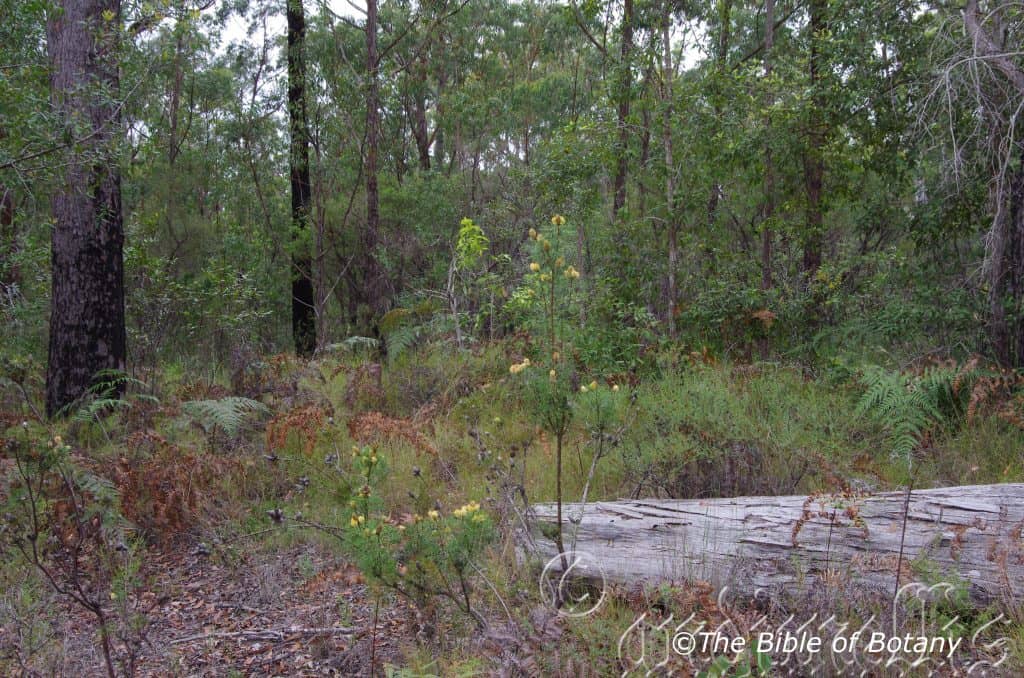
The Pinnacles NSW
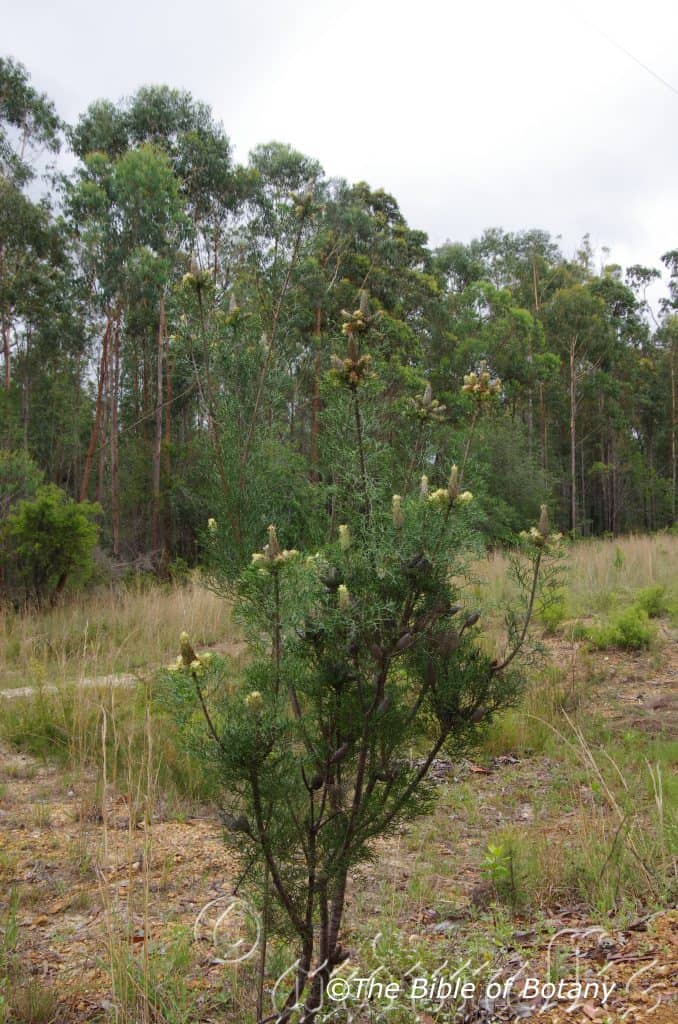
The Pinnacles NSW

The Pinnacles NSW

The Pinnacles NSW
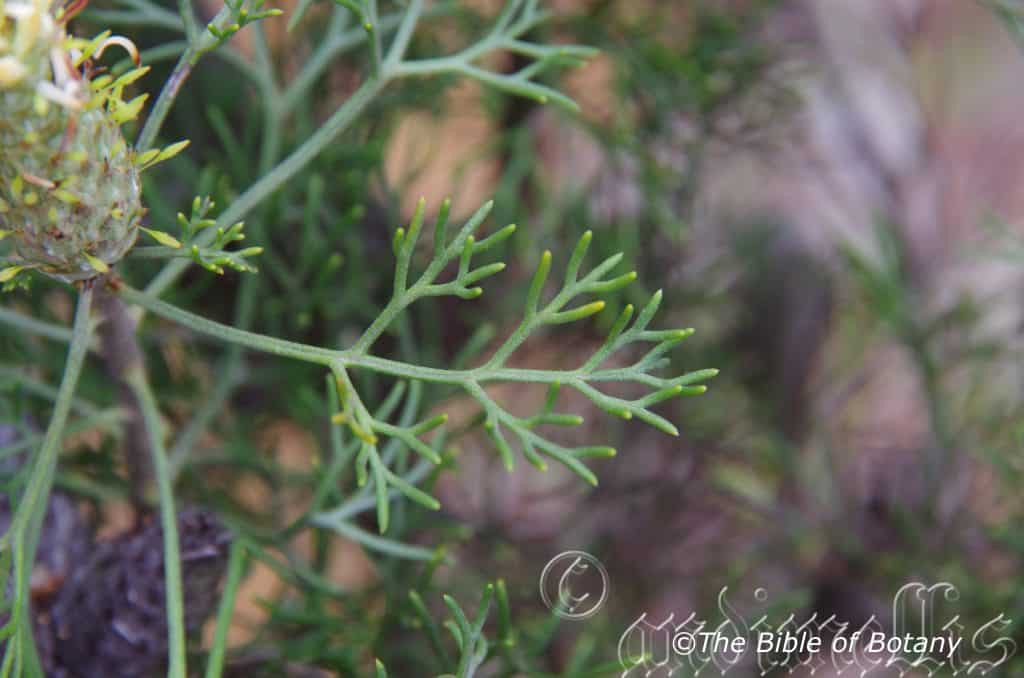
The Pinnacles NSW
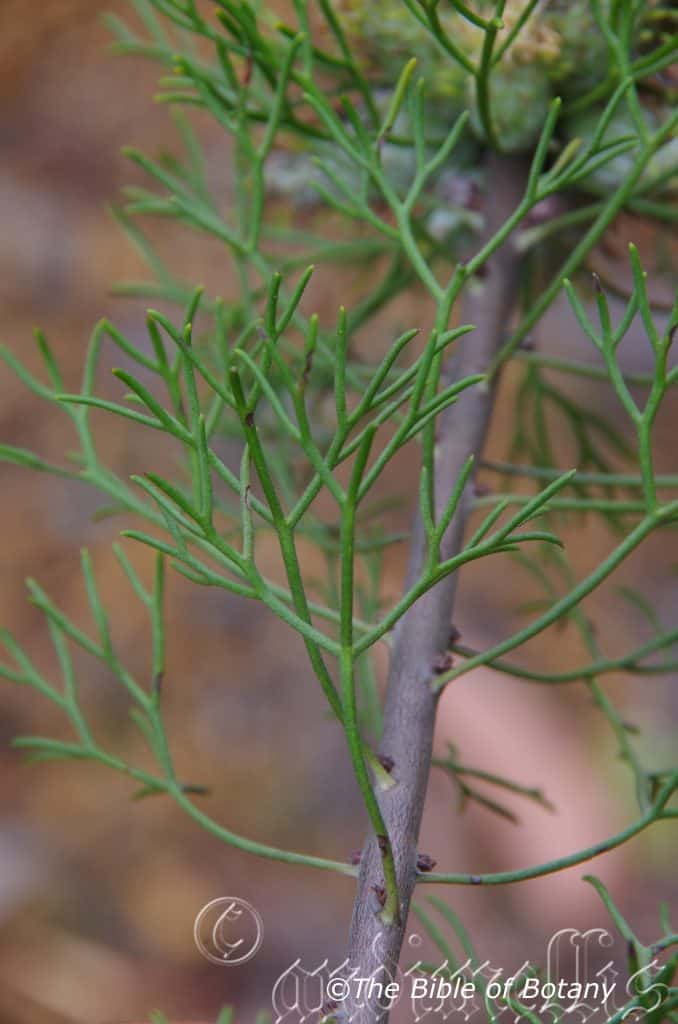
The Pinnacles NSW

The Pinnacles NSW

The Pinnacles NSW

The Pinnacles NSW

Fortis Creek National Park NSW

Fortis Creek National Park NSW
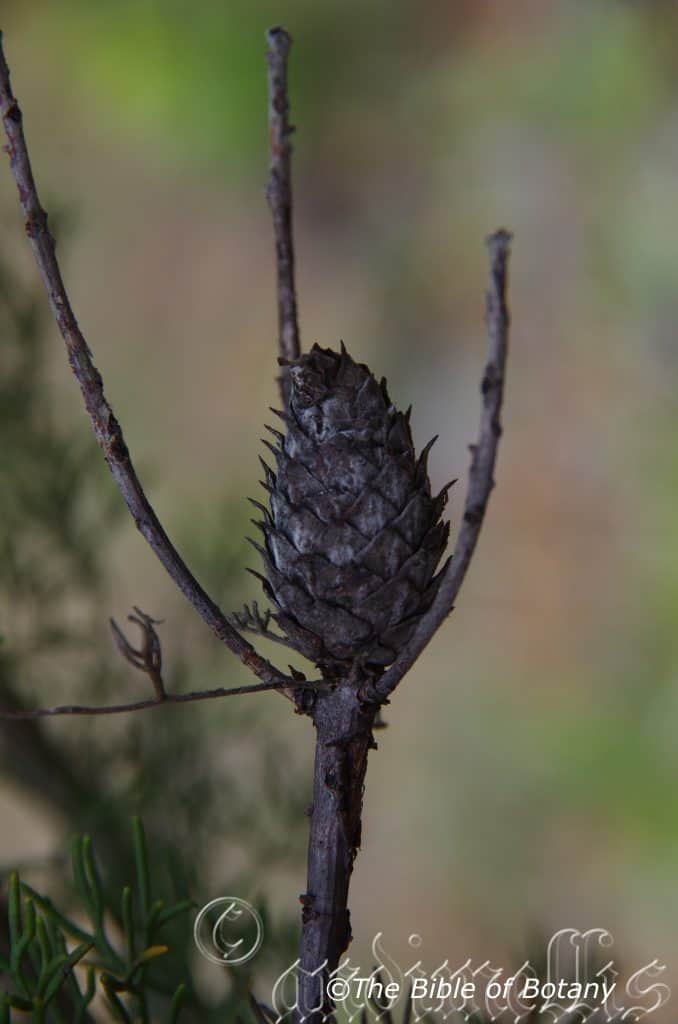
The Pinnacles NSW
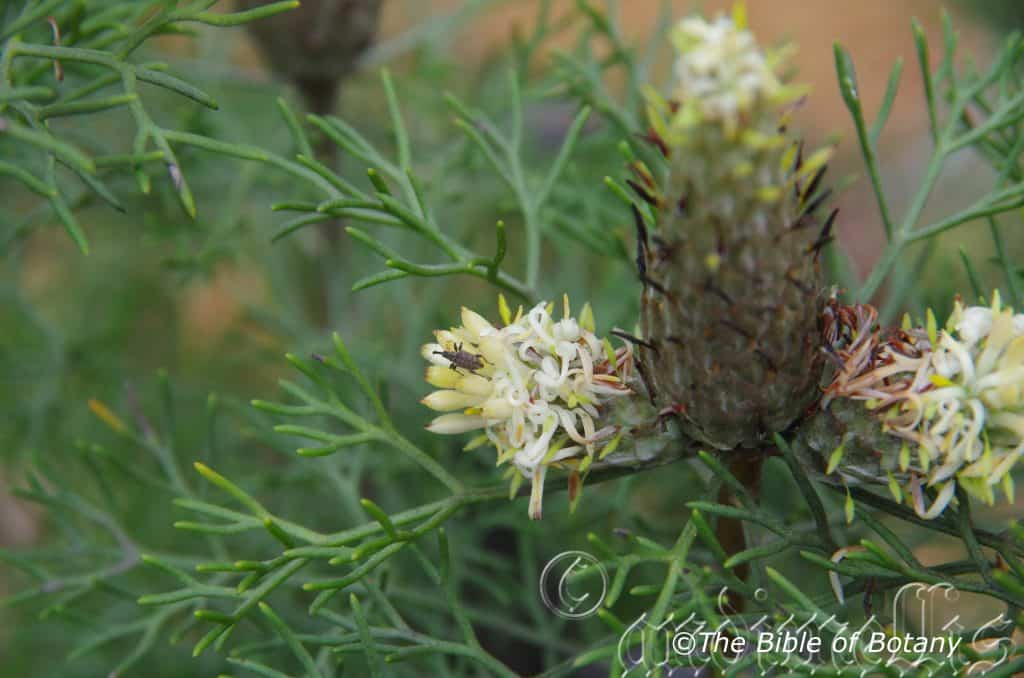
Unknown Weevil The Pinnacles NSW
Petrophile pulchella
Classification:
Unranked: Eudicots
Order: Proteales
Family: Proteaceae
Genus: From Petra, which is Ancient Greek for a rock and Phílos, which is Ancient Greek for loving or to be loved. It refers to plants, which love to grow in very rocky habitats or on rock shelves.
Specie: From Pulchella which is Latin for pretty. It usually refers to flowers, which are pink and rather attractive.
Sub specie:
Common Name: Yellow Cone Flower.
Distribution:
Petrophile pulchella is found in 2 disjunct populations. The northern population is found south from the Macpherson Ranges to the Pinnacles north of Grafton.
The southern population is found south from Port Macquarie to east of Canberra. It is found on and east of the Great Dividing Range.
https://avh.ala.org.au/occurrences/search?taxa=Petrophile+pulchella#tab_mapView
Habitat Aspect Climate:
Petrophile pulchella prefers dappled shade to full sun. It grows in dry sclerophyll forests, closed moist sclerophyll forests or adjacent to dry rainforests. The altitude ranges from 30 meters ASL to 450 meters ASL.
The temperatures range from minus 3 degrees in July to 36 degrees in January.
The rainfall ranges from lows of 500mm to 1200mm average per annum.
Soil requirements:
Petrophile pulchella prefers red, yellow, grey or white sandy loams to light fatty clays with a high proportion of forest litter. The soils are usually derived from decomposed sandstone or at times accumulated peaty beach sands. The soils pH ranges from 5pH to 6.5pH. It does not tolerate of water logged soils. Non saline soils to moderately saline soils are tolerated.
Height & Spread:
Wild Plants:1m to 3m by 1m to 3m.
Characteristics:
Petrophile pulchella grows as an erect small open shrub. Stems are thin deep green and densely covered in farinaceous warts. Young shoots are deep sea green and covered in farinaceous lumps with small white stellate hairs. The stems are terete to triangular.
The alternate deltoid leaves are deeply divided and measure 20mm to 60mm in length by 18mm to 50mm in width. The long linear lobes are further divided twice or the times with the individual lobes measuring 5mm to 30mm in length by 1.5mm to 2mm in width. The apex tapers to a blunt point and is not pungent. The concolourous, terete laminas are blue-green and glabrous. The leaf margins are entire and curve strongly upwards from the mid vein. The petioles measure 20mm to 50mm in length.
The inflorescences of Petrophile pulchella are born singularly or on a dense short spike from the terminals or from the leaf axils. The pedicel is sessile or measures 6mm to 10mm in length. The pale yellow perianths measure 10mm to 14mm in length and are covered in pale yellow or white pilose hairs. The 4 oblong to linear, pale yellow lobes measure 5 to 7mm in length. The apex is acute. The perianth and lobes are covered in pale yellow to white pilose hairs externally and on the margins. It is curved to strongly recurved. It is long white hirsute hairs rising from the ovary which measure 2.5mm to 3.5mm in length.
The 4 stamen filaments are attached to the lobes and are only free as they approach the anthers. The oblong anthers measure 1.2mm to 1.6mm in length. The anthers are yellow.
The yellow style measures 7mm to 8mm in length. The long, conical, deep yellow stigma is covered in puberulent hairs and measures 2mm to 2.2mm in length by 0.6mm to 0.8mm in diameter about a third the way from its base. Petrophile pulchella flowers from late September through to early March.
Petrophile pulchella’s fruits are swollen woody cone. The cones are oblong and measure 40mm to 60mm in length by 18mm to 25mm wide at the base. The pale grey-brown nuts measure 3.5mm to 4mm in length by 3mm to 3.5mm in diameter. It is covered in long fawn pilose hairs which measure 4mm to 6mm in length.
Wildlife:
Petrophile pulchella’s do not appear to have any predators but the flowers are visited by many small butterflies, native bees and beetles.
Cultivation:
Petrophile pulchella is a beautiful small shrub that is easy to grow in warm temperate to cool tropical native or exotic garden. It is ideal in almost every setting near ponds, at the edge of a rain forest in court yards, around swimming pools or larger rockeries when their size is balanced. In cultivation it grows from 2 meters to 2.5 meters in height by 2 meters to 2.5 meters in diameter when grown in the open.
It is particularly well adapted to sandy soils. If these requirements are met with a little additional water and plenty of leaf litter it can cope with temperatures as low as minus 5 degrees and up to 40 degrees. It is drought resistant and disease resistant. If a native fertilizer program is implemented it will respond with a long heavy flowering season.
It often reaches its full potential in just 3 years and flower from the second year from seed. Plants will live naturally for 10 to 15 years so should be placed every 8 to 9 years to maintain continuity in blossom.
Be imaginative when planting in mass. Use the plants in different configurations and use curves. Light pruning after flowering or tip pruning will enhance the shrubs bushiness and provide longer stronger flower stems in the following season.
It is best used adjacent to small areas of bush close to paths or the house so their pink flowers can be viewed regularly. It is great in small to large rockeries as a fill in plant. He they can be planted in small groups of 2 or 3 scatted as you would find them in nature to give a great bush scene. It is best used in the mid ground surrounded by shorter plants with broad deep green leaves with white or red flowers so they will dominate at the center of the bed especially when it is in flower. This is one plant that benefits highly from being planted in scatted clumps. The medium size enables this to be achieved and their open habit allows for planting closer together so the branches intertwine. This type of planting should have centers of 1.5 meters to 2 meters.
Six or more planted back from a bend will become a very strong focal point when planted in this manner especially when it is in bloom. That is when it will gain a lot of attention whether you are coming or going because of the fresh clean look of the foliage even in the driest of times. It can be regularly tip pruned if a smaller shrub is wanted. It responds well to pruning recovering quickly and often increasing the number of flowers in the following season.
Ensure that the whole plant or at least most of it is on display from most sections of the garden as the flowers are a real bonus.
When it is in flower these plants will catch your attention and the viewer will be transfixed on the display rather than watching the path. Plant them at 0.8 meter to 1 meter centers.
Propagation:
Seeds: Sow freshly collected seeds directly into a seed raising mix, keeping them moist not wet. When the seedlings are 20mm to 25mm tall, prick them out and plant them into 50mm native tubes using a good organic mix.
As the seedlings roots ach the bottom of the tubes plant them out into their permanent position.
Fertilize using seaweed, fish emulsion or organic chicken pellets soaked in water on an alternate basis. Fertilize every two months until the plants are established then twice annually in early September and March to maintain better health, vitality and flowering.
Further Comments from Readers:
“Hi reader, it seems you use The Bible of Botany a lot. That’s great as we have great pleasure in bringing it to you! It’s a little awkward for us to ask, but our first aim is to purchase land approximately 1,600 hectares to link several parcels of N.P. into one at The Pinnacles NSW Australia, but we need your help. We’re not salespeople. We’re amateur botanists who have dedicated over 30 years to saving the environment in a practical way. We depend on donations to reach our goal. If you donate just $5, the price of your coffee this Sunday, We can help to keep the planet alive in a real way and continue to bring you regular updates and features on Australian plants all in one Botanical Bible. Any support is greatly appreciated. Thank you.”
In the spirit of reconciliation we acknowledge the Bundjalung, Gumbaynggirr and Yaegl and all aboriginal nations throughout Australia and their connections to land, sea and community. We pay our respect to their Elders past, present and future for the pleasures we have gained.

NCBG Coffs Harbour NSW
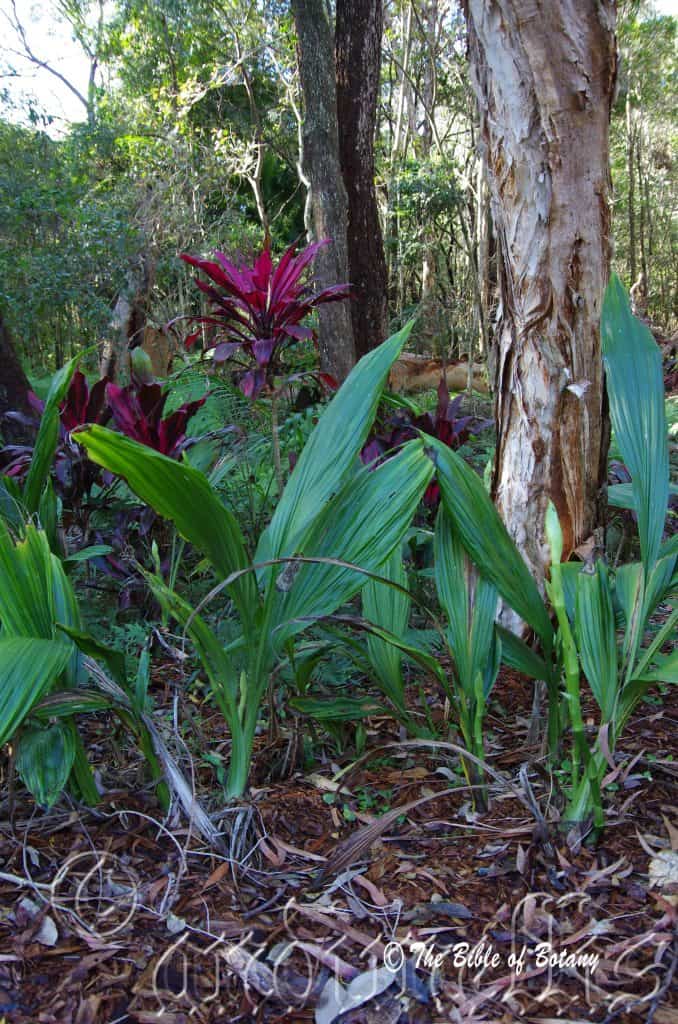
NCBG Coffs Harbour NSW
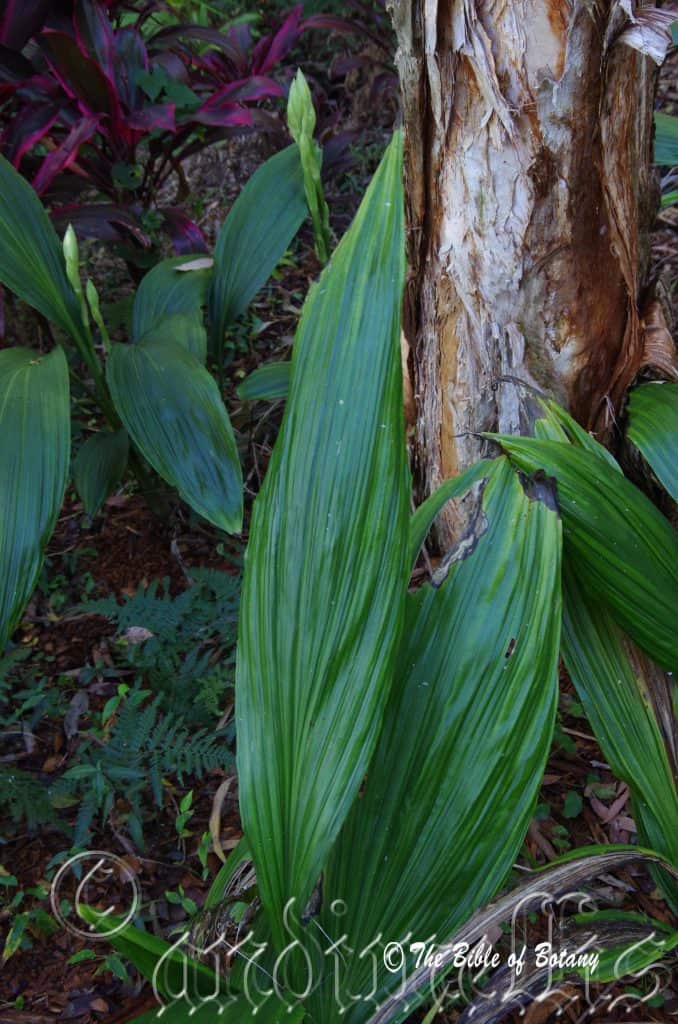
NCBG Coffs Harbour NSW
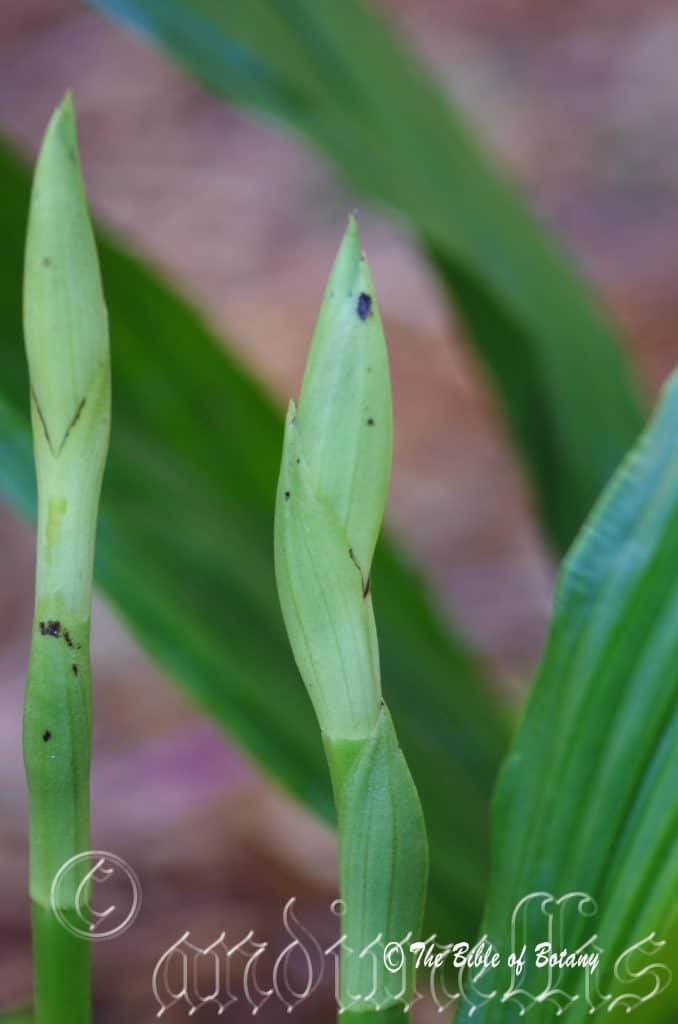
NCBG Coffs Harbour NSW

NCBG Coffs Harbour NSW
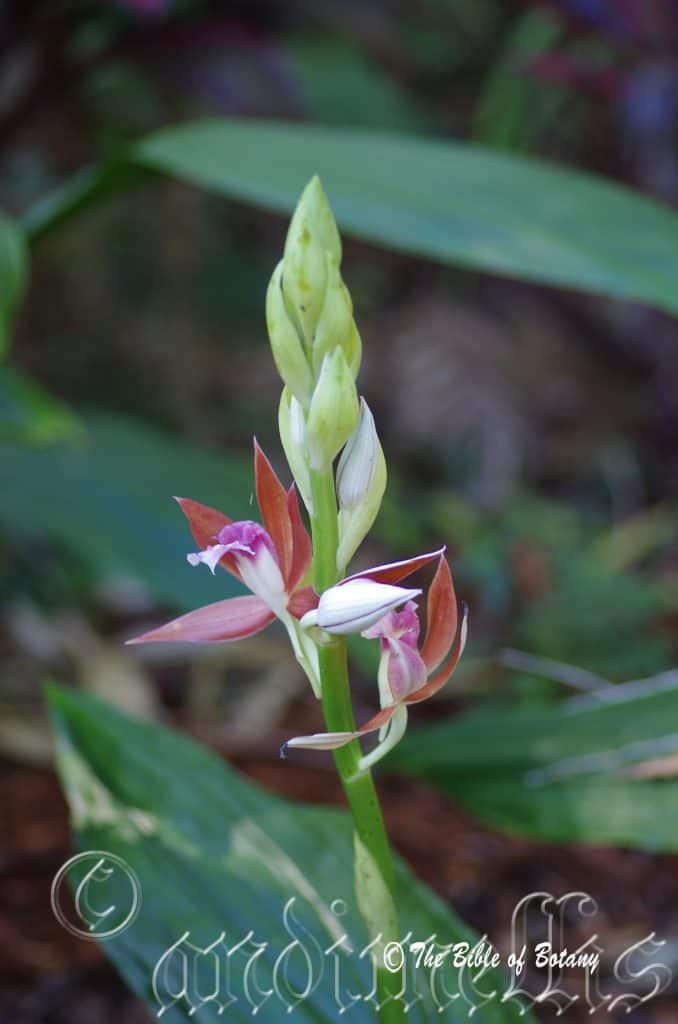
NCBG Coffs Harbour NSW
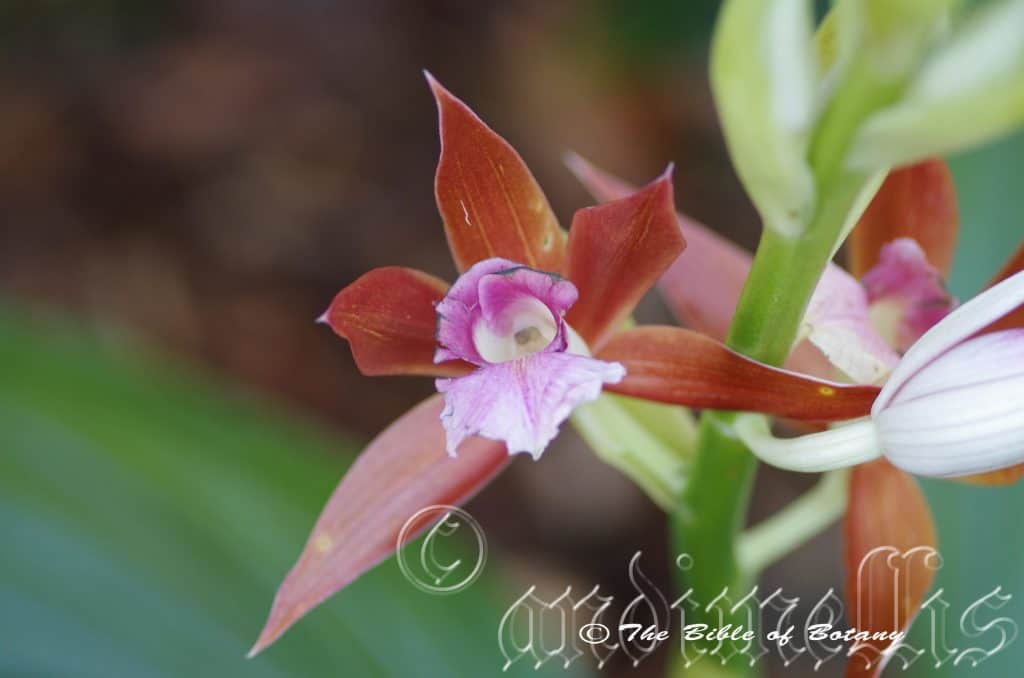
NCBG Coffs Harbour NSW
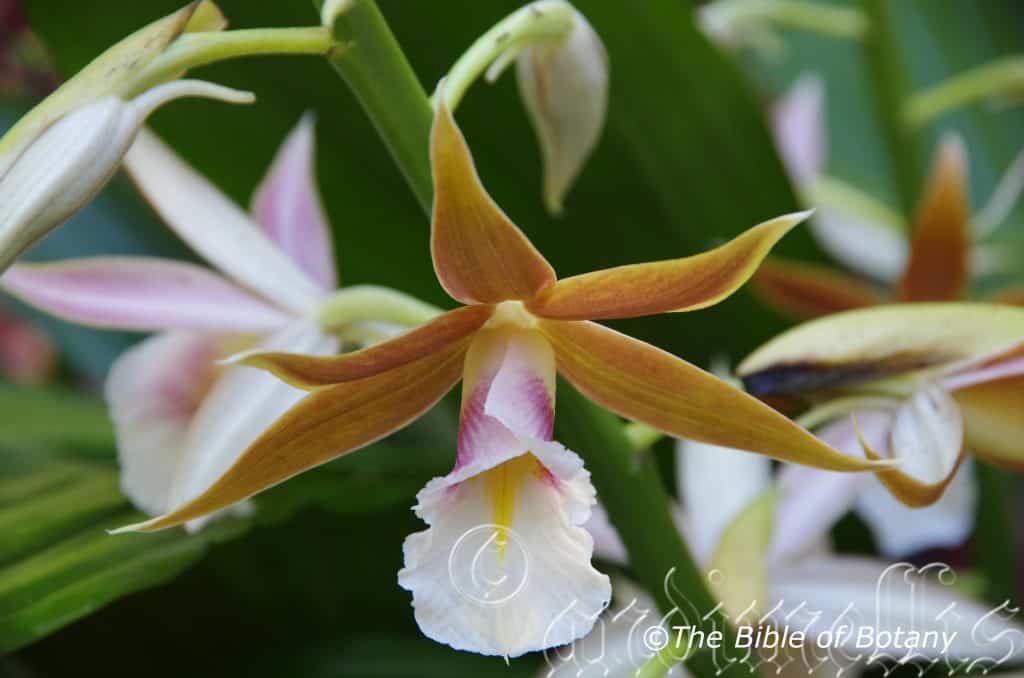
NCBG Coffs Harbour NSW

NCBG Coffs Harbour NSW

NCBG Coffs Harbour NSW
Phaius australis
Classification:
Unranked: Monocots
Order: Asparagales
Family: Orcidaceae
Tribe: Collabieae
Genus: FromPha/Phaius, which is Ancient Greek for to have a deep colour. It refers to the colour of the flowers, which are deep reddish-brown.
Specie: FromTerra Australis, which is Latin for land of the south. It refers to plants, which were first discovered from the land down under.
Sub specie:
Common Name: Lesser Ground Orchid.
Distribution:
Phaius australis is found south from Fraser Island in southern Queensland to Evans Head. It is also found in Byfield National Park, Carnarvon Gorge, and on the Whitsunday Islands.
It is also found in Indonesia, Malaysia Papua and New Guinee so reports of it being found on Cape York Peninsular are most likely valid.
https://avh.ala.org.au/occurrences/search?taxa=Phaius+australis#tab_mapView
Habitat Aspect Climate:
Phaius australis prefer light shade or dappled shade. It grows in adjacent to melaleuca swamps and wet open areas in rainforests and littoral rain forests. The altitude ranges from 5 meters ASL to 50 meters ASL.
The temperatures range from 2 degrees in July to 34 degrees in January.
The rainfalls range from lows of 900mm to an average of 2800mm annually.
Soil requirements:
Phaius australis prefers rich fertile peaty sands to sandy loams. The soils are usually derived from accumulated beach sands. Soils are covered in thick layers of leaf litter. The soils pH ranges from 5.5pH to 6.5pH when the water can drain freely but are continuously moist usually from capillary action from water below the surface. It does not tolerate water logged soils however it tolerates seasonally wet soils for short periods. Non saline soils to moderately saline soils are tolerated.
Height & Spread:
Wild Plants: 0.3m to 1.6m when in flower by 0.5m to 0.9m.
Characteristics:
Phaius australis grows on pseudobulbs as a terrestrial orchid. The depressed globose pseudobulbs are usually half buried in the ground. The pseudobulbs measure 30mm to 100mm in length by 20mm to 70mm in diameter.
The 4 to 8 long oblanceolate leaves measure 300mm to 700mm in length by 30mm to 100mm in width. The base is clasping around the pseudo bulb while the apex is acute. The concolourous laminas are pale green, glabrous and dull. The leaf margins are entire and are undulating. The laminas have 6 to 10 prominent longitudinal veins. The laminas are convex between the veins.
The inflorescences of Phaius australis are born singularly or in pairs on a long erect spike which measures 1000mm to 1600mm in length. The spike has 5 to 20 flowers. The nodding pedicles measure 50mm to 85mm in length.
The sepals and petals are only slightly spreading to fully spreading When fully open curving forward from the ovary. The sepals and lateral petals are white externally and auburn or rarely yellow green internally. The 3 oblong sepals have an acuminate apex and measure 35mm to 60mm in length by 8mm to 11mm in width. The 3 oblong lateral petals have an acuminate apex and measure 35mm to 45mm in length by 9mm to 13mm in width.
The labellum measures 28mm to 55mm in length by 18mm to 45mm in width. The margins are sinuate and ruffled while the apex is mucronate. The labellum is white externally with the apex being mid pink to deep pink or carmine with deeper coloured striations or rarely yellow to yellow-green. The internal colour is mid pink to deep pink or carmine with deeper coloured striations or rarely yellow to yellow-green. The internal keel is yellow while the spur measures 5mm to 10mm in length. Flowering occurs during early September to late October.
The seed pods measure 25mm to 30mm in length by 8mm to 10mm in width. It is cylindrical to elliptical in shape with 4 or 5 very prominent keels. The flowers are persistent and dry to a light pinkish yellow colour. Seed pods ripen to a light yellow olive-green colour.
Wildlife:
Phaius australis is the host to numerous small native bees when in flower. The plants are becoming increasingly rare in their natural habitat due to poaching. The flowers were eaten by aborigines. It is crisp with a sweet, mild cooked radish flavour. (Flowers I have eaten were from cultivated plants in China. The owners of the restaurant and our guests were quite surprised when I informed them of the delicacy and started eating the garnishes.)
Cultivation:
Phaius australis is a beautiful orchid which is easy to grow and to propagate. They will look great planted in mass at the edge of a wet forest or in a sheltered area away from winds when adequate moisture is retained in the soil. The shape and colour of the leaves is an instant attraction especially around pools and in courtyards. Plants grown in cultivation will grow 0.5m to 1.8m when in flower by 0.5m to 0.9m when grown in a protected open area.
For best results ensure the plants receive dappled light throughout the day even some late afternoon or early morning sun is beneficial. The best time to fertilize the plants is on father’s day or in late March. The plants will benefit from a deep layer of mulch. This will ensure good flowering and flowers of a maximum size. If the seed is not quid move the spent flowers as the die.
Propagation:
Seeds: All ferns that are declared rare, vulnerable or endangered are protected by Federal and State Laws and must not be removed from the wild unless you are a land developer, mining company or main Roads department etc. This includes bulbs, roots, leaves and flowers. No part of any plant can be removed from Federal, State or Local Government land without the prior permission of the authority and this includes the spore.
Phaius australis seeds are very difficult to acquire and the seed requires treatment before sowing. Really Orchid seeds are meant for professionals with time, equipment and space. However if you wish to persevere then here are the basics and you are learning from an amateur. Once the orchids are large enough to handle treat them similarly to other ground orchids.
1. Obtain relevant materials
The first step in growing orchid from seed will be sourcing and having at the ready all materials that will be required in the propagation process.
This includes all of the following:
Unripe orchid seed capsule. If there are 2 capsules secure the second capsule immediately after the first capsule splits or if only one capsule as soon as it changes colour.
Orchid gelling medium with agar which can be purchased from an orchid society or a specialist nursery.
Distilled water
Cooking pot
Spoon
Oven-safe glass or polypropylene containers with lids
Sealable bags
Clean, sterilized cutting board
Rubber gloves
Paper towels
Tweezers or forceps
70 percent ethanol
Bleach
Scalpel or sharp knife
Planting pot
Orchid compost
Length of wire metal
Plastic spray bottle.
deep petri dishes or sterile jars.
2. Prepare agar medium
The agar medium is a special orchid gelling mixture that distilled water will be added to distilled water.
To prepare the medium, mix equal parts of orchid gelling medium with distilled water in a cooking pot.
Place the pot on a stove and bring the mixture to boil for while stirring continuously for two minutes.
Pour the mixture into the petri dishes glass or propylene containers while ensuring not to fill the containers above 20 percent of their volume.
Loosely replace the lids to the containers. Sterilize the containers by heating them up in a microwave oven for between 2 to 3 minutes.
Spray 70 percent ethanol into a sealable bag to create a sterile environment. Transfer the heated containers into the sealable bag.
Allow the containers to cool a bit before tightening their lids and then sealing the bag. Leave the containers to stand for a few days until the mixture solidifies.
3. Prepare seed capsule and work surface
Place an open pot of water on a stove and bring to boil. Place the cutting board in the oven and sterilize.
Put on rubber gloves and sterilize the forceps, and scalpel with 70 percent ethanol.
Insert the seed capsule into a bowel filled with bleach for about fifteen minutes.
Sterilize seed capsule again with 70 percent ethanol and place on grill.
Using the sterilized scalpel, cut open the seed capsule to reveal the seeds. Using a scalpel or sharp knife, scrape out the seeds from the capsule unto an ethanol soaked paper towel.
4. Flasking of the seed
Take out the petri dishes or glass jars containers holding the agar medium. Over the steam, open up the containers and transfer seeds from the ethanol soaked paper towel into the individual containers using the sterilized forceps.
The amount of seeds will determine the number of containers required. Replace the lid of the containers and place them on a window sill that receives indirect sunlight.
5. Wait and exercise patience
All that can be done at this point is to wait until the seeds germinate. The amount of time that this might take varies and is dependent on the particular species.
Generally, the time can range from a few months to a few years. During this period of waiting, ensure the containers are free from contamination to ensure that germination is not disrupted.
6. Emergence of protocorms
Protocorms are tuber-shaped bodies with rhizoids that are produced by the young seedlings of various orchids. Protocorms represent the embryonic form of the orchid plant.
Their emergence after the period of waiting at an affirmation that everything in the propagation process is on track.
7. Transflask orchid seedlings is done after they have developed roots
Upon the emergence of the protocorms, consistently observe the growth of the seedlings. At the point when the seedlings appear to overcrowd the flask, transflasking should be carried out, typically within 30 and 60 days.
* This is done by removing individual seedlings using sterilized tweezers from the original containers and placing them in new containers also filled, in a proportion similar to the original, with agar medium. 6 to 8 in a standard petri dish or 1or 2 to a test tube
8. Transplant seedlings into planting pots
On the presumption that there are no disruptions to the plant growth, the seedlings will eventually outgrow the containers.
At this point, they are to be transplanted into planting pots. A good rule of thumb to determine when they are ready to be transplanted is when the seedlings have developed roots that have grown up to the length of one-quarter of an inch.
To transplant, prepare a planting pot or other container for receiving the seedling by majorly filling it up with coarse fir bark and possibly some slightly moist orchid compost mixture containing perlite, fine charcoal, redwood bark shavings, etc.
To extract the seedlings, submerge the containers in warm water to help loosen the agar gel.
Once the agar medium is softened, twist a piece of metal to form a loop and in turn, use it to carefully pull out the seedlings from the container. It is best done if the agar and seedling can be removed together.
The seedlings can be further rinsed in lukewarm water to remove any excess agar mixture still stuck to them.
Following this, the seedlings can now be planted into the prepared pot with at least 50mm of space between each individual seedling.
9. Positioning the orchid
The seedling once fully transplanted should be placed in a location that is warm with good indirect sun light.
Slowly position the pots into an area that closely assimilates the conditions it will be growing under.
The choice as to whether the plant should be exposed to full sun or in direct sunlight will be dependent on the particular orchid specie.
10. Subsequent care of the plant
After the first week, the seedling can be misted several times a day and watered just once a week.
A guide in watering the plant will be using the dryness of the fir back that is, water the plant until the fir back is completely moistened and wait till it has completely dried out before watering again.
Do not fertilize until the seedlings have fully established themselves.
Division:
Phaius australis can be divided using older plants that have several shoots. Each bulb should have roots and be healthy. Remove the bulbs by severing the short rhizome between the bulbs with a sharp clean, sterilised knife. Tie the new bulb securely to a stake once it has been repotted into a fine orchid mix. Plants are slow to re-establish and should be kept moist with misting daily and in a cool, humid environment until fully established.
Fertilize using seaweed, fish emulsion or organic chicken pellets soaked in water on an alternate basis as a foliar spray. Fertilize every two months until the plants are established then twice annually in early September and March to maintain better health, vitality and flowering.
Further Comments from Readers:
“Hi reader, it seems you use The Bible of Botany a lot. That’s great as we have great pleasure in bringing it to you! It’s a little awkward for us to ask, but our first aim is to purchase land approximately 1,600 hectares to link several parcels of N.P. into one at The Pinnacles NSW Australia, but we need your help. We’re not salespeople. We’re amateur botanists who have dedicated over 30 years to saving the environment in a practical way. We depend on donations to reach our goal. If you donate just $5, the price of your coffee this Sunday, We can help to keep the planet alive in a real way and continue to bring you regular updates and features on Australian plants all in one Botanical Bible. Any support is greatly appreciated. Thank you.”
In the spirit of reconciliation we acknowledge the Bundjalung, Gumbaynggirr and Yaegl and all aboriginal nations throughout Australia and their connections to land, sea and community. We pay our respect to their Elders past, present and future for the pleasures we have gained.
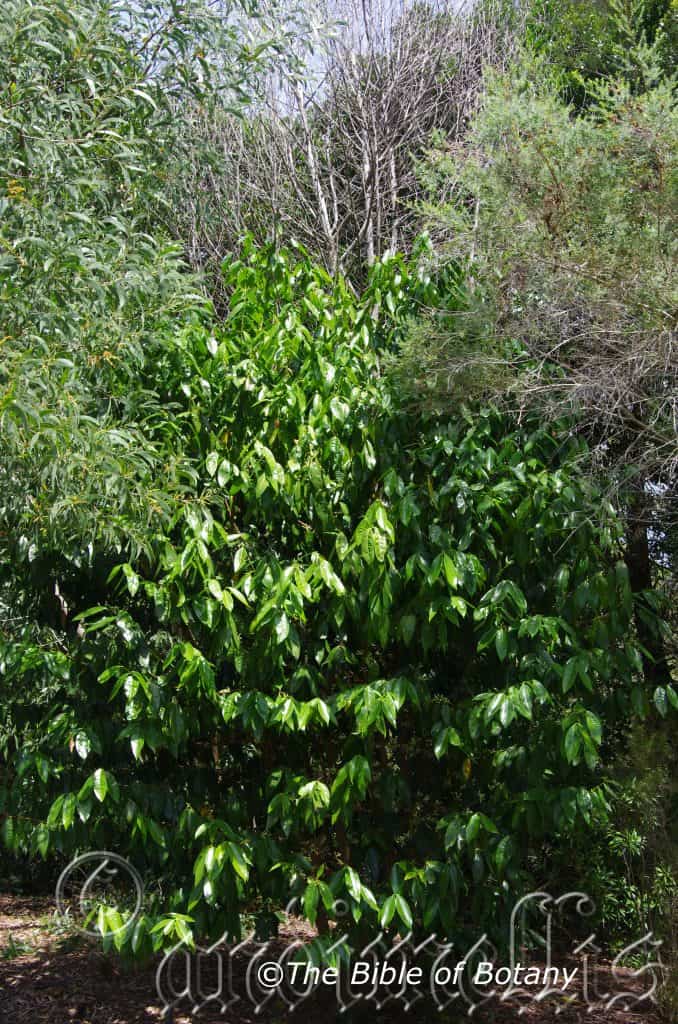
NCBG Coffs Harbour NSW
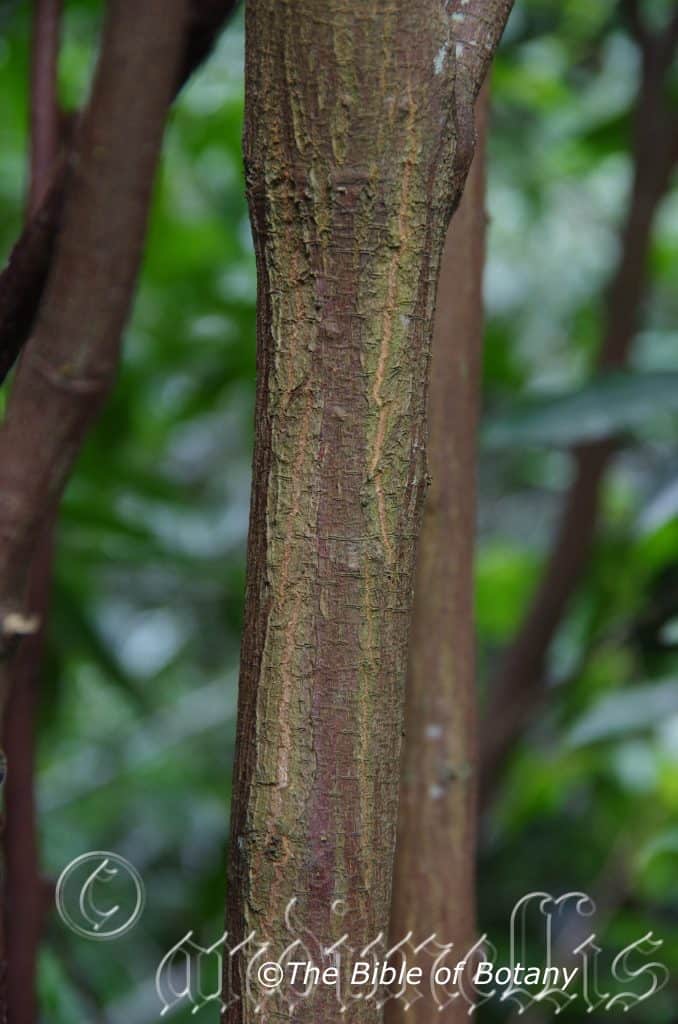
NCBG Coffs Harbour NSW
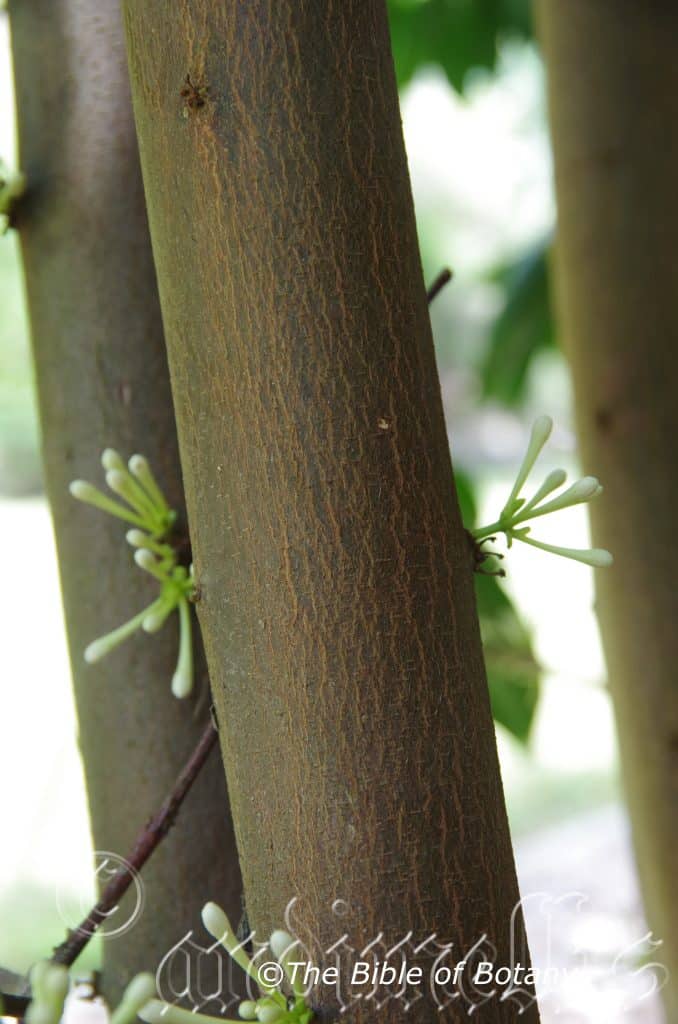
NCBG Coffs Harbour NSW

NCBG Coffs Harbour NSW

NCBG Coffs Harbour NSW
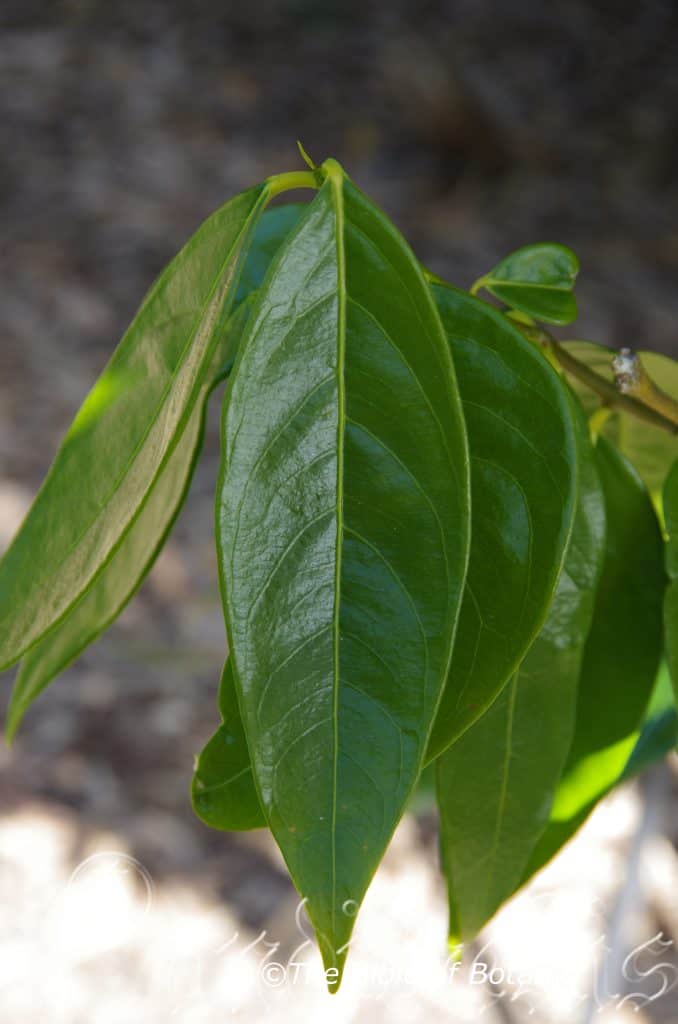
NCBG Coffs Harbour NSW
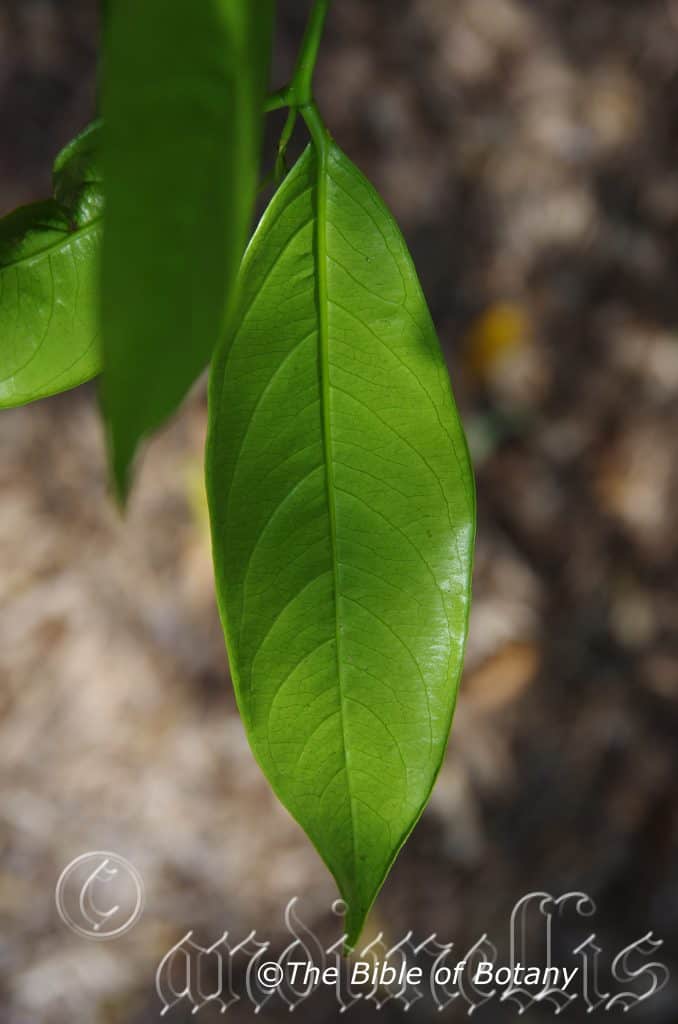
NCBG Coffs Harbour NSW
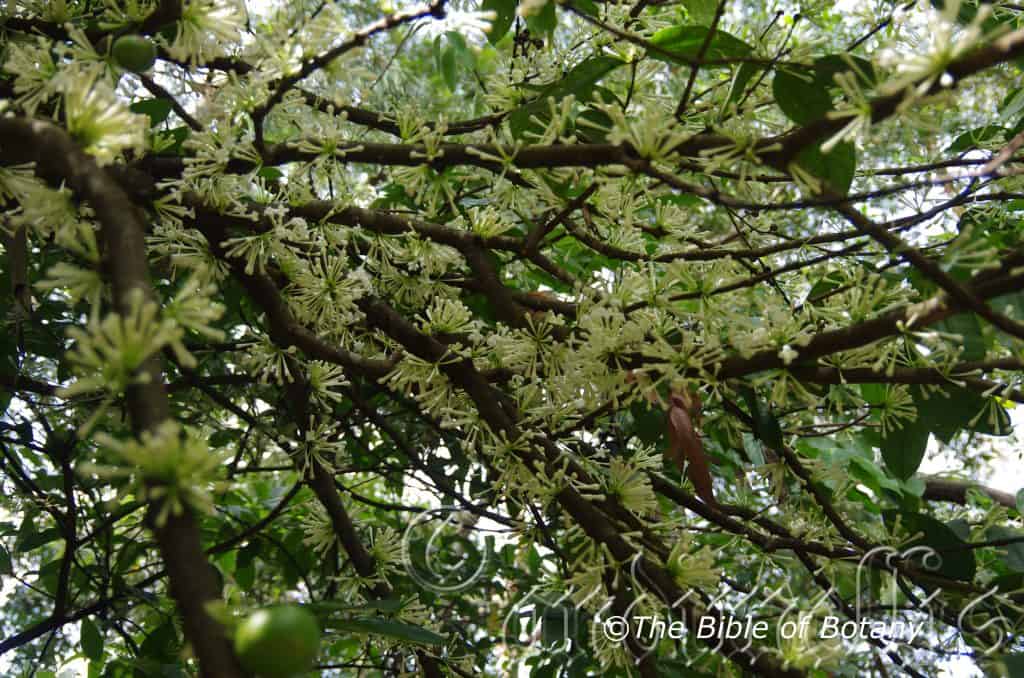
NCBG Coffs Harbour NSW
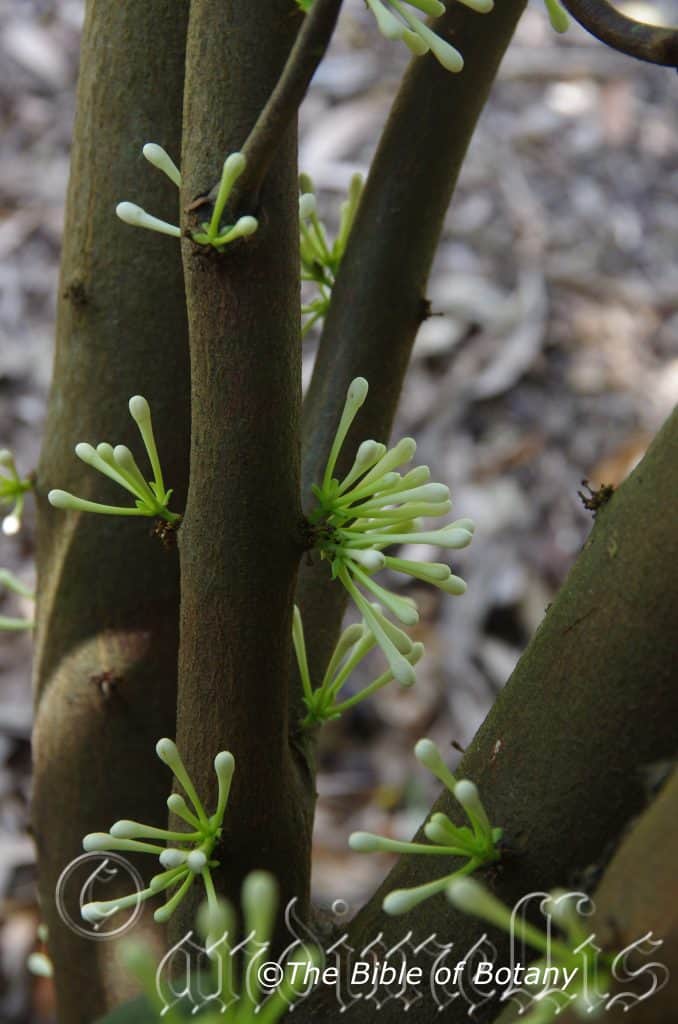
NCBG Coffs Harbour NSW
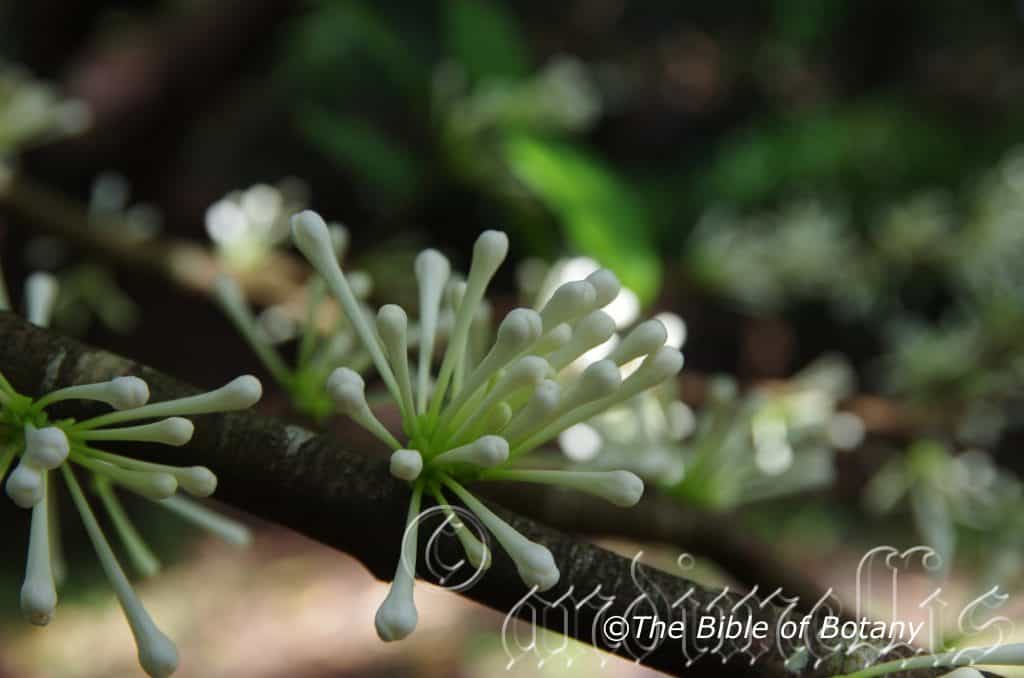
NCBG Coffs Harbour NSW
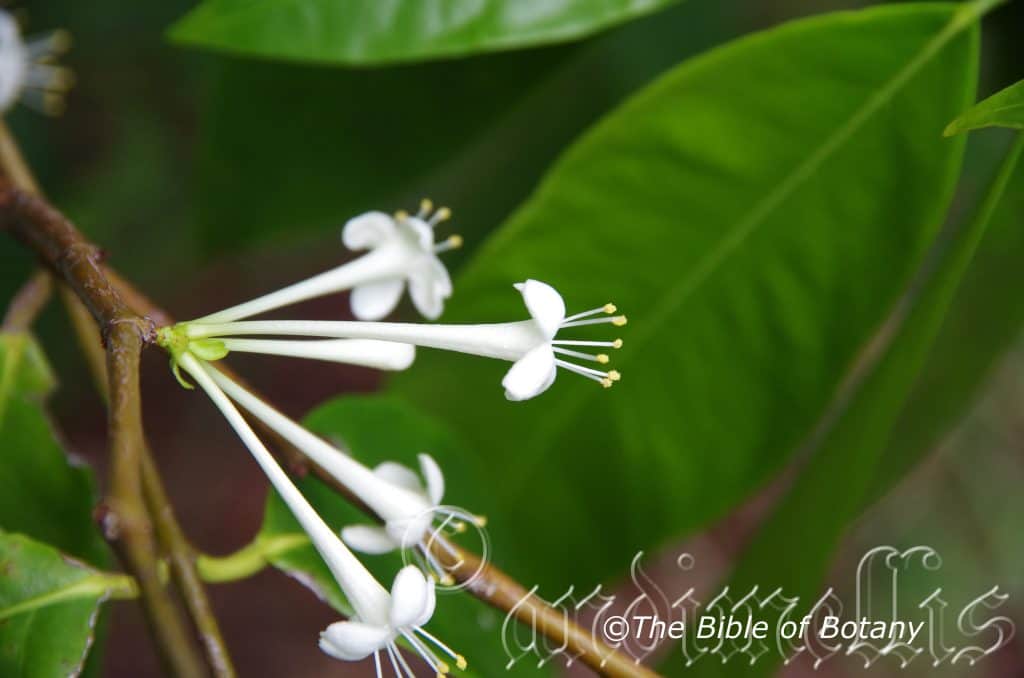
Mount Cootha Botanic Gardens Qld.
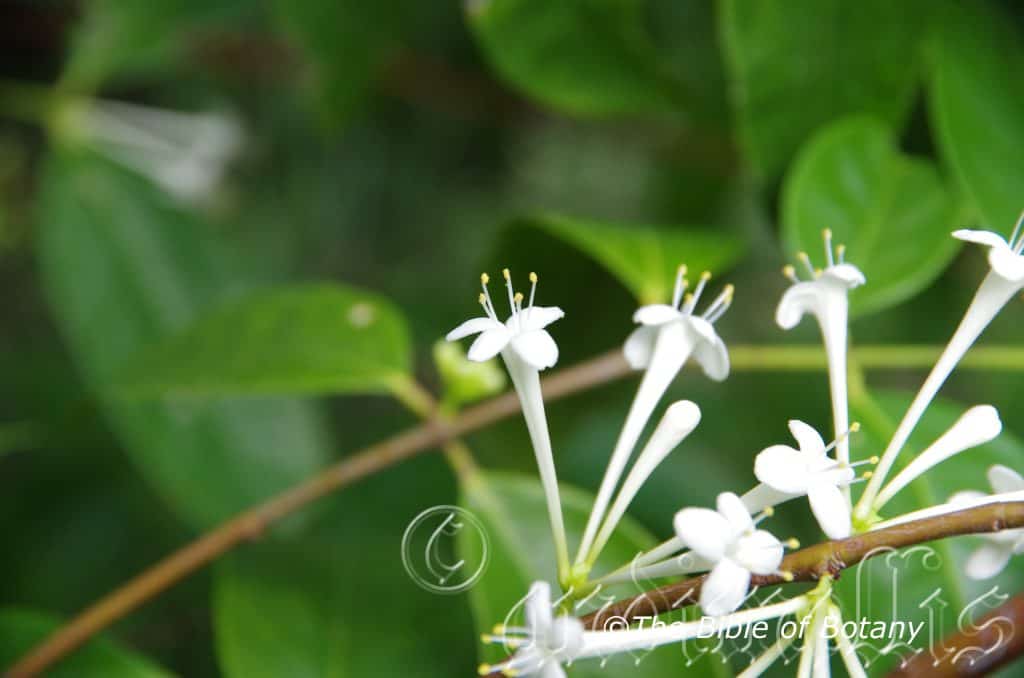
Mount Cootha Botanic Gardens Qld.

Mount Cootha Botanic Gardens Qld.

NCBG Coffs Harbour NSW
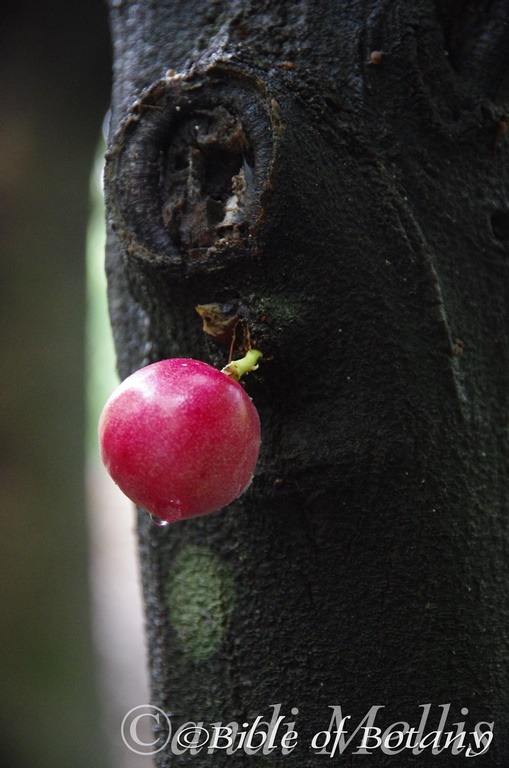
Mount Cootha Botanic Gardens Qld.
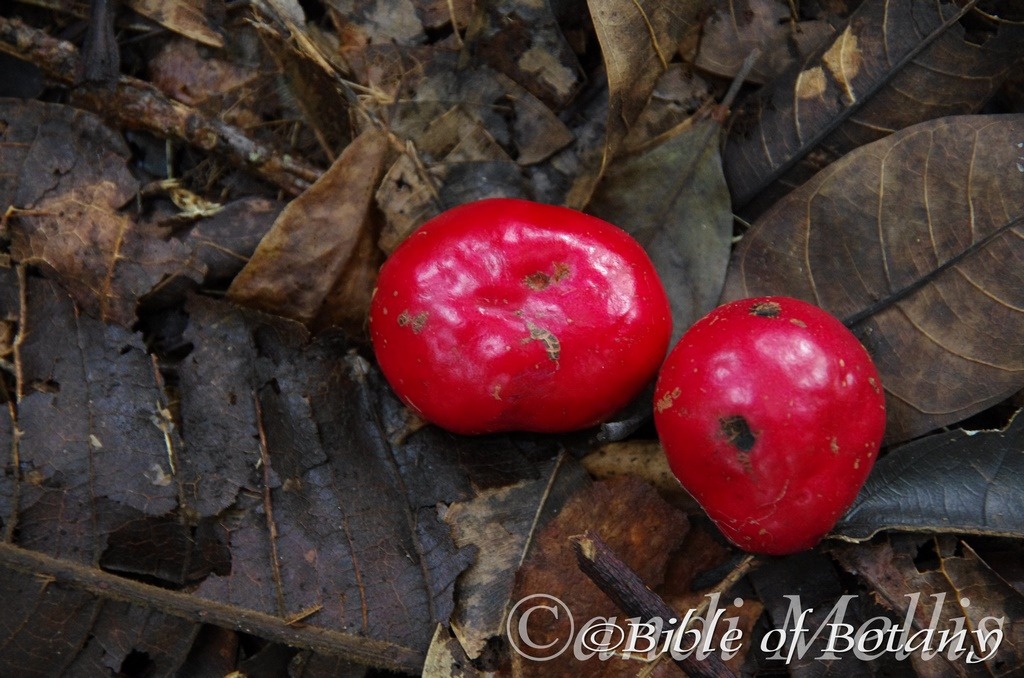
Mount Cootha Botanic Gardens Qld.
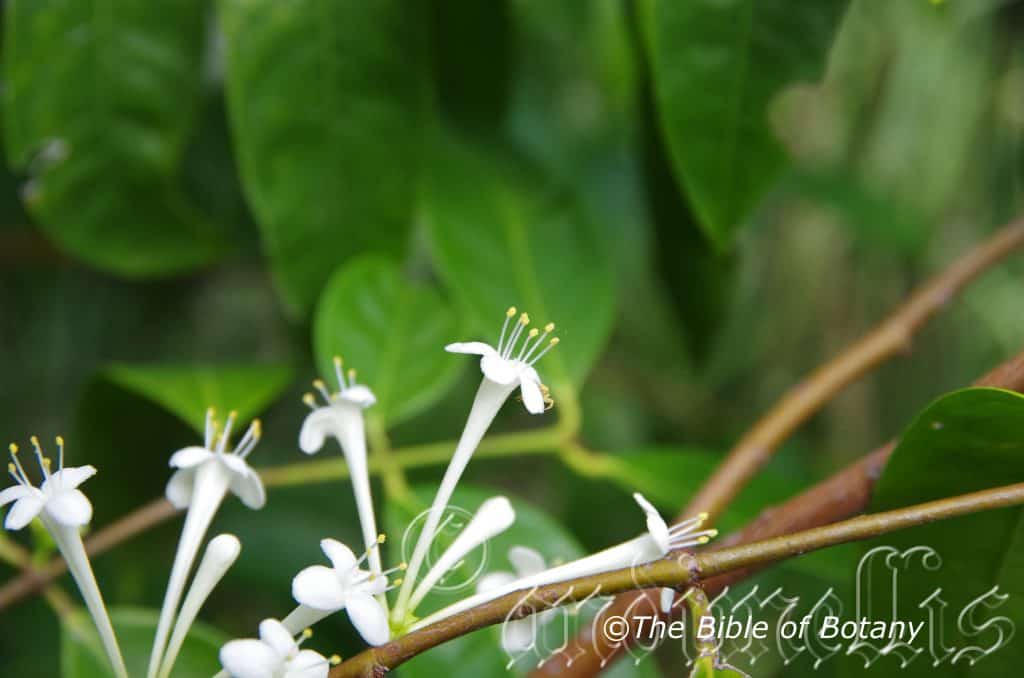
Mount Cootha Botanic Gardens Qld.
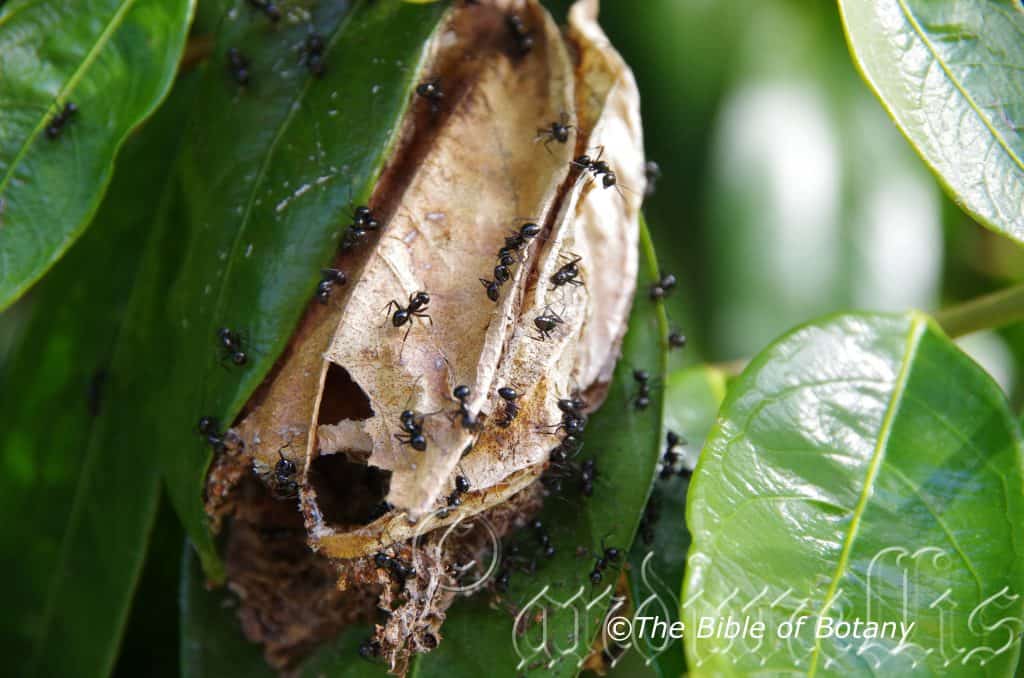
NCBG Coffs Harbour NSW
Phaleria clerodendron
Classification:
Unranked: Eudicots
Unranked: Rosids
Order: Malvales
Family: Thymelaeaceae
Genus: From Phalera, which is Ancient Greek for a bright, shiny metal ornament worn on the chest of men or to adorn the bridals of horses. It refers to the beauty of the flowers or fruits, which have great beauty worthy to adorn the tables of high officials.
Specie: From Kleros, which is Ancient Greek for a chance or fate or the clergy as a whole and Déndron, which is Ancient Greek for a tree. It refers to the flowers, which superficially resemble the flowers of the Clerodendron genus.
Sub specie:
Common Name: Pink Phebalium.
Distribution:
Phaleria clerodendron is found south from the Shipton logging reserve to Smoko Creek in far north eastern Queensland. It is found on and east of the Great Dividing Range.
https://avh.ala.org.au/occurrences/search?taxa=Phaleria+clerodendron#tab_mapView
Habitat Aspect Climate:
Phaleria clerodendron prefers dappled shade to full sun. It grows in low land and upland well developed rainforests. The altitude ranges from 5 meters ASL to 900 meters ASL.
The temperatures range from minus 3 degrees in July to 40 degrees in January.
The rainfall ranges from lows of 2200mm to 3200mm average per annum.
Soil requirements:
Phaleria clerodendron prefers better quality soils that are deep sandy loams to light fatty sandy clays. The soils are usually derived from decomposed granite, black basalt or brown basalt. The soils pH ranges from 5pH to 7pH. It does not tolerate water logged soils. Non saline soils to moderately saline soils are tolerated.
Height & Spread:
Wild Plants:1m to 3m by 1.5m to 2m
Characteristics:
Phaleria clerodendron grows as an erect, small multi stemmed, open shrub. The branches and trunk are various shades of brown with longitudinal fissures and fibrous, while the stems are deep green and glabrous.
The opposite to sub opposite elliptic leaves of Phaleria clerodendron measure 95mm to 180mm in length by 30mm to 70mm in width. The terete, glabrous, petioles measure 6mm to 10mm in length. The bases are cuneate, while the apexes are acuminate. The discolourous laminas are deep glossy green and glabrous on the upper laminas while the lower laminas are paler. The mid vein is slightly prominent on the upper lamina and strongly prominent on the lower lamina. The leaves curve upwards from the mid vein to the margins, which are entire.
Inflorescences of Phaleria clerodendron are born cauliforously, in small clusters on short peduncle of usually 4 to 6 individual flowers. The white perianth tube measures 20mm to 28mm in length, while the 5 recurve obtuse lobes measure 4mm to 6mm in length.
The pale green deltoid to lanceolate stipules measure 2mm to 3.5mm in length. The pedicel measure 2mm to 2.5mm in length. The white perianth tube measures 20mm to 28mm in length, while the 5 recurve obtuse lobes are minutely and sparsely covered in ciliate hairs and measure 4mm to 6mm in length.
The 6 or 8 slender, white filaments are in 2 whirls of 3 or 4 one above the other on the perianth tube. The upper whorl is opposite the lobes. The filaments are exserted by 3mm to 4.5mm, while the pale yellow anthers are dorsifixed.
The capitate stigma is thicker than the style. In its natural habitat the flowers can appear all year however further south they appear throughout the warmer months.
The globular or depressed globular, sometimes laterally compressed fruits measure 25mm to 40mm in length by 35mm to 50mm in diameter. The endocarp is somewhat fibrous, while the variable seeds measure 15mm to 20mm in length by 12mm to 18mm in width.
Wildlife:
Phaleria clerodendron’s wildlife is unknown to the author.
Cultivation:
Phaleria clerodendron is a magnificent medium rounded, shrub or small tree that deserves to be more commonly cultivated than it is. The beautifully perfumed white flowers are produced on the main branches and stems are then followed by the large red attractive berries.
“There is one rainforest plant from northern Australia every coastal garden should grow: Phaleria clerodendron, the scented daphne. This compact tree can be grown in a coastal garden at least as far south as Sydney and it will fill a garden with fragrant flowers up to three times as year.” Jerry Coleby-Williams.
I agree with Jerry 100mm on this magnificent Australian Native. It is ideal in adjacent to a small rainforest garden close to the path so that its exquisite flowers adorning the trunk and branches can be viewed and the fragrance; reminiscent of pina colada, can be inhaled regularly when in flower. In cultivation it grows from 3 meters to 4 meters in height by 2 meters to 3 meters in diameter making it an ideal size even for the small garden.
It grows exceptionally well on better quality soils that have liberal applications of leaf litter. It does not accept overhead sun but prefers fairly deep shade as is found on the rainforest floor or early morning and late afternoon sun. If this is met it can cope with temperatures as low as 3 degrees and up to 38 degrees. It can be tipped pruned to encourage a bushier or a more compact shrub. Do not prune older wood as this is where the flowers are produced and a loss of flowering will occur for at least one or two seasons.
Phaleria clerodendron would make outstanding contribution to a large, moist, shaded, heath garden. Here it can be used as the taller growing plant scattered throughout the heath scene. A heath garden is flat which will see Phaleria clerodendron stand out with its height, scented flowers and small rounded canopy. Plants should be planted close together and be short so you can see over the tallest ones with the exception of the Phaleria clerodendron.
In a very formal garden a lot of procumbent plants like Persicaria orientalis or Pelargonium australis, Hibbertia diffusa would really show it off especially if its back is against the wall. Mixing it with other smaller shrubs so none of them dominate the scene but blend in to give a mosaic of foliage colours below its multiple stems could really steal the show in just a few short years. Here I immediately think of Xerochrysum bracteatum, Xerochrysum viscosum or Grevillea thelemanniana for two great contrasting foliage.
It can be used to great affect by planting a meandering row stretching back from the path like a river. Plant either side with shorter plants with large deep green leaves or use red or blue flowers for a great contrast. In this scene you may have to keep the shorter plants pruned below 1 meter for the best affect.
The concepts here are to ensure that the whole plant is on display from most sections of the garden as the flowers are a real bonus.
Propagation:
Seeds: The seeds of Phaleria clerodendron can be moved easily from the plants as they dry. Once Phaleria clerodendron has finished flowering and the fruits have swollen place an old sheet below the plants and keep a close eye on it. Peg it down so it doesn’t blow around. When the seeds start to disperse, it can be all over in one day; especially if the weather turns hot, with the seeds being scatted on the ground. Clean the rubbish off and sieve the material for the seeds.
The seeds need to be treated by rubbing between fine sandpaper. Another method is to drop them into hot water and allow it to cool. I have also laid the rubbish out at the time of collecting and burnt it with the seeds still amongst the rubbish. No one method has proven better than the other, with all producing erratic results but better than if I did not treat the seeds.
Sow freshly treated seeds directly into a seed raising mix, keeping them moist not wet. When the seedlings are 20 to 25 mm tall, prick them out and plant them into 50mm native tubes using a good organic mix.
As the seedlings roots ach the bottom of the tubes plant them out into their permanent position. Do not delay.
Cuttings: Fortunately Phaleria clerodendron cuttings are relatively easy to strike. Use 150mm to 250mm long cuttings from the previous season’s growth. Take them in warmer months of the year. Remove half the leaves if any from the bottom section being careful not to tear the bark.
1 Prepare the cutting mix by adding two thirds sharp clean river sand, one third peat or one third perlite. These ingredients must be sterilized,
2 Select good material from non diseased plants,
3 Select semi green stems for cuttings. Look for a stem with two or three nodes,
4 Place the cutting on a flat, hard surface, and make a clean cut down one side of the cutting at the base for 10mm with a sharp sterile knife or razor blade. – This scarification of the node will increase the chances of roots emerging from this spot. Now remove all but one or two the leaves, leaving the apex leaves in tact. If the leaves are very large in proportion to the stem, cut off the apical halves.
5 Rooting hormone is not required,
6 Use a small dipple stick or old pencil to poke a hole into the soilless potting mix. Ensure the hole is slightly larger than the stem diameter and be careful damage the base,
7 I like to place the tubes in bucket with holes drilled in the bottom to allow excess water to drain out. A plastic bag that fits over the bucket is ideal to help maintain temperature and moisture if a hot house is not available. Place in a semi shaded, warm position like under 50mm shade cloth.
8 When the cuttings have struck, open the bag to allow air circulation for a few days to a week,
9 Once hardened off remove the cuttings from the bag and allow to further hardening for a few more days to a week,
10 Transplant into a good potting mix to grow on.
Fertilize using seaweed, fish emulsion or organic chicken pellets soaked in water on an alternate basis. Fertilize every two months until the plants are established then twice annually in early September or March to maintain health, vitality and better flowering.
Further Comments from Readers:
“Hi reader, it seems you use The Bible of Botany a lot. That’s great as we have great pleasure in bringing it to you! It’s a little awkward for us to ask, but our first aim is to purchase land approximately 1,600 hectares to link several parcels of N.P. into one at The Pinnacles NSW Australia, but we need your help. We’re not salespeople. We’re amateur botanists who have dedicated over 30 years to saving the environment in a practical way. We depend on donations to reach our goal. If you donate just $5, the price of your coffee this Sunday, We can help to keep the planet alive in a real way and continue to bring you regular updates and features on Australian plants all in one Botanical Bible. Any support is greatly appreciated. Thank you.”
In the spirit of reconciliation we acknowledge the Bundjalung, Gumbaynggirr and Yaegl and all aboriginal nations throughout Australia and their connections to land, sea and community. We pay our respect to their Elders past, present and future for the pleasures we have gained.

Wombat Creek Conservation Park NSW

Wombat Creek Conservation Park NSW
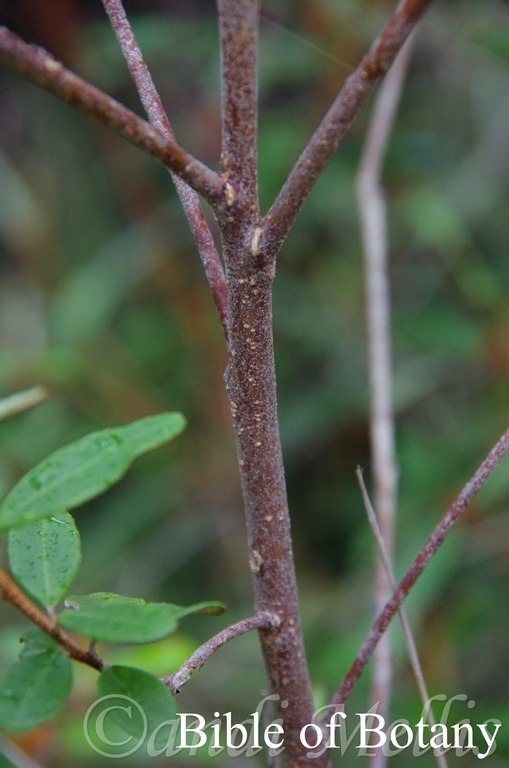
Wombat Creek Conservation Park NSW

Wombat Creek Conservation Park NSW
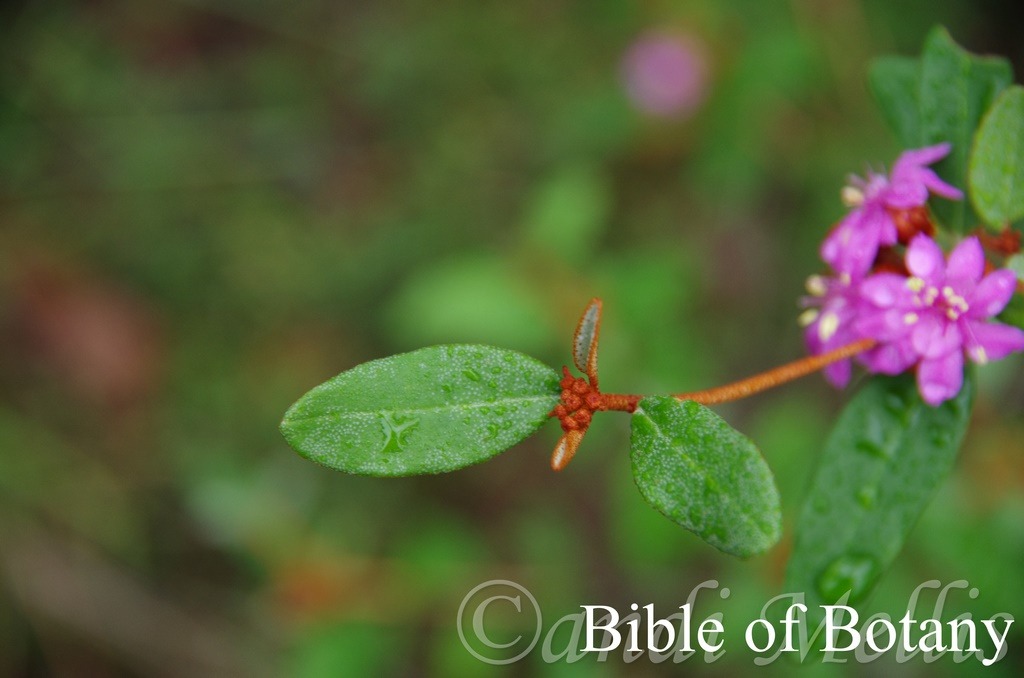
Wombat Creek Conservation Park NSW
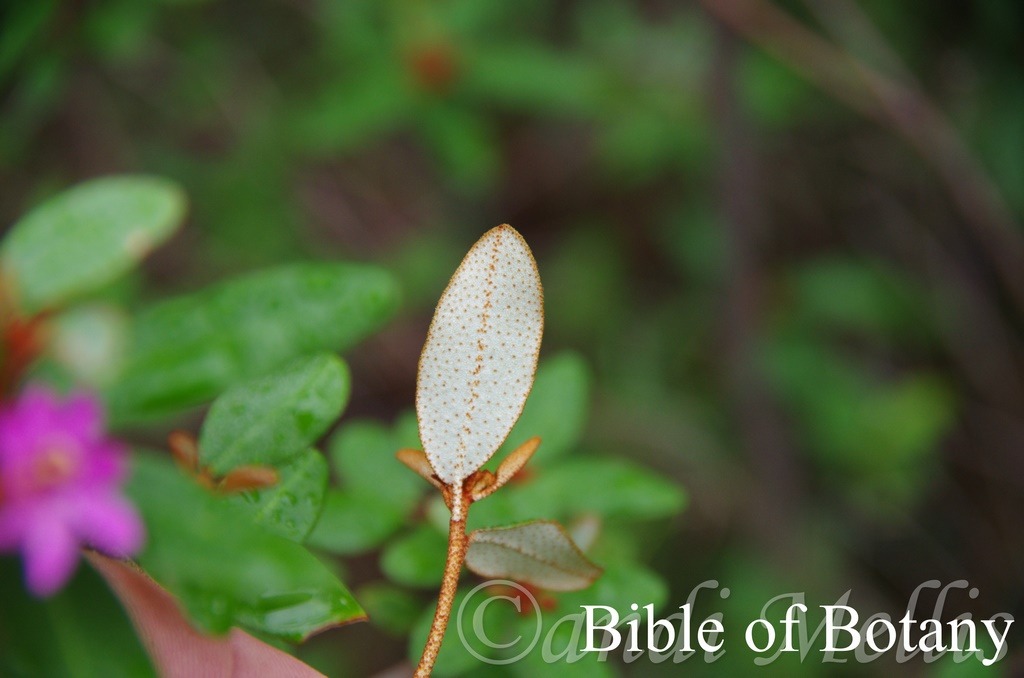
NCBG Coffs Harbour NSW

NCBG Coffs Harbour NSW

NCBG Coffs Harbour NSW

NCBG Coffs Harbour NSW
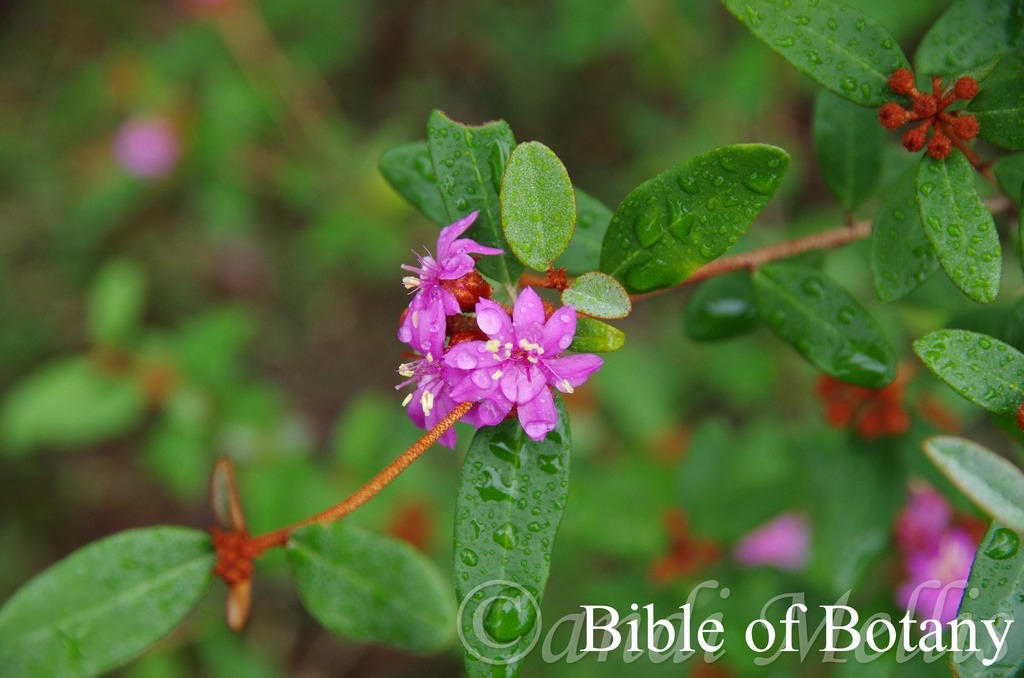
Wombat Creek Conservation Park NSW
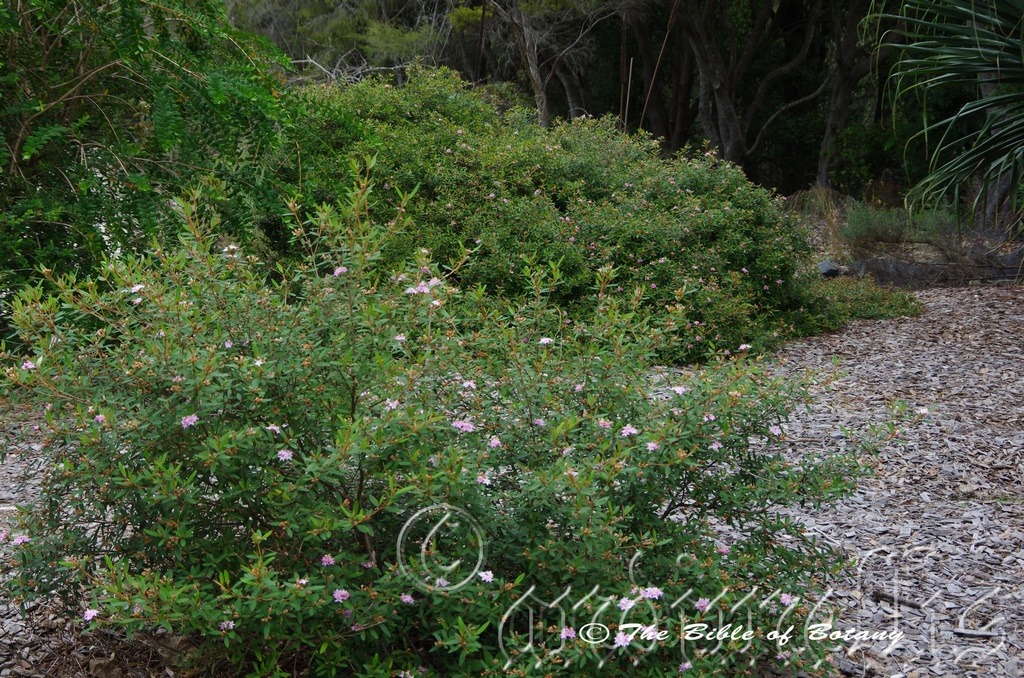
NCBG Coffs Harbour NSW
Phebalium nottii
Classification:
Unranked: Eudicots
Unranked: Rosids
Order: Sapindales
Family: Rutaceae
Genus: From Phebaleos, which is Ancient Greek for a fig. The actual resemblance is unclear however it may refer to ancient Greek poets using the word instead of the myrtle when reciting.
Specie: Is probably named in honour of Mrs. I Nott who collected for Mueller, between the years of 1864-1868 in the Maldon region in Victoria.
Sub specie:
Common Name: Pink Phebalium.
Distribution:
Phebalium nottii is found between Mount Walsh near Biggreendon, the Newcastle Range and the Chesterton Range National Park in Queensland and south to Whiteman Creek New South Wales. There is a disjunct population further north in the Byfield National Park and further south bounded by Narrabri, Gilgandra, Hervey Ranges and Coonabarabran.
https://avh.ala.org.au/occurrences/search?taxa=Phebalium+nottii#tab_mapView
Habitat Aspect Climate:
Phebalium nottii prefers dappled shade to full sun. It grows in dry sclerophyll forests. The altitude ranges from 33 meters ASL to 480 meters ASL.
The temperatures range from minus 3 degrees in July to 40 degrees in January.
The rainfall ranges from lows of 400mm to 1170mm average per annum.
Soil requirements:
Phebalium nottii prefers soils that are deep sandy loams to light fatty sandy clays. The soils are usually derived from partially decomposed sandstone or decomposed sandstones close to the parent rock. The soils pH ranges from 5pH to 7pH. It does not tolerate water logged soils. Non saline soils to moderately saline soils are tolerated.
Height & Spread:
Wild Plants:1m to 3m by 1.5m to 2m
Characteristics:
Phebalium nottii grows as an erect, small multi stemmed, open shrub. The stems are deep grey to deep grey-brown with silvery or rusty scales. The new shoots and juvenile stems are bluish-green.
The alternate oblong-elliptic to elliptic leaves of Phebalium nottii measure 20mm to 50mm in length by 5mm to 13mm in width. The appressed petioles are moderately to densely covered in silvery or rusty scales and measure 2mm to 4mm in length. The bases taper to the petiole while the apexes are obtuse or bluntly acuminate. The discolourous laminas are deep green and glabrous on the upper laminas while the lower laminas are silvery and usually moderately to densely covered in rusty stellate scales or at times silvery stellate scales. The laminas are areolate from the mid vein to the margins forming a channel along the mid vein on the upper surface and decurve downwards right at the apexes. The leaves decurve strongly at the petioles. The margins are entire. The mid vein is strongly prominent on the lower lamina.
The inflorescences are born singularly or in small clusters of 2 to 6 individual flowers from the terminals or at times from the apical leaf axils. The pedicels measure 2mm to 5mm in length. The cupuliform calyx has 5 to 8 fine teeth and measure 3mm to 5mm in length including the lobes. The calyxes enlarge in fruit and are moderately to densely covered in silvery or rusty stellate scales externally. The 5 pastel pink to deep pink petals are clawed and are moderately to densely covered in rusty stellate scales externally from the base to the base of the claw and a glabrous internally. The petals measure 8mm to 12mm in length.
The 10 stamens are clustered on one side of the ovary. The white, filiform filaments are irregular in length and measure 5.5mm to 9mm in length. The pale yellow oblong, adnately fixed anthers measure 2.6mm to 4mm in length.
The 5 carpels are fused at the base. The terete, tapering style sits on the opposite side to the stamens and has a mid-pink spherical stigma. The flowers appear from late February to August.
Phebalium nottii’s fruits are swollen erect cocci which are enclosed in the calyxes. The cocci measure 5mm to 6mm in length by 4mm to 5mm in width near the base. The cocci are moderately to densely covered in rusty stellate scales.
Wildlife:
Phebalium nottii’s wildlife is unknown to the author.
Cultivation:
Phebalium nottii is a magnificent small rounded, open shrub that deserves a place in every temperate, semi-arid or exotic garden. It is ideal in almost every setting near ponds, at the edge of a rain forest in court yards, around swimming pools, in rockeries formal landscapes heaths or bush settings. In cultivation it grows from 1.5 meters to 2.5 meters in height by 1.5 meters to 2.5 meters in diameter wwhen grown in the open.
It grows exceptionally well on lighter soils When deep leaf litter keeps the soil cool and moisture at an even level. These requirements are necessary and must be met for successful growth and flowering. If this is met it can cope with temperatures as low as minus 6 degrees and up to 38 degrees. It can be tipped pruned to encourage a bushier or a more compact shrub.
It often reaches its full potential in just 3 years and flower from the second year from seed. Plants will live naturally for 8 to 12 years so should be placed every 5 to 7 years to maintain continuity of flowering.
Be imaginative when planting in mass. Use the plants in different configurations and use curves. Light pruning after flowering or tip pruning will enhance the shrubs bushiness and provide longer stronger flower stems in the following season.
Phebalium nottii would make outstanding contribution to a large moist heath garden. Here it can be used as the taller growing plant scattered throughout the heath scene. When you design a flat heath garden which it is well suited don’t use contours to display the plants as heath lands are almost always flat or have a slight rise. Plants must be planted close together and be short so you can see over the tallest ones with the exception of one or two plants at the most. These will be feature plants. The idea is to achieve a feeling of expansive flatness. This can be achieved with using the green linear leaves and having them contrasting with larger deep green or soft grey to glaucous coloured foliages. Use a lot of procumbent plants like Persicaria orientalis or Pelargonium australis. Mix them with other smaller shrubs so none of them dominate the scene but blend in to give a mosaic of foliage colours that you oversee. Here I immediately think of Actinotis helianthi, Xerochrysum bracteatum, Xerochrysum viscosum or Grevillea thelemanniana for two great contrasting foliages.
They can be used to great affect by planting a meandering row stretching back from the path like a river. Plant either side with slightly taller plants with large deep green leaves and red or white flowers for a great contrast. In this scene you may have to keep them pruned below 1 meter for the best affect or plant them in the background where less maintenance is quid.
Ensure that the whole plant or at least most of it is on display from most sections of the garden as the flowers are a real bonus.
When it is in flower these plants will catch your attention and the viewer will be transfixed on the display rather than watching the path. Plant them at 0.8 meter to 1 meter centers.
Propagation:
Seeds: The seeds can be removed easily from the plants as they dry. Once Phebalium nottii has finished flowering and the fruits have swollen place an old sheet below the plants and keep a close eye on it. Peg it down so it doesn’t blow around. When the seeds start to disperse, it can be all over in one day; especially if the weather turns hot, with the seeds being scatted on the ground. Clean the rubbish off and sieve the material for the seeds.
The seeds need to be treated by rubbing between fine sandpaper. Another method is to drop them into hot water and allow it to cool. I have also laid the rubbish out at the time of collecting and burnt it with the seeds still amongst the rubbish. No one method has proven better than the other, with all producing erratic results but better than if I did not treat the seeds.
Sow freshly treated seeds directly into a seed raising mix, keeping them moist not wet. When the seedlings are 20 to 25 mm tall, prick them out and plant them into 50mm native tubes using a good organic mix.
As the seedlings roots ach the bottom of the tubes plant them out into their permanent position. Do not delay.
Cuttings: Phebalium nottii cuttings not the easiest to strike from cuttings. Use 80mm to 120mm long tip cuttings or lateral shoots from the present season’s growth. Take them in warmer months of the year. Remove half the leaves from the bottom section being careful not to tear the bark.
1 Prepare the cutting mix by adding two thirds sharp clean river sand, one third peat or one third perlite. These ingredients must be sterilized,
2 Select good material from non diseased plants,
3 Select semi green stems for cuttings. Look for a stem with two or three nodes,
4 Place the cutting on a flat, hard surface, and make a clean cut down one side of the cutting at the base for 10mm with a sharp sterile knife or razor blade. – This scarification of the node will increase the chances of roots emerging from this spot. Now remove all but one or two the leaves, leaving the apex leaves in tact. If the leaves are very large in proportion to the stem, cut off the apical halves.
5 Fill a saucer with water, and place a little medium strength rooting hormone into another container like a milk bottle top. Dip the node end of the cutting into the water and then into the rooting hormone. Tap off any excess hormone,
6 Use a small dipple stick or old pencil to poke a hole into the soilless potting mix. Ensure the hole is slightly larger than the stem diameter and be careful not to wipe the rooting hormone off the cuttings base. Place 2 to 4 cuttings in each of the 50mm native tubes,
7 I like to place the tubes in bucket with holes drilled in the bottom to allow excess water to drain out. A plastic bag that fits over the bucket is ideal to help maintain temperature and moisture. Place in a semi shaded, warm position like under 50mm shade cloth.
8 When the cuttings have struck, open the bag to allow air circulation for a few days to a week,
9 Once hardened off remove the cuttings from the bag and allow to further hardening for a few more days to a week,
10 Transplant into a good potting mix to grow on.
Fertilize using seaweed, fish emulsion or organic chicken pellets soaked in water on an alternate basis. Fertilize every two months until the plants are established then twice annually in early September or March to maintain health, vitality and better flowering.
Further Comments from Readers:
“Hi reader, it seems you use The Bible of Botany a lot. That’s great as we have great pleasure in bringing it to you! It’s a little awkward for us to ask, but our first aim is to purchase land approximately 1,600 hectares to link several parcels of N.P. into one at The Pinnacles NSW Australia, but we need your help. We’re not salespeople. We’re amateur botanists who have dedicated over 30 years to saving the environment in a practical way. We depend on donations to reach our goal. If you donate just $5, the price of your coffee this Sunday, We can help to keep the planet alive in a real way and continue to bring you regular updates and features on Australian plants all in one Botanical Bible. Any support is greatly appreciated. Thank you.”
In the spirit of reconciliation we acknowledge the Bundjalung, Gumbaynggirr and Yaegl and all aboriginal nations throughout Australia and their connections to land, sea and community. We pay our respect to their Elders past, present and future for the pleasures we have gained.
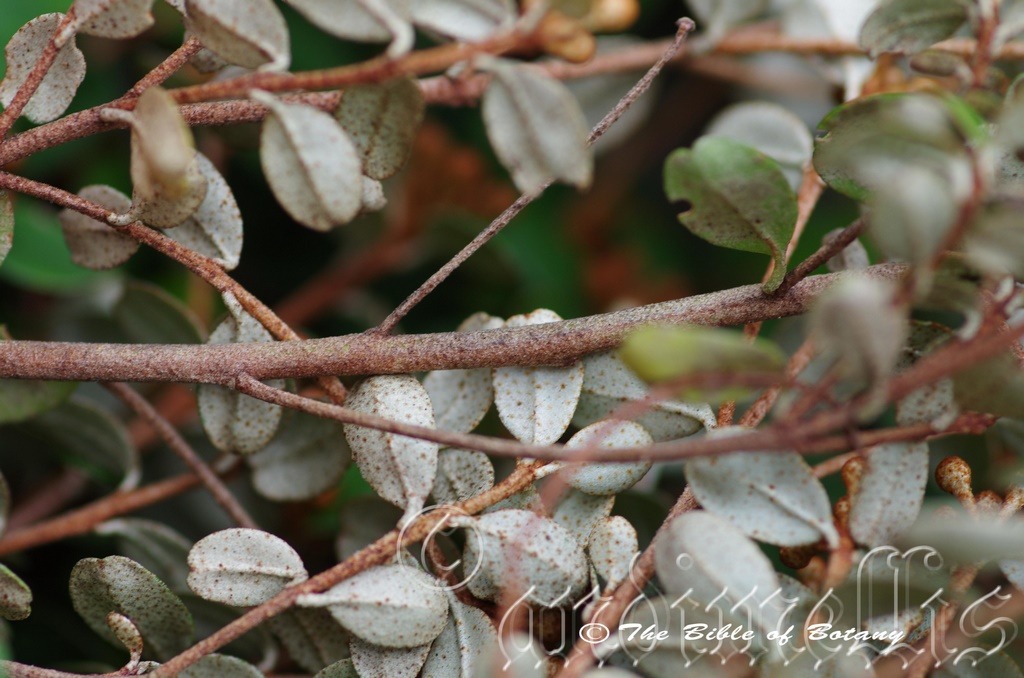
NCBG Coffs Harbour NSW

NCBG Coffs Harbour NSW
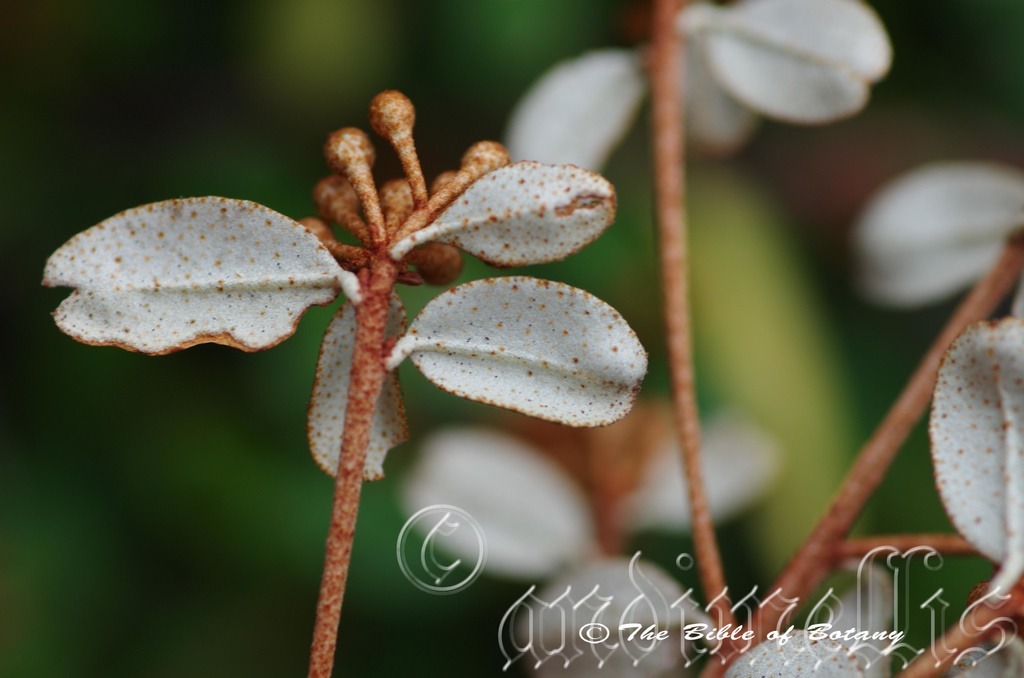
NCBG Coffs Harbour NSW

NCBG Coffs Harbour NSW
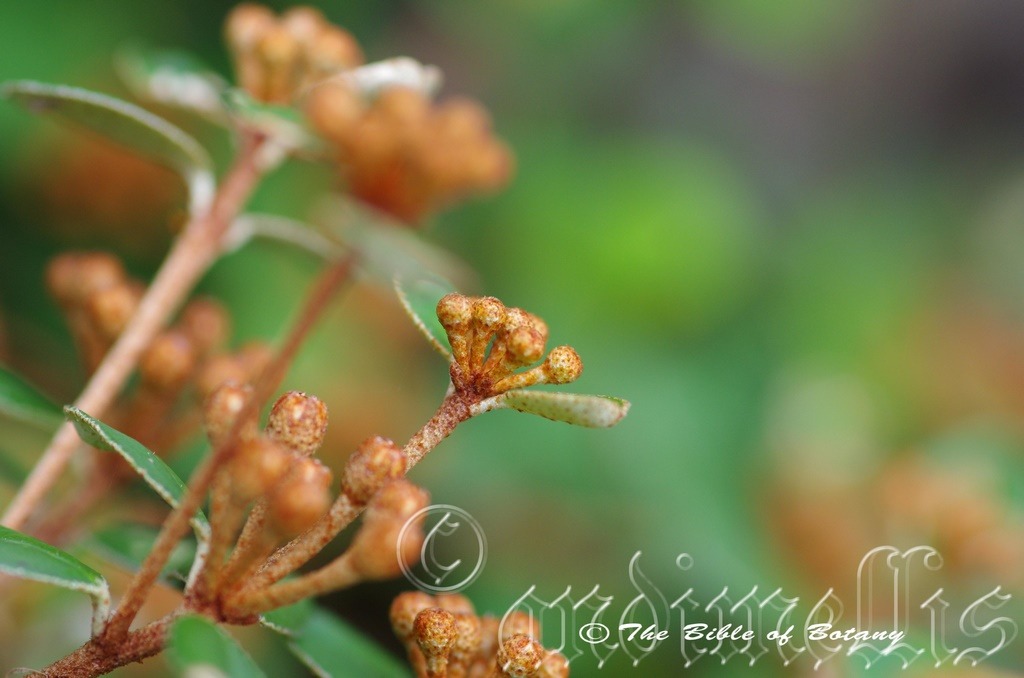
NCBG Coffs Harbour NSW
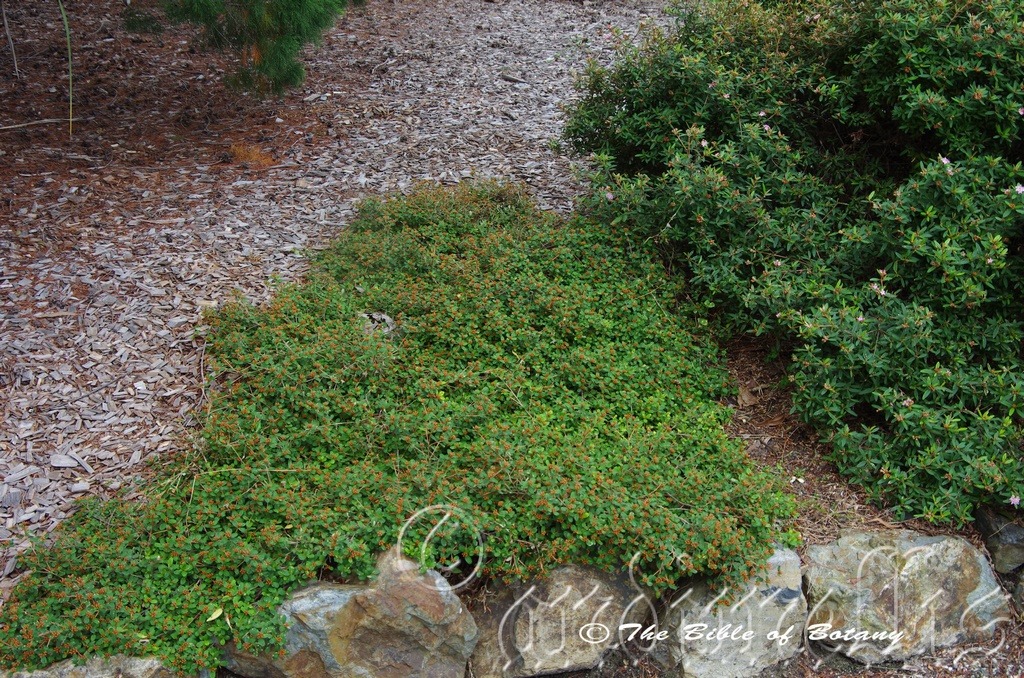
NCBG Coffs Harbour NSW
Phebalium squamulosum
Classification:
Unranked: Eudicots
Unranked: Rosids
Order: Sapindales
Family: Rutaceae
Genus: FromPhebaleos, which is Ancient Greek for a fig. The actual resemblance is unclear however it may refer to ancient Greek poets using the word instead of the myrtle when reciting.
Specie: FromSqu?ma, which is Latin for a scale or to be scale like. It refers to plants, which have scales are and usually more scaly than other species in the genus.
Sub specie: Phebalium squamulosum subsp. alpinum. FromKilentia, which is Ancient Greek for slim or slender or Gracilis, which is Latin for slender and graceful. It refers to flower spikes, which are rather slender and graceful.
Sub specie: Phebalium squamulosum subsp. argenteum. FromAárgillos, which is Greek and later Latin for silver. It refers to structures or organs, which are silvery in colour.
Sub specie: Phebalium squamulosum subsp. coriaceum. From Coriceoum, which is Latin for like leather or leathery. It refers to leaves, which are thicker and more leathery than the other sub species.
Sub specie: Phebalium squamulosum subsp. gracile. From Kilentia, which is Ancient Greek for slim or slender or Gracilis, which is Latin for slender and graceful. It refers to flower spikes, which are rather slender and graceful.
Sub specie: Phebalium squamulosum subsp. lineare. From Linearis, which is Latin for straight lines. It usually refers to leaves, which are narrower and When the veins appear in straight lines compared to other species or subspecies in the genus.
Sub specie: Phebalium squamulosum subsp. longifolia. FromLongitia/Longus, which is Latin for long in length and Folium, which is Latin for foliage. It refers to leaves, which are longer and more strap like than other sub species in the genus or species.
Sub specie: Phebalium squamulosum subsp. ozothamnoides. FromOzein, which is Ancient Greek for to have a smell, Thamnos, which is Ancient Greek for a shrub and Eîdos/Oides, which is Ancient Greek for alike or similar to. It refers to the leaves having a strong but pleasant smell similar to that of the Ozothamnus genus.
Sub specie: Phebalium squamulosum subsp. parvifolium. FromPaûros, which is Ancient Greek or Parvum, which is Latin for small and Folium, which is Latin for a foliage. It refers to leaves, which are very small.
Sub specie: Phebalium squamulosum subsp. squamulosum. From Squ?ma, which is Latin for a scale or to be scale like. It refers to plants, which have scales are and usually more scaly than other species in the genus.
Sub specie: Phebalium squamulosum subsp. verrucosum. FromVerracose, which is Latin for warty or ulcerated lumps. It refers to structures or organs, which have swellings or enlargements on the surface.
Common Name: Scaly Phebalium or Alpine Phebalium.
Distribution:
Phebalium squamulosum subsp. alpinum is found from Canberra in the ACT south to Rosedale in Victoria. It is found on the Great Dividing Range.
Phebalium squamulosum subsp. argenteum is found from the Great Lakes in southern New South Wales south to the eastern Bluffs of the Snowy River. It is found east of the Great Dividing Range.
Phebalium squamulosum subsp. coriaceum is found from Torrington south to Dubbo in New South Wales on the western slopes of the Great Dividing Range with two disjunct populations further east in the Blue Mountains.
Phebalium squamulosum subsp. gracile is found from Castlevale in central southern Queensland south to Brundah north School in central New South Wales. It is mainly found west of the Great Dividing Range on the western plains.
Phebalium squamulosum subsp. lineare is found north west of Tamworth south to the upper reaches of the Shoal haven River in New South Wales. It is mainly found on the Western plains to the Great Dividing Range.
Phebalium squamulosum subsp. longifolia is found south of Mount Baldy south of Cairns south to Townsville in far north Queensland with two isolated populations near Woombye in southern Queensland and Clouds Creek south of Grafton in northern New South Wales. It is found east of the Great Dividing Range.
squamulosum subsp. ozothamnoides is found east of Inverell on Mount Scott in northern New South Wales south to Cathedral Range State Park in central Victoria. It is found on the Western plains and on the Great Dividing Range.
Phebalium squamulosum subsp. parvifolium is found from Canberra in the ACT south to Rosedale in Victoria. It is found on the Great Dividing Range.
Phebalium squamulosum subsp. squamulosum is found south from Bundaberg in central coastal Queensland to Yarra Junction in southern Victoria on and east of the Great Dividing Range and in several isolated populations further west at Wheeney Creek, near Kurrajong in New South wales and Port MacDonnell in far south eastern South Australia.
Phebalium squamulosum subsp. verrucosum is found in several disjunct populations south from Binderay National Park on the Nymboida River to the Oxley wild River National Park in north eastern New South Wales. It is found on the Great Dividing Range.
https://avh.ala.org.au/occurrences/search?taxa=Phebalium+squamulosum#tab_mapView
Habitat Aspect Climate:
Phebalium squamulosum prefers dappled shade to full sun. It grows on the moist heaths of coastal ranges, Alpine heaths dry open woodland heaths or dry sclerophyll forests. The altitude ranges from 30 meters ASL to 1890 meters ASL usually at higher altitudes.
The temperatures range from minus 8 degrees in July to 38 degrees in January.
The rainfall ranges from lows of 200mm to 2000mm average per annum.
Soil requirements:
Phebalium squamulosum prefer soils that are deep sandy loams to light fatty sandy clays. The soils are usually derived from partially decomposed or decomposed sandstones close to the parent rock or at times fine granites. The soils pH ranges from 5pH to 6pH. It does not tolerate of water logged soils. Non saline soils to moderately saline soils are tolerated.
Height & Spread:
Wild Plants:1m to 7m by 1.5m to 4m.
Characteristics:
Phebalium squamulosum grows as an erect, small dense multi stemmed shrub or a small tree with a dense canopy. The deep grey-brown trunk is smooth or at times lepidote to farinaceous. The stems are mid rusty-brown to deep brown and densely covered in silvery or reddish-brown scales. The new shoots and juvenile stems are bluish-green.
The alternate oblong to oblong-elliptic leaves of Phebalium squamulosum measure 10mm to 60mm in length by 1.5mm to 8mm in width. The appressed petioles are moderately to densely covered in silvery or reddish-brown scales and measure 0.5mm to 1mm in length. The bases taper to the petiole while the apexes are obtuse or bluntly acuminate or obtuse with a mucronate tip. The discolourous laminas are deep green and glabrous on the upper laminas while the lower laminas are silvery and moderately to densely covered in reddish-brown or silvery stellate scales, reddish-brown to silvery stellate and or tomentose hairs. The laminas are strongly areolate from the mid vein to the margins forming a channel along the mid vein and decurve downwards at the margins on the upper surface and curve gently upwards from the base to the apexes. The leaves bend strongly at the petioles while the margins are entire. The mid vein is prominent on the lower lamina.
The inflorescences are born singularly or in small clusters of 2 to 6 individual flowers from the terminals or at times from the apical leaf axils. The pedicels have a minute basal bract and measure 3mm to 8mm in length. The cupuliform calyx has 5 to 8 fine teeth and measure 3mm to 5mm in length including the lobes. The cupuliform or turbinate calyxes enlarge in fruit and are moderately to densely covered in silvery or reddish-brown scales externally. The 5 calyx lobes are usually entire and undulating or rarely finely toothed. The 5 pastel yellow to deep yellow petals are acute at the apexes and are moderately to densely covered in reddish-brown or silvery scales externally and are glabrous internally. The petals measure 2.2mm to 5mm in length.
The 10 stamens are positioned opposite and adjacent to the petals. The white, filiform filaments are dimorphic and measure 2mm to 4.5mm in length. The pale yellow oblong, adnately fixed anthers measure 0.8mm to 1mm in length.
The 5 erect carpels are fused to the side of the ovary. The terete tapering style has a mid-white or pastel yellow spherical stigma. The pistil measures 2mm to 4.5mm in length. The flowers appear from late September to November.
Phebalium squamulosum’s fruits are swollen erect cocci which are enclosed in the calyxes. The cocci measure 3.5mm to 5mm in length by 3.5mm to 5mm in width near the base. The cocci are moderately to densely covered in rusty stellate scales.
Confusing Subspecie Varieties:
Phebalium squamulosum subsp. squamulosum’s leaves are oblong to elliptic or lanceolate and measure 15mm to 50mm in length by 2mm to 10mm in width. The leaf’s apexes are obtuse to acute, truncate or at times retuse. The calyx’s apexes are truncate. The leaves upper laminas are smooth while the lower laminas are covered in rusty scales. The flowers are yellow.
Phebalium squamulosum subsp. argenteum’s leaves are oblong-elliptic, broad elliptic or oblong-obovate with obtuse apexes. The leaves measure 10mm to 35mm in length by 3mm to 10mm in width. The upper laminas are covered in silvery stellate scales when young and glabrous as they age while the lower laminas of the leaves and flowers are covered in silver stellate scales. The mid vein is shallowly depressed. The flowers are yellow.
Phebalium squamulosum subsp. coriaceum’s leaves are broad oblong to elliptic while the apexes are obtuse. The calyxes are prominently undulating. The leaves measure 20mm to 30mm in length or longer by 5mm to 7mm in width. The laminas are smooth mid green above and densely covered in silvery scales on the lower laminas. The flowers are yellow.
Phebalium squamulosum subsp. gracile’s leaves are oblong or narrow elliptic and measure 7mm to 20mm in length by 2mm to 4mm in width. The apexes are obtuse or acute. The upper laminas are smooth and glabrous with a slightly impressed midvein.
Phebalium squamulosum subsp. lineare’s linear leaves measure 10mm to 25mmin length by 1mm to 2mm in width. The leaves are strongly channelled on the upper laminas while the apexes are truncate to obtuse.
Phebalium squamulosum subsp. ozothamnoides’s leaves are oblong-obovate to broad obovate or orbicular and measure 7mm to 11mm in length by 3.5mm to 7mm in width. The margins are entire while the apexes are obtuse. The upper laminas are sparsely covered in rusty stellate scales When young and are glabrous, smooth or slightly scabrous as they mature while the lower laminas are smooth. The midvein is not impressed.
Phebalium squamulosum subsp. parvifolium’s leaves are narrow oblong to almost terete and measure 6mm to 10mm in length by 0.7mm to 1mm in diameter. The stems are covered in glandular lepidote scales. The rounded upper laminas are covered in glandular lepidote lumps and glossy. The mid vein is deeply grooved on the upper laminas while the lower laminas are smooth. The margins are entire or glandular-crenate while the apexes are obtuse.
Phebalium squamulosum subsp. verrucosum’s stems, upper laminas of the leaves and calyxes are covered in glandular lepidote scales. The leaves are oblong-elliptic and measure 15mm to 30mm in length by 2.5mm to 6mm in width. The apexes are obtuse to truncate or slightly retuse. The margins are flat or slightly recurve upwards while the upper laminas are covered in rusty stellate when young. The flowers are white.
Wildlife:
Phebalium squamulosum’s wildlife is unknown to the author.
Cultivation:
Phebalium squamulosum is a magnificent small rounded shrub that deserves a place in every temperate or sub-tropical native or exotic garden. It is ideal in almost every setting near ponds, at the edge of a rain forest in court yards, around swimming pools or in rockeries. In cultivation it grows from 3 meters to 7 meters in height by 2.5 meters to 5 meters in diameter when grown in the open. The height and width is both genetically controlled with the different sub specie and environmental controlled so expect a large variation depending on your personal position.
It grows exceptionally well on lighter soils When deep leaf litter keeps the soil cool and moisture at an even level. If these requirements are met it can cope with temperatures as low as minus 6 degrees and up to 36 degrees. It can be tipped pruned to encourage a bushier or more compact shrub.
It often reaches its full potential in just 3 years and flower from the second year from seed. Plants will live naturally for 6 to 7 years so should be placed every 4 to 5 years to maintain continuity.
Be imaginative when planting in mass. Use the plants in different configurations and use curves. Light pruning after flowering or tip pruning will enhance the shrubs bushiness and provide longer stronger flower stems in the following season.
Phebalium squamulosum would make outstanding contribution to a moist heath garden. Here it can be used as the taller growing plant scatted throughout the heath scene. When you design a flat heath garden which the smaller forms of Phebalium squamulosum are well suited don’t use contours to display the plants as heath lands are almost always flat or have a slight rise. The taller tree forms look fantastic growing amid small growing heath plants. Plants must be planted close together and be short so you can see over the tallest ones with the exception of one or two plants at the most. These will be feature plants. The idea is to achieve a feeling of expansive flatness. This can be achieved with using the green linear leaves and having them contrasting with larger deep green or soft grey to glaucous coloured foliages. Use a lot of procumbent plants like Carpobrotus edulis, Xerochrysum bracteatum, Xerochrysum viscosum or Hibbertia specie. Mix them with other smaller shrubs so none of them dominate the scene but blend in to give a mosaic of foliage colours that you oversee. He I immediately think of Actinotis helianthi or Grevillea thelemanniana for two great contrasting foliages.
It can be used to great affect by planting a meandering row stretching back from the path like a river. Plant either side with slightly taller plants with large deep green leaves and red or white flowers for a great contrast. In this scene you may have to keep them pruned below 0.5 meters for the best affect.
Ensure that the whole plant or at least most of it is on display from most sections of the garden as the flowers are a real bonus.
When it is in flower these plants will catch your attention and the viewer will be transfixed on the display rather than watching the path. Plant them at 0.8 meter to 1 meter centers.
It makes an outstanding hedge and could easily be adapted for topiary for those gardeners who enjoy the finer arts of gardening and sculpture being mingled together.
Propagation:
Seeds: The seeds can be removed easily from the plants as they dry. Once it has finished flowering and the fruits have swollen place an old sheet below the plants and keep a close eye on it. Peg it down so it doesn’t blow around. When the seeds start to disperse, it can be all over in one day; especially if the weather turns hot, with the seeds being scatted on the ground. Clean the rubbish off and sieve the material for the seeds.
Seeds need to be treated by rubbing between fine sandpaper. Another method is to drop them into hot water and allow it to cool. I have also laid the rubbish out at the time of collecting and burnt it with the seeds still amongst the rubbish. No one method has proven better than the other, with all producing erratic results but better than if I did not tat the seeds.
Sow freshly treated seeds directly into a seed raising mix, keeping them moist not wet. When the seedlings are 20mm to 25mm tall, prick them out and plant them into 50mm native tubes using a good organic mix.
As the seedlings roots ach the bottom of the tubes plant them out into their permanent position. Do not delay.
Cuttings: Phebalium squamulosum cuttings not the easiest to strike from cuttings. Use 80mm to 120mm long tip cuttings or lateral shoots from the present season’s growth. Take them in warmer months of the year. Remove half the leaves from the bottom section being careful not to tear the bark.
1 Prepare the cutting mix by adding two thirds sharp clean river sand, one third peat or one third perlite. These ingredients must be sterilized,
2 Select good material from non diseased plants,
3 Select semi green stems for cuttings. Look for a stem with two or three nodes,
4 Place the cutting on a flat, hard surface, and make a clean cut down one side of the cutting at the base for 10mm with a sharp sterile knife or razor blade. – This scarification of the node will increase the chances of roots emerging from this spot. Now remove all but one or two the leaves, leaving the apex leaves in tact. If the leaves are very large in proportion to the stem, cut off the apical halves.
5 Fill a saucer with water, and place a little medium strength rooting hormone into another container like a milk bottle top. Dip the node end of the cutting into the water and then into the rooting hormone. Tap off any excess hormone,
6 Use a small dipple stick or old pencil to poke a hole into the soilless potting mix. Ensure the hole is slightly larger than the stem diameter and be careful not to wipe the rooting hormone off the cuttings base. Place 2 to 4 cuttings in each of the 50mm native tubes,
7 I like to place the tubes in bucket with holes drilled in the bottom to allow excess water to drain out. A plastic bag that fits over the bucket is ideal to help maintain temperature and moisture. Place in a semi shaded, warm position like under 50mm shade cloth.
8 When the cuttings have struck, open the bag to allow air circulation for a few days to a week,
9 Once hardened off remove the cuttings from the bag and allow to further hardening for a few more days to a week,
10 Transplant into a good potting mix to grow on.
Fertilize using seaweed, fish emulsion or organic chicken pellets soaked in water on an alternate basis. Fertilize every two months until the plants are established then twice annually in early September or March to maintain health, vitality and better flowering.
Further Comments from Readers:
“Hi reader, it seems you use The Bible of Botany a lot. That’s great as we have great pleasure in bringing it to you! It’s a little awkward for us to ask, but our first aim is to purchase land approximately 1,600 hectares to link several parcels of N.P. into one at The Pinnacles NSW Australia, but we need your help. We’re not salespeople. We’re amateur botanists who have dedicated over 30 years to saving the environment in a practical way. We depend on donations to reach our goal. If you donate just $5, the price of your coffee this Sunday, We can help to keep the planet alive in a real way and continue to bring you regular updates and features on Australian plants all in one Botanical Bible. Any support is greatly appreciated. Thank you.”
In the spirit of reconciliation we acknowledge the Bundjalung, Gumbaynggirr and Yaegl and all aboriginal nations throughout Australia and their connections to land, sea and community. We pay our respect to their Elders past, present and future for the pleasures we have gained.

Pigeon Gully NSW
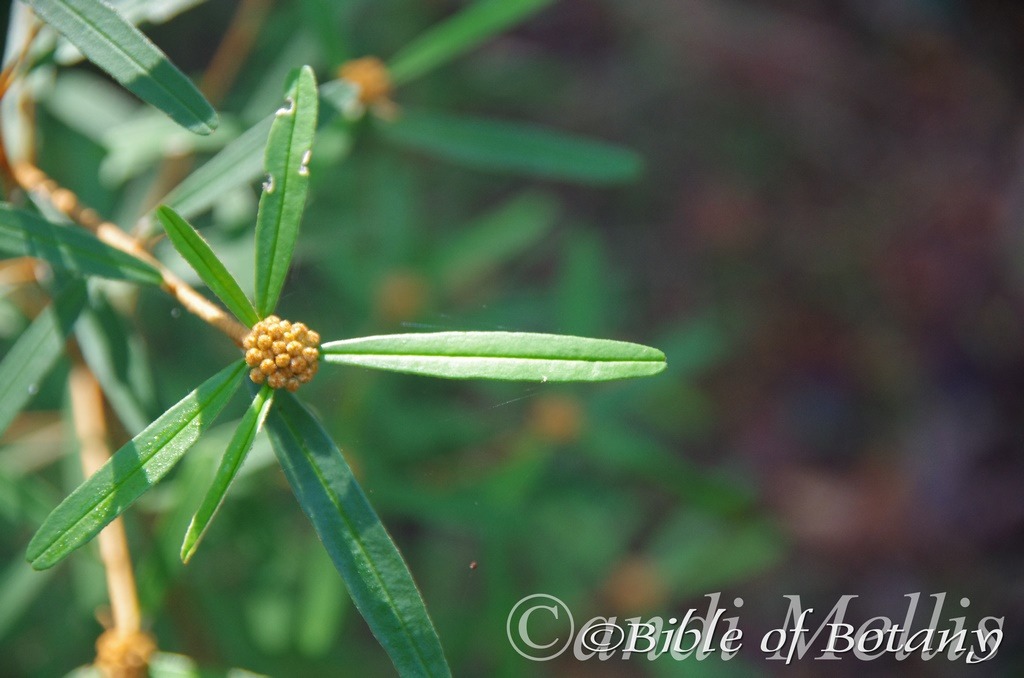
Pigeon Gully NSW
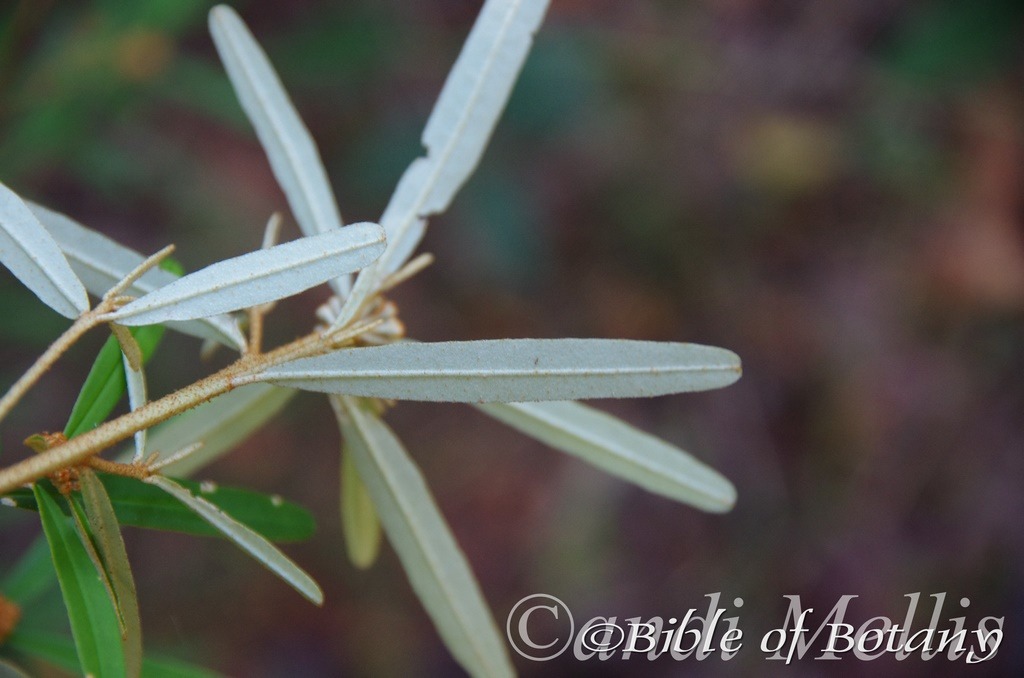
Pigeon Gully NSW
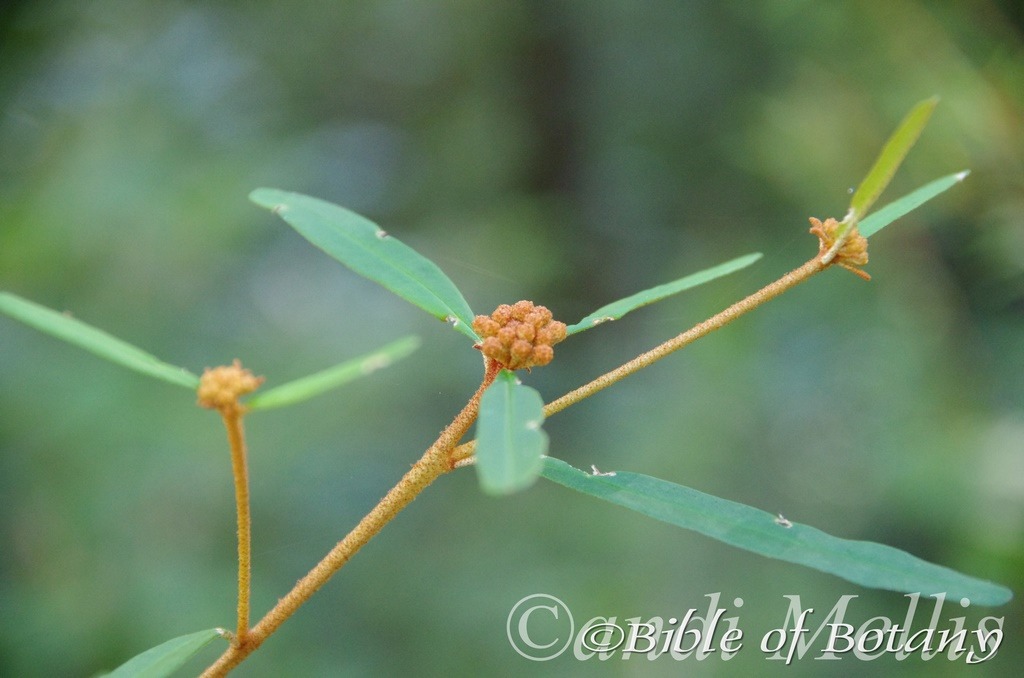
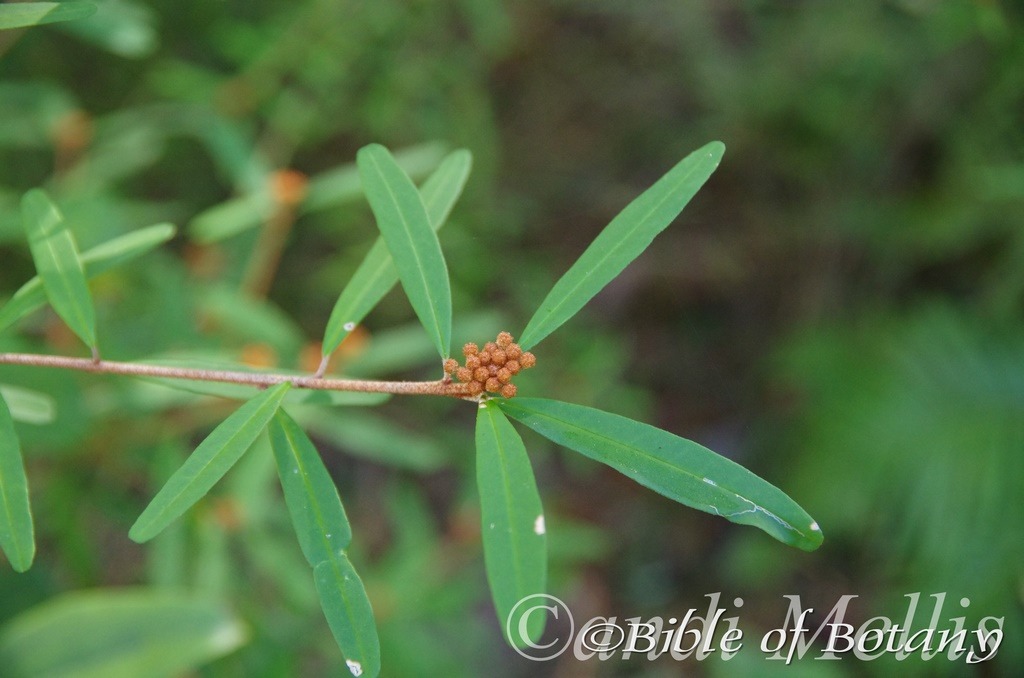
Pigeon Gully NSW
Phebalium woombye
Classification:
Unranked: Eudicots
Unranked: Rosids
Order: Sapindales
Family: Rutaceae
Genus: From Phebaleos, which is Ancient Greek for a fig. The actual resemblance is unclear however it may refer to ancient Greek poets using the word instead of the myrtle when reciting.
Specie: From Woombye, which is Latinized from the local aboriginal Noongyanbudda Ngadjon vernacular name for Wumbai for place of black snake or wambai for black myrtle or axe or club handle made from the black myrtle. It refers to plants, which were first discovered near Woombye in south east Queensland.
Sub specie:
Common Name: Wallum Phebalium.
Distribution:
Phebalium woombye is found south from the Clinton Lowland in Shoalwater Bay to Carnarvon Gorge National Park in Queensland to Bellingreen north eastern of New South Wales.
https://avh.ala.org.au/occurrences/search?taxa=Phebalium+woombye#tab_mapView
Habitat Aspect Climate:
Phebalium woombye prefers dappled shade to full sun. It grows in dry coastal heaths or dry sclerophyll forests often in exposed positions. The altitude ranges from 5 meters ASL to 640 meters ASL.
The temperatures range from minus 4 degrees in July to 38 degrees in January.
The rainfall ranges from lows of 750mm to 2100mm average per annum.
Soil requirements:
Phebalium woombye prefers sands, sandy loams to light fatty sandy clays. The soils are derived from accumulated peaty beach sands, partially decomposed or decomposed sandstones close to the parent rock or skeletal loams over metasandstones. The soils pH ranges from 5pH to 7pH. It does not tolerate water logged soils. Non saline soils to slightly saline soils are tolerated as are salt laden winds.
Height & Spread:
Wild Plants:1m to 2m by 1m to 2m.
Characteristics:
Phebalium woombye grows as an ascending or decumbent, small multi stemmed, open shrub. The stems are pale brown, pale grey-brown, pale grey to off white, glabrous. The young stems and new shoots are sparsely to moderately covered in silvery to reddish-brown stellate scales.
The alternate oblong-elliptic to broad elliptic leaves of Phebalium woombye measure 15mm to 60mm in length by 2mm to 11mm in width. The petioles are moderately to densely covered in silvery to reddish-brown scales and measure 2mm to 10mm in length. The bases are broad cuneate to rounded while the apexes are obtuse or retuse tip or tapering obtuse with a retuse tip. The discolourous laminas are deep green and glabrous on the upper laminas while the lower laminas are silvery and sparsely to moderately covered in reddish-brown or silvery stellate scales. The laminas are convexed from the mid vein to the margins forming a channel along the mid vein on the upper surface or curve slightly from the midvein to the margins. The laminas decurve downwards at the apexes. The mid vein is prominent on the lower lamina.
The inflorescences are born in small clusters of 4 to 12 individual flowers from the terminals or at times from the apical leaf axils. The pedicels measure 4mm to 15mm in length. The cupuliform calyx has 5 to 8 fine teeth and measure 3mm to 5mm in length including the lobes. The white, obturbinate calyxes enlarge in fruit and are sparsely to moderately covered in silvery to reddish-brown scales both externally and internally. The 5 triangular calyx lobes measure 1.5mm to 2mm in length while the calyxes’ tube measures 1.7mm to 2.2mm in length. The 5 contorted, white to deep pink petals are obtuse with a cupuliform tip and are covered in silvery to reddish-brown scales both externally. The petals measure 5mm to 6mm in length.
The 10 stamens are positioned opposite and adjacent to the petals. The white, filiform filaments are dimorphic and measure 3.5mm to 5mm in length. The pale yellow oblong, adnately fixed anthers measure 1.8mm to 2mm in length.
The ovary has 5 carpels. The terete tapering style has a white stigma. The pistil measures 2mm to 3mm in length. The flowers appear from late July to October.
Phebalium woombye’s fruits are swollen erect cocci which are enclosed in the calyxes. The cocci measure 4mm to 5mm in length by 4.5mm to 5.5mm in width near the base. The cocci are sparsely to moderately covered in reddish-brown stellate scales.
Wildlife:
Phebalium woombye’s wildlife is unknown to the author.
Cultivation:
Phebalium woombye is a magnificent small rounded shrub that deserves a place in every temperate or sub-tropical native or exotic garden. It is ideal in almost every setting near ponds, at the edge of a rain forest in court yards, around swimming pools or in rockeries. In cultivation it grows from 1.5 meters to 2 meters in height by 1.5 meters to 2 meters in diameter When grown in the open.
It grows exceptionally well on lighter soils When deep leaf litter keeps the soil cool and moisture at an even level. If these requirements are met they can cope with temperatures as low as minus 6 degrees and up to 36 degrees. It can be tipped pruned to encourage a bushier or more compact shrub.
Be imaginative When planting in mass. Use the plants in different configurations and use curves. Light pruning after flowering or tip pruning will enhance the shrubs bushiness and provide longer stronger flower stems in the following season.
Phebalium woombye would make outstanding contribution to a moist heath garden. Here it can be used as the taller growing plant scatted throughout the heath scene. When you design a flat heath garden which the this species is well suited don’t use contours to display the plants as heath lands are almost always flat or have a slight rise. The taller tree forms look fantastic growing amid small growing heath plants. Plants must be planted close together and be short so you can see over the tallest ones with the exception of one or two plants at the most. These will be feature plants. The idea is to achieve a feeling of expansive flatness. This can be achieved with using the green linear leaves and having them contrasting with larger deep green or soft grey to glaucous coloured foliages. Use a lot of procumbent plants like Carpobrotus edulis, Xerochrysum bracteatum, Xerochrysum viscosum or Hibbertia specie. Mix them with other smaller shrubs so none of them dominate the scene but blend in to give a mosaic of foliage colours that you oversee. He I immediately think of Actinotis helianthi or Grevillea thelemanniana for two great contrasting foliages.
It can be used to great affect by planting a meandering row stretching back from the path like a river. Plant either side with slightly taller plants with large deep green leaves and red or white flowers for a great contrast. In this scene you may have to keep them pruned below 0.5 meters for the best affect.
Ensure that the whole plant or at least most of it is on display from most sections of the garden as the flowers are a real bonus.
When it flowers these plants will catch your attention and the viewer will be transfixed on the display rather than watching the path. Plant them at 0.8 meter to 1 meter centers.
The plant makes an excellent bushy hedge and could be used successfully in topiary landscaped gardens.
As Phebalium woombye grows on poor skeletal metasandstones it would be an ideal subject for bonsai culture offering the enthusiast everything from being easy to shape, long lived, relatively quick growth and excellent flowering.
Propagation:
Seeds: The seeds can be removed easily from the plants as the fruits dry. Once it has finished flowering and the fruits have swollen place an old sheet below the plants and keep a close eye on it. Peg it down so it doesn’t blow around. When the seeds start to disperse, it can be all over in one day; especially if the weather turns hot, with the seeds being scatted on the ground. Clean the rubbish off and sieve the material for the seeds.
The seeds need to be treated by rubbing between fine sandpaper. Another method is to drop them into hot water and allow it to cool. I have also laid the rubbish out at the time of collecting and burnt it with the seeds still amongst the rubbish. No one method has proven better than the other, with all producing erratic results but better than if I did not tat the seeds.
Sow freshly treated seeds directly into a seed raising mix, keeping them moist not wet. When the seedlings are 20mm to 25mm tall, prick them out and plant them into 50mm native tubes using a good organic mix.
As the seedlings roots ach the bottom of the tubes plant them out into their permanent position. Do not delay.
Cuttings: Phebalium woombye cuttings not the easiest to strike from cuttings. Use 80mm to 120mm long tip cuttings or lateral shoots from the present season’s growth. Take them in warmer months of the year. Remove half the leaves from the bottom section being careful not to tear the bark.
1 Prepare the cutting mix by adding two thirds sharp clean river sand, one third peat or one third perlite. These ingredients must be sterilized,
2 Select good material from non diseased plants,
3 Select semi green stems for cuttings. Look for a stem with two or three nodes,
4 Place the cutting on a flat, hard surface, and make a clean cut down one side of the cutting at the base for 10mm with a sharp sterile knife or razor blade. – This scarification of the node will increase the chances of roots emerging from this spot. Now remove all but one or two the leaves, leaving the apex leaves in tact. If the leaves are very large in proportion to the stem, cut off the apical halves.
5 Fill a saucer with water, and place a little medium strength rooting hormone into another container like a milk bottle top. Dip the node end of the cutting into the water and then into the rooting hormone. Tap off any excess hormone,
6 Use a small dipple stick or old pencil to poke a hole into the soilless potting mix. Ensure the hole is slightly larger than the stem diameter and be careful not to wipe the rooting hormone off the cuttings base. Place 2 to 4 cuttings in each of the 50mm native tubes,
7 I like to place the tubes in bucket with holes drilled in the bottom to allow excess water to drain out. A plastic bag that fits over the bucket is ideal to help maintain temperature and moisture. Place in a semi shaded, warm position like under 50mm shade cloth.
8 When the cuttings have struck, open the bag to allow air circulation for a few days to a week,
9 Once hardened off remove the cuttings from the bag and allow to further hardening for a few more days to a week,
10 Transplant into a good potting mix to grow on.
Fertilize using seaweed, fish emulsion or organic chicken pellets soaked in water on an alternate basis. Fertilize every two months until the plants are established then twice annually in early September or March to maintain health, vitality and better flowering.
Further Comments from Readers:
“Hi reader, it seems you use The Bible of Botany a lot. That’s great as we have great pleasure in bringing it to you! It’s a little awkward for us to ask, but our first aim is to purchase land approximately 1,600 hectares to link several parcels of N.P. into one at The Pinnacles NSW Australia, but we need your help. We’re not salespeople. We’re amateur botanists who have dedicated over 30 years to saving the environment in a practical way. We depend on donations to reach our goal. If you donate just $5, the price of your coffee this Sunday, We can help to keep the planet alive in a real way and continue to bring you regular updates and features on Australian plants all in one Botanical Bible. Any support is greatly appreciated. Thank you.”
In the spirit of reconciliation we acknowledge the Bundjalung, Gumbaynggirr and Yaegl and all aboriginal nations throughout Australia and their connections to land, sea and community. We pay our respect to their Elders past, present and future for the pleasures we have gained.
Philotheca conduplicata
Classification:
Unranked: Eudicots
Unranked: Rosids
Order: Sapindales
Family: Rutaceae
Genus: From Phílos, which is Ancient Greek for loving or to be in love and Theca, which is Ancient Greek for a box. The reference to the box is unclear to the author but may refer to the beauty and love one has for the flowers before they part to form the cocci or box like fruits.
Specie: From Com/Con, which is Greek/Latin for to come together or with and Duplicatus, to duplicate. It refers to leaves in the bud stage, which fold length wise so that the upper laminas are facing each other.
Sub specie:
Common Name:
Distribution:
Philotheca conduplicata is restricted to a small area on the New England Tablelands between Stanthorpe, Daphne Peak near Braemar Glen Aplin in southern Queensland to the McIntyre Falls, Howell and Deepwater in northern New South Wales with a disjunct population at Sherwood Creek near Glenreagh.
https://avh.ala.org.au/occurrences/search?taxa=Philotheca+conduplicata#tab_mapView
Habitat Aspect Climate:
Philotheca conduplicata prefer dappled shade to full sun. It grows in the dry sclerophyll forests and dry woodlands often adjacent to dry heaths. The altitude ranges from 580 meters ASL to 1150 meters ASL except for the small Sherwood Creek population which is at 170 meters ASL.
The temperatures range from minus 2 degrees in July to 38 degrees in January.
The rainfall ranges from lows of 500mm to 1200mm average per annum.
Soil requirements:
Philotheca conduplicata prefer soils that a course white sands, white or pale grey sandy loams to red, light fatty gritty clays. The soils are derived from partially decomposed granites or decomposed granites except the Sherwood Creek population which grows on decomposed red sandstone. The soils pH ranges from 5pH to 6.5pH. It does not tolerate water logged soils. Non saline soils to moderately saline soils are tolerated.
Height & Spread:
Wild Plants:1m to 2m by 1.5m to 2.5m.
Characteristics:
Philotheca conduplicata grows as an erect, small multi stemmed, open to bushy shrub. The lower stems a grey while the middle and upper terete stems a deep grey-green to sea-green almost smooth and glabrous or at times subglaucous. The stems and new shoots are covered in white pilose hairs.
The alternate narrow elliptical leaves of Philotheca conduplicata are crowded along the ends of the branchlets. They measure 40mm to 70mm in length by 5mm to 10mm in width. The bases taper to the stem while the apexes are acute. The concolourous laminas are deep greyish-green to sea-green, glabrous and finely glandular to warty. The laminas curve upwards from the mid vein to the margins to conduplicate while the leaf margins are entire. The mid vein is slightly prominent on both laminas.
The inflorescences of Philotheca conduplicata are born on short cymes from the leaf axils. The 1 to 4 individual flowers are on a thick glabrous peduncle and pedicel. The Peduncles measure 1mm to 4mm in length while the pedicels measure 2mm to 4mm in length. The 5 pale lime-green sepal lobes measure 1.5 to 2mm in length and are moderately covered in white pubescent hairs. The 5 elliptical lilac petals measure 8mm to 10mm in length by 4mm to 5mm in width. The petals are sparsely to moderately covered in white pubescent hairs. The apex is acute and slightly curved at the tips. The small triangular sepals are deep greyish-green to sea-green, glabrous and tinged with maroon. The white petals are often pink externally or tinged in pink externally. The broad elliptic petals measure 8mm to 10mm in length. The white, glabrous keel is prominent and is glandular towards apex.
The 10 flattened long triangular filaments form a turbinate staminal tube surrounding the style. The white filaments measure 3mm to 4mm. The filaments are moderately covered in white ciliate hairs on the basal two thirds and pilose hairs on the apical third. The ovate, apiculate anthers are pinkish and glabrous.
The 5 carpels are fused at the base and are sparsely covered in white tomentose hairs. The terete style has yellowish-orange stigma. The flowers appear from late September to early November with a lesser flowering from April to May.
Philotheca conduplicata’s fruits are swollen, erect to slightly divaricate cocci. The cocci measure 7mm to 9mm long by 5mm to 6mm wide with a pronounced 3mm beak.
Wildlife:
Philotheca conduplicata’s wildlife is unknown to the author.
Cultivation:
Philotheca conduplicata is a magnificent small rounded shrub that deserves a place in every cool temperate to cool sub-tropical native or exotic garden. It is ideal in almost every setting near ponds, at the edge of a rain forest in court yards, around swimming pools or in rockeries. In cultivation it will grow from 1.5 meters to 2 meters in height by 2 meters to 2.5 meters in diameter When grown in the open.
It grows exceptionally well on lighter soils When deep leaf litter keeps the soil cool and moisture at an even level. If these requirements are met they can cope with temperatures as low as minus 6 degrees and up to 36 degrees. They can be tipped pruned to encourage a bushier or a more compact shrub.
It often reaches its full potential in just 3 years and flower from the second year from seed. Plants will live naturally for 6 to 10 years so should be placed every 4 to 8 years to maintain continuity.
Be imaginative When planting in mass. Use the plants in different configurations and use curves. Light pruning after flowering or tip pruning will enhance the shrubs bushiness and provide longer stronger flower stems in the following season.
It would make outstanding contribution to a moist bush garden even on small blocks. Here it can be used as the taller growing plant in the corner or scatted throughout the scene. It is well suited don’t use contours to display the plants as heath lands are almost always flat or have a slight rise. Plants must be planted close together and be short so you can see over the tallest ones with the exception of this one. The idea is to achieve a feeling of greater depth. This can be achieved with using the green linear leaves and having them contrasting with finer pale green or soft grey to glaucous coloured foliages. Another method would be to use annuals for colour and texture Use a lot of procumbent plants like Carpobrotus edulis, Xerochrysum bracteatum, Xerochrysum viscosum or Hibbertia specie. Mix them with other smaller shrubs so none of them dominate the scene but blend in to give a mosaic of foliage colours that you oversee. He I immediately think of Actinotis helianthi or Grevillea thelemanniana for two great contrasting foliages.
It can be used to great affect by planting a meandering row stretching back from the path like a river. Plant either side with slightly taller plants with large deep green leaves and red or white flowers for a great contrast. In this scene you may have to keep them pruned below 0.5 meters for the best affect.
Ensure that the whole plant or at least most of it is on display from most sections of the garden as the flowers are a real bonus.
When It is in flower these plants will catch your attention and the viewer will be transfixed on the display rather than watching the path.
For hedge rows plant them at 0.8 meter to 1 meter centers.
Propagation:
Seeds: Seeds of Philotheca conduplicata can be moved easily from the plants as they dry. Once Eriostemon papillata has finished flowering and the fruits have swollen place an old sheet below the plants and keep a close eye on it. Peg it down so it doesn’t blow around. When the seeds start to disperse, it can be all over in one day; especially if the weather turns hot, with the seeds being scatted on the ground. Clean the rubbish off and sieve the material for the seeds.
Seeds need to be treated by rubbing between fine sandpaper. Another method is to drop them into hot water and allow it to cool. I have also laid the rubbish out at the time of collecting and burnt it with the seeds still amongst the rubbish. No one method has proven better than the other, with all producing erratic results but better than if I did not tat the seeds.
Sow freshly treated seeds directly into a seed raising mix, keeping them moist not wet. When the seedlings are 20mm to 25mm tall, prick them out and plant them into 50mm native tubes using a good organic mix.
As the seedlings roots ach the bottom of the tubes plant them out into their permanent position. Do not delay.
Cuttings: Philotheca conduplicata cuttings not the easiest to strike from cuttings. Use 80mm to 120mm long tip cuttings or lateral shoots from the present season’s growth. Take them in warmer months of the year. Remove half the leaves from the bottom section being careful not to tear the bark.
1 Prepare the cutting mix by adding two thirds sharp clean river sand, one third peat or one third perlite. These ingredients must be sterilized,
2 Select good material from non diseased plants,
3 Select semi green stems for cuttings. Look for a stem with two or three nodes,
4 Place the cutting on a flat, hard surface, and make a clean cut down one side of the cutting at the base for 10mm with a sharp sterile knife or razor blade. – This scarification of the node will increase the chances of roots emerging from this spot. Now remove all but one or two the leaves, leaving the apex leaves in tact. If the leaves are very large in proportion to the stem, cut off the apical halves.
5 Fill a saucer with water, and place a little medium strength rooting hormone into another container like a milk bottle top. Dip the node end of the cutting into the water and then into the rooting hormone. Tap off any excess hormone,
6 Use a small dipple stick or old pencil to poke a hole into the soilless potting mix. Ensure the hole is slightly larger than the stem diameter and be careful not to wipe the rooting hormone off the cuttings base. Place 2 to 4 cuttings in each of the 50mm native tubes,
7 I like to place the tubes in bucket with holes drilled in the bottom to allow excess water to drain out. A plastic bag that fits over the bucket is ideal to help maintain temperature and moisture. Place in a semi shaded, warm position like under 50mm shade cloth.
8 When the cuttings have struck, open the bag to allow air circulation for a few days to a week,
9 Once hardened off remove the cuttings from the bag and allow to further hardening for a few more days to a week,
10 Transplant into a good potting mix to grow on.
Fertilize using seaweed, fish emulsion or organic chicken pellets soaked in water on an alternate basis. Fertilize every two months until the plants are established then twice annually in early September or March to maintain health, vitality and better flowering.
Further Comments from Readers:
“Hi reader, it seems you use The Bible of Botany a lot. That’s great as we have great pleasure in bringing it to you! It’s a little awkward for us to ask, but our first aim is to purchase land approximately 1,600 hectares to link several parcels of N.P. into one at The Pinnacles NSW Australia, but we need your help. We’re not salespeople. We’re amateur botanists who have dedicated over 30 years to saving the environment in a practical way. We depend on donations to reach our goal. If you donate just $5, the price of your coffee this Sunday, We can help to keep the planet alive in a real way and continue to bring you regular updates and features on Australian plants all in one Botanical Bible. Any support is greatly appreciated. Thank you.”
In the spirit of reconciliation we acknowledge the Bundjalung, Gumbaynggirr and Yaegl and all aboriginal nations throughout Australia and their connections to land, sea and community. We pay our respect to their Elders past, present and future for the pleasures we have gained.
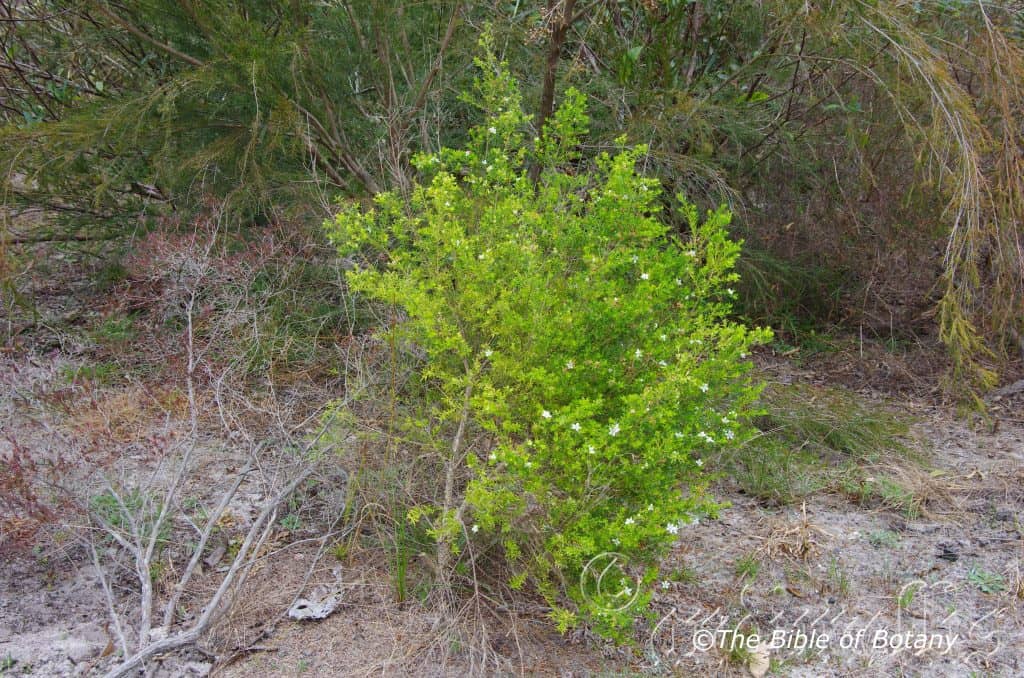
NCBG Coffs Harbour NSW

NCBG Coffs Harbour NSW
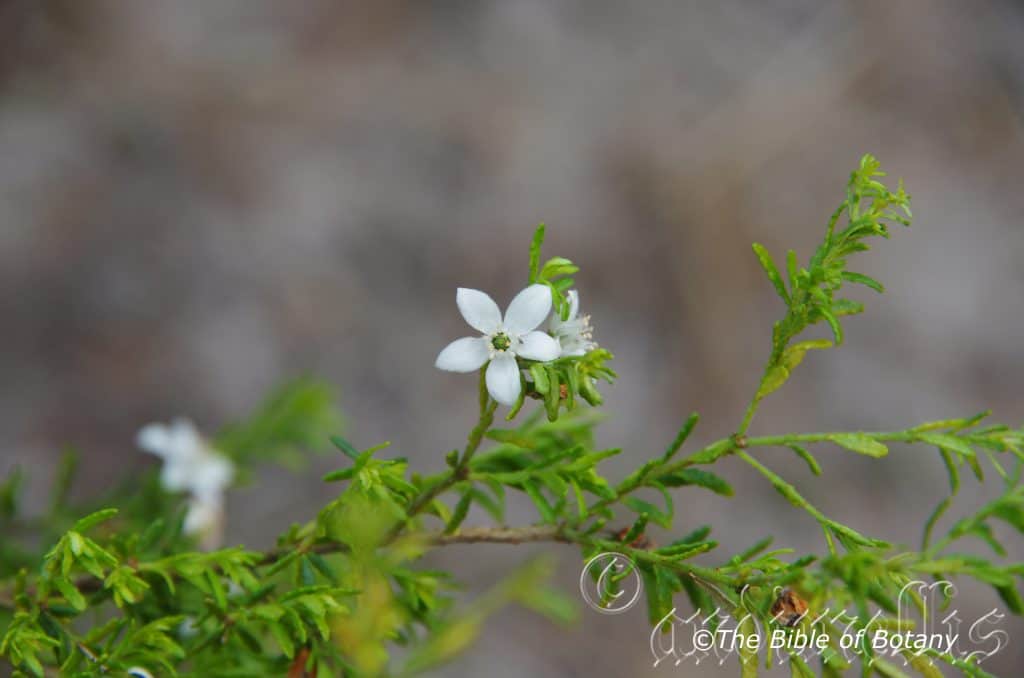
NCBG Coffs Harbour NSW
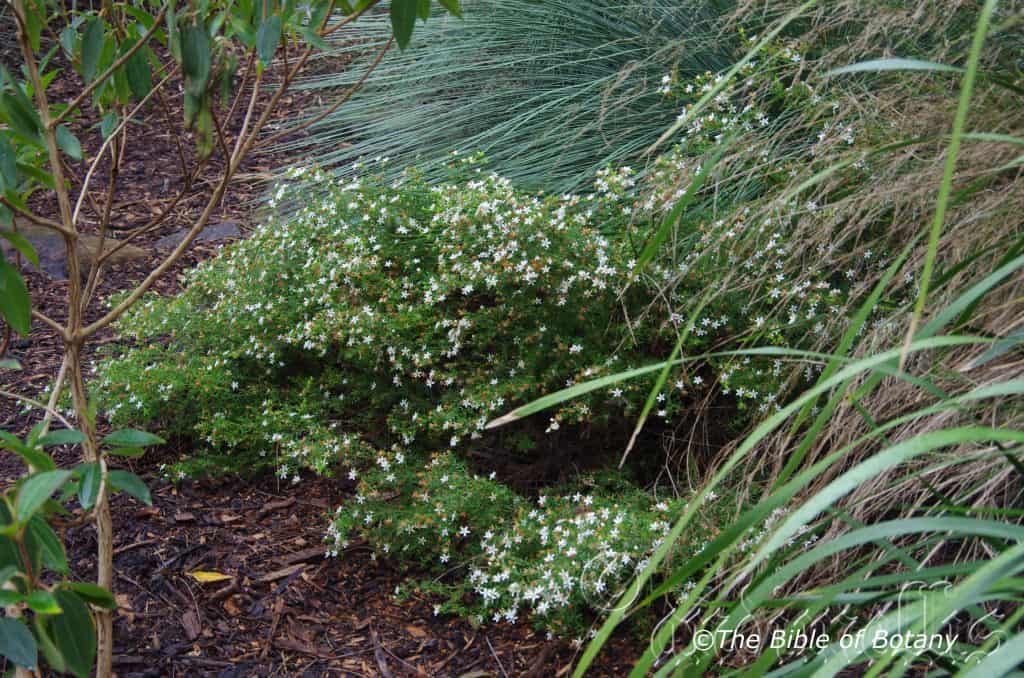
Beaudesert Qld.
Philotheca difformis
Classification:
Unranked: Eudicots
Unranked: Rosids
Order: Sapindales
Family: Rutaceae
Genus: From Phílos, which is Ancient Greek for loving or to be in love and Theca, which is Ancient Greek for a box. It refers to stamens, which are fused at the base and form glabrous tube that resembles a box.
Specie: From Di/Dis, which are Ancient Greek for two and Forme, which is Latin for to take the shape or form of. It refers to plants, which have two distinctly different forms.
Sub specie: Philotheca difformis subsp. difformis. FromDi/Dis, which are Ancient Greek for two and Forme, which is Latin for to take the shape or form of. It refers to plants, which have two distinctly different forms.
Sub specie: Philotheca difformis subsp. smithiana. Is named in honour of Smith but which Smith cannot be substantiated.
Common Name:
Distribution:
Philotheca difformis subsp. difformis is found over a wide area generally west of the Great Dividing Range. It is found south and west from Broad Sound in central coastal Queensland to the Grampians in Victoria and further west to the Flinders Ranges in South Australia.
Philotheca difformis subsp. smithiana is found south from Shoalwater Bay in central coastal Queensland to Singleton in central coastal New South Wales.
https://avh.ala.org.au/occurrences/search?taxa=Philotheca+difformis#tab_mapView
Habitat Aspect Climate:
Philotheca difformis prefer dappled shade to full sun. It grows in dry open Eucalyptus forests, woodlands, and open Acacia forests or at times near the coast in dry heaths behind the frontal dune systems and headlands. The altitude ranges from 5 meters ASL to 1100 meters ASL.
The temperatures range from minus 4 degrees in July to 40 degrees in January.
The rainfall ranges from lows of 300mm to 1600mm average per annum.
Soil requirements:
Philotheca difformis prefer soils that are course white sands, white, red or pale grey sandy loams to, light fatty gritty clays. The soils are usually derived from decomposed or partially decomposed granites or sandstone. The soils pH ranges from 5pH to 6.5pH. It does not tolerate water logged soils. Non saline soils to moderately saline soils are tolerated.
Height & Spread:
Wild Plants:0.5m to 2m by 1m to 2.5m.
Characteristics:
Philotheca difformis grows as an erect or spreading small multi stemmed bushy shrub. The lower stems are grey while the middle and upper terete stems are grass-green to lime-green and are sparsely covered in papilate lumps. The stems and new shoots are sparsely to moderately covered in white pubescent hairs.
The opposite or 3 whorled leaves are variable from ovate, elliptical to rhomboidal. The leaves measure 4mm to 9mm in length by 2mm to 4mm in width. The minute, caduceous stipules are black. The bases are attenuate tapering to the stem while the apexes are broad acute, obtuse-acute or obtuse. The discolourous laminas are mid greyish-green to mid olive-green, glabrous and papilate lumps on the upper laminas while the lower laminas are slightly paler. The laminas are flat to very slight recurve upwards from the mid vein to the margins and decurve downwards to recurve upwards slightly near the apex. The margins are entire or affected by the papilate lumps. The mid vein is slightly prominent on the upper laminas and is flat or faintly grooved on the lower laminas.
The inflorescences of Philotheca difformis are born singularly or in clusters of 2 to 4 from the leaf axils. The individual flowers are on thick glabrous pedicels. The pedicels are sparsely covered in papilate lumps and sparsely to moderately covered in white pubescent hairs and measure 2mm to 3mm in length. The, acute grass-green to lime-green sepals measure 0.8mm to 1.2mm in length and are glabrous or sparsely covered in white puberulent hairs. The oblong to oblong-elliptical, white petals measure 4mm to 5.5mm in length by 2mm to 2.5mm in width. The 5 petals are densely covered in white tomentose hairs. The apexes are obtuse to obtuse-acute and slightly curved at the tips. The white petals are often pink externally or tinged in pink externally. The white keel is prominent.
The 10 to 12 flat, leaf like filaments of the stamens and staminodes are erect and surround around the ovary. The filaments are covered in long, white, pilose hairs. The 5 to 10 filaments measure 1mm to 1.4mm in length while the obloidal stamens are pastel orange to creamy-orange.
The deep green glabrous ovary has 5 ovules. The lime-green style is glabrous to moderately and covered in white pilose hairs and has a 5obtuse lobed stigma. The flowers appear from late July to early November with some flowers appearing throughout the year.
Philotheca difformis’s fruits are swollen, oblong cocci. The cocci measure 5mm to 7mm in length by 4mm to 5mm in width with a truncate apex which is shortly rostrate.
Confusing Subspecie Varieties:
Philotheca difformis subsp. difformis leaves are areolate and fleshy to succulent.
Philotheca difformis subsp. smithiana’s leaves are flat and coriaceous.
Wildlife:
Philotheca difformis’s wildlife is unknown to the author.
Cultivation:
Philotheca difformis is a magnificent small rounded shrub that deserves a place in every cool temperate to cool sub-tropical native or exotic garden. It is ideal in almost every setting near ponds, at the edge of a rain forest in court yards, around swimming pools or in rockeries. In cultivation it grows from 1.5 meters to 2 meters in height by 2 meters to 2.5 meters in diameter when grown in the open.
It grows exceptionally well on lighter soils When deep leaf litter keeps the soil cool and moisture at an even level. If these requirements are met they can cope with temperatures as low as minus 4 degrees and up to 36 degrees. It can be tipped pruned to encourage a bushier or more compact shrub.
It often reaches its full potential in just 3 years and flower from the second year from seed. Plants will live naturally for 8 to 10 years so should be placed every 6 to 8 years to maintain continuity of flowering.
Be imaginative when planting in mass. Use the plants in different configurations and use curves. Light pruning after flowering or tip pruning will enhance the shrubs bushiness and provide longer stronger flower stems in the following season.
Philotheca difformis would make outstanding contribution to\moist heath garden. He they can be used as the taller growing plant scatted throughout the heath scene. When you design a flat heath garden which this Philotheca is well suited don’t use contours to display the plants as heath lands are almost always flat or have a slight rise. Plants must be planted close together and be short so you can see over the tallest ones with the exception of one or two plants at the most. These will be feature plants. The idea is to achieve a feeling of expansive flatness. This can be achieved with using the Philotheca papillata’s linear leaves and having them contrasting with larger deep green or soft grey to glaucous coloured foliages. Use a lot of procumbent plants like Carpobrotus edulis Lechenaultia specie, Pattersonia specie, Xerochrysum bracteatum, Xerochrysum viscosum or Hibbertia specie. Mix them with other smaller shrubs so none of them dominate the scene but blend in to give a mosaic of foliage colours that you oversee. He I immediately think of Actinotis helianthi or Grevillea thelemanniana for two great contrasting foliages.
They can be used to great affect by planting a meandering row stretching back from the path like a river. Plant either side with slightly taller plants with large deep green leaves and red or white flowers for a great contrast. In this scene you may have to keep them pruned below 0.5 meters for the best affect.
Ensure that the whole plant or at least most of it is on display from most sections of the garden as the flowers are a real bonus.
When it is in flower these plants will catch your attention and the viewer will be transfixed on the display rather than watching the path.
For hedge rows plant them at 0.8 meter to 1 meter centers.
Propagation:
Seeds: Seeds of Philotheca difformis can be moved easily from the plants as they dry. Once Eriostemon papillata has finished flowering and the fruits have swollen place an old sheet below the plants and keep a close eye on it. Peg it down so it doesn’t blow around. When the seeds start to disperse, it can be all over in one day; especially if the weather turns hot, with the seeds being scatted on the ground. Clean the rubbish off and sieve the material for the seeds.
Seeds need to be treated by rubbing between fine sandpaper. Another method is to drop them into hot water and allow it to cool. I have also laid the rubbish out at the time of collecting and burnt it with the seeds still amongst the rubbish. No one method has proven better than the other, with all producing erratic results but better than if I did not tat the seeds.
Sow freshly treated seeds directly into a seed raising mix, keeping them moist not wet. When the seedlings are 20mm to 25mm tall, prick them out and plant them into 50mm native tubes using a good organic mix.
As the seedlings roots ach the bottom of the tubes plant them out into their permanent position. Do not delay.
Cuttings Philotheca difformis cuttings not the easiest to strike from cuttings. Use 80mm to 120mm long tip cuttings or lateral shoots from the present season’s growth. Take them in warmer months of the year. Remove half the leaves from the bottom section being careful not to tear the bark.
1 Prepare the cutting mix by adding two thirds sharp clean river sand, one third peat or one third perlite. These ingredients must be sterilized,
2 Select good material from non diseased plants,
3 Select semi green stems for cuttings. Look for a stem with two or three nodes,
4 Place the cutting on a flat, hard surface, and make a clean cut down one side of the cutting at the base for 10mm with a sharp sterile knife or razor blade. – This scarification of the node will increase the chances of roots emerging from this spot. Now remove all but one or two the leaves, leaving the apex leaves in tact. If the leaves are very large in proportion to the stem, cut off the apical halves.
5 Fill a saucer with water, and place a little medium strength rooting hormone into another container like a milk bottle top. Dip the node end of the cutting into the water and then into the rooting hormone. Tap off any excess hormone,
6 Use a small dipple stick or old pencil to poke a hole into the soilless potting mix. Ensure the hole is slightly larger than the stem diameter and be careful not to wipe the rooting hormone off the cuttings base. Place 2 to 4 cuttings in each of the 50mm native tubes,
7 I like to place the tubes in bucket with holes drilled in the bottom to allow excess water to drain out. A plastic bag that fits over the bucket is ideal to help maintain temperature and moisture. Place in a semi shaded, warm position like under 50mm shade cloth.
8 When the cuttings have struck, open the bag to allow air circulation for a few days to a week,
9 Once hardened off remove the cuttings from the bag and allow to further hardening for a few more days to a week,
10 Transplant into a good potting mix to grow on.
Fertilize using seaweed, fish emulsion or organic chicken pellets soaked in water on an alternate basis. Fertilize every two months until the plants are established then twice annually in early September or March to maintain health, vitality and better flowering.
Further Comments from Readers:
“Hi reader, it seems you use The Bible of Botany a lot. That’s great as we have great pleasure in bringing it to you! It’s a little awkward for us to ask, but our first aim is to purchase land approximately 1,600 hectares to link several parcels of N.P. into one at The Pinnacles NSW Australia, but we need your help. We’re not salespeople. We’re amateur botanists who have dedicated over 30 years to saving the environment in a practical way. We depend on donations to reach our goal. If you donate just $5, the price of your coffee this Sunday, We can help to keep the planet alive in a real way and continue to bring you regular updates and features on Australian plants all in one Botanical Bible. Any support is greatly appreciated. Thank you.”
In the spirit of reconciliation we acknowledge the Bundjalung, Gumbaynggirr and Yaegl and all aboriginal nations throughout Australia and their connections to land, sea and community. We pay our respect to their Elders past, present and future for the pleasures we have gained.
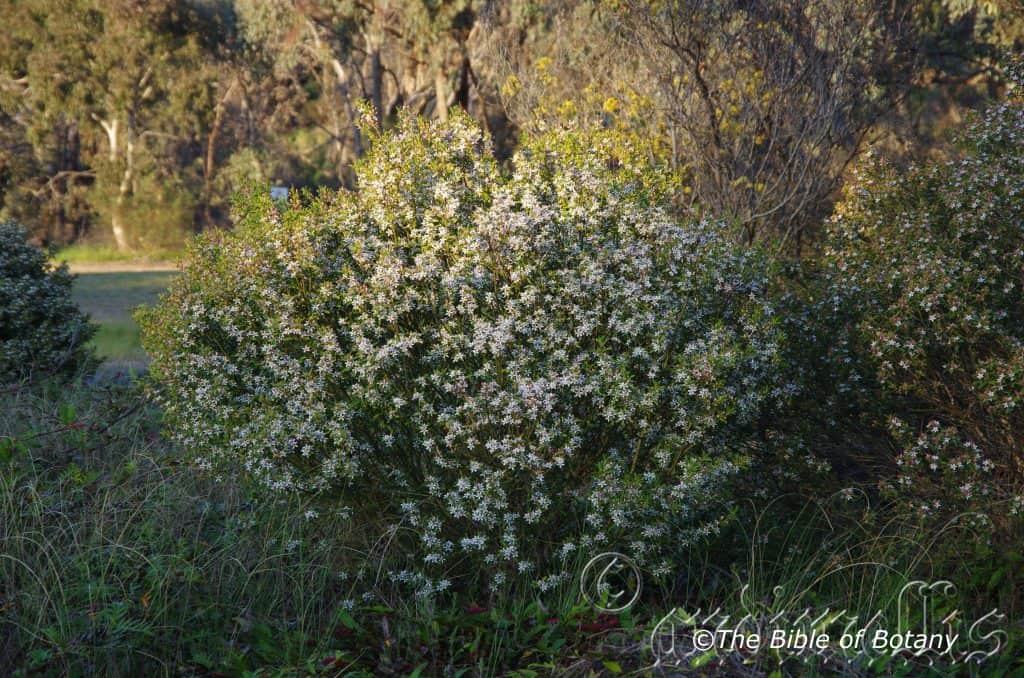
National Botanic Gardens ACT
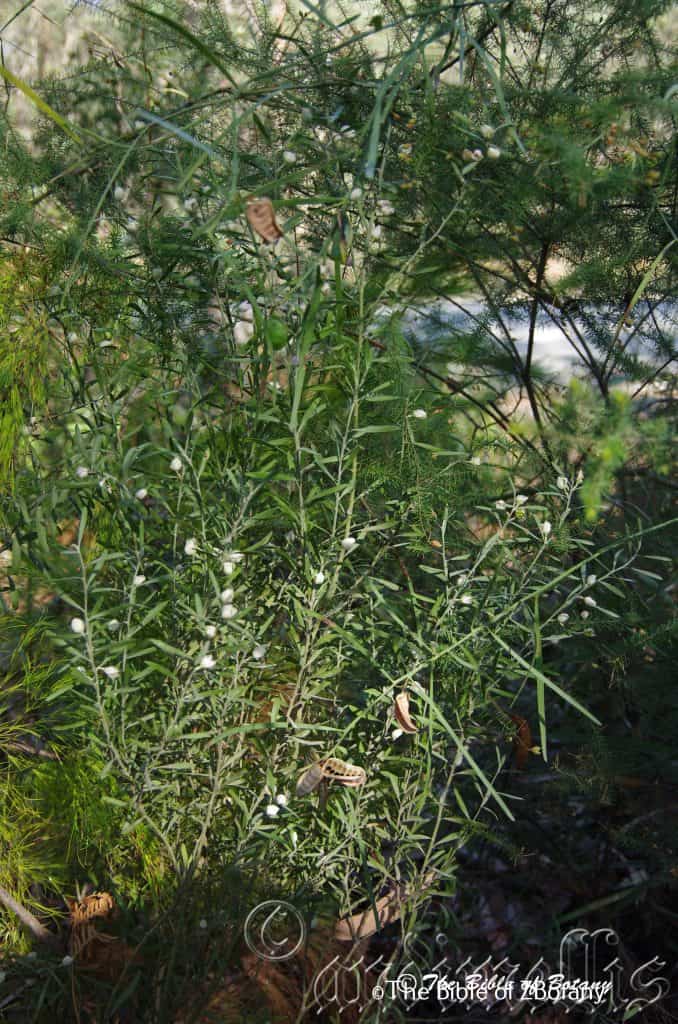
Diamond Beach to Kylie’s Beach Nature Reserve NSW
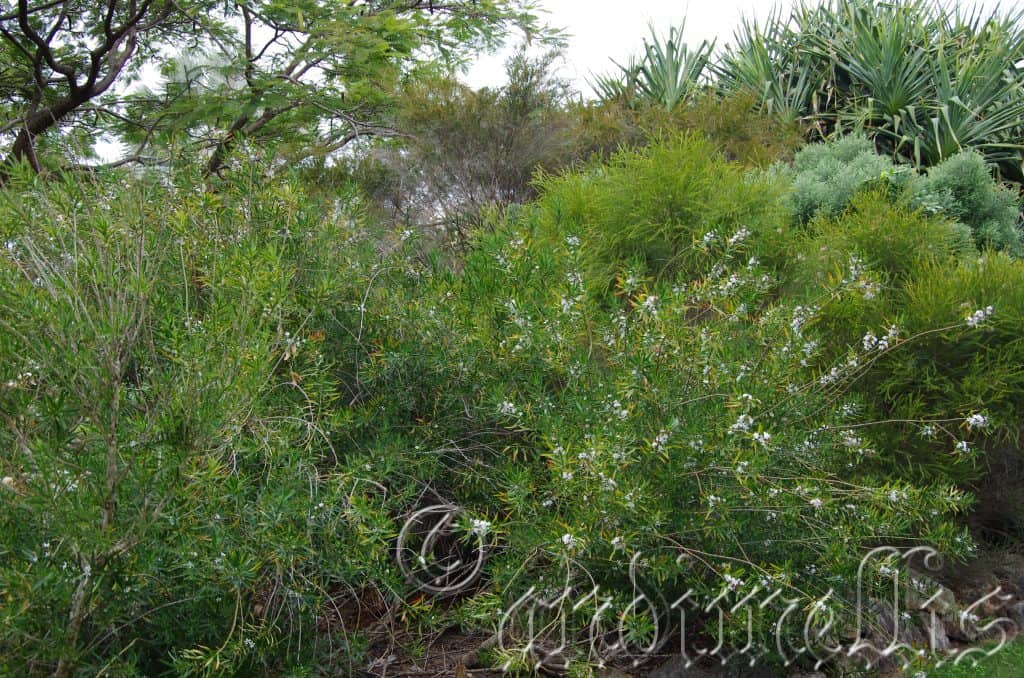
NCBG Coffs Harbour NSW

Author’s Garden The Pinnacles NSW
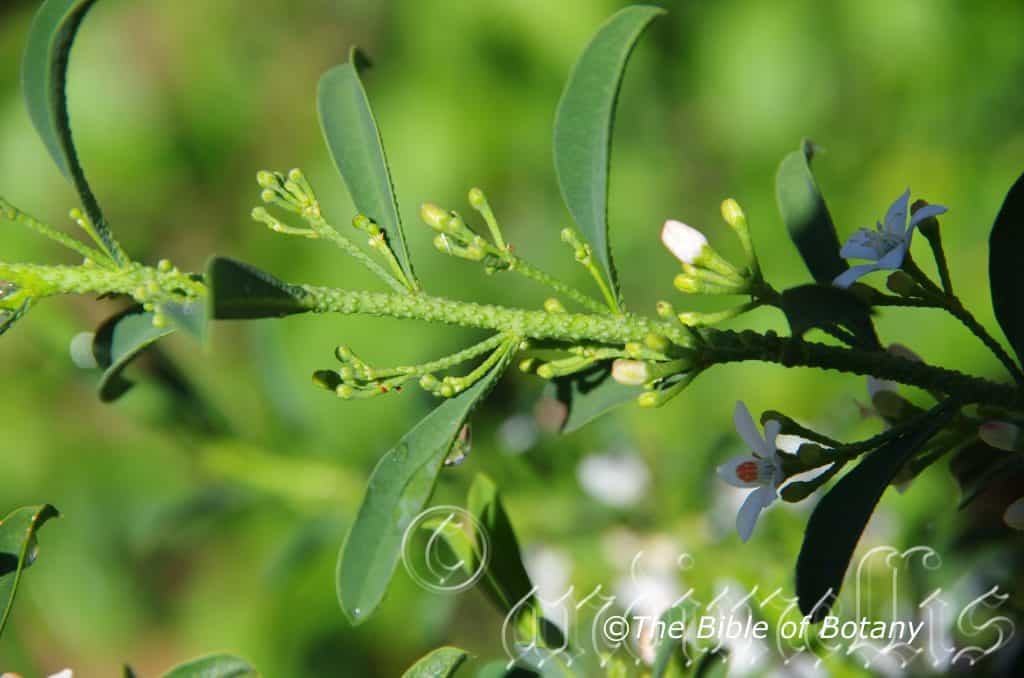
Author’s Garden The Pinnacles NSW
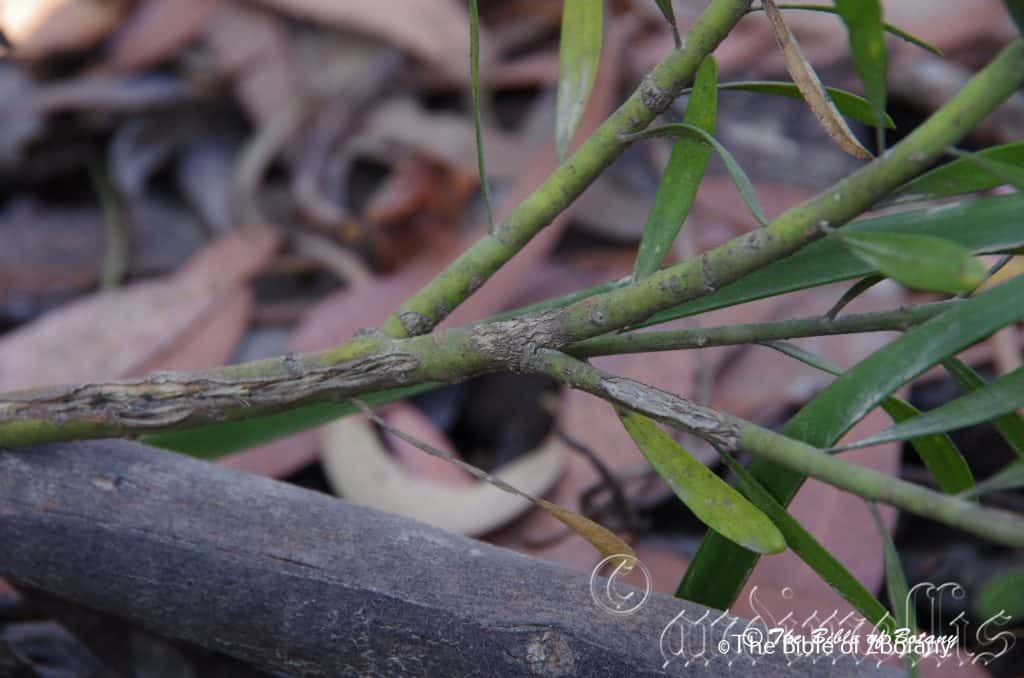
Diamond Beach to Kylie’s Beach Nature Reserve NSW
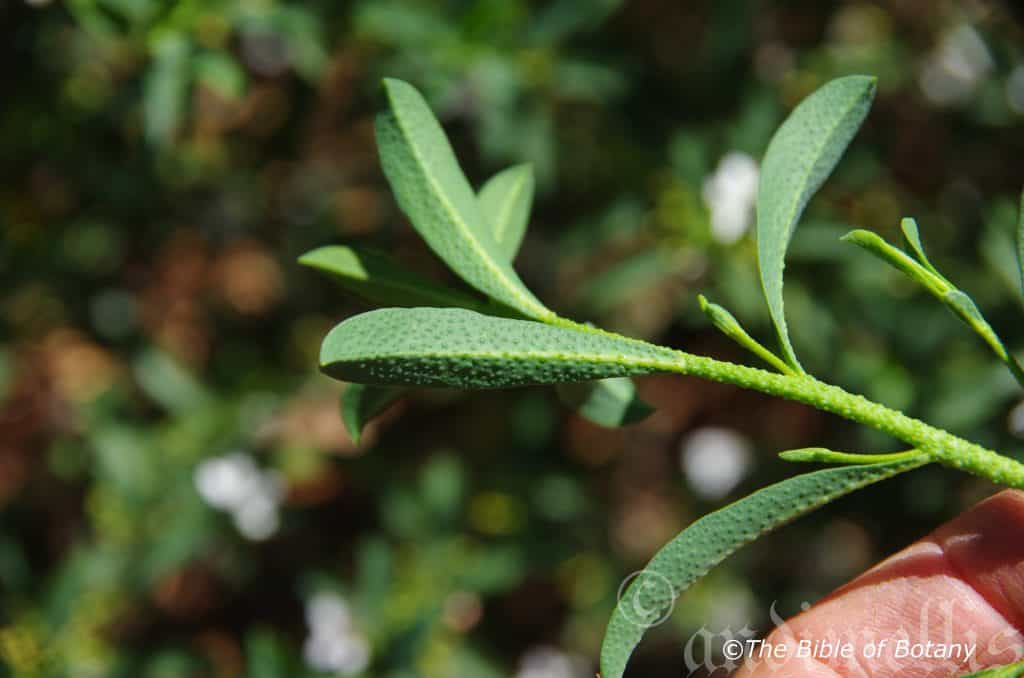
Author’s Garden The Pinnacles NSW

Author’s Garden The Pinnacles NSW
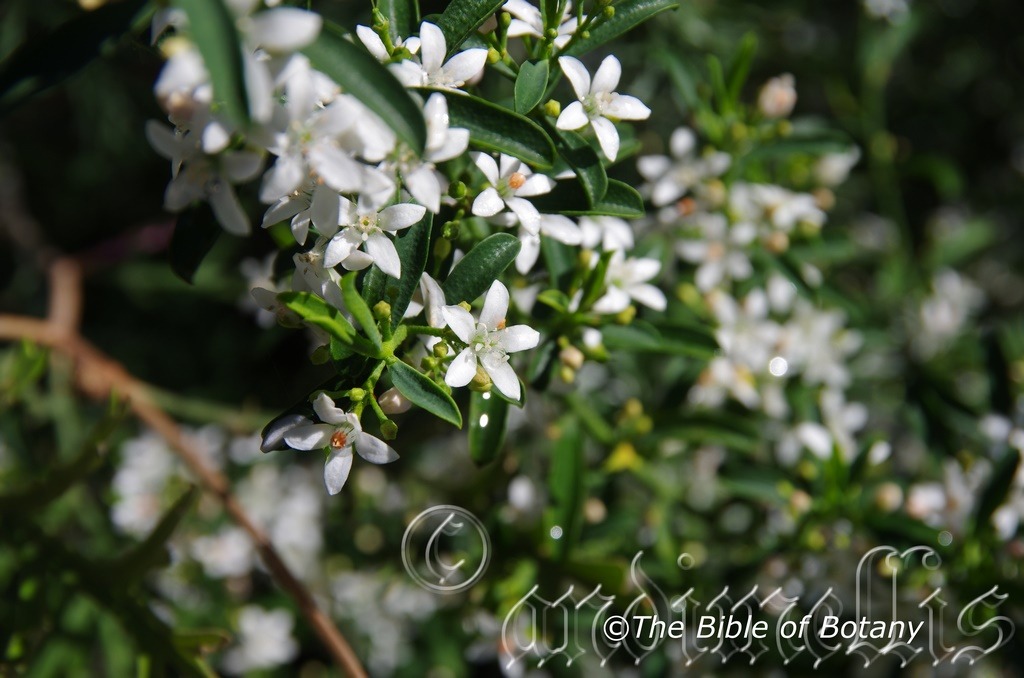
Author’s Garden The Pinnacles NSW

NCBG Coffs Harbour NSW
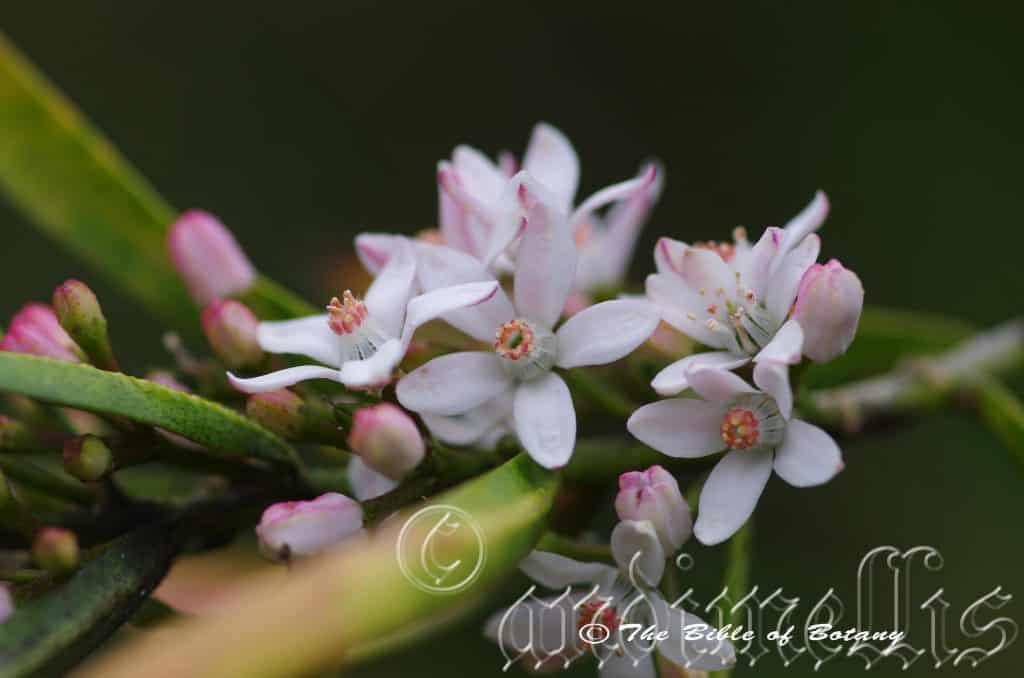
NCBG Coffs Harbour NSW
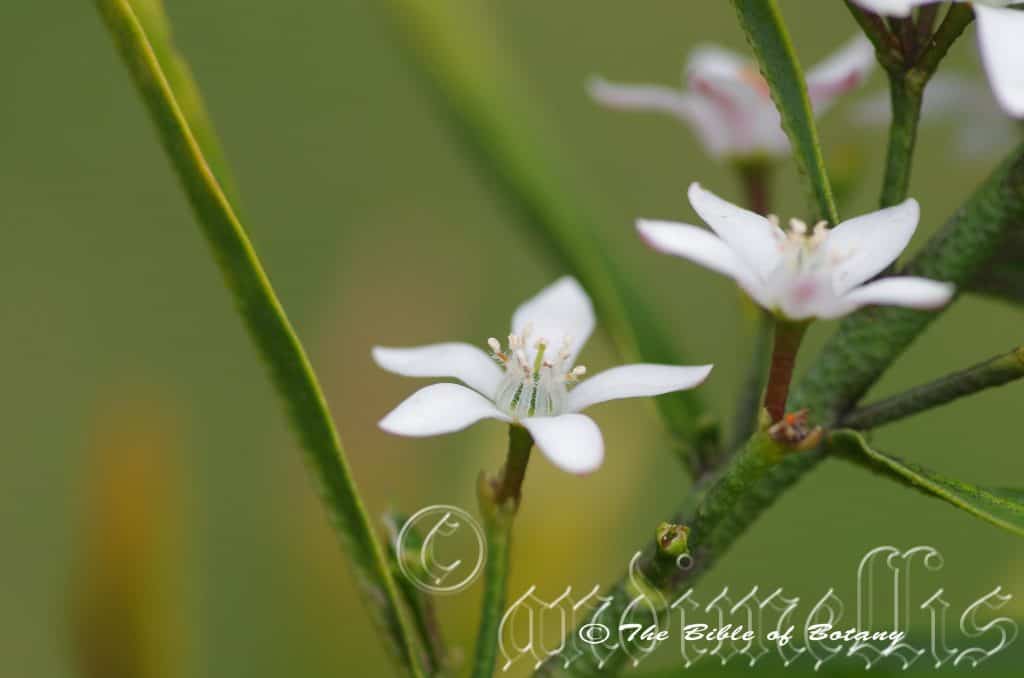
NCBG Coffs Harbour NSW
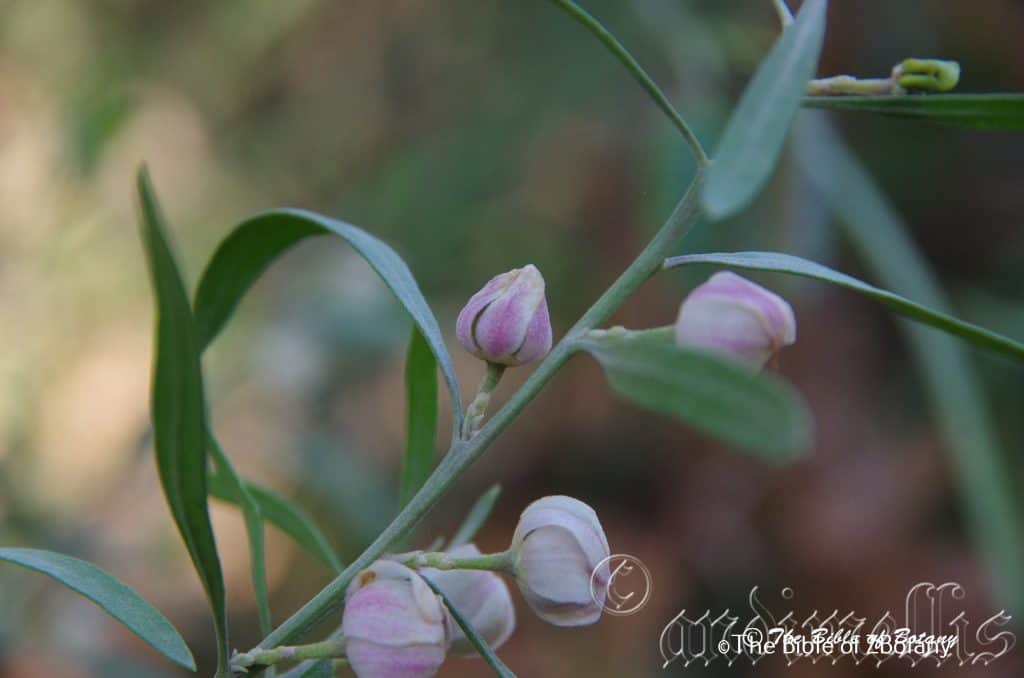
Diamond Beach to Kylie’s Beach Nature Reserve NSW
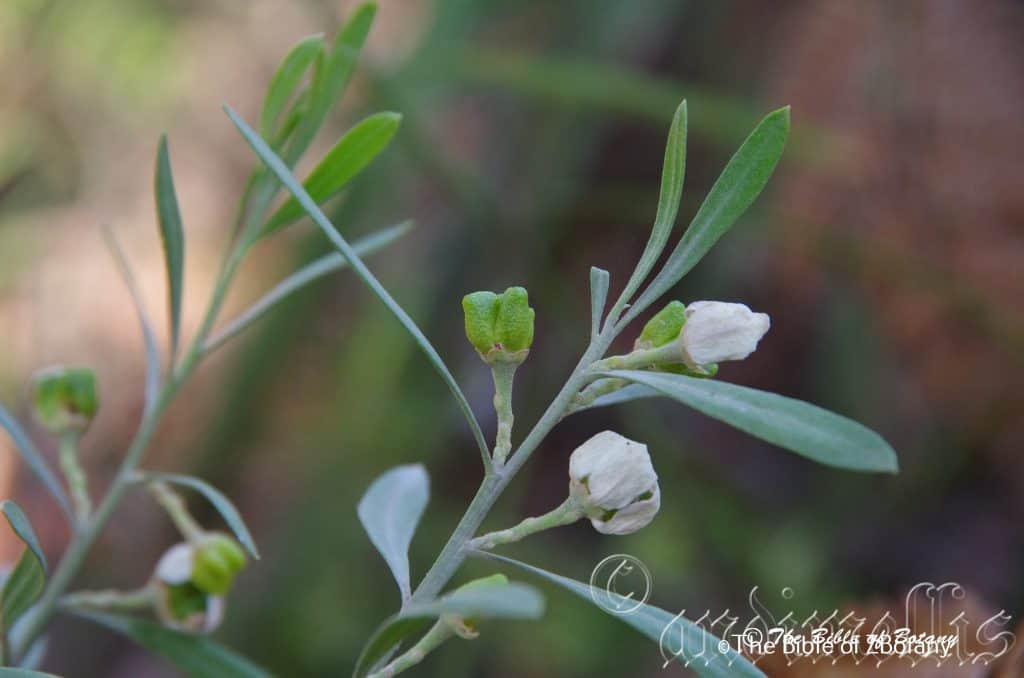
Diamond Beach to Kylie’s Beach Nature Reserve NSW
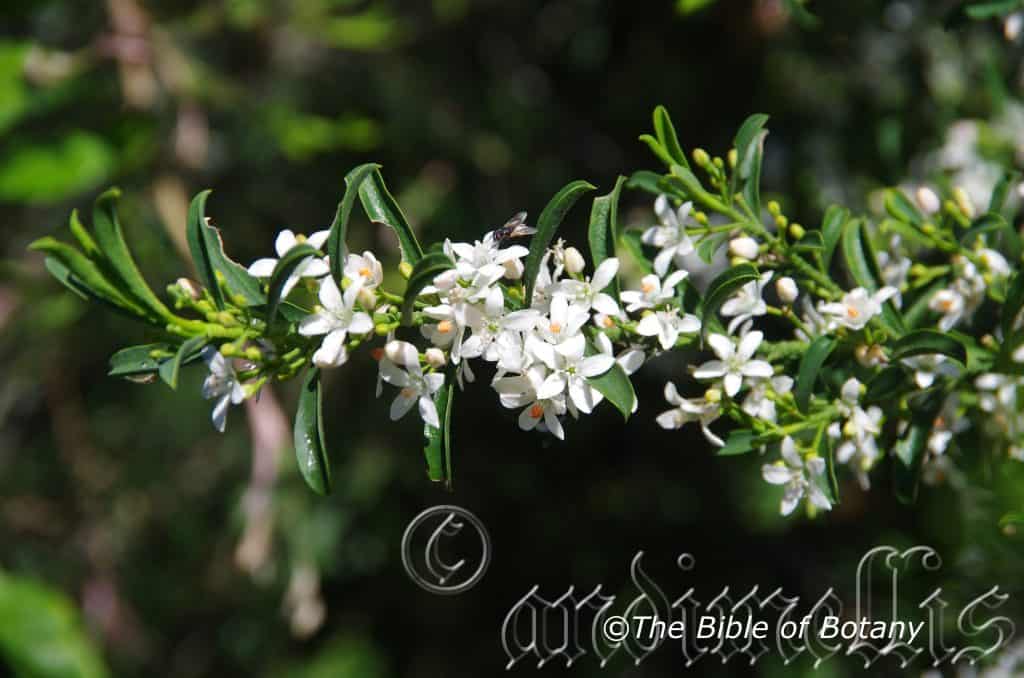
Unknown Fly Author’s Garden The Pinnacles NSW

Author’s Garden The Pinnacles NSW

Author’s Garden The Pinnacles NSW
Philotheca myoporoides
Classification:
Unranked: Eudicots
Unranked: Rosids
Order: Sapindales
Family: Rutaceae
Genus: From Phílos, which is Ancient Greek for loving or to be in love and Theca, which is Ancient Greek for a box. It refers to stamens, which are fused at the base and form glabrous tube that resembles a box.
Specie: From Myo, which is Ancient Greek for to close or be closed, Poros, which is Ancient Greek for a pore or vacuole and Eîdos/Oides, which is Ancient Greek for alike or similar to. It refers to plants, especially the leaves which resemble some those of the Myoporum genus.
Sub specie: Philotheca myoporoides subsp. acuta. FromAcutatum, which is Latin for sharpened, or to sharpen. It refers to apexes on leaves, phyllodes, calyxes or sepals, which taper to a definite point.
Sub specie: Philotheca myoporoides subsp. brevipedunculata. From Brevis, which is Latin for short, Pous/Podion, which is Ancient Greek or Pedi/Pedis, which is Latin for a foot or feet and Latus, which is Latin for extensive or a degree. It refers to peduncles, which are very or extremely short.
Sub specie: Philotheca myoporoides subsp. conduplicata. FromBrevis, which is Latin for short, Pous/Podion, which is Ancient Greek or Pedi/Pedis, which is Latin for a foot or feet and Latus, which is Latin for extensive or a degree. It refers to peduncles, which are very or extremely short.
Sub specie: Philotheca myoporoides subsp. epilosa. From Epi, which is Ancient Greek for upon, above or over, pilose, which is Latin for short, soft wavy hairs and Losa, which is Latin for somewhat. It refers to the stems, which are sparsely or somewhat covered in short, soft wavy hairs.
Sub specie: Philotheca myoporoides subsp. euroensis. FromEuroa, which is Latinized for the township of Euroa and Anum/Ensis, which is Latin for originating from. It refers to plants which were first discovered near the township of Euroa in central Victoria.
Sub specie: Philotheca myoporoides subsp. leichhardtii. Is named in honour of Ludwig Leichhardt 1813-1848, who was a German explorer and botanist in Australia.
Sub specie: Philotheca myoporoides subsp. myoporoides. FromMyo, which is Ancient Greek for to close or be closed, Poros, which is Ancient Greek for a pore or vacuole and Eîdos/Oides, which is Ancient Greek for alike or similar to. It refers to plants, especially the leaves which resemble some those of the Myoporum genus.
Sub specie: Philotheca myoporoides subsp. petraea. FromPetraîos, which is Ancient Greek or Petraeum, which is Latin for a rock or a rocky place. It refers to plants, which prefer to grow on rocky ground or grow in rocky environments.
Common Name: Long Leaf Wax Flower.
Distribution:
Philotheca myoporoides subsp. acuta is found in central and southern New South Wales mainly west of the Great Dividing Range
Philotheca myoporoides subsp. brevipedunculata is found south from Shoalhaven River in souther New South Wales to Rocky Range Faunal Reserve in far north eastern Victoria mainly on and east of the Great Dividing Range.
Philotheca myoporoides subsp. conduplicata is found south from Woodenbong to Guyra on the western slopes of the Great Dividing Range. There is a disjunct population east of the Range south of Grafton.
Philotheca myoporoides subsp. epilosa is found south from Stanthorpe to Glen Innis on the Great Dividing Range.
Philotheca myoporoides subsp. euroensis is found east of Euroa in central Victoria on the Great Dividing Range.
Philotheca myoporoides subsp. leichhardtii is found in 2 disjunct popuplations east of the Great Dividing Range between Gladstone and Bundaberg and around Caloundra.
Philotheca myoporoides subsp. myoporoides is found south from Mount Tamborine in southern Queensland to Wilson’s Promontory in southern Victoria. It grows on the Western Slopes on and east of the Great Dividing Range below the Alpine zones.
Philotheca myoporoides subsp. petraea is found in several disjunct popuplations west, on and east of the Great Dividing Range south from Border Ranges National Park in southern Queensland to the Grampians in south western Victoria.
https://avh.ala.org.au/occurrences/search?taxa=Philotheca+myoporoides #tab_mapView
Habitat Aspect Climate:
Philotheca myoporoides prefers light shade to full sun. It grows in dry schlerophyll forests or in open woodland heaths. The altitude ranges from 30 meters ASL to 450 meters ASL.
The temperatures range from minus 6 degrees in July to 36 degrees in January.
The rainfall ranges from lows of 400mm to 1200mm average per annum.
Soil requirements:
Philotheca myoporoides prefers sandy loams to light fatty clays with a high proportion of gravel and forest litter. The soils are usually derived from decomposed sandstones, brown basalts, black basalts or granites. The soils pH ranges from 5.5pH to 7pH. It does not tolerate of water logged soils. Non saline soils to moderately saline soils are tolerated.
Height & Spread:
Wild Plants: 1.5m to 2m by 1.5m to 2m.
Characteristics:
Philotheca myoporoides subsp. myoporoides grows as a well-rounded small dense shrub. The deep sea-green stems are glabrous to sparsely densely covered in farinaceous warts. Young shoots are deep sea-green, terete, sometimes glaucous and glabrous to sparsely covered in farinaceous lumps.
Philotheca myoporoides subsp. acuta and Philotheca myoporoides sub sp. brevipedunculata grows as a well-rounded small dense shrub. Stems a deep sea-green and densely covered in farinaceous warts. Young shoots a deep sea-green, terete, sometimes glaucous and sparsely to densely covered in small papillose lumps.
The alternate narrow linear, oblong-elliptical to oblanceolate leaves of Philotheca myoporoides subsp. myoporoides measure 20mm to 110mm in length by 6mm to 22mm in width. The bases are narrow cuneate, tapering to truncate while the apexes are acute to obtuse. The concolourous laminas are deep sea-green, glabrous and sparsely to densely covered in small papillose lumps. The leaf margins are entire and a flat to conduplicate. The mid vein is slightly prominent on the upper lamina and is not visible on the upper lamina. The lamina is decurve from the base to the apex. The leaves are sessile.
The alternate oblong-elliptical to elliptical or rarely oblanceolate leaves of Philotheca myoporoides subsp. acuta measure 25mm to 40mm in length by 4mm to 8mm in width. The base is narrowly cuneate to truncate while the apex is acute to obtuse with a mucronate tip. The concolourous laminas a deep sea green and glabrous. The leaf margins are entire, flat and a weakly to strongly decurve from the mid vein to the margins. The mid vein is slightly prominent on the upper lamina and is not visible on the upper lamina. The leaves are sessile.
The alternate narrow oblong-elliptical to obovate leaves of Philotheca myoporoides subsp. brevipedunculata measure 13mm to 30mm in length by 5mm to 10mm in width. The base is narrowly cuneate to rounded, while the apex is obtuse-acute to obtuse or truncate and apiculate. The concolourous laminas are deep sea-green and glabrous. The leaf margins are entire, flat and at times a tinged with purple. The mid vein is slightly prominent on the upper lamina and is not visible on the upper lamina. The leaves are sessile.
Inflorescences of Philotheca myoporoides subsp. myoporoides a born in groups of 3 to 8 from the leaf axils. The pedicels measure 4mm to 10mm in length while the peduncles measure 2mm to 20mm in length. The flowers are white, pale pink to a mid-pink. The calyxes measure 1mm to 1.2mm in length over all. There are 5 short triangular lobes on the calyx which measure 0.5 in length. The oblong to elliptical petals a weakly keeled externally and measure 7mm to 10mm in length by 3mm to 4mm in width. The apex is acute to obtuse. It is slightly decurve at the tips and inflexed margins near the base while the base is contorted.
The 10 white stamens a free for their entire length and form a turbinate staminal tube surrounding the pistil. The filaments measure 4mm to 5mm in length. The flattened filaments have ciliate margins at the base becoming more pilose near the apex. The anthers are yellow brown or orange brown.
The 2mm green style has 5 distinct pale green glands surrounding the base of the style. Philotheca verrucosa flowers from late September through to early November and again in mid-March to early May.
Inflorescences of Philotheca myoporoides subsp. acuta a born in groups of 1 to 3 from the leaf axils. The pedicels measure 1mm to 10mm in length while the peduncles a sessile to 5mm in length. The flowers are white, pale pink to a mid-pink. The calyxes measure 1mm to 1.2mm in length over all. There are 5 short triangular lobes on the calyx which measure 0.5 in length. The broadly elliptical petals a strongly keeled externally and measure 7mm to 10mm in length by 3mm to 4mm in width. The apex is acute to obtuse. The petals are slightly decurve at the tips and inflexed margins near the base while the base is contorted.
The 10 white stamens a free for their entire length and form a turbinate staminal tube surrounding the pistil. The filaments measure 4mm to 5mm in length. The flattened filament margins a covered in white ciliate hairs on the basal the quarters and ciliate and pilose hairs on the upper quarter. The anthers are yellow-brown to orange brown.
The 2mm green style has 5 distinct pale green glands surrounding the base of the style. Philotheca verrucosa flowers from late September through to early November and again in mid-March to early May.
Inflorescences of Philotheca myoporoides subsp. brevipedunculata a born in groups of 1 to 4 from the leaf axils. The pedicels measure 4mm to 8mm in length while the peduncles a sessile to 2mm in length. The flowers are white, pale pink to a mid-pink. The calyxes measure 1mm to 1.2mm in length over all. There are 5 short triangular lobes on the calyx which measure 0.5 in length. The broadly elliptical petals a strongly keeled externally and measure 7mm to 10mm in length by 3mm to 4mm in width. The apex is acute to obtuse. The petals are slightly decurve at the tips and inflexed margins near the base while the base is contorted.
The 10 white stamens a free for their entire length and form a turbinate staminal tube surrounding the pistil. The filaments measure 4mm to 5mm in length. The flattened filament margins a covered in white ciliate hairs on the basal half and pilose hairs on the apex half. The anthers are yellow brown to orange brown.
The 2mm green style has 5 distinct pale green glands surrounding the base of the style. Philotheca verrucosa flowers from late September through to early November and again in mid-March to early May.
Philotheca myoporoides subsp. myoporoides’s fruits are swollen cocci with a 3mm acute beak. The cocci are obovate to oblong and measure 6mm to 7mm long by 5mm to 6mm wide at the base. The cocci turn pale creamy fawn and a slightly divaricate when ripe.
Philotheca myoporoides subsp. acuta fruits are swollen cocci with a 3mm acuminate beak. The cocci are obovate to oblong and measure 6mm to 7mm long by 5mm to 6mm wide at the base. The cocci turn pale creamy fawn and a divaricate when ripe.
Philotheca myoporoides subsp. brevipedunculata’s fruits are swollen cocci without a beak. The cocci are obovate to oblong and measure 6mm to 7mm long by 5mm to 6mm wide at the base. The cocci turn pale creamy fawn and a slightly divaricate when ripe.
Wildlife:
Philotheca myoporoides does not appear to have any predators though the flowers are occasionally visited by the native bee Tetragonula carbonaria.
Cultivation:
Philotheca myoporoides is a magnificent small shrub that deserves a place in every temperate native or exotic garden. It is ideal in almost every setting near ponds, at the edge of a rain forest in court yards, around swimming pools or larger rockeries where its size is balanced. In cultivation it grows from 1.5 meters to 2.5 meters in height by 1.5 meters to 2.5 meters in diameter. There is a single and a double flowering form available from nurseries.
It grows exceptionally well on lighter soils When deep leaf litter keeps the soil cool and moisture at an even level. If these requirements are met they can cope with temperatures as low as minus 5 degrees and up to 33 degrees. It is moderately drought tolerant in their rainfall zones.
Add to the above, if it is given an adequate supply of native fertilizers on a regular basis the plants will respond with spectacular flowering over a long period.
It often reaches its full potential in just 3 years and flower from the second year from seed. Plants will live naturally for 6 to 8 years so should be placed every 5 to 6 years to maintain continuity in blossom.
Be imaginative when planting in mass. Use the plants in different configurations and use curves. Light pruning after flowering or tip pruning will enhance the shrubs bushiness and provide longer stronger flower stems in the following season.
It is best used adjacent to small areas of bush close to paths or the house so their pink flowers can be viewed regularly. It is great in small to large rockeries as a fill in plant. Here it can be planted in small groups of 2 or 3 scatted as you would find them in nature to give a great bush scene. It is best used in the mid ground surrounded by shorter plants with fine foliages with white or red flowers so it dominates at the center of the bed especially when it is in flower. This is one plant that benefits highly from being mass planted or planted in scatted clumps. The small size enables this to be achieved and their open habit allows for planting closer together so the branches intertwine. This type of planting should have centers of 0.4 meters to 1.5 meters.
Six or seven planted back from a bend will become a very strong focal point when planted in this manner especially when it is in bloom. That is when it will gain a lot of attention whether you a coming or going because of the fresh clean look of the foliage even in the driest of times. It can be regularly tip pruned if a smaller shrub is quid. It responds well to pruning covering quickly and often encasing the number of flowers in the following season.
Ensure that the whole plant or at least most of it is on display from most sections of the garden as the flowers are a real bonus.
When it flowers it will catch your attention and the viewer will be transfixed on the display rather than watching the path. Plant them at 0.8 meter to 1 meter centers.
Propagation:
Seeds: The seeds can be moved easily from the plants as they dry. Once Philotheca myoporoides has finished flowering and the fruits have swollen place an old sheet below the plants and keep a close eye on it. Peg it down so it doesn’t blow around. When the seeds start to disperse, it can be all over in one day; especially if the weather turns hot, with the seeds being scatted on the ground. Clean the rubbish off and sieve the material for the seeds.
Seeds need to be treated by rubbing between fine sandpaper. Another method is to drop them into hot water and allow it to cool. I have also laid the rubbish out at the time of collecting and burnt it with the seeds still amongst the rubbish. No one method has proven better than the other, with all producing erratic results but better than if I did not tat the seeds.
Sow freshly treated seeds directly into a seed raising mix, keeping them moist not wet. When the seedlings are 20mm to 25mm tall, prick them out and plant them into 50mm native tubes using a good organic mix.
As the seedlings roots ach the bottom of the tubes plant them out into their permanent position. Do not delay.
Cuttings: Philotheca myoporoides cuttings are relatively easy to strike from cuttings and must be used if a particular flower colour form is required. Use 80mm to 120mm long tip cuttings or lateral shoots from the present season’s growth. Take them in warmer months of the year. Remove half the leaves from the bottom section being careful not to tear the bark.
1 Prepare the cutting mix by adding two thirds sharp clean river sand, one third peat or one third perlite. These ingredients must be sterilized,
2 Select good material from non diseased plants,
3 Select semi green stems for cuttings. Look for a stem with two or three nodes,
4 Place the cutting on a flat, hard surface, and make a clean cut down one side of the cutting at the base for 10mm with a sharp sterile knife or razor blade. – This scarification of the node will increase the chances of roots emerging from this spot. Now remove all but one or two the leaves, leaving the apex leaves in tact. If the leaves are very large in proportion to the stem, cut off the apical halves.
5 Fill a saucer with water, and place a little medium strength rooting hormone into another container like a milk bottle top. Dip the node end of the cutting into the water and then into the rooting hormone. Tap off any excess hormone,
6 Use a small dipple stick or old pencil to poke a hole into the soilless potting mix. Ensure the hole is slightly larger than the stem diameter and be careful not to wipe the rooting hormone off the cuttings base. Place 2 to 4 cuttings in each of the 50mm native tubes,
7 I like to place the tubes in bucket with holes drilled in the bottom to allow excess water to drain out. A plastic bag that fits over the bucket is ideal to help maintain temperature and moisture. Place in a semi shaded, warm position like under 50mm shade cloth.
8 When the cuttings have struck, open the bag to allow air circulation for a few days to a week,
9 Once hardened off remove the cuttings from the bag and allow to further hardening for a few more days to a week,
10 Transplant into a good potting mix to grow on.
Fertilize using seaweed, fish emulsion or organic chicken pellets soaked in water on an alternate basis. Fertilize every two months until the plants are established then twice annually in early September or March to maintain health, vitality and better flowering.
Further Comments from Readers:
“Hi reader, it seems you use The Bible of Botany a lot. That’s great as we have great pleasure in bringing it to you! It’s a little awkward for us to ask, but our first aim is to purchase land approximately 1,600 hectares to link several parcels of N.P. into one at The Pinnacles NSW Australia, but we need your help. We’re not salespeople. We’re amateur botanists who have dedicated over 30 years to saving the environment in a practical way. We depend on donations to reach our goal. If you donate just $5, the price of your coffee this Sunday, We can help to keep the planet alive in a real way and continue to bring you regular updates and features on Australian plants all in one Botanical Bible. Any support is greatly appreciated. Thank you.”
In the spirit of reconciliation we acknowledge the Bundjalung, Gumbaynggirr and Yaegl and all aboriginal nations throughout Australia and their connections to land, sea and community. We pay our respect to their Elders past, present and future for the pleasures we have gained.
Philotheca papillata
Classification:
Unranked: Eudicots
Unranked: Rosids
Order: Sapindales
Family: Rutaceae
Genus: From Phílos, which is Ancient Greek for loving or to be in love and Theca, which is Ancient Greek for a box. It refers to stamens, which are fused at the base and form glabrous tube that resembles a box.
Specie: From Papula, which is Latin for a nipple or little bumps. It refers to small bumps, which resemble those found on the areola of breasts or goose bumps.
Sub specie:
Common Name: Cliff Wax Flower.
Distribution:
Philotheca papillata is found from a single location on the north coast of New South Wales in Sherwood Forest.
https://avh.ala.org.au/occurrences/search?taxa=Philotheca+papillata#tab_mapView
Habitat Aspect Climate:
Philotheca papillata prefer dappled shade to full sun. It grows adjacent to heaths in dry, low open forests. The altitude ranges from 320 meters ASL to 380 meters ASL.
The temperatures range from minus 1 degree in July to 40 degrees in January.
The rainfall ranges from lows of 850mm to 1150mm average per annum.
Soil requirements:
Philotheca papillata prefer red sandy loams to light fatty sandy clays. The soils are usually derived from partially decomposed sandstone or decomposed sandstones close to the parent rock. The soils pH ranges from 5pH to 6pH. It does not tolerate of water logged soils. Non saline soils to slightly saline soils are tolerated.
Height & Spread:
Wild Plants: 0.5m to 0.6m by 0.5m to 0.6m.
Characteristics:
Philotheca papillata grows as an erect, small multi stemmed, open shrub. The stems are grey, glabrous with bright pale lime green young stems close to the apex. The stems and new shoots are covered in white pilose hairs. It often sends up suckers from the roots When damaged or after fire.
The alternate narrow incurved elliptical leaves of Philotheca papillata are crowded along the ends of the branchlets. They measure 9mm to 12mm in length by 1mm to 1.6mm in width. The base is narrow tapering into an indefinite petiole while the apex is long tapering to a fine point. The concolourous laminas are lime-green, glabrous and sparsely to densely covered in small papillose lumps. The leaf margins are entire. The mid vein is curves back towards the apex. The petiole measures 0.8mm to 1mm in length.
Inflorescences of Philotheca papillata are born singularly from the terminals. The 5 pale lime green sepal lobes measure 1.5 to 2mm in length and are covered in white pubescent hairs. The 5 elliptical lilac petals measure 8mm to 10mm in length by 4mm to 5mm in width. The petals are covered in white pulverulent hairs. The apex is acute and slightly curved at the tips.
The 10 white filaments are free for their entire length and form are turbinate staminal tube surrounding the pistil. The filaments measure 6.5mm to 8mm overall. The filaments are densely covered in long white pilose hairs which measure 1.2mm to 1.4mm in length. The ovate, apiculate anthers are fawn to ochre and measure 1.2mm in length by 0.5mm in diameter. It is glabrous and covered in minute papillate lumps.
The 5 carpels are fused at the base and are covered in white tomentose hairs. The terete style has pale lime-green stigma. Philotheca papillata flowers from September through to early November.
Philotheca papillata fruits are swollen cocci. The cocci are obovate to oblong and measure 5mm to 6mm long by 5mm to 6mm wide at the base. The cocci are covered in white pilose hairs.
Wildlife:
Eriostemon papillata’s wildlife is unknown to the author.
Cultivation:
Philotheca papillata is a magnificent small rounded shrub that deserves a place in every temperate or sub-tropical native or exotic garden. It is ideal in almost every setting near ponds, at the edge of a rain forest in court yards, around swimming pools or in rockeries. In cultivation they will grow from 0.5 meters to 0.8 meters in height by 0.5 meters to 0.7 meters in diameter when grown in the open.
It grows exceptionally well on lighter soils When deep leaf litter keeps the soil cool and moisture at an even level. If these requirements are met they can cope with temperatures as low as minus 6 degrees and up to 36 degrees. It can be tipped pruned to encourage a bushier or a more compact shrub.
It often reaches its full potential in just 3 years and flowers from the second year from seed. Plants will live naturally for 6 to 10 years so should be placed every 5 to 6 years to maintain continuity.
Be imaginative when planting in mass. Use the plants in different configurations and use curves. Light pruning after flowering or tip pruning will enhance the shrubs bushiness and provide longer stronger flower stems in the following season.
Philotheca papillata would make outstanding contribution to a moist heath garden. Here it can be used as the taller growing plant scatted throughout the heath scene. When you design a flat heath garden which this Philotheca is well suited don’t use contours to display the plants as heath lands are almost always flat or have a slight rise. Plants must be planted close together and be short so you can see over the tallest ones with the exception of one or two plants at the most. These will be feature plants. The idea is to achieve a feeling of expansive flatness. This can be achieved with using the Philotheca papillata’s green linear leaves and having them contrasting with larger deep green or soft grey to glaucous coloured foliage. Use a lot of procumbent plants like Xerochrysum bracteatum, Xerochrysum viscosum, Carpobrotus edulis or Hibbertia specie. Mix them with other smaller shrubs so none of them dominate the scene but blend in to give a mosaic of foliage colours that you oversee. He I immediately think of Actinotis helianthi or Grevillea thelemanniana for two great contrasting foliage.
It can be used to great affect by planting a meandering row stretching back from the path like a river. Plant either side with slightly taller plants with large deep green leaves and red or white flowers for a great contrast. In this scene you may have to keep them pruned below 0.5 meters for the best affect.
Ensure that the whole plant or at least most of it is on display from most sections of the garden as the flowers are a real bonus.
When it flowers it will catch your attention and the viewer will be transfixed on the display rather than watching the path. Plant them at 0.8 meter to 1 meter centers.
Propagation:
Seeds: Seeds of Philotheca papillata can be moved easily from the plants as they dry. OnceEriostemon papillata has finished flowering and the fruits have swollen place an old sheet below the plants and keep a close eye on it. Peg it down so it doesn’t blow around. When the seeds start to disperse, it can be all over in one day; especially if the weather turns hot, with the seeds being scatted on the ground. Clean the rubbish off and sieve the material for the seeds.
Seeds need to be treated by rubbing between fine sandpaper. Another method is to drop them into hot water and allow it to cool. I have also laid the rubbish out at the time of collecting and burnt it with the seeds still amongst the rubbish. No one method has proven better than the other, with all producing erratic results but better than if I did not tat the seeds.
Sow freshly treated seeds directly into a seed raising mix, keeping them moist not wet. When the seedlings are 20 to 25 mm tall, prick them out and plant them into 50mm native tubes using a good organic mix.
As the seedlings roots ach the bottom of the tubes plant them out into their permanent position. Do not delay.
Cuttings: Philotheca papillata cuttings are relatively easy to strike from cuttings and must be used if a particular flower colour form is required. Use 80mm to 120mm long tip cuttings or lateral shoots from the present season’s growth. Take them in warmer months of the year. Remove half the leaves from the bottom section being careful not to tear the bark.
1 Prepare the cutting mix by adding two thirds sharp clean river sand, one third peat or one third perlite. These ingredients must be sterilized,
2 Select good material from non diseased plants,
3 Select semi green stems for cuttings. Look for a stem with two or three nodes,
4 Place the cutting on a flat, hard surface, and make a clean cut down one side of the cutting at the base for 10mm with a sharp sterile knife or razor blade. – This scarification of the node will increase the chances of roots emerging from this spot. Now remove all but one or two the leaves, leaving the apex leaves in tact. If the leaves are very large in proportion to the stem, cut off the apical halves.
5 Fill a saucer with water, and place a little medium strength rooting hormone into another container like a milk bottle top. Dip the node end of the cutting into the water and then into the rooting hormone. Tap off any excess hormone,
6 Use a small dipple stick or old pencil to poke a hole into the soilless potting mix. Ensure the hole is slightly larger than the stem diameter and be careful not to wipe the rooting hormone off the cuttings base. Place 2 to 4 cuttings in each of the 50mm native tubes,
7 I like to place the tubes in bucket with holes drilled in the bottom to allow excess water to drain out. A plastic bag that fits over the bucket is ideal to help maintain temperature and moisture. Place in a semi shaded, warm position like under 50mm shade cloth.
8 When the cuttings have struck, open the bag to allow air circulation for a few days to a week,
9 Once hardened off remove the cuttings from the bag and allow to further hardening for a few more days to a week,
10 Transplant into a good potting mix to grow on.
Fertilize using seaweed, fish emulsion or organic chicken pellets soaked in water on an alternate basis. Fertilize every two months until the plants are established then twice annually in early September or March to maintain health, vitality and better flowering.
Further Comments from Readers:
“Hi reader, it seems you use The Bible of Botany a lot. That’s great as we have great pleasure in bringing it to you! It’s a little awkward for us to ask, but our first aim is to purchase land approximately 1,600 hectares to link several parcels of N.P. into one at The Pinnacles NSW Australia, but we need your help. We’re not salespeople. We’re amateur botanists who have dedicated over 30 years to saving the environment in a practical way. We depend on donations to reach our goal. If you donate just $5, the price of your coffee this Sunday, We can help to keep the planet alive in a real way and continue to bring you regular updates and features on Australian plants all in one Botanical Bible. Any support is greatly appreciated. Thank you.”
In the spirit of reconciliation we acknowledge the Bundjalung, Gumbaynggirr and Yaegl and all aboriginal nations throughout Australia and their connections to land, sea and community. We pay our respect to their Elders past, present and future for the pleasures we have gained.
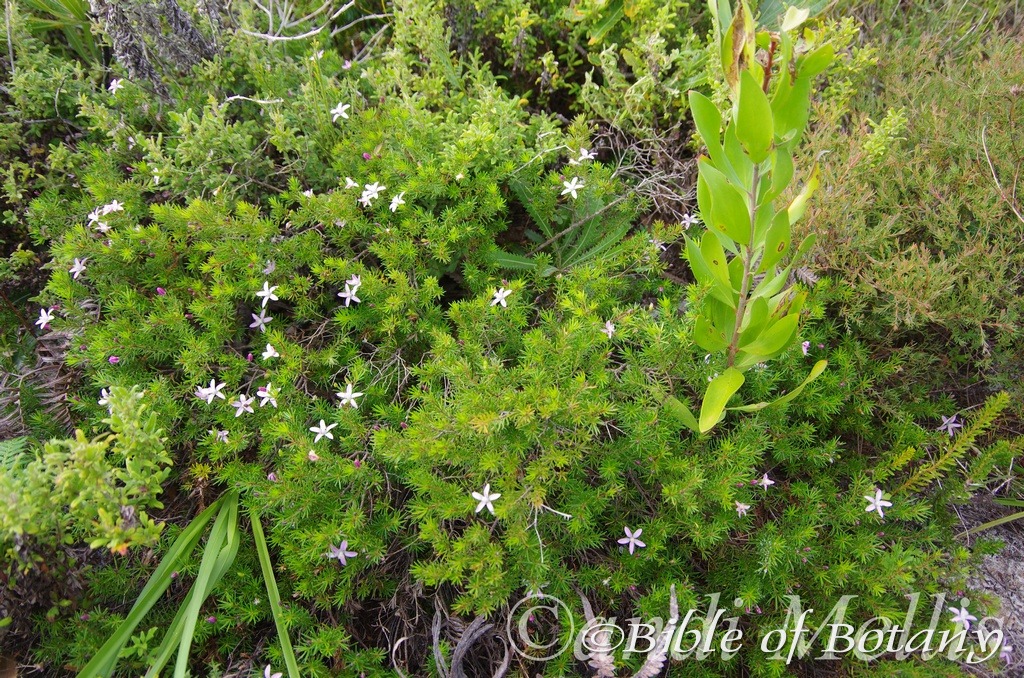
Philotheca salsolifolia subsp. pedicellata North Yuraygir National Park NSW

Philotheca salsolifolia subsp. salsolifolia National Botanic Gardens ACT
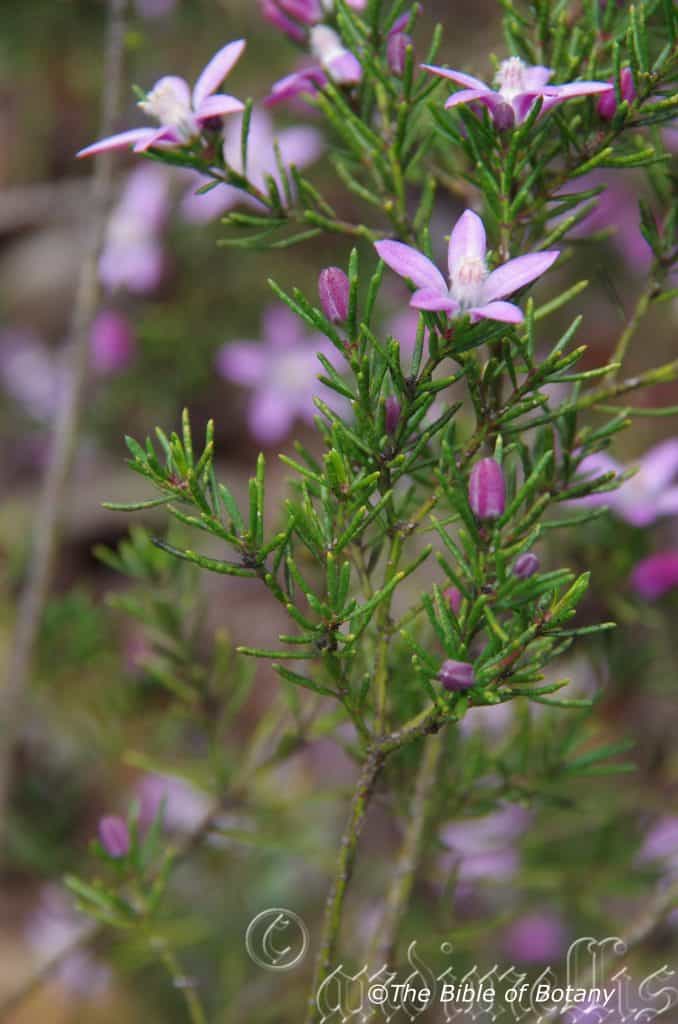
Philotheca salsolifolia subsp. salsolifolia National Botanic Gardens ACT

Philotheca salsolifolia subsp. pedicellata North Yuraygir National Park NSW

Philotheca salsolifolia subsp. salsolifolia National Botanic Gardens ACT

Philotheca salsolifolia subsp. salsolifolia National Botanic Gardens ACT
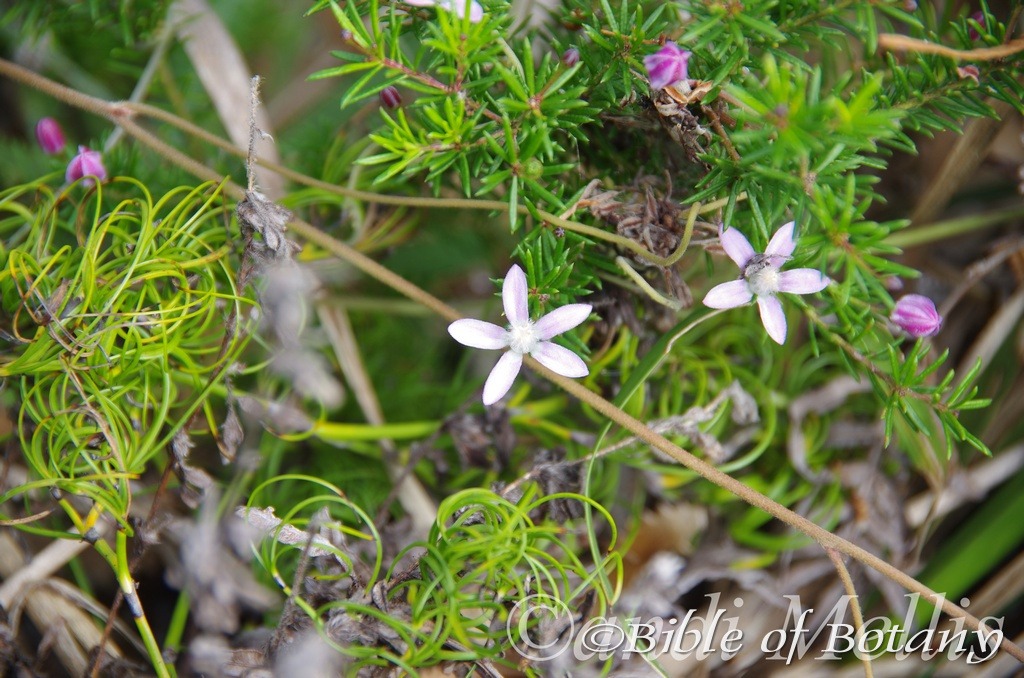
Philotheca salsolifolia subsp. pedicellata North Yuraygir National Park NSW

Philotheca salsolifolia subsp. pedicellata North Yuraygir National Park NSW
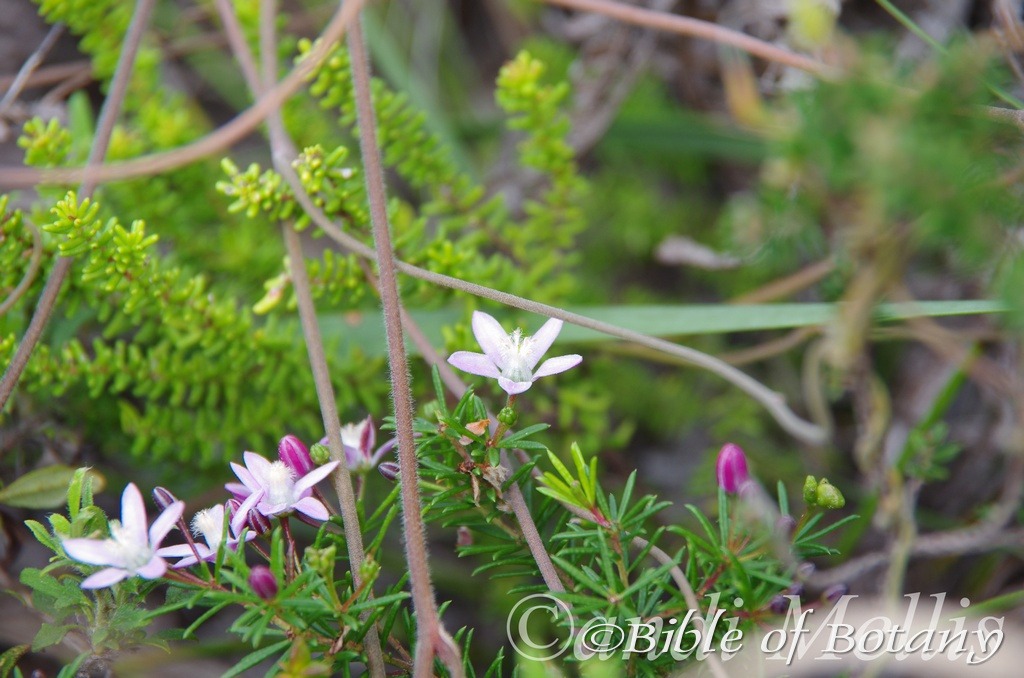
Philotheca salsolifolia subsp. pedicellata North Yuraygir National Park NSW
Philotheca salsolifolia
Classification:
Unranked: Eudicots
Unranked: Rosids
Order: Sapindales
Family: Rutaceae
Genus: From Phílos, which is Ancient Greek for loving or to be in love and Theca, which is Ancient Greek for a box. It refers to stamens, which are fused at the base and form glabrous tube that resembles a box.
Specie: From Sal, which is Ancient Greek or Salsa, which is Latin for salt and Folium, which is Latin for foliage. It refers to plants, whose leaves have a high content or can withstand salt laden winds.
Sub specie: Philotheca salsolifolia subsp. pedicellata. From Pous, which is Ancient Greek or Pes/Pedi, which is Latin for a little foot or feet. It refers to flowers, which have very short pedicels which are almost subsessile.
Sub specie: Philotheca salsolifolia subsp. salsolifolia. From Sal, which is Ancient Greek or Salsa, which is Latin for salt and Folium, which is Latin for foliage. It refers to plants, whose leaves have a high content or can withstand salt laden winds.
Common Name:
Distribution:
Philotheca salsolifolia subsp. pedicellata is found in several disjunct populations south from Bundjalung National Park to Boat Beach in coastal eastern New South Wales.
Philotheca salsolifolia subsp. salsolifolia is found south from the head waters of the Clarence River to the Bega Valley on the western slopes, on and east of the Great Dividing Range in New South Wales.
https://avh.ala.org.au/occurrences/search?taxa=Philotheca+salsolifolia #tab_mapView
Habitat Aspect Climate:
Philotheca salsolifolia prefers dappled shade to full sun. It grows in rocky heaths on rocky outcrops in dry woodland heaths, dry sclerophyll forests moist sclerophyll forests or Eucalyptus woodlands. The altitude ranges from 5 meters ASL to 720 meters ASL.
The temperatures range from minus 4 degrees in July to 37 degrees in January.
The rainfall ranges from lows of 500mm to 1800mm average per annum.
Soil requirements:
Philotheca salsolifolia usually prefers soils that are white sands, white, grey or black sandy loams to light fatty clays. The soils are usually derived from partially decomposed sandstones, granites or decomposed sandstones or granites. The soils pH ranges from 5pH to 6pH. It does not tolerate water logged soils. Non saline soils to very saline soils are tolerated as are salt laden winds.
Height & Spread:
Wild Plants:0.5m to 2m by 0.5m to 1.6m
Characteristics:
Philotheca salsolifolia grows as an erect, small multi stemmed, open to bushy shrub. The lower and middle stems are grey-green while the upper terete stems are pale green to grass-green and glabrous or sparsely covered in white puberulent hairs.
The alternate linear to subterete leaves of Philotheca salsolifolia are crowded to being placed sparsely along the stems. They measure 3mm to 15mm in length by 1mm to 1.5mm in width. The yellowish-green petioles measure 1.5mm to 2mm in length. The bases taper to the stem while the apexes are acute to obtuse. The concolourous laminas are mid green to sea-green, finely glandular and glabrous. The laminas decurve strongly downwards from the mid vein to the margins while the leaf margins are entire to crenate and very sparsely covered in white ciliate hairs. The mid vein is not prominent on either lamina.
The inflorescences of Philotheca salsolifolia are born solitary or in small clusters of 2 or 3 individual sessile flowers from the leaf axils. The 5 pale green, broad triangular sepal lobes measure 1 to 1.5mm in length and are covered in white pubescent hairs. The 5 lanceolate pink to purple are deeper coloured below and along the midline. The petals measure 6mm to 12mm in length by 2.5mm to 4mm in width. The petals are sparsely to densely covered in short white, pale grey or bluish soft hirsute hairs. The apex is tapering obtuse.
The 10 flattened oblong to linear filaments form an obturbinate staminal tube surrounding the style. The white filaments are united at the base or free and measure 4mm to 6mm in length. The filaments are glabrous except for the apical section which is moderately to densely covered in white pilose hairs. The oblong or elliptical, apiculate dorsifixed anthers are pinkish and glabrous.
The pale green ovary has 5 carpels and is glabrous. The terete style has yellowish-orange stigma. The flowers appear from late September to early November with a lesser flowering from September to December.
Philotheca salsolifolia’s fruits are compressed, erect oblong cocci. The cocci measure 5mm to 6mm in length by 5mm to 6mm in width with a pronounced apiculate beak.
Confusing Subspecie Varieties:
Philotheca salsolifolia subsp. pedicellata’s slender terete pedicels measure 6mm to 9mm in length. The linear leaves are flattened on upper surfaces and crowded along the stems. The leaves are glabrous with acute apexes. They measure 8mm to 15mm in length. The cocci are divaricate.
Philotheca salsolifolia subsp. salsolifolia’s turbinate pedicels measure 1mm to 2mm in length. The leaves are crowded to disjunct and are semi terete, thick and measure 3mm to 5mm length or are terete, slender, acute and 10mm to 15mm in length. The leaves are glabrous or slightly ciliate along the margins while the cocci are almost erect.
Wildlife:
Philotheca salsolifolia’s wildlife is unknown to the author.
Cultivation:
Philotheca salsolifolia is a magnificent small rounded shrub that deserves a place in every temperate or sub-tropical native or exotic garden. It is ideal in almost every setting near ponds, at the edge of a rain forest in court yards, around swimming pools or in rockeries. In cultivation they will grow from 1 meter to 1.5 meters in height by 1 meter to 2 meters in diameter when grown in the open.
It grows exceptionally well on lighter soils When deep leaf litter keeps the soil cool and moisture at an even level. If these requirements are met they can cope with temperatures as low as minus 6 degrees and up to 36 degrees. It can be tipped pruned to encourage a bushier or more compact shrub.
It often reaches its full potential in just 3 years and flowers from the second year from seed. Plants will live naturally for 6 to 10 years so should be placed every 5 to 6 years to maintain continuity.
Be imaginative when planting in mass. Use the plants in different configurations and use curves. Light pruning after flowering or tip pruning will enhance the shrubs bushiness and provide longer stronger flower stems in the following season.
Philotheca salsolifolia would make outstanding contribution to a moist heath garden. Here it can be used as the taller growing plant scatted throughout the heath scene. When you design a flat heath garden which this Philotheca is well suited don’t use contours to display the plants as heath lands are almost always flat or have a slight rise. Plants must be planted close together and be short so you can see over the tallest ones with the exception of one or two plants at the most. These will be feature plants. The idea is to achieve a feeling of expansive flatness. This can be achieved with using the Philotheca salsolifolia’s green linear leaves and having them contrasting with larger deep green or soft grey to glaucous coloured foliage. Use a lot of procumbent plants like Xerochrysum bracteatum, Xerochrysum viscosum, Carpobrotus edulis or Hibbertia specie. Mix them with other smaller shrubs so none of them dominate the scene but blend in to give a mosaic of foliage colours that you oversee. He I immediately think of Actinotis helianthi or Grevillea thelemanniana for two great contrasting foliage.
It can be used to great affect by planting a meandering row stretching back from the path like a river. Plant either side with slightly taller plants with large deep green leaves and red or white flowers for a great contrast. In this scene you may have to keep them pruned below 0.5 meters for the best affect.
Ensure that the whole plant or at least most of it is on display from most sections of the garden as the flowers are a real bonus.
When it is in flower these plants will catch your attention and the viewer will be transfixed on the display rather than watching the path. For mass plantings plant them at 1 meter to 2 meter centers.
Propagation:
Seeds: The seeds of Philotheca salsolifolia can be moved easily from the plants as they dry. Once Eriostemon papillata has finished flowering and the fruits have swollen place an old sheet below the plants and keep a close eye on it. Peg it down so it doesn’t blow around. When the seeds start to disperse, it can be all over in one day; especially if the weather turns hot, with the seeds being scatted on the ground. Clean the rubbish off and sieve the material for the seeds.
Seeds need to be treated by rubbing between fine sandpaper. Another method is to drop them into hot water and allow it to cool. I have also laid the rubbish out at the time of collecting and burnt it with the seeds still amongst the rubbish. No one method has proven better than the other, with all producing erratic results but better than if I did not tat the seeds.
Sow freshly treated seeds directly into a seed raising mix, keeping them moist not wet. When the seedlings are 20mm to 25mm tall, prick them out and plant them into 50mm native tubes using a good organic mix.
As the seedlings roots ach the bottom of the tubes plant them out into their permanent position. Do not delay.
Cuttings: Philotheca salsolifolia cuttings are relatively easy to strike from cuttings and must be used if a particular flower colour form is required. Use 80mm to 120mm long tip cuttings or lateral shoots from the present season’s growth. Take them in warmer months of the year. Remove half the leaves from the bottom section being careful not to tear the bark.
1 Prepare the cutting mix by adding two thirds sharp clean river sand, one third peat or one third perlite. These ingredients must be sterilized,
2 Select good material from non diseased plants,
3 Select semi green stems for cuttings. Look for a stem with two or three nodes,
4 Place the cutting on a flat, hard surface, and make a clean cut down one side of the cutting at the base for 10mm with a sharp sterile knife or razor blade. – This scarification of the node will increase the chances of roots emerging from this spot. Now remove all but one or two the leaves, leaving the apex leaves in tact. If the leaves are very large in proportion to the stem, cut off the apical halves.
5 Fill a saucer with water, and place a little medium strength rooting hormone into another container like a milk bottle top. Dip the node end of the cutting into the water and then into the rooting hormone. Tap off any excess hormone,
6 Use a small dipple stick or old pencil to poke a hole into the soilless potting mix. Ensure the hole is slightly larger than the stem diameter and be careful not to wipe the rooting hormone off the cuttings base. Place 2 to 4 cuttings in each of the 50mm native tubes,
7 I like to place the tubes in bucket with holes drilled in the bottom to allow excess water to drain out. A plastic bag that fits over the bucket is ideal to help maintain temperature and moisture. Place in a semi shaded, warm position like under 50mm shade cloth.
8 When the cuttings have struck, open the bag to allow air circulation for a few days to a week,
9 Once hardened off remove the cuttings from the bag and allow to further hardening for a few more days to a week,
10 Transplant into a good potting mix to grow on.
Fertilize using seaweed, fish emulsion or organic chicken pellets soaked in water on an alternate basis. Fertilize every two months until the plants are established then twice annually in early September or March to maintain health, vitality and better flowering.
Further Comments from Readers:
“Hi reader, it seems you use The Bible of Botany a lot. That’s great as we have great pleasure in bringing it to you! It’s a little awkward for us to ask, but our first aim is to purchase land approximately 1,600 hectares to link several parcels of N.P. into one at The Pinnacles NSW Australia, but we need your help. We’re not salespeople. We’re amateur botanists who have dedicated over 30 years to saving the environment in a practical way. We depend on donations to reach our goal. If you donate just $5, the price of your coffee this Sunday, We can help to keep the planet alive in a real way and continue to bring you regular updates and features on Australian plants all in one Botanical Bible. Any support is greatly appreciated. Thank you.”
In the spirit of reconciliation we acknowledge the Bundjalung, Gumbaynggirr and Yaegl and all aboriginal nations throughout Australia and their connections to land, sea and community. We pay our respect to their Elders past, present and future for the pleasures we have gained.
Philotheca verrucosus
Classification:
Unranked: Eudicots
Unranked: Rosids
Order: Sapindales
Family: Rutaceae
Genus: From Phílos, which is Ancient Greek for loving or to be in love and Theca, which is Ancient Greek for a box. It refers to stamens, which are fused at the base and form glabrous tube that resembles a box.
Specie: From Hérma, which is Ancient Greek or much later Verruca which is Latin for a reef, a large rock or a hill and -?sus, which is late Latin for full of, overly, prone to. It refers to habitats or environments which are steep hills, cliffs or very rocky.
Sub specie:
Common Name: Bendigo Wax Flower.
Distribution:
Philotheca verrucosus is found from western Victoria in the Grampians east to Ballarat and Bendigo. There is a small population near Bairnsdale in East Gippsland. It is also found along the east coast of Tasmania. There are also two outlying populations in South Australia, one is located along the Murray River and the second is between Mintaro and Auburn.
https://avh.ala.org.au/occurrences/search?taxa=Philotheca+verrucosus#tab_mapView
Habitat Climate:
Philotheca verrucosus prefers dappled shade to full sun. It grows in open dry sclerophyll forests, closed moist sclerophyll forests, coastal woodlands or mallee country. The altitude ranges from 30 meters ASL to 850 meters ASL.
The temperatures range from minus 4 degrees in July to 36 degrees in January.
The rainfall ranges from lows of 500mm to 1000mm average per annum.
Soil requirements:
Philotheca verrucosus prefers sandy loams to light fatty clays with a high proportion of gravel. The soils are usually partially derived or derived from decomposed granites. The soils pH ranges from 5.5pH to 7pH. It does not tolerate of water logged soils. Non saline soils to moderately saline soils are tolerated.
Height & Spread:
Wild Plants: 0.6m to 2m by 0.3m to 1m.
Characteristics:
Philotheca verrucosus grows as an erect small open shrub. Stems a thin, deep green and densely covered in farinaceous glands. Young shoots a deep sea-green and covered in fine farinaceous glands. The stems are round to triangular or semi terete.
The alternate broad elliptical to obovate or oblanceolate leaves measure 60mm to 150mm in length by 40mm to 80mm in width when spread flat. The base is narrow tapering into a 1mm to 1.5mm petiole while the apex is deeply emarginate. The concolourous laminas are deep sea-green and glabrous on the upper lamina while the lower lamina is covered in farinaceous glands. The leaf margins are entire and curve strongly upwards from the mid vein. The mid vein is slightly prominent on the lower lamina and is not visible on the upper lamina. The mid vein also curves backwards towards the apex.
The inflorescences are born singularly from the leaf axils or terminals. The 5 short triangular calyx lobes and calyx are deep sea-green. The 5 elliptical petals are white internally and pink externally and measure 8mm to 10mm in length by 5mm to 7mm in width. The apexes are acute to obtuse with a mucronate point.
The 10 filaments are free, flattened and linear. The white filaments measure 3.5mm to 4mm in length. The anthers are yellowish-orange.
The ovary is pale green and glabrous. The pale translucent style tapers to the stigma. The flowers appear from August to September.
The fruits are swollen cocci. The cocci are obovate to oblong and measure 5mm to 6mm long by 5mm to 6mm wide at the base.
Wildlife:
Philotheca verrucosus does not appear to have any predators though the flowers are occasionally visited by many small butterflies, native bees and beetles.
Cultivation:
Philotheca verrucosus is a magnificent small shrub that deserves a place in every temperate native or exotic garden. It is ideal in almost every setting near ponds, at the edge of a rain forest in court yards, around swimming pools or larger rockeries when their size is balanced. In cultivation they will grow from 1.2 meter to 1.8 meters in height by 1.5 meter to 2 meters in diameter. There is a single and double flowering form available from nurseries. The double forms have 20 stamens. There are also white and pink flower varieties available now in many specialist native nurseries.
It grows exceptionally well on lighter soils When deep leaf litter keeps the soil cool and moisture at an even level. If these requirements are met they can cope with temperatures as low as minus 6 degrees and up to 36 degrees. It can be tipped pruned to encourage a bushier or more compact shrub.
It often reaches its full potential in just 3 years and flowers from the second year from seed. Plants will live naturally for 6 to 10 years so should be placed every 5 to 6 years to maintain continuity.
Be imaginative when planting in mass. Use the plants in different configurations and use curves. Light pruning after flowering or tip pruning will enhance the shrubs bushiness and provide longer stronger flower stems in the following season.
Philotheca verrucosus would make outstanding contribution to a moist heath garden. Here it can be used as the taller growing plant scatted throughout the heath scene. When you design a flat heath garden which this Philotheca is well suited don’t use contours to display the plants as heath lands are almost always flat or have a slight rise. Plants must be planted close together and be short so you can see over the tallest ones with the exception of one or two plants at the most. These will be feature plants. The idea is to achieve a feeling of expansive flatness. This can be achieved with using thegreen linear leaves and having them contrasting with larger deep green or soft grey to glaucous coloured foliages. Use a lot of procumbent plants like Xerochrysum bracteatum, Xerochrysum viscosum, Carpobrotus edulis or Hibbertia specie. Mix them with other smaller shrubs so none of them dominate the scene but blend in to give a mosaic of foliage colours that you oversee. He I immediately think of Actinotis helianthi or Grevillea thelemanniana for two great contrasting foliages.
It can be used to great affect by planting a meandering row stretching back from the path like a river. Plant either side with slightly taller plants with large deep green leaves and red or white flowers for a great contrast. In this scene you may have to keep them pruned below 0.5 meters for the best affect.
Ensure that the whole plant or at least most of it is on display from most sections of the garden as the flowers are a real bonus.
When it is in flower these plants will catch your attention and the viewer will be transfixed on the display rather than watching the path. For mass plantings plant them at 0.8 meter to 2 meters centers.
Propagation:
Seeds: Seeds can be moved easily from the plants as they dry. Once Philotheca verrucosus has finished flowering and the fruits have swollen place an old sheet below the plants and keep a close eye on it. Peg it down so it doesn’t blow around. When the seeds start to disperse, it can be all over in one day; especially if the weather turns hot, with the seeds being scatted on the ground. Clean the rubbish off and sieve the material for the seeds.
Seeds need to be treated by rubbing between fine sandpaper. Another method is to drop them into hot water and allow it to cool. I have also laid the rubbish out at the time of collecting and burnt it with the seeds still amongst the rubbish. No one method has proven better than the other, with all producing erratic results but better than if I did not tat the seeds.
Sow freshly treated seeds directly into a seed raising mix, keeping them moist not wet. Germination is very erratic and good germination is rare. When the seedlings are 20mm to 25mm tall, prick them out and plant them into 50mm native tubes using a good organic mix.
As the seedlings roots ach the bottom of the tubes plant them out into their permanent position. Do not delay as some set back will occur until the new roots emerge.
Cuttings: Philotheca verrucosus does not strike easy from cuttings but this method must be used for pink flowering forms and double flowers. Use 50mm to 80mm long cuttings from the present season’s growth after it has half hardened off. When growing from cuttings try to get cuttings from good flowering strains. Take them in early March to April.
Nip the growing tip out of any terminal shoots used. Take a slice off the bark from one side 10mm from the base down to the base and apply a medium strength rooting hormone to the bottom 10mm. Place the cutting into a sterile moist mix. When the cuttings have obviously struck and have developed good roots prick them out and plant them into 50mm native tubes. Return the tubes when they have been growing to further harden off before moving them to a new location.
Fertilize using seaweed, fish emulsion or organic chicken pellets soaked in water on an alternate basis. Fertilize every two months until the plants are established then twice annually in early September and March to maintain better health, vitality and flowering.
Further Comments from Readers:
“Hi reader, it seems you use The Bible of Botany a lot. That’s great as we have great pleasure in bringing it to you! It’s a little awkward for us to ask, but our first aim is to purchase land approximately 1,600 hectares to link several parcels of N.P. into one at The Pinnacles NSW Australia, but we need your help. We’re not salespeople. We’re amateur botanists who have dedicated over 30 years to saving the environment in a practical way. We depend on donations to reach our goal. If you donate just $5, the price of your coffee this Sunday, We can help to keep the planet alive in a real way and continue to bring you regular updates and features on Australian plants all in one Botanical Bible. Any support is greatly appreciated. Thank you.” In the spirit of reconciliation we acknowledge the Bundjalung, Gumbaynggirr and Yaegl and all aboriginal nations throughout Australia and their connections to land, sea and community. We pay our respect to their Elders past, present and future for the pleasures we have gained.
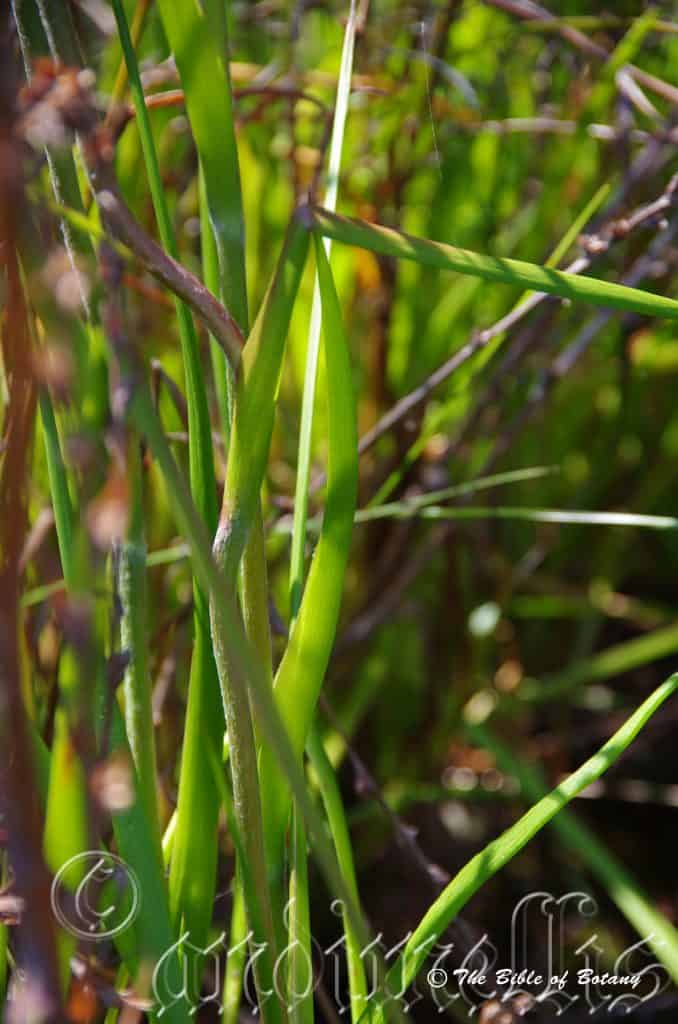
Greening Australia Norman Park Qld.

Greening Australia Norman Park Qld.

Greening Australia Norman Park Qld.
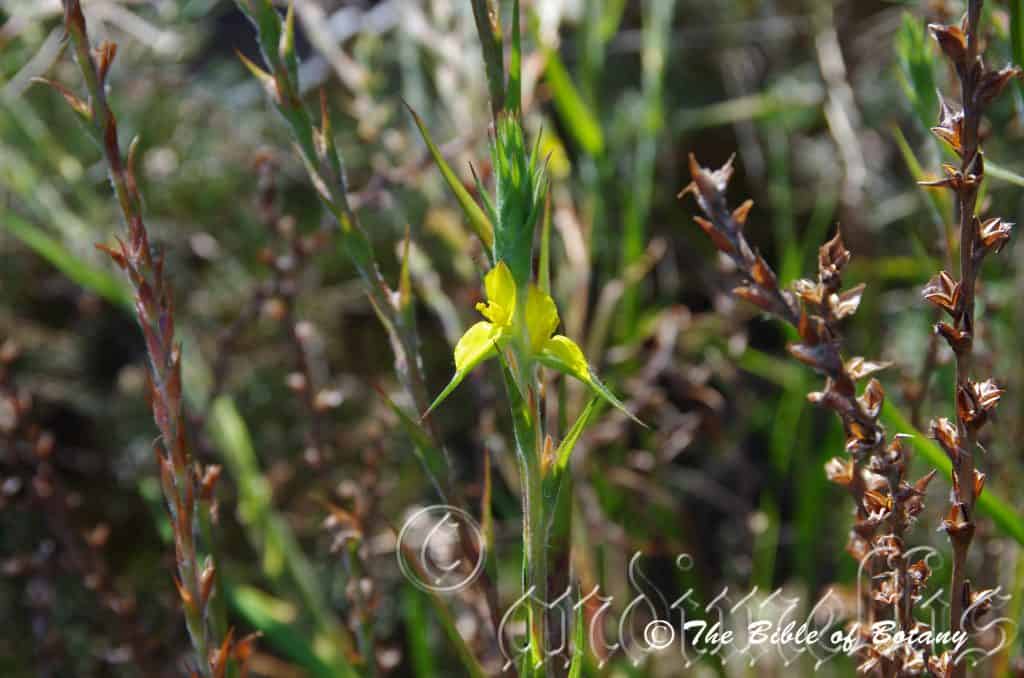
Greening Australia Norman Park Qld.
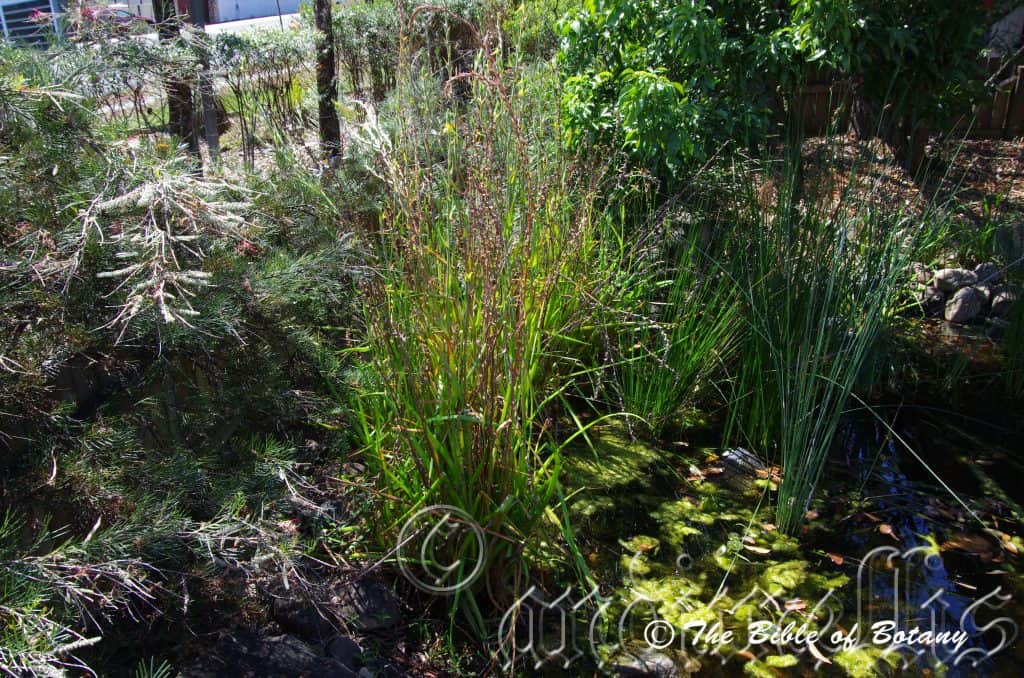
Greening Australia Norman Park Qld.
Philydrum lanuginosum
Classification:
Unranked: Monocots
Unranked: Commelinids
Order: Commelinales
Family: Philydraceae
Genus: From Phílos, which is Ancient Greek for loving or to love and Húd?r, which is Ancient Greek or later Hydro which is Greek for water. It refers to plants, which prefer wet habitats.
Specie: from L?n?gin?sus, which is Latin for woolly. It refers to description of plants, which are densely covered in short woolly hairs.
Sub specie:
Common Name: Woolly Water lily or Frogs Mouth.
Distribution:
Philydrum lanuginosum is found north of a line from Beagle Village on Dampier Peninsular to Turkey Creek in northern Western Australia to Venn in the north east of the Northern Territory to Stockyard Creek in Lawn Hill National Park and Girriri on Mornington Island.
In the east it is found south and east of a line from the tip of Cape York Peninsular to Coco Nut Creek near Weipa in Queensland to the Hastings River near Port Macquarie in central New South Wales then south to Saint Kilda in southern Victoria. It is also found from Murrabit to Kerrang in northern Victoria near the Murray River and around Halls Gap and the Wimmera River in the northern Grampians.
https://avh.ala.org.au/occurrences/search?taxa=Philydrum+lanuginosum#tab_mapView
Habitat Aspect Climate:
Philydrum lanuginosum prefers dappled shade to full sun. It grows along slow moving creeks and streams, on the shoreline of lakes billabongs or dams. The altitude ranges from 5 meters ASL to 950 meters ASL.
The temperatures range from minus 3 degrees in July to 42 degrees in January.
The rainfall ranges from lows of 500mm to 3200mm average per annum.
Soil requirements:
Philydrum lanuginosum prefers white sands, sandy loams to light medium clays or light silts to heavy silts. The soils are usually derived from most decomposed parent rocks laid down as alluvial. The soils pH ranges from 4.4pH to 7.5pH. It tolerates water logged soils. Non saline soils to the upper end of moderately saline soils are tolerated.
Height & Spread:
Wild Plants: 1m to 2m by 0.5m to 0.6m.
Characteristics:
Philydrum lanuginosum grows as an erect, small multi stemmed, emergreent aquatic perennial lily. The plants are often caespitose with short thick, shortly rhizomatous. The stems and new shoots are sparsely to moderately covered in very long, white pilose and tomentose semi caduceous hairs.
The mostly basal, linear falcate leaves of Philydrum lanuginosum measure 200mm to 650mm in length by 12mm to 20mm in width. The bases are clasping while the apex is long tapering to a fine point. The concolourous laminas are lime-green to mid grass-green often with a reddish to reddish maroon tinge especially along one side and are sparsely covered in long, white loosely appressed pilose and tomentose caduceous hairs. The laminas are flat to convex while the margins are entire. The mid vein is not prominent on either lamina.
The inflorescences of Philydrum lanuginosum are spictate or branched and are born from the base. The spikes measure 0.5 meters to 1 meter in length. The flowers are subtended by long, broad based, lanceolate bracts which are flexed at the apex at the time of anthesis. The perianth is bright yellow and covered in white loosely appressed pilose and tomentose hairs externally and is glabrous internally. The outer tepals measure 12mm to 15mm in length by 10mm to 12mm in width while the inner tepals measure 8mm to 10mm in length by 2mm to 4mm in width.
The single glabrous filament is bright yellow and measure 6.5mm to 8mm in length. The twisted anther often looks spherical and is golden-yellow. It measures 2mm in length by 2.2mm in diameter.
The terete style has a bright yellow spherical stigma. The flowers appear during the warmer months of the year but are best in early spring.
Philydrum lanuginosum’s fruits are swollen capsules. The capsules measure 9mm to 12mm in length by 5mm to 8mm in width. The capsules are covered in white pilose hairs.
Wildlife:
Philydrum lanuginosum is an important frog and fry habitat species of wet lands. (That is fish fry not fried frogs habitat.)
Cultivation:
Philydrum lanuginosum is a magnificent medium to tall lily that deserves a place in every warm temperate to sub-tropical native dam, medium to large water garden exotic garden. It is ideal in almost every setting near water, at the edge of rain forests, in court yards, around swimming pools or in rockeries. In cultivation it grows from 0.8 meters to 1.6 meters in height by 0.5 meters to 1 meter in diameter when grown in the open.
It grows exceptionally well on lighter soils When deep leaf litter keeps the soil cool and moisture at an even level. If these requirements are met they can cope with temperatures as low as minus 6 degrees and up to 36 degrees. They can be tipped pruned to encourage a bushier or more compact shrub.
It often reaches its full potential in just 18 months and flowers in its second year from seed. Plants will live naturally for 6 to 7 years so should be placed every 4 to 5 years to maintain health and continuity.
Be imaginative when planting in mass. Use the plants in different configurations and use curves. Prune spent flowers to increase longer stronger flowering stems.
Philydrum lanuginosum would make outstanding contribution to a moist heath garden. Here it can be used as the taller growing plant scattered throughout the heath scene. When you design a flat heath garden which Philydrum lanuginosum is well suited use contours or plant them in depressions or artificial ephemeral pools to display the plants. As heaths are almost always flat or have a slight rise. Plants are usually planted close together but in the case of Philydrum give it some room to spread as it will over dominate those plants planted adjacent to it. The taller plants should be the feature plants so be careful how it is used or it can be too powerful. The idea is to achieve a feeling of expansive flatness. This can be achieved with using the Philydrum lanuginosum’s bright green linear erect leaves and having them contrasting with larger, deep green or soft grey to glaucous coloured foliages than what would normally be used in a heath. Use a lot of procumbent plants like Xerochrysum viscosum or Hibbertia specie. Mix them with other smaller shrubs so none of them dominate the scene but blend in to give a mosaic of foliage colours that you oversee. He I immediately think of Actinotis helianthi or Grevillea masonii for two great contrasting foliages.
It can be used to great affect by planting a meandering row stretching back from the path like a river. Plant either side with slightly taller plants with large deep green leaves and red or white flowers for a great contrast. In this scene you may have to keep them pruned below 1.5 meters for the best affect. No problems as it can handle being cut back to near the ground a couple of times a year.
For mass plantings plant them at 1 meter to 1.5 meter centers.
Propagation:
Seeds: Seeds of Philydrum lanuginosum can be moved easily from the plants as they dry. Once Philydrum lanuginosum has finished flowering and the fruits have swollen place an old sheet below the plants and keep a close eye on it. Peg it down so it doesn’t blow around. When the seeds start to disperse, it can be all over in one day; especially if the weather turns hot, with the seeds being scatted on the ground. Clean the rubbish off and sieve the material for the seeds.
Seeds need to be treated by rubbing between fine sandpaper. Another method is to drop them into hot water and allow it to cool. I have also laid the rubbish out at the time of collecting and burnt it with the seeds still amongst the rubbish. No one method has proven better than the other, with all producing erratic results but better than if I did not tat the seeds.
Sow freshly treated seeds directly into a seed raising mix, keeping them moist not wet. When the seedlings are 20mm to 25mm tall, prick them out and plant them into 50mm native tubes using a good organic mix.
As the seedlings roots ach the bottom of the tubes plant them out into their permanent position.
Division: Philydrum lanuginosum a very easy to produce from division. Remove the plants from their pots or dig around the clumps in warmer weather while the plants are actively growing or at the onset of warmer weather. Clean all the soil from around the roots and divided the clumps into segments that comprise a tuft with a piece of the rhizome and some roots. Remove any dead leaves and dead roots.
If you only want a few plants for your own use, divide the plants so that each new plant comprises of a single healthy tuft with rhizome and roots.
Once repotted into individual 100mm squat pots place the pots in a basin of water beneath 30mm shade cloth. New shoots and roots will emerge within 10 days. Place a half strength fertilizer mix into the watering tray. Once the plants roots reach the bottom of the tubes plant them out into their permanent positions. Alternatively repot them into 250mm pots (normal or squat depending on the depth of the water) for immersion into fish ponds but first cover the mix with pebbles to stop the mix floating away.
Fertilize using seaweed, fish emulsion or organic chicken pellets soaked in water on an alternate basis. Fertilize every two months until the plants are established then twice annually in early September and March to maintain better health, vitality and flowering.
Be careful if the plants are to be grown in permanent water or fish or frog ponds as fertilizers will cause algal blooms if over used and may kill the fish. Here a better choice is to add a small quantity of chicken pellets to the mix or allow the fish to do their thing and fertilize the plants.
Further Comments from Members:
“Hi reader, it seems you use The Bible of Botany a lot. That’s great as we have great pleasure in bringing it to you! It’s a little awkward for us to ask, but our first aim is to purchase land approximately 1,600 hectares to link several parcels of N.P. into one at The Pinnacles NSW Australia, but we need your help. We’re not salespeople. We’re amateur botanists who have dedicated over 30 years to saving the environment in a practical way. We depend on donations to reach our goal. If you donate just $5, the price of your coffee this Sunday, We can help to keep the planet alive in a real way and continue to bring you regular updates and features on Australian plants all in one Botanical Bible. Any support is greatly appreciated. Thank you.”
In the spirit of reconciliation we acknowledge the Bundjalung, Gumbaynggirr and Yaegl and all aboriginal nations throughout Australia and their connections to land, sea and community. We pay our respect to their Elders past, present and future for the pleasures we have gained.
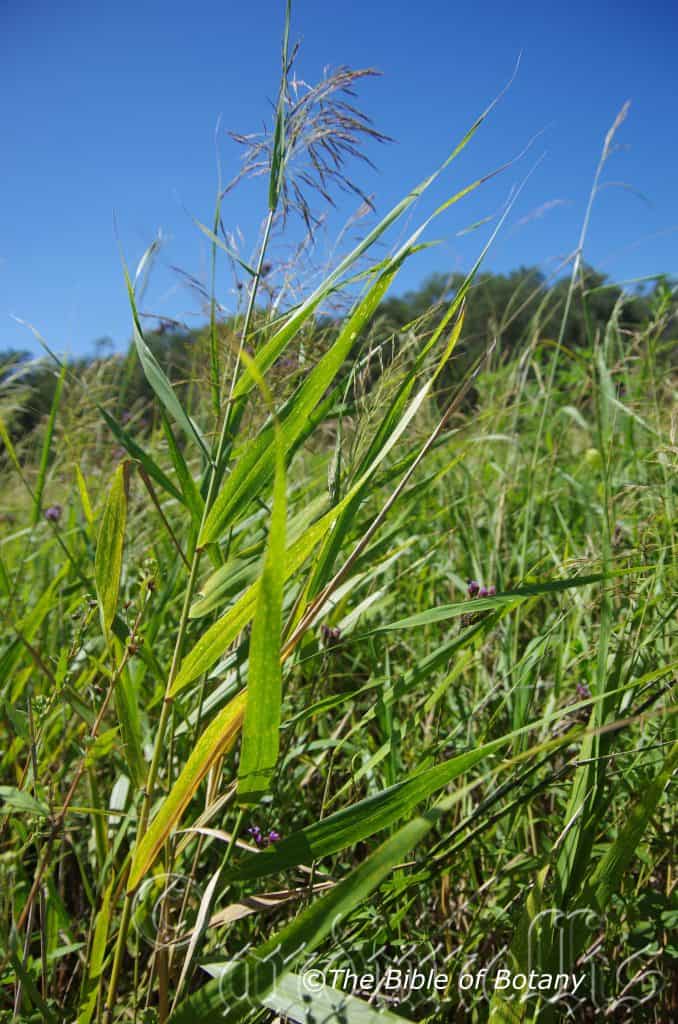
Clarence River Maclean NSW
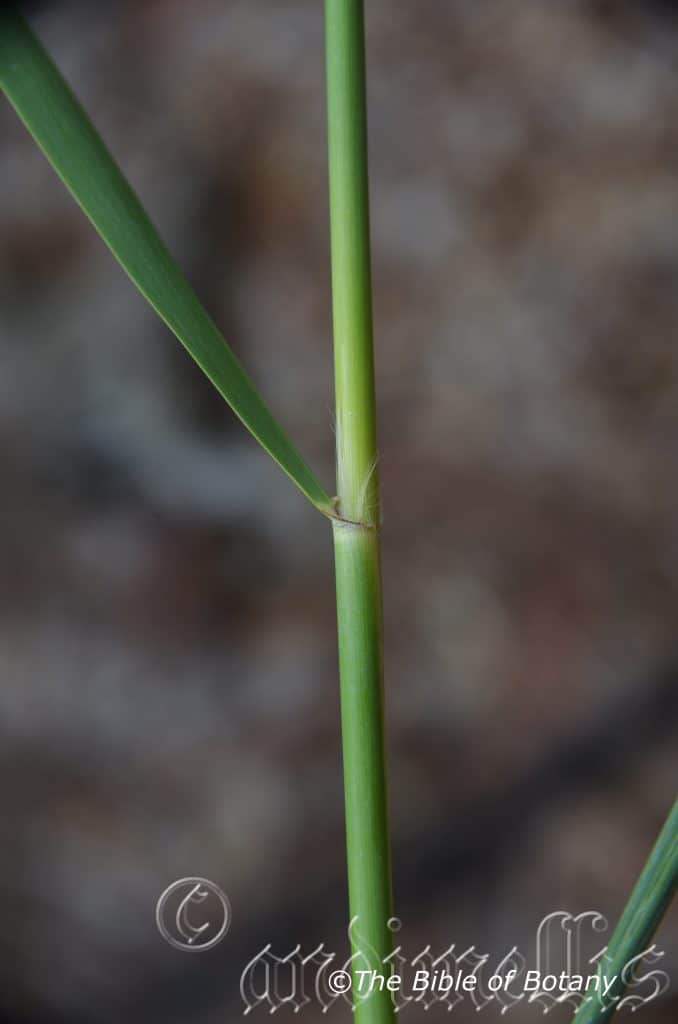
Clarence River Ulmarra NSW
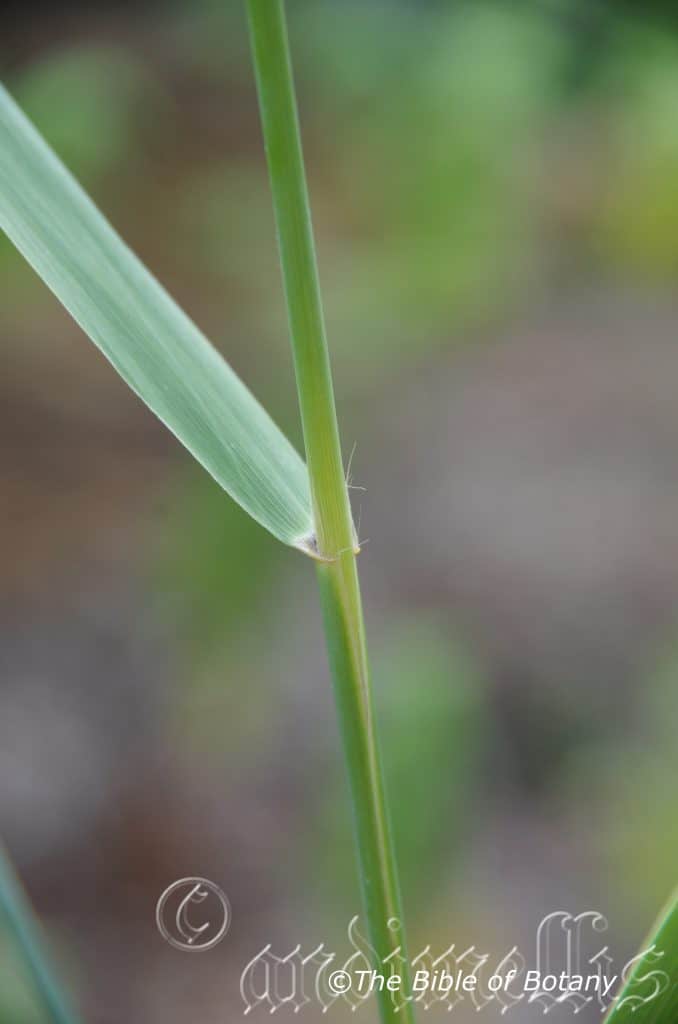
Clarence River Ulmarra NSW

Clarence River Ulmarra NSW

Clarence River Ulmarra NSW

Clarence River Ulmarra NSW
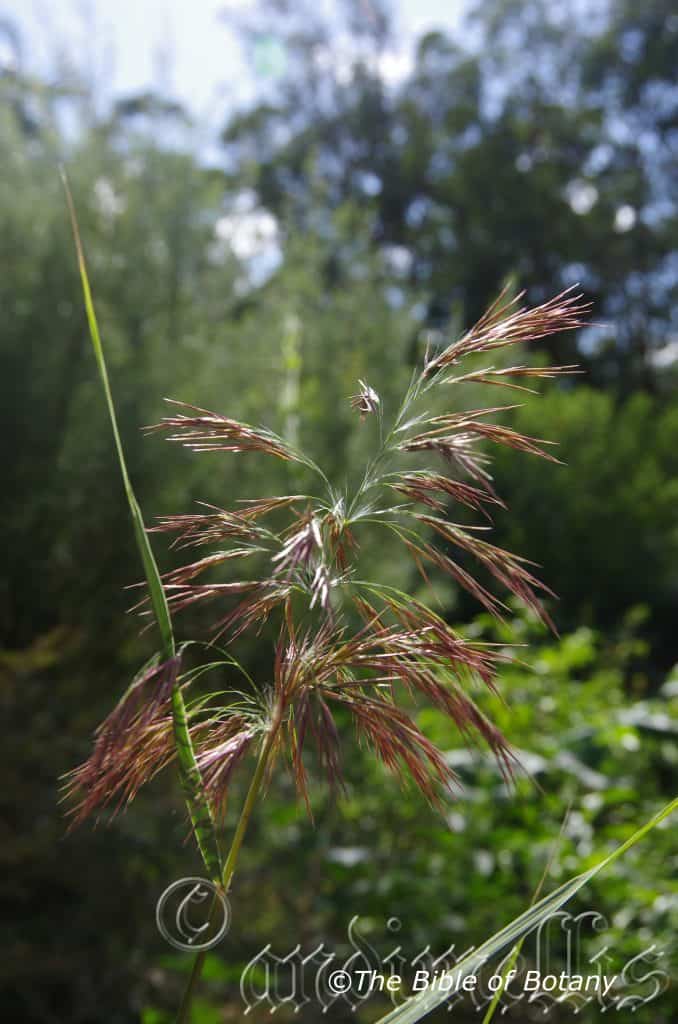
Clarence River Ulmarra NSW
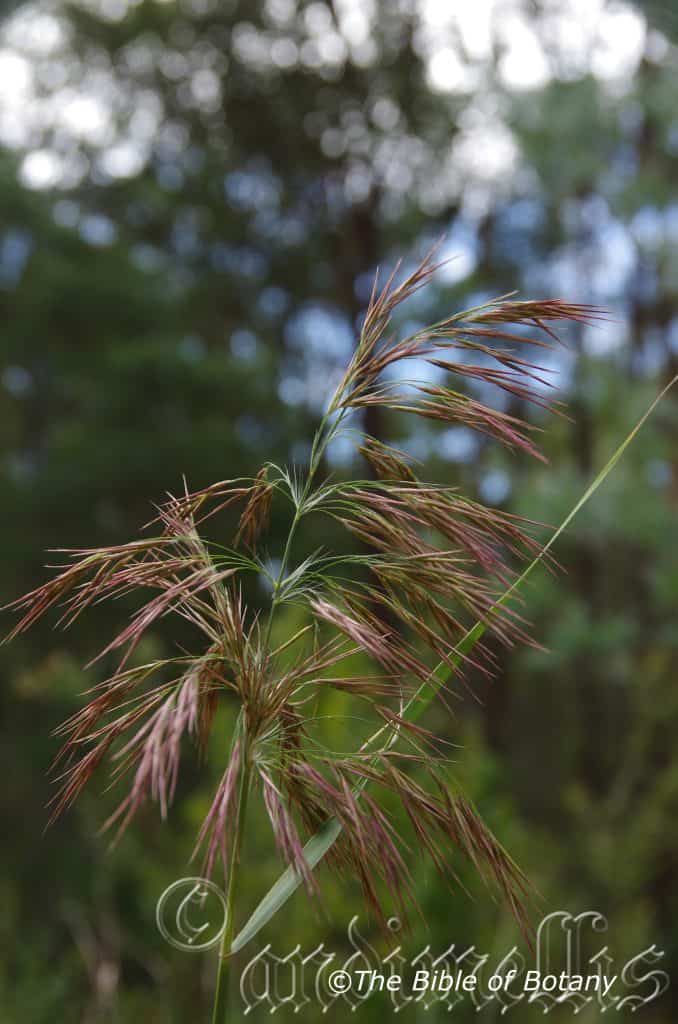
Clarence River Ulmarra NSW
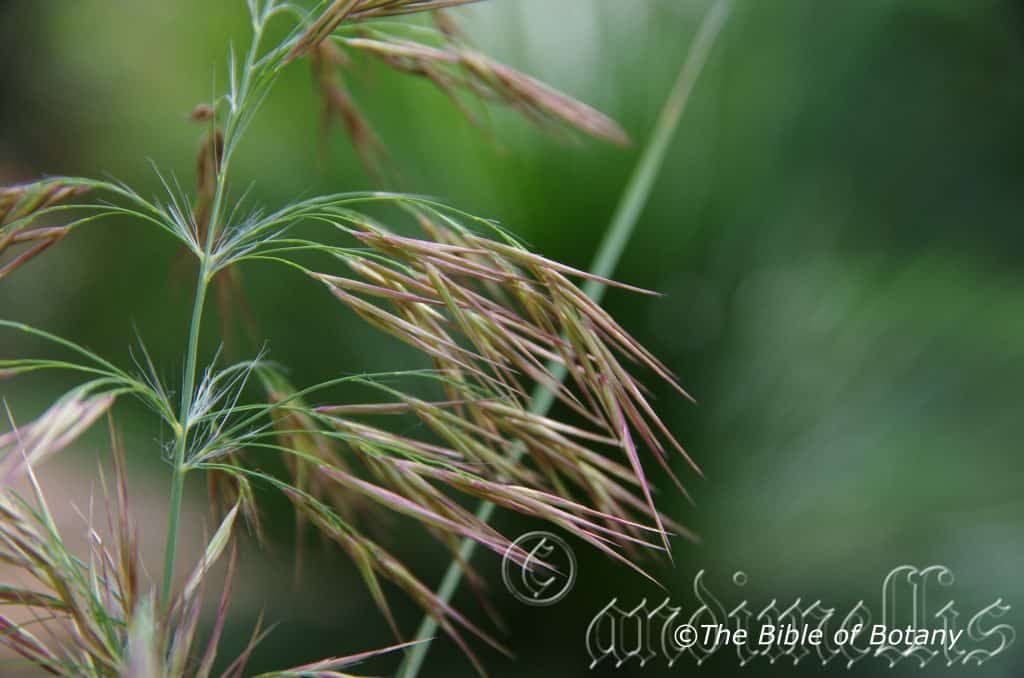
Clarence River Ulmarra NSW
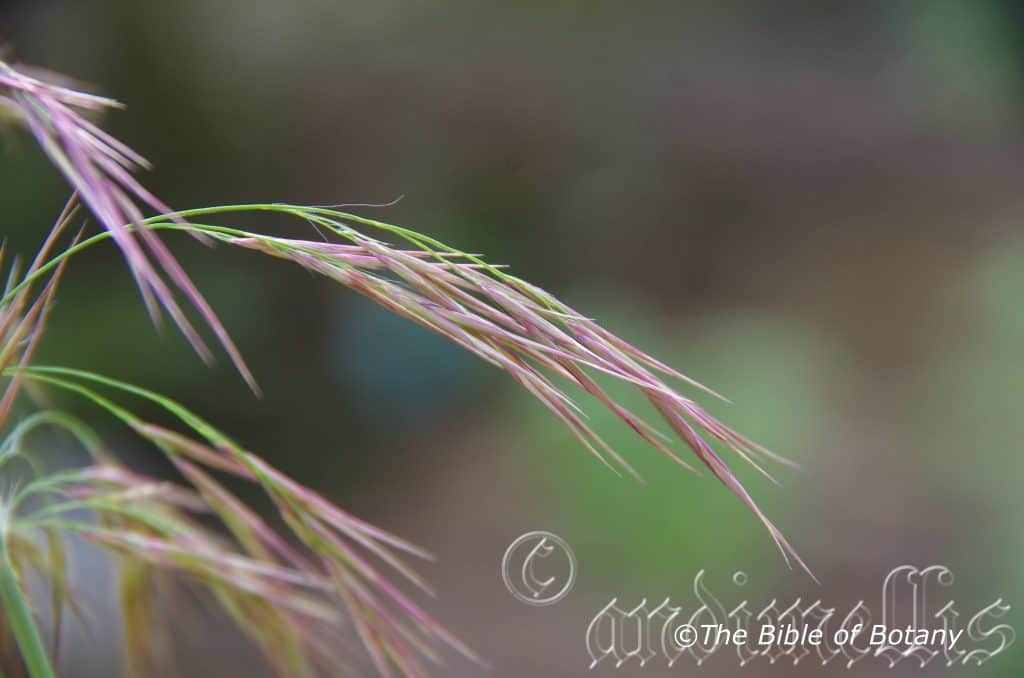
Clarence River Ulmarra NSW
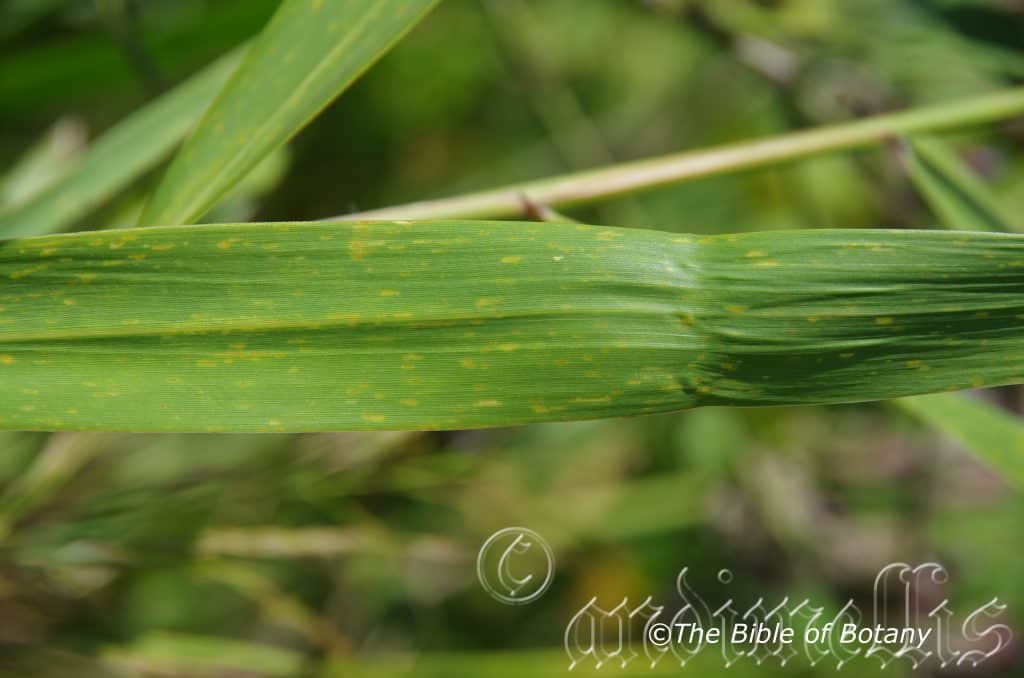
Clarence River Ulmarra NSW
Phragmites australis
Classification:
Unranked: Monocots
Unranked: Commelinids
Order: Poales
Family: Poaceae
Genus: From Phragma, which is Ancient Greek for a fence or at times a hedge. It refers to impenetrable barriers around marshes that the plants form.
Specie: From Terra Australis, which is Latin for land of the south and Anum/Ensis, which is Latin for to originate from. It refers to plants, which were first discovered from the land down under.
Sub specie:
Common Name: Common reed.
Distribution:
Phragmites australis is found east of a line from the Ord River in north eastern Western Australia to Encounter Bay near Port Elliot in southern South Australia. It is also found at Nichol Bay on the central western coast and Albany and Esperance in Western Australia.
It is found on the Bass Straight Islands and along the north coast of Tasmania and down the eastern third of the state.
It is also found on Lord Howe Island and the Torres Straight Islands.
It is found on every continent whenever reliable water exists or only light frosts are experienced.
https://avh.ala.org.au/occurrences/search?taxa=Phragmites+australis#tab_mapView
Habitat Aspect Climate:
Phragmites australis prefers very light dappled shade to full sun. It grows along slow moving creeks and streams and on the shoreline of lakes billabongs or dams in fact anywhere, where permanent water is found. Permanently low salinity mud or peaty muddy sands with some gravel supports dense Phragmites australis reed beds. These reed beds are often enclosed water bodies influenced by freshwater inflow and usually have large quantities of decaying vegetable material. Estuaries and other more saline waters support less dense colonies. It has been known to form pure almost stands with over 200 culms per square meter. The Seaford wetlands back in the early 1960’s frequently produced in excess of 120 culms per square meter with the tallest culms aching in excess of 3 meters in height. It is my first adventures into the realm of Phragmites australis that was probably the turning point for me to study botany as I asked why did the culms change in height from one year to the next year even on the same ground? The altitude ranges from 5 meters ASL to 960 meters ASL.
The temperatures range from minus 3 degrees in July to 44 degrees in January.
The rainfall ranges from lows of 250mm to 3000mm average per annum.
Soil requirements:
Phragmites australis prefers white sands, sandy loams to medium clays or light silts to heavy silts. The soils are derived from most parent rocks laid down as alluvial. The substratum may be mixtures of mud, peaty mud, sand, silts, at times gravel and usually good quantities of decaying vegetable matter.
The soils pH ranges from 4.3pH to 8.5pH with some stands on the Nile River delta being noted at 9.3pH.
It tolerates water logged soils. Non saline soils to extremely saline soils are tolerated as are salt laden winds.
Height & Spread:
Wild Plants:3m to 6m by 3m to 4m
Characteristics:
Phragmites australis grows as an erect, large multi stemmed emergent aquatic perennial. The fibrous roots branch out from a thick, robust rhizome. In plants occasionally produce stolons as an alternative method of production. The culms are yellowish, glabrous or sparsely covered in long white puberulent caduceous hairs and are pale greenish in colour When young and growing. The culms are usually unbranched and hollow between the nodes. The culms usually measure 3 meters to 4 meters in height by 10mm to 15mm in diameter but can ach 6 meters by 25mm under favourable conditions. The leaves disarticulate from the sheaths. The surface is scaberulous, with the apex hardened around the ligule. The leaf-sheaths are loose with the outer edge overlapping the inner edge. The ligules are densely ciliate, membranous rim of hairs usually measure 1mm to 1.3mm in length but could be as long as 10mm on the upper leaves.
The alternate, narrow incurved, elliptical leaves of Phragmites australis are crowded along the ends of the culms. The leaves measure 150mm to 350mm in length by 20mm to 35mm in width usually to 3.5mm for indigenous species. The bases taper become conduplicate before aching the clasping sheath while the apexes are long tapering to a fine point. The concolourous laminas are bluish-green and glabrous. The laminas are flat except for the conduplicate base and are lax on the apical half while the margins are entire and are slightly to strongly scabrous. The mid vein is slightly prominent on the lower laminas. There are 36 to 44 faint longitudinal veins.
The inflorescences of Phragmites australis are panicles born from the terminals. The panicles measure 150mm to 350mm in length by 50mm to 200mm in diameter in local species but have been recorded at 500mm in some overseas forms. The green to purplish brown inflorescences are silvery white at maturity. The branchlets axils are covered in white hirsute hairs that measure 5mm to 7mm in length.
There are 4 to 8 florets on a spikelet of which the lowest 1 or 2 are male and the remainder are bisexual. The rachilla is covered in long, soft white hirsute hairs that measure 10mm to 13mm in length.
The glumes are dissimilar. The linear to narrow lanceolate lower glumes are mucronate or aristate and glabrous. The lower glumes measure 3mm to 5mm in length. The narrow lanceolate upper glumes are mucronate or aristate and measure 6mm to 8mm in length.
The male glabrous lemmas measure 10mm to 12mm in length. The palea measure 3mm to 4mm in length while the palea on the bisexual lemmas is acuminate, glabrous and measure10mm to 16 mm in length. The upper lemmas become successively smaller. The callus is covered in long, white hairs that measure 10mm to 12mm in length. Awns are covered in hirsute hairs. The flowers appear from September to early December.
Phragmites australis’s fruits are swollen achenes. The achenes are obovate to oblong and measure 1mm to 2mm in length by 0.8mm to 1.2mm in diameter.
Wildlife:
Phragmites australis’s wildlife is a phenomenon in the plant world. It is the bases of so many food chains and my child hood experiences allowed me to ponder why so many of the locals detested it. It becomes woody and unpalatable later in the season. The seeds are eaten by waterfowl and the roots are eaten by many native rats. The edges are used for nesting by ducks and grebes while the interior is favourite nesting habitats for reed warblers and wrens.
Throughout the world the stems have been used for building materials, lattice work, baskets, and mats. The young shoots and rhizomes are sometimes eaten, and the rhizomes processed for starch in a similar manner to bamboo.
Cultivation:
Phragmites australis is a large reed only suitable for large gardens, large fish ponds, frog ponds and water gardens. In cultivation it will grow from 2 meters to 3 meters in height by 1 meter to 2 meters in diameter when grown in the open in a contained area.
It grows exceptionally well on all soils When shallow water exists. If these requirements are met it can cope with temperatures as low as minus 4 degrees and up to 40 degrees.
It often reaches its full potential in just 3 years and flowers from the second year from seed. Plants die down on an annual basis.
It would make an excellent plant below sullage trenches in dairies and piggeries where the tops can be harvested early in the season for fodder or left for hay and root harvesting in the autumn when it can be mixed for higher protein food.
Additional information: Because of its extraordinary history with man from the earliest times including the Australian Aboriginal and now possibly in the future as an alternative food source and biofuel I have included the following information. Excuse me if I get carried away but this to me is one of the most versatile plants in Australia.
Growth Rates: Because the stems are renewed each growing season and with an annual growth rate from 2 meters to 4 meters per season naturally and 4 meters to 4.5 meters if cultivated on waste water it has terrific potential for biomass. Growth rates of 40mm to 45mm a day are recorded under favourable conditions in one growing season. During periods of falling water, colonies can increase in width by as much as 15 meters in a single season (Fewless’ studies 2003). This means an annual productivity ranges from 7.5 up to 63 metric tons per hectare a year. (Duke 1998). If harvested during the dormant season without soil compaction and rhizome damage productivity is not affected during the following growing season. This is equivalent to the mass produced by sugar cane (60 to 70 metric tons) per hectare when sugar is fertilized and Phragmites australis is grown without fertilizers. The lower growth rates were recorded on plants that were subject to high levels of Cadmium and pentachlorophenol where the plants were being tested for Cadmium and pentachlorophenol uptake.
Phytoremediation: Phragmites australis is a good phytoremediator. A phytoremediating plant is one that can take up large amounts of toxins or specific toxins from the soil. It can be used very successfully in controlling very acid soils which are acidic due to high levels of aluminium or iron. phytoremediation is now becoming more widely used to control chemical imbalances as it is a safer method for extrapolating chemicals than using chemicals, it is more cost effective on farms, it is far more environmentally friendly, it is non-disruptive as opposed to physically digging the soil up, pumping water into the soil to leach the chemicals which in the case of aluminium cannot be done successfully done as it is inert and ties itself to other chemicals which are needed by most plants to be healthy. Some disadvantages are that the method is reliant on a long term soft commitment, it is dependent upon plant growth and the tolerance to toxicity and bioaccumulation capacity of the plants involved.
It has been found to be successful in moving Aluminium, Barium, Cadmium, Chromium, Copper, Iron, Lead, Manganese, Molybdenum, Nickel and Zinc with pentachlorophenol (an organ chlorine compound used in insecticides which also works on the nervous system of warm blooded animals and is carcinogreenic. It is now in limited supply because of its toxicity).
In the case of Phragmites australis the toxins remained almost entirely in the roots and rhizomes meaning they did not move quickly into the environment through the leaves and seeds.
Benefits and Detriments: It is an aggressive colonizer of large areas of shoreline on shallow marsh and with its thick sod and dense stand of stems effectively prevents wave action and eroding currents from reaching the shorelines and shallow water at the edge of rivers and estuaries. It also traps sediment and pollutants. In fact the species has been used to aid in settling and drying sewage sludge overseas.
The dense monoculture stands can completely displace other native marsh communities and many of the fauna they support. Strong declines in populations have occurred When soils have been drained for industrial and housing estates. In many European countries it has occurred during the last couple of decades without any consideration for the environment or future consequences.
There are numerous applications in herbal medicine throughout the world. The stems we used as arrow shafts by Native Americans. Native Tasmania’s used the hollow stems to make rafts, jewellery, baskets, and light spears (Australian National Botanic Gardens 2003) (Sir Joseph Banks and Solander mention the spears Aborigines threw at them were a light weight bamboo. They were most likely made from Phragmites australis). It is harvested today in Britain for thatching (Tyler-Walters 2002). It was once harvested for fuel when better sources were unavailable but as a raw fuel it has a tendency to have small explosions releasing water vapour that has been trapped in the hollows or cells. It may hold promise as an energy crop in the future.
Food Values: Stands yield 4150 calories per 1000g (Duke 1998). Early in the growing season, it yields high quality forage for livestock and can be harvested for hay. It contains 11.4mg protein, 2.3mg fat, 42.1mg carbohydrates, 31.1mg crude fibre and 10.8mg ash according to Duke 1998.
The seeds were eaten by Australian Aborigines and a hard work to get a feed. As a child I can remember foraging seeds for a snack and that is all I would gain a snack.
Paper Manufacturing: The stems are processed into pulp, paper, and fibre boards. Stalks contain over 50mm cellulose and have fibres 0.8 to 3.0 mm in length by 5.0 to 30.5 µm in diameter.
Well there you have it some of the great advantages of an Aussie that is not being utilized to its full potential.
Propagation:
Seeds: The seeds easily from the plants as they dry. Once it has finished flowering and the fruits have swollen cut the heads and place them into paper bags. Clean the rubbish off and sieve the material for the seeds.
The seeds can be sown directly into a seed raising mix once the last frosts have abated and temperatures begin to warm. Keep the trays moist at all time. The first seedlings will appear within 2 days with close to 100mm germination completed within a week. When the seedlings are 20mm to 25mm tall, prick them out and plant them into 50mm native tubes using a good organic mix.
As the seedlings roots ach the bottom of the tubes plant them out into their permanent position.
Once a new plant is established, it Spreads by vegetative means and can be propagated from the rhizomes.
Division: The seeds can be removed australis a very easy to reproduce from division. Remove the plants from their pots or dig around the clumps in warmer weather while the plants are actively growing or at the onset of warmer weather. Clean all the soil from around the roots and divided the clumps into segments that comprise a tuft with a piece of the rhizome and some roots. Remove any dead leaves and dead roots.
If you only want a few plants for your own use, divide the plants so that each new plant comprises of 3 or 4 healthy tufts with rhizome and roots.
Once potted into individual 250mm squat pots place the pots in a basin of water beneath 30mm shade cloth. New shoots and roots will emerge within a few days. Place a half strength fertilizer mix into the watering tray. Once the plants roots reach the bottom of the pots plant them out into their permanent position
Fertilize using seaweed, fish emulsion or organic chicken pellets soaked in water on an alternate basis. Fertilize every two months until the plants are established then twice annually in early September and March to maintain better health, vitality and flowering only if it is safe to do so without affecting the surrounding water.
Further Comments from Readers:
“Hi reader, it seems you use The Bible of Botany a lot. That’s great as we have great pleasure in bringing it to you! It’s a little awkward for us to ask, but our first aim is to purchase land approximately 1,600 hectares to link several parcels of N.P. into one at The Pinnacles NSW Australia, but we need your help. We’re not salespeople. We’re amateur botanists who have dedicated over 30 years to saving the environment in a practical way. We depend on donations to reach our goal. If you donate just $5, the price of your coffee this Sunday, We can help to keep the planet alive in a real way and continue to bring you regular updates and features on Australian plants all in one Botanical Bible. Any support is greatly appreciated. Thank you.”
In the spirit of reconciliation we acknowledge the Bundjalung, Gumbaynggirr and Yaegl and all aboriginal nations throughout Australia and their connections to land, sea and community. We pay our respect to their Elders past, present and future for the pleasures we have gained.
Phyllachne colensoi
Classification:
Unranked: Eudicots
Unranked: Asterids
Superorder: Asteranae
Order: Asterales
Family: Stylidiaceae
Subfamily: Stylidioideae
Genus: From Phullon/Phýllon, which is Ancient Greek for a leaf and Achne, which is Ancient Greek for chaff. It refers to leaves, which have the resemblance of green chaff.
Specie: Is named in honour of William Colenso; 1811–1899, who was an English born New Zealander, printer, botanist, explorer and politician.
Sub specie:
Common Name: Pin Cushion.
Distribution:
Phyllachne colensoi is restricted to a small area in central Tasmania bounded by Cradle Mountain Plateau to Frenchman’s Cap and the Snow Drift Tarns.
https://avh.ala.org.au/occurrences/search?taxa=Philotheca+colensoi#tab_mapView
Habitat:
Aspect / Climate:
Phyllachne colensoi prefers dappled shade to full sun shade. It grows amongst moss covered rocks or at times on tree trunks in alpine regions. The altitude ranges from 1260 meters ASL to 1443 meters ASL.
The temperatures range from minus 7 degrees in July to 22 degrees in January.
The rainfall ranges from lows of 1200mm to 2000mm average per annum. The plants receive continual moisture throughout the year from orographic precipitation.
Soil requirements:
Phyllachne colensoi are lithophytes or at times terrestrial. The soils are usually derived from partially decomposing granites. The soils pH ranges from 5pH to 6pH. It does not tolerate water logged soils. Non saline soils to slightly saline soils are tolerated.
Height & Spread:
Wild Plants: 0.02m to 0.06m by 0.1m to 2m.
Characteristics:
Phyllachne colensoi grows as a small spreading perennial terrestrial or lithophytic plant on rocks. The pale green or pale reddish green erect stems are glabrous to densely covered in white or pale grey pubescent hairs. The internodes measure 18mm to 26mm in length by 4mm to 5mm in diameter. Erect stems will eventually become decumbent When they will root from the leaf nodes and at times from discarded leaves. It is a cushion forming herb with short, erect stems to 40mm in length. The densely packed branches form a hard, undulating cushion like mound following the topography of the land. The roots are produced adventitiously.
The leaves of Phyllachne colensoi are sub erect and imbricate. The squat, broad lanceolate leaves measure 2mm to 3mm in length by 0.5mm to 1mm in width. The sessile leaves bases a rounded while the apexes are acute or obtuse. The concolourous laminas are yellowish-green and glabrous with a glandular pore on the abaxial side. The laminas are flat while the margins are entire. The main vein is slightly prominent on the lower lamina.
The solitary inflorescences of Phyllachne colensoi are born from the terminals. The individual flowers are sessile. The calyx lobes a yellowish-green to lime-green, glabrous and covered in white ciliate hairs near the apex. The calyx has 5 or 6 that oblong, divaricate lobes have obtuse apexes and are entire or irregularly toothed. The lobes measure 2.5mm to 3mm in length.
The slender column is strongly exserted with the 2 purplish-ochre, sessile anthers forming a flared ring just below the stigma. The column measures 2.5mm to 3mm in length.
The sub reniform anthers dehisce transversely. The inferior ovary is incompletely bilocular while the apex has 2 fleshy semi lunar glands. The divaricate, bifid stigma is spreading above the anthers. It is large and papillose in the pistillate flowers and is smaller in the hermaphrodite and staminate flowers. The flowers appear from December to March.
Phyllachne colensoi fruits are globose drupes. The drupes are smooth, glabrous purple-brown and measure 2mm to 2.5mm in length by 0.6mm to 0.7mm in diameter. The fruits appear from December to March.
Confusing Genre:
Phyllachne colensoi ‘s leaves have distinctly yellowish-green foliage and measure 2mm to 3mm in length and are glabrous.
Abrotanella forsterioides’ leaves have a single hair at the apex of the linear leaves.
Colobanthus linear’s narrow triangular or narrow lanceolate leaves have distinctly yellowish-green foliage.
Donatia novae-zelandiae’s leaves have a dense mat of hairs at the base.
Dracophyllum minimum’s leaves have reddish tips to the leaves and lacks hairs.
Scleranthus species’s linear or lanceolate leaves are distinctly yellowish-green and are longer measuring 5mm to 12mm in length.
Wildlife:
Phyllachne colensoi’s wildlife is unknown to the author.
Cultivation:
Phyllachne colensoi is beautiful small cushion plants that deserves a place in those small nooks and crannies in a sunny sub alpine to alpine or cool temperate gardens of Australia. It is ideal in almost every setting at the edge of a rockery in court yards, around swimming pools where their small size can bring a balance into small gardens. In cultivation they will grow from 20mm to 60mm in height by around half a meter in diameter when grown in an open shady position.
They grow exceptionally well on soils When the soil mains cool and the moisture is at a consistent level throughout the year. It does best however growing on moist granites. If these requirements are met it will establish itself quickly forming a beautiful lush ground cover. It is moderately drought resistant in their rainfall zones once established.
Be imaginative when planting in mass. Use the plants in different configurations with other small plants like Viola betonicifolia or small orchids and ferns that like similar conditions so that a mosaic of various leaf colours and patterns a created.
Phyllachne colensoi makes an excellent terrarium or bottle plants.
Propagation:
Seeds: The seed of Phyllachne colensoi is usually difficult to collect and would not be easy to establish seedlings from seed.
Division: Propagation is very easy from division. It is best to divide the plants into rather large pieces of around 50mm to 70mm in diameter. While smaller pieces will establish themselves, it is slow to look impressive. Divided into segments should be comprise of the rhizome, some leaf shoots and with a humid environment in a cool greenhouse or similar sheltered position and regular watering they will establish themselves rather quickly.
If a humid greenhouse environment is available, the divisions can be smaller. Place the divisions in 100mm squat pots place them in the greenhouse for 4 to 6 weeks in the warm part of the year. Divisions of this size will also need to be “hardened” after the roots have developed. A simple method is to expose them to the open air during the night for a week or so, putting them back into the humid shelter during the day.
Fertilize using seaweed, fish emulsion or organic chicken pellets soaked in water on an alternate basis. Fertilize every two months until the plants are established then twice annually in early September and March to maintain better health, vitality and flowering.
Further Comments from Readers:
“Hi reader, it seems you use The Bible of Botany a lot. That’s great as we have great pleasure in bringing it to you! It’s a little awkward for us to ask, but our first aim is to purchase land approximately 1,600 hectares to link several parcels of N.P. into one at The Pinnacles NSW Australia, but we need your help. We’re not salespeople. We’re amateur botanists who have dedicated over 30 years to saving the environment in a practical way. We depend on donations to reach our goal. If you donate just $5, the price of your coffee this Sunday, We can help to keep the planet alive in a real way and continue to bring you regular updates and features on Australian plants all in one Botanical Bible. Any support is greatly appreciated. Thank you.”
In the spirit of reconciliation we acknowledge the Bundjalung, Gumbaynggirr and Yaegl and all aboriginal nations throughout Australia and their connections to land, sea and community. We pay our respect to their Elders past, present and future for the pleasures we have gained.
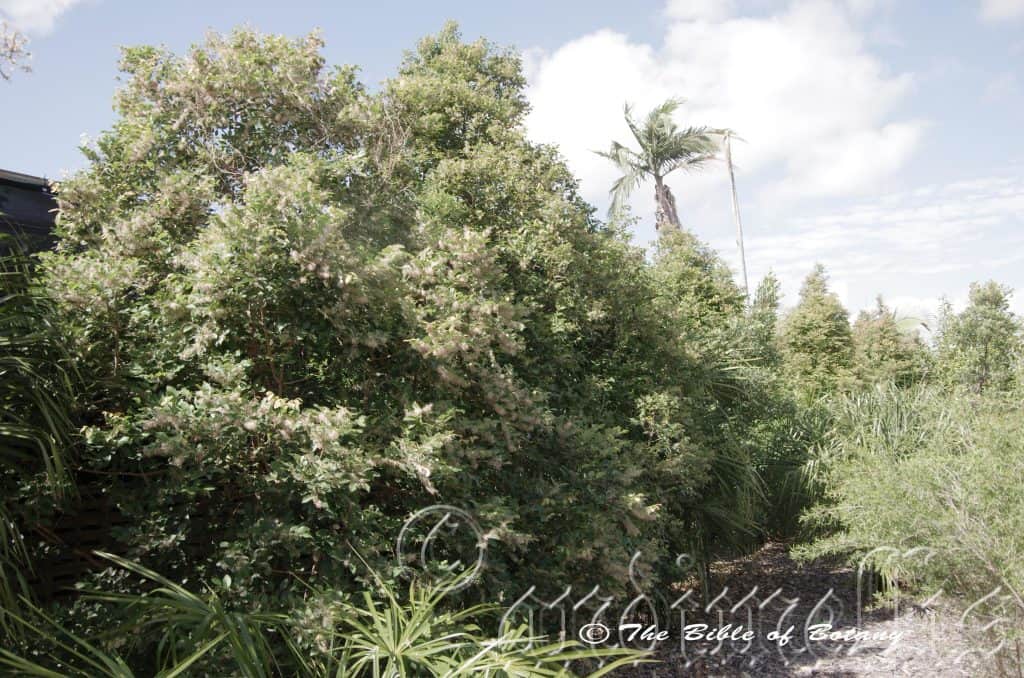
Anderson Gardens Townsville Qld.
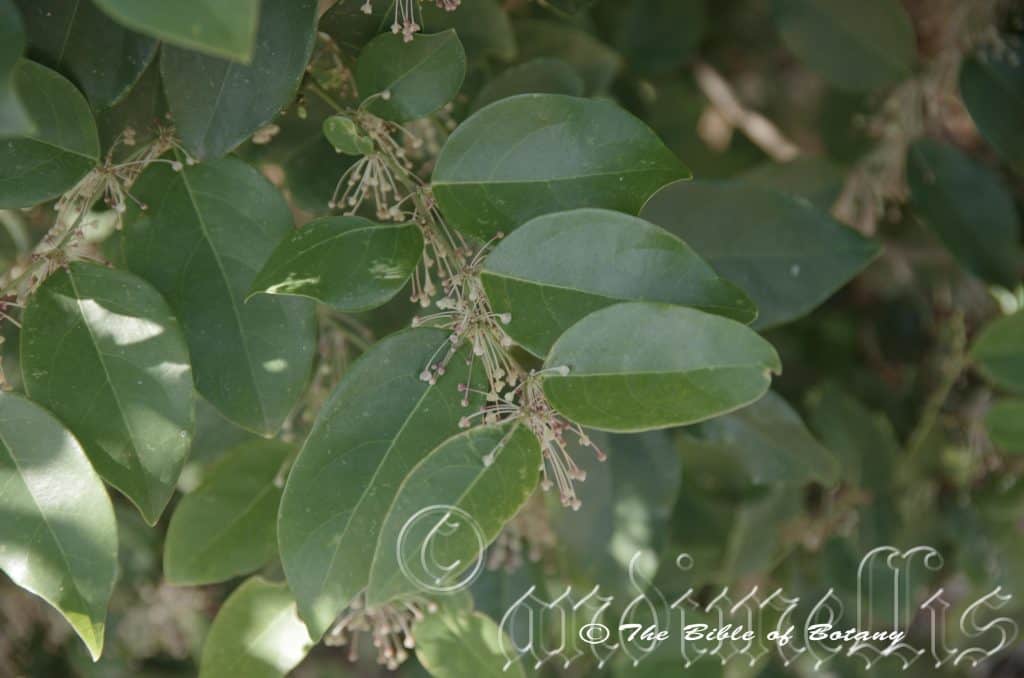
Anderson Gardens Townsville Qld.
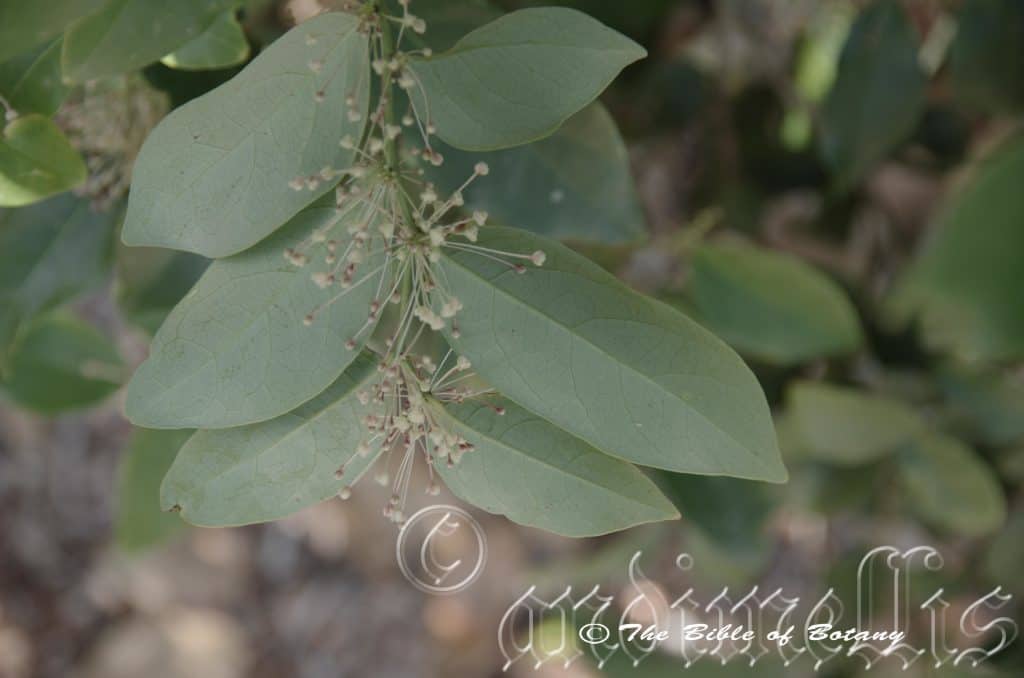
Anderson Gardens Townsville Qld.
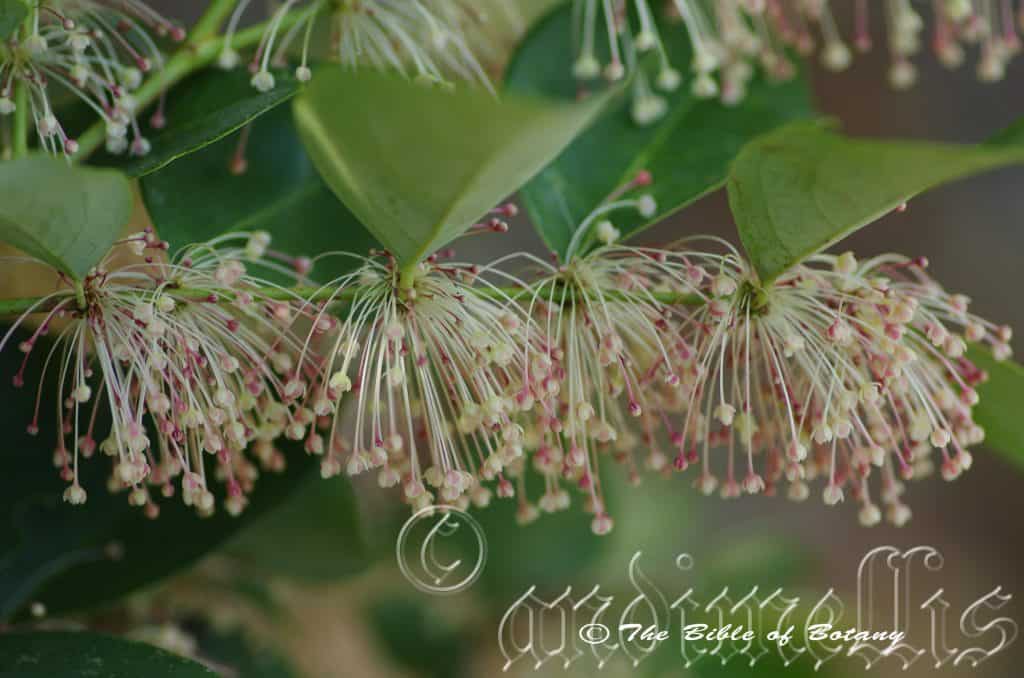
Anderson Gardens Townsville Qld.
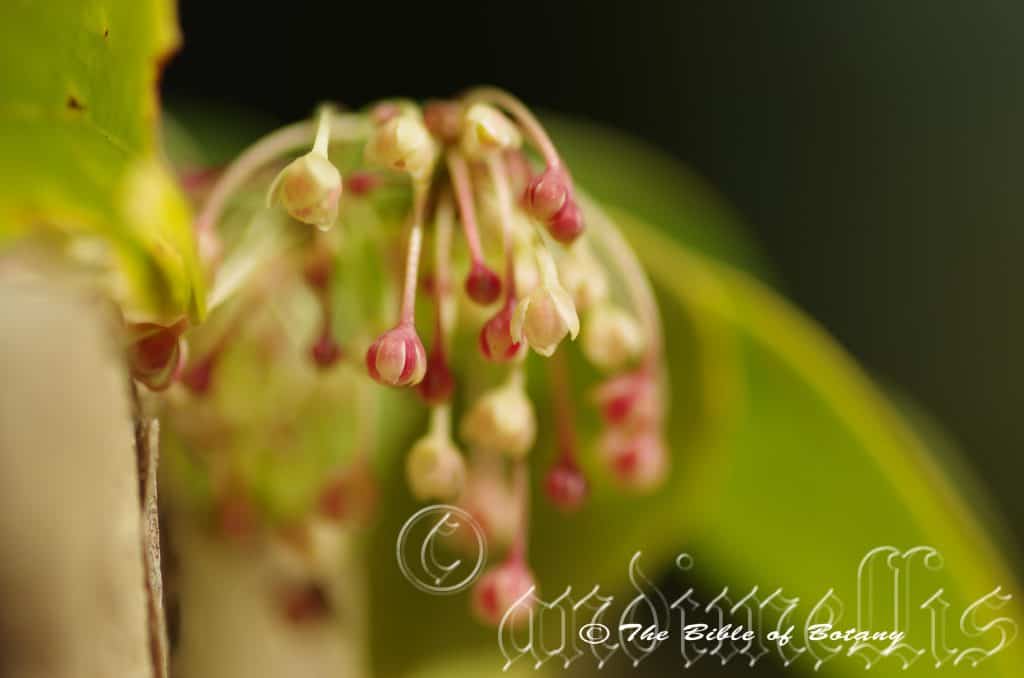
Anderson Gardens Townsville Qld.
Phyllanthus cuscutiflorus
Classification::
Unranked: Eudicots
Unranked: Rosids
Order: Malpighiales
Family: Phyllanthceae
Genus: From Phullon/Phýllon, which is Ancient Greek for a leaf and ántha/ánthos, which is Ancient Greek for the male reproductive organ on a flower or the flower. It refers to small flowers, which appear along the stem, new stem growth and often hidden below the leaves.
Specie: from Cuscuta, which is the old Latin name for a dodder vine and Fl?ris, which is Latin for a flower or Fl?s, which is Roman for the goddess of spring and flowers. It refers to the close resemblance of the flowers to those found in the Cuscuta genus.
Sub specie:
Common Name:
Distribution:
Phyllanthus cuscutiflorus is found south from the Torres Straight Islands to Dingo Creek on Cape York Peninsular in north eastern Queensland. There is an isolated population near Myola on the south eastern corner of the Gulf Plains in central northern Queensland.
https://avh.ala.org.au/occurrences/search?taxa=Phyllanthus+cusutiflorus#tab_mapView
Habitat Aspect Climate:
Phyllanthus cuscutiflorus prefers dappled shade to full sun. It grows in dry rainforests and monsoonal forest. The altitude ranges from 10 meters ASL to 400 meters ASL.
The temperatures range from 4 degrees in July to 39 degrees in January.
The rainfall ranges from lows of 600mm to 3200mm average per annum.
Soil requirements:
Phyllanthus cuscutiflorus prefers sandy loams to rocky or gravelly medium fatty sands, skeletal sands to medium clays. The soils are usually derived from partially decomposed sandstone rocks, granitic rocks or metamorphic rocks. The pH ranges from 5pH to 6.6pH. It does not tolerate water logged soils. Non saline soils to moderately saline soils are tolerated.
Height & Spread:
Wild Plants: 6m to 12m by 3m to 5m.
Characteristics:
Phyllanthus cuscutiflorus grows as a small spreading shrub. The pale reddish-green stems are glabrous.
The leaves are second ranked along the stems. The broad ovate to orbicular or at times obovate-oblong leaves measure 10mm to 20mm in length by 8mm to 12mm in width. The petioles measure 1mm to 1.5mm in length. The bases are broad cuneate while the apexes are truncate, obtuse or obtuse with a fine mucronate tip or at times retuse. The discolourous laminas are greenish-blue and glabrous on the upper laminas while the lower laminas are paler or sub glaucous. The laminas are flat while the margins are entire. The mid vein is prominent on the lower lamina.
The inflorescences of Phyllanthus cuscutiflorus are monoecious or rarely dioecious and are born from the leaf axils.
The male flowers are in small clusters of 3 to 7 individual flowers. The peduncles measure 1mm to 4 mm in length. The 3 opaque to translucent, white, lanceolate sepals are measure 2mm to 2.5mm in length. The 3 opaque to translucent white petals are oblong-elliptical and measure 2mm to 2.5mm in length. The 3 erect bilobed filiform filaments are free with prominent basal glands and measure 1mm to 2mm in length. The globose anthers are deep yellow.
The female flowers are usually born solitary or rarely in pairs from the leak axils. The pedicels measure 2mm to 4mm in length, lengthening to 8mm in fruit. The 3 opaque to translucent white sepals are lanceolate and measure 2mm to 2.5mm in length. The 3 opaque to translucent white petals are oblong-elliptical and measure 2mm to 2.5mm in length. The perianth segments are ovate and measure 1.5mm to 2mm in length by 1.5mm to 2mm in width. The glabrous ovary is greenish-blue. The 3 short styles are linear, deeply bifid and glabrous. The fruits appear from October to January
Phyllanthus cuscutiflorus’s fruits are globose drupes. The drupes are smooth, glabrous and turn reddish when ripe. The sepals and petals turn reddish-purple and are persistent on the ripe fruits. The 6 chamber drupes measure 2.5mm to 3mm in length by 4mm to 5mm in diameter.The deep brown seeds are marked with irregular longitudinal ridges.
Wildlife:
Phyllanthus cuscutiflorus’s fruits are eaten by several fruitigrove birds.
The soft ripe fruits are edible however the hard green fruits are toxic. The ripe fruits to me have an unpleasant taste. The leaves, bark and roots are toxic with toxins that are accumulative in the liver.
Cultivation:
Phyllanthus cuscutiflorus is a beautiful small understory shrub that deserves a place in those small nooks and crannies within a shaded garden in warm temperate, subtropics to the cool tropical areas of Australia. It is ideal in almost every setting at the edge of a rain forest in court yards, around swimming pools or smaller rockeries when its small size can bring a balance into the garden. In cultivation it will grow from 1.5 meters to 2 meters in height by around 1 meter to 1.5 meters in diameter when grown in an open shady position.
It grows exceptionally well on lighter soils When deep leaf litter keeps the soil cool and moisture at an even level. It does best however growing on moist medium clays that are kept moist. If these requirements are met it will re-establish itself quickly forming a beautiful lush ground cover. It is moderately drought resistant in their rainfall zones.
Be imaginative when planting in mass. Use the plants in different configurations with other small plants like Viola betonicifolia or small orchids and ferns that like similar conditions so that a mosaic of various leaf colours and patterns are created. It works very well with Adiantum aethiopicum.
Propagation:
Seeds: Phyllanthus cuscutiflorus seeds can be removed easily from the capsules once they have dried out and begin to split. Sow freshly collected seeds directly into a seed raising mix, keeping them moist not wet. Place the trays beneath 30mm to 50mm shade cloth and keep moist not wet. When the seedlings are 30mm to 40mm tall, prick them out and plant them into 50mm native tubes using a good organic mix.
As the seedlings roots reach the bottom of the tubes nip the tips out and plant them out into their permanent position.
Fertilize using seaweed, fish emulsion or organic chicken pellets soaked in water on an alternate basis. Fertilize every two months until the plants are established then twice annually in early September and March to maintain better health, vitality and flowering.
Further Comments from Readers:
“Hi reader, it seems you use The Bible of Botany a lot. That’s great as we have great pleasure in bringing it to you! It’s a little awkward for us to ask, but our first aim is to purchase land approximately 1,600 hectares to link several parcels of N.P. into one at The Pinnacles NSW Australia, but we need your help. We’re not salespeople. We’re amateur botanists who have dedicated over 30 years to saving the environment in a practical way. We depend on donations to reach our goal. If you donate just $5, the price of your coffee this Sunday, We can help to keep the planet alive in a real way and continue to bring you regular updates and features on Australian plants all in one Botanical Bible. Any support is greatly appreciated. Thank you.”
In the spirit of reconciliation we acknowledge the Bundjalung, Gumbaynggirr and Yaegl and all aboriginal nations throughout Australia and their connections to land, sea and community. We pay our respect to their Elders past, present and future for the pleasures we have gained.

Author’s Garden The Pinnacles NSW
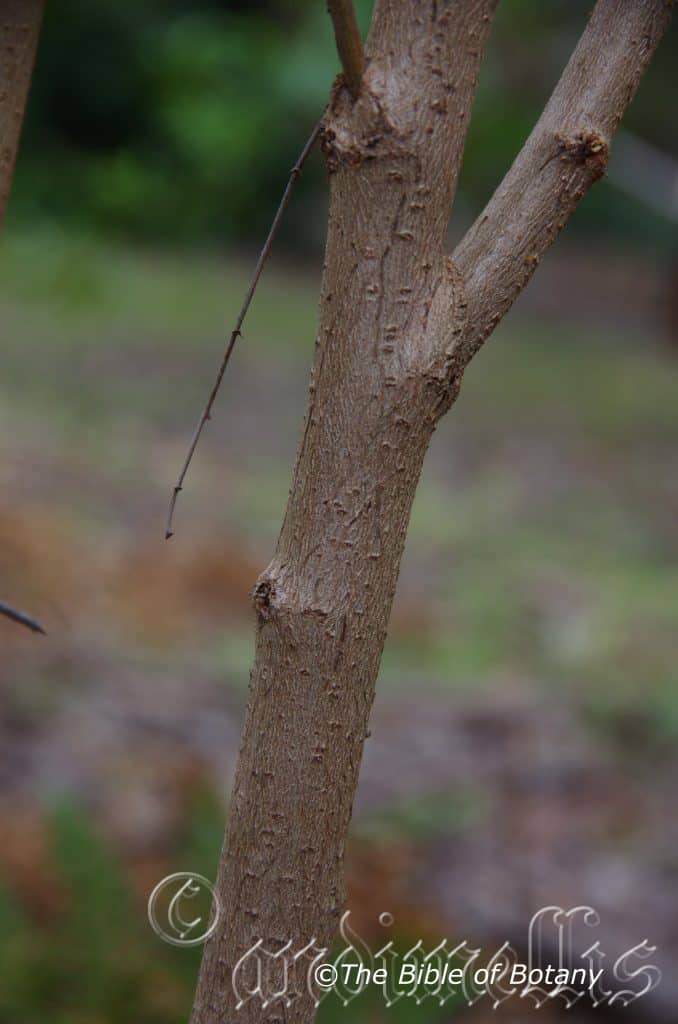
Author’s Garden The Pinnacles NSW

Author’s Garden The Pinnacles NSW
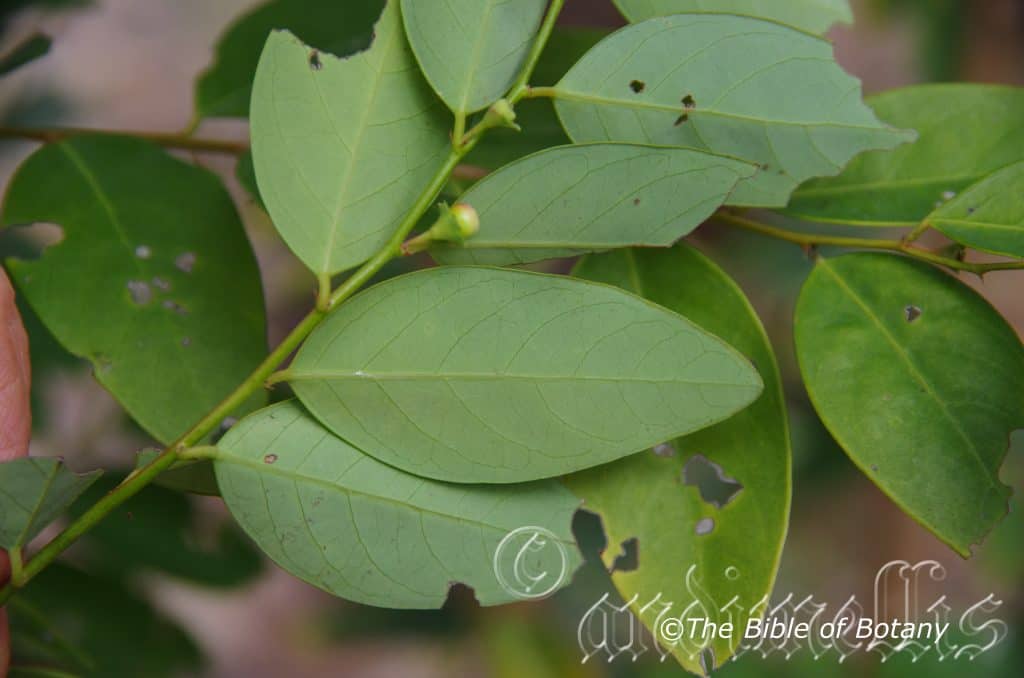
Author’s Garden The Pinnacles NSW

Author’s Garden The Pinnacles NSW
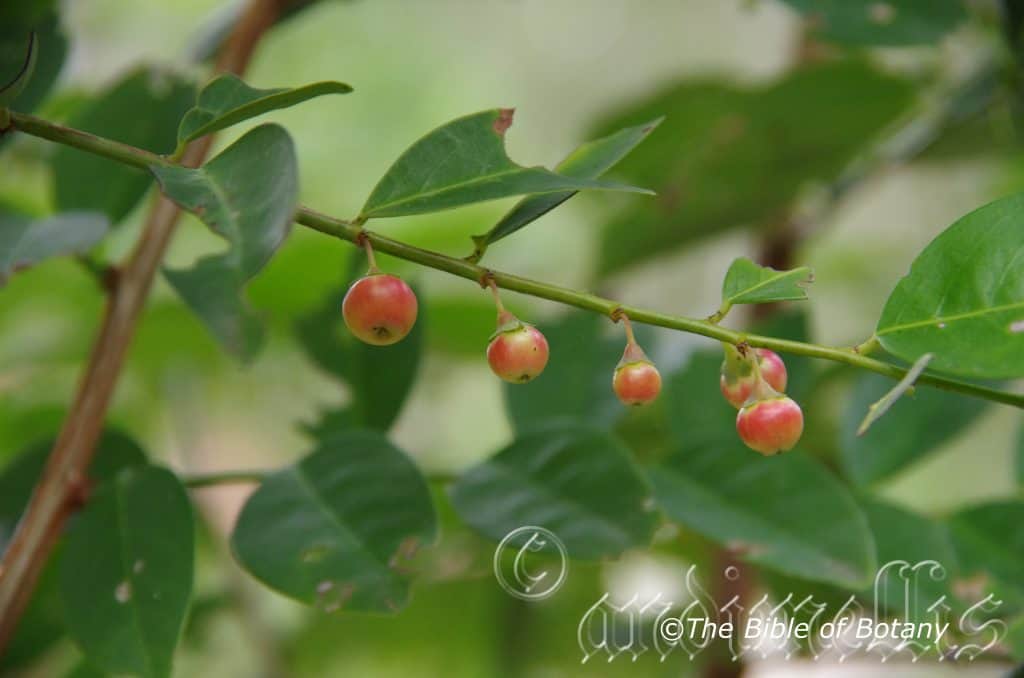
Author’s Garden The Pinnacles NSW
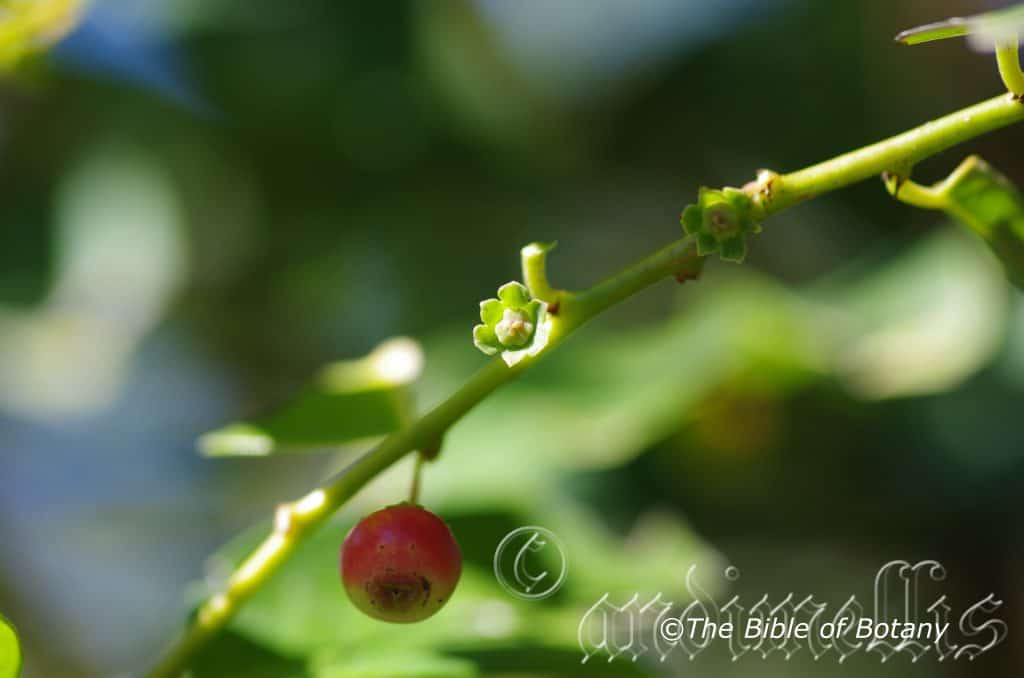
Author’s Garden The Pinnacles NSW
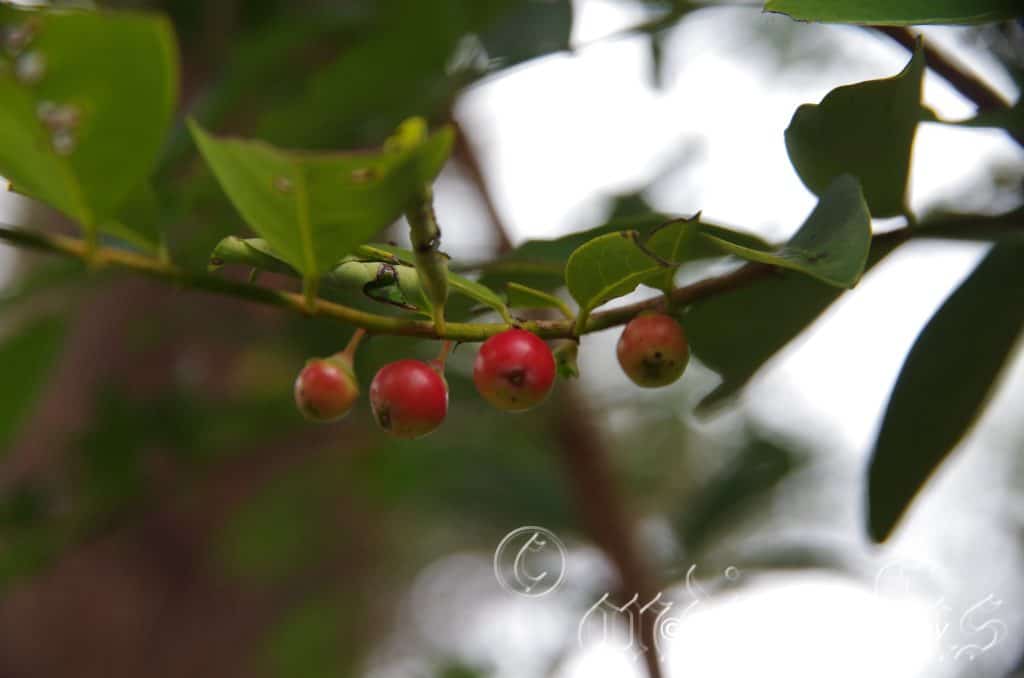
Author’s Garden The Pinnacles NSW
Phyllanthus gunnii
Classification:
Unranked: Eudicots
Unranked: Rosids
Order: Malpighiales
Family: Phyllanthceae
Genus: From Phullon/Phýllon, which is Ancient Greek for a leaf and ántha/ánthos, which is Ancient Greek for the male reproductive organ on a flower or the flower. It refers to small flowers, which appear along the stem, new stem growth and often hidden below the leaves.
Specie: Is named in honour of Ronald Campbell Gunn; 1808-1881, who was a South African born Tasmanian collector of plants and botanist.
Sub specie:
Common Name: Scrubby Spurge.
Distribution:
Phyllanthus gunnii is found south from Whypalla in north eastern Queensland to the Tambo River in north eastern Victoria. It is found on the western Plains as far west as the Cobar Peneplains, on and east of the Great Dividing to the coast. It is also found on both sides of Port Phillip Bay near Geelong and on southern Mornington Peninsular.
It is also found on Mount Arapiles in central western Victoria and Point Germaine Gorge north of Port Pirie in southern South Australia.
It is found on the Bass Straight Islands and across the north coast of Tasmania to Launceston and down the east coast from Georges Bay to Forestier Peninsular.
https://avh.ala.org.au/occurrences/search?taxa=Phyllanthus+gunnii#tab_mapView
Habitat Climate:
Phyllanthus gunnii prefers dappled shade to heavy shade. It grows amongst rocks on slopes or creek or stream flats in dry sclerophyll forest to moist Eucalypt forest in sheltered positions. The altitude ranges from 20 meters ASL to 1070 meters ASL.
The temperatures range from minus 4 degrees in July to 36 degrees in January.
The rainfall ranges from lows of 400mm to 3000mm average per annum.
Soil requirements:
Phyllanthus gunnii prefers sandy loams to rocky or gravelly medium fatty sands or skeletal sands. The soils are usually derived from partially decomposed sandstone rocks or granitic rocks. The pH ranges from 5pH to 6.6pH. It does not tolerate water logged soils. Non saline soils to moderately saline soils are tolerated.
Height & Spread:
Wild Plants: 1m to 2m by 1m to 1.5m
Characteristics:
Phyllanthus gunnii grows as a small spreading shrub. The pale reddish-green stems are glabrous.
The leaves of Phyllanthus gunniiare second ranked along the stems. The broad ovate to orbicular or at times obovate-oblong leaves measure 10mm to 20mm in length by 8mm to 12mm in width. The petioles measure 1mm to 1.5mm in length. The bases are broad cuneate while the apexes are truncate, obtuse or obtuse with a fine mucronate tip or at times retuse. The discolourous laminas are greenish-blue and glabrous on the upper laminas while the lower laminas are paler or sub glaucous. The laminas are flat while the margins are entire. The mid vein is prominent on the lower lamina.
The inflorescences are monoecious or rarely dioecious and are born from the leaf axils.
The male flowers are in small clusters of 3 to 7 individual flowers. The peduncles measure 1mm to 4 mm in length. The 3 opaque to translucent, white, lanceolate sepals are measure 2mm to 2.5mm in length. The 3 opaque to translucent white petals are oblong-elliptical and measure 2mm to 2.5mm in length. The 3 erect bilobed filiform filaments are free with prominent basal glands and measure 1mm to 2mm in length. The globose anthers are deep yellow.
The female flowers are usually born solitary or rarely in pairs from the leak axils. The pedicels measure 2mm to 4mm in length, lengthening to 8mm in fruit. The 3 opaque to translucent white sepals are lanceolate and measure 2mm to 2.5mm in length. The 3 opaque to translucent white petals are oblong-elliptical and measure 2mm to 2.5mm in length. The perianth segments are ovate and measure 1.5mm to 2mm in length by 1.5mm to 2mm in width. The glabrous ovary is greenish-blue. The 3 short styles are linear, deeply bifid and glabrous. The fruits appear from October to January
Phyllanthus gunnii’s fruits are globose drupes. The drupes are smooth, glabrous and turn reddish when ripe. The sepals and petals turn reddish-purple and are persistent on the ripe fruits. The 6 chamber drupes measure 2.5mm to 3mm in length by 4mm to 5mm in diameter.The deep brown seeds are marked with irregular longitudinal ridges.
Wildlife:
Phyllanthus gunnii’s fruits are eaten by several fruitigrove birds.
The soft ripe fruits are edible however the hard green fruits are toxic. The ripe fruits to me have an unpleasant taste. The leaves, bark and roots are toxic with toxins that are accumulative in the liver.
Cultivation:
Phyllanthus gunnii is a beautiful small understory shrub that deserves a place in those small nooks and crannies within a shaded garden in warm temperate, subtropics to the cool tropical areas of Australia. It is ideal in almost every setting at the edge of a rain forest in court yards, around swimming pools or smaller rockeries where its small size can bring a balance into the garden. In cultivation it will grow from 1.5 meters to 2 meters in height by around 1 meter to 1.5 meters in diameter when grown in an open shady position.
It grows exceptionally well on lighter soils When deep leaf litter keeps the soil cool and moisture at an even level. It does best however growing on moist medium clays that are kept moist. If these requirements are met it will re-establish itself quickly forming a beautiful lush ground cover. It is moderately drought resistant in their rainfall zones.
Be imaginative when planting in mass. Use the plants in different configurations with other small plants like Viola betonicifolia or small ferns that like similar conditions so that a mosaic of various leaf colours and patterns are created. It works very well with Adiantum aethiopicum.
Propagation:
Seeds: Phyllanthus gunnii seeds can be removed easily from the capsules once they have dried out and begin to split. Sow freshly collected seeds directly into a seed raising mix, keeping them moist not wet. Place the trays beneath 30mm to 50mm shade cloth and keep moist not wet. When the seedlings are 30mm to 40mm tall, prick them out and plant them into 50mm native tubes using a good organic mix.
As the seedlings roots reach the bottom of the tubes nip the tips out and plant them out into their permanent position.
Fertilize using seaweed, fish emulsion or organic chicken pellets soaked in water on an alternate basis. Fertilize every two months until the plants are established then twice annually in early September and March to maintain better health, vitality and flowering.
Further Comments from Readers:
“Hi reader, it seems you use The Bible of Botany a lot. That’s great as we have great pleasure in bringing it to you! It’s a little awkward for us to ask, but our first aim is to purchase land approximately 1,600 hectares to link several parcels of N.P. into one at The Pinnacles NSW Australia, but we need your help. We’re not salespeople. We’re amateur botanists who have dedicated over 30 years to saving the environment in a practical way. We depend on donations to reach our goal. If you donate just $5, the price of your coffee this Sunday, We can help to keep the planet alive in a real way and continue to bring you regular updates and features on Australian plants all in one Botanical Bible. Any support is greatly appreciated. Thank you.”
In the spirit of reconciliation we acknowledge the Bundjalung, Gumbaynggirr and Yaegl and all aboriginal nations throughout Australia and their connections to land, sea and community. We pay our respect to their Elders past, present and future for the pleasures we have gained.

Wombat Creek Conservation Park NSW
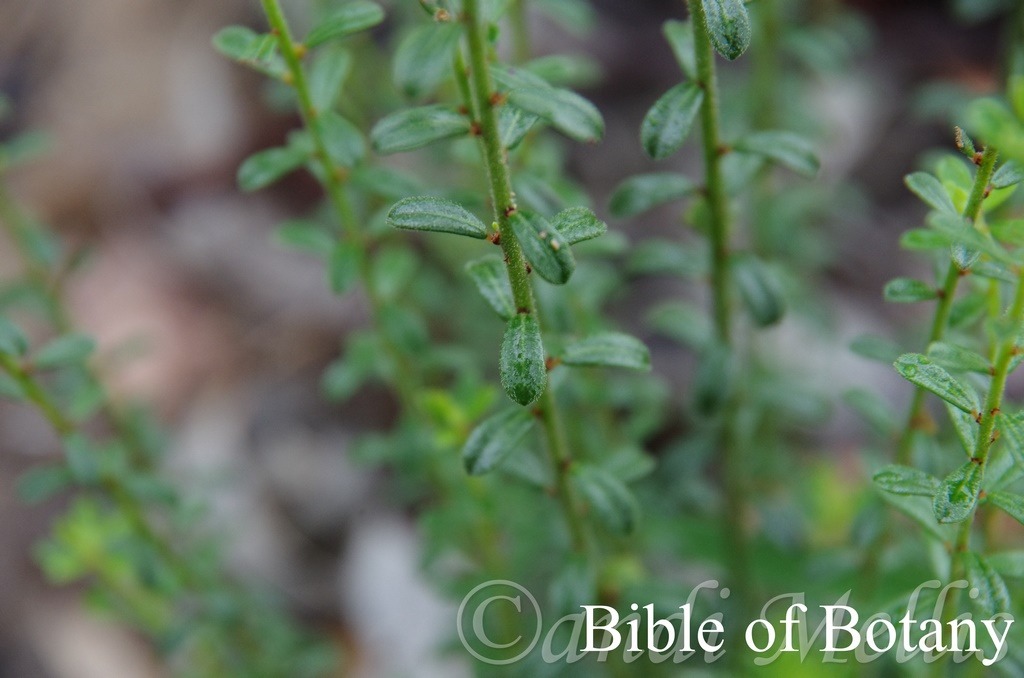
Wombat Creek Conservation Park NSW

Wombat Creek Conservation Park NSW
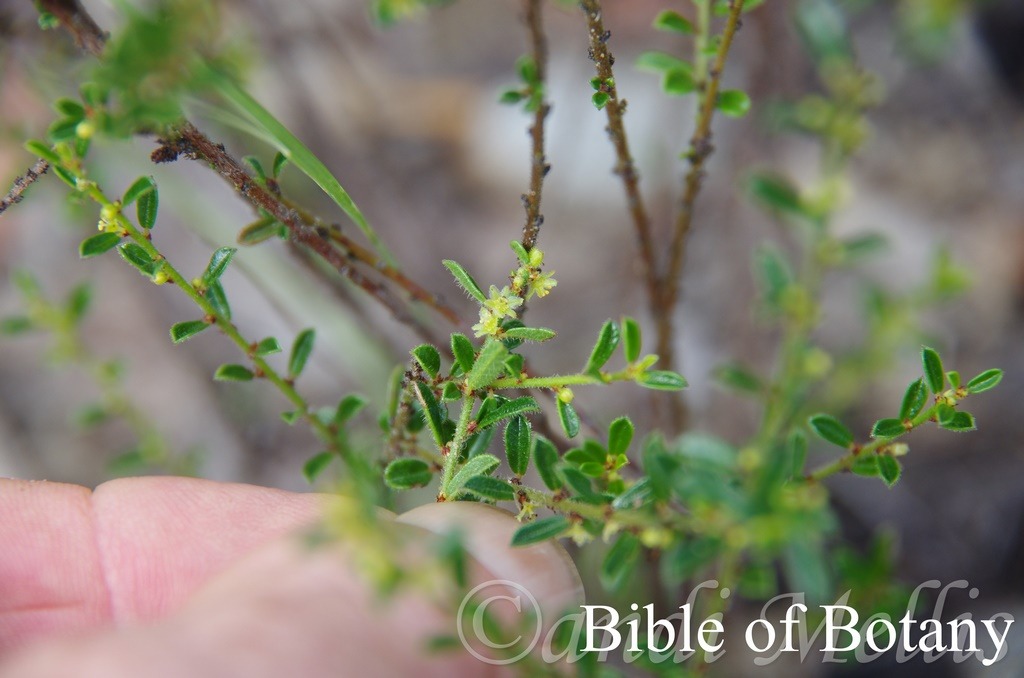
Wombat Creek Conservation Park NSW
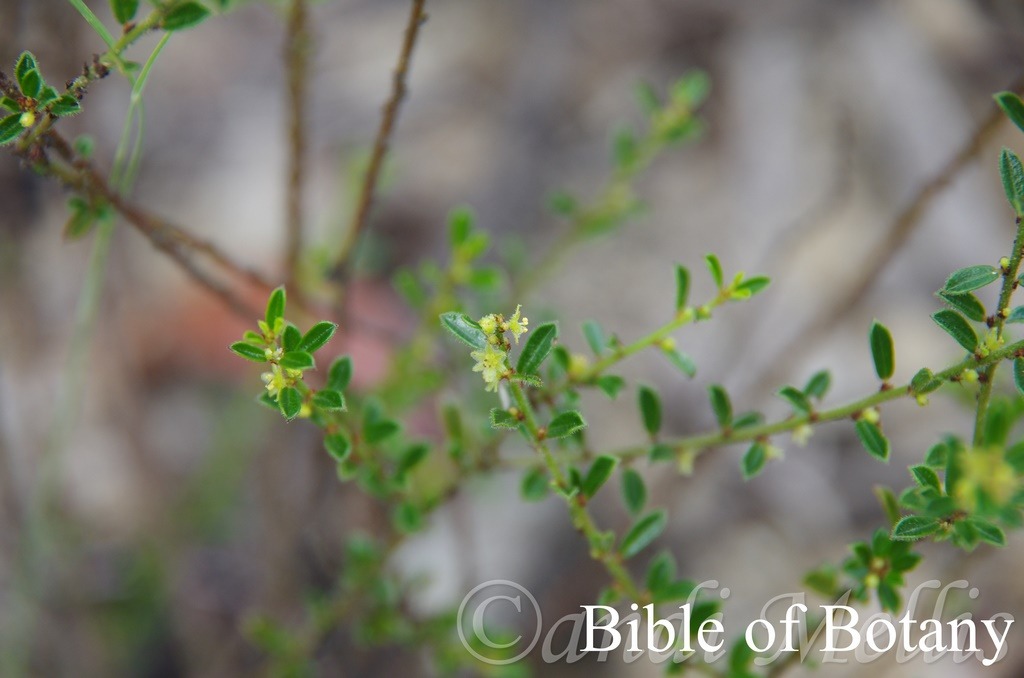
Wombat Creek Conservation Park NSW

Wombat Creek Conservation Park NSW
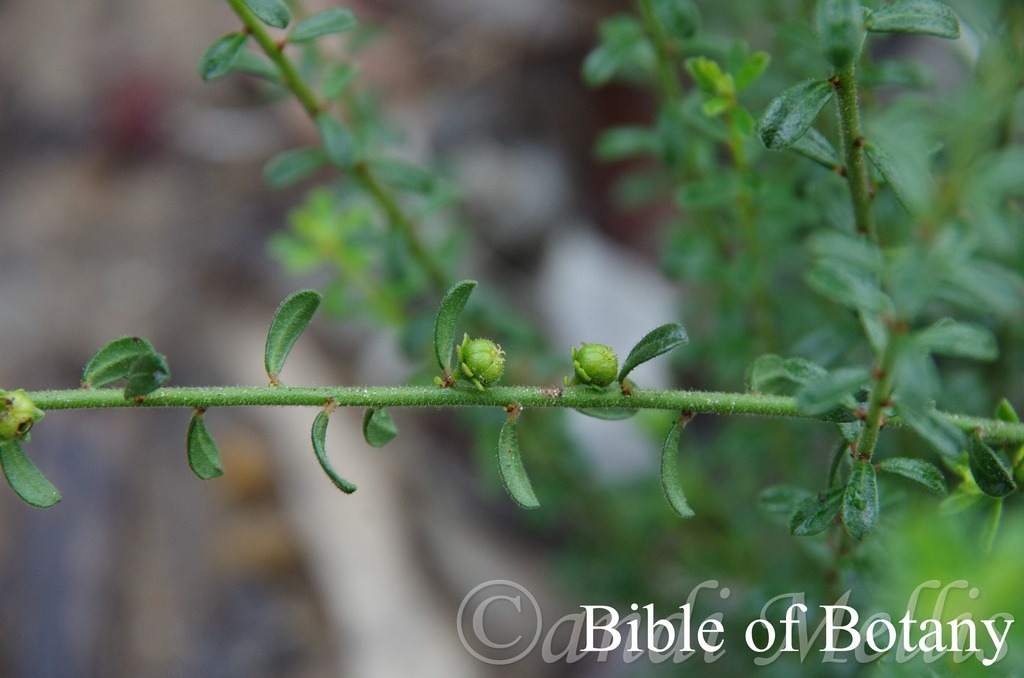
Wombat Creek Conservation Park NSW
Phyllanthus hirtellus
Classification::
Unranked: Eudicots
Unranked: Rosids
Order: Malpighiales
Family: Phyllanthceae
Genus: From Phullon/Phýllon, which is Ancient Greek for a leaf and ántha/ánthos, which is Ancient Greek for the male reproductive organ on a flower or the flower. It refers to small flowers, which appear along the stem, new stem growth and often hidden below the leaves.
Specie: From Hirsutus, which is for a hairy and shaggy. It refers to plant structures or organs which are covered in short, bristly, course, shaggy hairs.
Sub specie:
Common Name: Thyme Spurge.
Distribution:
Phyllanthus hirtellus found south from the Blackdown Tablelands in central eastern Queensland to southern New South Wales on the western Plains to the coast then more coastal through Victoria around to the Grampians. It is found on and east of the Great Dividing Range. There is an isolated pocket near Bowen in north eastern Queensland.
https://avh.ala.org.au/occurrences/search?taxa=Phyllanthus+hirtellus#tab_mapView
Habitat Aspect Climate:
Phyllanthus hirtellus prefers dappled shade to full sun. It grows in moist heaths to dry schlerophyll forests. The altitude ranges from 12 meters ASL to 950 meters ASL.
The temperatures range from minus 4 degrees in July to 40 degrees in January.
The rainfall ranges from lows of 650mm to 2000mm average per annum.
Soil requirements:
Phyllanthus hirtellus prefer sandy loams, light fatty soils or light clays. The soils are usually derived from decomposed black basalts, metamorphic rocks, granite, sandstone or alluvial deposits. The pH ranges from 4.5pH to 7pH. It does not tolerate water logged soils. Non saline soils to slightly saline soils are tolerated.
Height & Spread:
Wild Plants: 0.5m to 1.25m by 0.3m to 0.5m
Characteristics:
Phyllanthus hirtellus grows as a small upright sub shrub. The older mid green stems are scabrous to glabrous. The young mid green stems are sparsely to densely covered in short hirsute hairs.
The leaves are irregularly 7 to 8 ranked along the branchlets. The obovate to narrow oblanceolate or obcordate, leaves measure 3mm to 11mm in length by 2mm to 6.5mm in width. The reddish-brown to black stipules are cordate and measure 1.2mm to 1.6 mm length. The leaves are subsessile and measure less than 1.5mm in length. The bases taper bto the petioles, while the apexes are obtuse often with a small mucronate tip. The discolourous laminas are deep green and sparsely covered in white hirtellus hairs. The laminas curve upwards from the mid vein to the margins and decurve on the apical third, while the margins are entire. The mid vein is prominent on the lower lamina and is clearly visible from the upper lamina.
.
The Inflorescences are monoecious or rarely dioecious. The flowers are born from the leaf axils.
The 2 to 3 male flowers are on pedicels, which measure 0.6mm to 1.8mm in length. The 3 sepals measure 0.7mm to 2.1mm in length. The 3 white to yellow, petals are sparsely covered in hirtellus hairs externally. The disc measures 0.9mm to 1.7mm in diameter, while the filaments are connate at the base and measure 0.5mm to 1.2mm in length.
The female flowers are usually born solitary or rarely in pairs from the leak axils. The pedicels measure 0.8mm to 4mm in length. The 3 broad elliptical sepals measure 1.1mm to 3.5mm in length. The 3 glossy creamy-yellow broad elliptical petals measure 1.1mm to 3.5mm in length. The perianth segments are ovateand measure 1.5mm to 2mm in length. The disc measures 1.3mm to 3.1mm in diameter, while the styles variously divided and measure 1.2mm to 1.6mm in length.
The fruits of Phyllanthus hirtellus are transversely ellipsoid, apically depressed capsules. The glabrous to puberulous capsules measure 0.6mm to 4mm in length by 2.4mm to 4.mm in diameter. The yellow-brown to pallid-brown or black seeds are somewhat scabrous and measure 1.2mm to 2.4mm in length.
Wildlife:
Phyllanthus microcladus’s wildlife is unknown to the author.
The soft ripe fruits are edible however the hard green fruits are toxic. The leaves, bark and roots are toxic with toxins that are accumulative in the liver.
Cultivation:
Phyllanthus hirtellus is a beautiful small understory shrub that deserves a place in those small nooks and crannies within a semi shaded garden in warm temperate, subtropics to the cool tropical areas of Australia. It is ideal in almost every setting at the edge of a rain forest in court yards, around swimming pools or smaller rockeries where their small size can bring a balance into the garden. In cultivation it will grow from 0.4 meters to 0.6 meters in height by around 0.3 meters to 0.4 meters in diameter when grown in an open position.
It grows exceptionally well on lighter soils When deep leaf litter keeps the soil cool and moisture at an even level. It does best however growing on moist medium clays that a kept moist. If these requirements are met they will establish themselves quickly forming a beautiful lush ground cover. It is moderately drought resistant in their rainfall zones.
Be imaginative when planting in mass. Use the plants in different configurations with other small plants like Viola betonicifolia or small orchids and ferns that like similar conditions so that a mosaic of various leaves colours and patterns a created. It works very well with Adiantum aethiopicum.
Propagation:
Seeds: Phyllanthus hirtellus seeds can be removed easily from the capsules once they have dried out and begin to split. Sow freshly collected seeds directly into a seed raising mix, keeping them moist not wet. Place the trays beneath 30% to 50% shade cloth and keep moist not wet. When the seedlings are 30mm to 40mm tall, prick them out and plant them into 50mm native tubes using a good organic mix.
As the seedlings roots ach the bottom of the tubes nip the tips out and plant them out into their permanent position.
Fertilize using seaweed, fish emulsion or organic chicken pellets soaked in water on an alternate basis. Fertilize every two months until the plants are established then twice annually in early September and March to maintain better health, vitality and flowering.
Further Comments from Readers:
“Hi reader, it seems you use The Bible of Botany a lot. That’s great as we have great pleasure in bringing it to you! It’s a little awkward for us to ask, but our first aim is to purchase land approximately 1,600 hectares to link several parcels of N.P. into one at The Pinnacles NSW Australia, but we need your help. We’re not salespeople. We’re amateur botanists who have dedicated over 30 years to saving the environment in a practical way. We depend on donations to reach our goal. If you donate just $5, the price of your coffee this Sunday, We can help to keep the planet alive in a real way and continue to bring you regular updates and features on Australian plants all in one Botanical Bible. Any support is greatly appreciated. Thank you.”
In the spirit of reconciliation we acknowledge the Bundjalung, Gumbaynggirr and Yaegl and all aboriginal nations throughout Australia and their connections to land, sea and community. We pay our respect to their Elders past, present and future for the pleasures we have gained.

Mount Cootha Botanical Gardens Qld.

Mount Cootha Botanical Gardens Qld.
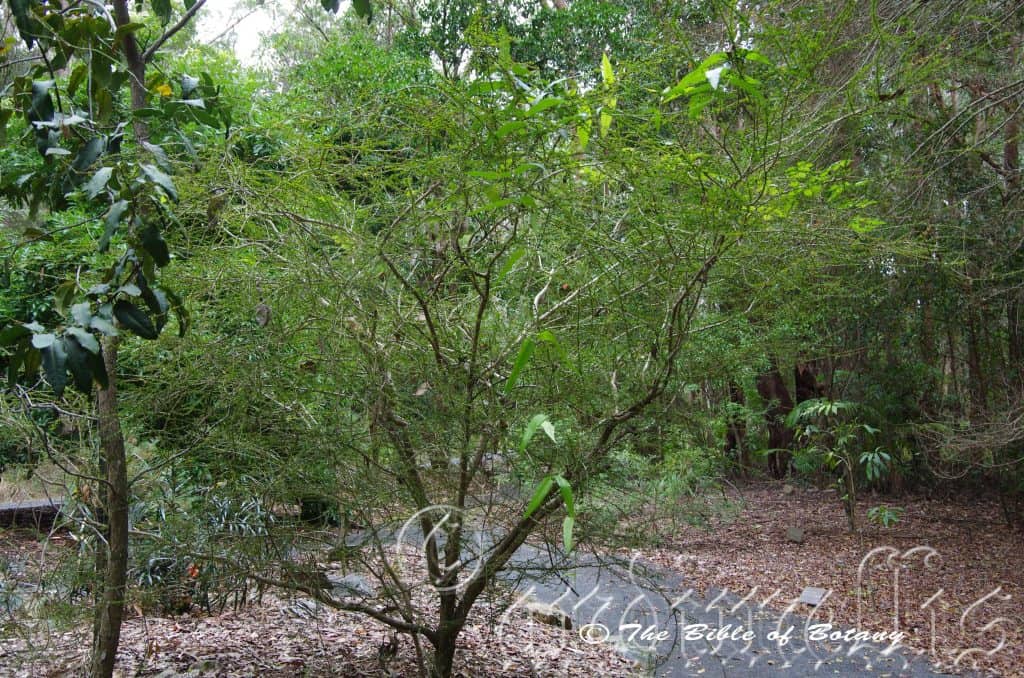
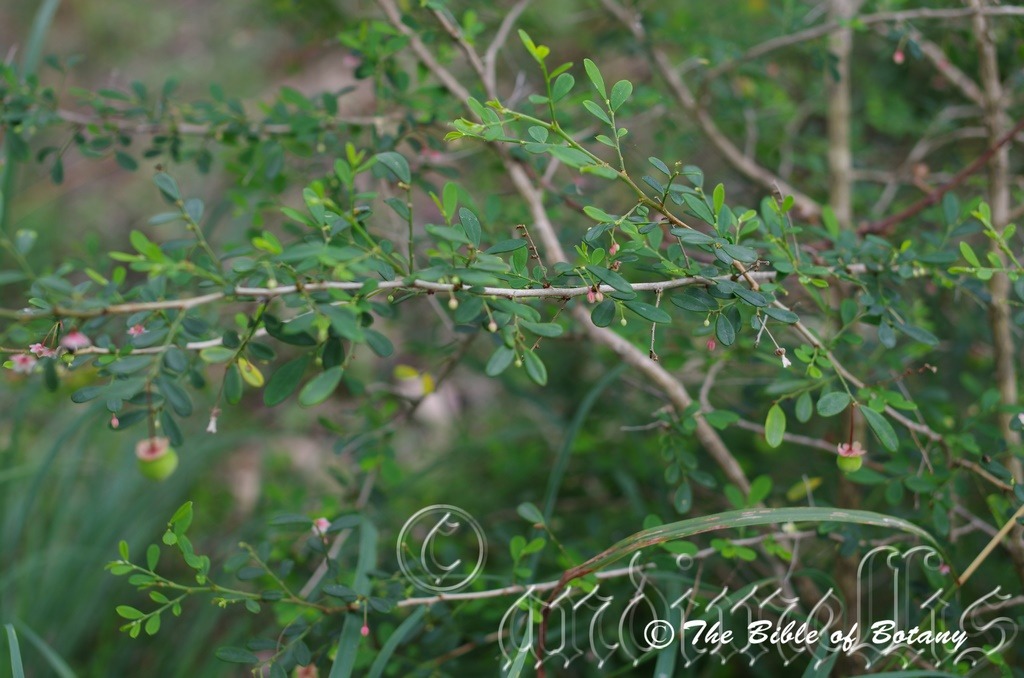
Mount Cootha Botanical Gardens Qld.
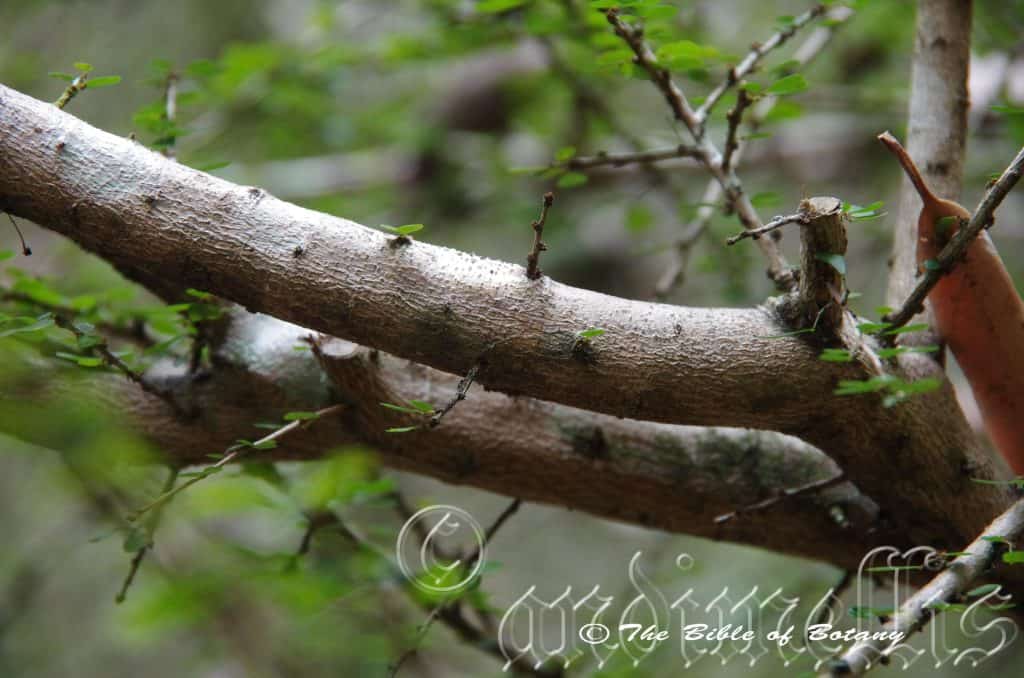
NCBG Coffs Harbour NSW
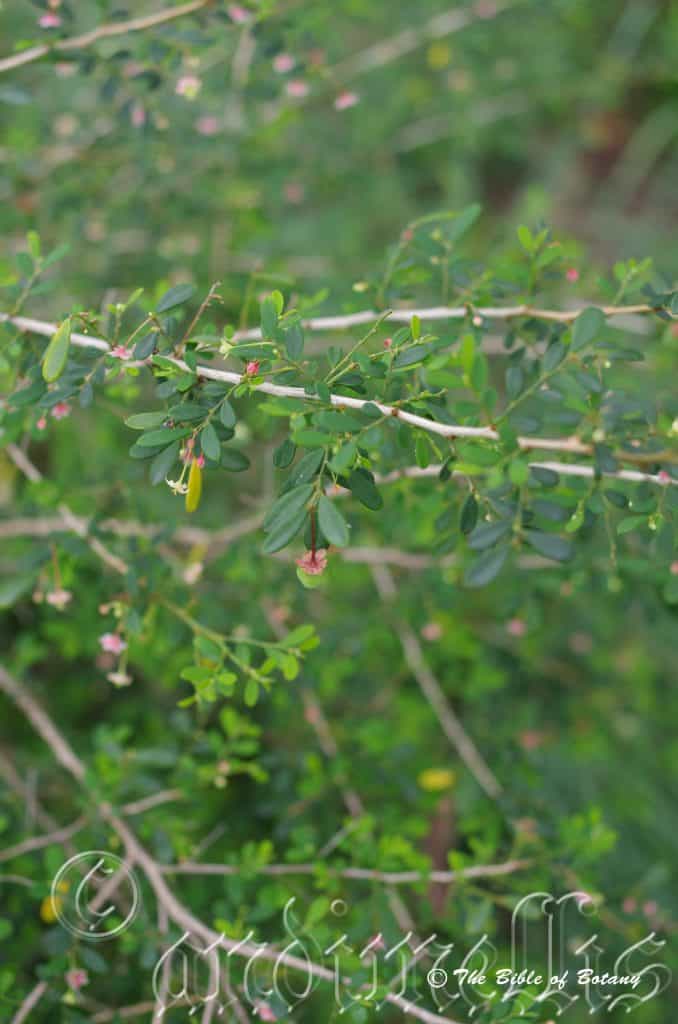
Mount Cootha Botanical Gardens Qld.
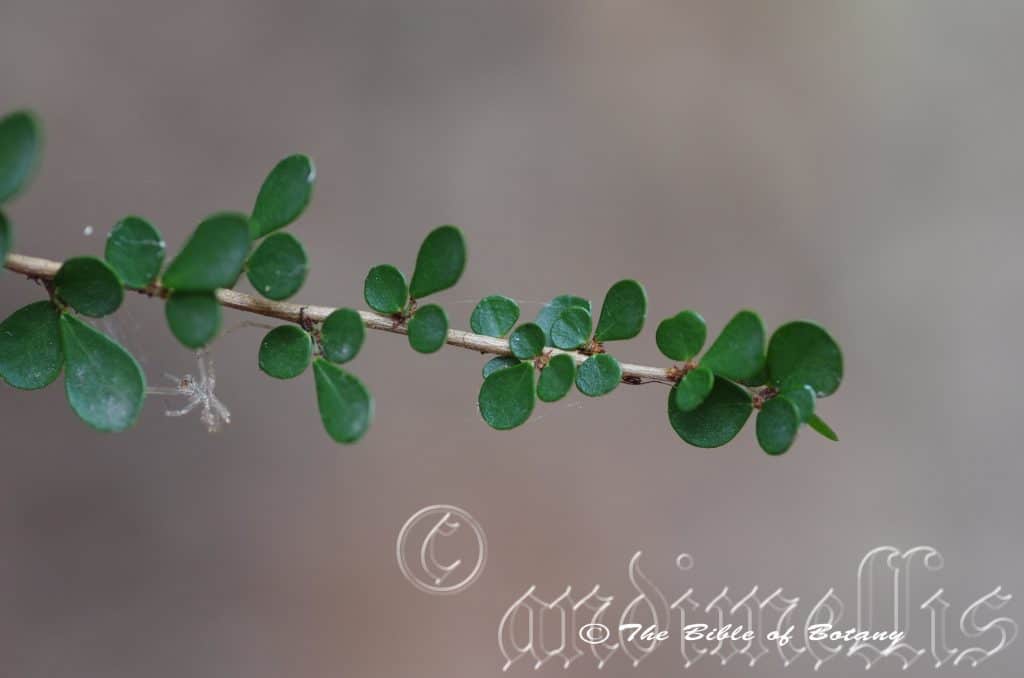
NCBG Coffs Harbour NSW

NCBG Coffs Harbour NSW
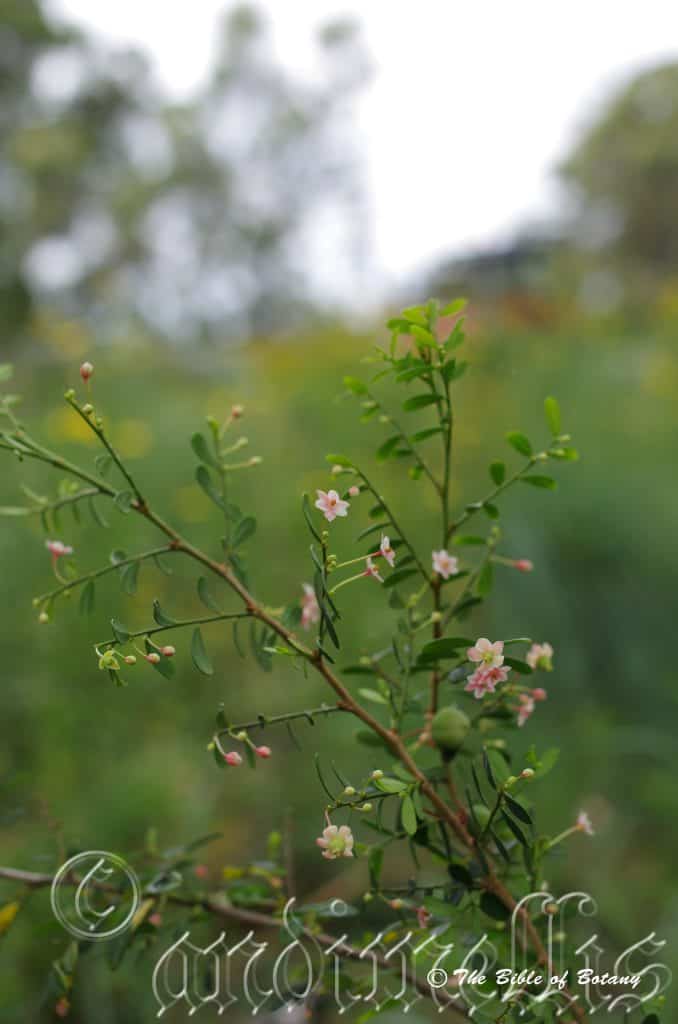
Mount Cootha Botanical Gardens Qld.

Mount Cootha Botanical Gardens Qld.
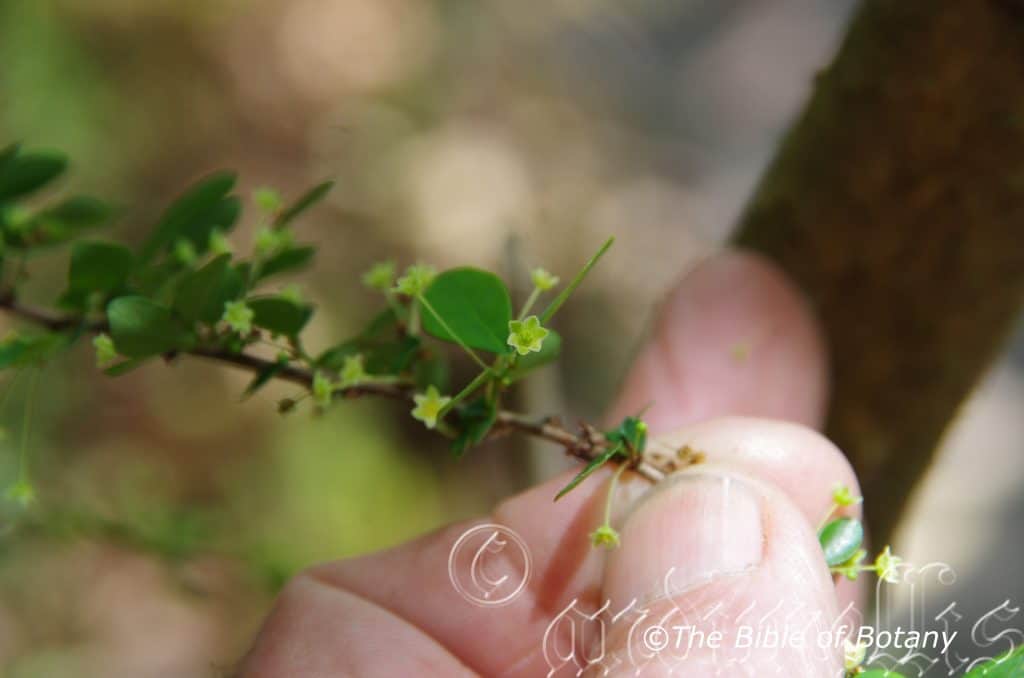
NCBG Coffs Harbour NSW
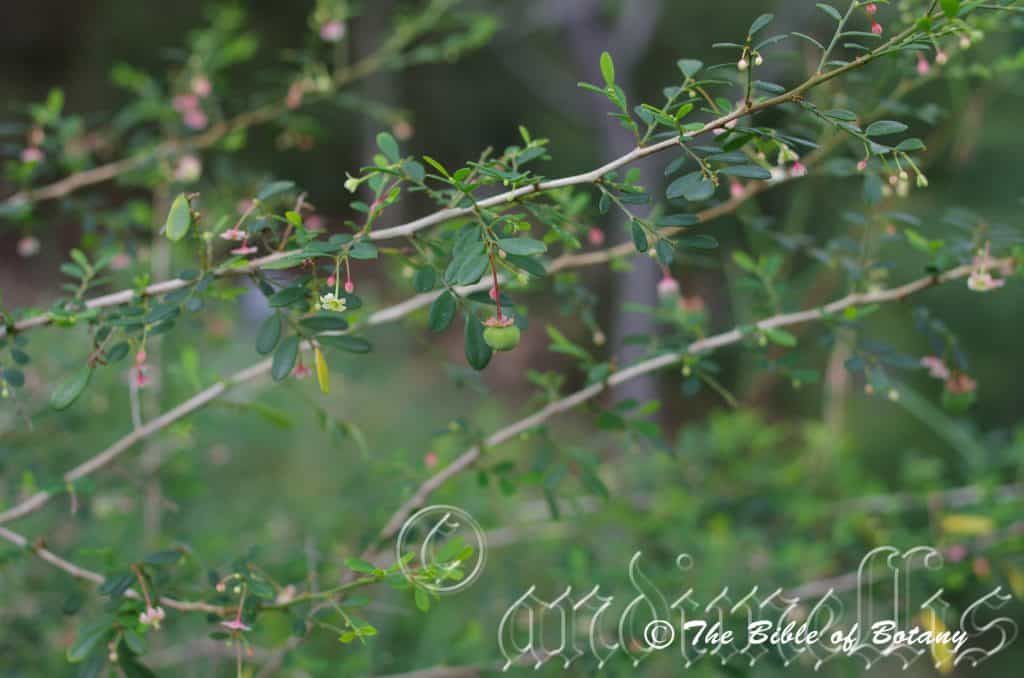
Mount Cootha Botanical Gardens Qld.
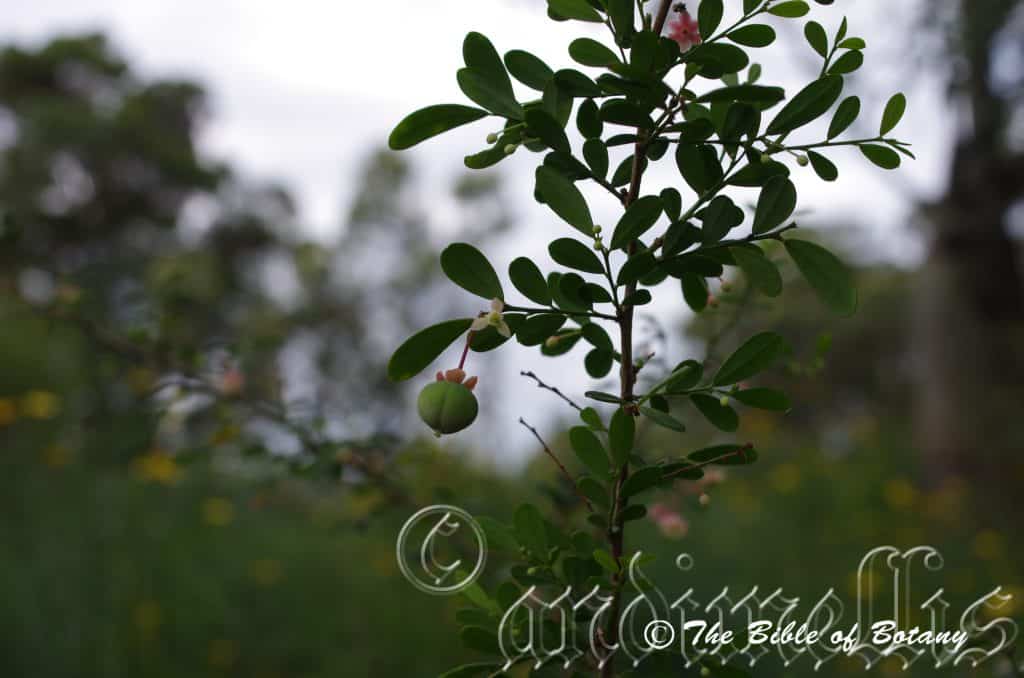
Mount Cootha Botanical Gardens Qld.
Phyllanthus microcladus
Classification::
Unranked: Eudicots
Unranked: Rosids
Order: Malpighiales
Family: Phyllanthceae
Genus: From Phullon/Phýllon, which is Ancient Greek for a leaf and ántha/ánthos, which is Ancient Greek for the male reproductive organ on a flower or the flower. It refers to small flowers, which appear along the stem, new stem growth and often hidden below the leaves.
Specie: from Mikrós, which is Ancient Greek for small or very small and Klados, which is Ancient Greek for a stem or branch. It refers to stems, which are rather slender even when compared to other species in the genus.
Sub specie:
Common Name: Small Leaf Phyllanthus.
Distribution:
Phyllanthus microcladusis found south from Mossman in far north Queensland to Shannon Creek in the Clarence valley in north eastern New South Wales. It is found on and east of the Great Dividing Range except for a population on Zamia Creek in Palm Grove Nation Park in central Queensland.
https://avh.ala.org.au/occurrences/search?taxa=Phyllanthus+microcladus#tab_mapView
Habitat Aspect Climate:
Phyllanthus microcladus prefers dappled shade to full sun. It grows along riparian zones on creeks, streams or rivers in well-developed moist Rainforests. The altitude ranges from 180 meters ASL to 1200 meters ASL.
The temperatures range from minus 2 degrees in July to 40 degrees in January.
The rainfall ranges from lows of 650mm to 3200mm average per annum.
Soil requirements:
Phyllanthus microcladus prefer sandy loams, light fatty soils or light clays. The soils are usually derived from black basalts, metamorphic rocks or at times better quality sandstones and shales. The pH ranges from 5pH to 6.6pH. It does not tolerate water logged soils. Non saline soils to slightly saline soils are tolerated.
Height & Spread:
Wild Plants: 0.15m to 0.35m by 0.3m to 0.5m
Characteristics:
Phyllanthus microcladus grows as a small spreading sub shrub. The older pale grey stems are glabrous. The young stems are reddish-maroon, glabrous and glossy.
The leaves are usually clustered on short lateral branchlets. The ovate leaves measure 3mm to 9mm in length by 2mm to 5mm in width. The brown stipules measure 1mm to 2mm in length. The petioles measure 0.5mm to 1.5mm in length. The bases are rounded while the apexes are obtuse often with a small mucronate tip. The concolourous laminas are deep bluish–green glabrous and glossy. The laminas are flat while the margins are entire. The mid vein is prominent on the lower lamina.
The Inflorescences are monoecious or rarely dioecious. The flowers are born from the leaf axils.
The male flowers are in small clusters of 2 to 7 individual flowers. The peduncles measure 5mm to 10mm in length. The 3 glossy creamy-yellow tinged pink or lime-green sepals are spathulate to broad spathulate and measure 2.5mm to 3mm in length. The 3 glossy creamy-yellow tinged pink or lime-green petals are oblong to broad spathulate and measure 2.5mm to 3mm in length. The 3 bifid filaments are linear and free with prominent basal glands. The clavate to spherical anthers are pale yellow.
The female flowers are usually born solitary or rarely in pairs from the leak axils. The pedicels measure 2mm to 4mm in length, lengthening to 15mm in fruit. The 3 glossy creamy-yellow tinged pink or lime-green sepals are spathulate to broad spathulate and measure 2.5mm to 3mm in length. The 3 glossy creamy-yellow tinged pink or lime-green petals are oblong to broad spathulate and measure 2.5mm to 3mm in length. The perianth segments are hemispherical and measure 1.5mm to 2mm in length by 1.5mm to 2mm in width. The glabrous ovary is yellowish-green to lime-green. The 3 short styles are linear, deeply bifid and glabrous. The fruits appear from December to January.
The fruits of Phyllanthus microcladus are globose drupes. The drupes are smooth, glossy and turn scarlet-red when ripe. The sepals and petals turn reddish-purple and are persistent on the ripe fruits. The 6 chamber drupes measure 2.5mm to 3mm in length by 4mm to 5mm in diameter.The deep brown seeds are smooth and glabrous.
Wildlife:
Phyllanthus microcladus’s fruits are eaten by several fruitigrove birds.
The soft ripe fruits are edible however the hard green fruits are toxic. The leaves, bark and roots are toxic with toxins that are accumulative in the liver.
Cultivation:
Phyllanthus microcladus is a beautiful small understory shrub that deserves a place in those small nooks and crannies within a shaded garden in warm temperate, subtropics to the cool tropical areas of Australia. It is ideal in almost every setting at the edge of a rain forest in court yards, around swimming pools or smaller rockeries where their small size can bring a balance into the garden. In cultivation it will grow from 0.4 meters to 0.5 meters in height by around 0.5 meters to 0.6 meters in diameter when grown in an open shady position.
It grows exceptionally well on lighter soils When deep leaf litter keeps the soil cool and moisture at an even level. It does best however growing on moist medium clays that a kept moist. If these requirements are met they will establish themselves quickly forming a beautiful lush ground cover. It is moderately drought resistant in their rainfall zones.
Be imaginative when planting in mass. Use the plants in different configurations with other small plants like Viola betonicifolia or small orchids and ferns that like similar conditions so that a mosaic of various leaves colours and patterns a created. It works very well with Adiantum aethiopicum.
Propagation:
Seeds: Phyllanthus microcladus seeds can be removed easily from the capsules once they have dried out and begin to split. Sow freshly collected seeds directly into a seed raising mix, keeping them moist not wet. Place the trays beneath 30mm to 50mm shade cloth and keep moist not wet. When the seedlings are 30mm to 40mm tall, prick them out and plant them into 50mm native tubes using a good organic mix.
As the seedlings roots reach the bottom of the tubes nip the tips out and plant them out into their permanent position.
Fertilize using seaweed, fish emulsion or organic chicken pellets soaked in water on an alternate basis. Fertilize every two months until the plants are established then twice annually in early September and March to maintain better health, vitality and flowering.
Further Comments from Readers:
“Hi reader, it seems you use The Bible of Botany a lot. That’s great as we have great pleasure in bringing it to you! It’s a little awkward for us to ask, but our first aim is to purchase land approximately 1,600 hectares to link several parcels of N.P. into one at The Pinnacles NSW Australia, but we need your help. We’re not salespeople. We’re amateur botanists who have dedicated over 30 years to saving the environment in a practical way. We depend on donations to reach our goal. If you donate just $5, the price of your coffee this Sunday, We can help to keep the planet alive in a real way and continue to bring you regular updates and features on Australian plants all in one Botanical Bible. Any support is greatly appreciated. Thank you.”
In the spirit of reconciliation we acknowledge the Bundjalung, Gumbaynggirr and Yaegl and all aboriginal nations throughout Australia and their connections to land, sea and community. We pay our respect to their Elders past, present and future for the pleasures we have gained.
Phyllanthus similis
Classification::
Unranked: Eudicots
Unranked: Rosids
Order: Malpighiales
Family: Phyllanthceae
Genus: From Phullon/Phýllon, which is Ancient Greek for a leaf and ántha/ánthos, which is Ancient Greek for the male reproductive organ on a flower or the flower. It refers to small flowers, which appear along the stem, new stem growth and often hidden below the leaves.
Specie: from Simili, which is Ancient Greek for alike or similar to. It refers to structures or organs, which have the appearance that is similar or very typical of another species or genus.
Sub specie:
Common Name:
Distribution:
Phyllanthus similis is found south from Kennedy Hill on Cape York Peninsular in far north Queensland to Devils Creek in the Bega Valley in southern coastal New South Wales. It is mainly found on and east of the Great Dividing range to the coast and a few off shore Islands, except for a few isolated populations west of the range in the Palm Grove National Park, the Dawson River, Autumnvale, Thomby Range, Gunnedah and Wellington.
https://avh.ala.org.au/occurrences/search?taxa=Phyllanthus+similis#tab_mapView
Habitat Aspect Climate:
Phyllanthus similis prefers dappled shade to full sun. It grows along riparian zones on creeks, streams or rivers in well-developed moist Rainforests. The altitude ranges from 10 meters ASL to 840 meters ASL.
The temperatures range from minus 3 degrees in July to 40 degrees in January.
The rainfall ranges from lows of 500mm to 3000mm average per annum.
Soil requirements:
Phyllanthus similis prefers sandy loams, light fatty soils or light gritty clays. The soils are usually derived from sandstones, granites, brown basalts, black basalts or metamorphic rocks. The pH ranges from 5pH to 6.2pH. It does not tolerate water logged soils. Non saline soils to moderately saline soils are tolerated.
Height & Spread:
Wild Plants: 0.4m to 0.6m by 0.3m to 0.5m.
Characteristics:
Phyllanthus similis grows as a dense, small spreading sub shrub. The deep maroon stems are glabrous and semi glossy. Older stems are grey. The bluish-green new growth and juvenile stems are glabrous.
The leaves of are second ranked along the stems. The obovate to elliptic leaves measure 10mm to 20mm in length by 6mm to 10mm in width. The petioles measure 0.5mm to 1.5mm in length. The bases are cuneate to broad cuneate while the apexes are obtuse to acute or mucronate. The discolourous laminas are deep bluish–green glabrous and glossy on the upper laminas while the lower laminas are paler. The laminas are flat while the margins are entire. The mid vein is prominent on the lower lamina.
The inflorescences are monoecious or rarely dioecious. The flowers are born from the leaf axils.
The male flowers are in small clusters of 2 or 3 individual flowers. The pedicels measure 0.5mm to 1mm in length. The 3 green sepals are triangular and measure 1mm to 1.5mm in length. The 3 glossy greenish petals have a creamy hyaline margin are elliptical and measure 2mm to 2.5mm in length. The 3 bifid filaments are linear and free with prominent basal glands. The clavate to spherical anthers are pale yellow.
The female flowers a usually born solitary or rarely in pairs from the leak axils. The pedicels measure 1mm to 2mm in length, lengthening to 4mm in fruit. The 3 white to creamy sepals are triangular and measure 1mm to 1.5mm in length. The 3 glossy white to creamy petals are elliptical and measure 2mm to 2.5mm in length. The perianth segments are hemispherical and measure 1.5mm to 2mm in length by 1.5mm to 2mm in width. The glabrous ovary is yellowish-green to lime-green. The 3 short styles are linear, deeply bifid and glabrous. The fruits appear from December to January.
The fruits are globose drupes. The drupes re smooth, glossy and turn reddish when ripe. The sepals and petals turn reddish-purple and are persistent on the ripe fruits. The 6 chamber drupes measure 3mm to 3.5mm in length by 3.5mm to 4mm in diameter.The deep orange-brown seeds are smooth and striated.
Wildlife:
The fruits are eaten by several fruitigrove birds.
The soft ripe fruits are edible however the green hard fruits are toxic. The leaves, bark and roots are toxic with toxins that are accumulative in the liver.
Cultivation:
Phyllanthus similis is a beautiful small understory shrub that deserves a place in those small nooks and crannies within a shaded garden in warm temperate, subtropics to the cool tropical areas of Australia. It is ideal in almost every setting at the edge of a rain forest in court yards, around swimming pools or smaller rockeries where their small size can bring a balance into the garden. In cultivation it will grow from 0.4 meters to 0.5 meters in height by around 0.5 meters to 0.6 meters in diameter when grown in an open shady position.
It grows exceptionally well on lighter soils When deep leaf litter keeps the soil cool and moisture at an even level. It does best however growing on moist medium clays that a kept moist. If these requirements are met it will establish themselves quickly forming a beautiful lush ground cover. It is moderately drought resistant in their rainfall zones.
Be imaginative when planting in mass. Use the plants in different configurations with other small plants like Viola betonicifolia or small orchids and ferns that like similar conditions so that a mosaic of various leaves colours and patterns a created. It works very well with Adiantum aethiopicum or Adiantum formosum.
Propagation:
Seeds: Phyllanthus similis seeds can be removed easily from the capsules once they have dried out and begin to split. Sow freshly collected seeds directly into a seed raising mix, keeping them moist not wet. Place the trays beneath 30mm to 50mm shade cloth and keep moist not wet. When the seedlings are 30mm to 40mm tall, prick them out and plant them into 50mm native tubes using a good organic mix.
As the seedlings roots reach the bottom of the tubes nip the tips out and plant them out into their permanent position.
Fertilize using seaweed, fish emulsion or organic chicken pellets soaked in water on an alternate basis. Fertilize every two months until the plants are established then twice annually in early September and March to maintain better health, vitality and flowering.
Further Comments from Readers:
“Hi reader, it seems you use The Bible of Botany a lot. That’s great as we have great pleasure in bringing it to you! It’s a little awkward for us to ask, but our first aim is to purchase land approximately 1,600 hectares to link several parcels of N.P. into one at The Pinnacles NSW Australia, but we need your help. We’re not salespeople. We’re amateur botanists who have dedicated over 30 years to saving the environment in a practical way. We depend on donations to reach our goal. If you donate just $5, the price of your coffee this Sunday, We can help to keep the planet alive in a real way and continue to bring you regular updates and features on Australian plants all in one Botanical Bible. Any support is greatly appreciated. Thank you.”
In the spirit of reconciliation we acknowledge the Bundjalung, Gumbaynggirr and Yaegl and all aboriginal nations throughout Australia and their connections to land, sea and community. We pay our respect to their Elders past, present and future for the pleasures we have gained.
Phyllanthus subcrenulatus
Classification:
Unranked: Eudicots
Unranked: Rosids
Order: Malpighiales
Family: Phyllanthceae
Genus: From Phullon/Phýllon, which is Ancient Greek for a leaf and ántha/ánthos, which is Ancient Greek for the male reproductive organ on a flower or the flower. It refers to small flowers, which appear along the stem, new stem growth and often hidden below the leaves.
Specie: From Sub, which is Ancient Greek/Latin for below or lower and Crenulatus, which is Latin for a notch. It refers to leaves which are between crenate and crenulate.
Sub specie:
Common Name:
Distribution:
Phyllanthus subcrenulatus is found south from Cathu State Forest near Mackay in central coastal Queensland to Gilgandra to Currabubulu central New South Wales. It is found on and east of the Great Dividing Range in the north of its range and on the western plains in the southern range.
https://avh.ala.org.au/occurrences/search?taxa=Phyllanthus+subcrenulatus#tab_mapView
Habitat Aspect Climate:
Phyllanthus subcrenulatus prefer dappled shade to heavy shade. It grows on the edges of well-developed dry tropical rainforest, adjacent to dry subtropical rainforest and open woodland Eucalypt forest. The altitude ranges from 70 meters ASL to 1360 meters ASL.
The temperatures range from minus 5 degrees in July to 38 degrees in January.
The rainfall ranges from lows of 500mm to 2000mm average per annum.
Soil requirements:
Phyllanthus subcrenulatus prefers sandy loams, light fatty soils or medium clays. The soils are usually derived from granites, black basalts and metamorphic rocks. The mulches pH ranges from 4.5pH to 6pH. It does not tolerate of water logged soils. Non saline soils to moderately saline soils are tolerated.
Height & Spread:
Wild Plants: 1m to 2m by 0.6m to 1.5m.
Characteristics:
It grows as a small, weak spreading shrub. The grass-green to deep green divaricate to semi pendulous, angular to strongly angulate stems are glabrous and glossy. The new growth and juvenile stems are in a zig zag formation between the leaves.
The alternate leaves are in a single plain along the stems. The ovate to lanceolate leaves measure 8mm to 40mm in length by 4mm to 15mm in width. The green petioles measure 0mm to 0.5mm in length. The bases are cuneate while the apexes are acute. The concolourous laminas are mid grass-green to deep green, glabrous and glossy. The laminas curve slightly upwards from the mid vein to the margins while the margins are sub crenate to crenate. The mid vein is strongly prominent on the lower lamina.
The inflorescences are monoecious or rarely dioecious. The flowers are born from the leaf axils.
The male flowers are from the leaf axils on short peduncles. The peduncles measure 2mm to 3mm in length. The 3 glossy green sepals are elliptical and measure 5mm to 6mm in length. The 3 glossy green elliptical petals have a broad creamy-white hyaline margin that gives them an oblong look overall. The petals measure 6.5mm to 7.5mm in length. The 3 bifid filaments are free with prominent basal glands. The anthers are pale yellow.
The female flowers are usually born solitary, in pairs or rarely in clusters of 3 from the leak axils. The pedicels measure 2mm to 4mm in length, lengthening to 10mm in fruit. The 3 white to creamy sepals are triangular and measure 1mm to 1.5mm in length. The 3 glossy green elliptical petals have a broad creamy-white hyaline margin that gives them an oblong look overall. The petals measure 6.5mm to 7.5mm in length. The glabrous ovary is yellowish-green to lime-green. The 3 short styles are linear, deeply bifid and glabrous. The fruits appear from October to January.
The fruits of Phyllanthus subcrenulatus are globose drupes. The drupes are smooth, glossy and turn reddish when ripe. The sepals and petals turn reddish-purple and are persistent on the ripe fruits. The 6 chamber drupes measure 3mm to 3.5mm in length by 7mm to 8mm in diameter.The deep brown seeds are smooth with faint longitudinal striations.
Wildlife:
Phyllanthus subcrenulatus’s fruits are eaten by several fruitigrove birds.
Phyllanthus subcrenulatus’s ripe fruits are edible. The leaves, bark and roots a toxic with the toxins accumulative in the liver.
Cultivation:
Phyllanthus subcrenulatus is a beautiful small glossy shrub that deserves a place within a shaded garden in warm temperate, subtropical to the cool tropical areas or semi-arid of Australia. It is ideal in almost every setting at the edge of a rain forest in court yards, around swimming pools or smaller rockeries where their small size can bring a balance into the garden. In cultivation it will grow from 1.5 meters to 2 meters in height by around 1.5 meters to 1.8 meters in diameter when grown in an open shady position.
It grows exceptionally well on lighter soils When deep leaf litter keeps the soil cool and moisture at an even level. It does best however growing on moist medium clays that are kept moist. If these requirements are met they will establish themselves quickly forming a beautiful lush ground cover. It is moderately drought resistant in their rainfall zones.
Be imaginative when planting in mass. Use the plants in different configurations with other small plants like Xerochrysum viscosum or Helipterum roseum for a dash of colour below or ferns that like similar conditions so that a mosaic of various leaf colours and patterns are created. It works very well with Adiantum aethiopicum and Adiantum formosum. Use taller narrow plants in the back ground. Some natives that would make a nice contrast would be Cordyline terminalis or Cordyline petiolaris with their pinks and reds.
Propagation:
Seeds: Phyllanthus subcrenulatus seeds can be removed easily from the capsules once they have dried out and begin to split. Sow freshly collected seeds directly into a seed raising mix, keeping them moist not wet. Place the trays beneath 30mm to 50mm shade cloth and keep moist not wet. When the seedlings are 30mm to 40mm tall, prick them out and plant them into 50mm native tubes using a good organic mix.
As the seedlings roots reach the bottom of the tubes nip the tips out and plant them out into their permanent position.
Fertilize using seaweed, fish emulsion or organic chicken pellets soaked in water on an alternate basis. Fertilize every two months until the plants are established then twice annually in early September and March to maintain better health, vitality and flowering.
Further Comments from Readers:
“Hi reader, it seems you use The Bible of Botany a lot. That’s great as we have great pleasure in bringing it to you! It’s a little awkward for us to ask, but our first aim is to purchase land approximately 1,600 hectares to link several parcels of N.P. into one at The Pinnacles NSW Australia, but we need your help. We’re not salespeople. We’re amateur botanists who have dedicated over 30 years to saving the environment in a practical way. We depend on donations to reach our goal. If you donate just $5, the price of your coffee this Sunday, We can help to keep the planet alive in a real way and continue to bring you regular updates and features on Australian plants all in one Botanical Bible. Any support is greatly appreciated. Thank you.”
In the spirit of reconciliation we acknowledge the Bundjalung, Gumbaynggirr and Yaegl and all aboriginal nations throughout Australia and their connections to land, sea and community. We pay our respect to their Elders past, present and future for the pleasures we have gained.
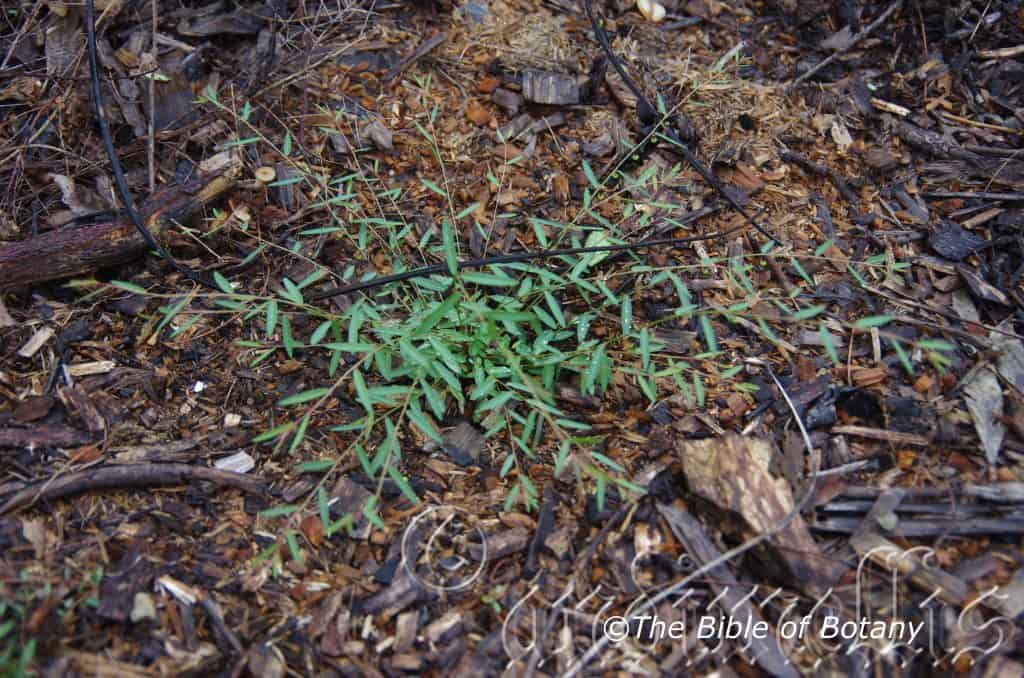
Author’s Garden The Pinnacles NSW

Author’s Garden The Pinnacles NSW
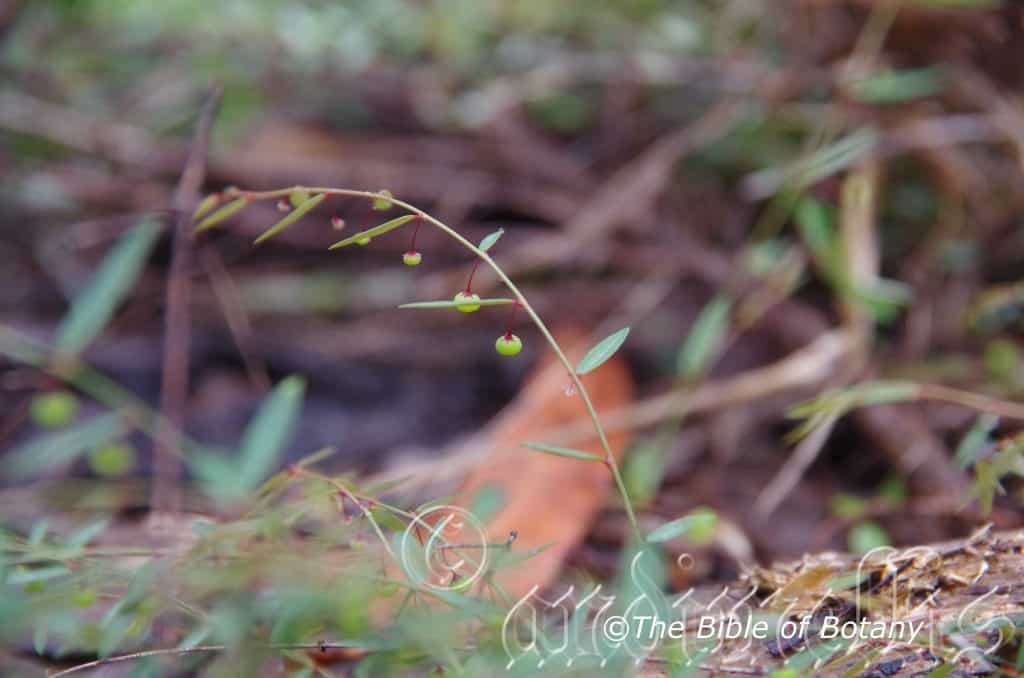
Author’s Garden The Pinnacles NSW
Phyllanthus virgatus
Classification:
Unranked: Eudicots
Unranked: Rosids
Order: Malpighiales
Family: Phyllanthceae
Genus: From Phullon/Phýllon, which is Ancient Greek for a leaf and ántha/ánthos, which is Ancient Greek for the male reproductive organ on a flower or the flower. It refers to small flowers, which appear along the stem, new stem growth and often hidden below the leaves.
Specie: From Virg?tus, which is Latin for a wand or stick. It refers to stems, which are straight and narrow like a wand.
Sub specie:
Common Name:
Distribution:
Phyllanthus virgatus is found north of a line from Newman in far western central Western Australia to Moruya in south eastern coastal New South Wales.
It is also found from India, Thailand, Myanmar, Laos, Vietnam, souther China, Malaysia, Philippines, Indonesia, Papua, New Guinee and many of the Island Nations in the north eastern Pacific Ocean.
https://avh.ala.org.au/occurrences/search?taxa=Phyllanthus+virgatus#tab_mapView
Habitat Aspect Climate:
Phyllanthus virgatus prefer dappled shade to heavy shade. It grows as a weed in lawns, gardens, footpaths, between paving bricks, parks, roadsides, disturbed sites, waste areas, pastures and crops. It grows naturally in grasslands, in open Eucalyptus forests and open woodlands. The altitude ranges from 5 meters ASL to 1650 meters ASL.
The temperatures range from minus 5 degrees in July to 46 degrees in January.
The rainfall ranges from lows of 200mm to 3600mm average per annum.
Soil requirements:
Phyllanthus virgatus prefers sandy loams, light fatty clays to heavy clays. The soils are derived from granite, sandstone, black basalts, brown basalts, shales and metamorphic rocks. The soils pH ranges from 4pH to 8pH. It does not tolerate of water logged soils but thrives where soil moisture is retained for long periods. Non saline soils to moderately saline soils are tolerated.
Height & Spread:
Wild Plants: 30mm to usually 200mm by 100mm to 600mm but can scramble over other low sub shrubs to 500mm.
Characteristics:
Phyllanthus virgatus grows as a small, prostrate shrub to a small subshrub producing many stems from near the base. The pale creamy fawn terete stems glabrous to slightly scabrous.
The alternate leaves of Phyllanthus virgatus are in a single disjunct plain along the stems. The oblong or narrow-elliptic to ovate leaves measure 5mm to 20mm in length by 2mm to 7mm in width. The red terete petioles measure 1.5mm to 2.5mm in length. The bases are rounded, while the apexes are narrow acute. The discolourous laminas are mid greenish-blue, glabrous and dull on the upper lamina, while the lower is paler. The laminas curve slightly upwards from the mid vein to the margins while the margins are entire and glabrous or very sparsely covered in white ciliate hairs. The pale greenish–blue or at times red mid vein is very slightly prominent on both laminas.
The inflorescences of Phyllanthus virgatus are monoecious. The flowers are born from the leaf axils.
The male flowers are born in pairs to a few from the leaf axils on short peduncles, while the female flowers are born solitary from the leaf axils. The peduncles measure 1mm to 4mm in length.
The 3 glossy, purple-maroon hyaline tepals are elliptical to ovate and measure 2mm to 3mm in length. The 3 stamens are free. The flowers appear from late August to late March.
The fruits of Phyllanthus virgatus are globose capsules. The petioles length to 7mm to 8mm on the ripe capsules. The glabrous capsules are smooth, glossy and narrow lanceolate on the capsules. The tepals turn bright reddish-purple and are persistent on the ripe fruits. The 3 chamber capsules measure 1.5mm to 2.5mm in length by 1.5mm to 3mm in diameter and contain a single seed in each compartment.The deep seeds measure 0.8mm to 1.5mm in length.
Wildlife:
Phyllanthus virgatus’s fruits are eaten by several fruitigrove birds.
Phyllanthus virgatus’s ripe fruits are edible. The leaves, bark and roots a toxic with the toxins accumulative in the liver.
Cultivation:
Phyllanthus virgatus is an unusual dwarf ground cover for confined spaces, within a sunny to semi shaded part of the garden in warm temperate, subtropical to the cool tropical areas or semi-arid of Australia. It is ideal for nooks and crannies where a small prostrate plant of just 30mm to 400mm in diameter is sought.
It grows exceptionally well on lighter soils where soils are bare and exposed to the weather. It does best however growing on moist medium clays that are kept moist. If these requirements are met they will establish themselves quickly forming a beautiful lush ground cover. It is moderately drought resistant in its rainfall zones once established.
Be imaginative when planting in mass. Use the plants in different configurations with other small plants like Viola betonicifolia or small ferns like fern Ophioglossum reticulatum, which like similar conditions. It would also work very well with a few Ajuga australis for a sunny position.
Propagation:
Seeds: Phyllanthus virgatus seeds can be removed easily from the capsules once they have dried out and begin to split. Sow freshly collected seeds directly into a seed raising mix, keeping them moist not wet. Place the trays beneath 30mm to 50mm shade cloth and keep moist not wet. When the seedlings are 30mm to 40mm tall, prick them out and plant them into 50mm native tubes using a good organic mix.
As the seedlings roots reach the bottom of the tubes nip the tips out and plant them out into their permanent position.
Fertilize using seaweed, fish emulsion or organic chicken pellets soaked in water on an alternate basis. Fertilize every two months until the plants are established then twice annually in early September and March to maintain better health, vitality and flowering.
Further Comments from Readers:
“Hi reader, it seems you use The Bible of Botany a lot. That’s great as we have great pleasure in bringing it to you! It’s a little awkward for us to ask, but our first aim is to purchase land approximately 1,600 hectares to link several parcels of N.P. into one at The Pinnacles NSW Australia, but we need your help. We’re not salespeople. We’re amateur botanists who have dedicated over 30 years to saving the environment in a practical way. We depend on donations to reach our goal. If you donate just $5, the price of your coffee this Sunday, We can help to keep the planet alive in a real way and continue to bring you regular updates and features on Australian plants all in one Botanical Bible. Any support is greatly appreciated. Thank you.”
In the spirit of reconciliation we acknowledge the Bundjalung, Gumbaynggirr and Yaegl and all aboriginal nations throughout Australia and their connections to land, sea and community. We pay our respect to their Elders past, present and future for the pleasures we have gained.
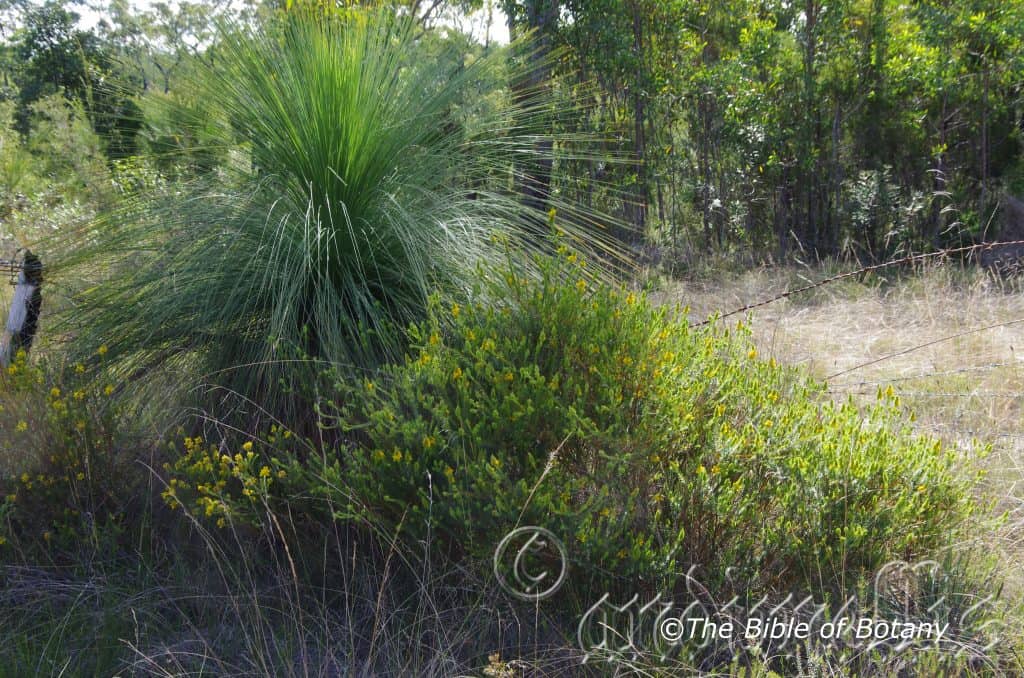
Kremnos NSW

Kremnos NSW
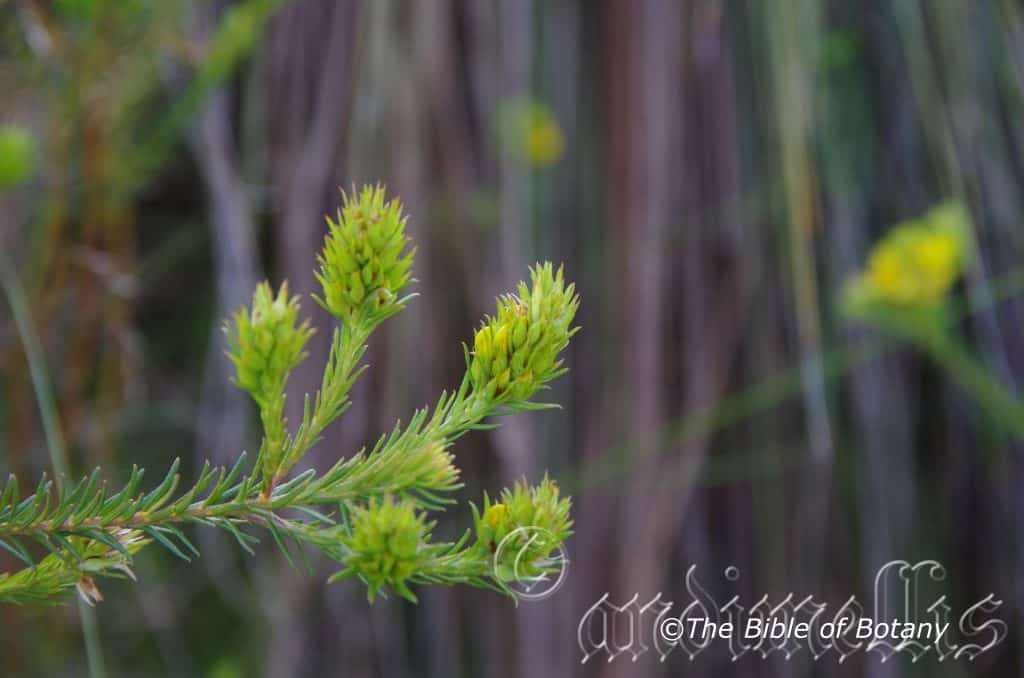
Kremnos NSW
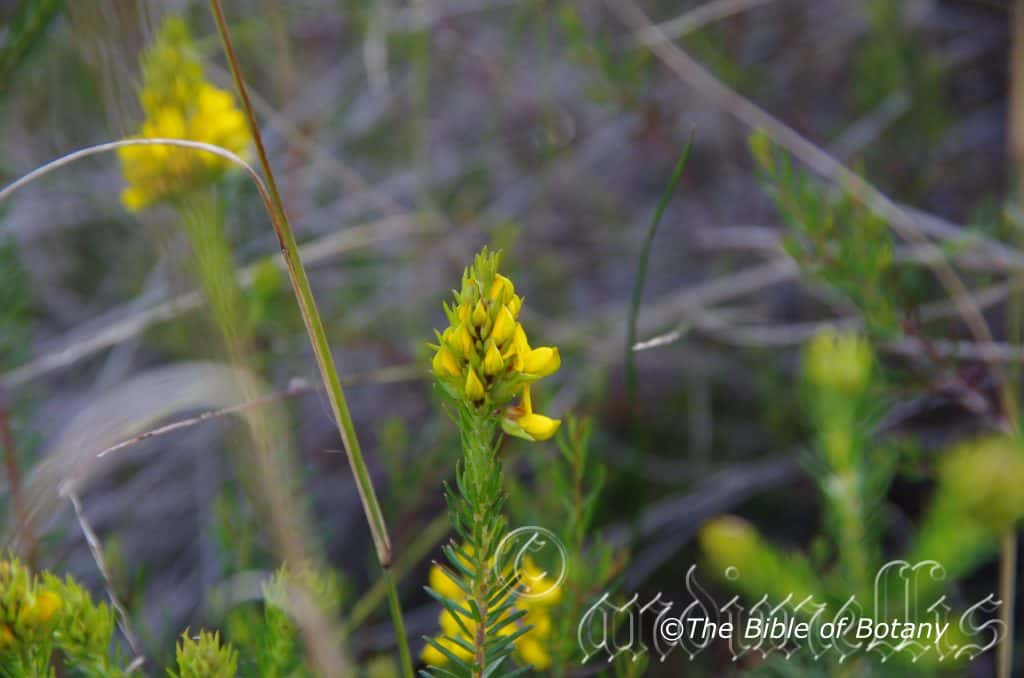
Kremnos NSW
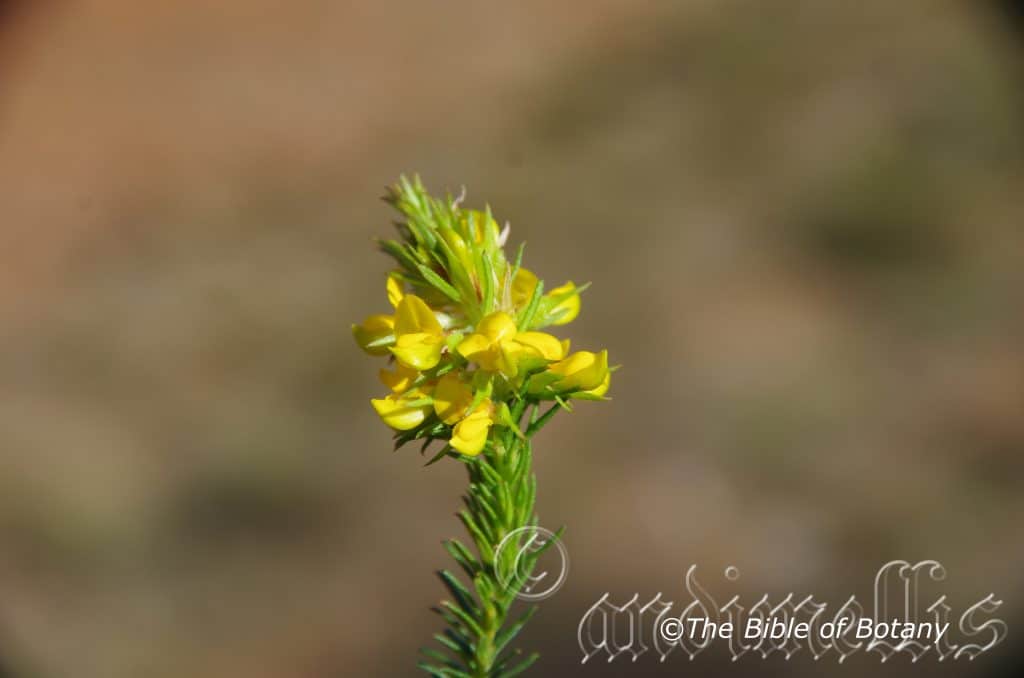
Kremnos NSW
Phyllota phylicoides
Classification:
Unranked: Eudicots
Unranked: Rosids
Order: Fabales
Family: Fabaceae
Sub family: Faboideae
Genus: From Phullon/Phýllon, which is Ancient Greek for leaf like and Taxis/Taxus, which is Ancient Greek for to arrange in order. It refers to leaves, which appear to be neatly arranged along the stems.
Specie: From Ph?llikos, which is Ancient Greek for an abundance or plenty and Eîdos/Oides, which is Ancient Greek for alike or similar to. It refers to plants, which resemble the Phylica genus in that they have very dense foliage.
Sub specie:
Common Name: Heath Phyllota.
Distribution:
Phyllota phylicoides is found south from the Clinton Lowland in coastal central Queensland to the MacNally Ranges near Cooma in southern New South Wales. It is mainly found on and east of the Great Dividing Range to the coast except for an isolated population in the far north at Sullys Gap on the Bellinden Ker Range and west of the range on the Blackdown Tablelands.
https://avh.ala.org.au/occurrences/search?taxa=Phyllota+phylicoides#tab_mapView
Habitat Aspect Climate:
Phyllota phylicoides prefer dappled shade to full sun. It grows in dry heaths and dry sclerophyll forest along the coast, coastal ranges and Tablelands. The altitude ranges from 5 meters ASL to 920 meters ASL.
The temperatures range from minus 2 degrees in July to 38 degrees in January.
The rainfall ranges from lows of 500mm to 2000mm average per annum.
Soil requirements:
Phyllota phylicoides prefer sandy loams, light fatty soils or light gritty clays. The soils are usually derived from sandstones or accumulated beach sands. The pH ranges from 4.5pH to 6pH. It does not tolerate water logged soils. Non saline soils to moderately saline soils are tolerated.
Height & Spread:
Wild Plants: 0.5m to 1m by 0.6m to 2.5m.
Characteristics:
Phyllota phylicoides grows as a dense small shrub or a more open shrub with erect or spreading stems. The green-brown or green-grey terete stems are glabrous to moderately covered in white pubescent hairs. The new growth and juvenile stems are densely covered in white pulverulent and pubescent hairs.
The alternate leaves are narrow linear and measure 8mm to 15mm in length by 1mm to 1.25mm in width. The leaves are sessile. The bases taper very slightly to the petiole while the apexes are acute or obtuse. The discolourous laminas are mid grass-green to deep green, glossy and covered in warty like projections on the upper laminas while the lower laminas are slightly paler and sparsely covered in warty like projections. The laminas are convex on the upper surface, entire and revolute. The mid vein is prominent on the lower lamina.
The Inflorescences are crowded in leafy spikes towards the ends of the stems. The pedicels measure 1mm to 2mm in length. The leafy bracteoles are lanceolate to linear and measure 4mm to 15mm in length. The calyx and lobes are green to reddish-green, glabrous to moderately covered in white pubescent hairs. The calyx measures 2mm to 3.5mm in length while the lobes measure 2mm to 6.5mm in length. The corolla tubes are yellow to orange with or without reddish markings. The corolla measures 5mm to 11.5mm in length.
The standards are yellow to orange with or without reddish markings. The standard measures 10mm to 15mm in length by 10mm to 15mm in width. The oblong wings are yellow to orange and measures 10mm to 15mm in length by 5mm to 6mm in width. The spathulate keels are yellow to orange and measure 10mm to 15mm in length by 6.5mm to 8mm in width. The ovary is covered in white villous hairs. The flowers appear from September to November.
The fruits of Phyllota phylicoides are bladder shaped pods. The green pods are smooth, sparsely to moderately covered in off white villous hairs and turn brown When ripe. The style is persistent on the ripe fruits. The pods measure 5mm to 7mm in length by 4mm to 5mm in diameter.The deep brown seeds are smooth with faint longitudinal striations.
Wildlife:
Phyllota phylicoides’s supports a number of insects including the Bronze Shield Stink Bug, Ocirrhoe dallasi and the Red Mirid Bug, Pseudopantilius australis.
Cultivation:
Phyllota phylicoides is a small open shrub that should be more widely grown in temperate or subtropical gardens. It is ideal at the edge of a rain forest or as the pioneer shrubs before establishing a garden proper. It also makes a great rockery display in hot open spaces or confined sunny positions. In cultivation it grows from 0.8 meters to 1 meter in height by 1 meter to 1.2 meters in diameter when grown in the open.
It grows exceptionally well on light clays to medium clay soils. It can cope with temperatures as low as minus 4 degrees and up to 40 degrees.
Add to the above, if it is given a little extra moisture and native fertilizer on being planted out as a seedling it will respond with good flowering and good fruit set in the following season.
Phyllota phylicoides would make a good contribution to a moist heath garden or seasonally wet area within the garden. He they can be used as fill in plant scatted throughout the heath scene or as the taller feature plant in a small garden. When you design a flat heath garden which it is well suited don’t use contours to display the plants as heath lands are almost always flat or have a slight rise. Plants must be planted close together and be short so you can see over the tallest ones with the exception of one or two plants at the most. The idea is to achieve a feeling of expansive flatness. This can be achieved with using the Phyllota phylicoides’s deep grass-green linear leaves contrast well with finer or larger pale green or soft grey to glaucous coloured foliage. Use a lot of procumbent plants like Xerochrysum viscosum or Hibbertia specie. Mix them with other smaller shrubs so none of them dominate the scene but blend in to give a mosaic of foliage colours that you oversee. He I immediately think of Actinotis helianthi or Grevillea thelemanniana for two great contrasting foliage.
Propagation:
Seeds: Seeds of Phyllota phylicoidescan be removed easily from the fruits that have already turned brown and begun to open.
Sow freshly treated seeds directly into a seed raising mix, keeping them moist not wet. When the seedlings are 20mm to 25mm tall, prick them out and plant them into 50mm native tubes using a good organic mix.
As the seedlings roots ach the bottom of the tubes plant them out into their permanent position. Do not delay.
Fertilize using seaweed, fish emulsion or organic chicken pellets soaked in water on an alternate basis. Fertilize every two months until the plants are established then twice annually in early September and March to maintain better health, vitality and flowering.
Further Comments from Readers:
“Hi reader, it seems you use The Bible of Botany a lot. That’s great as we have great pleasure in bringing it to you! It’s a little awkward for us to ask, but our first aim is to purchase land approximately 1,600 hectares to link several parcels of N.P. into one at The Pinnacles NSW Australia, but we need your help. We’re not salespeople. We’re amateur botanists who have dedicated over 30 years to saving the environment in a practical way. We depend on donations to reach our goal. If you donate just $5, the price of your coffee this Sunday, We can help to keep the planet alive in a real way and continue to bring you regular updates and features on Australian plants all in one Botanical Bible. Any support is greatly appreciated. Thank you.”
In the spirit of reconciliation we acknowledge the Bundjalung, Gumbaynggirr and Yaegl and all aboriginal nations throughout Australia and their connections to land, sea and community. We pay our respect to their Elders past, present and future for the pleasures we have gained.
Pilidiostigma glabrum
Classification:
Unranked: Eudicots
Unranked: Rosids
Order: Myrtales
Family: Myrtaceae
Genus: From Pil?sum, which is Latin for short, soft, wavy hairs and Stigma, which is Latin for to the pollen receptive, female reproductive organ on the style of a flower. It refers to stigmas except the receptive section, which are densely covered in short, soft, wavy hairs.
Specie: From Glabrum, which is Latin for glabrous or smooth and hairless. It refers to structures and organs, which have no scales or hairs.
Sub species:
Common Name: Plum Myrtle.
Distribution:
Pilidiostigma glabrum is found south from Fraser Island in central coastal Queensland to the Comboyne Plateau in north eastern New South Wales with an isolated population further north at Jordon in far north Queensland.
https://avh.ala.org.au/occurrences/search?taxa=Pilidiostigma+glabrum#tab_mapView
Habitat Aspect Climate:
Pilidiostigma glabrum prefers light dappled shade to full sun. It grows in warm moist sub-tropical rainforests or adjacent moist Eucalyptus forests especially on disturbed soils as a pioneer plant. The altitude ranges from 5 meters to 1000 meters ASL.
The temperatures range from minus 3 degrees in August to 38 degrees in January.
The rainfalls range from lows of 1000mm to an average of 2000mm.
Soil Requirements:
Pilidiostigma glabrum prefers to grow on peaty sands, sandy clays to medium gritty clays often with copious quantities of forest litter. The soils are usually derived from decomposed black basalts, granites or accumulated sands. The soils pH ranges from 5pH to 6.5pH. It does not tolerate water logged soils. Non saline soils to moderately saline soils are tolerated.
Height & Spread:
Wild Plants: 3m to 8m by 3m to 5m.
Characteristics:
Pilidiostigma glabrum grows as a small tree or large shrub with finely wrinkled, ridged pale brown bark. The larger branches are finely flaky and pinkish while the new growth is olive-green with a reddish tinge, glossy and glabrous.
Pilidiostigma glabrum’s opposite, elliptic to oblong or ovate leaves measure 20mm to 100mm in length by 10mm to 35mm in width. The petioles measure 3.5mm to 5mm in length. The bases are cuneate while the apexes are acuminate with a blunt tip. The discolourous laminas are deep green, glossy and glabrous on the upper laminas while the lower laminas are paler and dull. The laminas are flat to recurve upwards from the mid vein to the margins and decurve downwards on the apical half. The margins are entire. The mid vein is prominent on the lower lamina at the base and barely prominent at the apex while the lateral are very slightly prominent and the intramarginal veins are slightly prominent on the lower lamina. The oil glands are numerous and barely visible with the naked eye.
The new growth leaves are maroon-red and glossy.
The inflorescences are 5 merous and are born in solitary or in pairs from the leaf axils. The maroon-red pedicels are glabrous and measure 6mm to 25mm in length.
The conical hypanthium is glossy green. The glossy green sepals are glabrous, obtuse and measure 1.3mm to 2mm in length. The cupuliform, white to pastel pink or rarely pale pink petals are obtuse with a flat margin and are reflexed at anthesis. The petals measure 5mm to 7mm in length by 5mm to 7mm in width.
The 150 to 160 filiform stamens are white and measure 5mm to 8mm in length. The spherical pale yellow anthers are basifixed and dehisce longitudinally. The white style measure 5mm to 7mm in length. The flowers appear from late September to late January.
The fruits are obovoid or ellipsoid berries. The berries measure 14mm to 17mm in length by 11mm to 15mm in diameter. The sepals are persistent on the ripe fruits. The green berries turn purplish-black when ripe. The 3 to 8 seeds are pale ochre to yellowish-ochre.
Wildlife:
Pilidiostigma glabrum fruits are eaten by most honeyeaters with Green Cat bird and Satin Bower Bird also being regular visitors to the trees.
The leaves can be heavily infested with various insects known as Phyllis. These cause the ugly looking pimples on the young leaves and shoots of the trees.
The use of systemic poisons is not recommended by the author especially if birds are attracted to the garden. The best methods of control are long term and consist of supporting an environment that creates a balance in predatory insects to control the psyllids. Systemic sprays also kill the predatory insects which exasperates the problem in the following season. Other methods of control include not over fertilizing the plants which produce soft growth which is more susceptible to Psyllids attack. By not to developing a monoculture garden or isolated plants a better balance will be created deterring such outbreaks.
The young psyllids are attacked by a number of natural enemies. It is parasitized by Psyllaephagus sp. wasps. The female adult wasp lays an egg into the psyllid’s nymph before the lerp becomes impenetrable to the wasp. The wasp larva hatches and develops inside the living psyllid’s nymph. The psyllid’s nymph is killed when the wasp pupates to become an adult. It is important to ensure the wasp’s habitat is maintained throughout the year. Mulch with psyllid-affected leaves beneath affected trees is paramount for the wasp to continue to parasitize its victims.
Other hunters of psyllids include the beautiful Lacewing and ladybirds while their larvae also feed on the psyllid nymphs.
Spiders which build their webs in trees account for a large number of adults and other small flying insects.
Birds like swallows, have been observed flying around badly affected trees when adult psyllids are numerous, and eat adult psyllids.
Birds are also a major source of control especially the smaller honeyeaters and the small Silver Eye (Common Zosterops lateralis) is one of the best defences in combating psyllids.
The bell miners or Bellbird (Manorina melanophrys) and the not so popular Noisy Miner (Manorina melanocephala) are also keen scavengers of Psyllids.
Cultivation:
Pilidiostigma glabrum is a tremendous accent plant with its glossy leaves. It always looks fresh especially where a little water is added during the dry season or ground moisture is retained. It is most suitable for small, medium and large gardens close to the coast or high in the mountains in warm temperate or sub-tropical gardens. It does well amongst tall rainforest trees or as a starter tree for suburban rainforest gardens. The flowers are produced in profusion over a very long period which makes them a beautiful addition to the garden.
It is great along small gullies and drainage lines as the accent tree. Here it can be planted in small groups of 2 or 3 or as a standalone plant to create a lush tropical look with other small tropical trees or shrubs. If it is surrounded by smaller plants with fine or large foliage that are pale green or deep green then year round contrasts can be created with a strong accent in the center of the bed. Deep red or orange flowers will also create that dominate affect at the center giving height and strength to the bed whether It is in flower or not in flower the dominance in foliage will stand unchallenged.
It is a good plant for topiary work or as a hedge especially when mixed with various small leaf forms of Syzygium specie.
Propagation:
Seeds:
Pilidiostigma glabrum seeds can be removed easily from the ripe fruits. Once the first fruits begin to drop to the ground all the fruit can be harvested from a given tree or collected from the ground. I enjoy collecting the seeds by eating the flesh that surrounds the seeds.
Sow freshly collected seeds or immediately the following spring as the last frosts abate. Sow them directly into a seed raising mix, keeping them moist not wet. Place the trays beneath 50mm shade cloth. When the seedlings are 20mm to 25mm tall, prick them out and plant them into 50mm native tubes using a good organic mix.
As the seedlings roots reach the bottom of the tubes plant them out into their permanent position. Do not delay as setback will result.
Cuttings:
Unfortunately Pilidiostigma glabrum cuttings are not easy to strike from cuttings. Use 150mm to 250mm long tip cuttings or lateral shoots from the present season’s growth. Take them in warmer months of the year. Remove half the leaves from the bottom section being careful not to tear the bark.
1 Prepare the cutting mix by adding two thirds sharp clean river sand, one third peat or one third perlite. These ingredients must be sterilized,
2 Select good material from non diseased plants,
3 Select semi green stems for cuttings. Look for a stem with two or three nodes,
4 Place the cutting on a flat, hard surface, and make a clean cut down one side of the cutting at the base for 10mm with a sharp sterile knife or razor blade. – This scarification of the node will increase the chances of roots emerging from this spot. Now remove all but one or two the leaves, leaving the apex leaves in tact. If the leaves are very large in proportion to the stem, cut off the apical halves.
5 Fill a saucer with water, and place a little medium strength rooting hormone into another container like a milk bottle top. Dip the node end of the cutting into the water and then into the rooting hormone. Tap off any excess hormone,
6 Use a small dipple stick or old pencil to poke a hole into the soilless potting mix. Ensure the hole is slightly larger than the stem diameter and be careful not to wipe the rooting hormone off the cuttings base. Place 2 to 4 cuttings in each of the 50mm native tubes,
7 I like to place the tubes in bucket with holes drilled in the bottom to allow excess water to drain out. A plastic bag that fits over the bucket is ideal to help maintain temperature and moisture. Place in a semi shaded, warm position like under 50mm shade cloth.
8 When the cuttings have struck, open the bag to allow air circulation for a few days to a week,
9 Once hardened off remove the cuttings from the bag and allow to further hardening for a few more days to a week,
10 Transplant into a good potting mix to grow on.
Fertilize using seaweed, fish emulsion or organic chicken pellets soaked in water on an alternate basis. Fertilize every two months until the plants are established then twice annually in early September or March to maintain health, vitality and better flowering.
Further Comments from Readers:
“Hi reader, it seems you use The Bible of Botany a lot. That’s great as we have great pleasure in bringing it to you! It’s a little awkward for us to ask, but our first aim is to purchase land approximately 1,600 hectares to link several parcels of N.P. into one at The Pinnacles NSW Australia, but we need your help. We’re not salespeople. We’re amateur botanists who have dedicated over 30 years to saving the environment in a practical way. We depend on donations to reach our goal. If you donate just $5, the price of your coffee this Sunday, We can help to keep the planet alive in a real way and continue to bring you regular updates and features on Australian plants all in one Botanical Bible. Any support is greatly appreciated. Thank you.”
In the spirit of reconciliation we acknowledge the Bundjalung, Gumbaynggirr and Yaegl and all aboriginal nations throughout Australia and their connections to land, sea and community. We pay our respect to their Elders past, present and future for the pleasures we have gained.
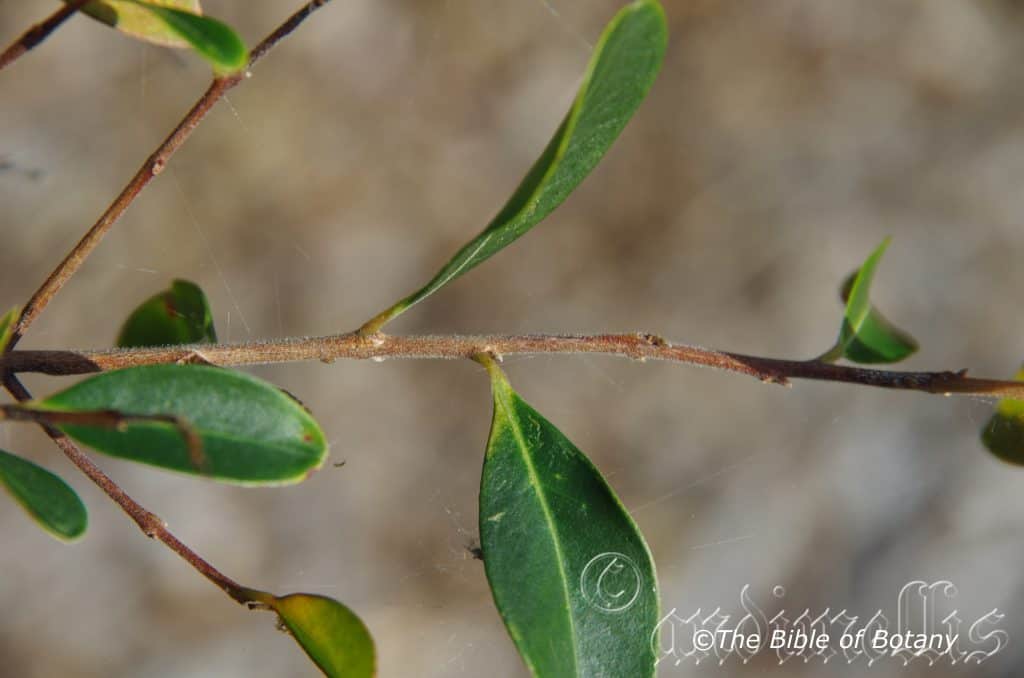
LBG Lismore NSW
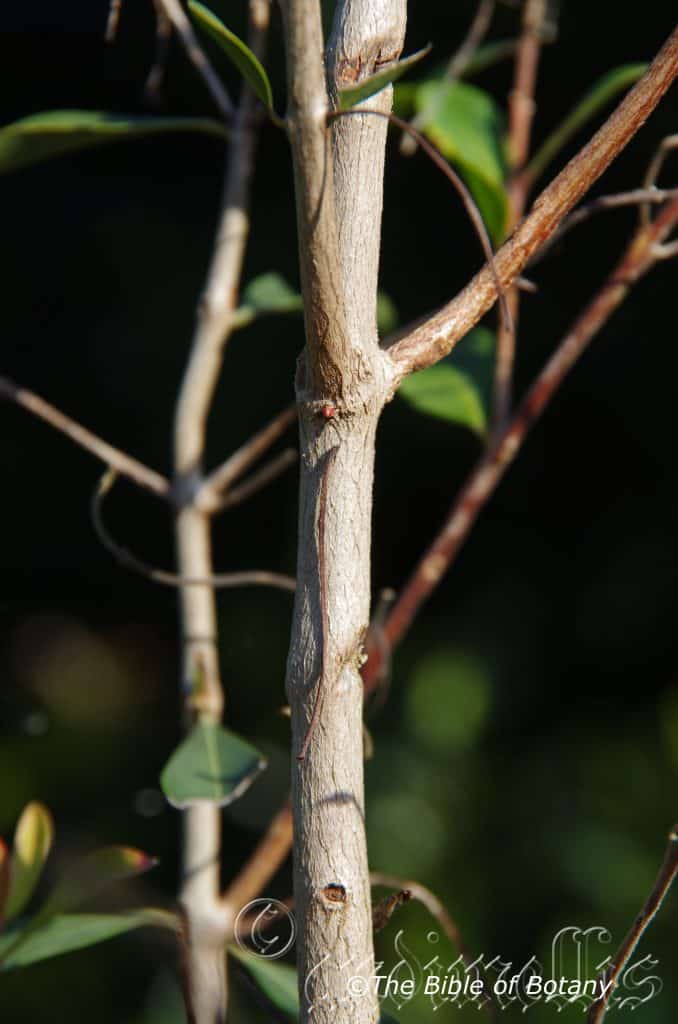
LBG Lismore NSW
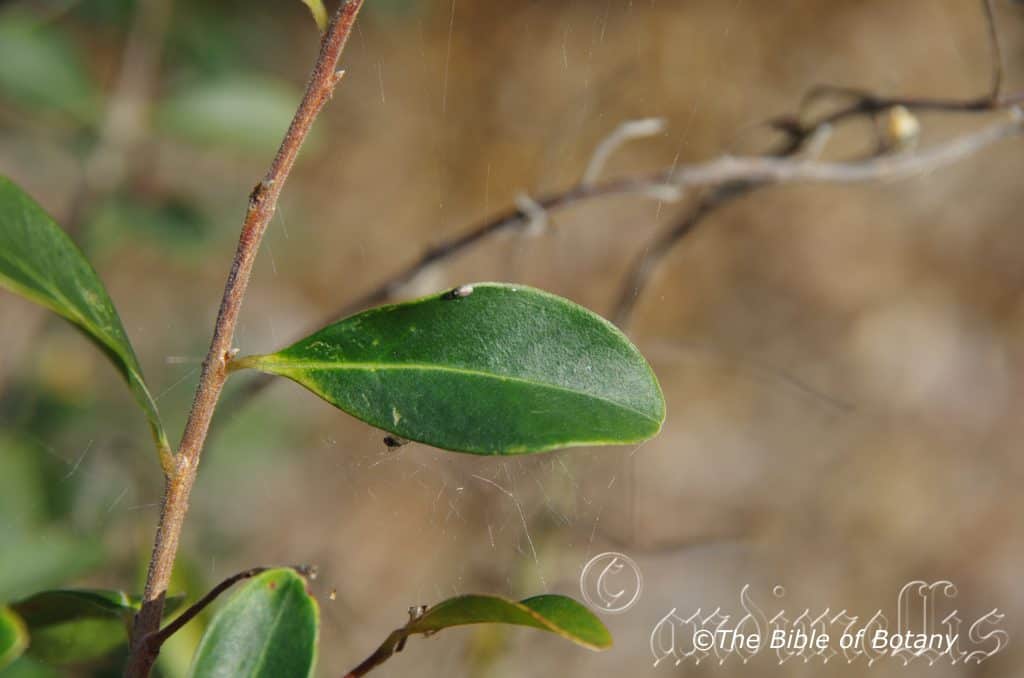
LBG Lismore NSW

LBG Lismore NSW
Pilidiostigma rhytispermum
Classification:
Unranked: Eudicots
Unranked: Rosids
Order: Myrtales
Family: Myrtaceae
Genus: From Pilidio, which is Latin for a snail in the family Ampullariidae and Stígma, which is Ancient Greek for a brand, branding iron or a mark on a slave. It refers to to the receptive section of a style that somewhat resembles a snail. It refers to stigmas that somewhat resemble athe snails.
Specie: From Rhyti, which is Ancient Greek for wrinkled and Spérma, which is Ancient Greek for a seed or semen. It refers to to habitats or environments which are steep hills, cliffs or very rocky. It refers to seeds, which are noticeably covered in wrinkles.
Sub species:
Common Name: Small Leaved Plum Myrtle.
Distribution:
Pilidiostigma rhytispermum is found south from Clifton Creek on the Fraser Coast in southern coastal Queensland to Murwillumbah in far north eastern New South Wales.
https://avh.ala.org.au/occurrences/search?taxa=Pilidiostigma+rhytispemum#tab_mapView
Habitat Aspect Climate:
Pilidiostigma rhytispermum prefers light dappled shade to full sun. It grows in warm moist sub-tropical rainforests or in moist Eucalyptus forests especially as an understory shrub. The altitude ranges from 5 meters to 400 meters ASL.
The temperatures range from 2 degrees in August to 38 degrees in January.
The rainfalls range from lows of 800mm to an average of 1200mm.
Soil Requirements:
Pilidiostigma rhytispermum prefers to grow on better quality medium gritty clays often with copious quantities of forest litter. The soils are usually derived from decomposed black basalts or granites. The soils pH ranges from 5pH to 6.5pH. It does not tolerate water logged soils. Non saline soils to moderately saline soils are tolerated.
Height & Spread:
Wild Plants: 2m to 3m by 2m to 3m.
Characteristics: Note all measurements taken from a single plant.
Pilidiostigma rhytispermum grows as a small tree or large shrub with finely wrinkled, ridged pale fawn bark. The stems are deep reddish-brown and moderately to densely covered in white hirtellous hairs.
Pilidiostigma rhytispermum’s opposite, elliptic or ovate leaves measure 20mm to 40mm in length by 10mm to 17mm in width. The semi terete, yellowish petioles measure 2mm to 4mm in length. The bases are cuneate, while the apexes are obtuse often with a retuse tip. The discolourous laminas are semi glossy, deep green and glabrous on the upper laminas while the lower laminas are much paler and dull. The laminas are recurve upwards from the mid vein to the margins and decurve downwards on the apical third. The margins are entire. The mid vein is prominent on both laminas on the basal third to half, while the lateral veins are barely noticable. The oil glands are numerous and minute on the lower lamina.
The inflorescences of Pilidiostigma rhytispermum are born solitary or in pairs from the leaf axils. The pale green to reddish, slim, terete pedicels are glabrous and measure 12mm to 20mm in length.
The conical hypanthium is glossy green. The glossy green cupular sepals are glabrous with an acute apex and measure 1.3mm to 2mm in length. The white petals are obtuse with an entire margin and are reflexed at anthesis. The petals measure 6mm to 10mm in length by 6mm to 10mm in width.
The white, filiform filaments measure 7mm to 10mm in length. The spherical bright yellow anthers are basifixed and dehisce longitudinally. The white style measure 5mm to 7mm in length. The flowers appear from late June to November.
Pilidiostigma rhytispermum’s fruits are obovoid or ellipsoid berries. The berries measure 10mm to 15mm in length by 8mm to 10mm in diameter. The sepals are persistent on the ripe fruits. The green berries turn black when ripe. The 3 to 8 seeds are pale ochre to yellowish-ochre.
Wildlife:
Pilidiostigma rhytispermum fruits are eaten by most honeyeaters with Green Cat bird and Satin Bower Bird also being regular visitors to the trees.
The leaves can be heavily infested with various insects known as Phyllis. These cause the ugly looking pimples on the young leaves and shoots of the trees.
The use of systemic poisons is not recommended by the author especially if birds are attracted to the garden. The best methods of control are long term and consist of supporting an environment that creates a balance in predatory insects to control the psyllids. Systemic sprays also kill the predatory insects which exasperates the problem in the following season. Other methods of control include not over fertilizing the plants which produce soft growth which is more susceptible to Psyllids attack. By not to developing a monoculture garden or isolated plants a better balance will be created deterring such outbreaks.
The young psyllids are attacked by a number of natural enemies. It is parasitized by Psyllaephagus sp. wasps. The female adult wasp lays an egg into the psyllid’s nymph before the lerp becomes impenetrable to the wasp. The wasp larva hatches and develops inside the living psyllid’s nymph. The psyllid’s nymph is killed when the wasp pupates to become an adult. It is important to ensure the wasp’s habitat is maintained throughout the year. Mulch with psyllid-affected leaves beneath affected trees is paramount for the wasp to continue to parasitize its victims.
Other hunters of psyllids include the beautiful Lacewing and ladybirds while their larvae also feed on the psyllid nymphs.
Spiders which build their webs in trees account for a large number of adults and other small flying insects.
Birds like swallows, have been observed flying around badly affected trees when adult psyllids are numerous, and eat adult psyllids.
Birds are also a major source of control especially the smaller honeyeaters and the small Silver Eye (Common Zosterops lateralis) is one of the best defences in combating psyllids.
The bell miners or Bellbird (Manorina melanophrys) and the not so popular Noisy Miner (Manorina melanocephala) are also keen scavengers of Psyllids.
Cultivation:
Pilidiostigma rhytispermum is a good understory plant for beneath a dry or moist rainforest. It has an open habit and is suitable for small medium and large gardens close to the coast or high in the mountains in warm temperate or sub-tropical gardens. It does well amongst tall rainforest trees or as a starter shrub for small suburban rainforest gardens. The flowers are produced in profusion over a very long period which makes them a beautiful addition to the garden. With the plants maintaining few, small leaves the flowers stand out even more.
It is good along small gullies and drainage lines as a fill in plant. Here it can be planted in small groups of 5 or 7 or as a stand alone plant to create a lush tropical look with other small tropical trees or shrubs. If it is surrounded by smaller plants with fine or large foliage that are pale green or deep green then year round contrasts can be created with a strong accent in the center of the bed. Deep red or orange flowers will also create that dominate affect at the center giving height and strength to the bed whether It is in flower or not in flower the dominance in foliage will stand unchallenged.
Propagation:
Seeds:
Pilidiostigma rhytispermum seeds can be removed easily from the ripe fruits. Once the first fruits begin to drop to the ground all the fruit can be harvested from a given tree or collected from the ground. I enjoy collecting the seeds by eating the flesh that surrounds the seeds.
Sow freshly collected seeds or immediately the following spring as the last frosts abate. Sow them directly into a seed raising mix, keeping them moist not wet. Place the trays beneath 50mm shade cloth. When the seedlings are 20mm to 25mm tall, prick them out and plant them into 50mm native tubes using a good organic mix.
As the seedlings roots reach the bottom of the tubes plant them out into their permanent position. Do not delay as setback will result.
Cuttings:
Unfortunately Pilidiostigma rhytispermum cuttings are not easy to strike from cuttings. Use 150mm to 250mm long tip cuttings or lateral shoots from the present season’s growth. Take them in warmer months of the year. Remove half the leaves from the bottom section being careful not to tear the bark.
1 Prepare the cutting mix by adding two thirds sharp clean river sand, one third peat or one third perlite. These ingredients must be sterilized,
2 Select good material from non diseased plants,
3 Select semi green stems for cuttings. Look for a stem with two or three nodes,
4 Place the cutting on a flat, hard surface, and make a clean cut down one side of the cutting at the base for 10mm with a sharp sterile knife or razor blade. – This scarification of the node will increase the chances of roots emerging from this spot. Now remove all but one or two the leaves, leaving the apex leaves in tact. If the leaves are very large in proportion to the stem, cut off the apical halves.
5 Fill a saucer with water, and place a little medium strength rooting hormone into another container like a milk bottle top. Dip the node end of the cutting into the water and then into the rooting hormone. Tap off any excess hormone,
6 Use a small dipple stick or old pencil to poke a hole into the soilless potting mix. Ensure the hole is slightly larger than the stem diameter and be careful not to wipe the rooting hormone off the cuttings base. Place 2 to 4 cuttings in each of the 50mm native tubes,
7 I like to place the tubes in bucket with holes drilled in the bottom to allow excess water to drain out. A plastic bag that fits over the bucket is ideal to help maintain temperature and moisture. Place in a semi shaded, warm position like under 50mm shade cloth.
8 When the cuttings have struck, open the bag to allow air circulation for a few days to a week,
9 Once hardened off remove the cuttings from the bag and allow to further hardening for a few more days to a week,
10 Transplant into a good potting mix to grow on.
Fertilize using seaweed, fish emulsion or organic chicken pellets soaked in water on an alternate basis. Fertilize every two months until the plants are established then twice annually in early September or March to maintain health, vitality and better flowering.
Further Comments from Readers:
“Hi reader, it seems you use The Bible of Botany a lot. That’s great as we have great pleasure in bringing it to you! It’s a little awkward for us to ask, but our first aim is to purchase land approximately 1,600 hectares to link several parcels of N.P. into one at The Pinnacles NSW Australia, but we need your help. We’re not salespeople. We’re amateur botanists who have dedicated over 30 years to saving the environment in a practical way. We depend on donations to reach our goal. If you donate just $5, the price of your coffee this Sunday, We can help to keep the planet alive in a real way and continue to bring you regular updates and features on Australian plants all in one Botanical Bible. Any support is greatly appreciated. Thank you.”
In the spirit of reconciliation we acknowledge the Bundjalung, Gumbaynggirr and Yaegl and all aboriginal nations throughout Australia and their connections to land, sea and community. We pay our respect to their Elders past, present and future for the pleasures we have gained.
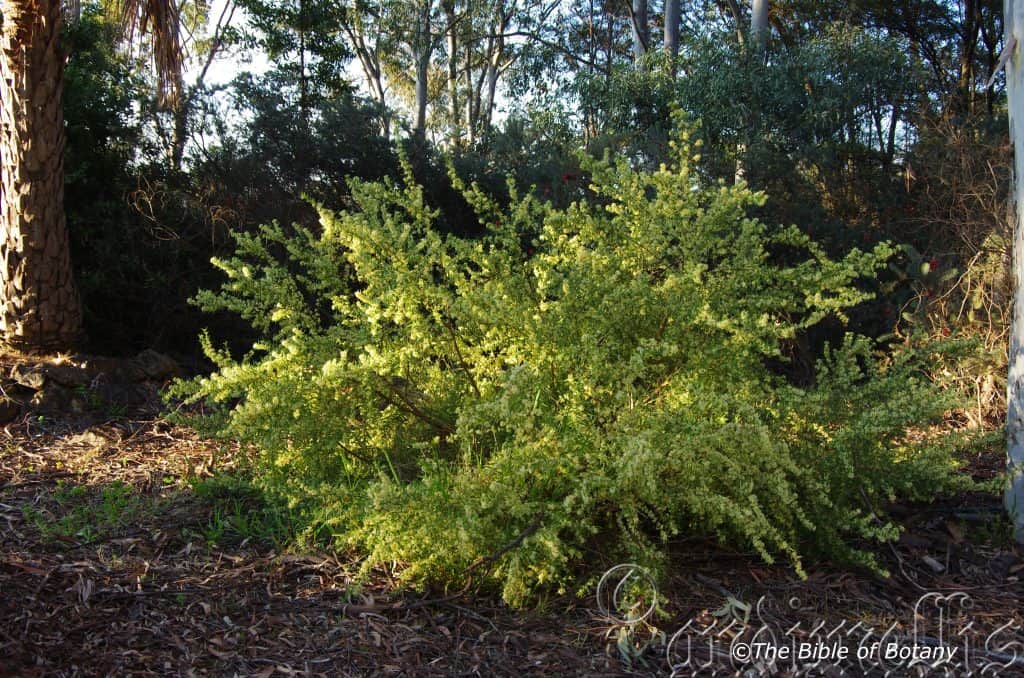
National Botanic Gardens ACT.

National Botanic Gardens ACT.

National Botanic Gardens ACT.

National Botanic Gardens ACT.
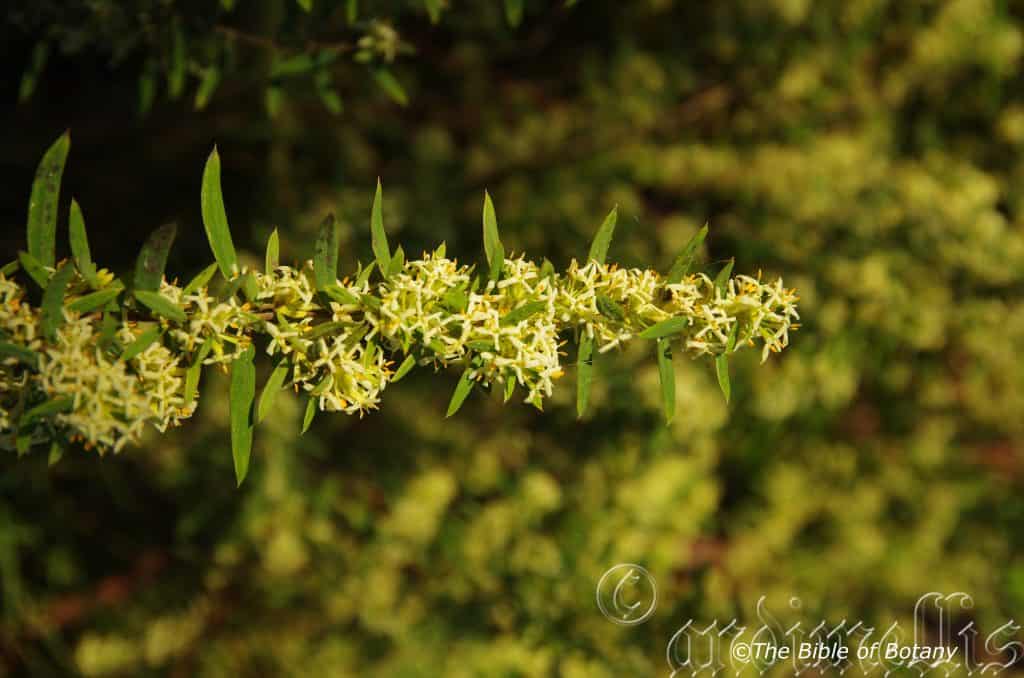
National Botanic Gardens ACT.
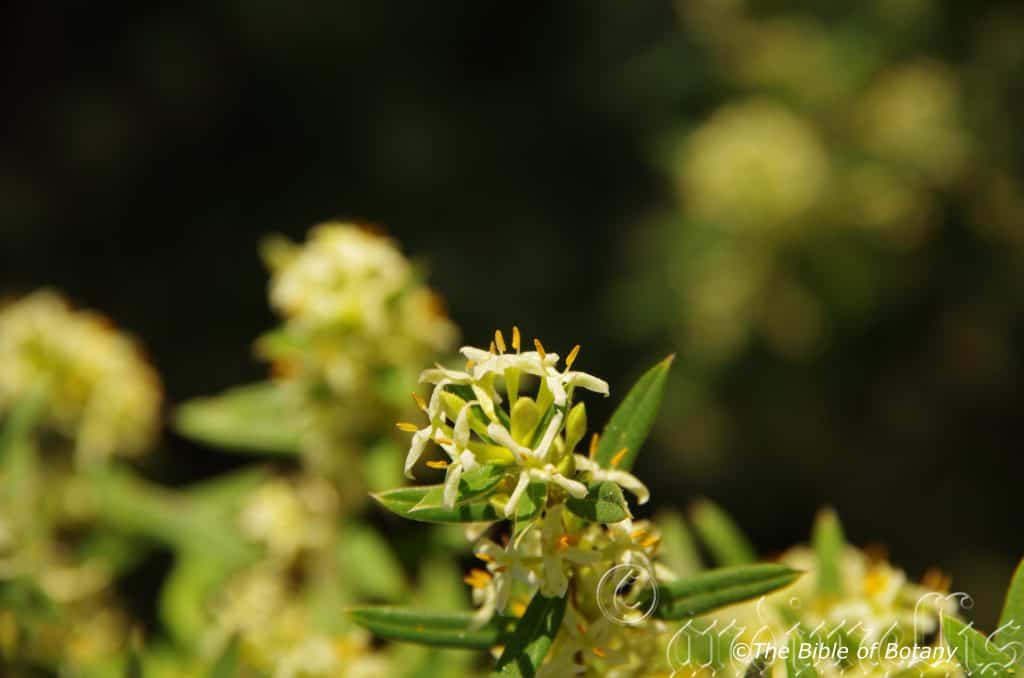
National Botanic Gardens ACT.
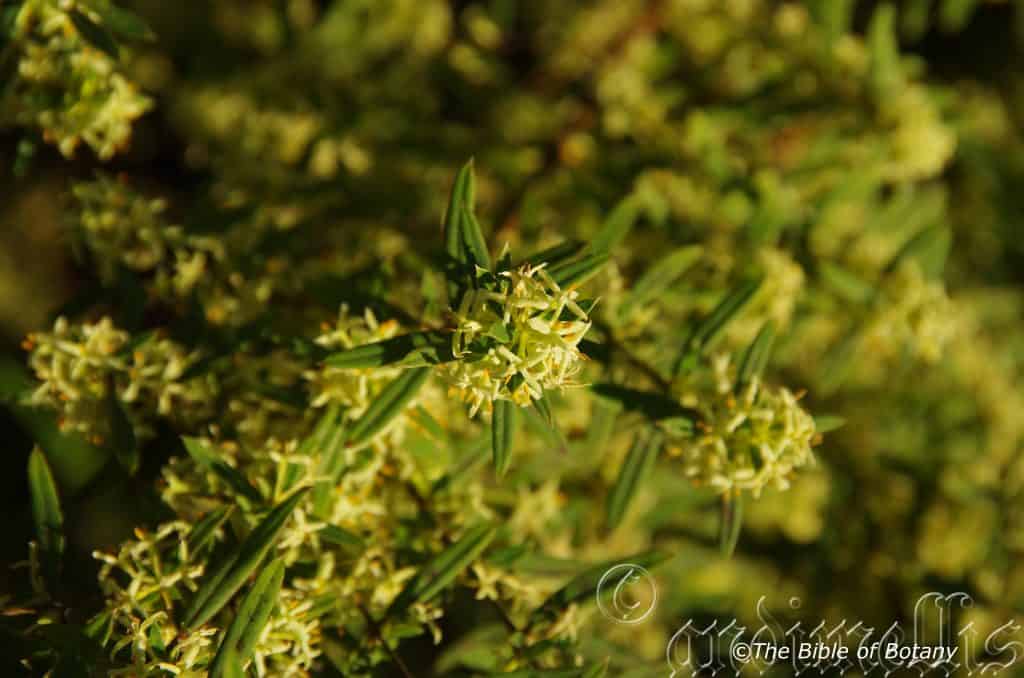
National Botanic Gardens ACT.
Pimelea curvifolia
Classification:
Unranked: Eudicots
Unranked: Rosids
Order: Malvales
Family: Thymelaeaceae
Genus: From Curvum which is Latin for bent, crooked or curved and and Fl?ris which is Latin for a flower or Fl?s, which is Roman for the goddess of spring and flowers. It refers to the petals, which are more curved than other species in the genus.
Specie: From Curvum which is Latin for bent, crooked or curved and and Fl?ris which is Latin for a flower or Fl?s, which is Roman for the goddess of spring and flowers. It refers to the petals, which are more curved than other species in the genus.
Sub specie:
Pimelea curviflora var. curviflora. From Curvum which is Latin for bent, crooked or curved and and Fl?ris which is Latin for a flower or Fl?s, which is Roman for the goddess of spring and flowers. It refers to the petals, which are more curved than other species in the genus.
Pimelea curviflora var. divergens. From D?verge?/D?verg?ns which are Latin for to diverge or to go in different directions. It refers to organs or structures, which go in different directions. Here it may refer to the hairs on the leaves and stems being somewhat divergent.
Pimelea curviflora var. acuta. From Acuta, which is Latin for to sharpen. It refers to an organ or structure which comes to a fine point as though it has been sharpened. Here it refers to the leaves and petals, which have acute apexes.
Pimelea curviflora var. subglabrata. From Sub, which is Latin for under, below or beneath and Glabr?ta, which is Latin for without hairs, bristles or scales. It refers to organs or structures, which are somewhat smooth.
Pimelea curviflora var. gracilis. From Gracilis, which is Latin for slender, slim, thin or lean. It refers to organs or structures, which are rather slender especially when compared to other species in the genus or compared to other sub species or varieties in the species.
Pimelea curviflora var. sericea. From S?ricea, which is Latin for clothed in silken hair. It refers to organs or structures, which are covered in soft, silky hairs. Here it refers to the stems and leaves, which are sparsely to moderately covered in fine, soft, white, silky hairs.
Common Name: Smooth Rice Flower.
Distribution:
Pimelea curviflora var. curviflora. Is found south from Wiseman’s Ferry to south of Wollongong in central eastern New South Wales. There is also a disjunct population near Orange.
Pimelea curviflora var. divergens. Is found south from west of Maryborough in south eastern Queensland to the Lachlan River in central eastern New South Wales. It is mainly found on the Great Dividing Range.
Pimelea curviflora var. acuta. Is found south from Fagans Creek to the Snowy River in south eastern New South Wales. It is found on the Great Dividing Range.
Pimelea curviflora var. subglabrata. Is found in several disjunct populations south from Gloucester in south eastern New South Wales to west of Melbourne. It is mainly found on the Great Dividing Range.
Tghere are 2 disjunct populations further west in Victoria at Miram Piram and Box Swamp Wildlife Park.
Pimelea curviflora var. gracilis. Is found south from west of Brisbane in south eastern Queensland to Melbourne in southern Victoria and west to Yorke Peninsular and Huttamuck Hill in Southern South Australia with a disjunct population on the Gawler Ranges.
It is also found on King Island and Flinders Island and the northern half of Tasmania.
Pimelea curviflora var. sericea. Is found south from west of Ballina in far north eastern New South Wales to Melbourne in southern Victoria and west to Yorke valley Flat in Southern South Australia.
It is also found on Flinders Island in Bass Straight.
https://avh.ala.org.au/occurrences/search?taxa=Pimelea+curviflora#tab_mapView
Habitat Aspect Climate:
Pimelea curviflora prefers dappled shade to full sun. It grows in open woodlands, dry Eucalyptus forests, moist open Eucalyptus forests, heaths or savannah woodlands and highland wallums. The altitude ranges from 20 meters ASL to 1600 meters ASL.
The temperatures range from minus 7 degrees in July to 36 degrees in January.
The rainfall ranges from lows of 600mm to 1200mm average per annum.
Soil Requirements:
Pimelea curviflora prefers soils that are sandy loams to medium clays with or without gravel. The soils are derived from decomposed sandstones, brown basalts, black basalts, granites metamorphic rocks, limestones, alluvial deposits or podsolic soils. The soils pH. ranges from 4.5pH to 7pH. It does not tolerate water logged soils. Non saline soils to moderately saline soils are tolerated.
Height & Spread:
Wild Plants:200mm to 1600mm by 500mm to 1500mm
Characteristics:
Pimelea curviflora grows as a small shrub or sub shrub. The slender erect, terete stems are deep reddish-brown and glabrous. The stems are green and sparsely to moderately covered in in soft, white hirsute or sericeous hairs.
The opposite often decassate, oblong to elliptic or oblanceolate, leaves measure 5mm to 20mm in length by 2mm to 8mm in width. The yellowish terete petioles measure 4mm to 8mm in length. The bases are rounded, while the apexes are broad acute with or without an apiculate tip. The discolourous laminas are mid green and sparsely covered in straight often appressed long, soft, white hairs on the upper lamina, while the lower lamina is a little paler and moderately covered in long, appressed to spreading and short, fine and slightly tangled sericeous hairs. The laminas curve upwards from the mid vein then downwards to the margins and are flat or decurve upwards at the apex. The entire while the margins are somewhat revolute. The yellowish mid vein is strongly prominent on the lower lamina and is clearly visible on the upper lamina.
Inflorescences of Pimelea curviflora are born as terminal heads and on short lateral shoots. There are 4 to 20 individual flowers to an umbel, usually 9 to 12. The peduncles are sparsely to moderately covered in in soft, white hirsute or sericeous hairs and measure 1mm to 2.5mm in length. Bracts absent or poorly differentiated, usually shorter than the flowers.
The deep red, various shades of yellow or greenish corolla tubes and lobes are sparsely covered in short, white pubescent or sericeous hairs externally and glabrous internally. The corolla tube measures 5.5mm to 12mm in length while the lobes measure 4mm to 10mm in length.
The 2 filiform, white filaments are free from the base, exserted and measure 7mm to 15mm in length, while the oblong deep yellow-orange anthers are adnate and dehisce longitudinally. The flowers appear throughout the year with a peak from late September to January.
Pimelea curviflora’s fruits are oblong capsules. The pedicels elongate during fruiting. The green, fruits measure 2mm to 4mm in length by 2mm to 3mm in width.
Variety Differences: Measurements and characteristics taken from:
Pimelea curviflora var. curviflora. Is a much-branched subshrub or shrub 200mm to 1200mm in height. The narrow-elliptic to elliptic or oblanceolate leaves are sessile and measure 5mm to 10mm in length by 2mm to 4mm in width. The lower lamina is sparsely covered in coarse appressed or loosely appressed hairs. The red to yellow flowers are sparsely covered in coarse appressed or loosely appressed hairs. The flowers form in clusters of 4 to 12 individual flowers. The flowers measure 6mm to 8mm in length. The corollas are covered in soft, white hirsute hairs externally and are denser on the persistent base. The fruits are curved.
Pimelea curviflora var. divergens. Are tufted subshrubs, 200mm to 500mm in height. The stems are sparsely covered in long spreading hairs. The leaves are narrow elliptic and measure 5mm to 22mm in length by 2mm to 4mm in width. The leaves are sparsely covered in long, white spreading hairs on lower laminas and margins. The flowers measure 5mm to 9mm in length. The greenish-yellow flower have 7 to 22 flowers in a head. The corollas are sparsely covered in short, soft, white with appressed hairs becoming denser on the persistent base. The fruits are straight.
Pimelea curviflora var. acuta. Lower surface of leaves with appressed or spreading hairs of variable thickness, length and density; flowers greenish yellow, sepals often dark red, sparsely hairy with short hairs; fruit straight, rarely curved in var. gracilis. Stems and lower surface and margins of leaves usually with appressed or loosely appressed hairs or sometimes with short spreading hairs. Leaves yellowish green, upper surface glabrous and lower surface glabrous or with scattered short spreading hairs, hairs often restricted to margins and midvein. Much-branched subshrub 15–50 cm high. Leaves narrow-elliptic to elliptic, 5–15 mm long, 2–5 mm wide. Heads 5–14-flowered. Flowers 9–10 mm long, yellow.
Pimelea curviflora var. subglabrata. Subshrub 150mm to 30mm in height. The stems sparsely covered in appressed or spreading hairs of variable thickness, length and density. The leaves are glabrous on the upper lamina, while the lower lamina is sparsely covered in appressed or spreading hairs of variable thickness, length and density. The linear to narrow elliptic or oblanceolate leaves measure 5mm to 11mm in length by 2mm in width. The sepals often deep red and sparsely covered in soft, white hirtellous hairs externally. The flowers are greenish to yellow with 6 to 16 individual flower sin a head. The fruit straight, rarely curved as in var. gracilis.
Pimelea curviflora var. gracilis. Is a small shrub, 500mm to 1500mm in height. The stems are usually covered in short, appressed or spreading hirtellous hairs. The pedicels are covered with long antrorse hairs. The upper laminas are dull green, glabrous or sparsely covered in hirtellous hairs, while the lower lamina is sparsely to moderately covered in white, appressed or spreading hairs of variable thickness, length and density. The flowers are greenish yellow, while the sepals are often deep red and sparsely covered in hirtellous hairs. The flowers are curved.
Pimelea curviflora var. sericea. Is a subshrub of 150mm to 300mm in height. The stems are sparsely to moderately covered in appressed or at times with short spreading hairs. The pedicels are sparsely to moderately covered in short appressed hairs. The upper laminas is glabrous or sparsely covered in hirtellous hairs while the lower laminas are sparsely covered in appressed or spreading hairs of variable thickness, length and density. The flowers are greenish yellow. The sepals are deep red, sparsely covered in short hairs. The fruits are straight or rarely curved.
Wildlife:
Pimelea curviflora is the host plant of the Blue spotted Butterfly. (Candalides xanthospila) The green larvae are difficult to detect as they hide amongst leaf debris during the day and emerge only at night to feed.
Cultivation:
Pimelea curviflora is a beautiful small sub shrub that is difficult to maintain in the garden. It is ideal near ponds, at the edge of a bush forest, heath garden, in sunny court yards, around swimming pools or large and small rockeries where their size is in balance. The shorter forms are magnificent in small rockeries and formal gardens as border plants. In cultivation it is necessary to select the form that suits your garden requirements as the different forms will grow from 0.3 meters to 1.6 meters in height by 0.3 meters to 1.5 meters in diameter.
It grows well on lighter soils though to medium podsolic soils where deep leaf litter keeps the soil temperatures more even and moisture at an even level. If these requirements are met it can cope with temperatures as low as minus 7 degrees and up to 38 degrees. It is moderately drought resistant in its rainfall zones.
Add to the above, if it is given an adequate supply of water and a little native fertilizer on a regular basis the plants will respond with spectacular flowering over a long period. It can be lightly pruned to increase bushiness but in saying that It is prone to dying with no apparent cause.
It is best used adjacent to small areas of bush close to paths or the house so their white flowers can be viewed regularly. It is great in small to large rockeries as a fill in plant. Here they can be planted in small groups of 2 or 3 scattered as you would find them in nature to give a great bush scene. It looks well balanced in the midground surrounded by shorter plants with courser foliages with pink or red flowers so it will dominate at the center of the bed especially when it is in flower. In warmer areas, that are subjected only to light frosts, Syzygium australis or Syzigium paniculatum would look great as a backdrop. Here a hedge row could be done using the 2 for contrasting colours and leaf textures. Here the Syzygium could be planted at 4m to 5m and the larger Pimelea curviflora var. gracilis planted at 1200mm centers or Pimelea curviflora var. curviflora planted at 1 meter centres.
The smaller forms would benefit from being planted in mass or scattered clumps through out a large or medium rockery. There small size enables this to be achieved high lighting both the plants and boulders. Rather than using round boulders think of more flattish rocks to give greater texture to the scene.
Propagation:
Seeds:
The seeds can be removed easily from the plants as they dry. Once Pimelea curviflora has finished flowering and the fruits have swollen place a small brown paper bag around the flowers and keep a close eye on it. When the seeds start to disperse, it can be all over in one day; especially if the weather turns hot, with the seeds being scattered.
Sow fresh seeds directly into a seed raising mix, keeping them moist not wet. When the seedlings are 20mm to 25mm tall, prick them out and plant them into 50mm native tubes using a good organic mix.
As the seedlings roots reach the bottom of the tubes plant them out into their permanent position. Do not delay.
Cuttings: Fortunately Pimelea curviflora cuttings strike easy. Use 100mm to 200mm long tip cuttings or lateral shoots from the present season’s growth. Take them in warmer months of the year. Remove half the leaves from the bottom section being careful not to tear the bark.
1 Prepare the cutting mix by adding two thirds sharp clean river sand, one third peat or one third perlite. These ingredients must be sterilized,
2 Select good material from non diseased plants,
3 Select semi green stems for cuttings. Look for a stem with two or three nodes,
4 Place the cutting on a flat, hard surface, and make a clean cut down one side of the cutting at the base for 10mm with a sharp sterile knife or razor blade. – This scarification of the node will increase the chances of roots emerging from this spot. Now remove all but one or two the leaves, leaving the apex leaves in tact. If the leaves are very large in proportion to the stem, cut off the apical halves.
5 Fill a saucer with water, and place a little medium strength rooting hormone into another container like a milk bottle top. Dip the node end of the cutting into the water and then into the rooting hormone. Tap off any excess hormone,
6 Use a small dipple stick or old pencil to poke a hole into the soilless potting mix. Ensure the hole is slightly larger than the stem diameter and be careful not to wipe the rooting hormone off the cuttings base. Place 2 to 4 cuttings in each of the 50mm native tubes,
7 I like to place the tubes in bucket with holes drilled in the bottom to allow excess water to drain out. A plastic bag that fits over the bucket is ideal to help maintain temperature and moisture. Place in a semi shaded, warm position like under 50mm shade cloth.
8 When the cuttings have struck, open the bag to allow air circulation for a few days to a week,
9 Once hardened off remove the cuttings from the bag and allow to further hardening for a few more days to a week,
10 Transplant into a good potting mix to grow on.
Fertilize using seaweed, fish emulsion or organic chicken pellets soaked in water on an alternate basis. Fertilize every two months until the plants are established then twice annually in early September or March to maintain health, vitality and better flowering.
Further Comments from Readers:
“Hi reader, it seems you use The Bible of Botany a lot. That’s great as we have great pleasure in bringing it to you! It’s a little awkward for us to ask, but our first aim is to purchase land approximately 1,600 hectares to link several parcels of N.P. into one at The Pinnacles NSW Australia, but we need your help. We’re not salespeople. We’re amateur botanists who have dedicated over 30 years to saving the environment in a practical way. We depend on donations to reach our goal. If you donate just $5, the price of your coffee this Sunday, We can help to keep the planet alive in a real way and continue to bring you regular updates and features on Australian plants all in one Botanical Bible. Any support is greatly appreciated. Thank you.”
In the spirit of reconciliation we acknowledge the Bundjalung, Gumbaynggirr and Yaegl and all aboriginal nations throughout Australia and their connections to land, sea and community. We pay our respect to their Elders past, present and future for the pleasures we have gained.

Moonee Beach Headland NSW

Moonee Beach Headland NSW
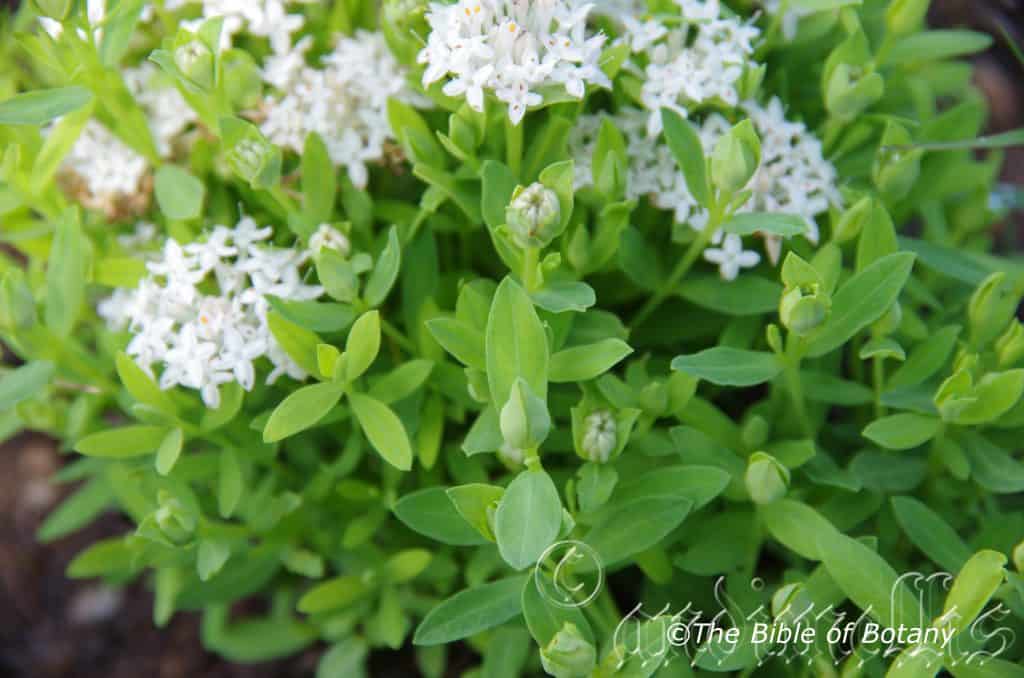
Baryugil NSW
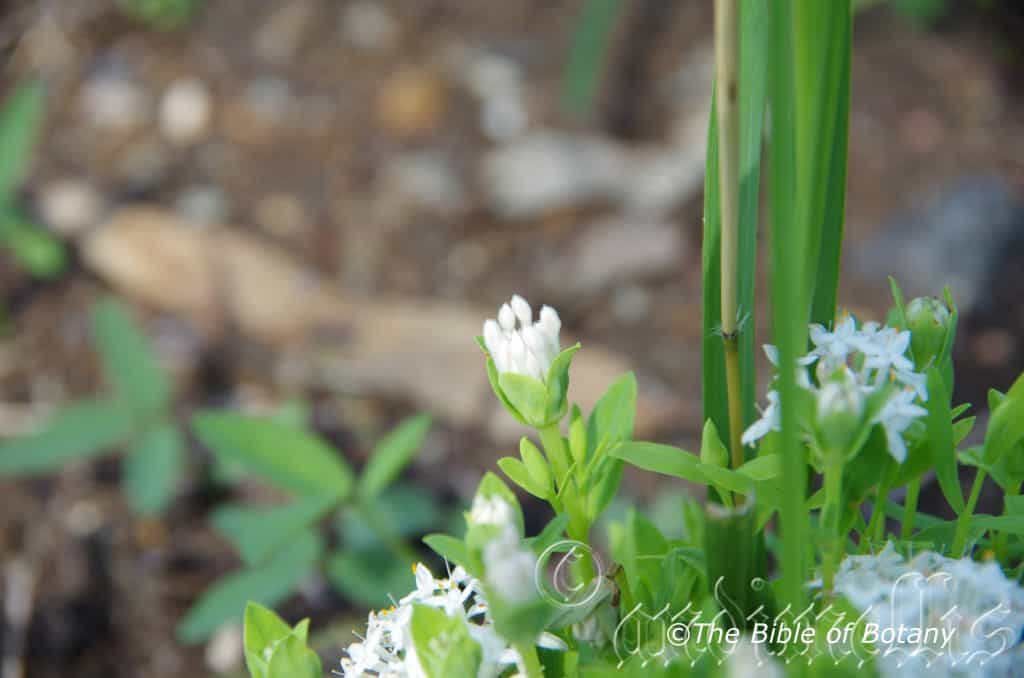
Baryugil NSW

Baryugil NSW
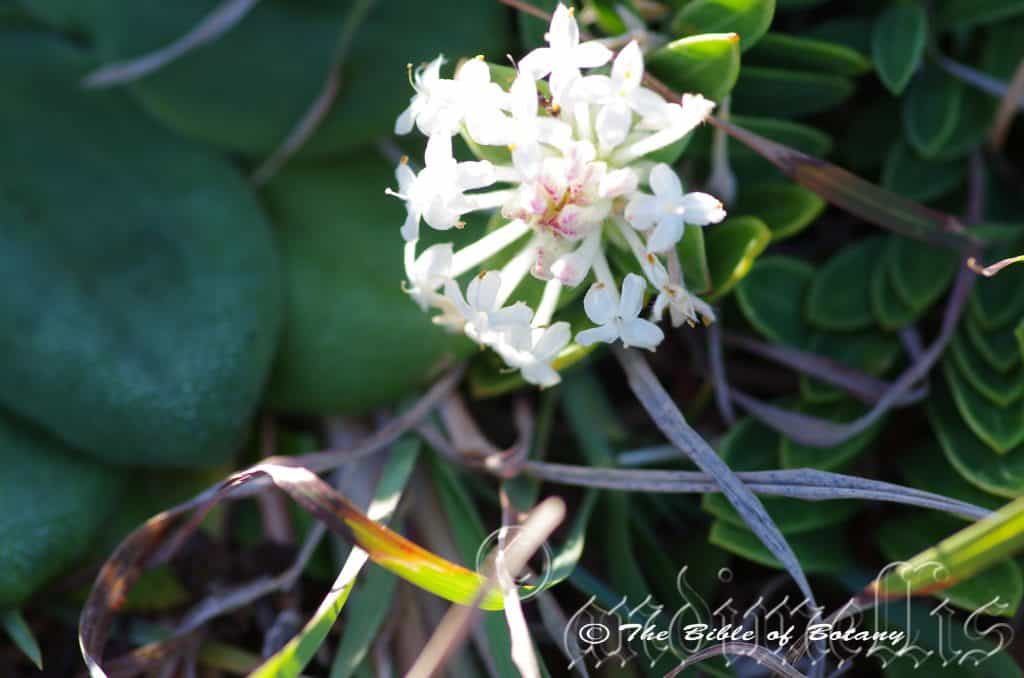
Moonee Beach Headland NSW
Pimelea glauca
Classification:
Unranked: Eudicots
Unranked: Rosids
Order: Malvales
Family: Thymelaeaceae
Genus: From Pimele, which is Ancient Greek for fat. It refers to the seeds, which are rather plump or chubby.
Specie: From Glaucous which is Latin for a filmy blueish or greyish white powdery covering. It refers to the stems leaves or fruits, which have a blueish to greyish powdered layer over the surface.
Sub specie:
Common Name: Smooth Rice Flower.
Distribution:
Pimelea glauca is found south from Marlborough in central eastern Queensland to Fowlers Bay in coastal southern South Australia. It is found on the western slopes, on and east of the Great Dividing Range to the coast except the highland areas in Victoria. It is found west from the Murray River catchment to the Grampians in Victoria and to Port Augusta in South Australia.
It is also found along the north coast and eastern half of Tasmania.
https://avh.ala.org.au/occurrences/search?taxa=Pimelea+glauca#tab_mapView
Habitat Aspect Climate:
Pimelea glauca prefers dappled shade to full sun. It grows in open woodlands, dry Eucalyptus forests, moist open Eucalyptus forests, heaths or savannah woodland s. It is also found adjacent to coastal wallums. The altitude ranges from 20 meters ASL to 1000 meters ASL.
The temperatures range from minus 4 degrees in July to 36 degrees in January.
The rainfall ranges from lows of 300mm to 2000mm average per annum.
Soil Requirements:
Pimelea glauca prefers soils that are sandy loams to medium clays with or without gravel. The soils are derived from decomposed sandstones, brown basalts, black basalts, granites metamorphic rocks, limestones, alluvial deposits or accumulated sands including podsolic soils. The soils pH. ranges from 4.5pH to 8pH. It does not tolerate water logged soils. Non saline soils to moderately saline soils are tolerated.
Height & Spread:
Wild Plants:0.4m to 1m by 0.5m to 1.2m
Characteristics:
Pimelea glauca grows as a prostrate plant to an erect small open shrub. The slender stems are deep red-brown and glabrous. The new growth and juvenile shoots are olive-green and glabrous.
The opposite broad lanceolate leaves of Pimelea glauca measure 5mm to 20mm in length by 2mm to 5mm in width. The bases are rounded to broad cuneate while the apexes are broad acute to acuminate. The concolourous laminas are mid to deep blue-green and glabrous. The laminas recurve upwards from the mid vein to the margins and decurve downwards at the apex while the margins are entire. The mid vein is strongly prominent on the lower lamina and is clearly visible on the upper lamina.
Inflorescences of Pimelea glauca are born on bracteate umbels from the apexes. There are 7 to 35 individual flowers to an umbel. The glabrous peduncles measure 1mm to 12mm in length. The pedicels are covered in coarse, white hirsute hairs and measure 2mm to 6mm in length. The 4 oblong-ovate to ovate bracts are mid blue-green. The 2 outer bracts are glabrous externally and sparsely covered in white hirsute hairs internally. The outer bracts measure 10mm to 15mm in length. The 2 inner bracts are glabrous externally and sparsely covered in white hirsute hairs internally. The margins are covered in white ciliate hairs. The inner bracts measure 6mm to 15mm in length.
The corolla tube and lobes are white to creamy-white and are glabrous at the base becoming moderately to densely covered in short, white pulverulent hairs at the apex. The corolla tube measures 10mm to 15mmin length while the lobes measure 5mm to 6mm in length by 5mm to 6mm in width.
The 2 filiform white filaments are free from the base, exserted and measure 12mm to 19mm in length. The anthers are deep yellow-orange. The slender, white style measures 12mm to 18mm in length. The flowers appear throughout the year with a peak from late August to February.
Pimelea glauca’s fruits are oblong capsules. The green, fruits measure 3.5mm to 5mm in length by 2mm to 4mm wide at the base. The capsules are green while the hypanthium is glabrous.
Wildlife:
Pimelea glauca is the host plant of the Blue spotted Butterfly. (Candalides xanthospila) The green larvae are difficult to detect as they hide amongst leaf debris during the day and emerge only at night to feed.
Cultivation:
Pimelea glauca is a beautiful small shrub that is difficult to maintain in the garden. It is ideal in almost every setting near ponds, at the edge of a bush forest, heath garden, in court yards, around swimming pools or large and small rockeries where their size is balanced. The shorter forms are magnificent in small rockeries and formal gardens as border plants. In cultivation it is necessary to select the form that suits your garden as the different forms will grow from 0.2 meters to 1 meter in height by 0.2 meters to 1 meter in diameter.
It grows exceptionally well on lighter soils though to medium podsolic soils where deep leaf litter keeps the soil cool and moisture at an even level. If these requirements are met it can cope with temperatures as low as minus 3 degrees and up to 38 degrees. It is moderately drought resistant in its rainfall zones.
Add to the above, if it is given an adequate supply of water and a little native fertilizer on a regular basis the plants will respond with spectacular flowering over a long period. They can be lightly pruned to increase bushiness but in saying that It is prone to dying with no apparent cause.
It is best used adjacent to small areas of bush close to paths or the house so their white flowers can be viewed regularly. It is great in small to large rockeries as a fill in plant. Here they can be planted in small groups of 2 or 3 scattered as you would find them in nature to give a great bush scene. It is best used in the mid ground surrounded by shorter plants with courser foliages with pink or red flowers so they will dominate at the center of the bed especially when It is in flower. This is one plant that benefits highly from being mass planted or planted in scattered clumps. There small size enables this to be achieved and their open habit allows for planting closer together so the branches intertwine. This type of planting should have centers of 0.4 meters to 1 meter.
Propagation:
Seeds:
The seeds can be removed easily from the plants as they dry. Once Pimelea glauca has finished flowering and the fruits have swollen place a small brown paper bag around the flowers and keep a close eye on it. When the seeds start to disperse, it can be all over in one day; especially if the weather turns hot, with the seeds being scattered.
Sow fresh seeds directly into a seed raising mix, keeping them moist not wet. When the seedlings are 20mm to 25mm tall, prick them out and plant them into 50mm native tubes using a good organic mix.
As the seedlings roots reach the bottom of the tubes plant them out into their permanent position. Do not delay.
Cuttings: Fortunately Pimelea glauca cuttings strike easy. Use 100mm to 200mm long tip cuttings or lateral shoots from the present season’s growth. Take them in warmer months of the year. Remove half the leaves from the bottom section being careful not to tear the bark.
1 Prepare the cutting mix by adding two thirds sharp clean river sand, one third peat or one third perlite. These ingredients must be sterilized,
2 Select good material from non diseased plants,
3 Select semi green stems for cuttings. Look for a stem with two or three nodes,
4 Place the cutting on a flat, hard surface, and make a clean cut down one side of the cutting at the base for 10mm with a sharp sterile knife or razor blade. – This scarification of the node will increase the chances of roots emerging from this spot. Now remove all but one or two the leaves, leaving the apex leaves in tact. If the leaves are very large in proportion to the stem, cut off the apical halves.
5 Fill a saucer with water, and place a little medium strength rooting hormone into another container like a milk bottle top. Dip the node end of the cutting into the water and then into the rooting hormone. Tap off any excess hormone,
6 Use a small dipple stick or old pencil to poke a hole into the soilless potting mix. Ensure the hole is slightly larger than the stem diameter and be careful not to wipe the rooting hormone off the cuttings base. Place 2 to 4 cuttings in each of the 50mm native tubes,
7 I like to place the tubes in bucket with holes drilled in the bottom to allow excess water to drain out. A plastic bag that fits over the bucket is ideal to help maintain temperature and moisture. Place in a semi shaded, warm position like under 50mm shade cloth.
8 When the cuttings have struck, open the bag to allow air circulation for a few days to a week,
9 Once hardened off remove the cuttings from the bag and allow to further hardening for a few more days to a week,
10 Transplant into a good potting mix to grow on.
Fertilize using seaweed, fish emulsion or organic chicken pellets soaked in water on an alternate basis. Fertilize every two months until the plants are established then twice annually in early September or March to maintain health, vitality and better flowering.
Further Comments from Readers:
“Hi reader, it seems you use The Bible of Botany a lot. That’s great as we have great pleasure in bringing it to you! It’s a little awkward for us to ask, but our first aim is to purchase land approximately 1,600 hectares to link several parcels of N.P. into one at The Pinnacles NSW Australia, but we need your help. We’re not salespeople. We’re amateur botanists who have dedicated over 30 years to saving the environment in a practical way. We depend on donations to reach our goal. If you donate just $5, the price of your coffee this Sunday, We can help to keep the planet alive in a real way and continue to bring you regular updates and features on Australian plants all in one Botanical Bible. Any support is greatly appreciated. Thank you.”
In the spirit of reconciliation we acknowledge the Bundjalung, Gumbaynggirr and Yaegl and all aboriginal nations throughout Australia and their connections to land, sea and community. We pay our respect to their Elders past, present and future for the pleasures we have gained.
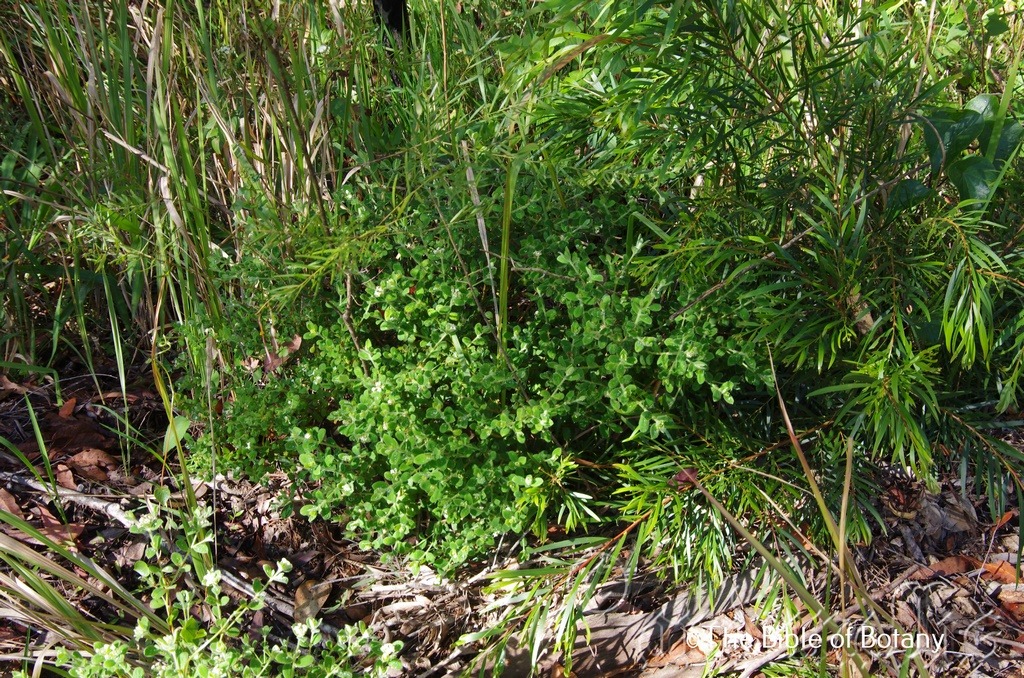
Pillar Valley NSW
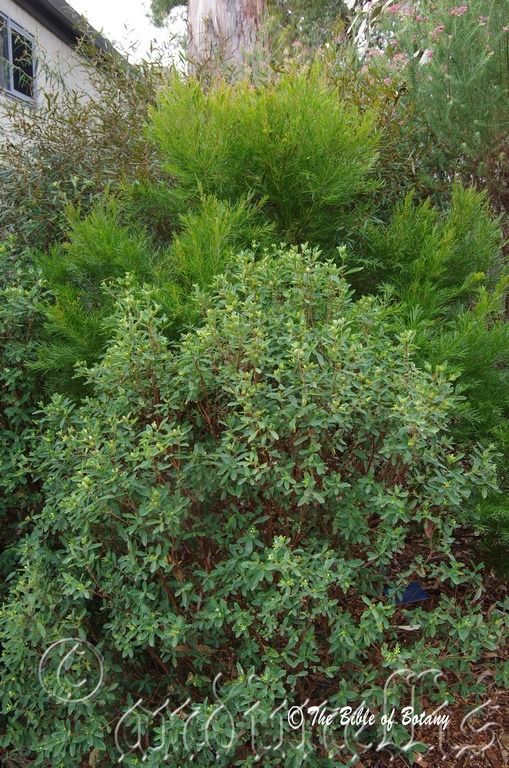
Rosser gardens Benowa Qld.
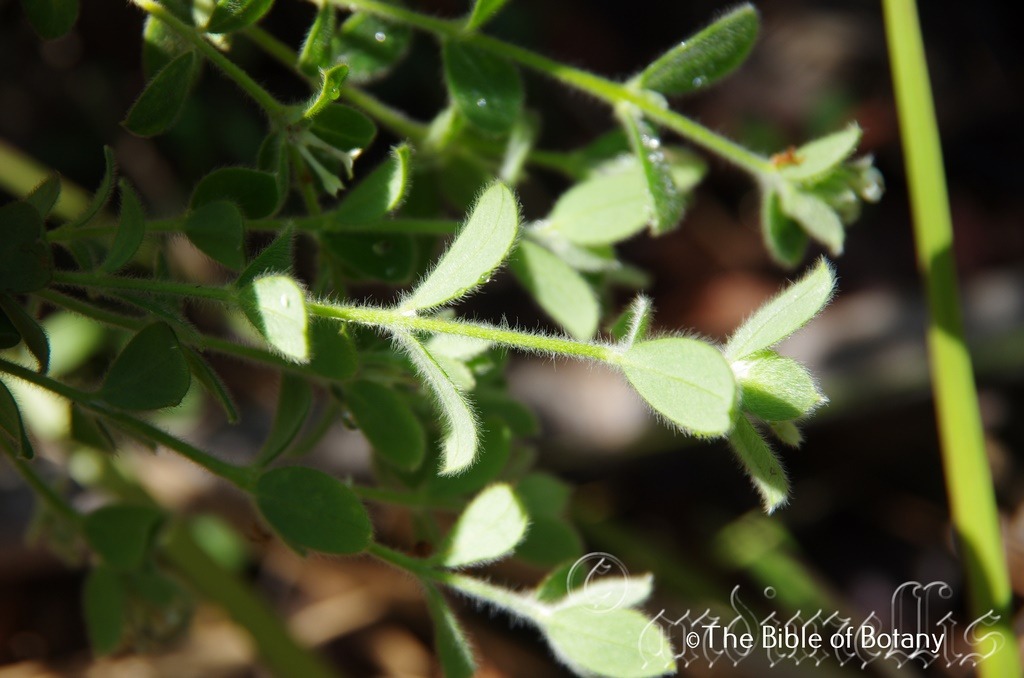
Pillar Valley NSW

Pillar Valley NSW
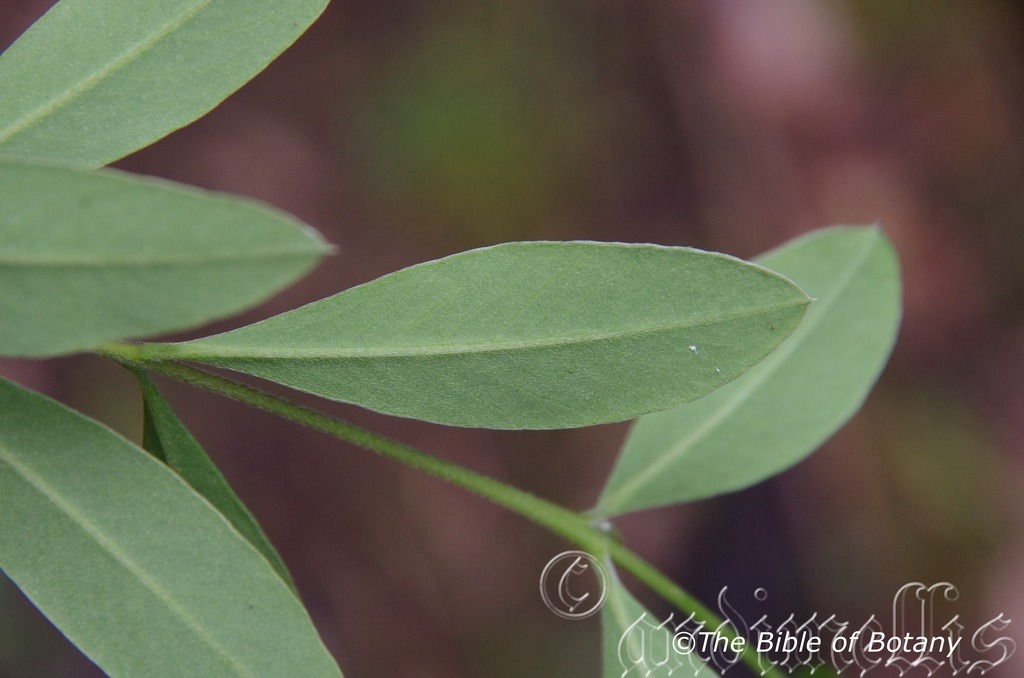
Qinghee National Park Qld.
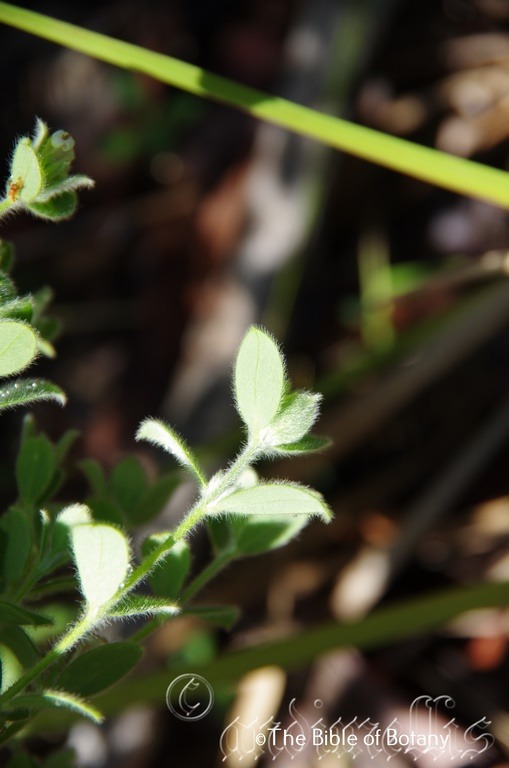
Pillar Valley NSW

Yuraygir National Park NSW
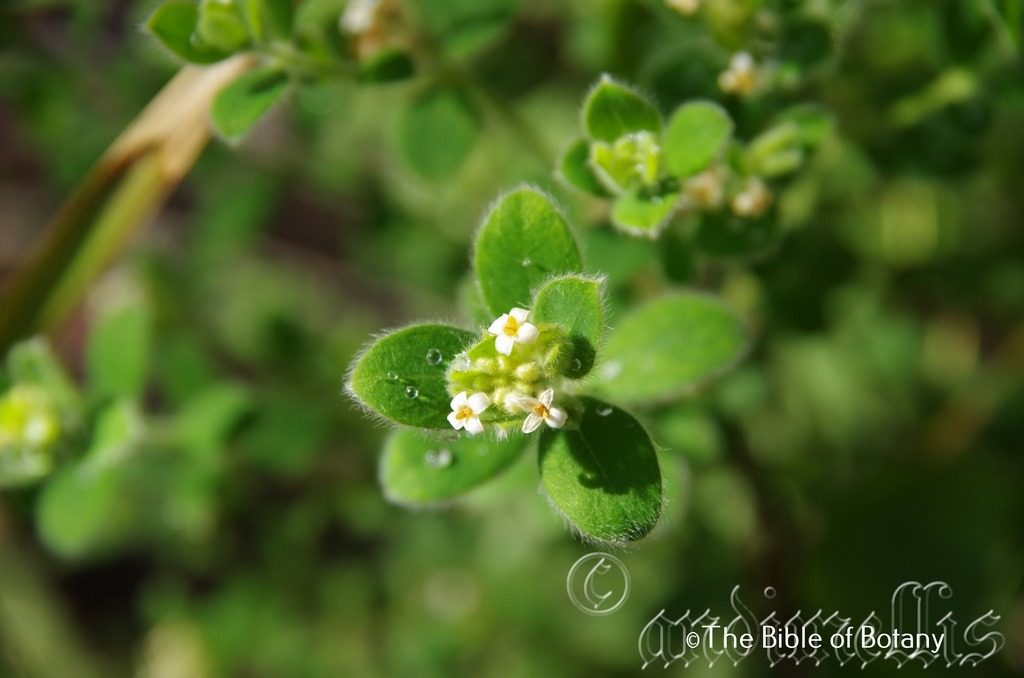
Pillar Valley NSW

Yuraygir National Park NSW
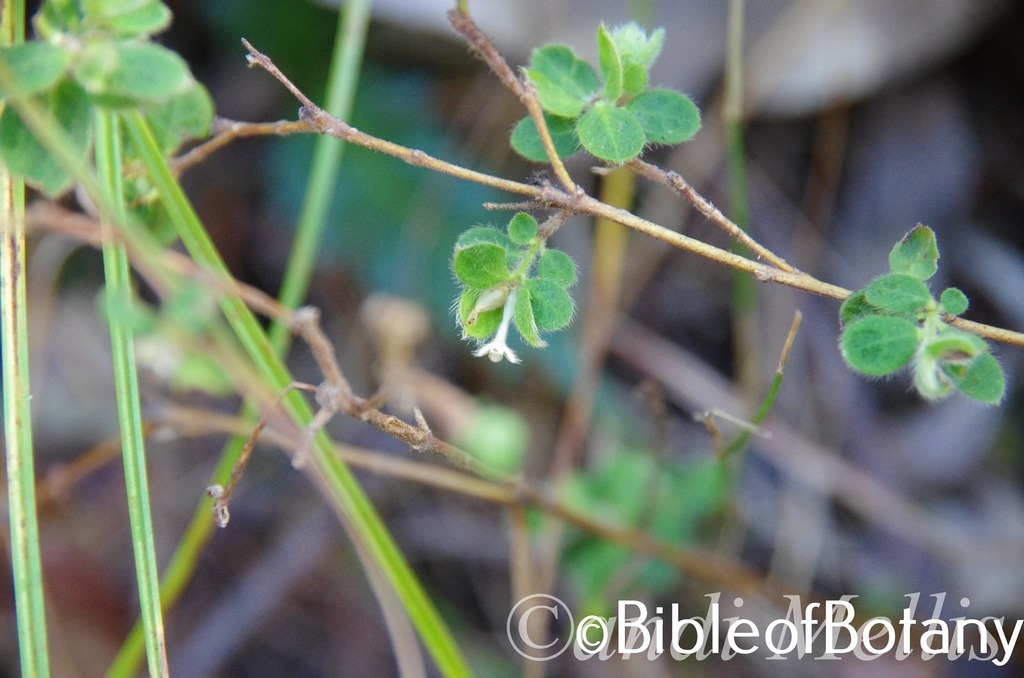
Yuraygir National Park NSW
Pimelea latifolia
Classification:
Unranked: Eudicots
Unranked: Rosids
Order: Malvales
Family: Thymelaeaceae
Genus: From Pimele, which is Ancient Greek for fat. It refers to the seeds, which are rather plump or chubby.
Specie: From Latus, which is Latin for broad and Folium, which is Latin for foliage. It refers to leaves, which are very broad or very broad when compared to other species in the genus.
Sub specie: Pimelea latifolia subsp. altior. From Altior, which is Latin for tall as in height above sea level. It refers to plants, which grow at higher altitudes than other species in the genus or species.
Sub specie: Pimelea latifolia subsp. elliptifolia From Elleiptikós, which is Ancient Greek for an elliptical or ovate shape and Folium, which is Latin for foliage. It refers to the leaves, which have an elliptical shape.
Sub specie: Pimelea latifolia subsp. hirsuta. From Hirsutus, which is Latin for a hairy and shaggy. It refers to plants which have long, shaggy often rough hairs.
Sub specie: Pimelea latifolia subsp. latifolia. From Latus, which is Latin for broad and Folium, which is Latin for foliage. It refers to leaves, which are very broad or very broad when compared to other species in the genus.
Common Name:
Distribution:
Pimelea latifolia subsp. altior is found south from Rockhampton in central eastern Queensland to Taree in central eastern New South Wales.
Pimelea latifolia subsp. elliptifolia is found south from the Hunter Valley to the Blue Mountains, with a disjunct population further north at Clouds Creek in New South Wales.
Pimelea latifolia subsp. hirsutaa.is found in several disjunct populations south from Casino to Yalwal on and east of the Great Dividing, with a further population found further south near Jindabyne Range in New South Wales.
Pimelea latifolia subsp. latifolia is found south of Tully Falls in far north eastern Queensland to Lismore in far north eastern New South Wales. It occurs on and east of the Great Dividing Range.
https://avh.ala.org.au/occurrences/search?taxa=Pimelea+latifolia#tab_mapView
Habitat Aspect Climate:
Pimelea latifolia prefers dappled shade to full sun. See individual subspecies differences below. The altitude ranges from 20 meters ASL to 918 meters ASL.
The temperatures range from minus 4 degrees in July to 40 degrees in January.
The rainfall ranges from lows of 500mm to 2400mm average per annum.
Soil Requirements:
Pimelea latifolia prefers soils that are coarse sands, loams to medium clays. The soils are usually derived from decomposed sandstones, basalts, metamorphic rocks, brown basalts, black basalts, granites alluvial deposits, accumulated beach sands or accumulated coral sands. The soils pH. ranges from 5.5pH to 7.5pH. It does not tolerate water logged soils. Non saline soils to moderately saline soils are tolerated as are salt laden winds.
Height & Spread:
Wild Plants:
Pimelea latifolia subsp. laltior.1m to 2m by 0.8m to 1.5m.
Pimelea latifolia subsp. elliptifolia. 0.5m to 1m by 0.5m to 1m.
Pimelea latifolia subsp. hirsuta.0.1m to 0.5m by 0.2m to 0.5m.
Pimelea latifolia subsp. latifolia. 1m to 3m by 1m to 2.5m.
Characteristics:
Pimelea latifolia grows as a prostrate ground cover to a small erect open shrub. The slender stems are deep red-brown and glabrous. The new growth and juvenile shoots are olive-green and covered in white hirsute hairs.
The opposite elliptic broad elliptic to spathulate leaves of Pimelea latifolia measure 5mm to 80mm in length by 2mm to 25mm in width. The bases are rounded, narrow cuneate to broad cuneate while the apexes are acute, broad acute to obtuse often with a mucronate tip. The concolourous laminas are mid green to deep blue-green and glabrous to sparsely covered in short white hirsute hairs. The laminas are flat and straight or recurve slightly upwards from the mid vein to the margins and recurve upwards from the mid vein to the margins and decurve downwards at the apex while the margins are entire. The mid vein is prominent on the lower lamina and is clearly visible on the upper lamina.
The inflorescences of Pimelea latifolia are born in umbels rarely elongating from the apexes or short lateral branches. There are 1 to 18 individual flowers to an umbel. The glabrous peduncles usually measure 4.5mm to 10mm in length or rarely to 25mm while the glabrous pedicels measure 1mm to 3mm in length. The bracts are absent or similar to the leaves. The sepals are pale blue-green to yellow or white and are sparsely covered in white hirsute hairs.
The corolla tube and 4 lobes are white. The corolla tube is sparsely to moderately covered in white pulverulent hairs externally and is glabrous internally. The lobes are sparsely to moderately covered in long, white hirsute hairs externally and are glabrous internally. The corolla tube measures 5mm to 9mm in length while the imbricate lobes measure 2mm to 3mm in length by 1mm to 2mm in width.
The 2 filiform white filaments are free from the base, exserted and measure 7mm to 11mm in length. The anthers are white, yellow to yellow-ochre. The slender, white inserted style measures 5mm to 7mm in length. The flowers appear throughout the year in warmer zones under favourable conditions with a peak from late August to February.
Pimelea laitfolia’s fruits are enclosed in the hypanthium base. The oblong, green, fruits measure 2mm to 4.5mm long by 2mm to 3mm wide at the base.
Confusing Sub Specie Varieties:
Pimelea latifolia subsp. altior. grows on the margins of rainforest and in wet sclerophyll forest. The leaves are usually elliptic to broad elliptic or obovate and measure leaves 4mm to 40mm in length by 2mm to 10mm in width. The concolourous laminas are deep green and moderately covered in short fine slightly tangled spreading pilose hairs.
The flowers are white. The hypanthium is sparsely covered in short fine spreading sericeous hairs that are often sparse on the persistent base. There are 2 to 12 individual flowers in each umbel. The peduncles do not elongate in fruit.
The fruits measure 2.5mm to 4mm in length.
Pimelea latifolia subsp. elliptifolia leaves are narrow elliptic and measure 5mm to 18mm in length by 3mm to 10mm in width. The concolourous laminas are deep green and covered on both surfaces with fine or coarse long antrorse hairs while the margins are sparsely covered in white ciliate.
The flowers are yellow or greenish yellow. The hypanthium is moderately covered in coarse antrorse or loosely appressed white sericeous hairs. There are 5 to 18 individual flowers in each umbel that measure 5mm to 8mm in length. The peduncles do not elongate in fruit.
The fruits measure 2mm to 3mm mm in length.
Pimelea latifolia subsp. hirsuta grows in dry and moist sclerophyll forest, often in rocky sites. The leaves are elliptic and measure 12mm to 20mm in length by 3mm to 6mm in width. The concolourous laminas are deep green and covered in short fine, slightly tangled, spreading, white hirsute and pilose hairs.
The flowers are yellow or greenish yellow often with reddish sepals. The hypanthium is moderately covered in coarse antrorse or loosely appressed white sericeous hairs. There are 5 to 18 individual flowers in each umbel that measure 4mm to 7mm in length. The peduncles do not elongate in fruit.
Pimelea latifolia’s fruits are capsules that measure 3.5mm to 4.5mm in length.
Pimelea latifolia subsp. latifolia grows on the margins of rainforest and in wet sclerophyll forest. The leaves are narrow elliptic to spathulate and measure 30mm to 80mm in length by 5mm to 15mm in width. The upper lamina is sparsely covered in white erect and appressed sericeous hairs while the lower lamina is covered in short fine loosely appressed or spreading white sericeous hairs.
The flowers are white. The hypanthium is sparsely covered in soft, spreading sericeous hairs. There are 6 to16 individual flowers in each simple umbel. The peduncles measure 10mm to 25mm in length when in fruit.
The fruits measure 4.5mm in length.
Wildlife:
Pimelea latifolia’s are the host plant of the Blue spotted Butterfly. (Candalides xanthospila) The green larvae are difficult to detect as they hide amongst leaf debris during the day and emerge only at night to feed.
Cultivation:
Pimelea latifolia is an extremely variable plant for horticulture. It can be used as a border plant or as a small heath shrub. It is a beautiful small shrub that can be difficult to maintain in the garden. It is ideal in almost every setting near ponds, at the edge of a rain forest in court yards, around swimming pools or large and small rockeries where their size is balanced. In cultivation it grows from 0.2 meters to 1 meter in height by 0.2 meters to 1 meter in diameter.
It grows exceptionally well on lighter soils where deep leaf litter keeps the soil cool and moisture at an even level. If these requirements are met they can cope with temperatures as low as minus 5 degrees and up to 33 degrees. It is moderately drought resistant in their rainfall zones.
Add to the above, if it is given an adequate supply of water and a little native fertilizer on a regular basis the plants will respond with spectacular flowering over a long period. It can be lightly pruned to increase bushiness but in saying that It is prone to dying with no apparent cause.
It is best used adjacent to small areas of bush close to paths or the house so their white flowers can be viewed regularly. It is great in small to large rockeries as a fill in plant. Here they can be planted in small groups of 2 or 3 scattered as you would find them in nature to give a great bush scene. It is best used in the mid ground surrounded by shorter plants with courser foliages with pink or red flowers so they will dominate at the center of the bed especially when It is in flower. This is one plant that benefits highly from being mass planted or planted in scattered clumps. There small size enables this to be achieved and their open habit allows for planting closer together so the branches intertwine. This type of planting should have centers of 0.4 meters to 1 meter.
Propagation:
Seeds:
Pimelea latifolia’s seeds can be removed easily from the plants as they dry. Once Pimelea linifolia has finished flowering and the fruits have swollen place a small brown paper bag around the flowers and keep a close eye on it. When the seeds start to disperse, it can be all over in one day; especially if the weather turns hot, with the seeds being scattered on the ground.
Sow freshly treated seeds directly into a seed raising mix, keeping them moist not wet. When the seedlings are 20mm to 25mm tall, prick them out and plant them into 50mm native tubes using a good organic mix.
As the seedlings roots reach the bottom of the tubes plant them out into their permanent position. Do not delay.
Cuttings:
Fortunately Pimelea latifolia cuttings strike easy. Use 100mm to 200mm long tip cuttings or lateral shoots from the present season’s growth. Take them in warmer months of the year. Remove half the leaves from the bottom section being careful not to tear the bark.
1 Prepare the cutting mix by adding two thirds sharp clean river sand, one third peat or one third perlite. These ingredients must be sterilized,
2 Select good material from non diseased plants,
3 Select semi green stems for cuttings. Look for a stem with two or three nodes,
4 Place the cutting on a flat, hard surface, and make a clean cut down one side of the cutting at the base for 10mm with a sharp sterile knife or razor blade. – This scarification of the node will increase the chances of roots emerging from this spot. Now remove all but one or two the leaves, leaving the apex leaves in tact. If the leaves are very large in proportion to the stem, cut off the apical halves.
5 Fill a saucer with water, and place a little medium strength rooting hormone into another container like a milk bottle top. Dip the node end of the cutting into the water and then into the rooting hormone. Tap off any excess hormone,
6 Use a small dipple stick or old pencil to poke a hole into the soilless potting mix. Ensure the hole is slightly larger than the stem diameter and be careful not to wipe the rooting hormone off the cuttings base. Place 2 to 4 cuttings in each of the 50mm native tubes,
7 I like to place the tubes in bucket with holes drilled in the bottom to allow excess water to drain out. A plastic bag that fits over the bucket is ideal to help maintain temperature and moisture. Place in a semi shaded, warm position like under 50mm shade cloth.
8 When the cuttings have struck, open the bag to allow air circulation for a few days to a week,
9 Once hardened off remove the cuttings from the bag and allow to further hardening for a few more days to a week,
10 Transplant into a good potting mix to grow on.
Fertilize using seaweed, fish emulsion or organic chicken pellets soaked in water on an alternate basis. Fertilize every two months until the plants are established then twice annually in early September or March to maintain health, vitality and better flowering.
Further Comments from Readers:
“Hi reader, it seems you use The Bible of Botany a lot. That’s great as we have great pleasure in bringing it to you! It’s a little awkward for us to ask, but our first aim is to purchase land approximately 1,600 hectares to link several parcels of N.P. into one at The Pinnacles NSW Australia, but we need your help. We’re not salespeople. We’re amateur botanists who have dedicated over 30 years to saving the environment in a practical way. We depend on donations to reach our goal. If you donate just $5, the price of your coffee this Sunday, We can help to keep the planet alive in a real way and continue to bring you regular updates and features on Australian plants all in one Botanical Bible. Any support is greatly appreciated. Thank you.”
In the spirit of reconciliation we acknowledge the Bundjalung, Gumbaynggirr and Yaegl and all aboriginal nations throughout Australia and their connections to land, sea and community. We pay our respect to their Elders past, present and future for the pleasures we have gained.
Pimelea ligustrina
Classification:
Unranked: Eudicots
Unranked: Rosids
Order: Malvales
Family: Thymelaeaceae
Genus: From Pimele, which is Ancient Greek for fat. It refers to the seeds, which are rather plump or chubby.
Specie: From Ligustrum, which is the old Latin name for Privet. It refers to leaves, which resemble the Chinese Privet Ligustrum sinense.
Sub specie: Pimelea ligustrina subsp. ciliata. From Ligustrum, which is the old Latin name for Privet. It refers to leaves, which resemble the Chinese Privet Ligustrum sinense.
Sub specie: Pimelea ligustrina subsp. hypericina. From Ligustrum, which is the old Latin name for Privet. It refers to leaves, which resemble the Chinese Privet Ligustrum sinense.
Sub specie: Pimelea ligustrina subsp. ligustrina. From Ligustrum, which is the old Latin name for Privet. It refers to leaves, which resemble the Chinese Privet Ligustrum sinense.
Common Name: Tall Rice Flower.
Distribution:
Pimelea ligustrina subsp. ciliata is found south from Canberra in the ACT to Mount Wellington in central Victoria with disjunct populations found north west of Canberra in New South Wales and Mount Buffalo in southern Victoria.
It is also found across the northern quarter of Tasmania.
Pimelea ligustrina subsp. hypericina is found south of MacPhersons Range National Park in far south eastern Queensland to the Bogong High Plains in northern Victoria. It is also found in the Waratah/Wynyard district of far north eastern corner of Tasmania.
Pimelea ligustrina subsp. ligustrina is found south of Border Ranges National Park in far south eastern Queensland to Wellington in northern Victoria. It occurs on the Great Dividing Range.
https://avh.ala.org.au/occurrences/search?taxa=Pimelea+ligustrina#tab_mapView
Habitat Aspect Climate:
Pimelea ligustrina prefers dappled shade to full sun. It grows from the coast to high in the mountains in open woodlands, dry Eucalyptus forests, moist Eucalyptus forests, dry heaths or littoral rainforest margins. The altitude ranges from 15 meters ASL to 1230 meters ASL.
The temperatures range from minus 4 degrees in July to 36 degrees in January.
The rainfall ranges from lows of 550mm to 2000mm average per annum.
Soil Requirements:
Pimelea ligustrina prefers soils that are sandy loams to medium clays with or without a high proportion of gravel. The soils are derived from decomposed sandstones, brown basalts, black basalts, shale, metashales, metagranites or granites. The soils pH. ranges from 4.5pH to 6pH. It does not tolerate water logged soils. Non saline soils to moderately saline soils are tolerated.
Height & Spread:
Wild Plants:
Pimelea ligustrina subsp. ligustrina1m to 2m by 1m to 2m.
Pimelea ligustrina subsp. ciliata1m to 1.5m by 1m to 1.5m.
Pimelea ligustrina subsp. hypericinia 1m to 3m by 1m to 2.5m.
Characteristics:
Pimelea ligustrina grows as a small, erect open shrub. The slender stems are deep red-brown and glabrous. Young shoots are deep turquoise green and glabrous.
The opposite oblanceolate, narrow elliptic or rarely broad elliptical leaves of Pimelea ligustrina measure 15mm to 90mm in length by 7mm to 20mm in width. The petioles measure 0mm to 1mm in length. The bases taper to the stem or petiole while the apexes are acute to obtuse. The concolourous laminas are mid to deep blue-green and glabrous. The laminas are flat or recurve slightly upwards from the midvein to the margins while the margins are entire. The mid vein and lateral veins are prominent on the lower lamina and are faintly visible on the upper lamina.
The inflorescences of Pimelea ligustrina are born in short, dense, bracteole umbels from the terminals. There are 30 to 50 individual flowers to an umbel. The peduncle is covered in white puberulent hairs. The peduncles measure 5mm to 60mm in length while the individual flowers are sessile. The 4 or 8 greenish, pink or reddish or brownish bracts are elliptic to ovate. The bracts are glabrous or covered in soft, white sericeous hairs.
The sepals are pink with 4 minute triangular lobes. The corolla tube and 4 lobes are white and are covered in white hirsute hairs externally. The white corolla tubes measure 10mm to 17mm in length while the lobes measure 4mm to 5.5mm in length.
The 2 filiform white filaments are free from the base, exserted and measure 15mm to 23mm in length. The anthers are deep orange. The slender, white exserted style measures 16mm to 24mm in length. The flowers appear from September to November.
Pimelea ligustrina’s fruits are enclosed in the hypanthium base. The bracts are persistent and are often reflexed in fruit. The oblong, green, fruits measure 3mm to 5mm long by 2mm to 2.5mm wide at the base.
Subspecie Differences:
Pimelea ligustrina subsp. ciliata is found above 1400 meters ASL. The bracts are glabrous on inner surface, hairy on outer surface. The bracts are reddish-brown and glabrous while the margins are covered in white ciliate hairs. The bracts remain erect to divaricate in fruit while the receptacle rarely elongates in fruit. The elliptic leaves measure 15mm to 40mm in length. The peduncles are glabrous or sparsely covered in white hirsute hairs. The pedicels are sparsely covered in white hirsute hairs. There are 20 to 70 individual flowers in an umbel.
Pimelea ligustrina subsp. hypericina’s leaves are oblanceolate to elliptic and measure 30mm to 60mm in length. The bracts are covered in pale grey to pale bluish-grey puberulent hairs on both surfaces. The bracts usually become reflexed in fruit. The peduncles are covered in short fine, white hirsute hairs immediately below the involucre bracts. The pedicels are glabrous to sparsely covered in soft, pale grey to pale bluish-grey hairs. There are 36 to 140 individual flowers in each umbel. The receptacle usually elongates in fruit.
Pimelea ligustrina subsp. ligustrina is found below 1400 meters ASL. The leaves are variable in shape and measure 20mm to 60mm in length. The mid green bracts are sparsely covered in white hirsute hairs externally and are glabrous internally. The bracts margins are glabrous or covered in white ciliate hairs. The bracts measure 4mm to 15mm in length by 2mm to 10mm in width and are usually reflexed on the ripe fruit. The receptacle usually elongates in fruit. The peduncles are glabrous to sparsely covered in golden hirsute hairs. The pedicels are glabrous to moderately covered in golden hirsute hairs. There are 15 to 130 individual flowers in each umbel.
Wildlife:
Pimelea ligustrina’s are the host plant of the Blue spotted Butterfly. (Candalides xanthospila) The green larvae are difficult to detect as they hide amongst leaf debris during the day and emerge only at night to feed.
Cultivation:
Pimelea ligustrina is a beautiful small shrub that is difficult to maintain in the garden. It is an ideal in almost every setting near ponds, at the edge of a rain forest in court yards, around swimming pools or large and small rockeries where their size is balanced. In cultivation it grows from 0.2 meters to 1 meter in height by 0.2 meters to 1 meter in diameter.
It grows exceptionally well on lighter soils where deep leaf litter keeps the soil cool and moisture at an even level. If these requirements are met they can cope with temperatures as low as minus 3 degrees and up to 38 degrees. It is moderately drought resistant in their rainfall zones.
Add to the above, if it is given an adequate supply of water and a little native fertilizer on a regular basis the plants will respond with spectacular flowering over a long period. It can be lightly pruned to increase bushiness but in saying that It is prone to dying with no apparent cause.
It is best used adjacent to small areas of bush close to paths or the house so their white flowers can be viewed regularly. It is great in small to large rockeries as a fill in plant. Here it can be planted in small groups of 2 or 3 scattered as you would find them in nature to give a great bush scene. It is best used in the mid ground surrounded by shorter plants with courser foliages with pink or red flowers so it will dominate at the center of the bed especially when It is in flower. This is one plant that benefits highly from being mass planted or planted in scattered clumps. There small size enables this to be achieved and their open habit allows for planting closer together so the branches intertwine. This type of planting should have centers of 0.4 meters to 1 meter.
Propagation:
Seeds:
Pimelea ligustrina’s seeds can be removed easily from the plants as they dry. Once Pimelea linifolia has finished flowering and the fruits have swollen place a small brown paper bag around the flowers and keep a close eye on it. When the seeds start to disperse, it can be all over in one day; especially if the weather turns hot, with the seeds being scattered on the ground.
Sow freshly treated seeds directly into a seed raising mix, keeping them moist not wet. When the seedlings are 20mm to 25mm tall, prick them out and plant them into 50mm native tubes using a good organic mix.
As the seedlings roots reach the bottom of the tubes plant them out into their permanent position. Do not delay.
Cuttings:
Fortunately Pimelea ligustrina cuttings strike easy. Use 100mm to 200mm long tip cuttings or lateral shoots from the present season’s growth. Take them in warmer months of the year. Remove half the leaves from the bottom section being careful not to tear the bark.
1 Prepare the cutting mix by adding two thirds sharp clean river sand, one third peat or one third perlite. These ingredients must be sterilized,
2 Select good material from non diseased plants,
3 Select semi green stems for cuttings. Look for a stem with two or three nodes,
4 Place the cutting on a flat, hard surface, and make a clean cut down one side of the cutting at the base for 10mm with a sharp sterile knife or razor blade. – This scarification of the node will increase the chances of roots emerging from this spot. Now remove all but one or two the leaves, leaving the apex leaves in tact. If the leaves are very large in proportion to the stem, cut off the apical halves.
5 Fill a saucer with water, and place a little medium strength rooting hormone into another container like a milk bottle top. Dip the node end of the cutting into the water and then into the rooting hormone. Tap off any excess hormone,
6 Use a small dipple stick or old pencil to poke a hole into the soilless potting mix. Ensure the hole is slightly larger than the stem diameter and be careful not to wipe the rooting hormone off the cuttings base. Place 2 to 4 cuttings in each of the 50mm native tubes,
7 I like to place the tubes in bucket with holes drilled in the bottom to allow excess water to drain out. A plastic bag that fits over the bucket is ideal to help maintain temperature and moisture. Place in a semi shaded, warm position like under 50mm shade cloth.
8 When the cuttings have struck, open the bag to allow air circulation for a few days to a week,
9 Once hardened off remove the cuttings from the bag and allow to further hardening for a few more days to a week,
10 Transplant into a good potting mix to grow on.
Fertilize using seaweed, fish emulsion or organic chicken pellets soaked in water on an alternate basis. Fertilize every two months until the plants are established then twice annually in early September or March to maintain health, vitality and better flowering.
Further Comments from Readers:
“Hi reader, it seems you use The Bible of Botany a lot. That’s great as we have great pleasure in bringing it to you! It’s a little awkward for us to ask, but our first aim is to purchase land approximately 1,600 hectares to link several parcels of N.P. into one at The Pinnacles NSW Australia, but we need your help. We’re not salespeople. We’re amateur botanists who have dedicated over 30 years to saving the environment in a practical way. We depend on donations to reach our goal. If you donate just $5, the price of your coffee this Sunday, We can help to keep the planet alive in a real way and continue to bring you regular updates and features on Australian plants all in one Botanical Bible. Any support is greatly appreciated. Thank you.”
In the spirit of reconciliation we acknowledge the Bundjalung, Gumbaynggirr and Yaegl and all aboriginal nations throughout Australia and their connections to land, sea and community. We pay our respect to their Elders past, present and future for the pleasures we have gained.

Fortis Creek National Park NSW
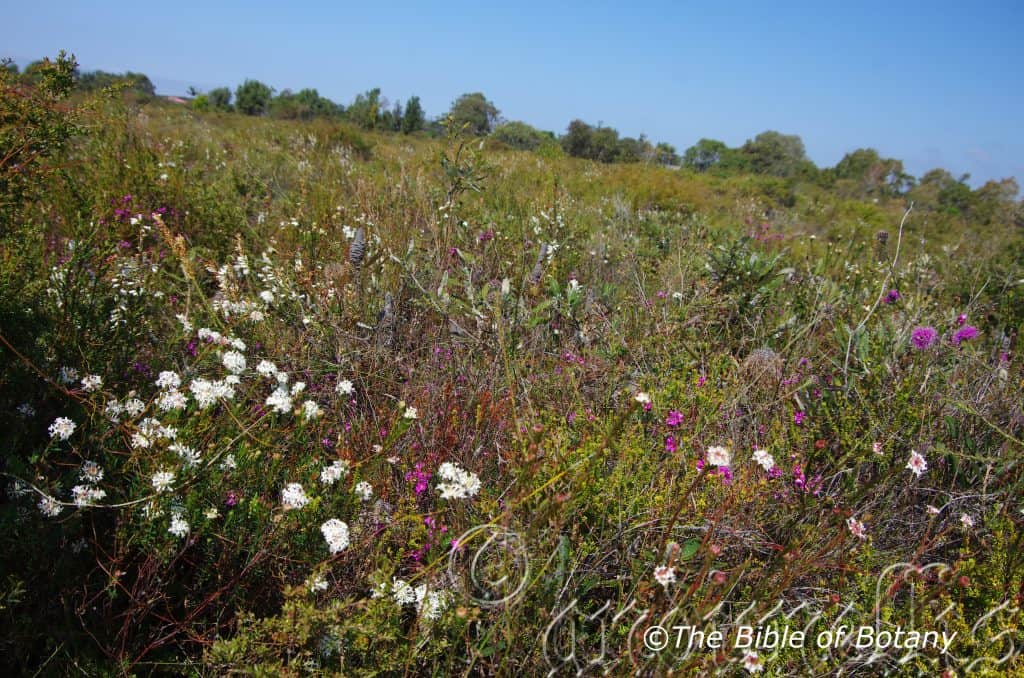
Yuraygir National Park NSW

Yuraygir National Park NSW
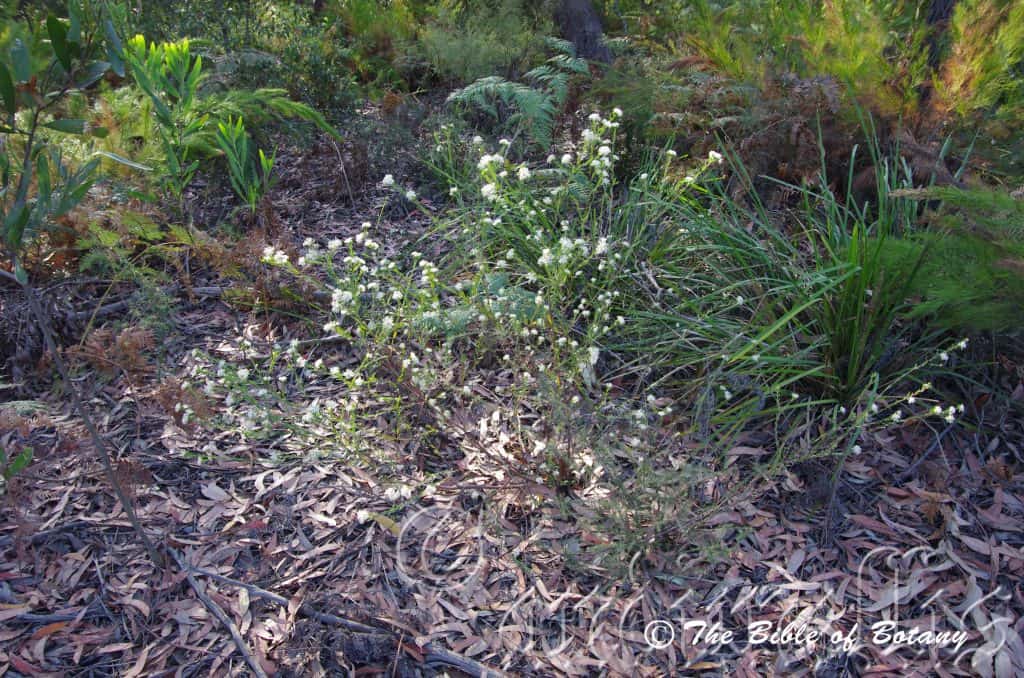
Laurieton NSW

Laurieton NSW
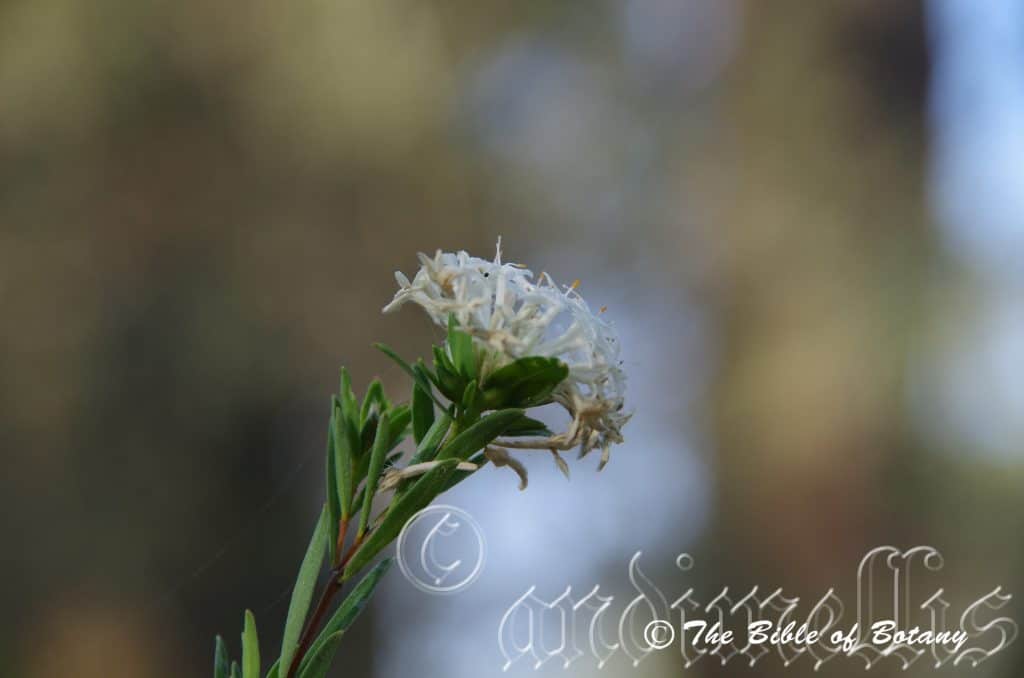
Laurieton NSW
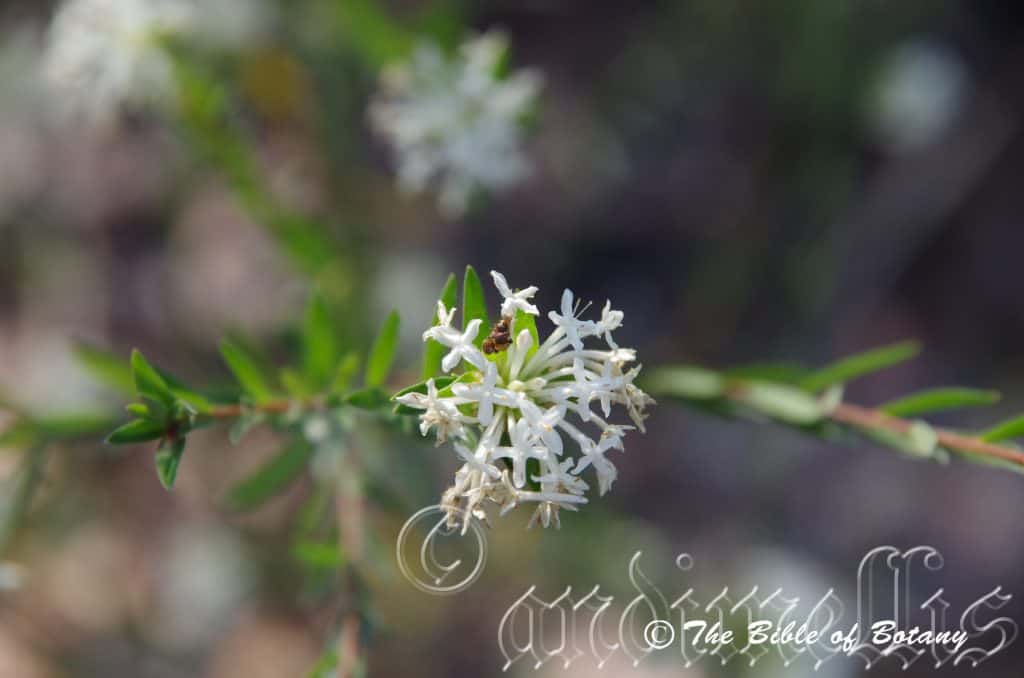
Laurieton NSW
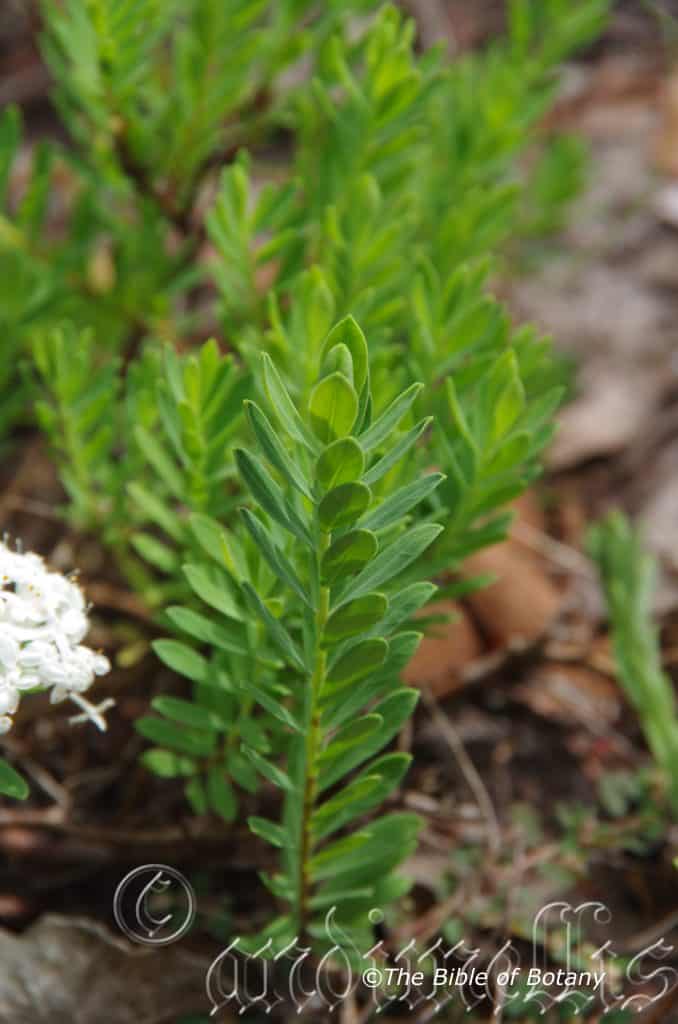
NCBG Coffs Harbour NSW
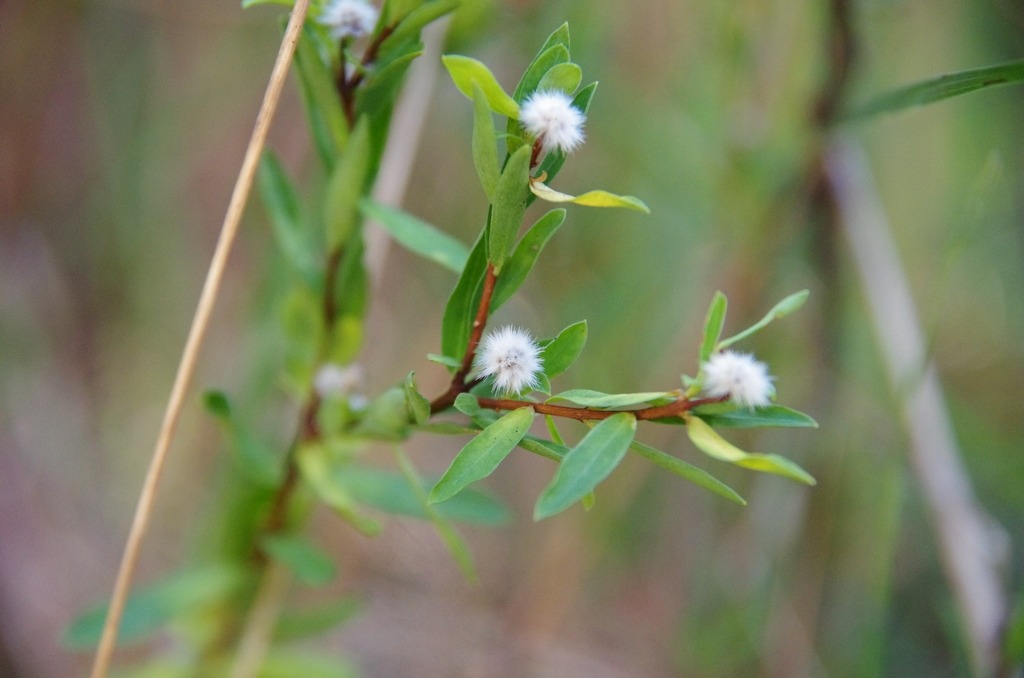
Yuraygir National Park NSW

Fortis Creek National Park NSW
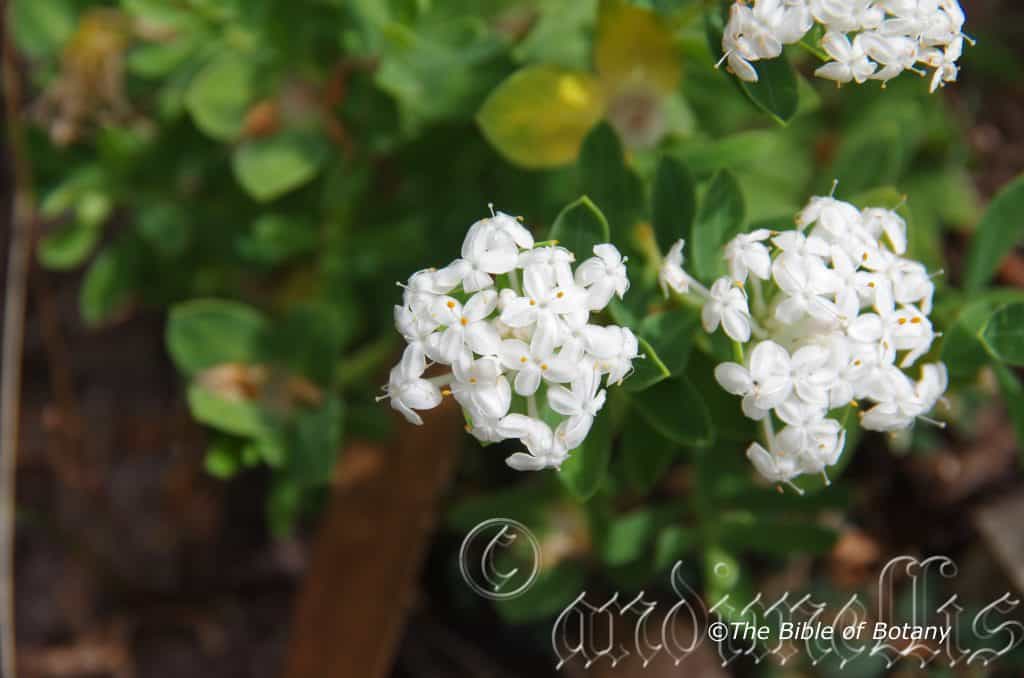
NCBG Coffs Harbour NSW
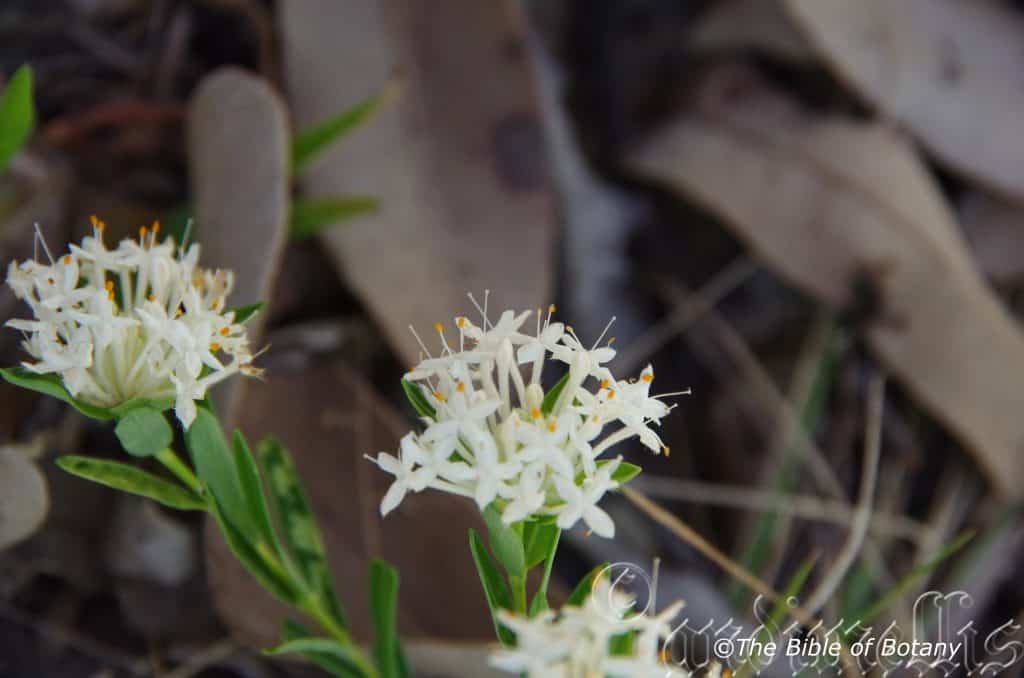
Fortis Creek National Park NSW

Fortis Creek National Park NSW
Pimelea linifolia
Classification:
Unranked: Eudicots
Unranked: Rosids
Order: Malvales
Family: Thymelaeaceae
Subfamily:
Genus: From Pimele, which is Ancient Greek for fat. It refers to the seeds, which are rather plump or chubby.
Specie: From Linum, which is Latin for flax and Folium, which is Latin for foliage. It refers to leaves or labellum on orchids, which resemble the linear leaf of the flax.
Sub specie: Pimelea linifolia subsp. caesia.Is named in honour of Frederico Cesi; 1585-1630, who was the first person to realize the importance of spore in fern reproduction.
Sub specie: Pimelea linifolia subsp. collina. From Coll?num/Coll?n?, which are Latin for hills. It refers to plants, which prefer to grow on hilly terrains.
Sub specie: Pimelea linifolia subsp.linifolia. From Linum, which is Latin for flax and Folium, which is Latin for foliage. It refers to leaves or labellum on orchids, which resemble the linear leaf of the flax.
Subs pecie: Pimelea linifolia subsp. linoides. From Linearis, which is Latin for straight lines and Eîdos/Oides, which is Ancient Greek for a like or similar to. It refers to leaves or phyllodes which are very typical of leaves that are linear.
Common Name: Rice Flower.
Distribution:
Pimelea linifolia subsp. caesia is found south from The Barrington Tops in central New South Wales to Marysville in Victoria with several disjunct populations further to north at Tingha in New South Wales and west to Lake Albacutya in western Victoria and the Glenelg River in south eastern South Australia. It is mainly found along the Great Dividing Range.
Pimelea linifolia subsp. collina is found south from Innisfail in far north eastern Queensland to Wadbilliga National Park in south eastern New South Wales. It occurs on the Western Slopes and on and east of the Great Dividing Range to the coast.
Pimelea linifolia subsp. linifolia is found south from Cape York Peninsular in far north eastern Queensland to the Flinders Ranges and north to the Chase range north of Port Ausgusta in South Australia. It occurs on the Western Plains, on the Western Slopes, on and east of the Great Dividing Range to the coast.
It is also found on the Bass Strait Islands and all of Tasmania.
Pimelea linifolia subsp. linoides is found in several disjunct populations south from Angourie in north eastern New South Wales to the Grampians in central western Victoria.
It is also occurs on the eastern Bass Strait Islands and the western half of Tasmania.
https://avh.ala.org.au/occurrences/search?taxa=Pimelea+linifolia#tab_mapView
Habitat Aspect Climate:
Pimelea linifolia prefers dappled shade to full sun. It grows in the mountains in open woodlands to dry and moist Eucalyptus forests. It is also found adjacent to coastal wallums. The altitude ranges from 20 meters ASL to 1550 meters ASL.
The temperatures range from minus 4 degrees in July to 36 degrees in January.
The rainfall ranges from lows of 500mm to 3000mm average per annum.
Soil Requirements:
Pimelea linifolia prefers soils that are sandy loams to light clays with a high proportion of gravel. The soils are usually derived from decomposed sandstones, basalts or granites. The soils pH. ranges from 5.5pH to 7pH. It does not tolerate water logged soils. Non saline soils to moderately saline soils are tolerated.
Height & Spread:
Wild Plants:
Pimelea linifolia subsp. caesia 0.1m to 0.5m by 0.2m to 0.5m.
Pimelea linifolia subsp. collina 0.5m to 1m by 0.5m to 1m.
Pimelea linifolia subsp. linifolia 0.3m to 1m by 0.5m to 0.8m.
Pimelea linifolia subsp. linoides 1m to 2.5m by 1m to 2.5m.
Characteristics:
Pimelea linifolia grows as a prostrate ground cover to a small erect open shrub. Stems are thin deep red-brown and glabrous. Young shoots are deep turquoise green and glabrous.
The opposite narrow elliptical leaves of Pimelea linifolia subsp. caesia measure 5mm to 10mm in length by 3mm to 4mm in width. The base is rounded to narrow tapering while the apex is acute. The concolourous laminas are glaucous green and glabrous. The leaf margins are entire and flat. The mid vein is slightly prominent on the lower lamina and is not visible on the upper lamina. Intramarginal veins are not obvious.
The opposite broad oblanceolate to narrow elliptical leaves of Pimelea linifolia subsp.collina measure 5mm to 25mm in length by 1mm to 4mm or rarely to 7mm in width. The base is rounded to narrow tapering while the apex is acute. The concolourous laminas are blue green and glabrous. The leaf margins are entire and flat. The mid vein is slightly prominent on the lower lamina and is not visible on the upper lamina. The intramarginal veins are prominent on the lower lamina.
The opposite broad oblanceolate to narrow elliptical leaves of Pimelea linifoliasubsp. linifolia measure 5mm to 30mm in length by 1mm to 4mm or rarely to 7mm in width. The base is rounded to narrow tapering while the apex is acute. The concolourous laminas are blue green and glabrous. The leaf margins are entire and flat. The mid vein is slightly prominent on the lower lamina and is not visible on the upper lamina. Intramarginal veins are not obvious.
The opposite narrow oblong to narrow elliptical leaves of Pimelea linifolia subsp.linoides measure 10mm to 35mm in length by 3mm to 6mm in width. The base is rounded to narrow tapering while the apex is acute. The concolourous laminas are green, with a reddish or purplish tinge and glabrous. The leaf margins are entire and flat. The mid vein is slightly prominent on the lower lamina and is not visible on the upper lamina. Intramarginal veins are not obvious.
The inflorescences of Pimelea linifolia subsp. caesia are born on a short terminal simple umbel. There are 7 to 21 individual flowers to the simple umbels. The 4 oblanceolate to ovate, blue-green bract apexes are acute to obtuse. The bracts intramarginal veins are not prominent. The bracts measure 7mm to 15mm in length by 3mm to 7mm in width. The white perianths measure 16mm to 19mm in length. The perianths are sparsely covered in white pilose hairs externally and glabrous internally. The base has fewer hairs than the perianths. The oblong lobes measure 2mm to 4.2mm in length by 1.5mm to 2mm in width. The apex is acute with a mucronate point. It is divaricate and slightly recurved at the tips.
The 2 white stamens are free from the base and measure 11mm to 22mm in length. The anthers are deep orange.
The slim, white style measures 13mm to 25mm in length. Pimelea linifolia subsp. caesia flowers from August through to early April with odd flowers appearing all year. Flowering appears to be more prolific following good rains.
The inflorescences of Pimelea linifolia subsp.collina are born on a short terminal simple umbel. There are 9 to 50 individual flowers to the simple umbels. The 4 narrow-ovate to ovate green bracts intramarginal veins are not prominent. The bracts measure 4mm to 15mm in length by 2mm to 8mm in width. The white perianths measure 14mm to 20mm in length. The perianths are covered in white pulverulent hairs externally and glabrous internally. The base is glabrous. The oblong lobes measure 1.5mm to 3.2mm in length by 1mm to 1.5mm in width. The apex is acute. It is divaricate and slightly decurve at the tips.
The 2 white stamens are free from the base and measure 11mm to 22mm in length. The anthers are deep orange.
The slim, white style measures 16mm to 24mm in length. Pimelea linifolia subsp.collina flowers from August through to early April with odd flowers appearing all year. Flowering appears to be more prolific following good rains.
The inflorescences of Pimelea linifolia subsp.linoides are born on a short terminal simple umbel. There are 28 to 60 individual flowers to the simple umbels. The 4 ovate green bracts are often tinged red or pink. The intramarginal veins are not prominent. The bracts measure 10mm to 16mm in length by 5mm to 9mm in width. The white perianths measure 14mm to 20mm in length. The perianths are covered in white pilose hairs externally and glabrous internally. The oblong lobes measure 2mm to 4mm in length by 1.5mm to 2mm in width. The apex is acute with a mucronate point. It is divaricate and slightly recurved at the tips.
The 2 white stamens are free from the base and measure 16mm to 22mm in length. The anthers are deep orange.
The slim, white style measures 18mm to 25mm in length. Pimelea linifolia subsp.linoides flowers from August through to early April with odd flowers appearing all year. Flowering appears to be more prolific following good rains.
The inflorescences of Pimelea linifolia subsp.linifolia are born on a short terminal simple umbel. There are 5 to 44 individual flowers to the simple umbels. The 4 oblong-ovate to ovate green bracts often have a purplish tinge near the margins. The bracts intramarginal veins are not prominent. The bracts measure 4mm to 19mm in length by 3mm to 10mm in width. The white perianths measure 10mm to 20mm in length. The perianths are covered in white pilose hairs externally and glabrous internally. The base has longer hairs than the perianths. The oblong lobes measure 2mm to 4.2mm in length by 1.5mm to 2mm in width. The apex is acute with a mucronate point. It is divaricate and slightly recurved at the tips.
The 2 white stamens are free from the base and measure 11mm to 22mm in length. The anthers are deep orange.
The slim, white style measures 13mm to 25mm in length. Pimelea linifolia subsp.linifolia flowers from August through to early April with odd flowers appearing all year. Flowering appears to be more prolific following good rains.
Pimelea linifolia’s fruits are enclosed in the hypanthium base. The oblong, green, fruits measure 3mm to 5mm long by 2mm to 4mm wide at the base.
Wildlife:
Pimelea linifolia’s are the host plant of the Blue spotted Butterfly. (Candalides xanthospila) The green larvae are difficult to detect as they hide amongst leaf debris during the day and emerge only at night to feed.
Cultivation:
Pimelea linifolia is a beautiful small shrub that is difficult to maintain in the garden. It is an ideal in almost every setting near ponds, at the edge of a rain forest in court yards, around swimming pools or large and small rockeries where their size is balanced. In cultivation they will grow from 0.2 meters to 1 meter in height by 0.2 meters to 1 meter in diameter.
It grows exceptionally well on lighter soils where deep leaf litter keeps the soil cool and moisture at an even level. If these requirements are met they can cope with temperatures as low as minus 5 degrees and up to 33 degrees. It is moderately drought resistant in their rainfall zones.
Add to the above, if it is given an adequate supply of water and a little native fertilizer on a regular basis the plants will respond with spectacular flowering over a long period. They can be lightly pruned to increase bushiness but in saying that It is prone to dying with no apparent cause.
It looks its best used adjacent to small areas of bush close to paths or the house so their white flowers can be viewed regularly. It is a great addition to small, medium or large rockeries as a fill in plant. Here it can be planted in small groups of 2 or 3 scattered as you would find them in nature to give a great bush scene. It is best used in the mid ground surrounded by shorter plants with courser foliages with pink or red flowers so they will dominate at the center of the bed especially when It is in flower. This is one plant that benefits highly from being mass planted or planted in scattered clumps. There small size enables this to be achieved and their open habit allows for planting closer together so the branches intertwine. This type of planting should have centers of 0.4 meters to 1 meter.
Propagation:
Seeds:
Pimelea linifolia’s seeds can be removed easily from the plants as they dry. Once Pimelea linifolia has finished flowering and the fruits have swollen place a small brown paper bag around the flowers and keep a close eye on it. When the seeds start to disperse, it can be all over in one day; especially if the weather turns hot, with the seeds being scattered on the ground.
Sow freshly treated seeds directly into a seed raising mix, keeping them moist not wet. When the seedlings are 20mm to 25mm tall, prick them out and plant them into 50mm native tubes using a good organic mix.
As the seedlings roots reach the bottom of the tubes plant them out into their permanent position.
Cuttings:
Fortunately Pimelea linifolia cuttings relatively easy to strike. Use 100mm to 200mm long tip cuttings or lateral shoots from the present season’s growth. Take them in warmer months of the year. Remove half the leaves from the bottom section being careful not to tear the bark.
1 Prepare the cutting mix by adding two thirds sharp clean river sand, one third peat or one third perlite. These ingredients must be sterilized,
2 Select good material from non diseased plants,
3 Select semi green stems for cuttings. Look for a stem with two or three nodes,
4 Place the cutting on a flat, hard surface, and make a clean cut down one side of the cutting at the base for 10mm with a sharp sterile knife or razor blade. – This scarification of the node will increase the chances of roots emerging from this spot. Now remove all but one or two the leaves, leaving the apex leaves in tact. If the leaves are very large in proportion to the stem, cut off the apical halves.
5 Fill a saucer with water, and place a little medium strength rooting hormone into another container like a milk bottle top. Dip the node end of the cutting into the water and then into the rooting hormone. Tap off any excess hormone,
6 Use a small dipple stick or old pencil to poke a hole into the soilless potting mix. Ensure the hole is slightly larger than the stem diameter and be careful not to wipe the rooting hormone off the cuttings base. Place 2 to 4 cuttings in each of the 50mm native tubes,
7 I like to place the tubes in bucket with holes drilled in the bottom to allow excess water to drain out. A plastic bag that fits over the bucket is ideal to help maintain temperature and moisture. Place in a semi shaded, warm position like under 50mm shade cloth.
8 When the cuttings have struck, open the bag to allow air circulation for a few days to a week,
9 Once hardened off remove the cuttings from the bag and allow to further hardening for a few more days to a week,
10 Transplant into a good potting mix to grow on.
Fertilize using seaweed, fish emulsion or organic chicken pellets soaked in water on an alternate basis. Fertilize every two months until the plants are established then twice annually in early September or March to maintain health, vitality and better flowering.
Further Comments from Readers:
“Hi reader, it seems you use The Bible of Botany a lot. That’s great as we have great pleasure in bringing it to you! It’s a little awkward for us to ask, but our first aim is to purchase land approximately 1,600 hectares to link several parcels of N.P. into one at The Pinnacles NSW Australia, but we need your help. We’re not salespeople. We’re amateur botanists who have dedicated over 30 years to saving the environment in a practical way. We depend on donations to reach our goal. If you donate just $5, the price of your coffee this Sunday, We can help to keep the planet alive in a real way and continue to bring you regular updates and features on Australian plants all in one Botanical Bible. Any support is greatly appreciated. Thank you.”
In the spirit of reconciliation we acknowledge the Bundjalung, Gumbaynggirr and Yaegl and all aboriginal nations throughout Australia and their connections to land, sea and community. We pay our respect to their Elders past, present and future for the pleasures we have gained.

Border Ranges National Park NSW

Border Ranges National Park NSW

Border Ranges National Park NSW

Border Ranges National Park NSW
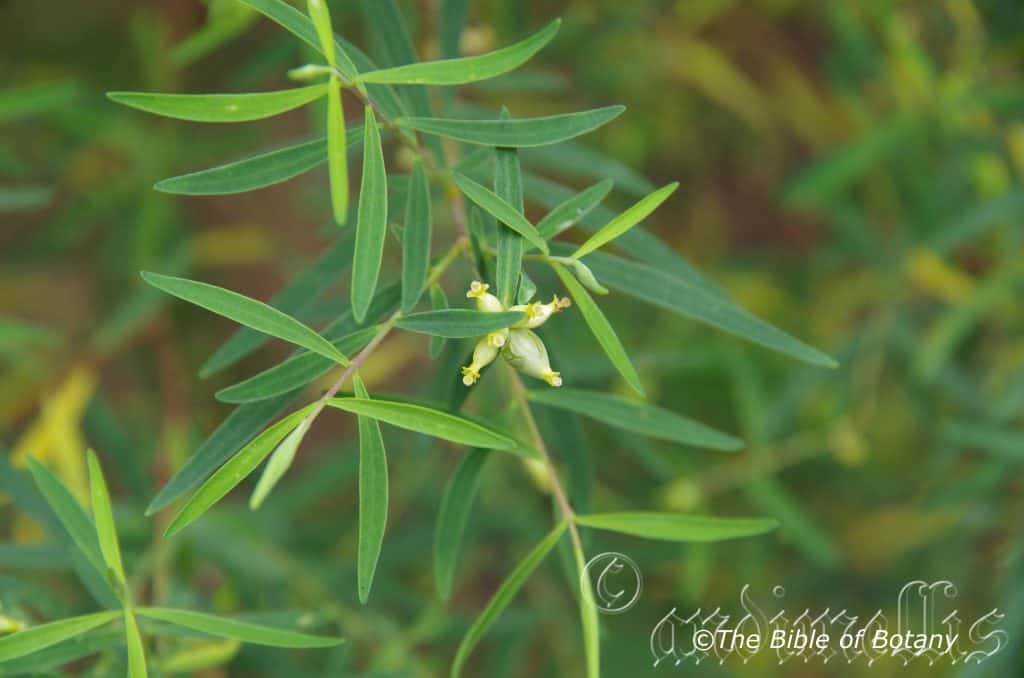
Border Ranges National Park NSW
Pimelea neo-anglica
Classification:
Unranked: Eudicots
Unranked: Rosids
Order: Malvales
Family: Thymelaeaceae
Genus: From Pimele, which is Ancient Greek for fat. It refers to the seeds, which are rather plump or chubby.
Specie: From Neoa, which is Ancient Greek for new or recent and Anglicus, which is Latinized for England. It refers to plants, which grow in the New England district in north eastern New South Wales.
Sub specie:
Common Name: Poison Pimelea.
Distribution:
Pimelea neo-anglica is found in an area bounded by the Brisbane River, Capella and Currwinya National Park in southern Queensland to Condobolon and Copeland in central coastal New South Wales. It is found further south at Yarrangobilly and the Kosciusko National Park in southern New South Wales with a single population found at Maffira north east of Sale in Victoria and the foreshores of the Dee Dam which is almost at the central geographical point in Tasmania.
https://avh.ala.org.au/occurrences/search?taxa=Pimelea+neo-anglica#tab_mapView
Habitat Aspect Climate:
Pimelea neo-anglica prefers dappled shade to full sun. It grows in the mountains in open woodlands, dry Eucalyptus forests, moist Eucalyptus forests, dry woodland heaths or moist woodland heaths. It is also found adjacent to coastal wallums. The altitude ranges from 20 meters ASL to 1550 meters ASL.
The temperatures range from minus 4 degrees in July to 40 degrees in January.
The rainfall ranges from lows of 500mm to 3000mm average per annum.
Soil Requirements:
Pimelea neo-anglica prefers coarse sands, sandy loams to medium clays often with a high proportion of gravel. The soils are derived from decomposed sandstones, brown basalts, black basalts, metamorphic rocks, granites or alluvial deposits. The soils pH. ranges from 5pH to 7pH. It does not tolerate water logged soils. Non saline soils to moderately saline soils are tolerated.
Height & Spread:
Wild Plants:1m to 3m by 1m to 3m
Characteristics:
Pimelea neo-anglica grows as an erect small open shrub. The slender stems are ochre-brown and glabrous. Young shoots are deep turquoise-green and glabrous.
The opposite narrow elliptical leaves of Pimelea neo-anglica measure 5mm to 40mm in length by 1mm to 3mm or rarely to 7mm in width. The petioles measure 1mm to 2.5mm in length. The bases taper to the petioles while the apexes are narrow acute. The concolourous laminas are blue-green and glabrous. The laminas are flat or taper slightly upwards from the midvein to the margins while the margins are entire and slightly undulating. The mid vein is prominent on the lower lamina and is not visible on the upper lamina.
The inflorescences of Pimelea neo-anglica are born in short, dense, bracteole umbels from the terminals. The dioecious flowers have 4 to 24 individual flowers in a male in a male and 3 to 16 individual flowers in a female umbel. The glabrous peduncle measure 5mm to 60mm in length while the individual flowers are sessile. The 2 or 4 greenish caduceous bracts are elliptic and measure 3mm to 18mm in length by 1mm to 3mm in width.
The male corolla tube and 4 lobes are greenish yellow and glabrous. The tubes measure 5mm to 6mm in length. The lobes are strongly reflexed and measure 4mm to 6mm in length. The 2 filiform yellow filaments are free from the base and are slightly exserted or slightly inserted while the exserted anthers are deep orange.
The female corolla tube and 4 lobes are greenish yellow and glabrous. The tubes measure 3mm to 4mm in length. The lobes are strongly reflexed and measure 4mm to 6mm in length. The slender, white exserted style measures 16mm to 24mm in length. The flowers appear throughout the year with a peak from September to November.
Pimelea neo-anglica’s fruits are enclosed in the hypanthium base. The oblong, green, fruits measure 2mm to 3mmin length.
Wildlife:
Pimelea neo-anglica is the host plant of the Blue spotted Butterfly. (Candalides xanthospila) The green larvae are difficult to detect as they hide amongst leaf debris during the day and emerge only at night to feed.
Cultivation:
Pimelea neo-anglica is a beautiful small shrub that is difficult to maintain in the garden. It is ideal in almost every setting near ponds, at the edge of a rain forest in court yards, around swimming pools or large and small rockeries where their size is balanced. In cultivation they will grow from 1.5 meters to 3 meters in height by 1.5 meters to 3 meters in diameter. It can be pruned if a shorter bushier plant is required.
It grows exceptionally well on lighter soils where deep leaf litter keeps the soil cool and moisture at an even level. If these requirements are met they can cope with temperatures as low as minus 3 degrees and up to 38 degrees. It is moderately drought resistant in their rainfall zones.
Add to the above, if it is given an adequate supply of water and a little native fertilizer on a regular basis the plants will respond with spectacular flowering over a long period.
It is best used adjacent to small areas of bush close to paths or the house so their white flowers can be viewed regularly. It is great in small to large rockeries as a fill in plant. Here they can be planted in small groups of 2 or 3 scattered as you would find them in nature to give a great bush scene. It is best used in the mid ground surrounded by shorter plants with courser foliages with pink or red flowers so they will dominate at the center of the bed especially when It is in flower. This is one plant that benefits highly from being mass planted or planted in scattered clumps. The can be achieved by them at 1 meter to 1.5 meter centers and allowing their stems to intertwine with each other.
Propagation:
Seeds:
Pimelea neo-anglica seeds can be removed easily from the plants as they dry. Once Pimelea linifolia has finished flowering and the fruits have swollen place a small brown paper bag around the flowers and keep a close eye on it. When the seeds start to disperse, it can be all over in one day; especially if the weather turns hot, with the seeds being scattered on the ground.
Sow freshly treated seeds directly into a seed raising mix, keeping them moist not wet. When the seedlings are 20mm to 25mm tall, prick them out and plant them into 50mm native tubes using a good organic mix.
As the seedlings roots reach the bottom of the tubes plant them out into their permanent position.
Cuttings:
Fortunately Pimelea neo-anglica cuttings strike easy. Use 100mm to 200mm long tip cuttings or lateral shoots from the present season’s growth. Take them in warmer months of the year. Remove half the leaves from the bottom section being careful not to tear the bark.
1 Prepare the cutting mix by adding two thirds sharp clean river sand, one third peat or one third perlite. These ingredients must be sterilized,
2 Select good material from non diseased plants,
3 Select semi green stems for cuttings. Look for a stem with two or three nodes,
4 Place the cutting on a flat, hard surface, and make a clean cut down one side of the cutting at the base for 10mm with a sharp sterile knife or razor blade. – This scarification of the node will increase the chances of roots emerging from this spot. Now remove all but one or two the leaves, leaving the apex leaves in tact. If the leaves are very large in proportion to the stem, cut off the apical halves.
5 Fill a saucer with water, and place a little medium strength rooting hormone into another container like a milk bottle top. Dip the node end of the cutting into the water and then into the rooting hormone. Tap off any excess hormone,
6 Use a small dipple stick or old pencil to poke a hole into the soilless potting mix. Ensure the hole is slightly larger than the stem diameter and be careful not to wipe the rooting hormone off the cuttings base. Place 2 to 4 cuttings in each of the 50mm native tubes,
7 I like to place the tubes in bucket with holes drilled in the bottom to allow excess water to drain out. A plastic bag that fits over the bucket is ideal to help maintain temperature and moisture. Place in a semi shaded, warm position like under 50mm shade cloth.
8 When the cuttings have struck, open the bag to allow air circulation for a few days to a week,
9 Once hardened off remove the cuttings from the bag and allow to further hardening for a few more days to a week,
10 Transplant into a good potting mix to grow on.
Fertilize using seaweed, fish emulsion or organic chicken pellets soaked in water on an alternate basis. Fertilize every two months until the plants are established then twice annually in early September or March to maintain health, vitality and better flowering.
Further Comments from Readers:
“Hi reader, it seems you use The Bible of Botany a lot. That’s great as we have great pleasure in bringing it to you! It’s a little awkward for us to ask, but our first aim is to purchase land approximately 1,600 hectares to link several parcels of N.P. into one at The Pinnacles NSW Australia, but we need your help. We’re not salespeople. We’re amateur botanists who have dedicated over 30 years to saving the environment in a practical way. We depend on donations to reach our goal. If you donate just $5, the price of your coffee this Sunday, We can help to keep the planet alive in a real way and continue to bring you regular updates and features on Australian plants all in one Botanical Bible. Any support is greatly appreciated. Thank you.”
In the spirit of reconciliation we acknowledge the Bundjalung, Gumbaynggirr and Yaegl and all aboriginal nations throughout Australia and their connections to land, sea and community. We pay our respect to their Elders past, present and future for the pleasures we have gained.
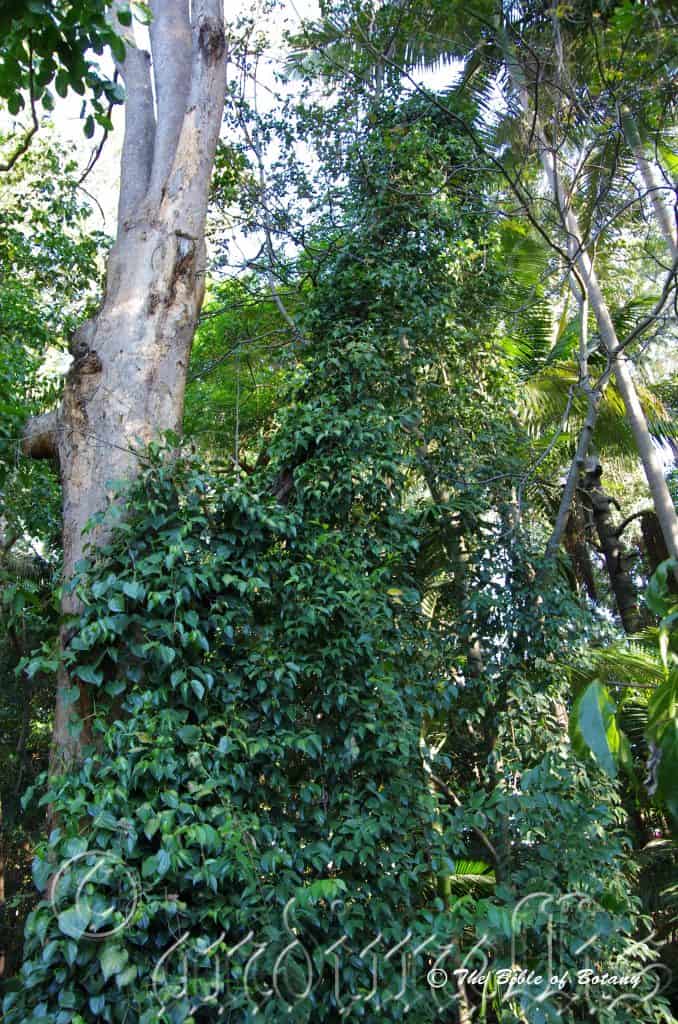
Mount Cootha Botanical Gardens Qld.
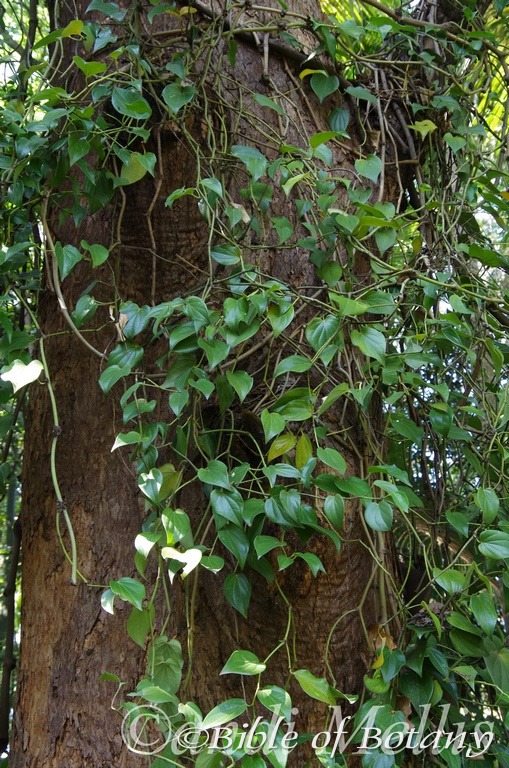
Mount Cootha Botanical Gardens Qld.
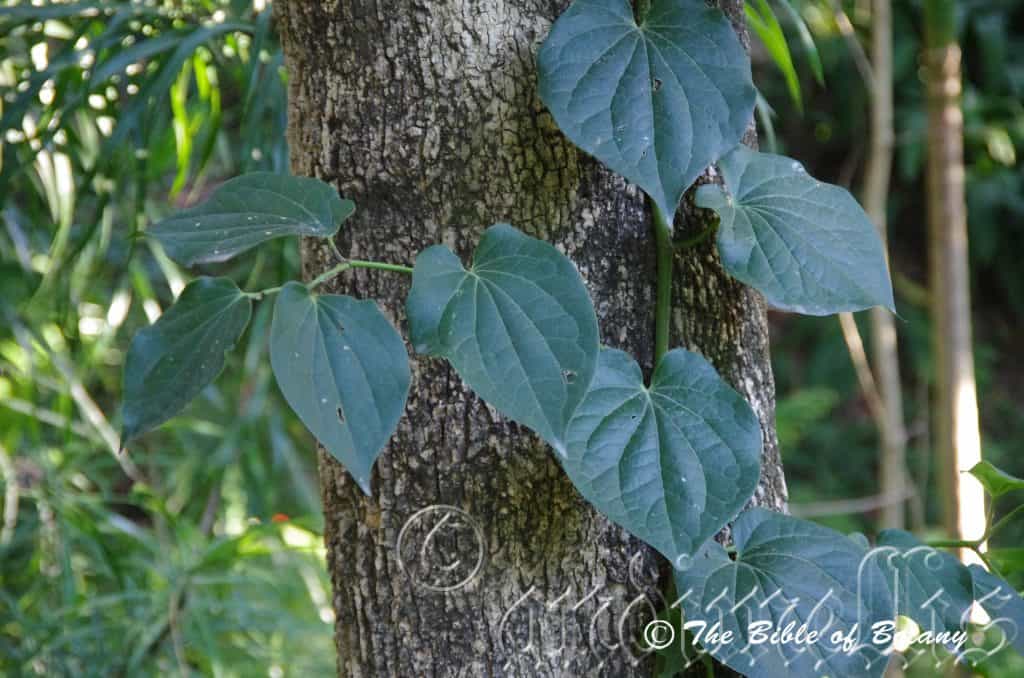
Mount Cootha Botanical Gardens Qld.
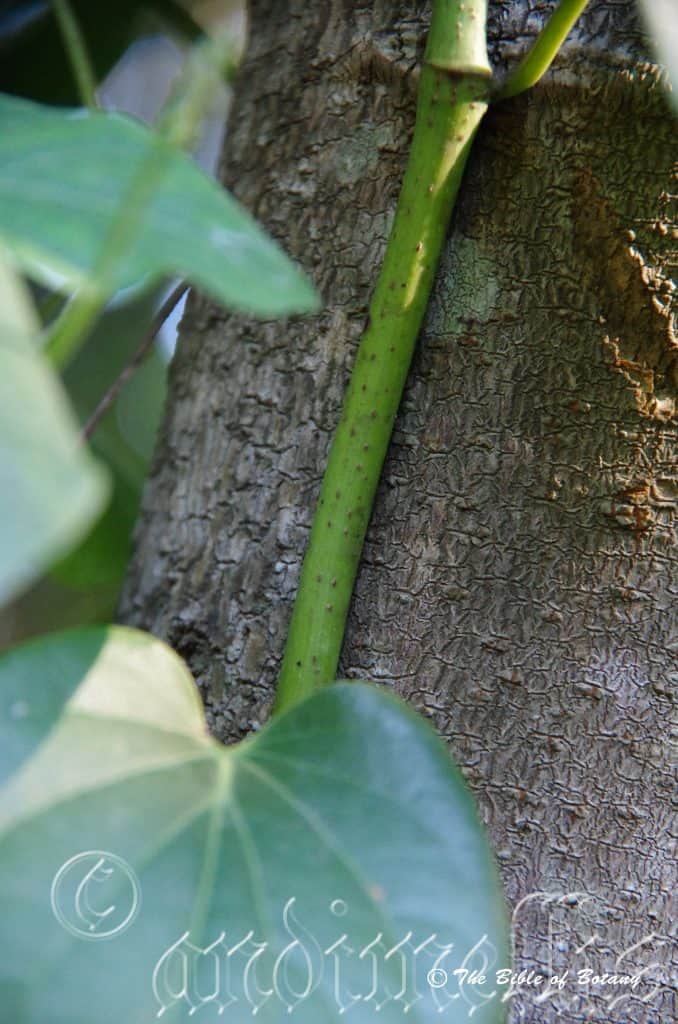
Mount Cootha Botanical Gardens Qld.
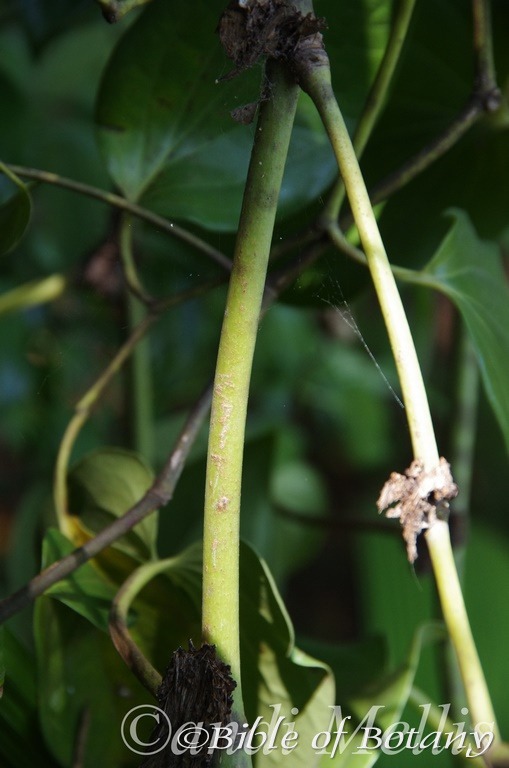
Mount Cootha Botanical Gardens Qld.
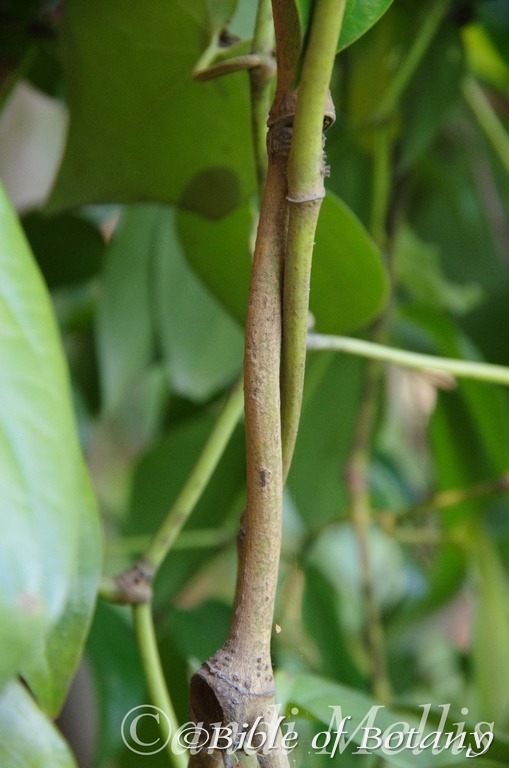
Mount Cootha Botanical Gardens Qld.

Mount Cootha Botanical Gardens Qld.
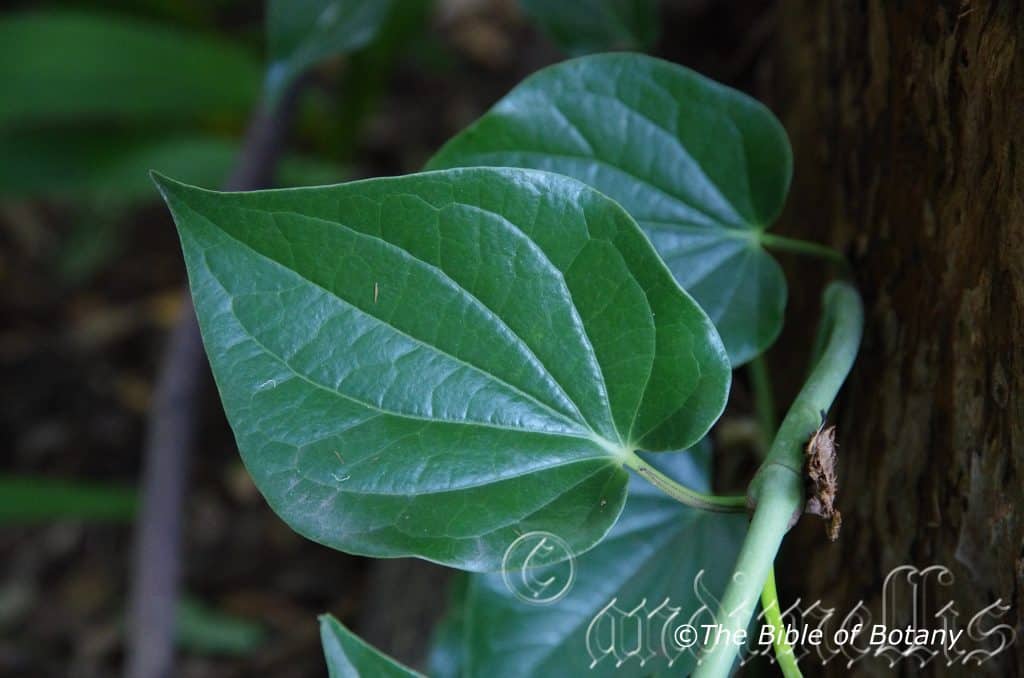
Mount Cootha Botanical Gardens Qld.

Mount Cootha Botanical Gardens Qld.
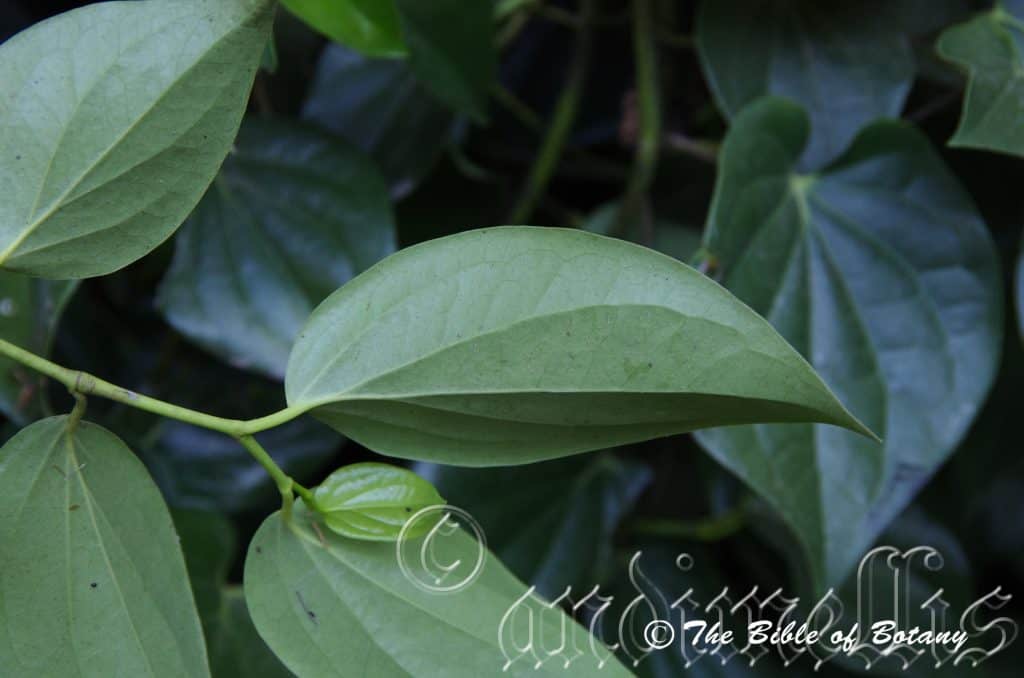
Mount Cootha Botanical Gardens Qld.
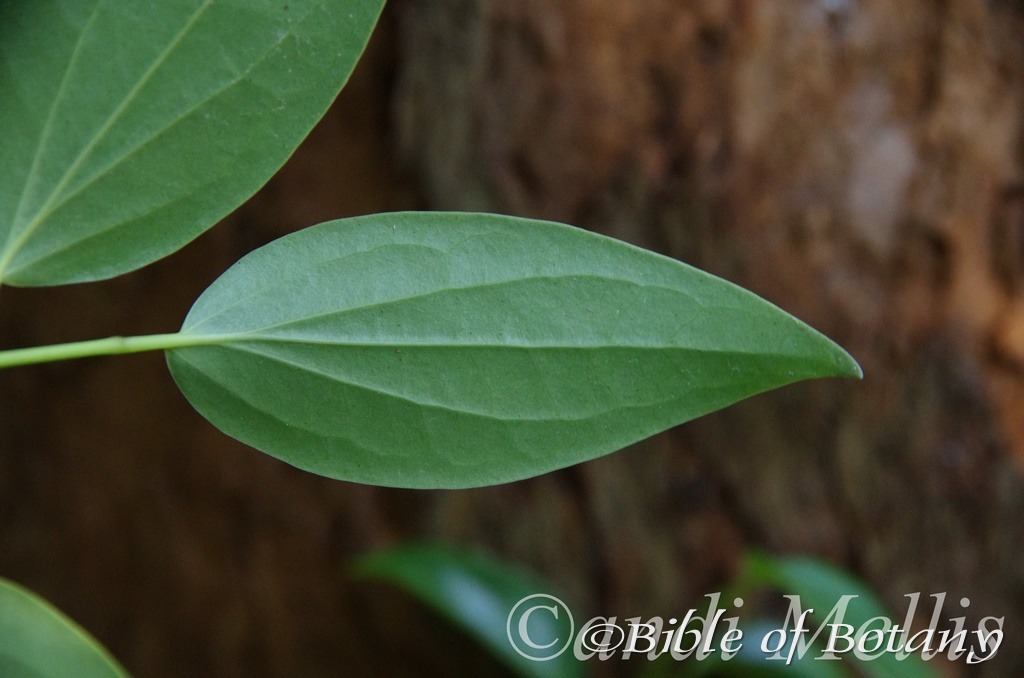
Mount Cootha Botanical Gardens Qld.
Piper hederaceum
Classification:
Unranked: Magnoliids
Order: Piperalis
Family: Piperaceae
Genus: From Piper, which is Latin for the name given to the Pepper vine. It refers to plants, which are closely related to the commercial Pepper vine of Asia.
Specie: From Hedera, which is Latin for an ivy. It refers to plants, which are somewhat like ivy.
Sub specie: Piper hederaceum var. hederaceum. From Hedera, which is Latin for an ivy. It refers to plants, which are somewhat like ivy.
Sub specie: Piper hederaceum var. longiorispicum. Longitia/Longus, which is Latin for long in length and Spica, which is Latin for a type of flowering stalk. It refers to pedicels and peduncles, which are rather long especially when compared to other species in the genus and the type species.
Common Name: Giant Pepper or Native pepper Vine or Australian Pepper vine.
Distribution:
Piper hederaceum var. hederaceum is found south from the Iron Range in far North eastern Queensland to Bellingen in north eastern New South Wales. It occurs on and east of the Great Dividing Range to the coast.
Piper hederaceum var. longiorspicum is found south from the Windsor Tableland to El Arish in several disjunct populations on and east of the Great Dividing Range to the coast in far northern eastern Queensland.
https://avh.ala.org.au/occurrences/search?taxa=Piper+hederaceum#tab_mapView
Habitat Aspect Climate:
Piper hederaceum prefers dappled shade to full sun. It grows in the mountains in well-developed warm sub-tropical rainforests or cool tropical rainforests. The altitude ranges from 5 meters to 700 meters ASL for Piper hederaceum var. hederaceum and 100 meters ASL to 1200 meters ASL for Piper hederaceum var. longiorspicum.
The temperatures range from minus 4 degrees in July to 36 degrees in January.
The rainfall ranges from lows of 500mm to 1200mm average per annum.
Soil Requirements:
Piper hederaceum prefers better quality soils that are sandy loams to light clays with a high proportion of leaf litter derived from decomposed brown and black basalts. The soils pH ranges from 5.5pH to 7pH. It does not tolerate water logged soils. Non saline soils to moderately saline soils are tolerated.
Height & Spread:
Wild Plants:20m to 30m by 5m to 15m
Characteristics:
Piper hederaceum grows as a twinning liana with grey, glabrous trunk which has been recorded at over 300mm in diameter. The trunk and larger stems have adventitious roots growing from the leaf nodes. Stems are thin deep green and glabrous.
The alternate leaves of Piper hederaceum vary on whether It is exposed to sunlight or growing in the shade. The caduceous stipules measure 40mm to 45mm in length and leave a scar which encircles the twigs. The petioles are grooved on the upper surface and measure 5mm to 25mm in length. The leaves exposed to sunlight are ovate with an ovate to rounded base while the apex is broadly acuminate to obtuse with an apiculate tip. Those growing in full shade tend to be broad ovate with a cordate base while the apex is more obtuse with an apiculate tip. They measure 50mm to 140mm in length by 25mm to 90mm in width. The concolourous laminas are deep sea green, glabrous and glossy on the upper lamina while the lower lamina is semi glossy to dull. The laminas are flat or recurve or decurve slightly from the center to the margins while the margins are entire. The mid vein and main lateral veins are prominent on the lower lamina and are visible on the upper lamina.
The inflorescences of Piper hederaceum are born singularly or on short spikes which are leaf opposed. The vines are dioecious. Piper novae-hollandiae flowers appear throughout the year.
The green male flower spikes are cylindrical and measure 25mm to 35mm in length by 4mm to 6mm in diameter. The ovate pastel translucent petals measure 0.5mm to 0.7mm. There are 1 or 4 stamens in a flower which extend beyond the scales at anthesis.
The green female flowers are arranged along an ovoid spike and measure 12mm to 15mm in length by 4mm to 6mm in diameter. The 4 white stigma lobes measure less than 0.4mm in length. The green ovary is subtended by minute peltate bracts. The white stigmas are bi lobed to 5 lobed.
Piper hederaceum fruits are small ovoid drupes. The green drupes turn red when ripe and measure 50mm to 60mm in length on a 20mm peduncle. The individual fruits are broad ellipsoidal with a pointed apex. The fruits measure 8mm to 10mm in length by 6mm in diameter with a pedicel that measures 6mm to 9mm mm in length. The seeds are ellipsoidal and pointed at one end. The pale brown to fawn seeds measure 5mm to 7mm in length by 4.5mm to 6.5mm in diameter.
Sub specie Differences:
Piper hederaceum var. hederaceum’s leaves measure 50mm to 140mm in length by 25mm to 90mm in width. The petioles measure 5mm to 25mm in length.
Piper hederaceum var. longiorispicum’s leaves measure 70mm to 105mm in length by 35mm to 75mm in width. The petioles measure 7mm to 20mm in length. The fruits are loose heads that measure 25mm to 30mm in length. The individual fruits measure 4.5mm to 7mm by 3.5mm to 5mm in diameter with a pedicel that measures 3mm to 6mm in length. The ellisoidal seeds measure 3.5mm to 4mm in length by 3mm to 3.5m in diameter.
Wildlife:
Piper hederaceum’s fruits are eaten by the Regent Bower Bird, Sericulus chrysocephalus.
Cultivation:
Piper hederaceum is a magnificent large liana which looks great as an indoor plant for many years as a juvenile creeper. In cultivation it can be used to cover most pergolas and will cover an area of 20 plus square meters in a few years.
It grows exceptionally well on medium soils where deep leaf litter keeps the soil cool and moisture at an even level. If these requirements are met they can cope with temperatures as low as minus 5 degrees and up to 33 degrees. It is moderately drought resistant in their rainfall zones.
Add to the above, if It is given an adequate supply of water and a little native fertilizer on a regular basis the plants will respond with quick lush vibrant tropical growth.
Piper nova-hollandiae make excellent totem pole plants for most positions indoors around the pool, on verandas and in enclosed court yards. Place several seedlings from tube stock in 400mm pot with a central totem to 2.5 meters in height. The plants have successfully been grown indoors for several years and can be trimmed back to near the base to extend their home stay.
Indoor or Potted On:
Sawdust or sand mixes are too well draining unless the sawdust has completely composted down where it exhibits a texture like plastacine to the touch. Moisture can be squeezed out between the fingers yet it remains moist. I find this a great basis to start with.
Mix equal parts of the well decomposed saw dust with the above feel with perlite and vermiculite. To this add two part sharp clean sand, one part compost and one part good crusher dust from a basalt rock quarries. Preferably black basalt but both are good. Make sure the sand comes from a source that does not have salt.
The decomposed Sawdust in this condition creates the moisture retention and holds nutrient in. The perlite and vermiculite make the mix neutral and both have great water holing capacity without shrinkage with age. The sand creates good drainage and is good for good healthy root development. The crusher dust adds vital minerals which the plants need.
Indoor plants need good light and ventilation without drying breezes or wind.
Again fertilize the plants on a bi-monthly basis with the formula mentioned under propagation on a rotation basis. Do not use synthetic fertilizers as unwanted salts and chlorides will accumulate in the pots and be toxic to the plants. For this reason try to use rainwater instead of town water as town water often contains salts and concentrated poisonous chlorides.
Propagation:
Seeds:
The seeds of Piper hederaceum can be removed easily from the plants as they turn red.
Sow freshly treated seeds directly into a seed raising mix, keeping them moist not wet. When the seedlings are 20mm to 25mm tall, prick them out and plant them into 50mm native tubes using a good organic mix.
As the seedlings roots reach the bottom of the tubes plant them out into their permanent position.
Cuttings:
Fortunately Piper hederaceum cuttings strike easy. Use 100mm to 200mm long tip cuttings or lateral shoots from the present season’s growth. Take them in warmer months of the year. Remove half the leaves from the bottom section being careful not to tear the bark.
1 Prepare the cutting mix by adding two thirds sharp clean river sand, one third peat or one third perlite. These ingredients must be sterilized,
2 Select good material from non diseased plants,
3 Select semi green stems for cuttings. Look for a stem with two or three nodes,
4 Place the cutting on a flat, hard surface, and make a clean cut down one side of the cutting at the base for 10mm with a sharp sterile knife or razor blade. – This scarification of the node will increase the chances of roots emerging from this spot. Now remove all but one or two the leaves, leaving the apex leaves in tact. If the leaves are very large in proportion to the stem, cut off the apical halves.
5 Fill a saucer with water, and place a little medium strength rooting hormone into another container like a milk bottle top. Dip the node end of the cutting into the water and then into the rooting hormone. Tap off any excess hormone,
6 Use a small dipple stick or old pencil to poke a hole into the soilless potting mix. Ensure the hole is slightly larger than the stem diameter and be careful not to wipe the rooting hormone off the cuttings base. Place 2 to 4 cuttings in each of the 50mm native tubes,
7 I like to place the tubes in bucket with holes drilled in the bottom to allow excess water to drain out. A plastic bag that fits over the bucket is ideal to help maintain temperature and moisture. Place in a semi shaded, warm position like under 50mm shade cloth.
8 When the cuttings have struck, open the bag to allow air circulation for a few days to a week,
9 Once hardened off remove the cuttings from the bag and allow to further hardening for a few more days to a week,
10 Transplant into a good potting mix to grow on.
Fertilize using seaweed, fish emulsion or organic chicken pellets soaked in water on an alternate basis. Fertilize every two months until the plants are established then twice annually in early September or March to maintain health, vitality and better flowering.
Further Comments from Readers:
“Hi reader, it seems you use The Bible of Botany a lot. That’s great as we have great pleasure in bringing it to you! It’s a little awkward for us to ask, but our first aim is to purchase land approximately 1,600 hectares to link several parcels of N.P. into one at The Pinnacles NSW Australia, but we need your help. We’re not salespeople. We’re amateur botanists who have dedicated over 30 years to saving the environment in a practical way. We depend on donations to reach our goal. If you donate just $5, the price of your coffee this Sunday, We can help to keep the planet alive in a real way and continue to bring you regular updates and features on Australian plants all in one Botanical Bible. Any support is greatly appreciated. Thank you.”
In the spirit of reconciliation we acknowledge the Bundjalung, Gumbaynggirr and Yaegl and all aboriginal nations throughout Australia and their connections to land, sea and community. We pay our respect to their Elders past, present and future for the pleasures we have gained.